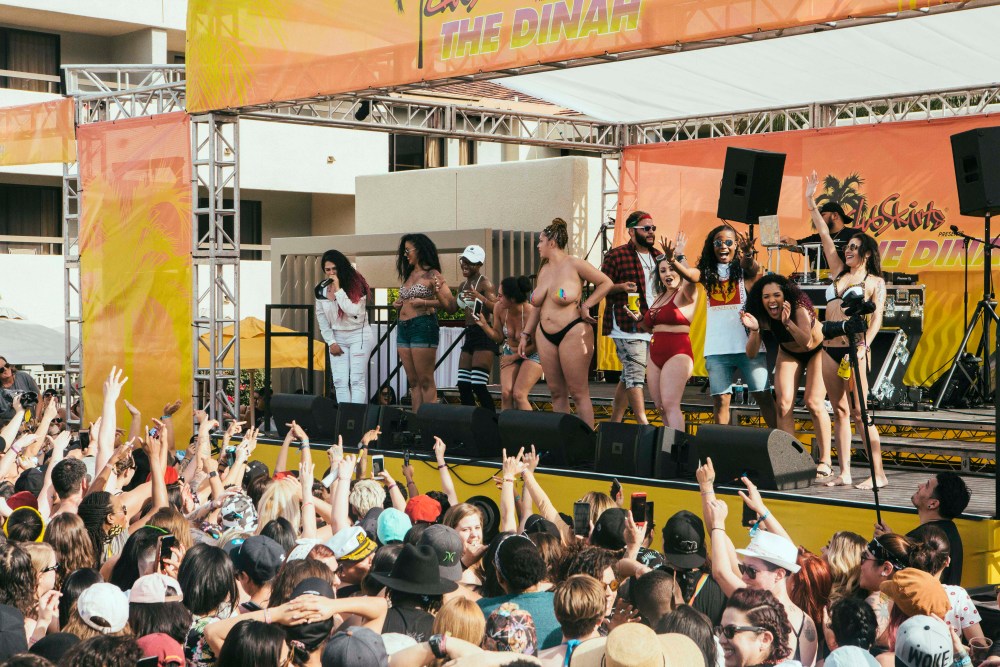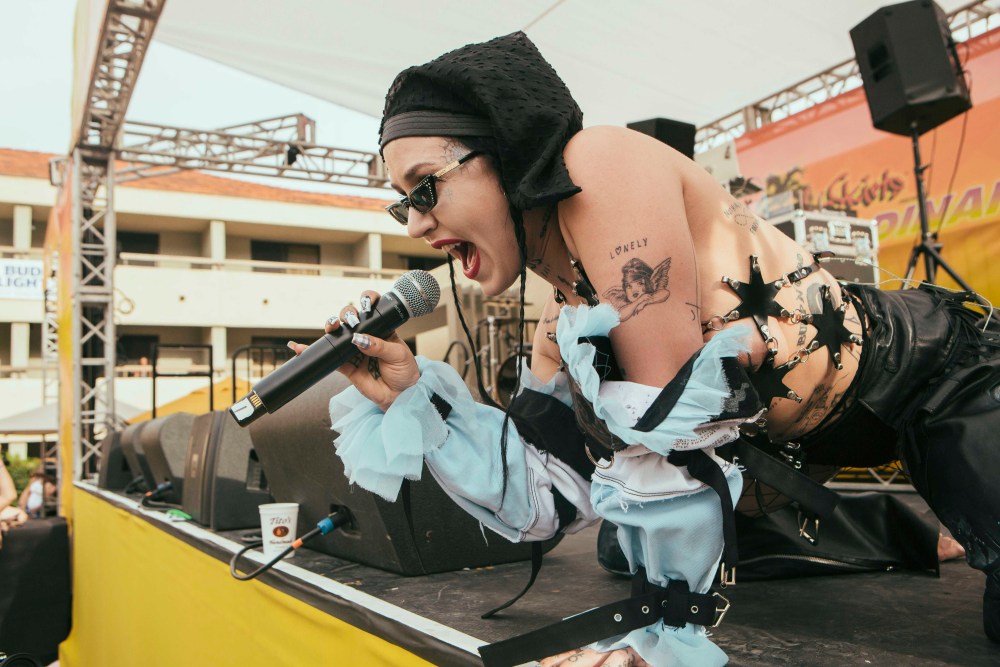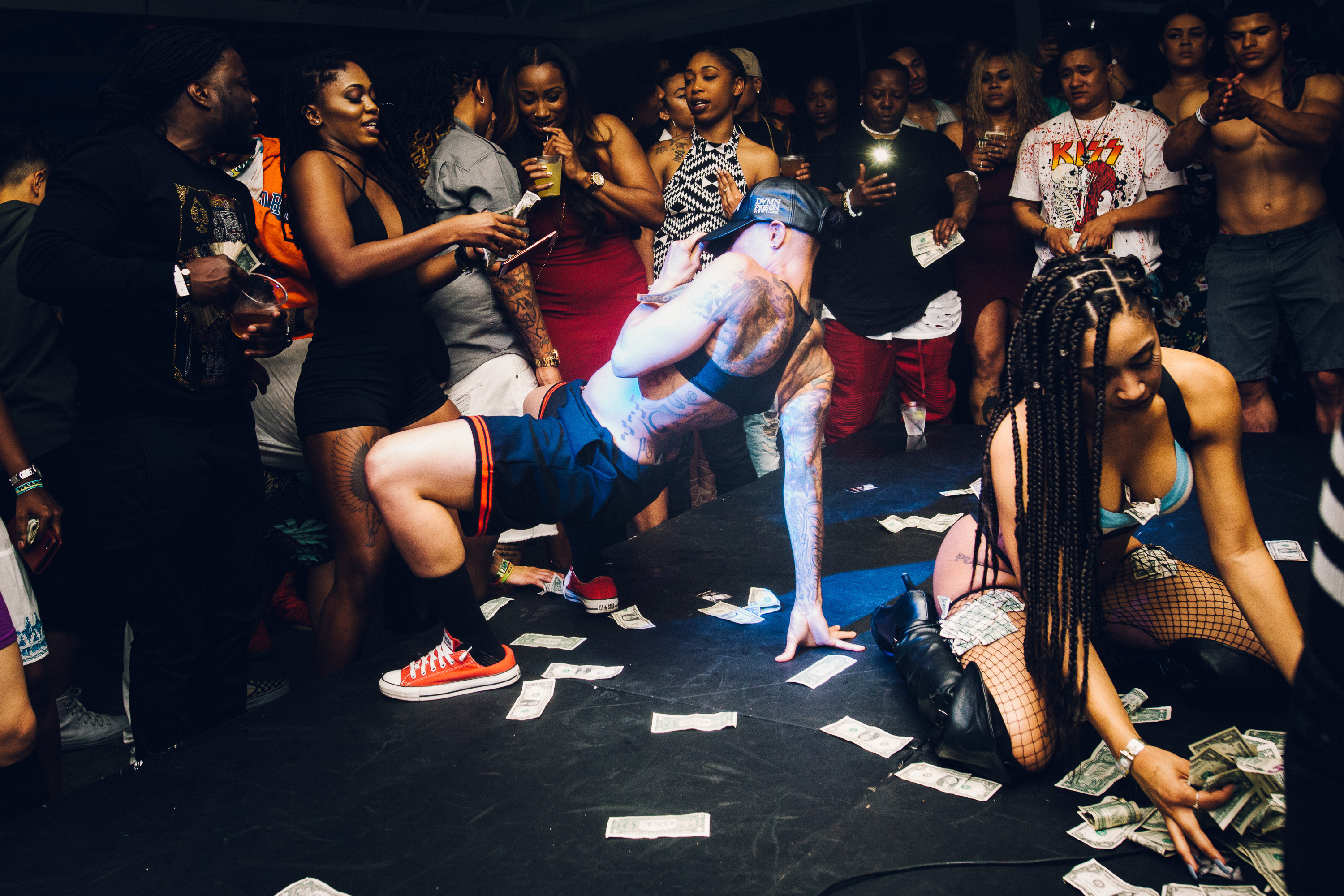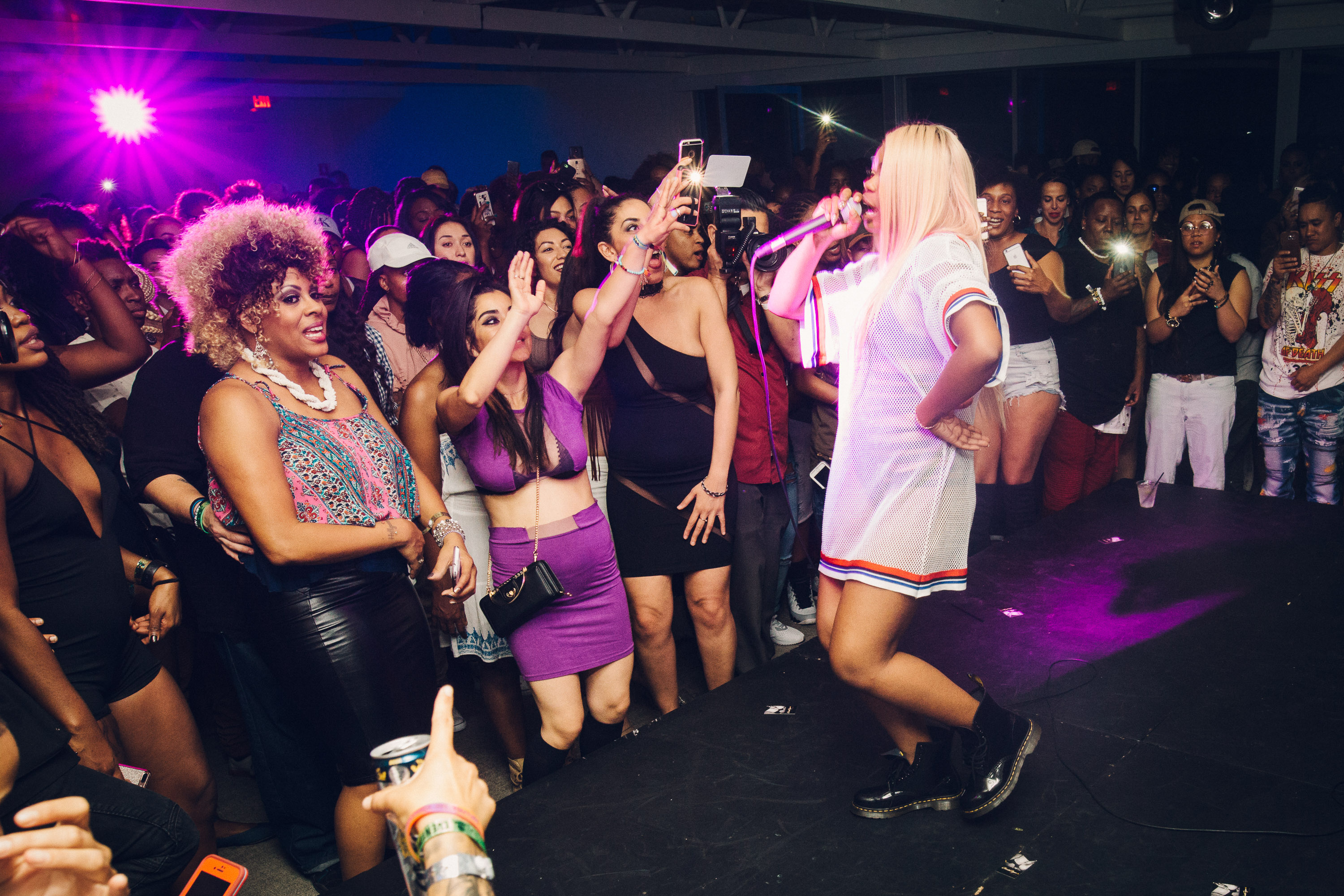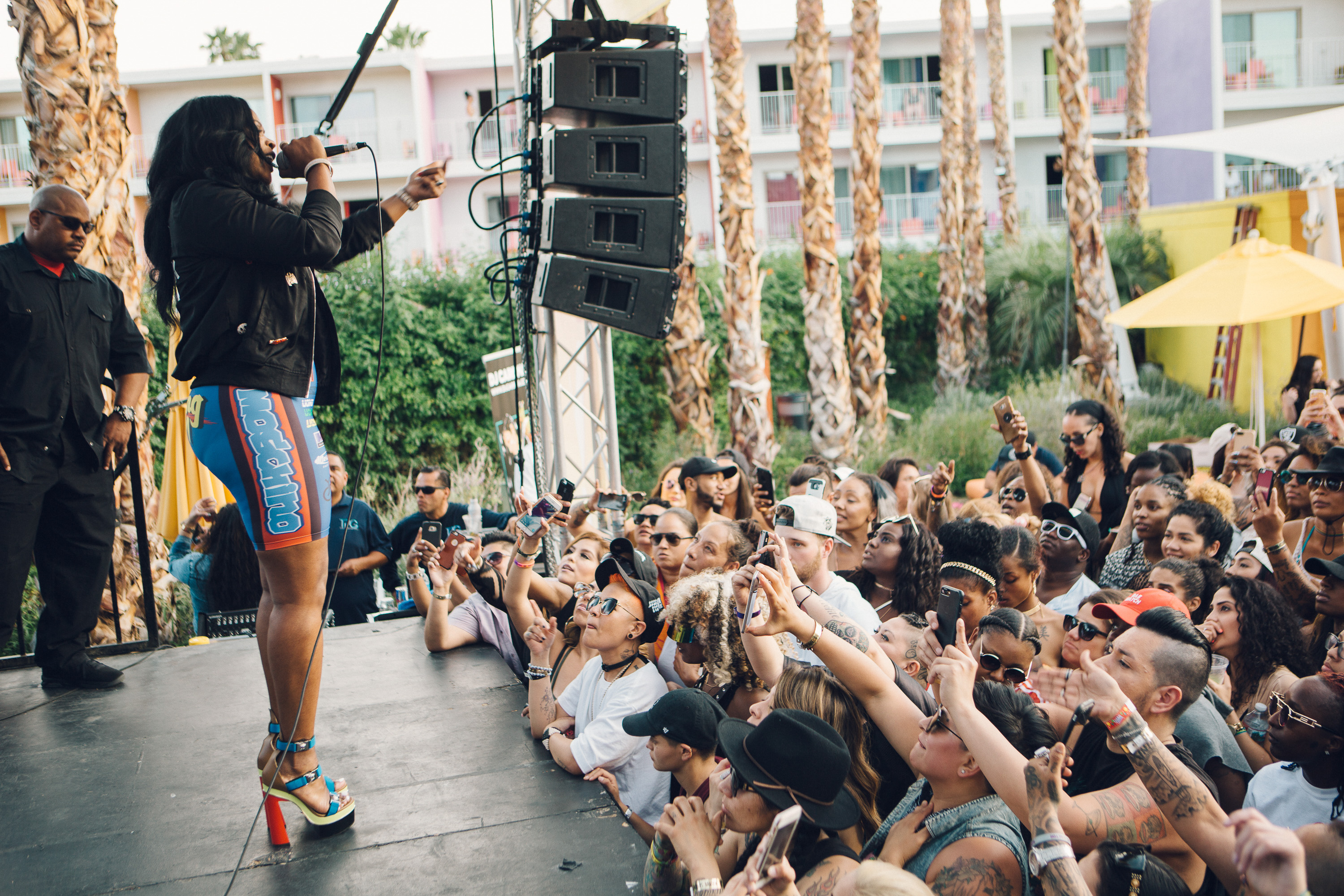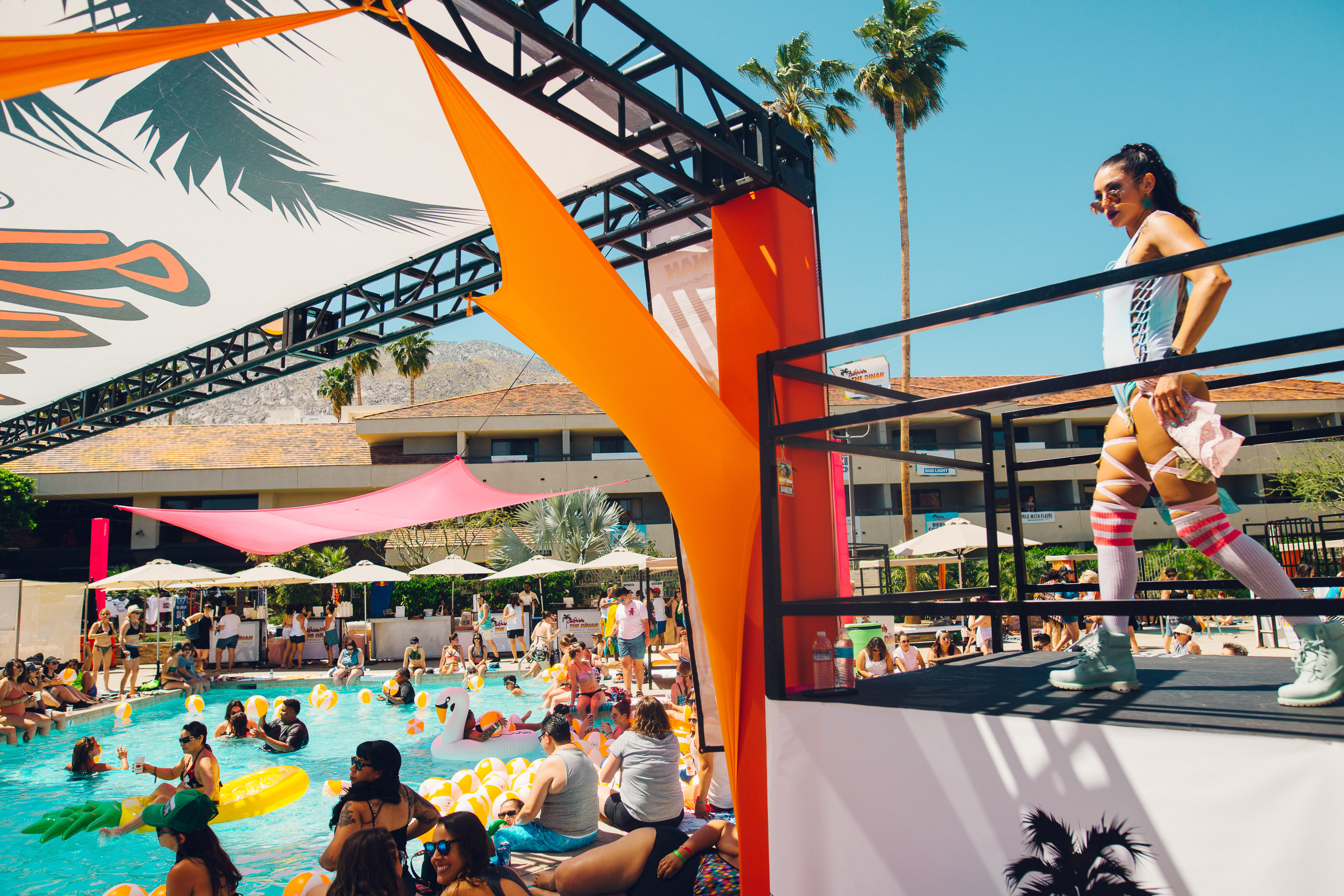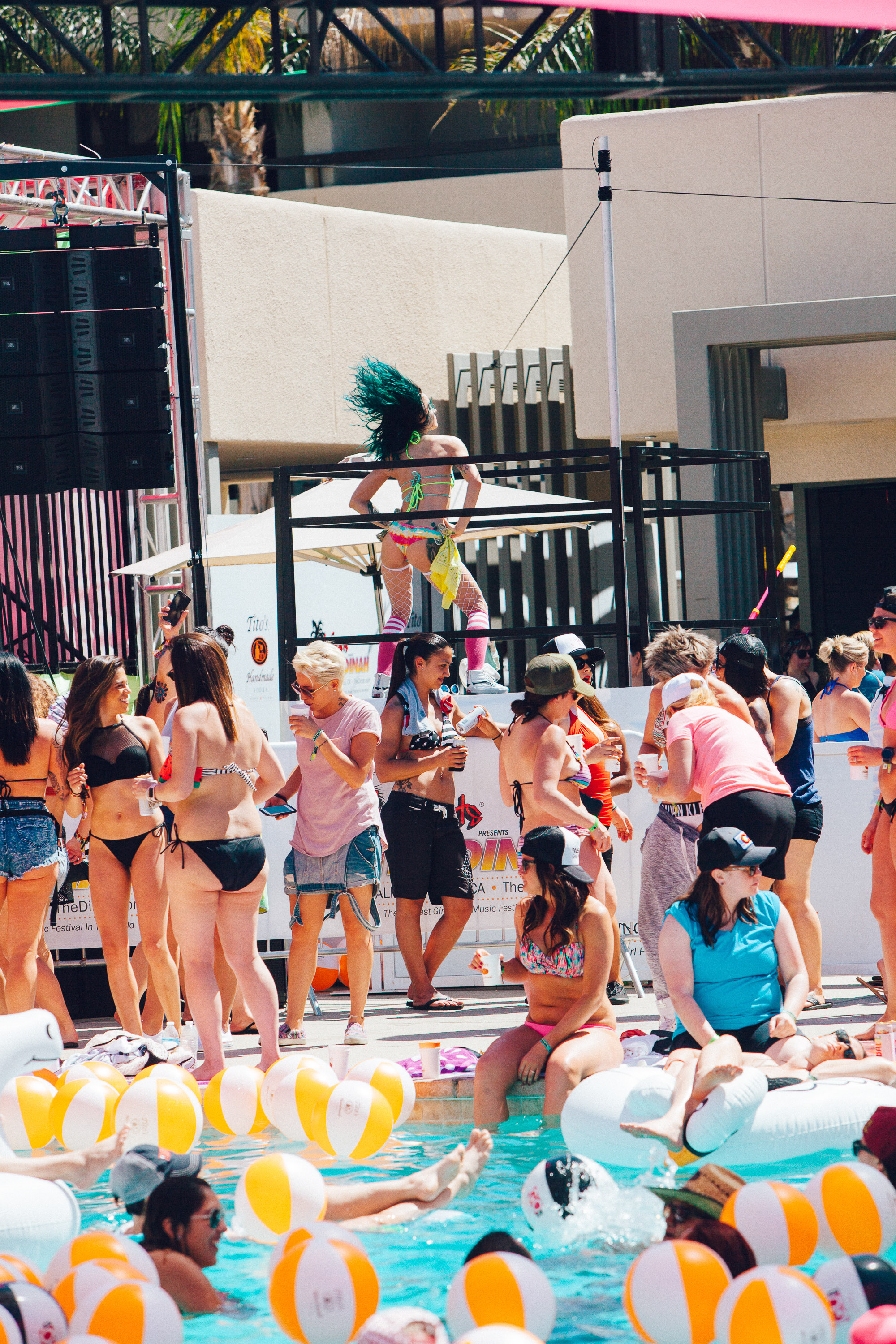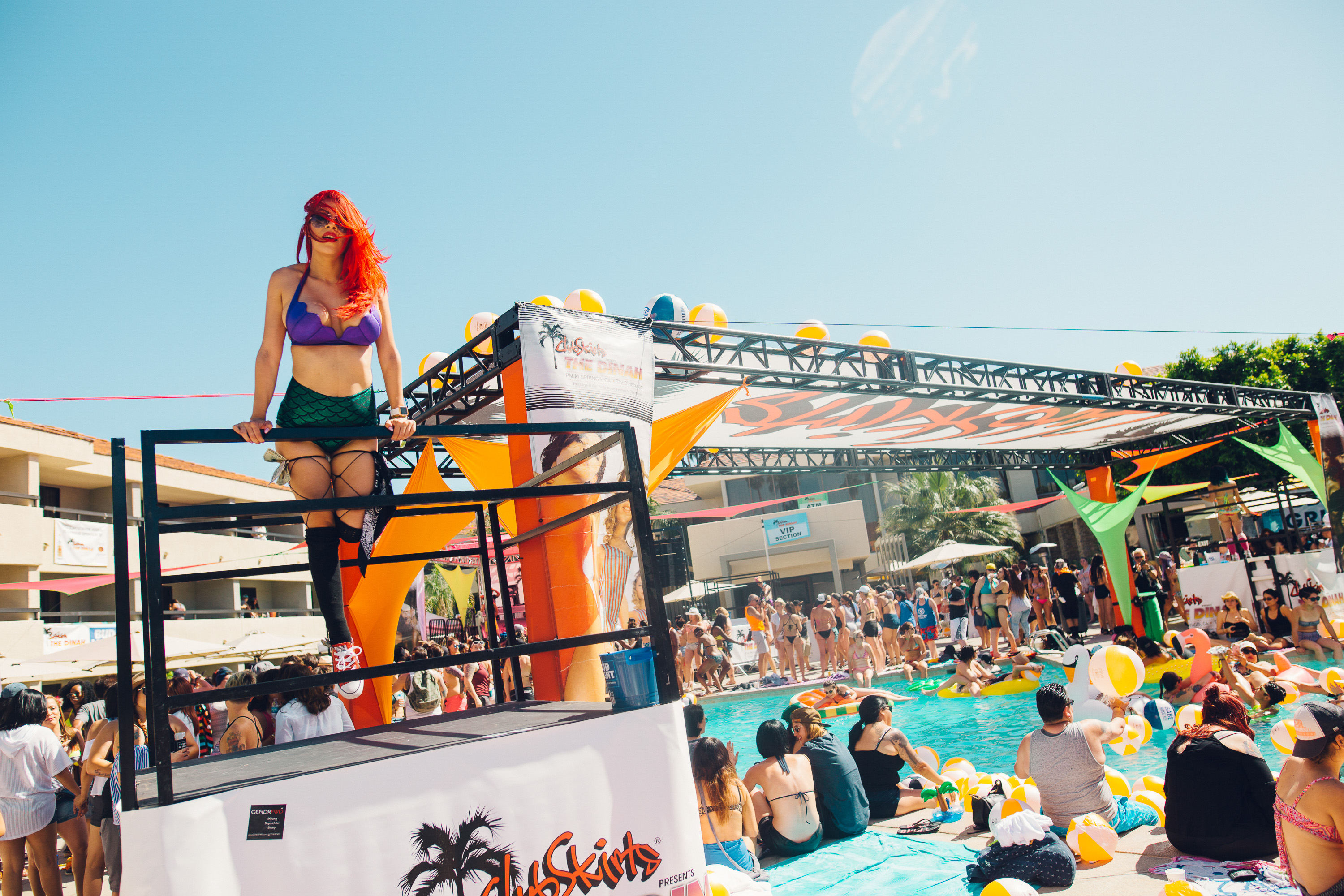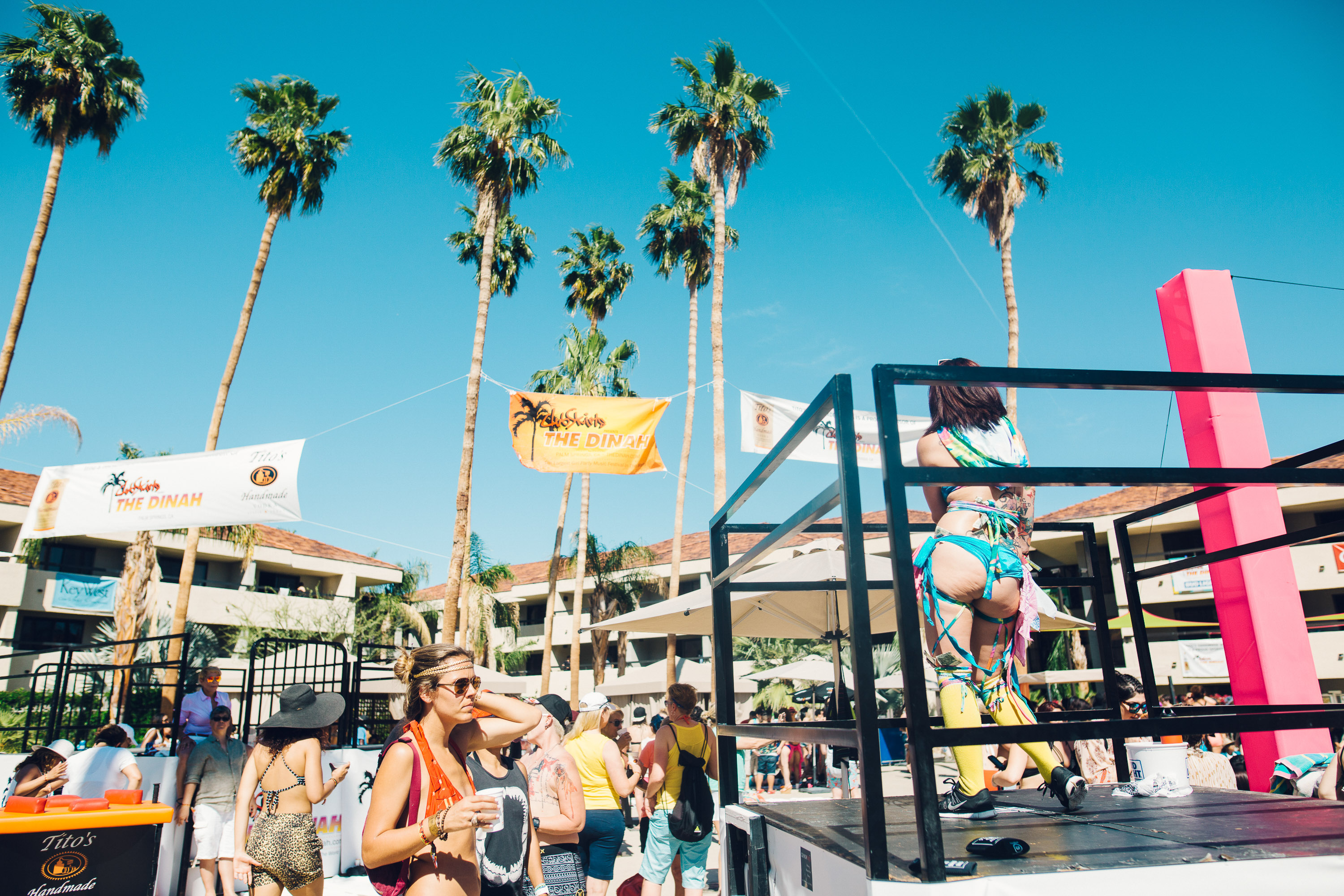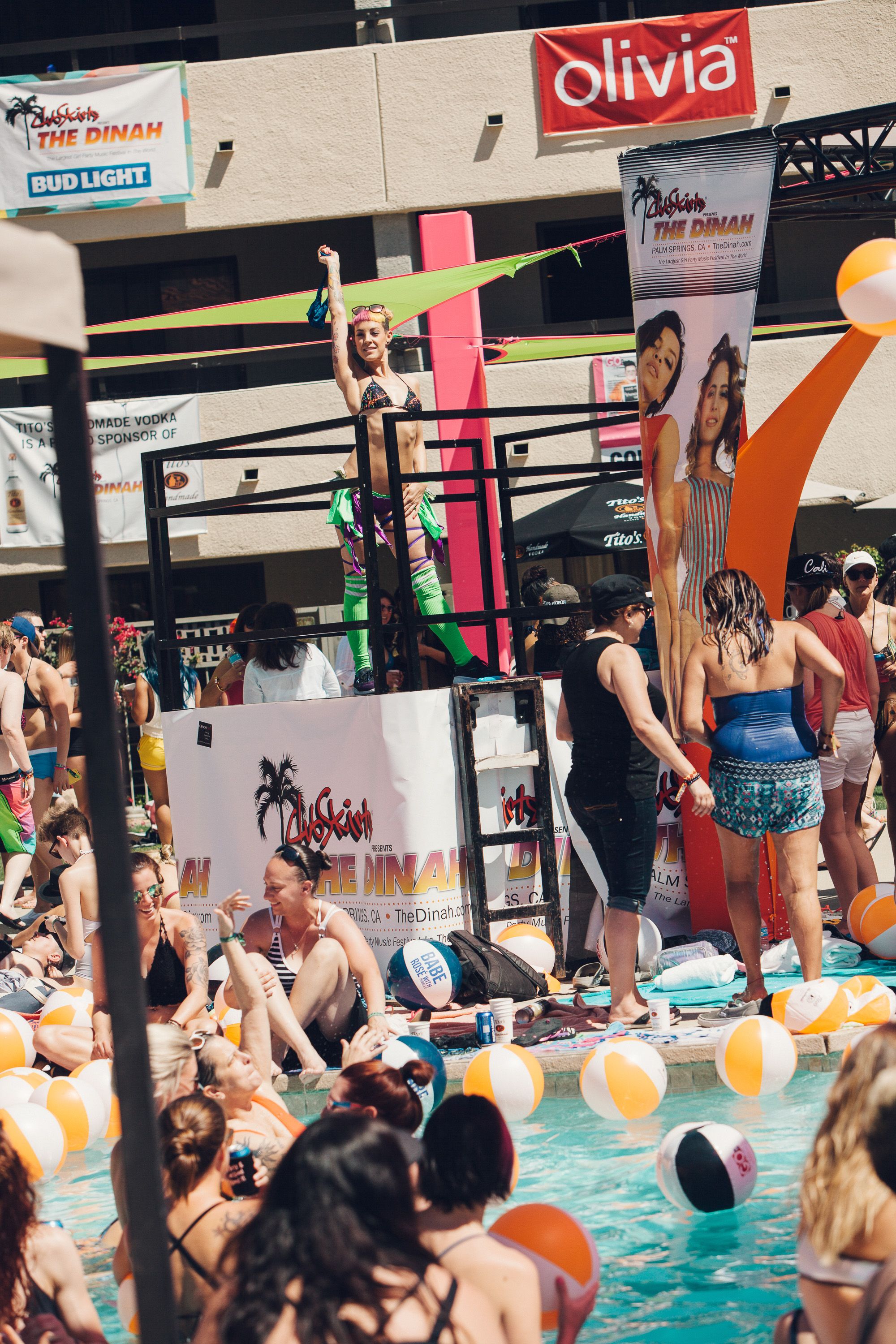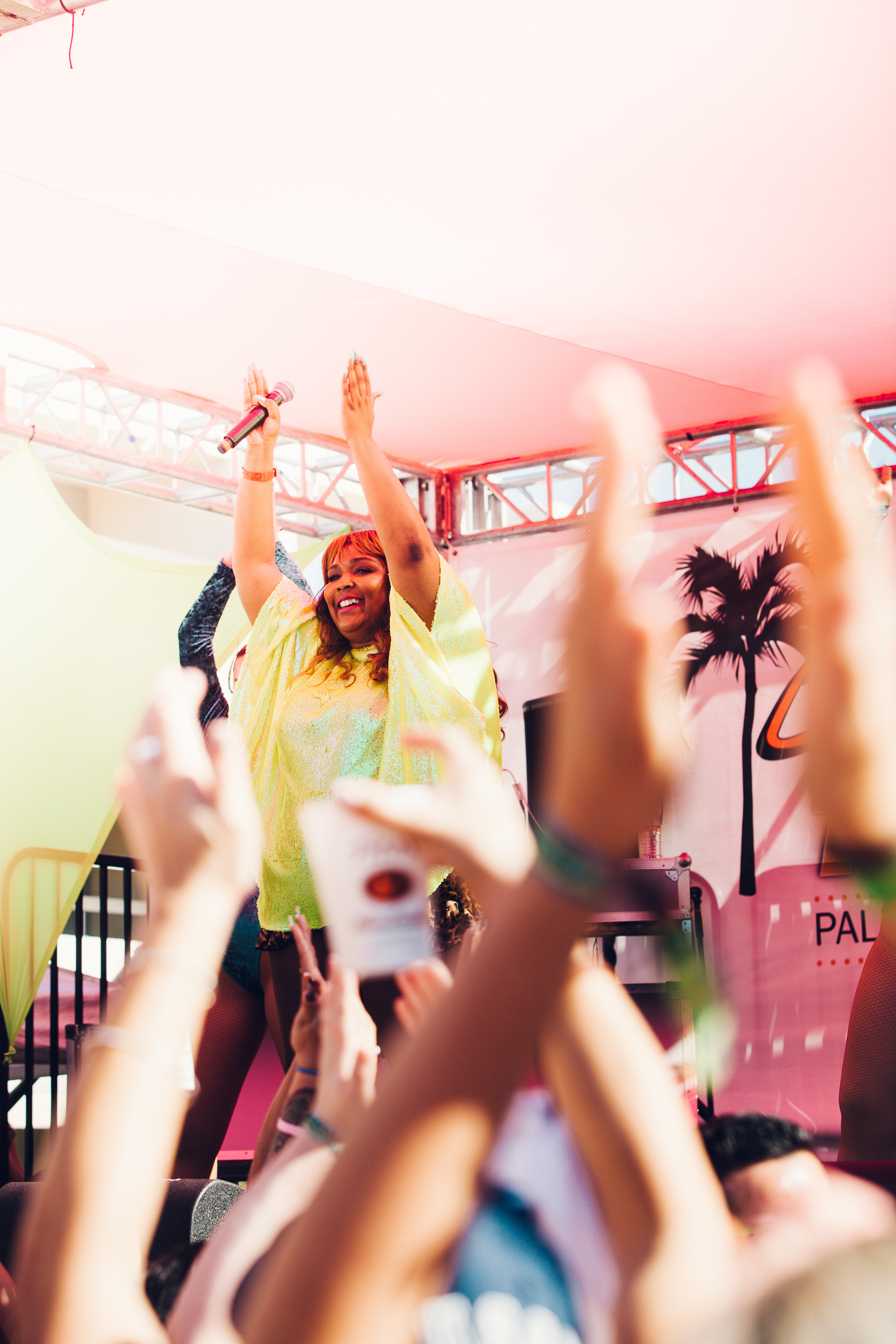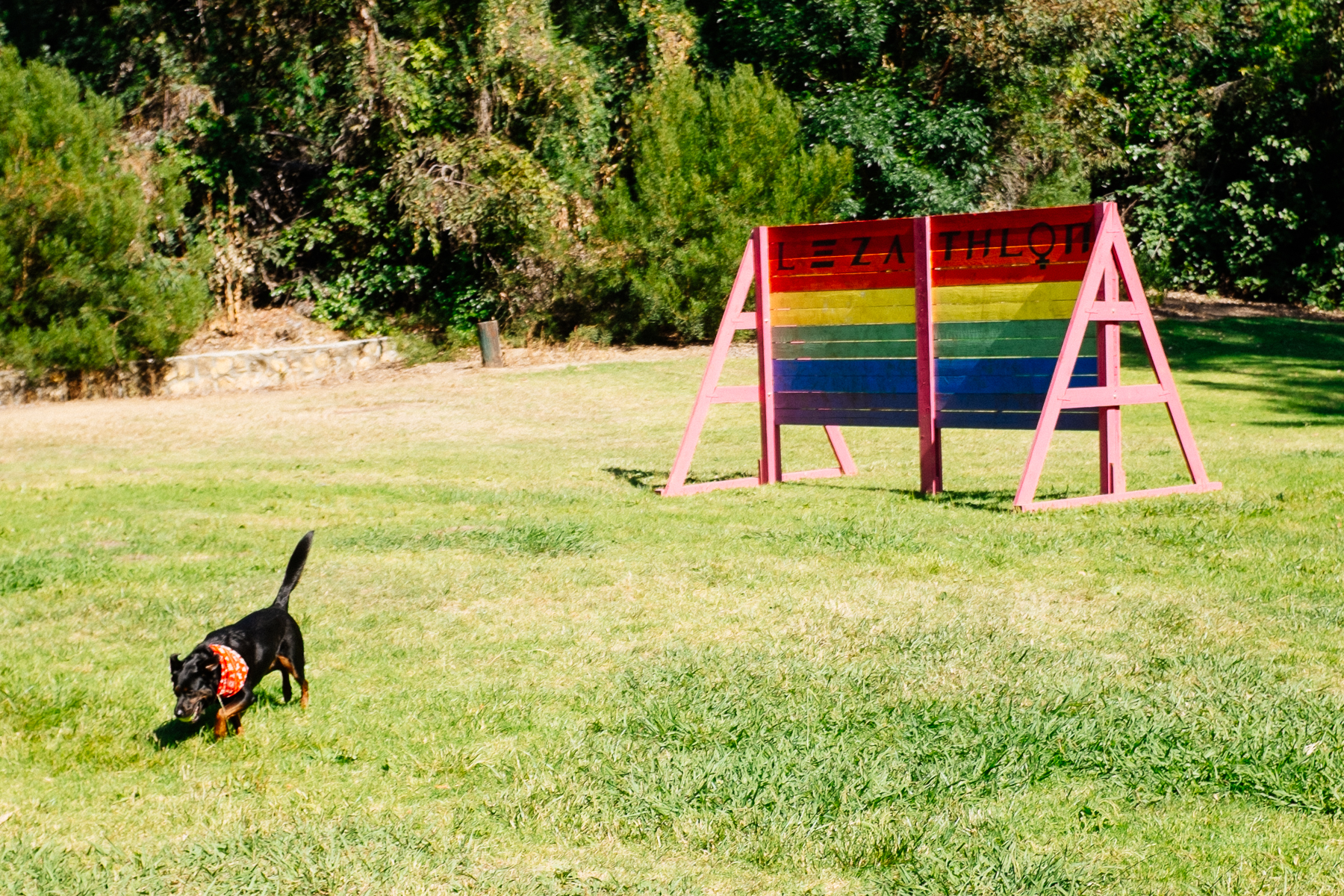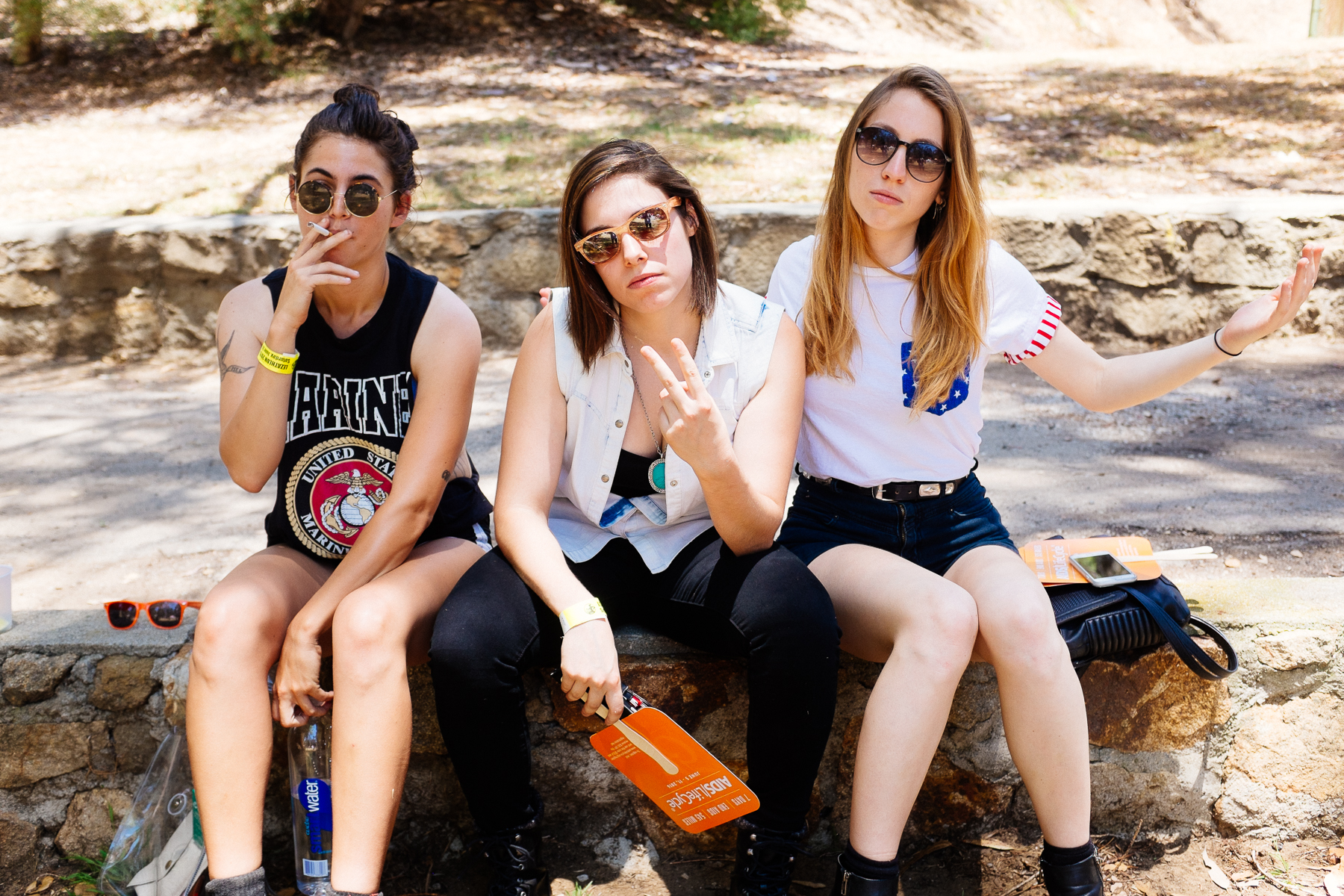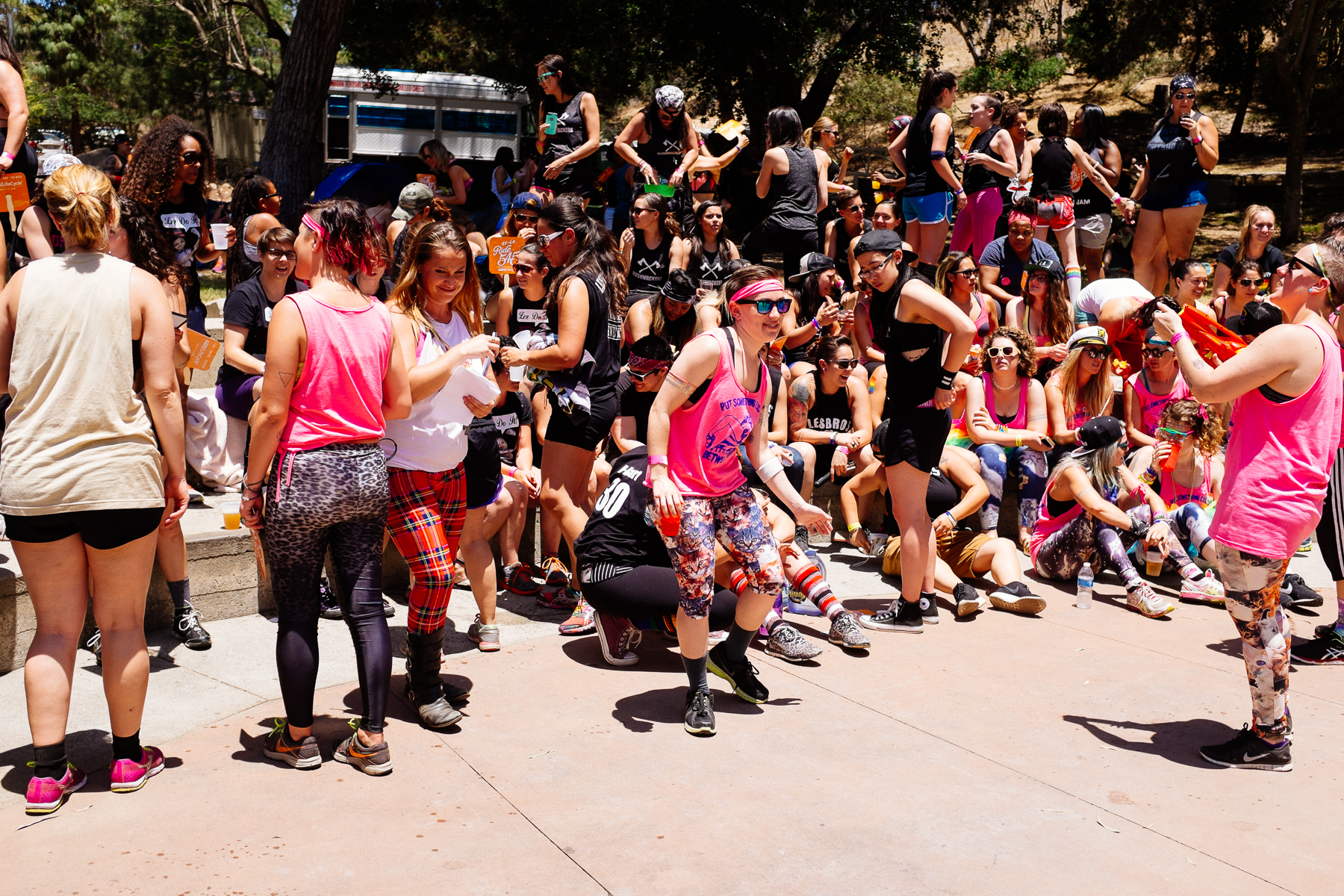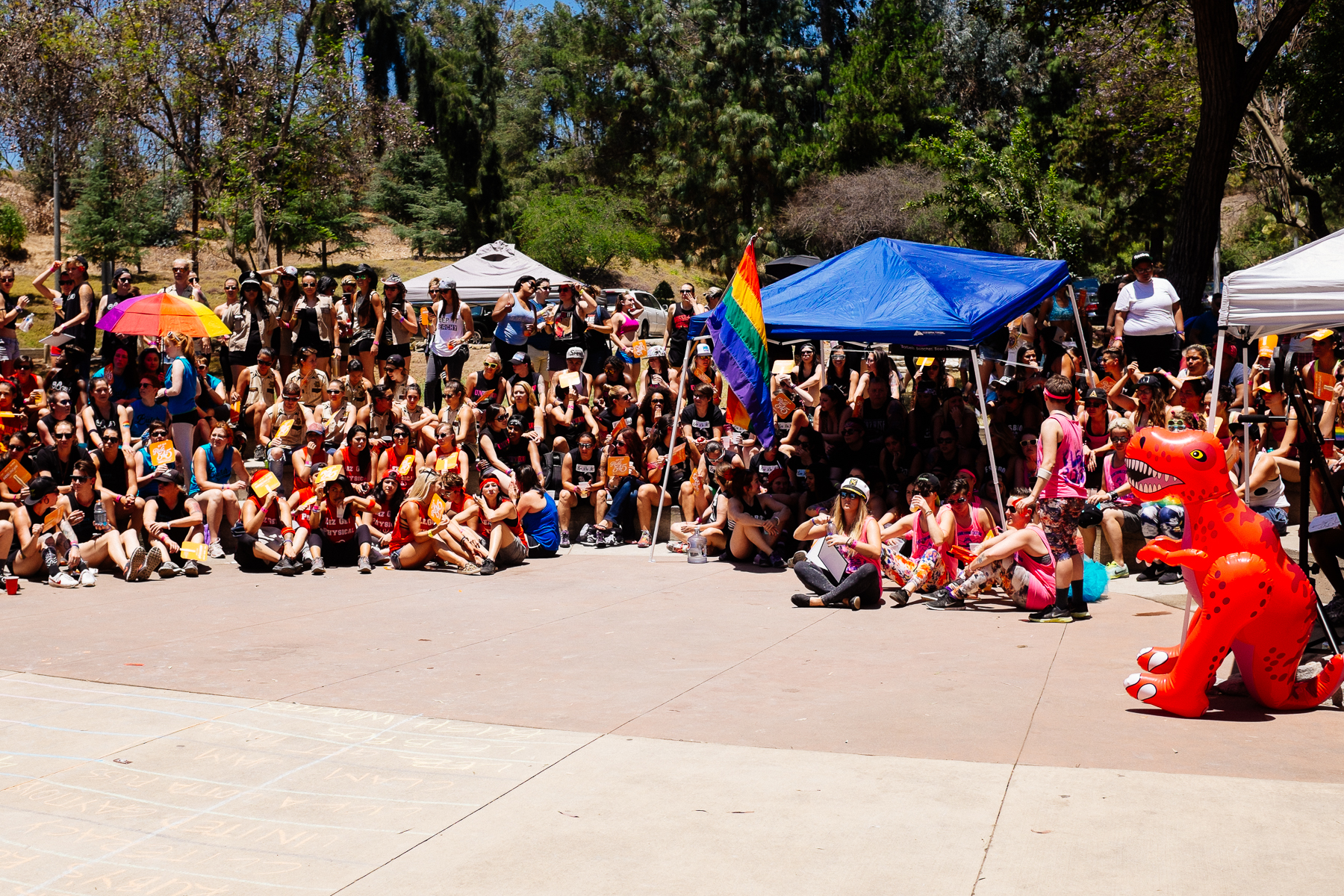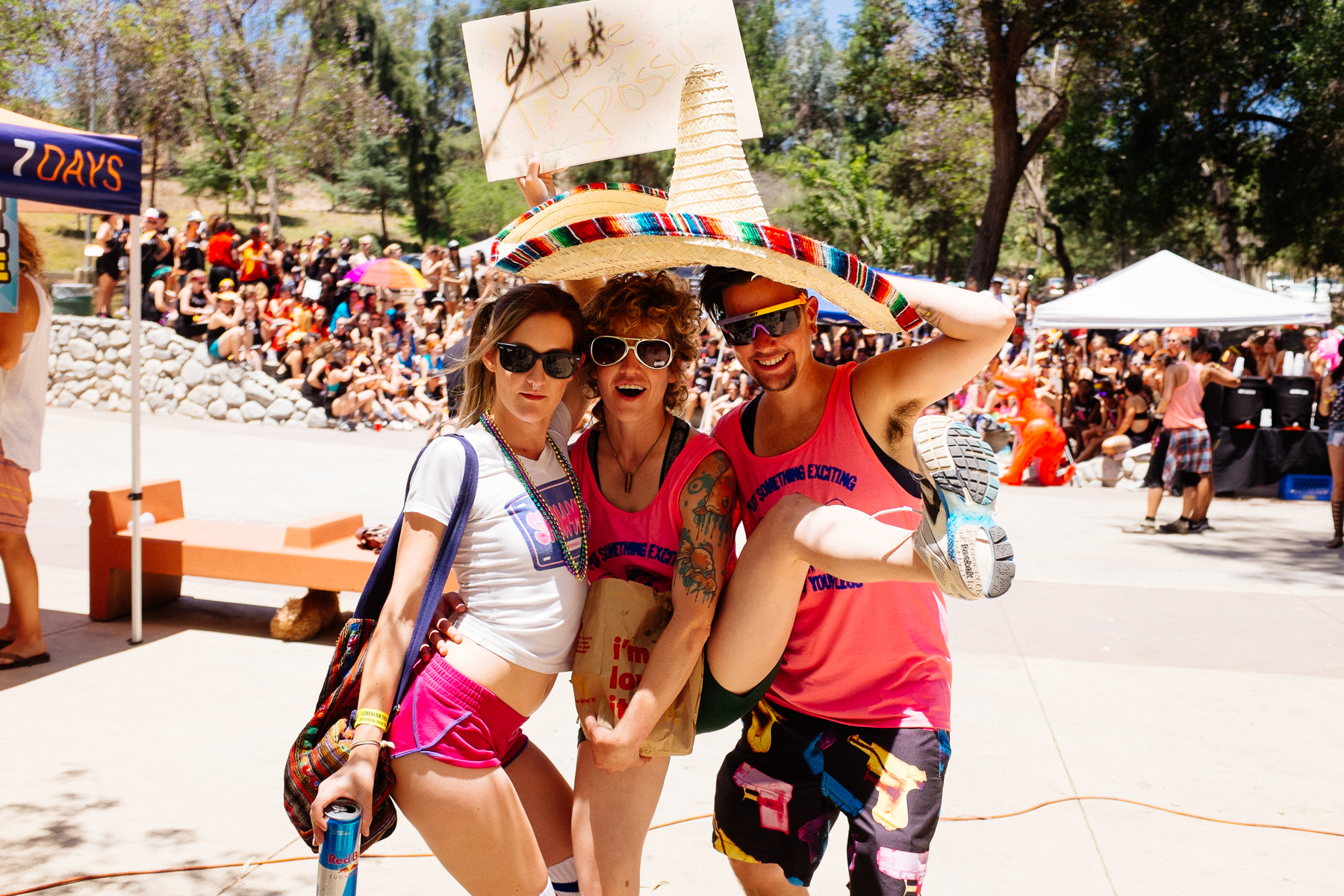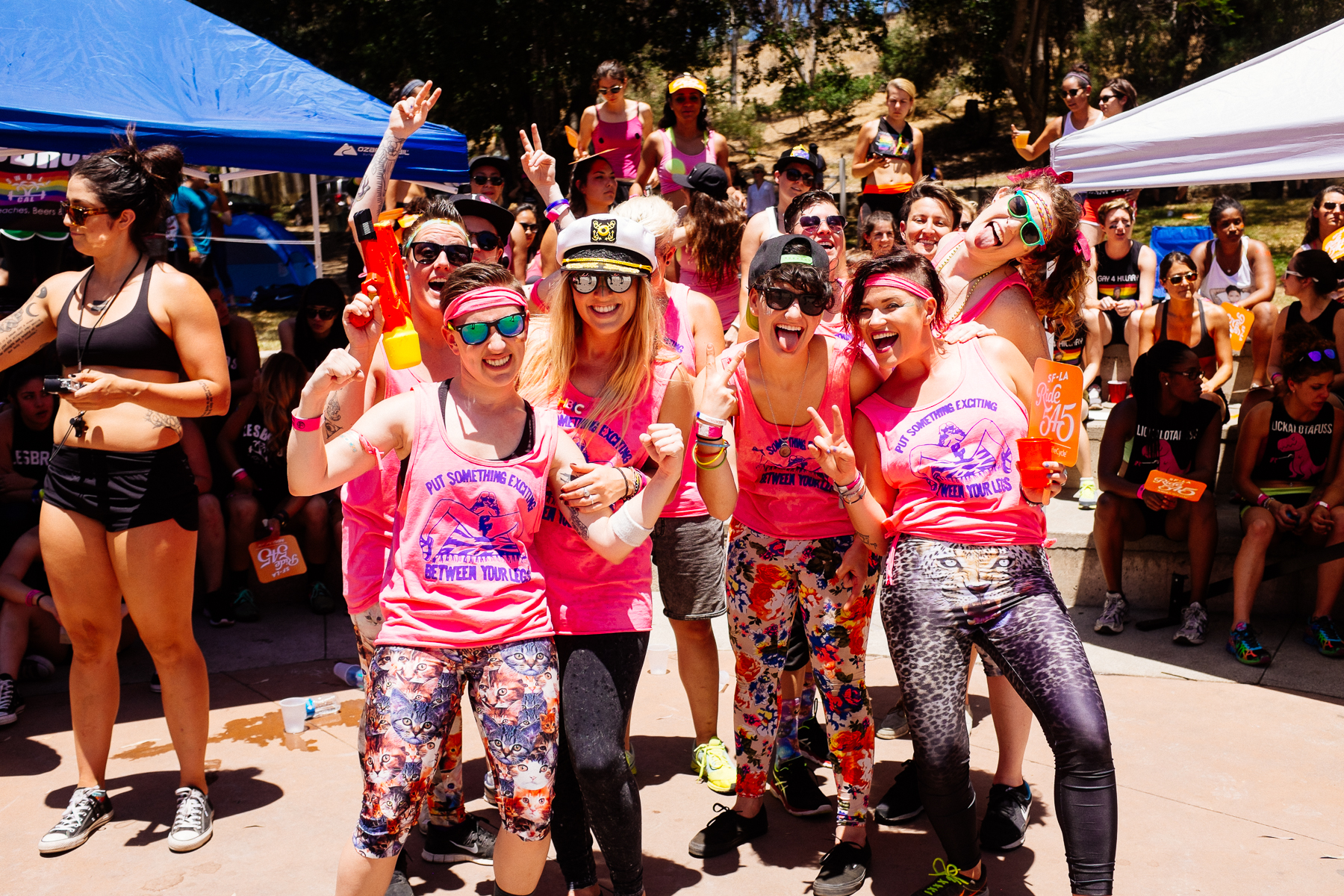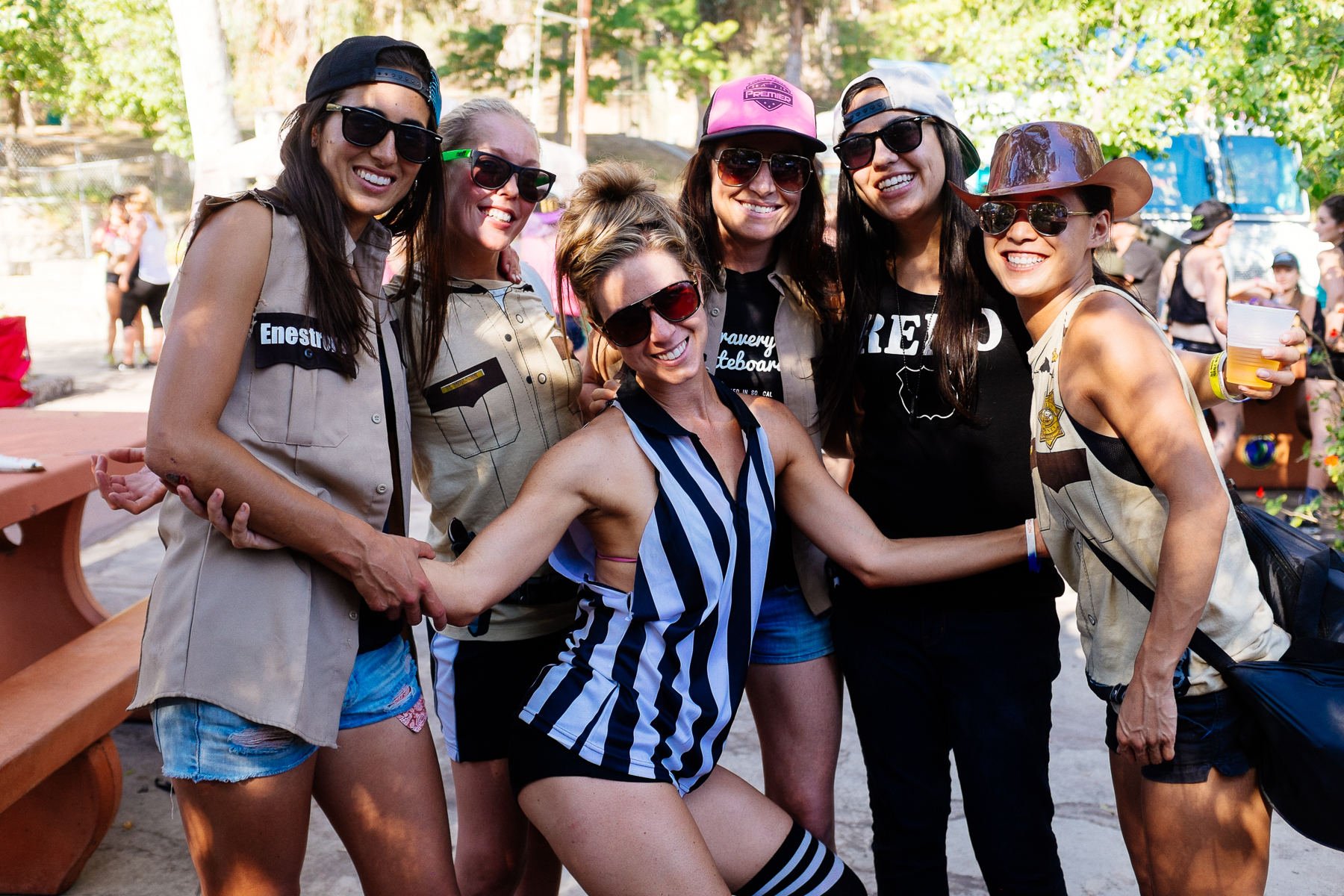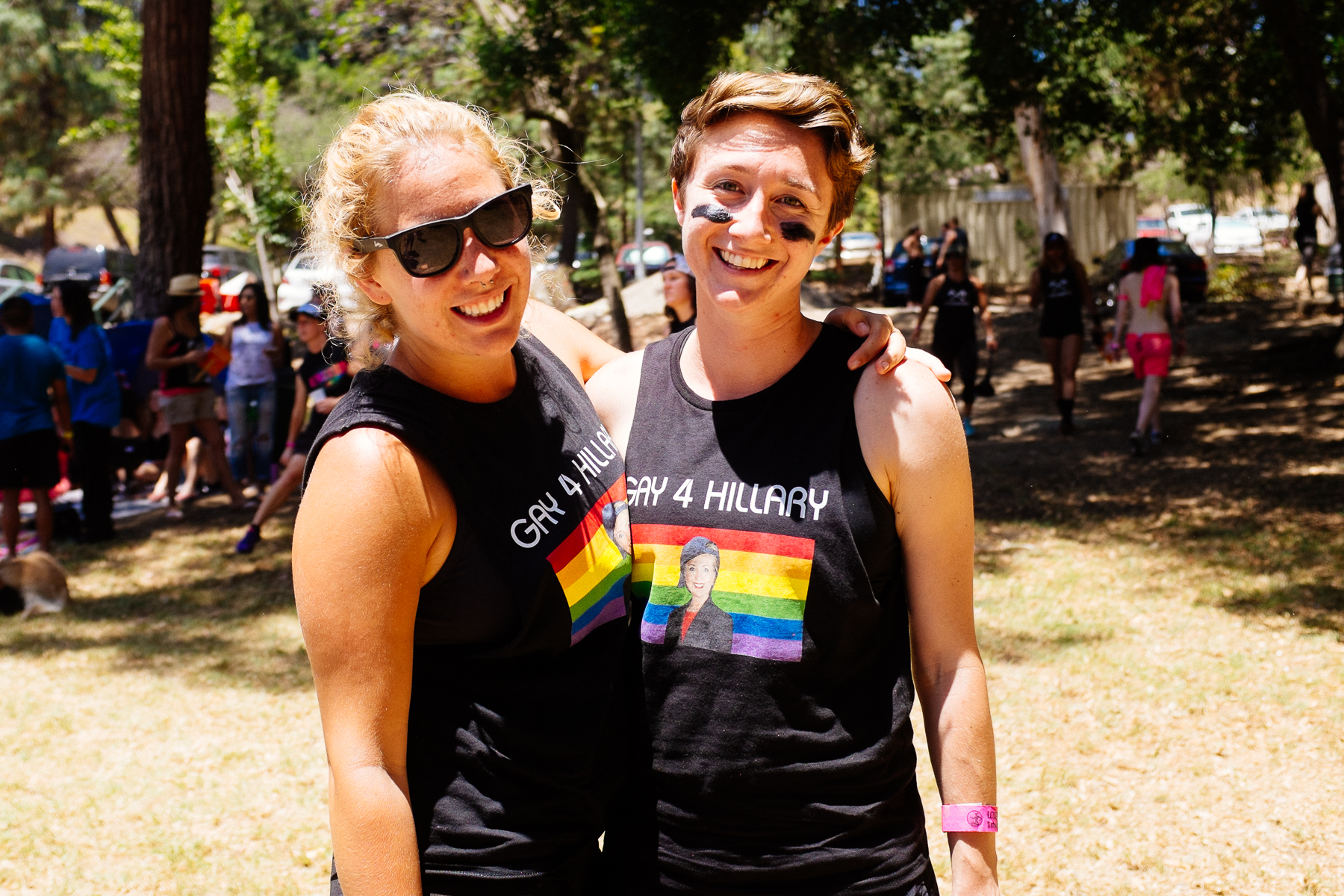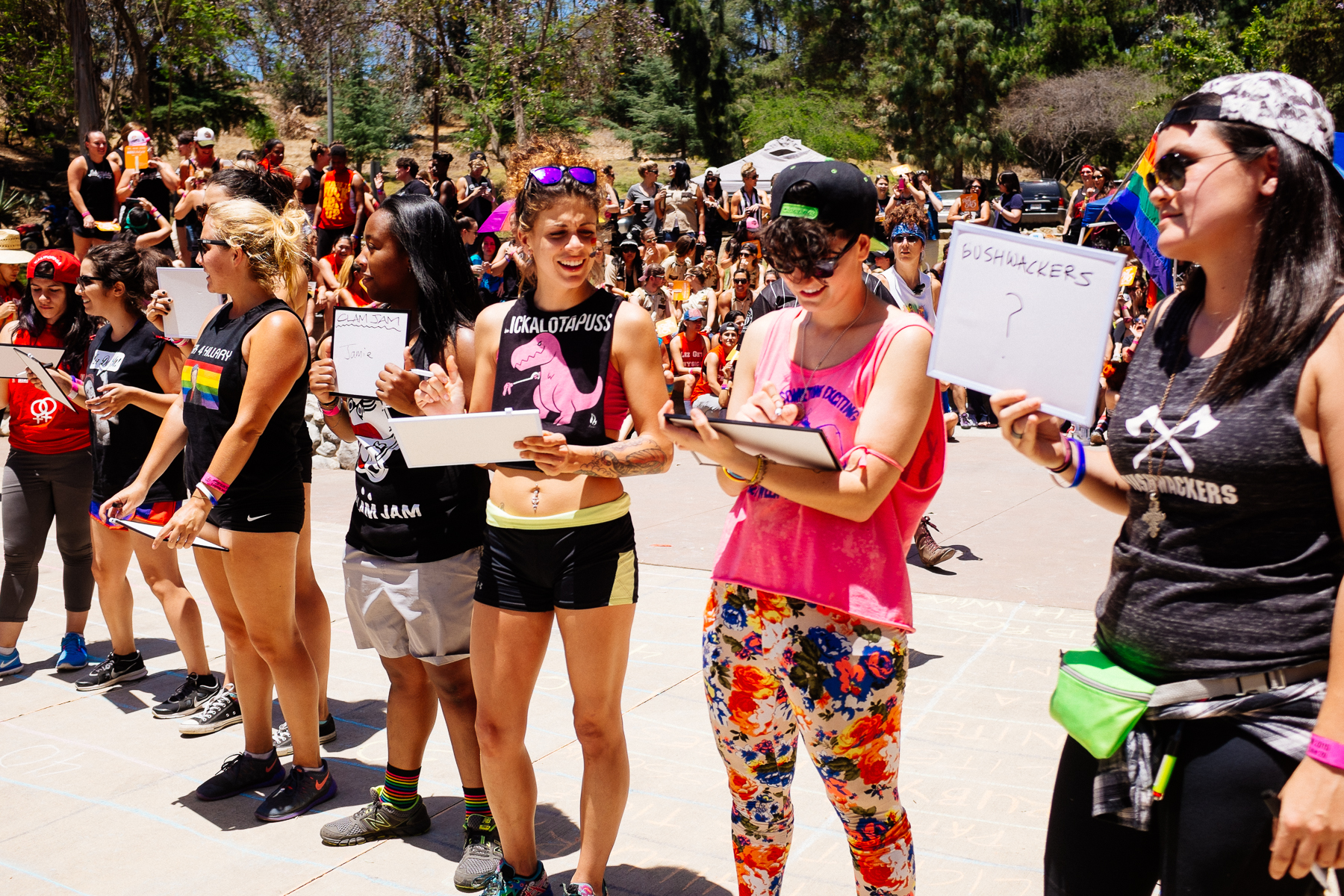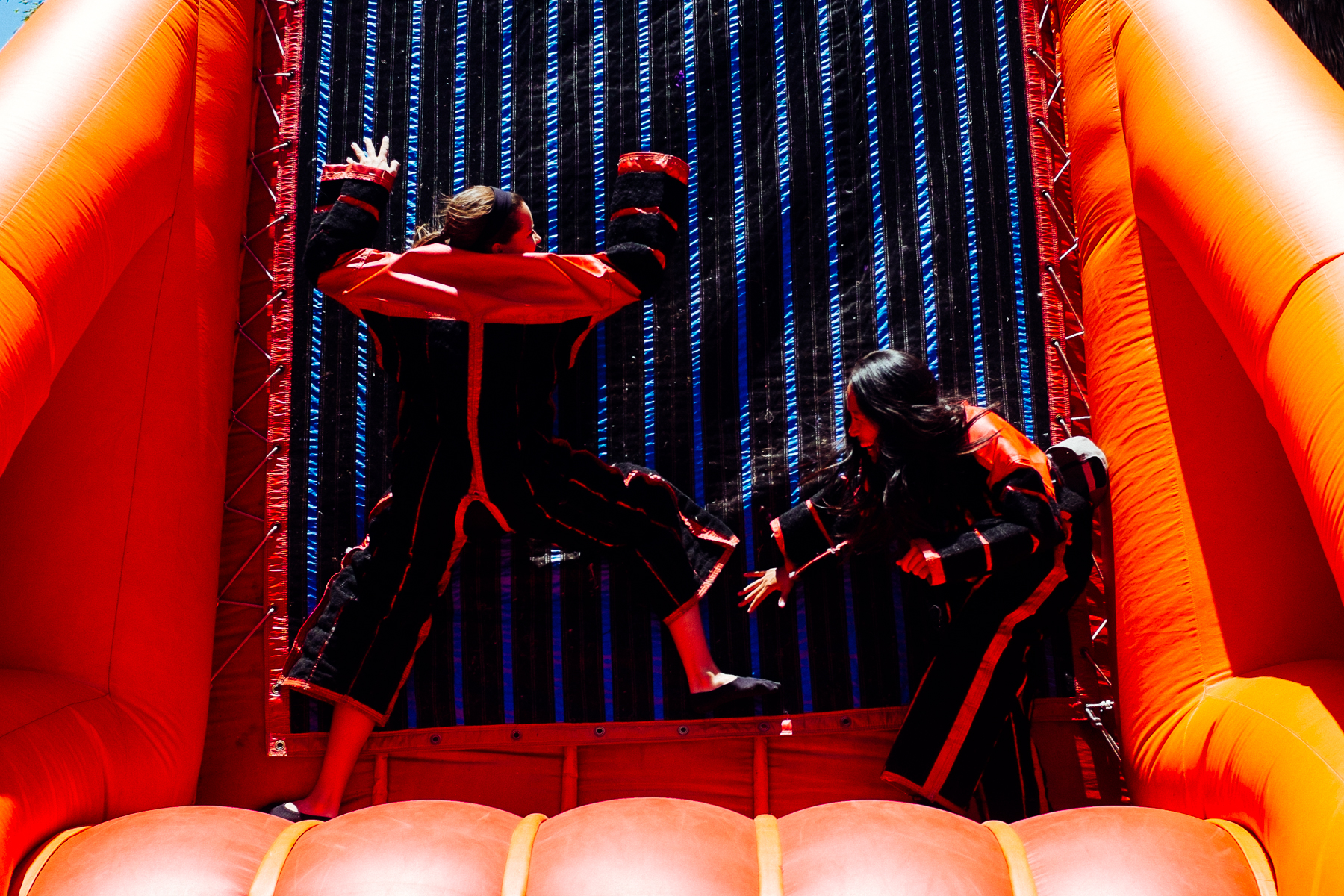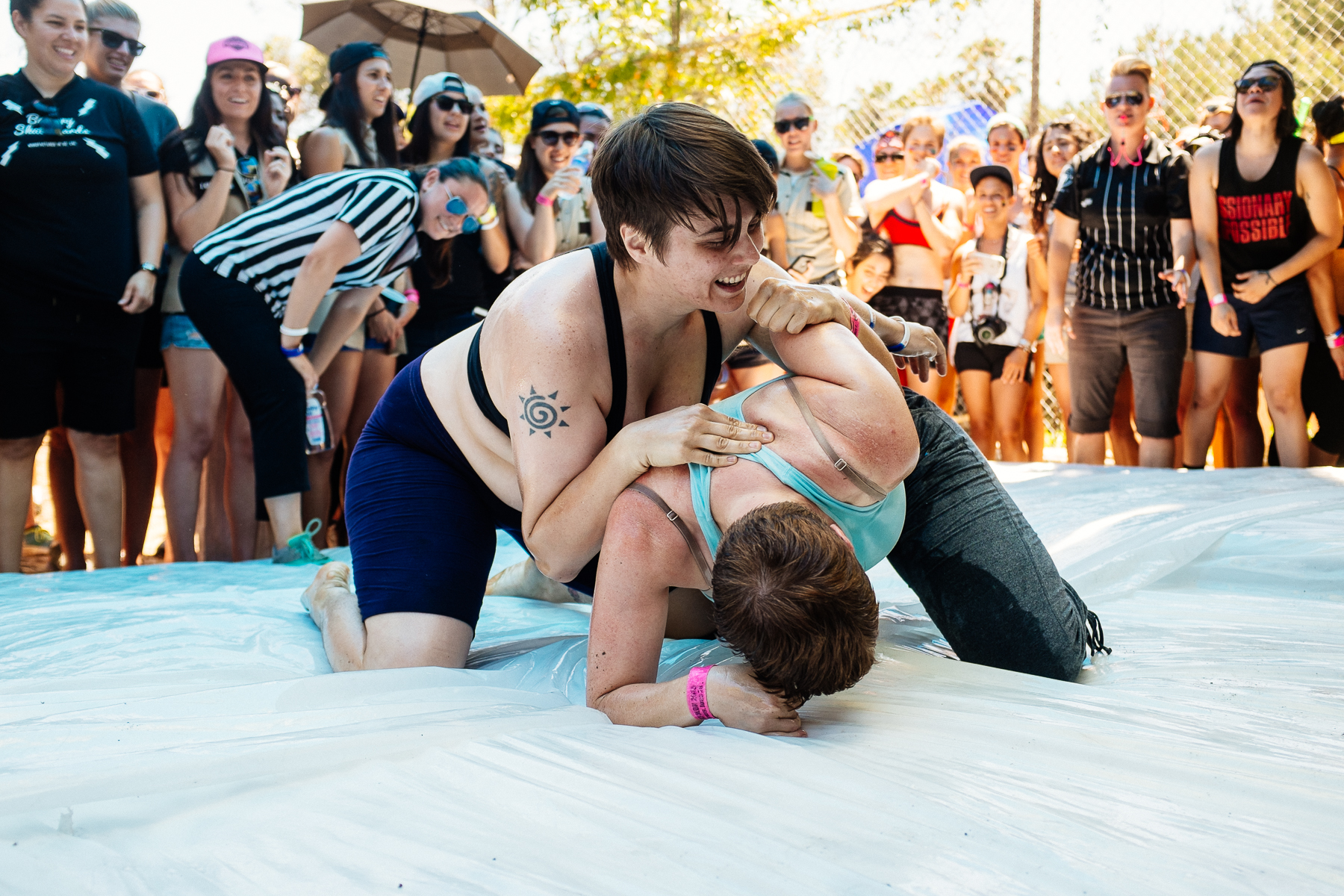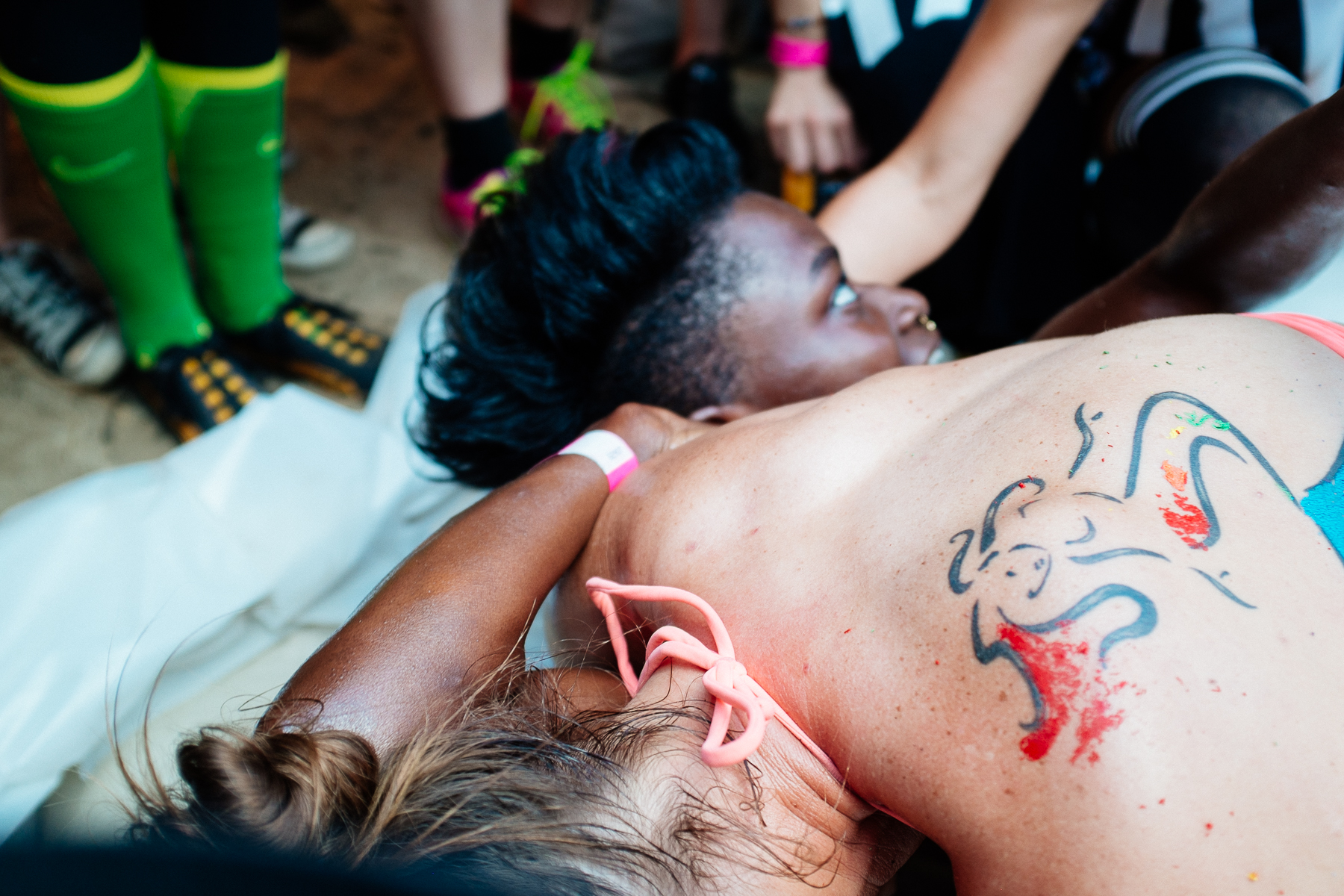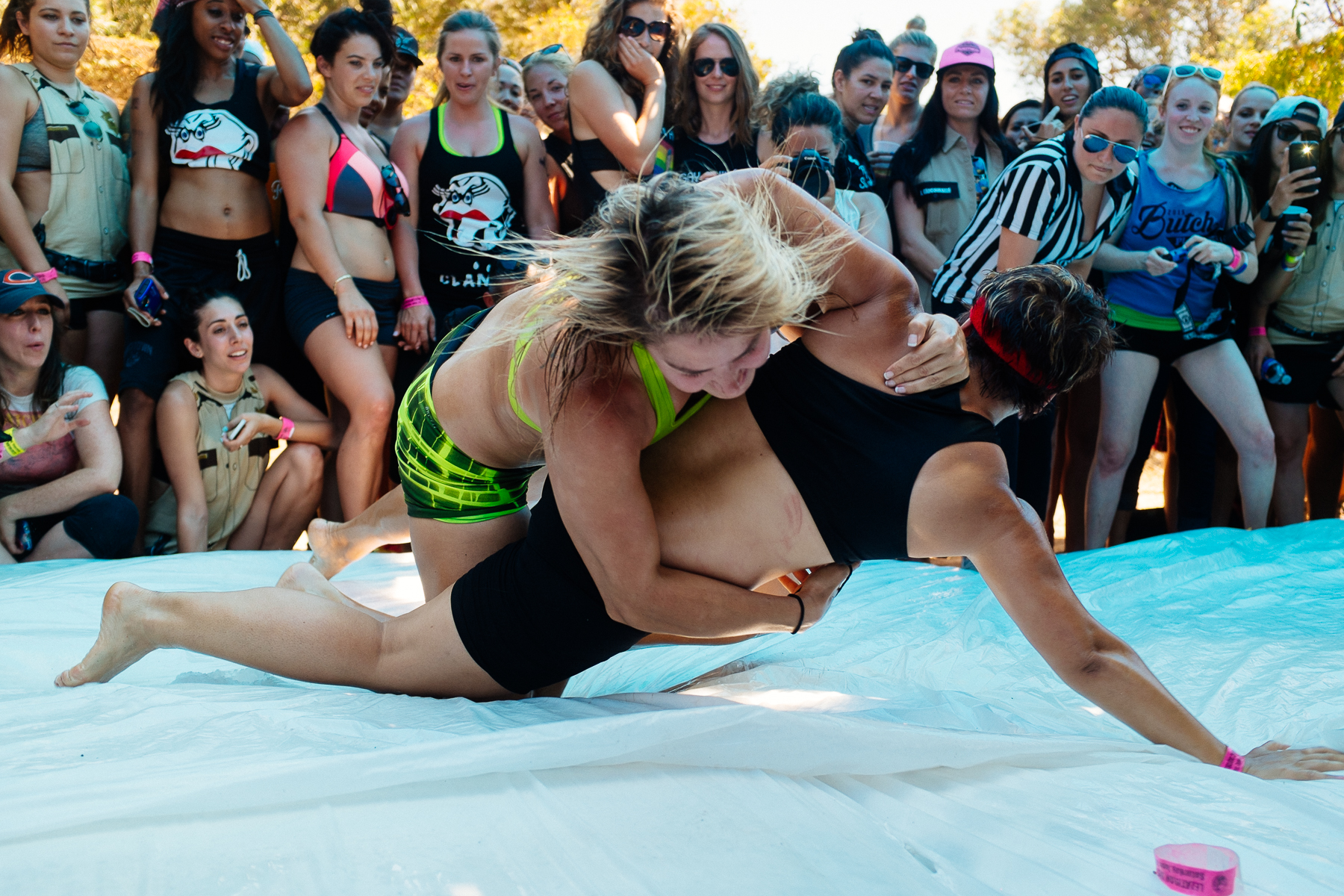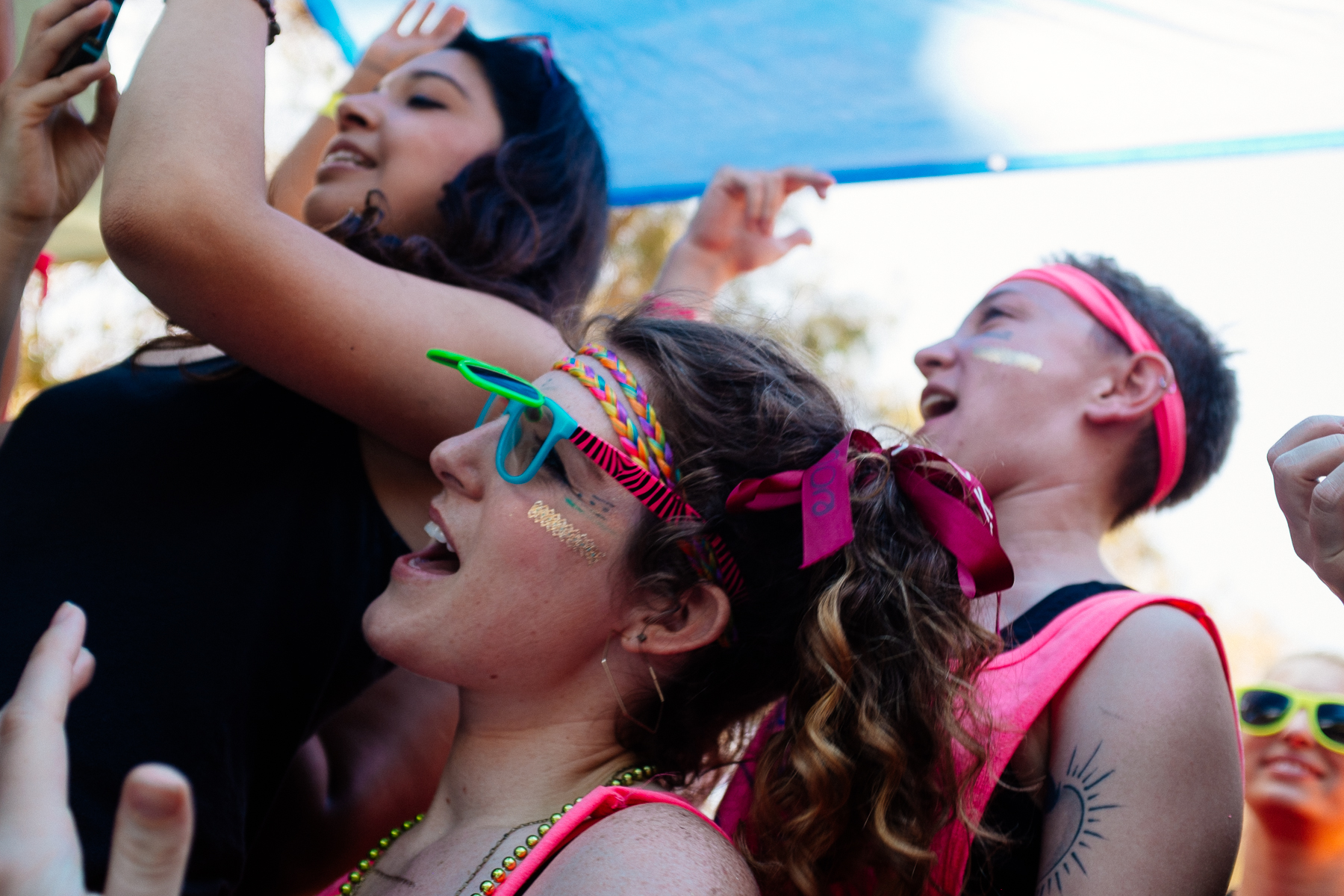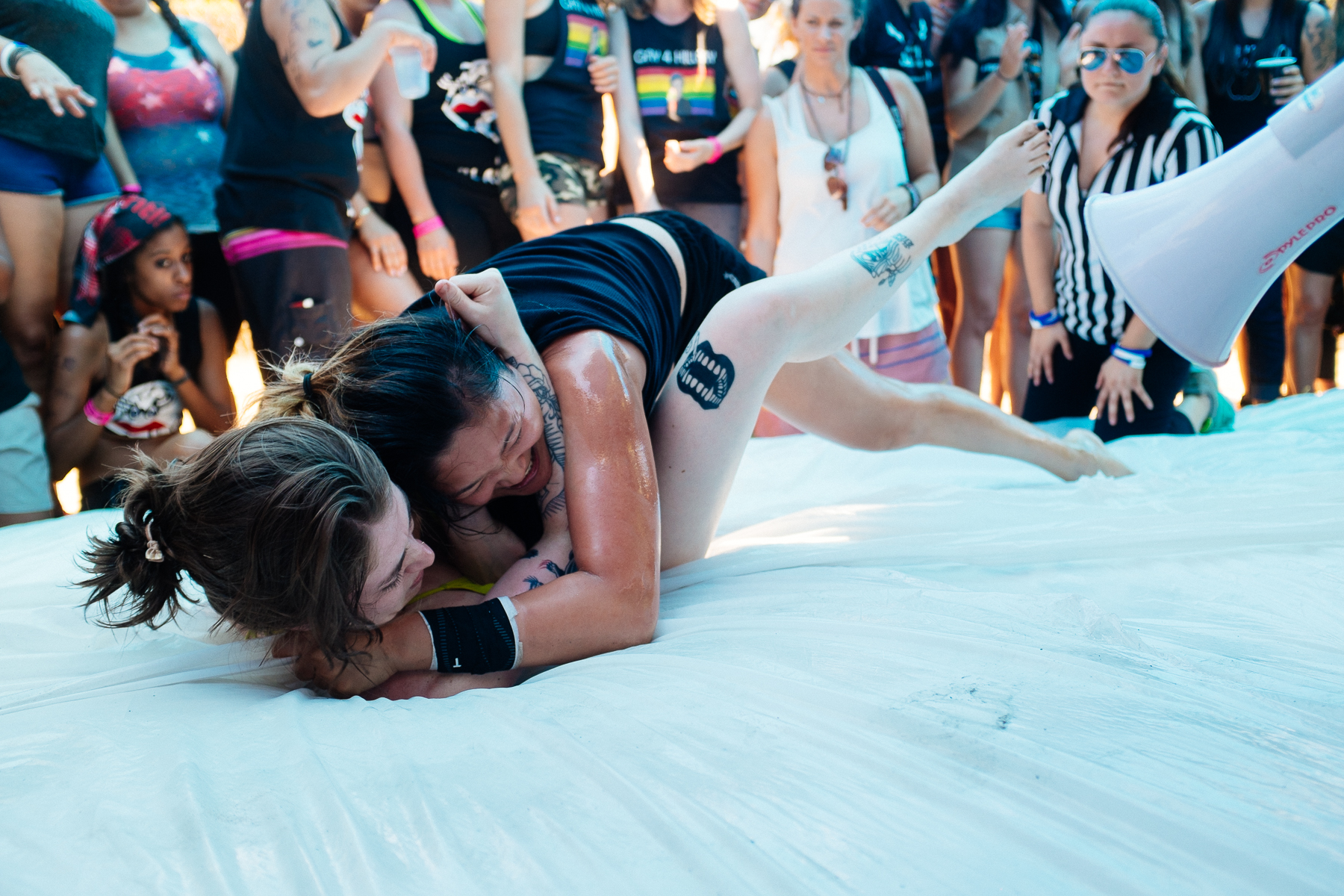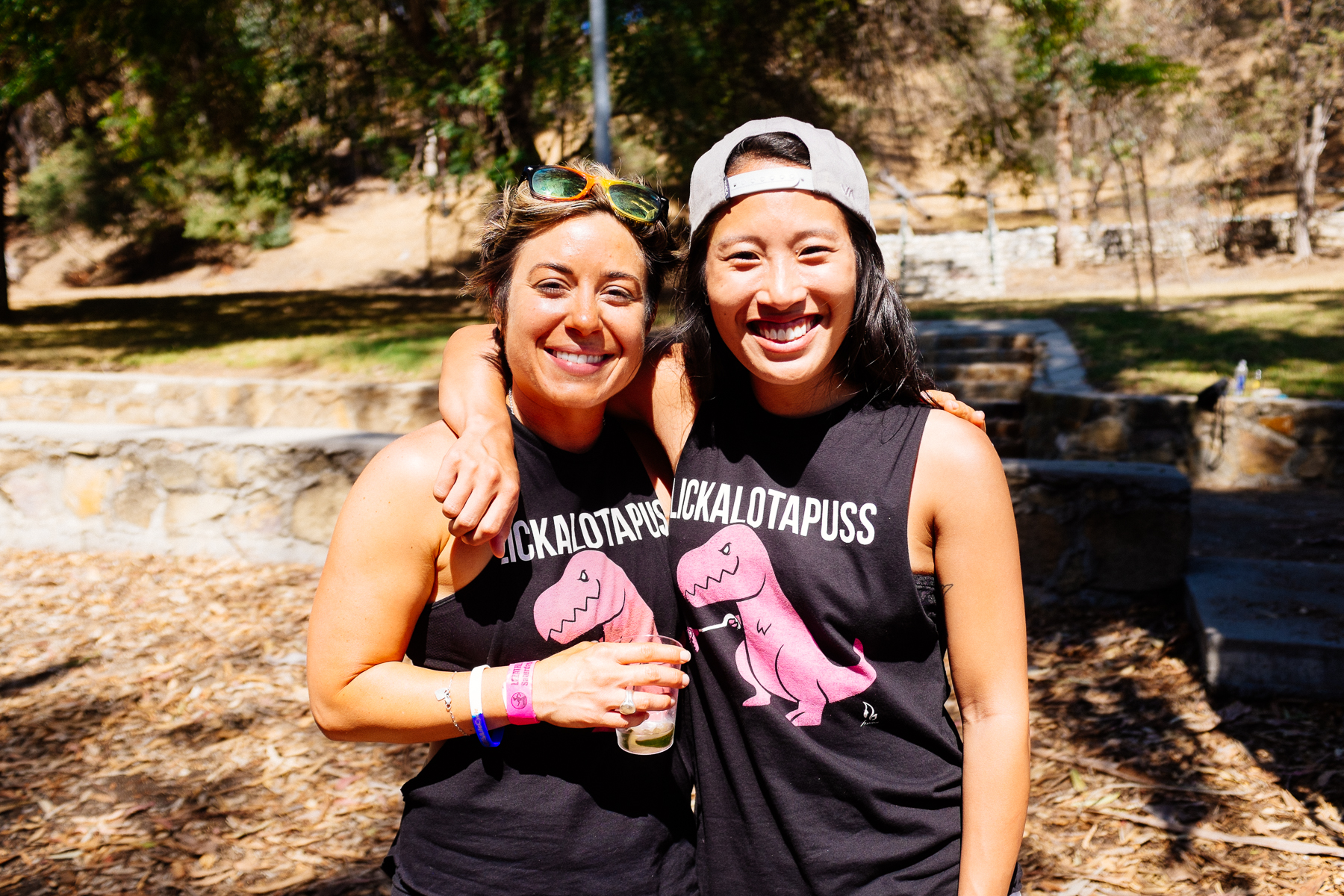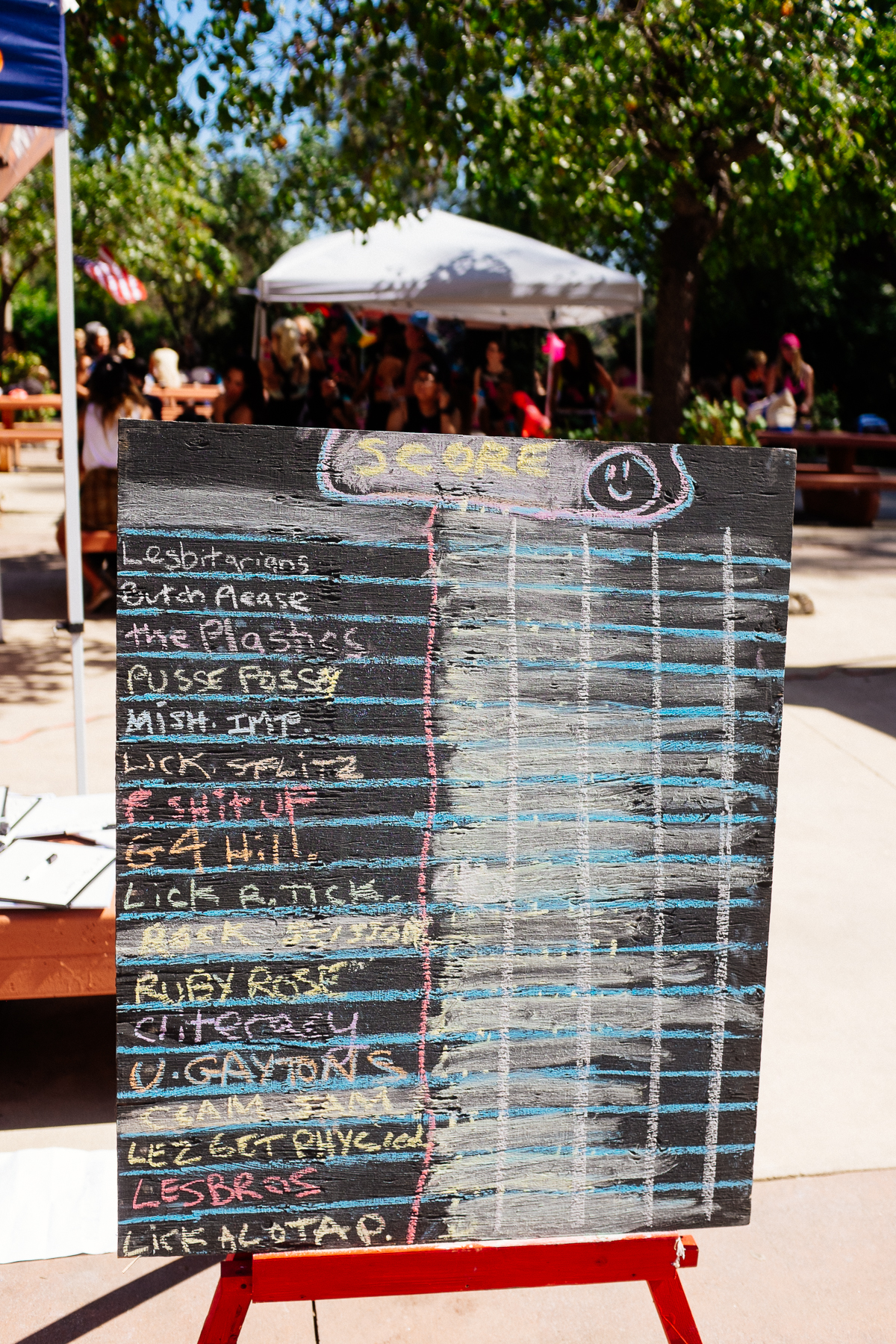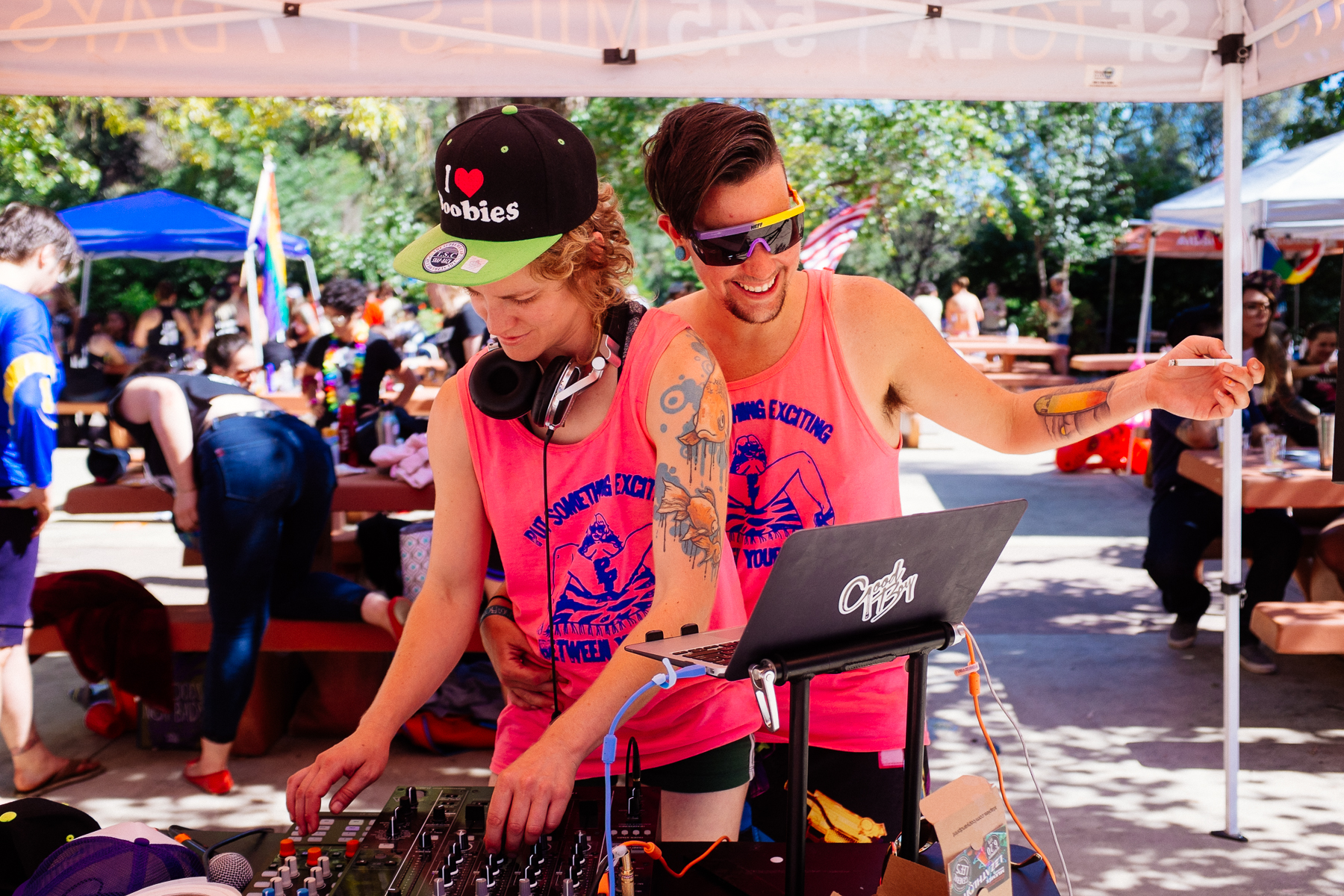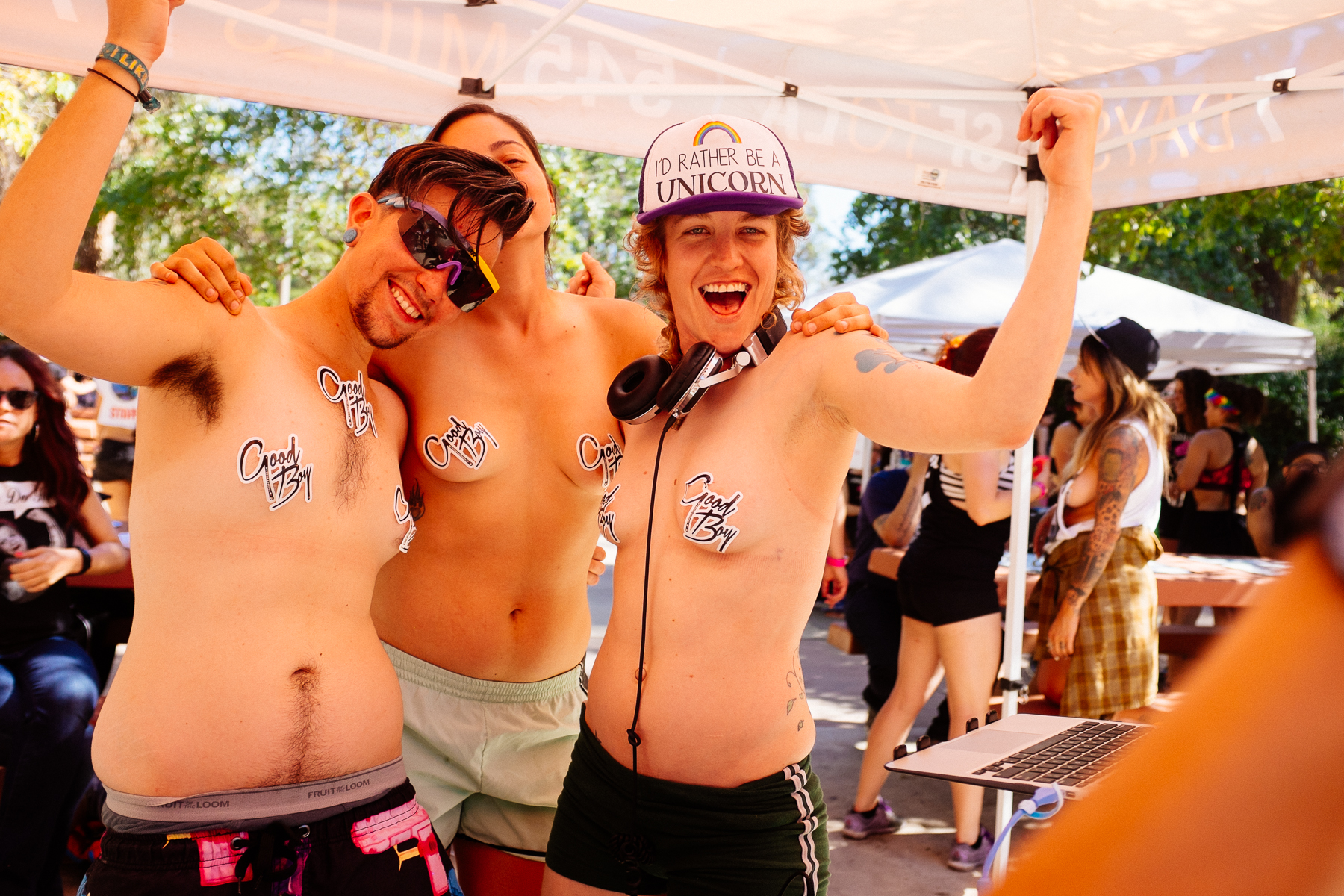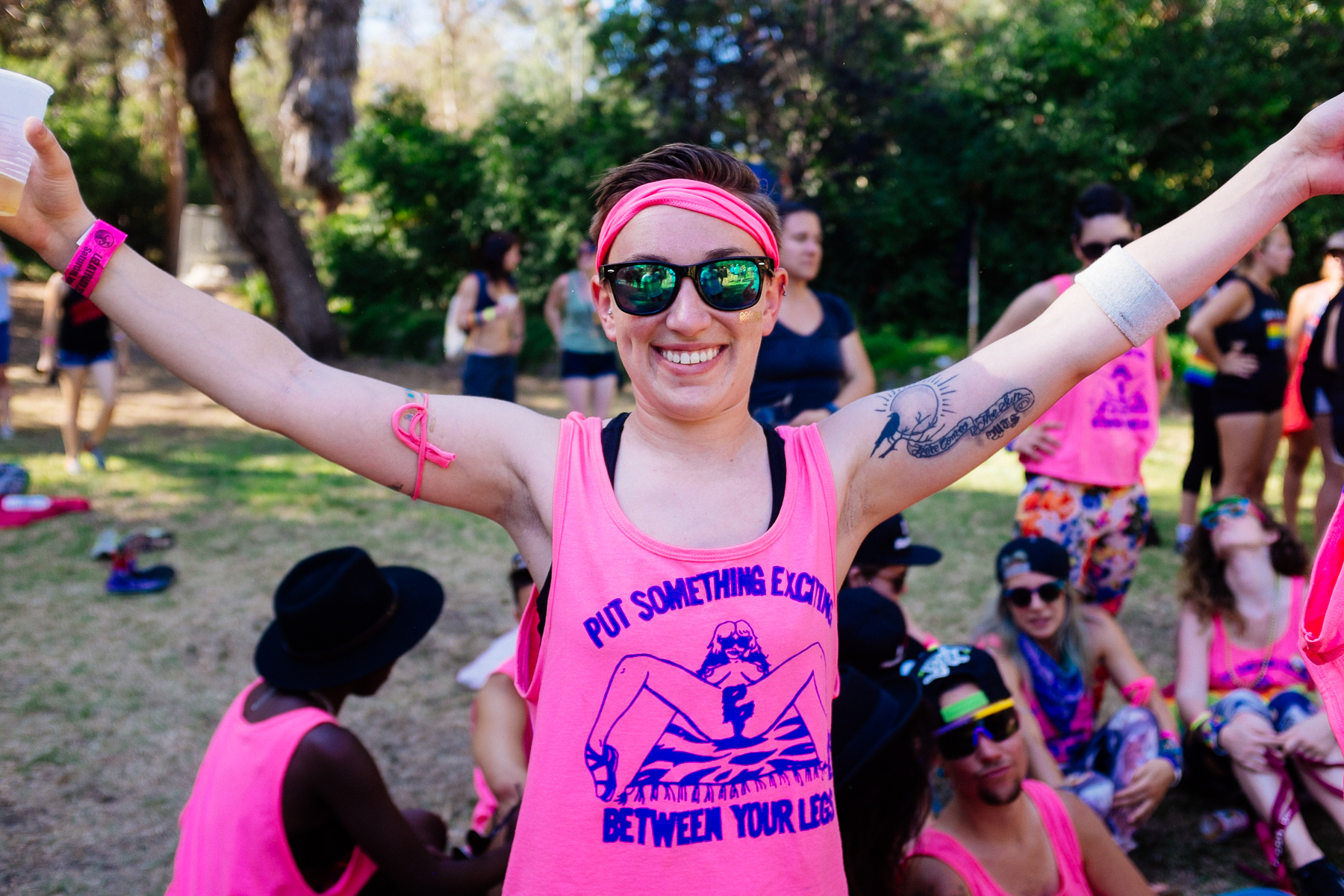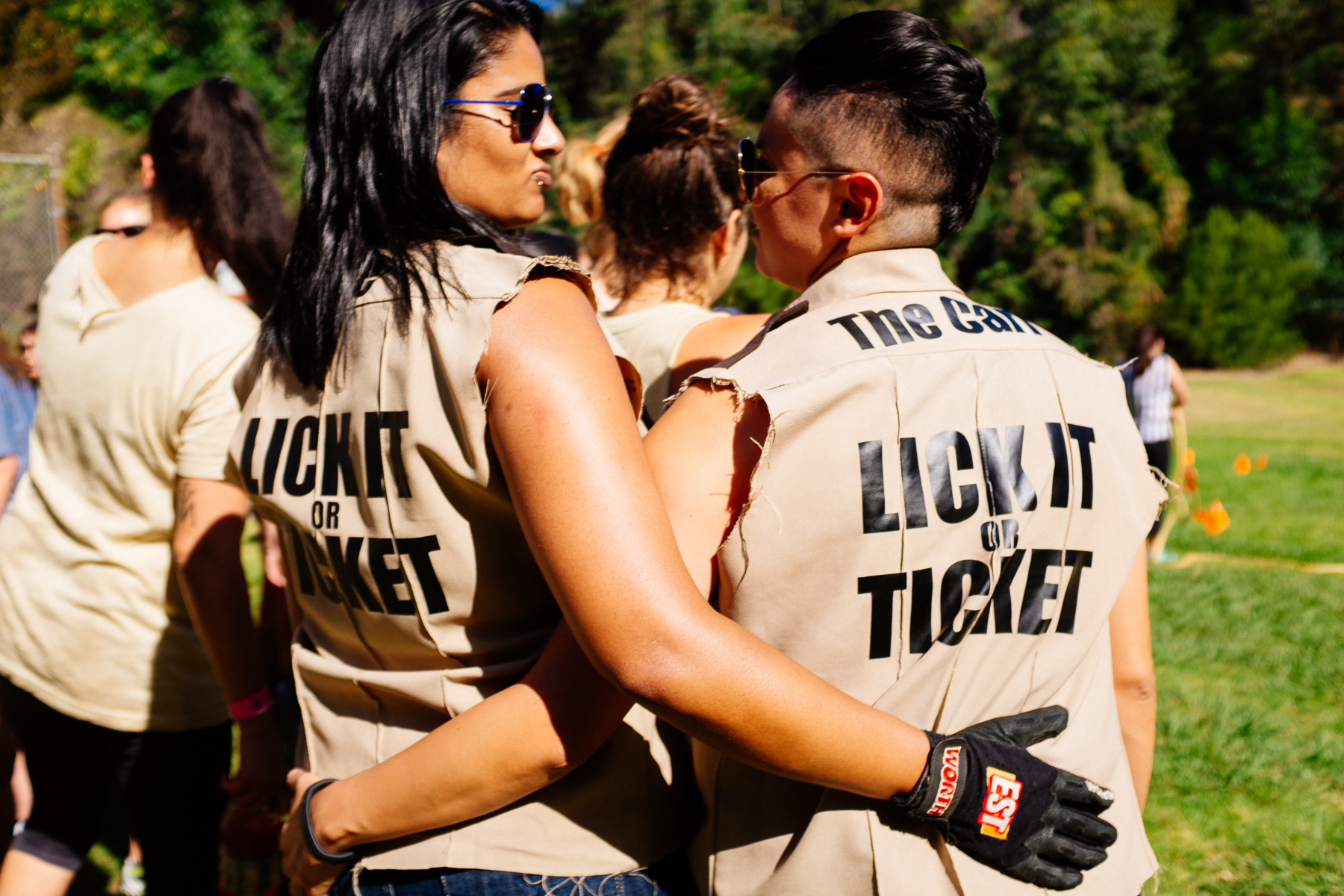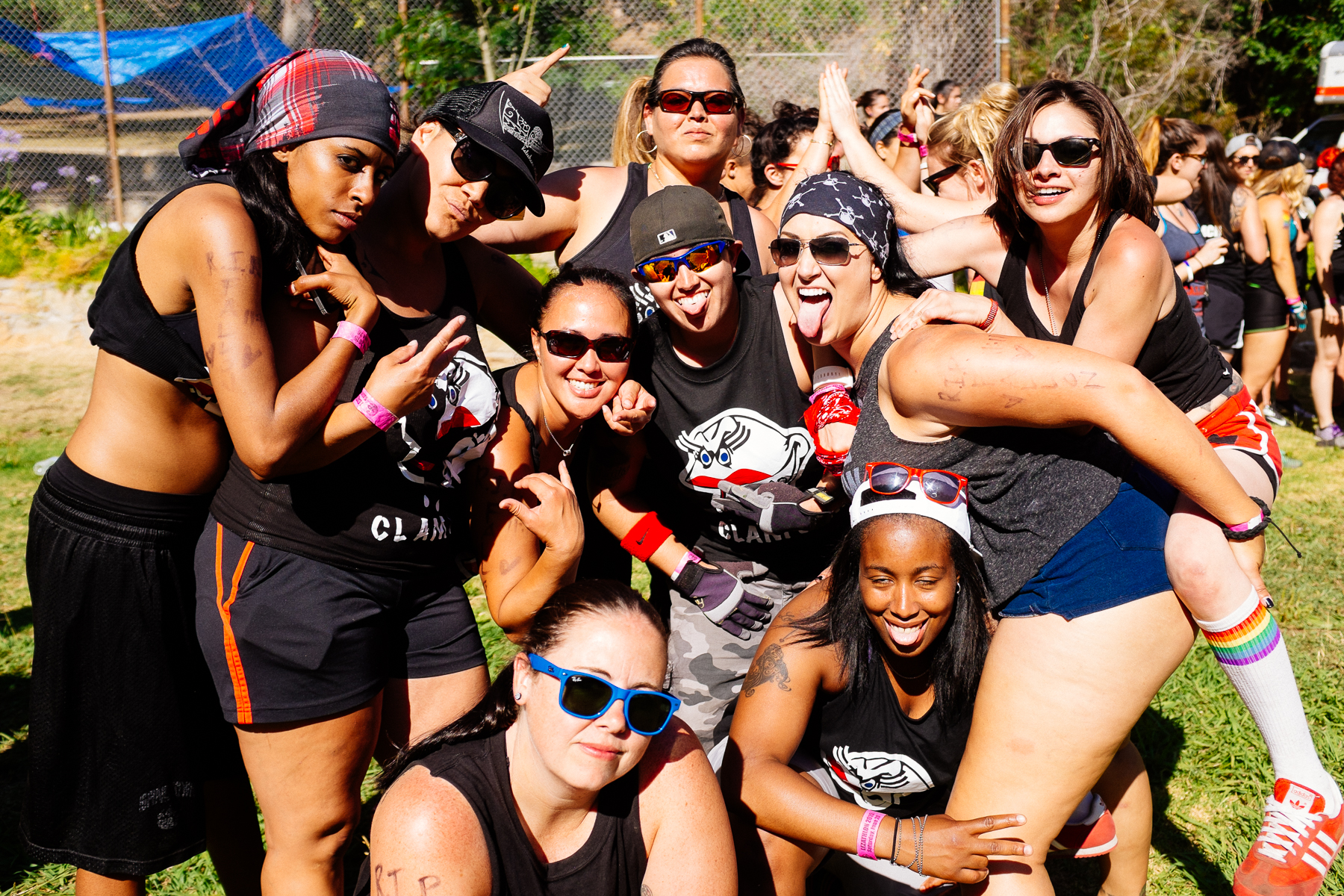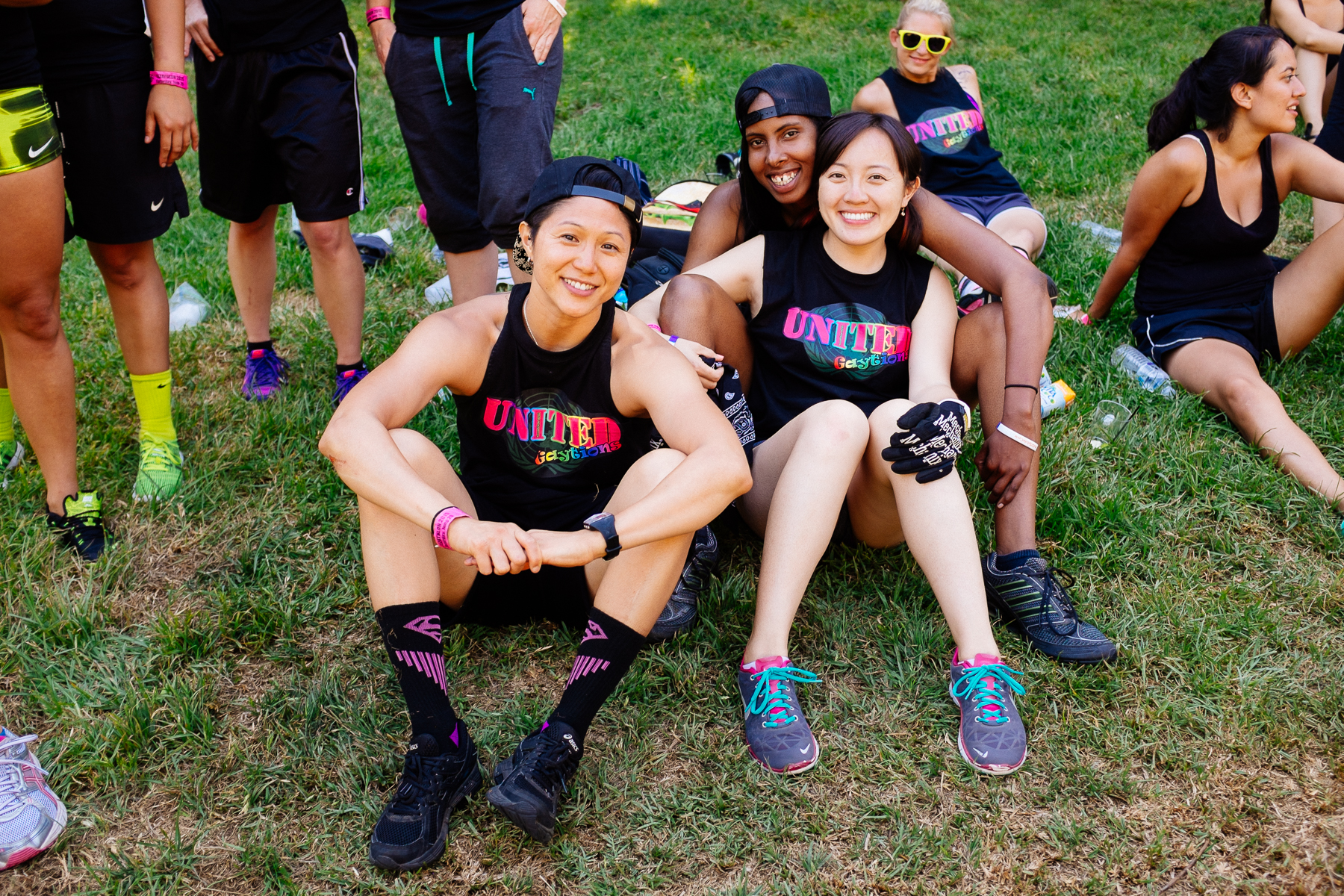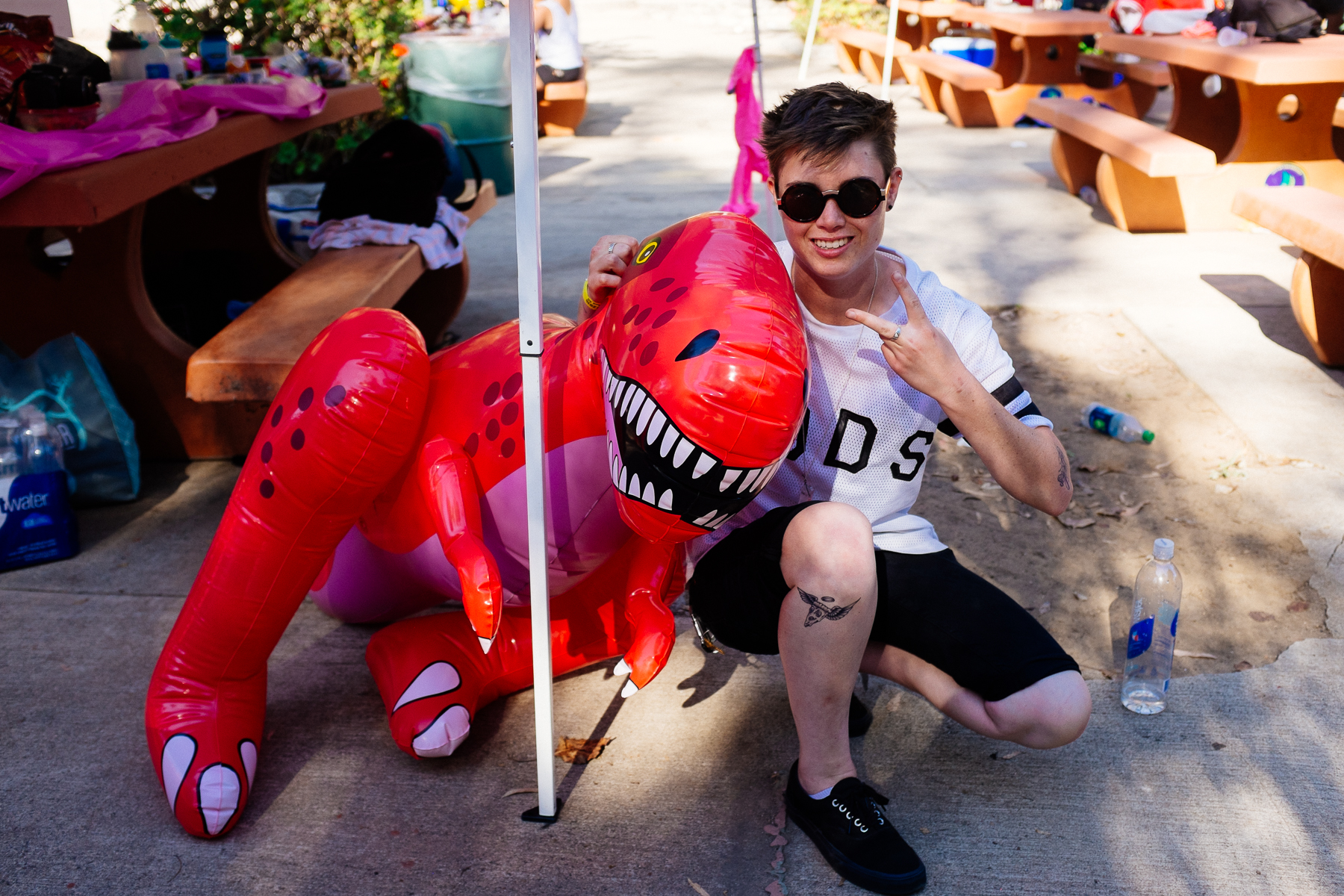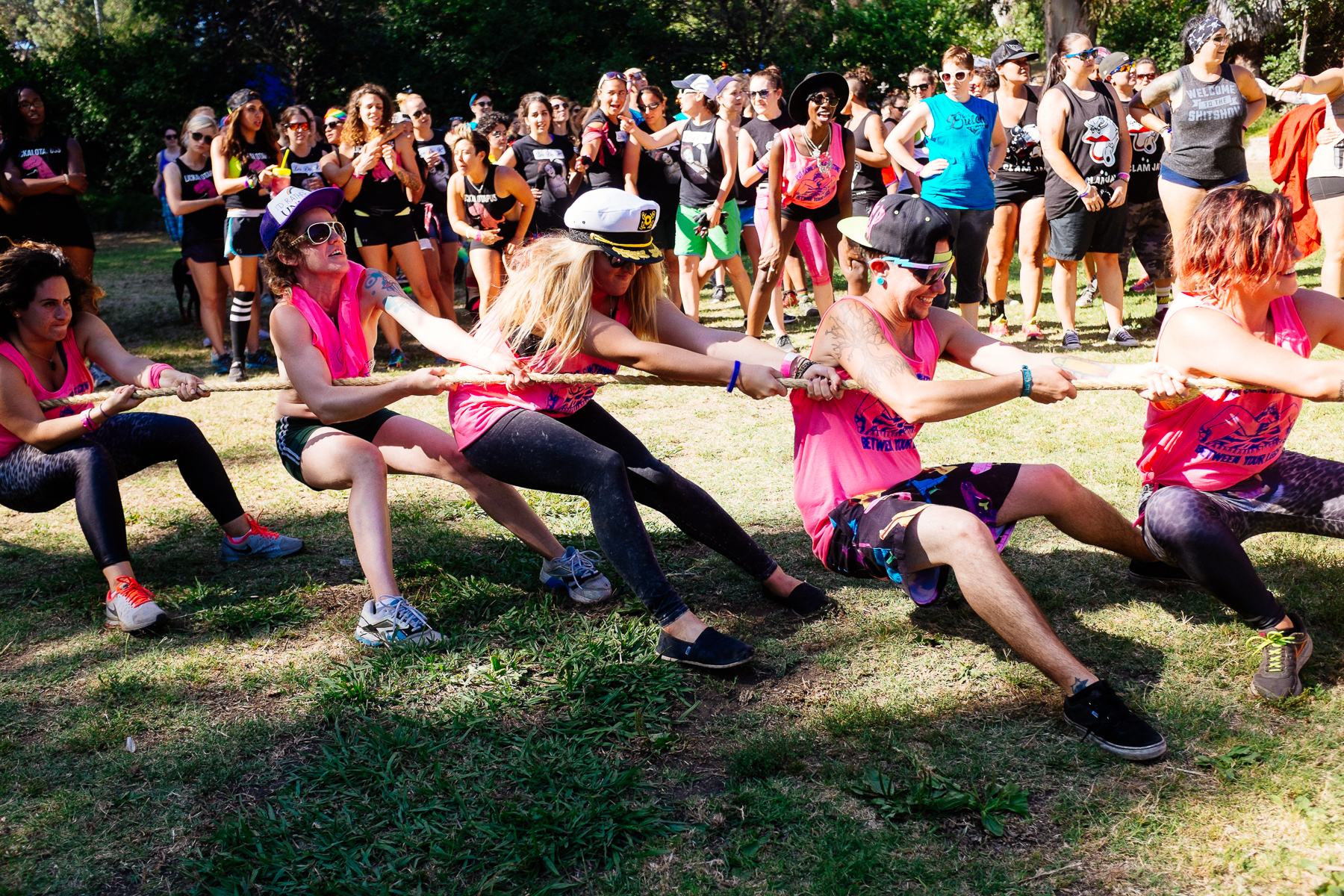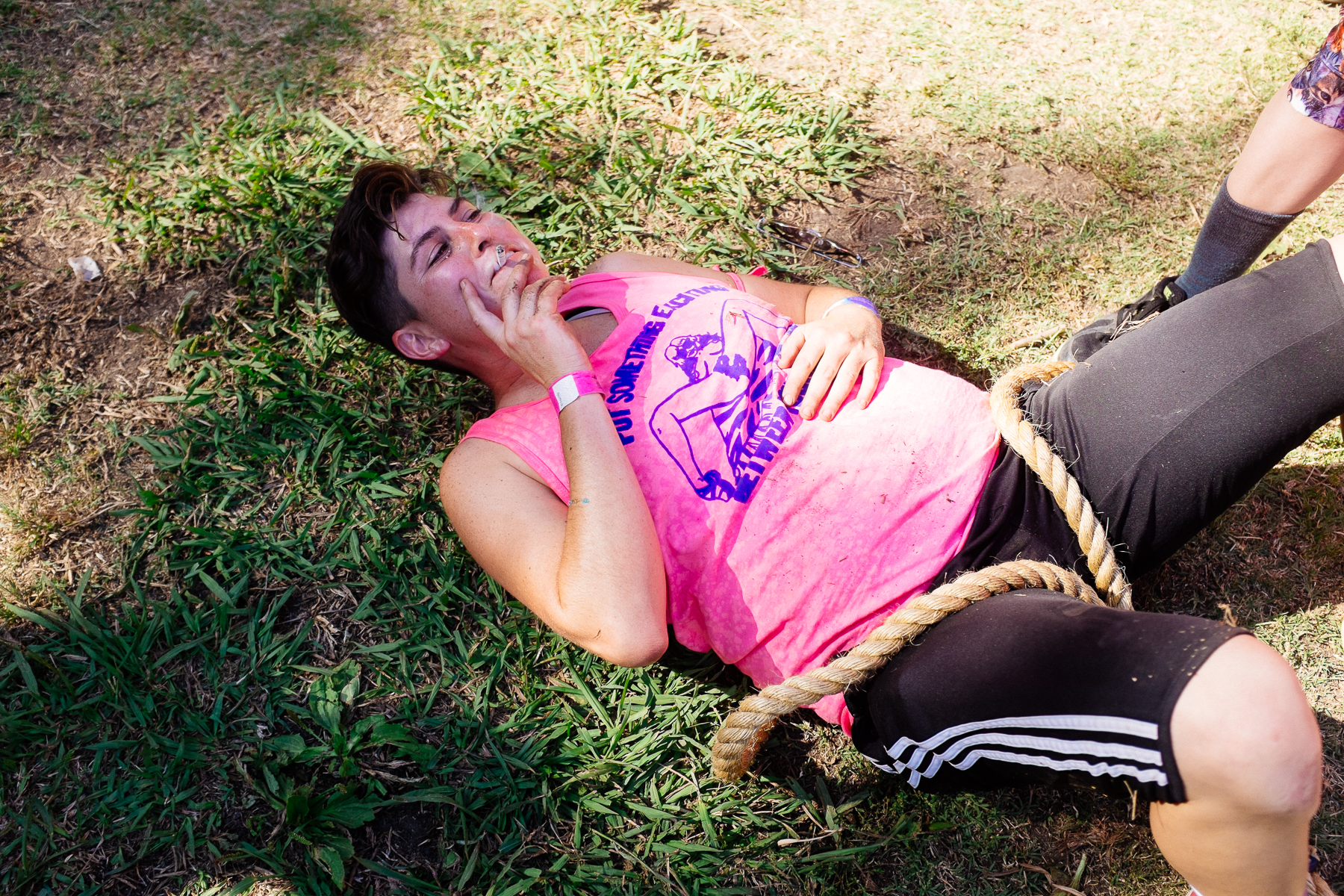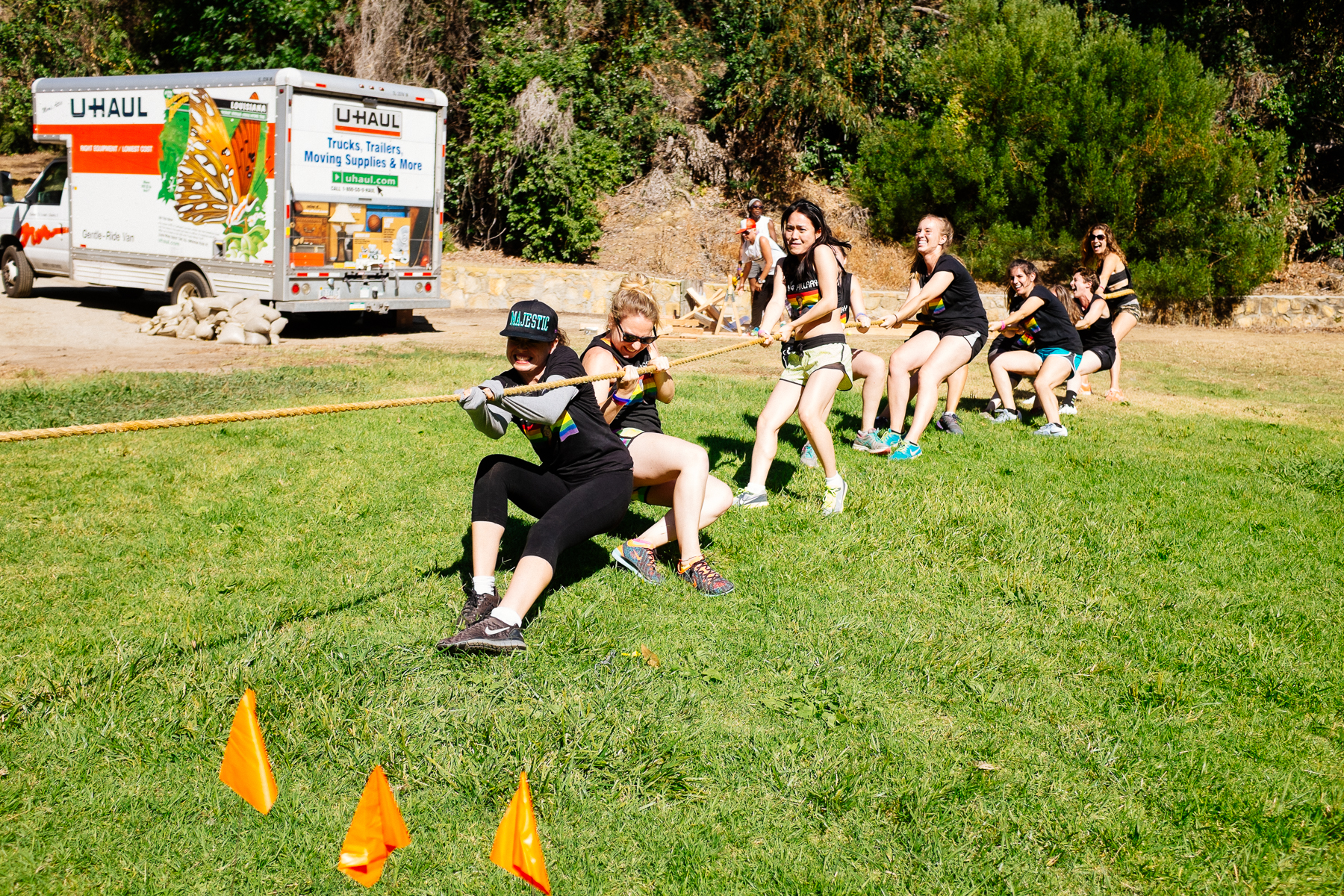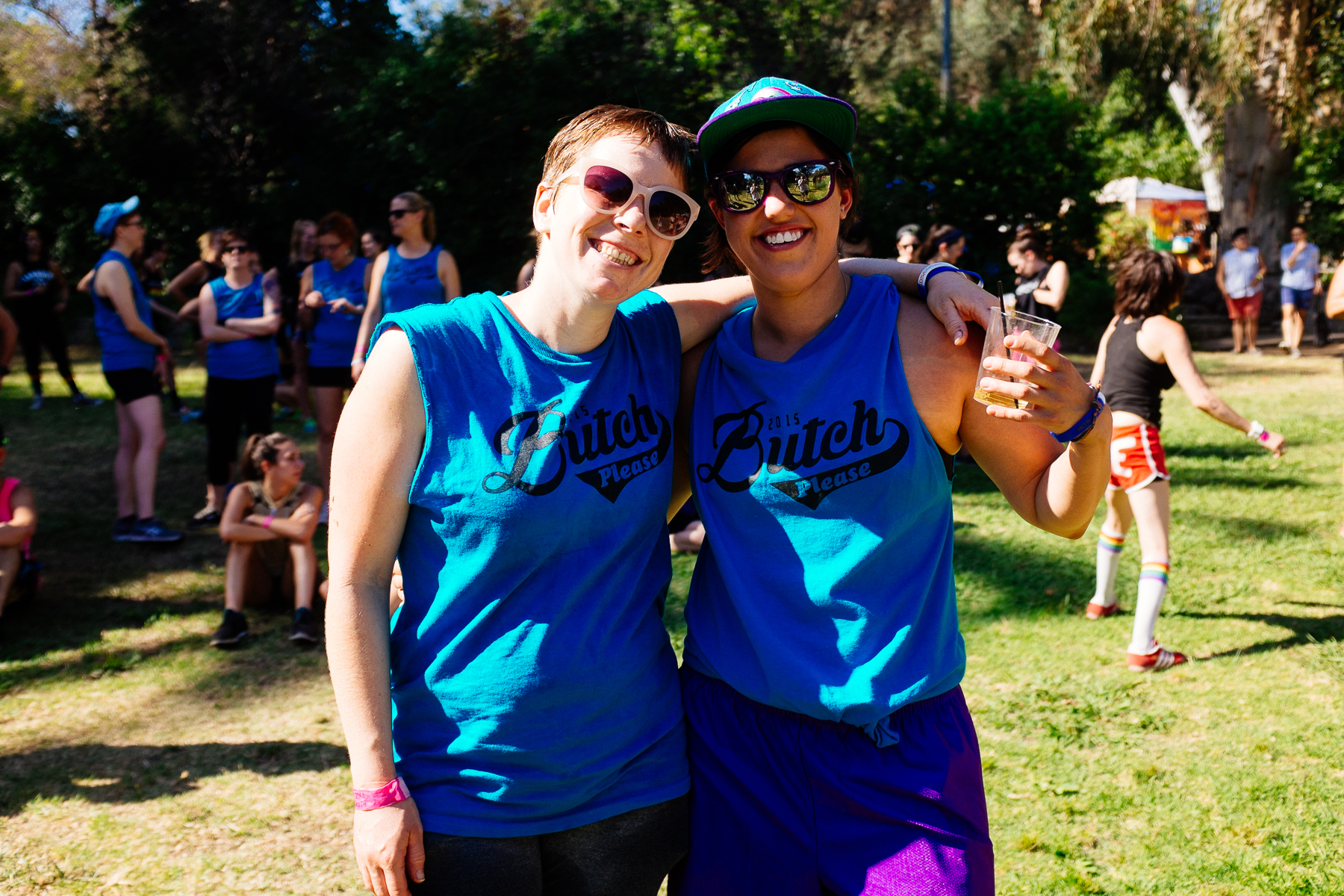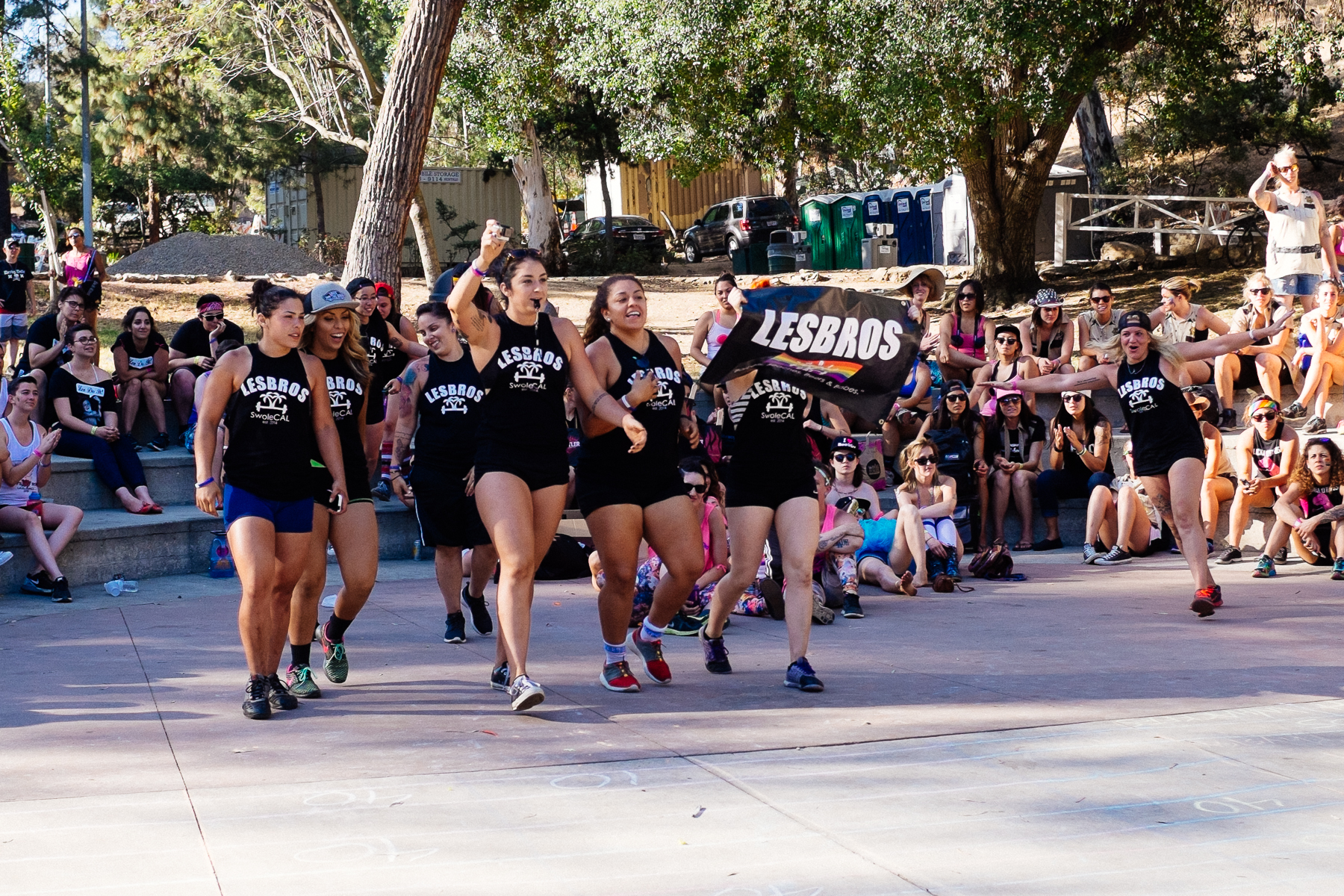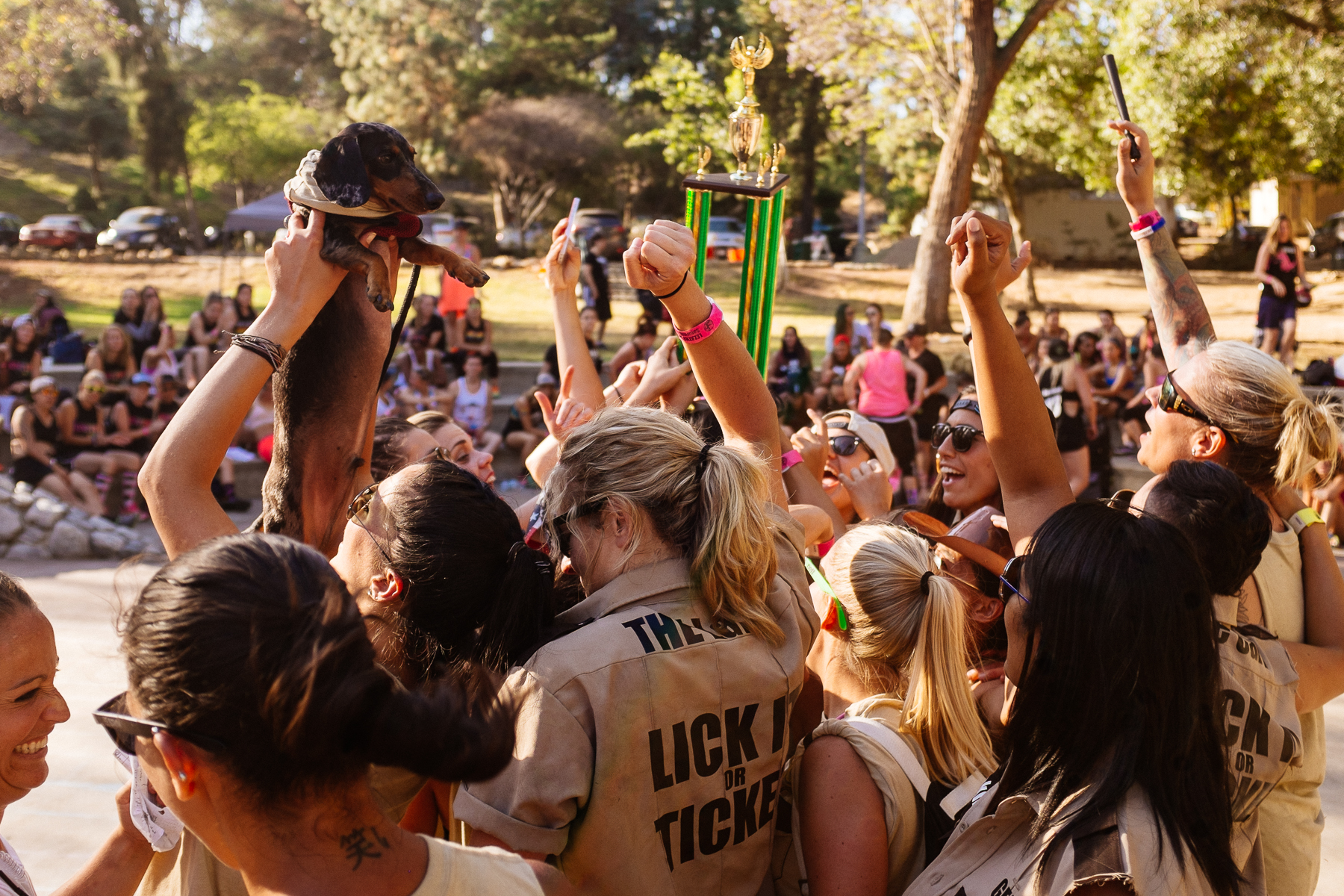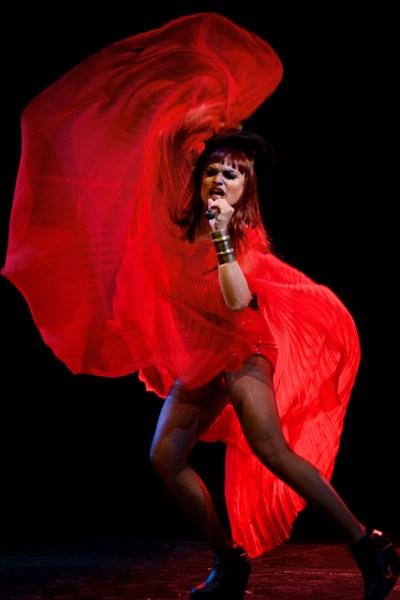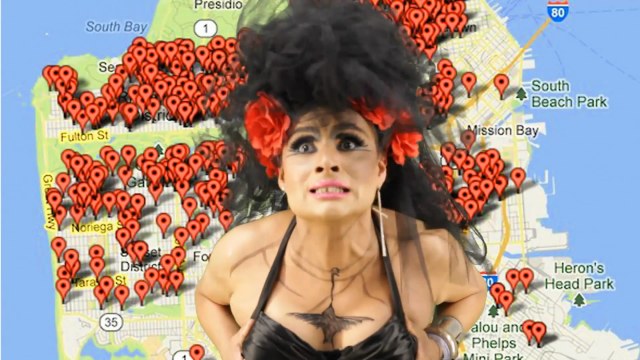The Return of Sister Spit: A Love Letter to Queer Spaces of Belonging
feature image from Nicole J. Georges Instagram
Queer art traveling show, Sister Spit, is hitting the road again for the first time since before COVID. Artists on the tour this year include Brontez Purnell, Beth Lisick, Denne Michele Norris, Lynne Breedlove, Kamala Puligandla, Nicole J. Georges, Vivek Shraya, Sini Anderson, and Michelle Tea. After COVID-related cancelations in the Pacific Northwest, the Sister Spit crew is hopeful that they’ll get to kick things off at the Berkeley Art Museum & Pacific Film Archive on August 12th.
I remember my first experience at a Sister Spit show, back in 2010, as a conduit to queer belonging. I had been living in Minneapolis for about a year, which I’ve learned after almost two decades of moving around a bit, is about how long it takes to find your footing in a place. It helped that I was there for grad school, which meant I had a built-in cohort of potential friends, but it was only months into being there that I really began to find the people who clicked, which of course meant the queer people. When I found out that Michelle Tea’s traveling show of queer art was coming to town, the event became an anchor, an excuse for the small but powerful act of hanging out together. With the invitation to congregate, a group of us — four queers who didn’t yet know each other very well — made our way to the crunchy, punky Bedlam Theater (RIP) on the West Bank of the river. I recall little pieces of the incredible performers that night – Nicole Georges clucking like a chicken stands out — but mostly I recall that feeling of relief. This was a weirdo show for my weirdo people and the performance meant I got to find so many of them, all in one place.
When Michelle Tea describes how Sister Spit began, I hear kernels of similar longings. Tea explained that the original version of the show in the 90s, emerged as a sort of counter to straight, white, dude-heavy open mic nights. “There was a lot of Bukowski love,” Tea recounts. But Tea was in circles with women and queers who were writing vulnerable work about their lives, and she wanted a space where reading those things would feel more comfortable.
That’s when she teamed up with Sini Anderson to start an all-girls open mic night, which became an instant success. Tea and Anderson hosted the event weekly for two years before taking a break. At this point, Tea explains, she started touring with a band she was in and feeling a lot of excitement on the road, but not as into the snobby punk music culture that came with it.
In Queercore: How to Punk a Revolution, Liam Warfield shares a similar reflection on the sort of searching experienced by queer punks. “The queer-punk stance was reductive rather than additive, defined largely in the negative, the stripped-away. We didn’t fit here and we didn’t fit here… freaks among freaks.”
Tea wanted to strip away the bro-ish punk vibes, but craved something to take its place .
“I felt like a writer not a musician, but I was like, ‘Do I never get to go on tour anymore? Can we bring poets on tour? The poets that I know are way more talented than my band.” And thus was born the traveling part of Sister Spit. “We would book shows as ‘slam poets’ a the gay bar that did drag shows, so they would have a little stage and, like a microphone. And then we would do it at, like, punk venues. We’re like, oh, we’re like a punk band, but there’s just no music. And we just kind of cobbled it together, and it worked!”
From that point to now was a time filled with lots of successes and mishaps, a couple of breaks, and a few reformulations. That this next round of Sister Spit will be in-person again feels important to first-time performer (and former Autostraddle Editor in Chief!) Kamala Puligandla who had two books come out during the pandemic. “I have gone to all kinds of lengths for a very long time to be in physical spaces with queer people. It’s not always easy and there’s always barriers to it, but it’s so important.”
Both Tea and Puligandla agree that Zoom and other remote events are wonderful and can be such a powerful way to be inclusive of so many more people than in-person events may get, but still they both revere the history of queers creating physical space. “I totally relate to what Kamala was saying about doing wild things to be in queer spaces with other queer people. There’s so many barriers all the time, but I just love these spaces, and I love performance spaces, I love punk spaces and, like, what it takes to make these places exist and be a physical place for us to go into.”
In Gay Bar: Why We Went Out, Jeremy Atherton Lin recalls activist Harry Britt’s assertion that, “When gays are spatially scattered, they are not gay, because they are invisible.” But queers like the original Sister Spit organizers have long been committed to gathering. It’s never been about individual visibility — it’s been about togetherness.
Christians are taught that “wherever two or more are gathered, Jesus shall be;” I think we could say something similar about queers in shared spaces. Maybe it’s still Jesus for some, but whatever transpires when our bodies are near each other, it’s electric. Holy. Our elders and ancestors have always known this — it’s why gay bar history is so salient to our roots. The dancing in them, the flirting in them, the throwing bricks outside of them when the territory was threatened. When we gather, we feel our strength. Queer art reminds us of this too.
That first Sister Spit experience in Minneapolis was a seed to something that grew into real queer family. It was and continues to be the truest sense of ‘community’ I’ve ever experienced. We would go on to be part of a group with whom I would share meals, matching tattoos, countless dance parties, and, devastatingly, a funeral. I’m not saying going to the Sister Spit show was the key to our belonging, but it was, undoubtedly, a contribution. We need places–safer and accessible ones– to be; to be together. Sister Spit is carrying on the legacy of what so many gay ancestors before implore of us: to keep going.
Catch Sister Spit on the West Coast in August (August 12 @BAMPFA; August 13 @Detroit Vessey’s in LA; August 14th @ Verbatim Books in San Diego), and the East Coast in the fall (dates coming soon, follow Michelle Tea on Instagram for the details!).
You Need Help: How Can I Learn To Enjoy Gay Clubs?
Q:
Ok, so this past week I went to a gay club in downtown Toronto for the first time (I turned 19 during the pandemic, so I haven’t been able to go out until now) and I was expecting to have a grand old time where I felt super at ease and like I was surrounded by other queer people, and instead I felt super worried that I was somehow doing it wrong or that all the women/femmes who were there weren’t queer to begin with. It felt a bit like everyone there was a gay man or a straight woman, and I feel crazy for finding that really frustrating. Even my queer friends don’t get why it bothers me so much to see straight women there. I don’t know, am I crazy? Overreacting? How can I actually enjoy myself in a gay club? Do I even have to like gay clubs?
A:
It’s August of 2015. I’m about to start my junior year of college and as far as I know I’m straight and all my friends are straight. I’m with some of these friends and some gay friends of friends. It’s late and the night is either coming to a close or just beginning. We walk by a gay club and the group splits. I want to go with the group to the gay club but I feel it’s not my place — even though some of my straight friends are tagging along. I go home, questioning my disappointment, wondering why I feel so swirly inside.
I’m not sure why you had your reaction to the gay club — but I have some ideas. Maybe you had a vision of what that night would be like and were disappointed by the reality. After all, you’d been waiting for this experience for so long. Sure, the pandemic and age restrictions, but you’ve probably been waiting even longer. Before we even know the words to describe ourselves, a lot of queer people are searching for a place where we belong. When we find that personal language, gay clubs are presented to us as one such place. They are essential to our history, centered in our media, a staple of our culture. They’re supposed to be the answer to a life of otherness. The realization that they’re just a place like any place can be disappointing.
It’s February of 2018. I’m almost a year into my transition and my girlfriend and I have successfully changed our relationship from heterosexual to super gay. We even have gay friends. Or, rather, are trying to. Those almost friends invite us out and we say yes with the platonic version of first date jitters. They take us to a queer dance party and suddenly I have something new to be nervous about. All I want is to be in places like this, but what if I seem out of place? What if these new friends notice I don’t belong? I get misgendered at the door and the night seems doomed. Until we start dancing. Not everyone that night saw me, but my girlfriend did, these new friends did. We danced together in the comfort and discomfort of the queer people around us.
I don’t know how you identify or how you present or how long you’ve been out. Maybe you would’ve been at gay clubs a decade ago if it was allowed. But maybe you’re newer like we’ve all been new. And when we’re new, we feel the need to prove ourselves. If attendance at the gay club doesn’t confirm our gayness then how can we prove that we belong? For some, straight women at the club might make them fear that they’re being grouped in with the straights. For others, like me, the assumption that I was a gay man filled me with a different kind of invalidation. Maybe your frustration with the space is because you’re not yet settled in yourself. The more comfortable you feel with your own identity, the less importance those around you will hold. The straight people and Gay Men™ won’t matter. The space is queer, because you are queer.
It’s March of 2019. I’ve been out of the closet for two years and danced at a few gay clubs. But for the first time, I’m at one alone. I’ve been single for a month, I’m in a new city, and I’m ready to enter this space without the training wheels of my ex. I realize that I don’t know where to go. Los Angeles doesn’t have any lesbian bars so I settle for the place I know — I settle for The Abbey. I get there and feel engulfed with cis male gayness and heterosexual tourists. An older man hits on me, mistaking me for a twink. I wander around, feeling totally alone, until I spot a woman with an undercut. She’s alone and I’m tipsy so I go up to her. “Sorry to bother you, but I’m new to this city. Where do queer women go??” She laughs. “Here, I guess,” she says. We start chatting. We dance.
Of course, being settled in ourselves doesn’t mean that we don’t still want community. Maybe your frustrations have nothing to do with your sense of self and everything to do with a gay world still steeped in all the things the straight world has — including heteronormativity. It’s frustrating that so many gay spaces cater exclusively to cis men. It’s frustrating that straight people often come to our spaces without respecting them. (Although it would be remiss of me not to mention that some people you think are straight might not be. When I’m in a queer space, I assume groups of straight girls are just annoying queer femmes with bad style, every straight couple is just T4T without a height difference — it’s up to them to tell me otherwise.) There should be a wider variety of queer nightlife and it’s important to support local queer-run parties and the lesbian bars that do exist. But it’s also worth finding that one girl with an undercut in the sea of disappointment. If we can find each other in a straight world, we can find each other in a disappointing gay one. Absolutely seek out queer spaces that are more for you and us — but also embrace the individuals within the spaces you already have.
It’s June of 2021. I haven’t been to a bar or a club in a year and a half. I’m in Cincinnati working on a movie and everyone is acting like the pandemic is over. Vaccine cards are being checked at the door and the variants have yet to arrive. I go with some coworkers to a bar called The Birdcage and feel immediately at home. The place is filled with genders. There are probably straight people there but it doesn’t matter — the space is ours. I dance, I drink, I meet people. I feel awkward, then confident, then awkward, then confident. I meet more people. I think back to 2015, a time when I would have described myself as an introvert, a person who never went to any kind of club. I think back to 2018, when I felt the rush of belonging and the fear of discovery all at once. I think back to early 2019, when the spaces that should be ours often disappointed — how those disappointments still held treasure. And I think about that year, that one beautiful year, where I was out in the world as myself when there was still a world to be out in. I think about how important gay clubs were to me, all the vague memories I made. I think about the people I connected with — and the people I didn’t. I think about our different sweaty bodies pulsing to the same beat. I’m so glad to have it back. I don’t know that it’ll be gone again soon.
You don’t have to like gay clubs. Plenty of queer people don’t. Maybe you’ll find your queer space somewhere else. But I wouldn’t give up yet. I know what gay clubs mean to me and I’m certain — if you want them to — they can mean the same to you. There will be times you feel out of place and there will be straight people. But there will also be moments of bliss. Try to let go of the need for perfection on the space and on yourself. Instead let that bliss find you whenever it’s meant to find you.
One last story. It’s November of 2021. I’m in Toronto visiting my girlfriend. Our friend is DJing at a gay bookstore to celebrate the release of their EP. It’s not a big space and there aren’t a lot of people, but it’s crowded for Covid times. We’re all wearing masks. I’m still dealing with some eye problems and can’t wear contacts so I have my glasses on and they keep fogging up. Finally, I give up. I take them off and tuck them in my pocket. Everything is blurry. My world is a haze of lights, shapes, and queers. It’s not perfect, but we’re together. We do what we can. And we dance.
You can chime in with your advice in the comments and submit your own questions any time.
Meet The Owners of Herz, a Lesbian-Owned Bar in Alabama
There are currently twenty-one lesbian-owned bars in the United States in 2021, down from nearly 200 that existed in the late 80s. A decline of this stature was unsettling and dumbfounding. Had we digressed in some capacity? Was this some conservative-won plight to eliminate our spaces?
When I first learned this fact from my friend Byrdie O’Connor, the producer of the Lesbian Bar Project, there was an unspoken, I know. Can you believe it? between us. I immediately assumed that the majority of the remaining lesbian-owned bars were in New York, San Francisco, and Los Angeles, minus A League of Her Own in Washington D.C.. But Brydie shook her head. Only three in New York (Henrietta Hudson, Cubbyhole and Ginger’s), one in San Francisco (Wildside West), none in Los Angeles.
Where are the rest? They’re splattered all over the country, from the Midwest to the South, including a bar called Herz in Mobile, Alabama.
Hearing about Herz sparked a specific curiosity in me. I wanted to know what was keeping it alive, so I got in touch with the women behind the Lesbian Bar Project, and with the owners of Herz.
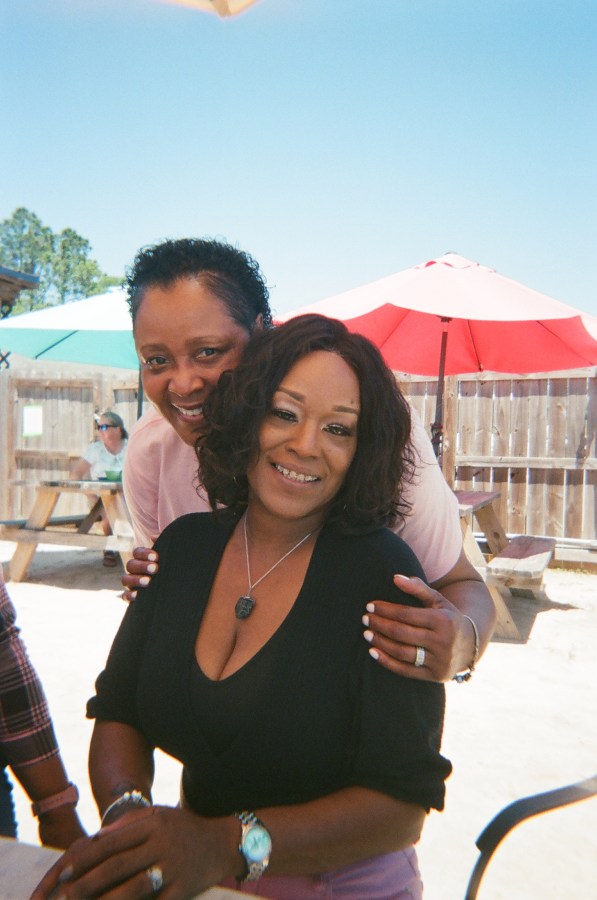
photo by Brydie O’Connor
“It’s a multi-faceted issue, of course. But one of the main reasons has to be gentrification. I think it’s less of an issue in the Midwest and parts of the South,” said Erica Rose, one of the Lesbian Bar Project’s directors. “Gentrification wipes out marginalized communities. There’s a major wealth gap, and a lot [of LBTQ business owners] just can’t keep up with the rising rent in gentrified cities.” A pay gap still exists between women and men, a fact that increases for LGBTQ+ individuals. Thus, our opportunities to open and maintain businesses are not always plentiful, gentrification aside. LGBTQ+ clientele bases are also smaller than their cis-heterosexual counterparts, making it that much more difficult to make ends meet depending on the queer population size. Rising rents, both residential and retail, often end with the ostracization and removal of marginalized housing opportunities and businesses. While New York City houses one of the largest populations of LGBTQ+ people in the United States, it’s also one of the most gentrified cities in the country. It makes sense that only three of the estimated 25,000 bar and nightlife establishments in New York City are lesbian-owned and centered. New York City follows San Francisco and precedes Los Angeles on the list of most gentrified cities, two of the other most LGBTQ+ inhabited cities in the U.S.; the former houses one lesbian-owned bar, and the latter has none. When marginalized communities are pushed out of cities, or forced into financial struggle to remain there, their businesses suffer or cease to exist. The communities they serve also suffer.
The owners of Herz, Rachel and Sheila Smallman, are originally from Mississippi but traveled around different cities in the South to find the perfect location to open a lesbian bar. “We were thrown out of a gay bar in New Orleans,” Rachel Smallman said. “For being women. We were shocked and hurt, but it also helped solidify what we already knew, that we had to open a bar ourselves.”

contributed by Lesbian Bar Project
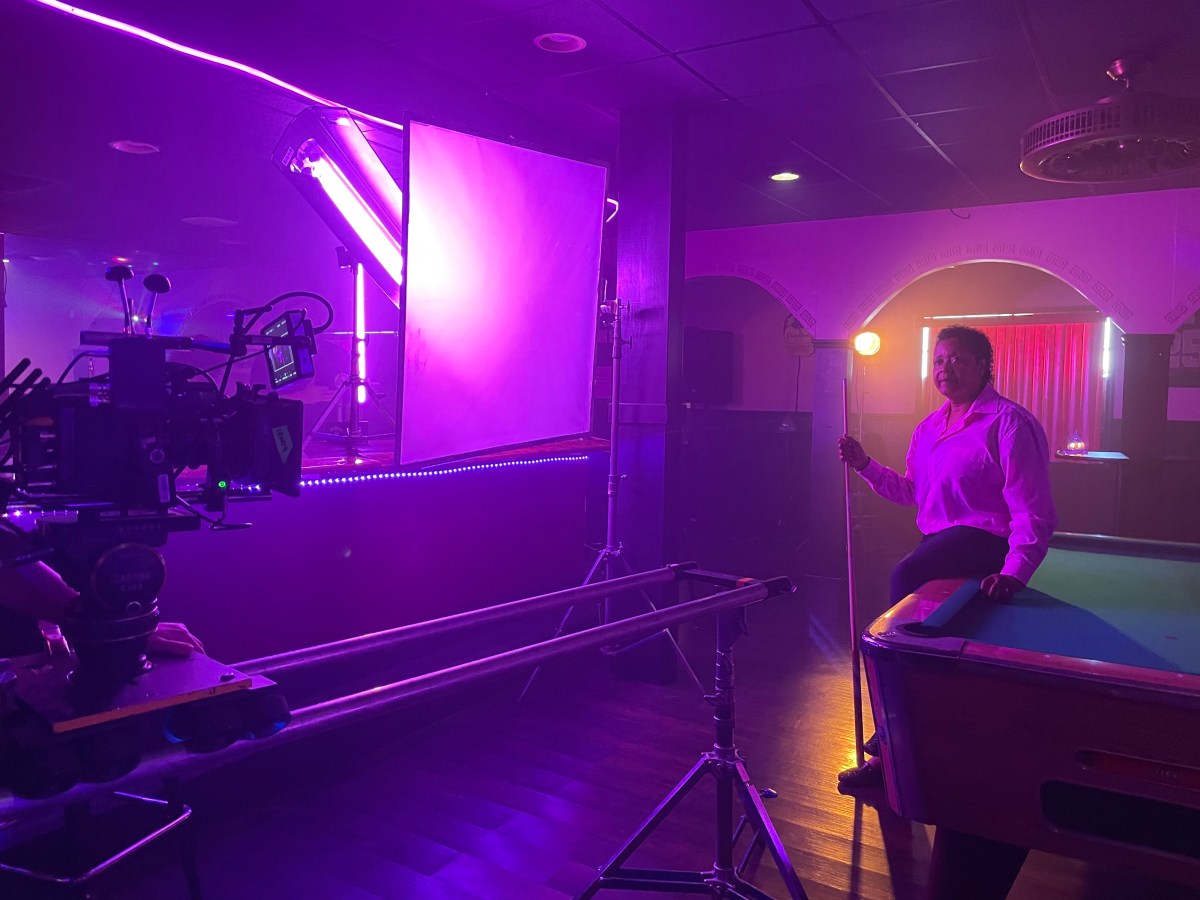
contributed by Lesbian Bar Project
Established in 2019, Herz’s building once held a straight dive bar. Between a perfectly vacant building, a dream and a loan, the Smallmans opened Herz, the only inclusive, lesbian-centered and owned bar in the state. Because it’s still in its infancy, it’s hard to determine how the bar will fare against gentrification, especially as it’s located in the 80%-white neighborhood of Skyland Park. However, gentrification remains an issue in cities most prone to significant population, job, and economic growth. Mobile’s population has been on a steady decline the last few decades, and its median income is around $25,000.
But a lack of full-gentrification aside, Mobile still struck me as a particularly unusual city to house one of the last lesbian-owned bars. Alabama has been coined one of the worst states for LGBTQ+ people due to its discriminatory laws and practices. Its recent anti-trans bills are nothing short of targeted and violent, and the state has been cited for numerous LGBTQ+ marriage license denials. “[Herz is] dedicated to inclusivity,” Rachel said. “It’s something that deeply matters to us. These trans children, so many of them are homeless, so many of them don’t have safety. We want to provide that space.”
Herz is not just providing a safe space for patrons; it’s actively seeking to uplift and further the voices and missions of LGBTQ+ activists, so that conditions for LGBTQ+ Alabamians improve. Kimberly McKeand is an out LGBTQ+ woman running for City Council in District 2 of Mobile. Signs toting her campaign slogan, Out for McKeand, were all over Herz earlier this year when the bar hosted a political event for her.
“It’s different, the thought process of people around here,” said Rachel Smallman. “I’m from Mississippi, but it’s different in Alabama. They thought [Herz] was a strip club, and then they found out it was a lesbian bar owned by two Black women. They weren’t ready for us.”
The difficulty inherent in two Black lesbians owning a business for LGBTQ+ people certainly played a role in Rachel and Sheila being the first to make such a move in Alabama. Though, with 21 known lesbian-owned bars left in the United States, the reasons why there aren’t more of these spaces are clearly evident beyond Alabama’s borders.
“I think, as women, we’ve been told for so long what we are and are not capable of, and what we can and cannot accomplish,” Rachel said. “It’s harder to take chances, but once you do, you realize what’s possible.”
There’s an estimated 400 to 1,000 bars in the United States that cater to gay men; three of them are in Mobile, Alabama. The overall economic achievement of cis gay men, a product of a patriarchal system even when considering sexuality-based societal oppression, has allowed them to own and operate businesses at a higher rate. And even as gender roles are challenged and dismantled, women’s same-sex partnerships are more than twice as likely to involve raising children, a fact that could certainly affect not only bar ownership, but patronage. Regardless of marriage, parenting, or access to funds, however, women have been taught for millennia that their goals, aspirations, and dreams should be small, reasonable, family-based or minimal; LBTQ women and nonbinary individuals often have these same roles forced upon them, amidst trying to battle cis-heteronormativity. Dismantling these notions can be a constant struggle, one that would impede not only odds, but desires, to open up a bar catering to the LGBTQ+ community.
“With the passing of gay marriage and more widespread tolerance – I won’t say acceptance – we’ve had some general assimilation,” Rose said. “And it’s great that the assimilation has provided us with safety, but along with it, we erase what makes queer spaces so comfortable and safe. Straight bars are still not catered specifically to [our community]. If we lose our bars, heteronormative culture prevails.” Rose’s comments touch on something integral to the conversation: Our elders tirelessly fought for our ability to move around the world with a sense of safety. Within that, though, the necessity for queer-centered spaces has diminished. That is not to say the desire has diminished, though. “Before we opened Herz, I had never been to a lesbian-centered bar,” Rachel said. “It’s so different, and we need more spaces like it. We deserve to have a place where we’re at the forefront.”
While I understood a bit more about why Herz was opened, I still wanted to know: what’s keeping Herz open?
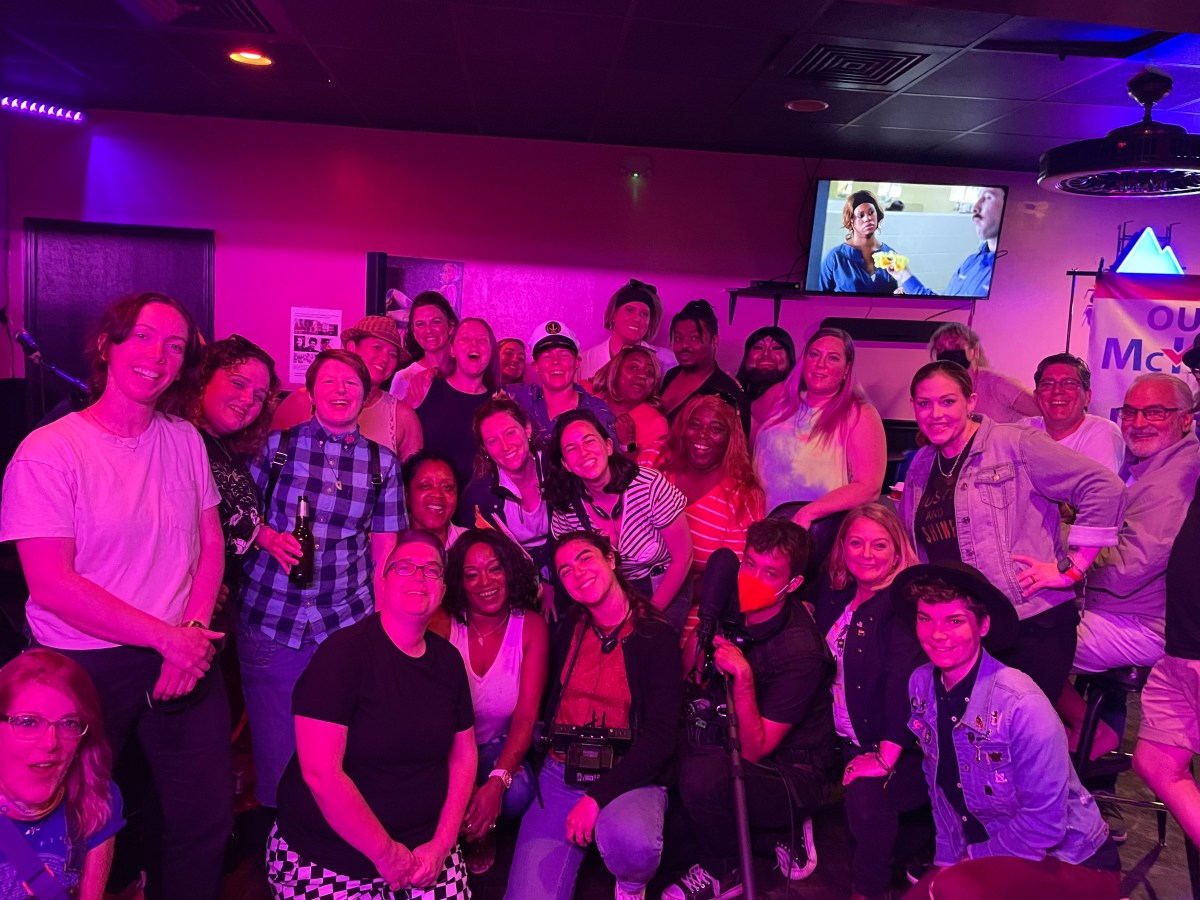
contributed by Lesbian Bar Project
“Community,” Rachel said. Even though the Smallmans were certain about the necessity and their desire in opening an inclusive, lesbian bar, they were still pleasantly surprised by their growing number of customers. “We had no idea how needed it was until we did it,” Rachel said. Herz quickly became the spot to go, a place holding an energy of acceptance, celebration, and joy that’s almost palpable. Starting at 4pm, Herz’s patrons nearly float through the door for after-work drinks, dates, birthday parties, celebrations, and political speeches.
The LGBTQ+ community has a distinct way of showing up. We’ve been deprived of safety, so we provide it. We’ve been denied space, so we create it. We’ve been cast out, so we open our arms. Quickly, a bar can provide the familial love some of us need and all of us deserve.
“Herz is made special by the people who come here. A lot of us don’t have family,” Rachel said. “But when you’re here, you’re family. We make certain of it. We’re built on it.”
The Drag Kings of Taipei
We pile on to the metro in one laughing mass, our faces covered in glitter and painted beards. It’s evening in Taipei, and the air conditioning of the train is a sweet relief from the city’s tropical heat. Everyone takes the metro here. We’re sharing space with young professionals taking advantage of the holiday weekend, uncles and aunties ending their night just as we’re beginning ours. My group of drag kings stands out. An ugly thought comes: I’m so glad there are white people here.
If you’re visibly Western in Taiwan, you get to defy norms. You’re considered ‘weird’ already — it’s a judgment, but also a shield. Glancing around me, I speak louder and in English, hoping everyone hears the flat nasal drone of my American accent. For what might be the first time in my life, I want people to think I’m not from here.
Most of the time, I try to blend in. My accent’s not entirely local, my Chinese sometimes stuttering, but my face does all the work for me when I’m trying to pass as Taiwanese. If I follow the rules (no tank tops but short skirts are okay; start your sentences with a 不好意思, excuse me, if you’re interrupting someone), then I don’t have to stand out anymore. It feels strange to be so unmarked, to see people recognizing me as girl without the immediate prefix of Asian.
In drag, I’m not invisible. I know that fitting in is a privilege. Every day people so much braver than I am face more than the judgment of the metro, but my mind is still stuck on imagining what the people watching us must think. I watch my drag parent, Skye, confident and flamboyant in their sequins and goatee, and try to follow their example.
Skye (Sawyer Darling in drag) is white, Canadian and a mainstay of Taipei’s drag scene. I only tried drag in the first place because they invited a group of potential drag kings from Facebook into their home, taught us how to coif and contour, helped paint a beard onto my face. Once I asked them how it felt to do drag in Taiwan as a white foreigner, wondering if their experiences were anything like my own.
“So many of the most popular performers in Taipei for years have been foreigners, so I felt very welcome,” they said, “But it always made me feel uncomfortable that there was so little Taiwanese representation.”
Uncomfortable is the right word for it. I’m both awkward in my halting Chinese and guilty whenever I escape to the majority-white spaces where people default to English. On the one hand, Westerners in Taiwan are expats, immigrants who move through Asia with an ease and privilege that my parents never had in the US. On the other, they’re often considered perpetual foreigners, unable to become fully Taiwanese without renouncing their original citizenship. Skye’s lived in Taipei for nine years, far longer than my two, but because my mother’s from here, they have a permanent resident card while I have a passport.
My claim to being Taiwanese feels precarious. I’m hyper-sensitive about not fitting in. All I have is my family and my face, enough to look right but never enough to belong.
Skye suggests a selfie, and we pose together, scowling for the camera. “He’s not alone!” they write in the caption. We’re not like everyone else on the metro, nothing like the idea of Taiwanese-ness I judge myself for not conforming to, but we’re like each other. That’s enough.
My drag persona is Mandrew D. Johnson III, a hipster with man-bun and a lumberjacky shirt I borrowed from a butcher friend. I sit with my legs apart, find walls and furniture to lean against. Mandrew has his own personality: the kind of douchebag at a party who won’t stop talking about political issues he’s only vaguely informed about and doesn’t get embarrassed when he talks about his writing.
He has the kind of full beard that I could never actually grow, a lush abundance of facial hair uncommon among most East Asians. I’ve named him Johnson and not Zhang, given him a library-book copy of Infinite Jest for a prop. Mandrew, like all my pop-cultural models of masculinity, is American.
All my idols are Western and so many of them are white. The people I imitated in adolescence when I was trying to figure out who to be were the quippy white kids on TV, pop-punk singers, and sci-fi novelists with European last names. Even though media in the 2000s tried to be diverse — the white characters always got the best lines.
I moved to California from Shanghai at fourteen and threw myself into learning how to be an American. It’s a little like doing drag. I lower my voice as Mandrew to sound more masculine, and in the US I make my voice louder or else I won’t be heard. The way I sit changes. My gestures, my humor, the inflection of my voice are all calibrated for a particular audience. Seven years later, when I moved back to Asia, I had to relearn the whole act in reverse, shedding my American skin.
I copy my family to teach myself to be Taiwanese, but I have no gay family. I’m disconnected from the queer history of a culture I no longer have the right as my own. I don’t know who to imitate to learn how to be queer and Taiwanese.
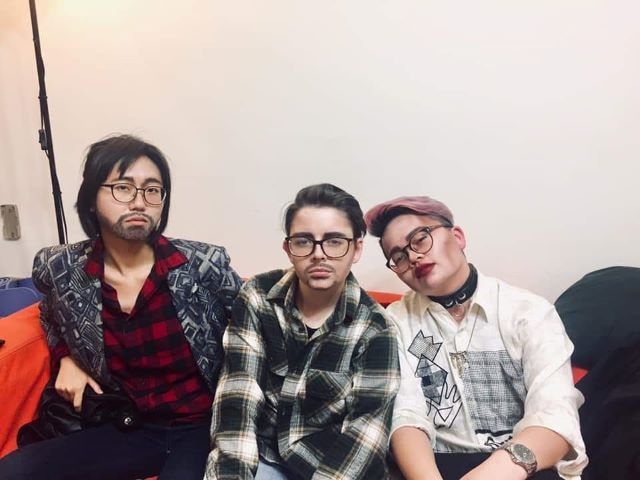
Left to right: the author as Mandrew D. Johnson, Roman Coke and Man Baobao posing in drag.
Taipei held its first drag ball in June, the organizers taking cues from American ballroom culture to build a runway of their own. They had big plans: a much larger venue than before, a lip synch battle, and more drag kings than I’d ever seen on stage in Taiwan. Skye pasted googly eyes as an extension of their eyeshadow, their face painted in an otherworldly design. For years, they’d been one of the only drag kings in Taipei, and they were excited to finally see more.
“There are very few drag kings in Taipei by comparison to queens. ‘Folks didn’t know there was a place for them,'” according to Skye. “Another aspect is that often AFAB (assigned female at birth) people are taught to be quiet rather than to stand up and be loud. Drag is a place to be loud, so it takes a special kind of courage to take chances and get out there.”
It was a courage I didn’t yet have, but one I was grateful to witness. There was something different about that night, a magic that let people express themselves in ways I’d never seen in Taipei before. The queer scene in Taipei can sometimes be binary. Our only lesbian club, Taboo, has a historic policy of charging men more than women that they’ve adapted awkwardly to a more inclusive understanding of gender. There’s often a separation between queer female and queer male spaces.
At the drag ball, there were kings and quings dressed both dapper and bizarre, as pop-punk idols and otherworldly beasts. There was Luca Distraction in blue lipstick and an orange goatee; Top Poki baring the word TOP written in duct tape on cleavage; Roman Coke with a green goatee to match his hair. Dan Dan Demolition took the stage lip-synching to heavy metal, face painted completely blue.
“[My drag name] is my Chinese nickname plus demolition, because I’m destroying gender norms and expectations,” Dan Dan told me, “I was a Miss Taiwanese American and the whole time we were learning pageant makeup (which is quite heavy) it just felt so much like drag to me, especially since, as a non-binary person, the entire process of pageant was a very performative thing.”
“My drag is an entertaining and creative exaggeration of my non-binary identity. Sometimes I’m being self-expressive, sometimes it’s satirical, sometimes I just want to create something beautiful.”
For so many of the kings there, drag meant freedom. Drag let Sawyer Darling explore femininity and Roman Coke explore masculinity. People played with culture like they played with gender, with names that worked as bilingual puns (shout out to Man Baobao) and costumes that were cheeky takes on traditional hanfu.
I was part of the crowd, cheering myself hoarse for everyone who walked the runway. I saw performers without the separation between Asian and Western, lesbian and gay that I’d gotten used to in Taipei. With each introduction, the emcee said every sentence twice, in English and in Chinese, calling on the crowd to vote in gesture and noise, a wordless language all of our own.

Top Poki performing.
I left Taiwan this June. The person I was in Taipei is an ocean away, and I’m still trying to discover the version of myself that being back in America will make me become. I still see the drag kings in Taipei through updates on social media, watching them grow and flourish. They rented out a boat for a show last month. I gazed at the shaky smartphone videos of their performance, interrupted often by whoops of sheer joy.
Like many other diaspora kids, I grew up wondering about parallel realities. What would I have been like if my parents had never came to America? Would I like the same things that I like now, have the same fears, the same dreams? Would I have ever come out? Now I have another parallel universe to think about, the one where I stayed in Taipei. Every time I paint that beard back on my face, stepping back into Mandrew’s shoes, I’ll feel an echo of that familiar tropical heat.
Donning drag is a transformation. You’re turning into someone different than the person you are in your everyday life, revealing a part of yourself that you’re normally not allowed to access. Drag shows us that identity doesn’t need to be serious or enduring to be true. I became Mandrew just like I became Taiwanese, and even before that American. I can be Alison or 瑩珊 or Mandrew, or all my names, or none at all, or make up a new one of my own.
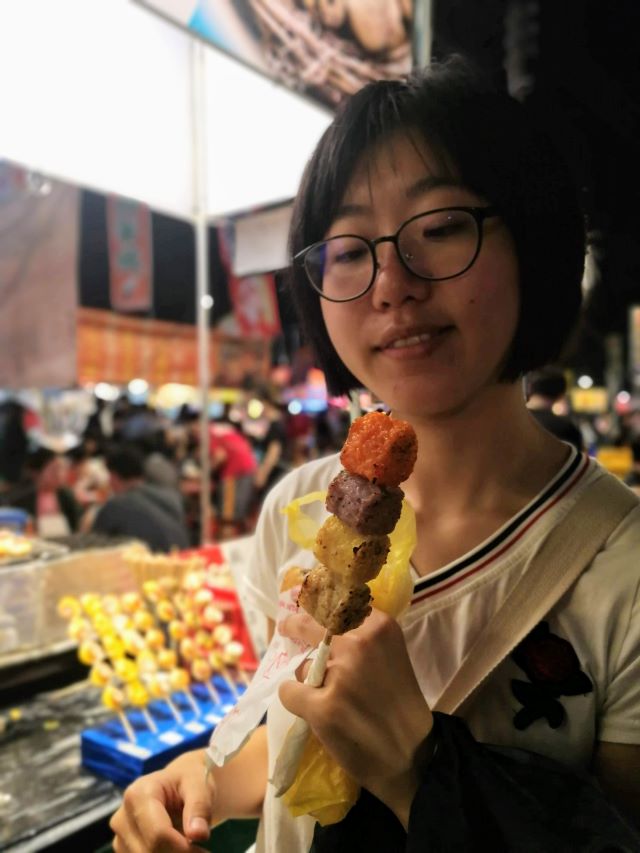
More About Drag in Taipei
Kings to Follow:
Sawyer Darling (referred to as Skye in this article), an earnest king with soulful eyes and a love of gallantry, passion, and — most importantly — rhinestones!
Top Poki, a Korean Rice King and the runner up in BLUSH’s Taipei Is Burning lipsynch drag battle.
Dan Dan Demolition, smashing the patriarchy since 1989.
Roman Coke, a good old fashioned lover boy originally from Ireland.
Luca Distraction, a theatrical fuckboi with a heart of gold.
Man Baobao 饅寶包, a Tâi-oân drag king who makes it steamy on stage.
Dr. Wang Newton, the original Taiwanese-American drag king and a source of advice and inspiration to kings in Taipei.
Where to See the Kings:
BLUSH Taipei, a monthly queer party at B1.
Spectrum Formosus, a music/art/queer festival coming November 2019.
Parade after Parade, LEZS magazine‘s Pride afterparty on October 26, 2019.
About Drag in Taipei:
Hsinyi Wang’s Drag Queen/King Project is a photograph series focused on Taipei’s drag performers.
Banana Magazine featured Taipei’s drag queens in their fifth issue.
PHOTOESSAY: Women Run the Show at Yola Día 2019
all photography by Molly Adams
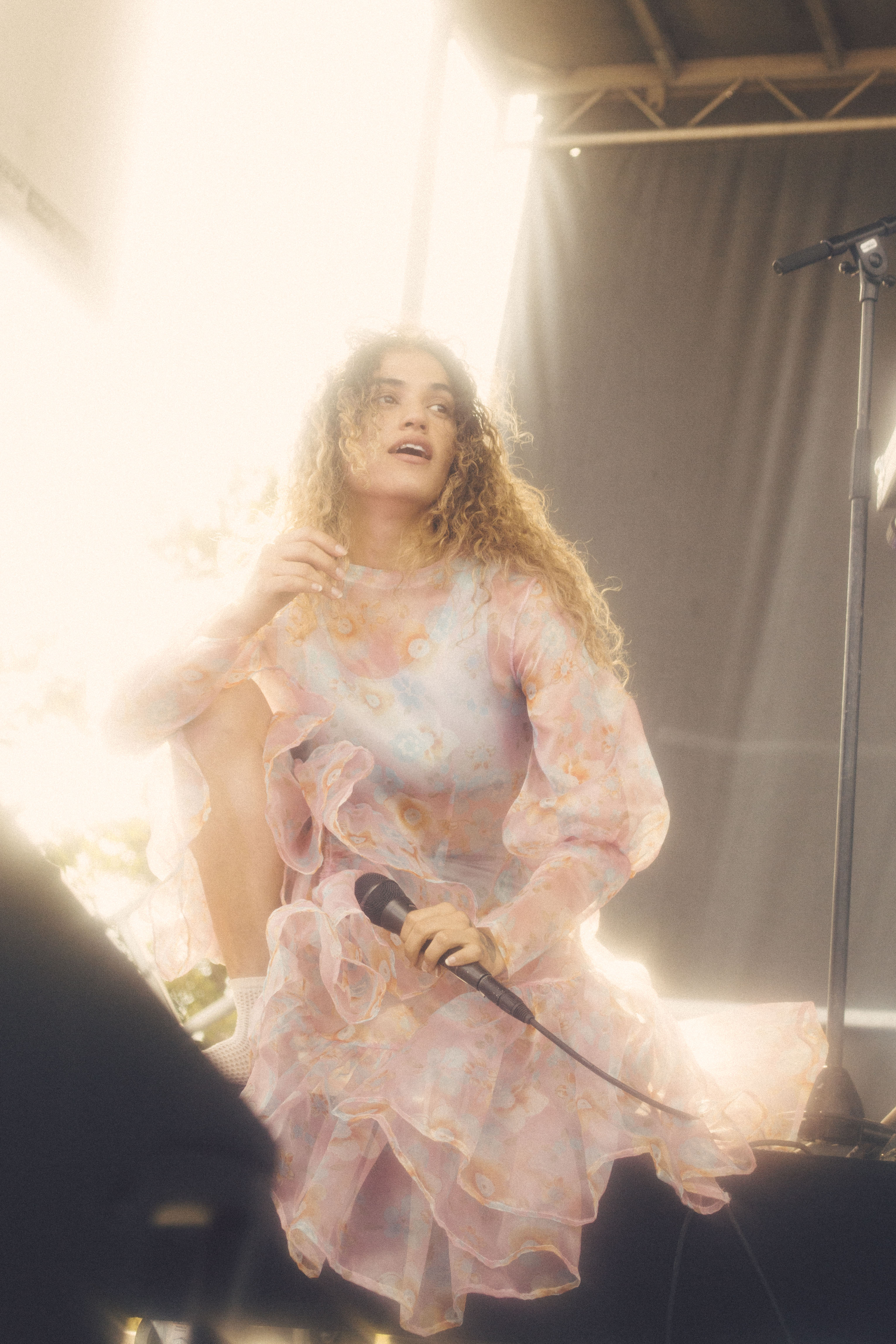
Empress Of
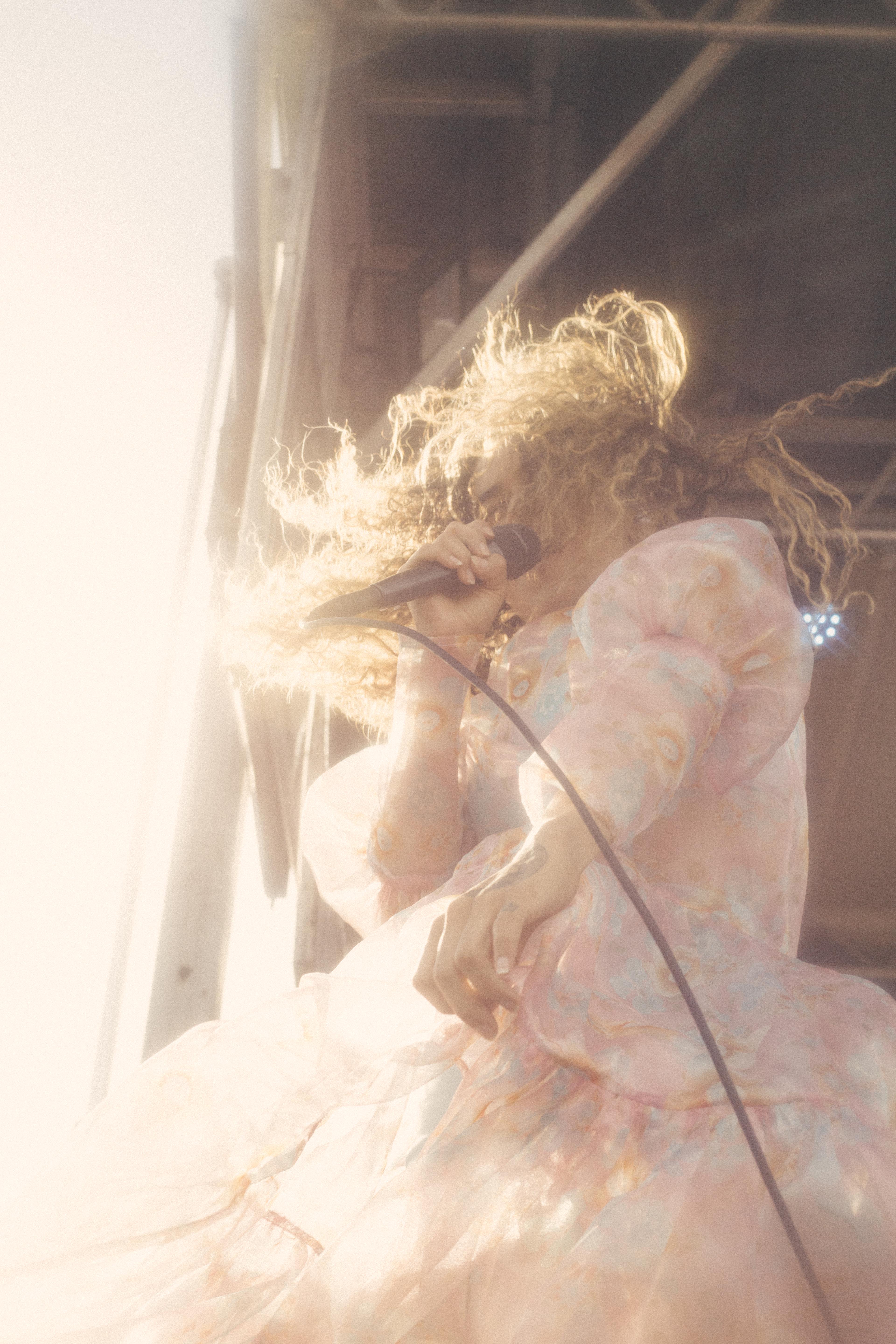
Empress Of
Last week I had the pleasure of attending the first – of what I anticipate will be many – Yola Día music festival in downtown Los Angeles. I’d been hearing excitement about the festival from the moment it was announced, so by the time I was asked to go I couldn’t say yes fast enough and I’m so glad I did. It was the perfect way to spend a summer day in LA.
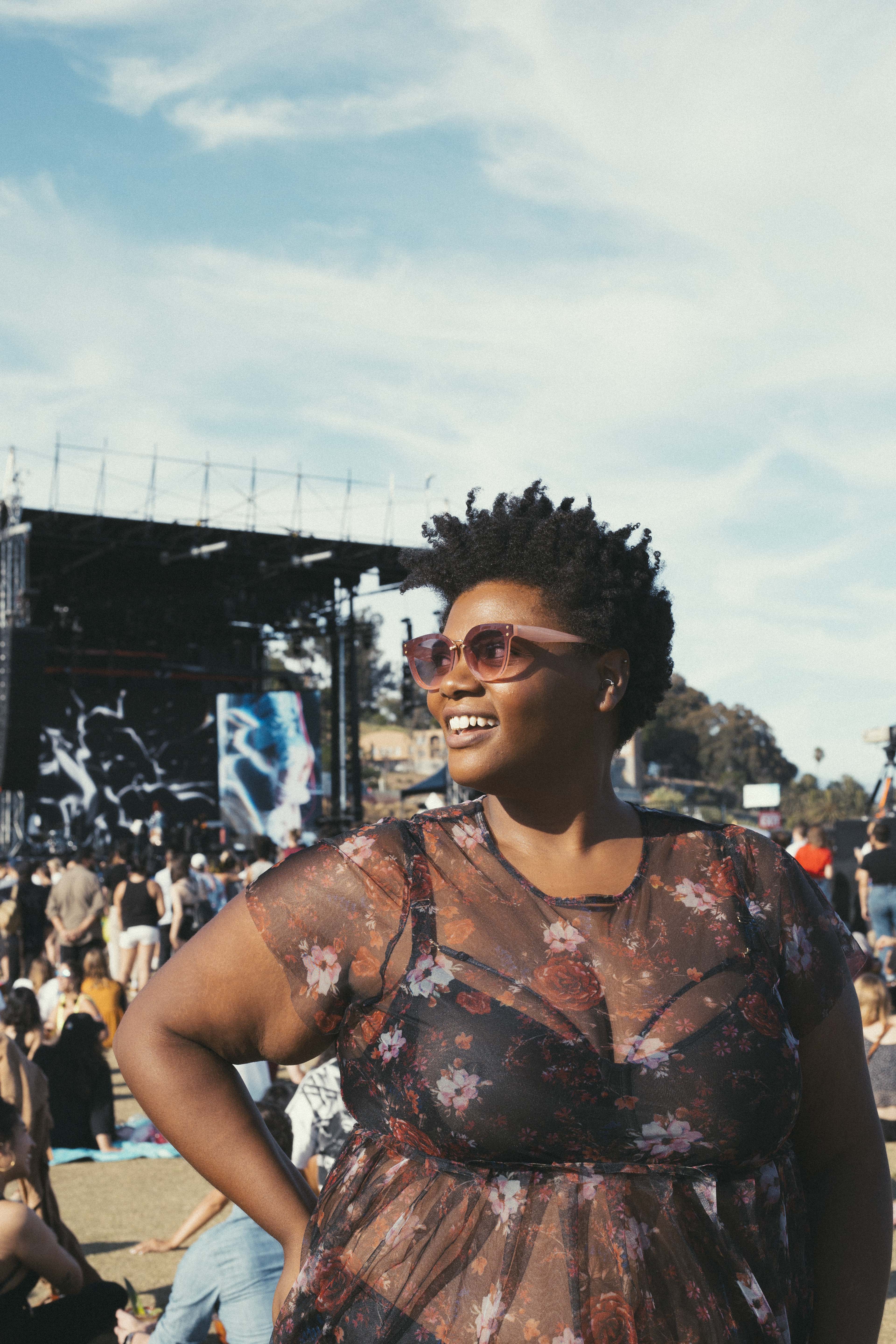
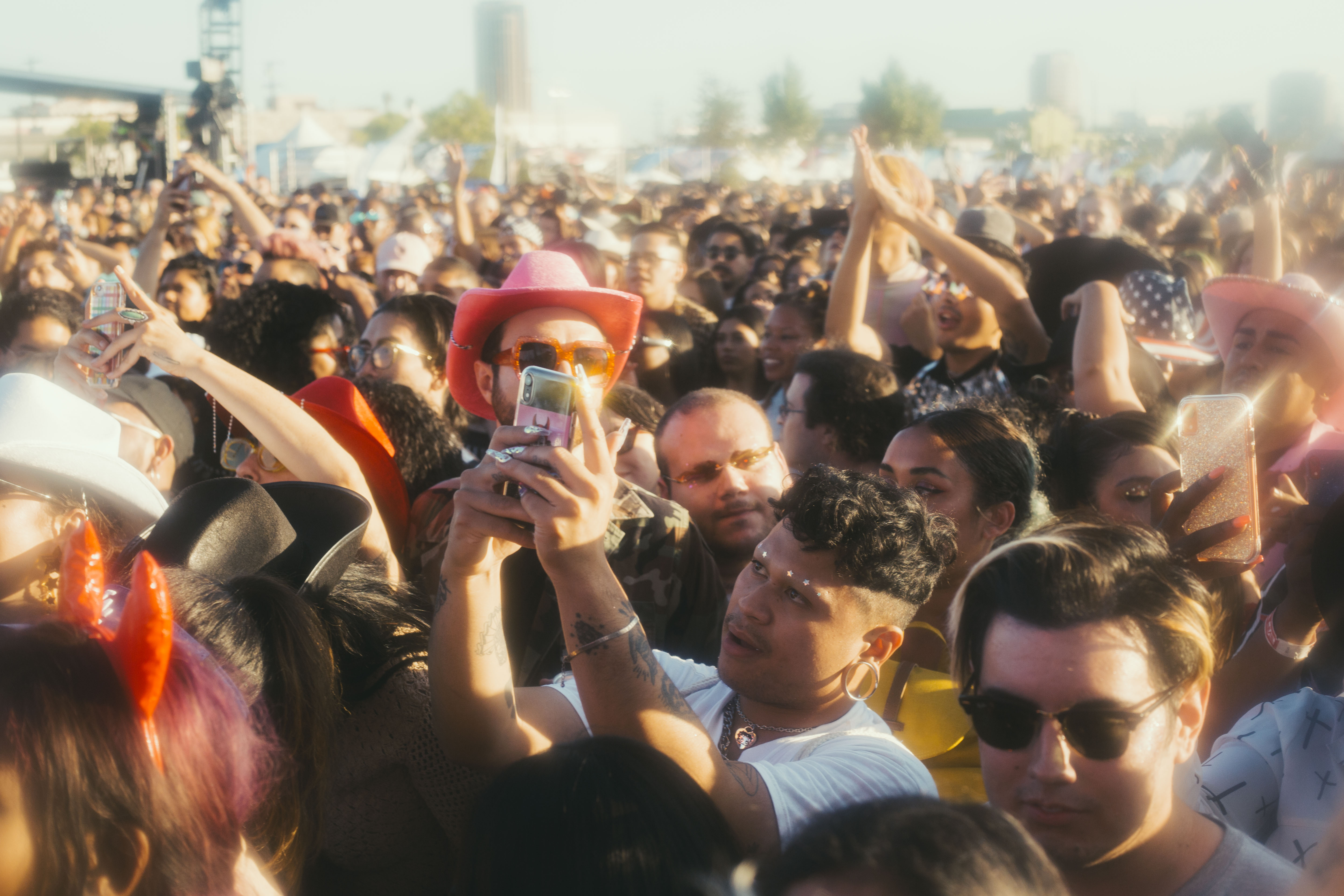
Yola Día, originally called Yola Fest, was created by Lykke Li and presented by Yola Mezcal: a woman-owned, run, and made Oaxacan Mezcal distillery that she co-founded. It featured a lineup of exclusively badass women performers, and was by far the most social-justice-oriented festival I’ve ever attended thanks to their collaboration with Plus1, an initiative that uses concert culture to spark social change. Thanks to Plus1 not only could festival attendees enjoy the incredible musicians, libations, and food at Yola Día knowing that a dollar from each ticket went to the Downtown Women’s Center , we could also register to vote with Headcount, purchase posters signed by the artists to benefit Al Otro Lado, and enjoy a gorgeous Mexican-womxn-created art installation that benefitted the ACLU. In other words, this festival did a whole lot of good.
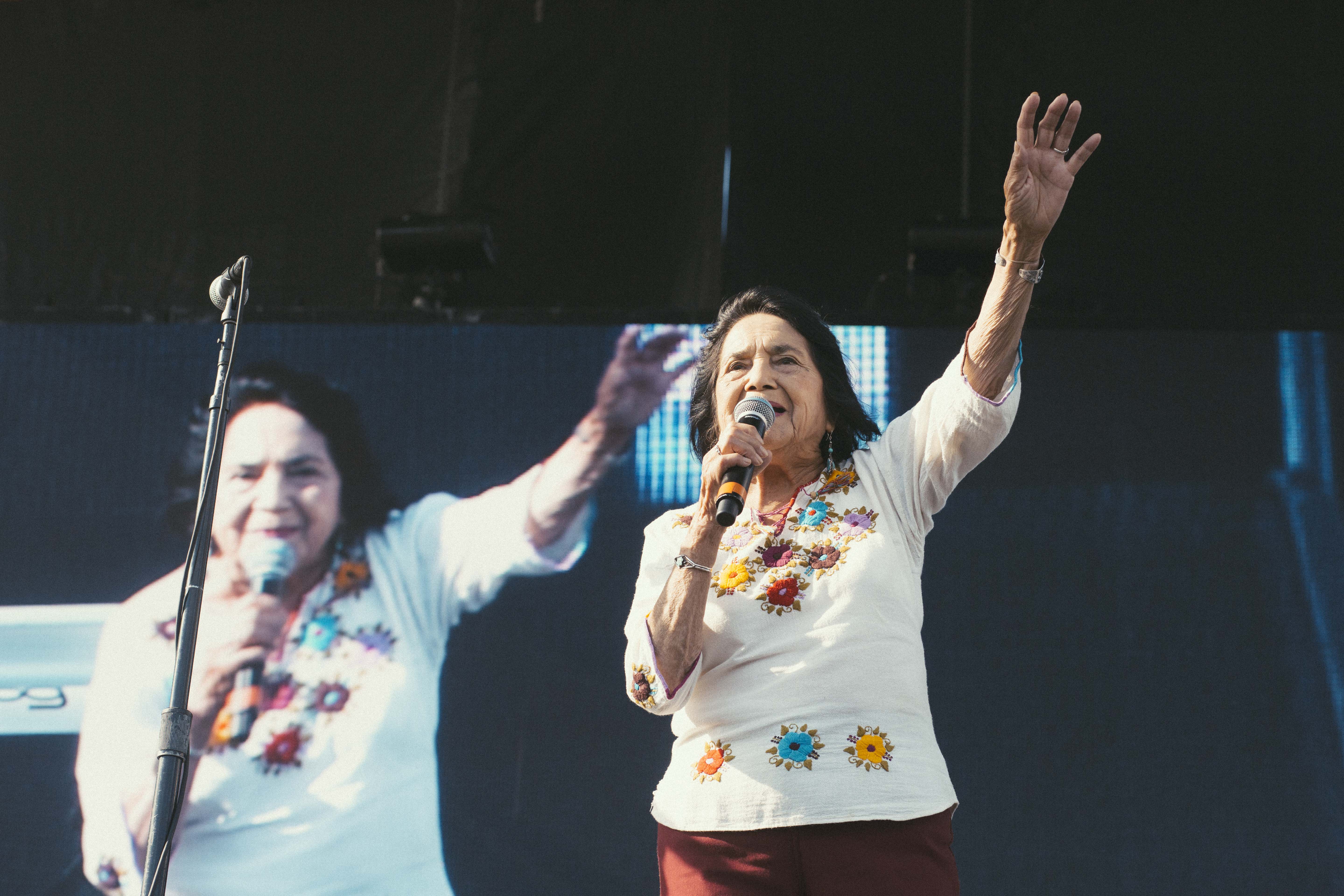

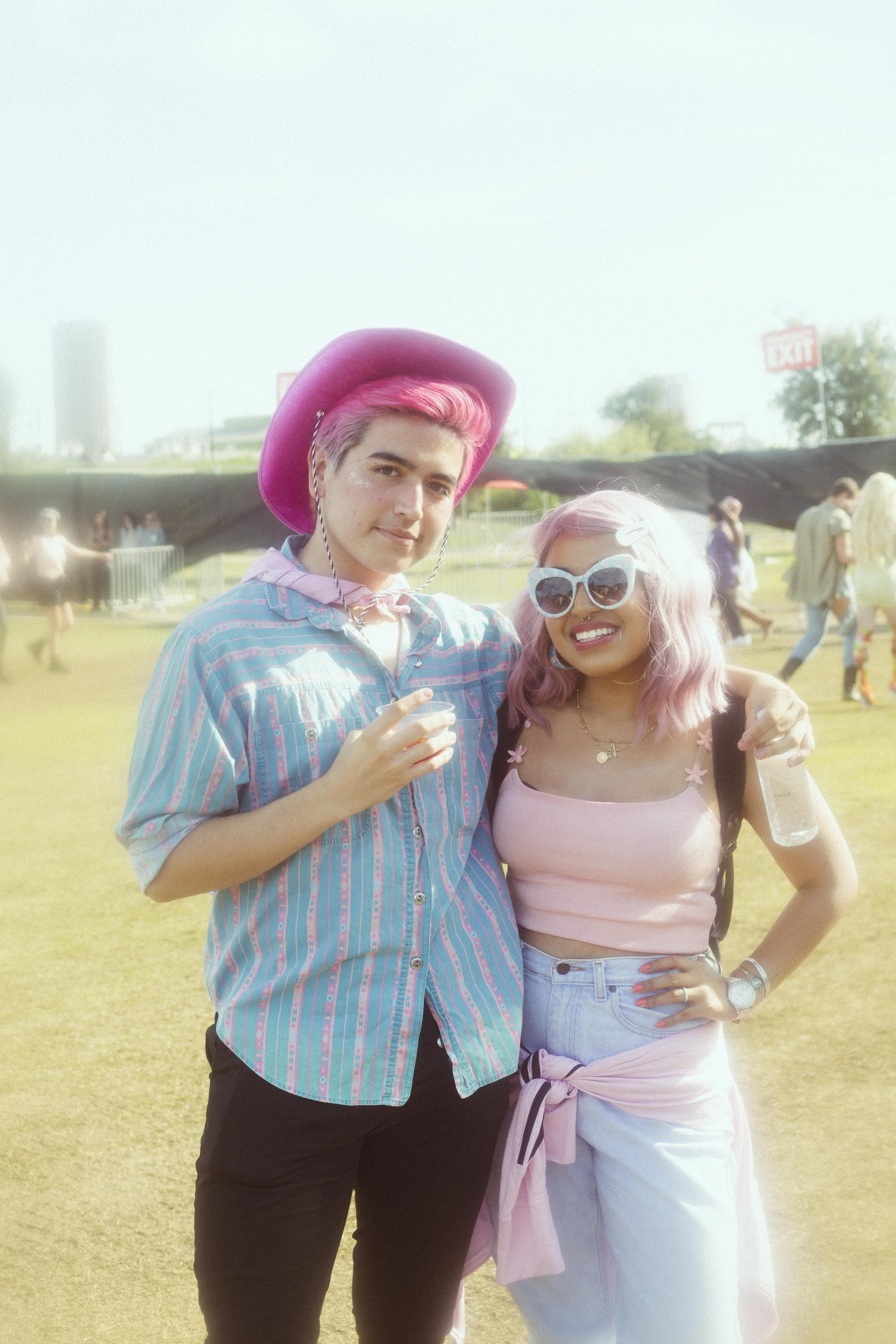
The art installation was breathtaking and absolutely one of my favorite features of the festival. It consisted of 26 flags each created by a different artist and covering a wide range of imagery, from playful and sexy flags featuring peaches and other sensual fruits, to statements about racism and immigration. Seeing a line of gorgeous flags softly billowing in the wind against a perfectly blue Los Angeles sky immediately upon entering the festival was truly a mood. It was also, of course, a perfect photo opportunity, which every good festival needs.
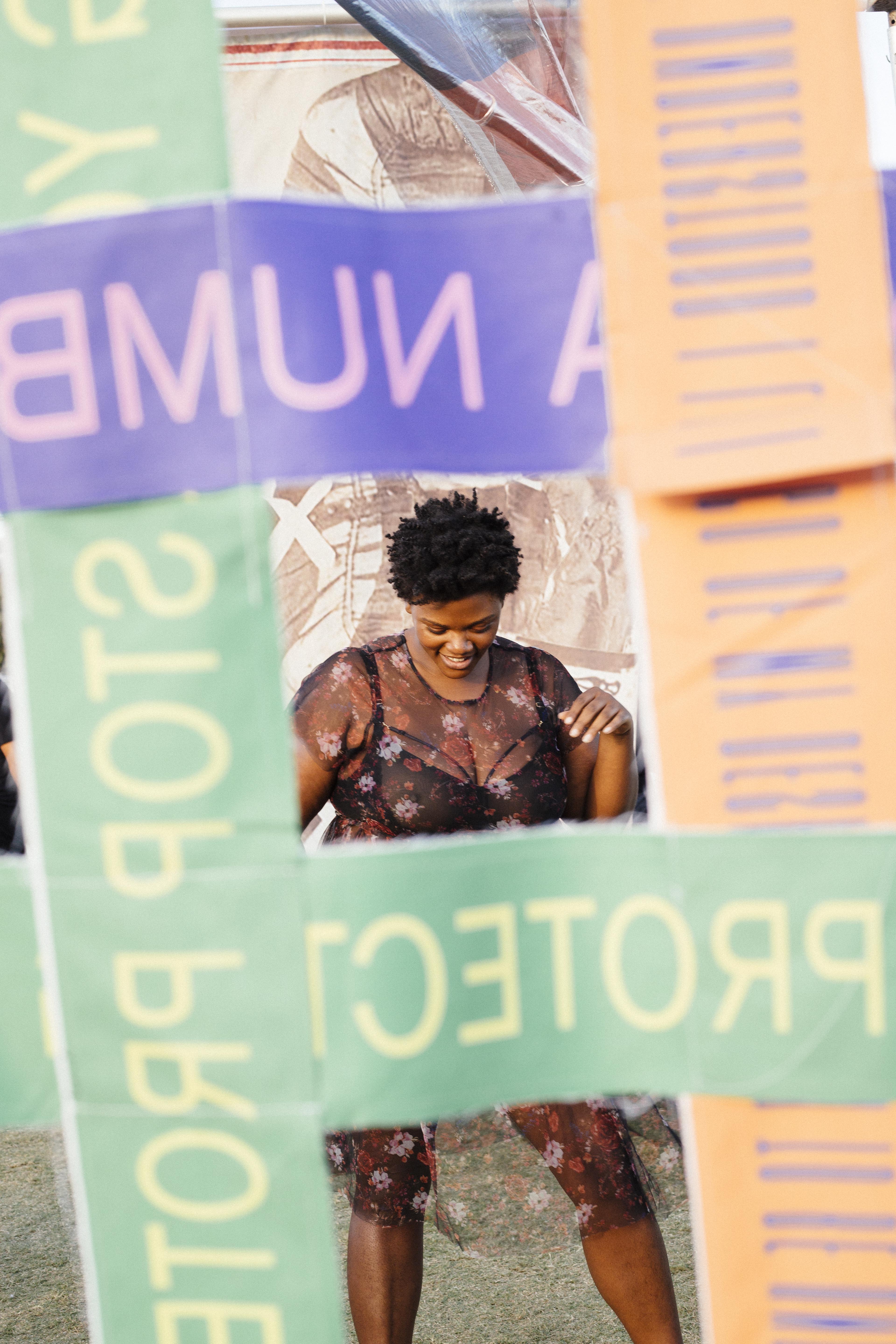
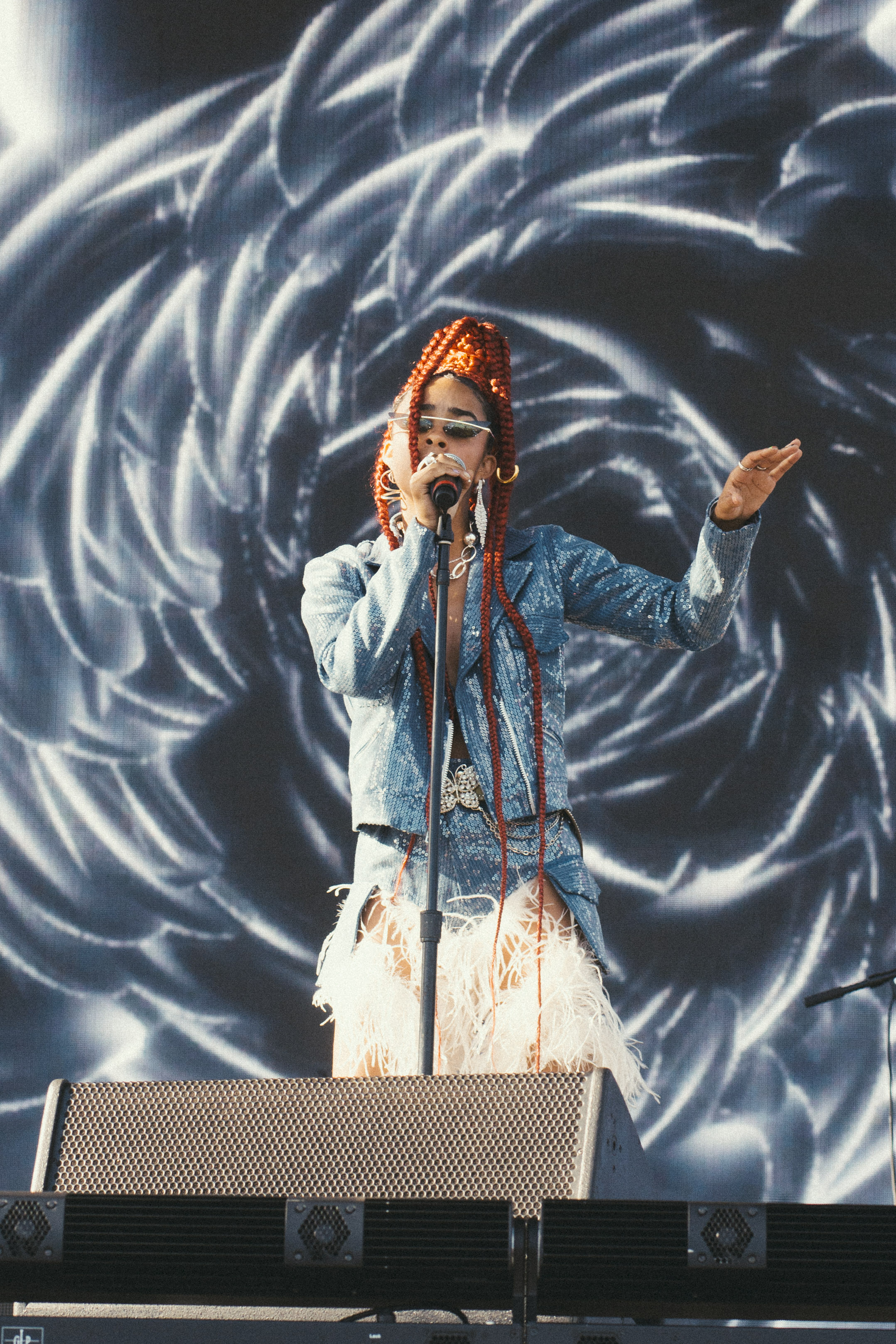
Kelsey Lu
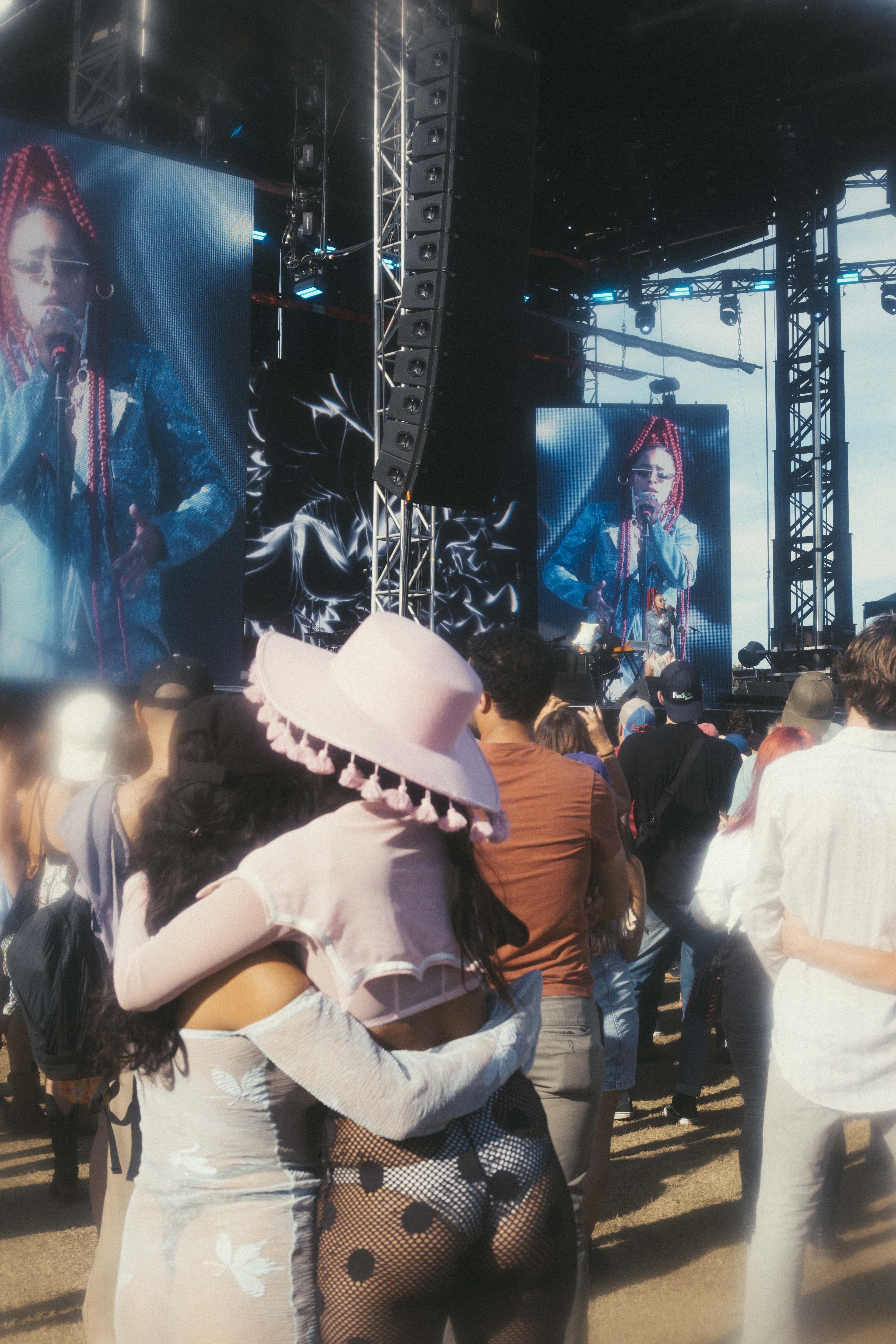
Kelsey Lu’s set
Kelsey Lu was the next highlight of my day at Yola Día. I’d never seen her perform before and now that that’s no longer the case I am a new woman. She started her set playing cello, blending her pure, warm voice with the instrument and welcoming us on a sweet, calm note. Then things escalated. Like a woman after my own heart, Lu had a bowl of snacks on deck for her set. Mid song she reached into her bowl of snacks, plucked a tangerine (or some other small citrus fruit) from the bowl, and casually peeled and ate it, juices running everywhere, while performing. Hot. Incredibly hot. Somehow it only got steamier from there as she reached for a bag of Lays potato chips. She then opened the bag with that iconic crinkle, tilted her head back, stopped singing just long enough to open her mouth as wide as possible, and showered herself with Lays. Just shook the bag and caused a waterfall of chips that she reveled in arms outstretched.
Once she finished her chips she then continued singing as she dropped to the ground and thrust her hips repeatedly into the chips that had fallen onto the stage. For the grand finale she stood up, Lays smashed onto every inch of her body, said “Y’all really don’t understand how much I love Lays” then proceeded to close out her set singing reverently, eyes closed with a chip crumb smack between her eyebrows almost like a deliciously crispy third eye. It was incredible, truly unforgettable, and made me very hungry so the next stop was lunch.
I kept seeing people walk by with gorgeous trays of fried potatoes and discovered they were coming from the Lil Deb’s Oasis booth so we made our way over. Ten minutes later I was in festival food heaven with a plate of perfectly fried chorizo topped papas bravas smothered in two sauces and topped with chiles, pickled red onions, and green onions. We also got an order of fried plantains buried under a mountain of black beans, cheese, avocado, salsa and a few other delicious things. I’ve been to over 20 music festivals and this was the best food I have ever eaten at any of them. If this is what festival food looks like when women are in charge of every aspect, I never want to go back to the old way again.
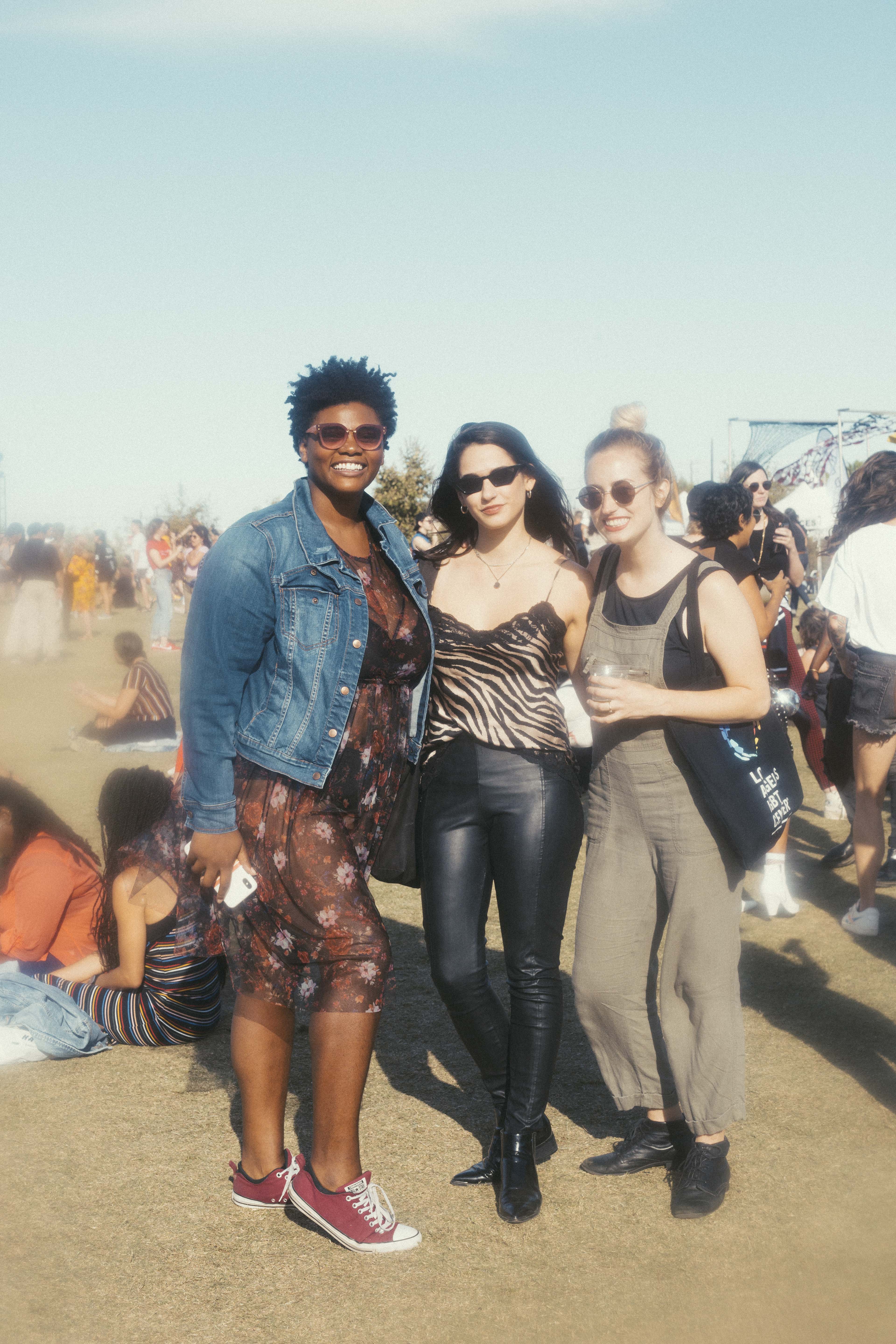
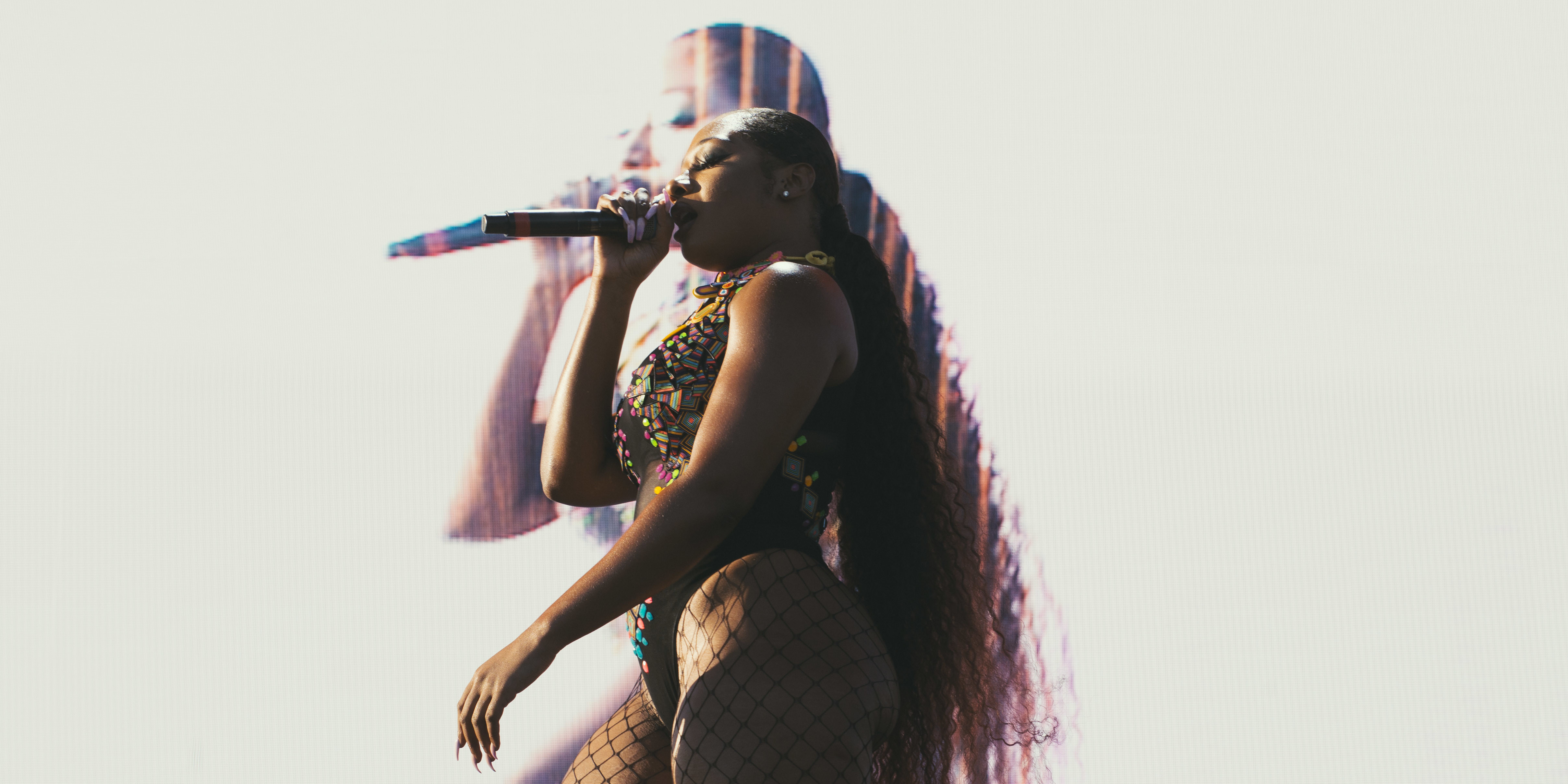
Megan Thee Stallion
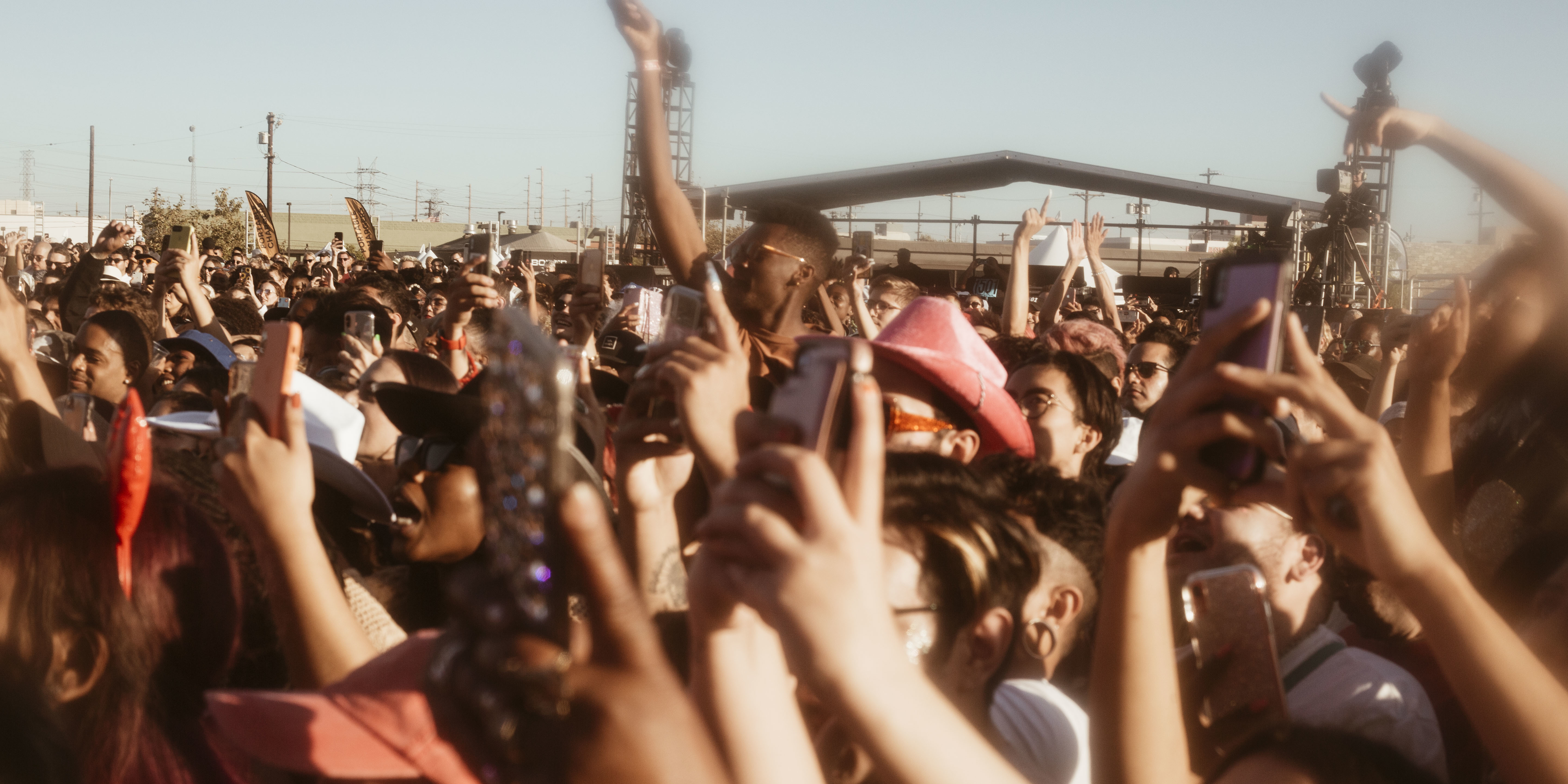
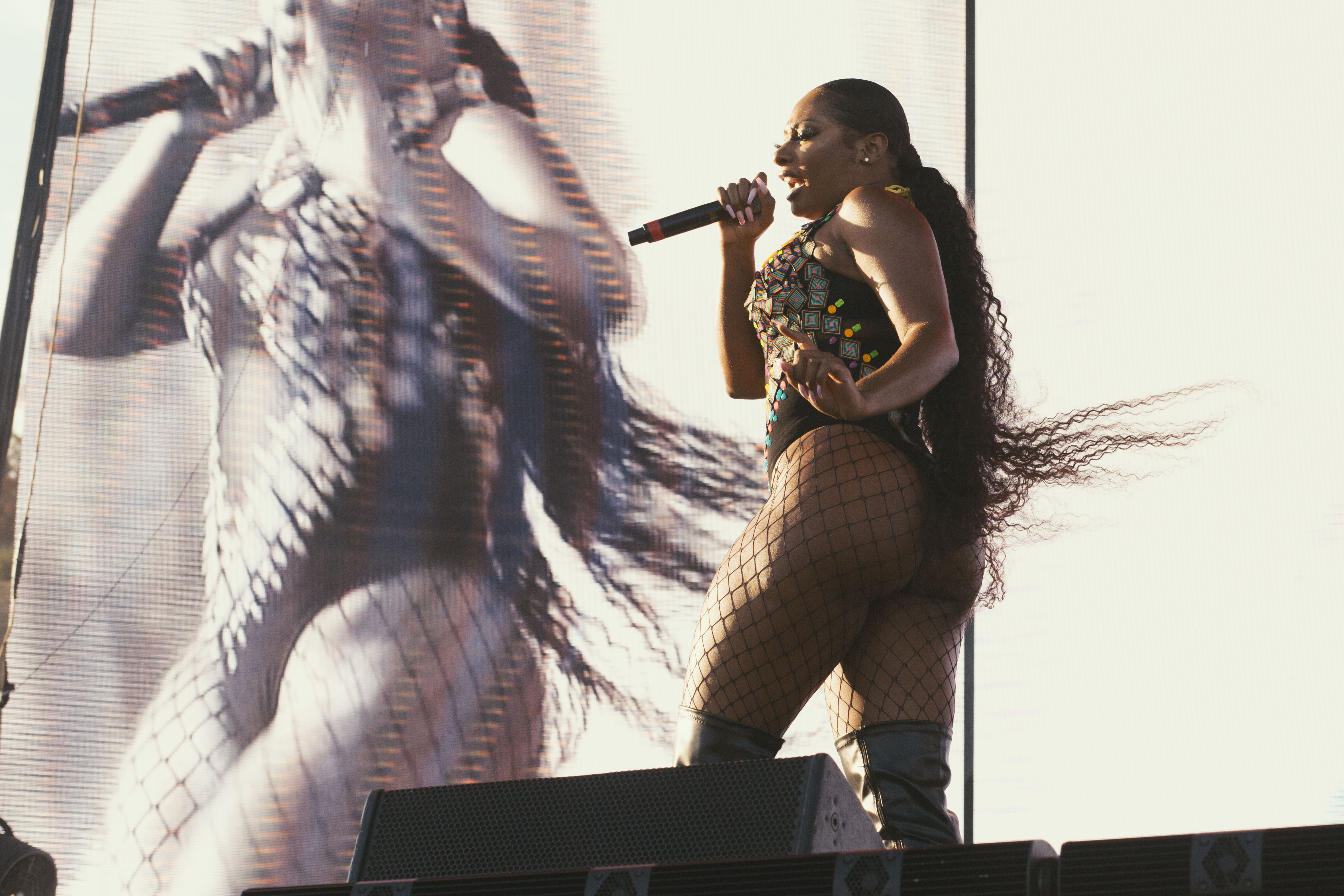
Megan Thee Stallion

Megan Thee Stallion
The absolute untouchable highlight of Yola Día fest for me was Megan Thee Stallion. This woman has no right to be so unbelievably talented on the mic, so beautiful she makes jaws drops, AND expertly skilled in the craft of twerking. I stan. The minute she stepped on stage, the crowd went wild. People were fighting to get to the front, screaming lyrics left and right, and damn near fainting every time she dropped it low. Which she did often, because she truly loves her fans. She makes twerking look so easy you’ll go home and play yourself trying to emulate her in the mirror. (You still cute though!) I mean, this IS the woman that gave us the gift of hot girl summer. I will never forget the joy that was being surrounded by hundreds of people singing along to Simon Says and Freak Nasty, pulling out moves we knew might make our backs go out in protest but not giving a single fuck about it. There was complete devastation when Megan’s set ended. Honestly I still haven’t recovered.
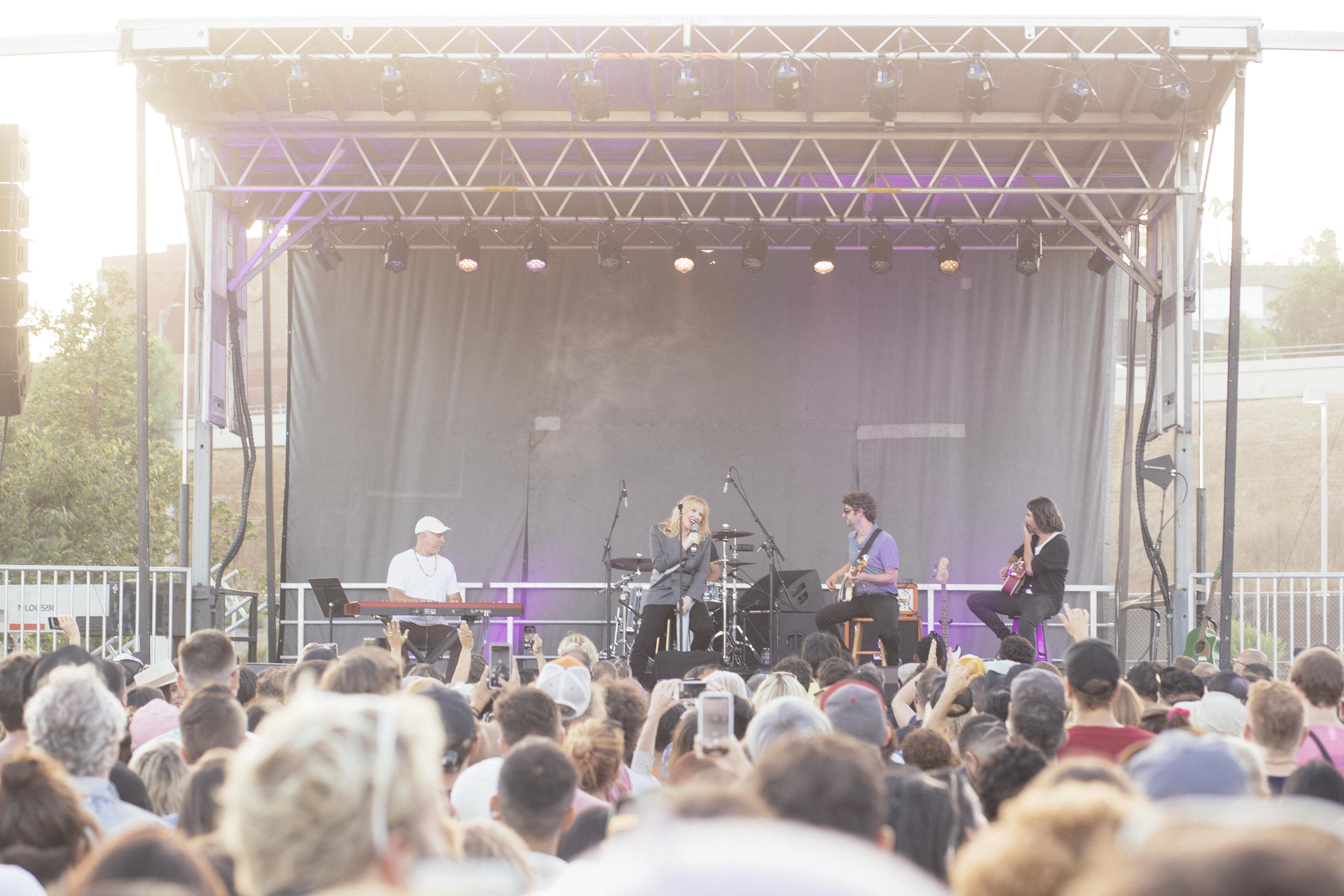
Courtney Love’s set
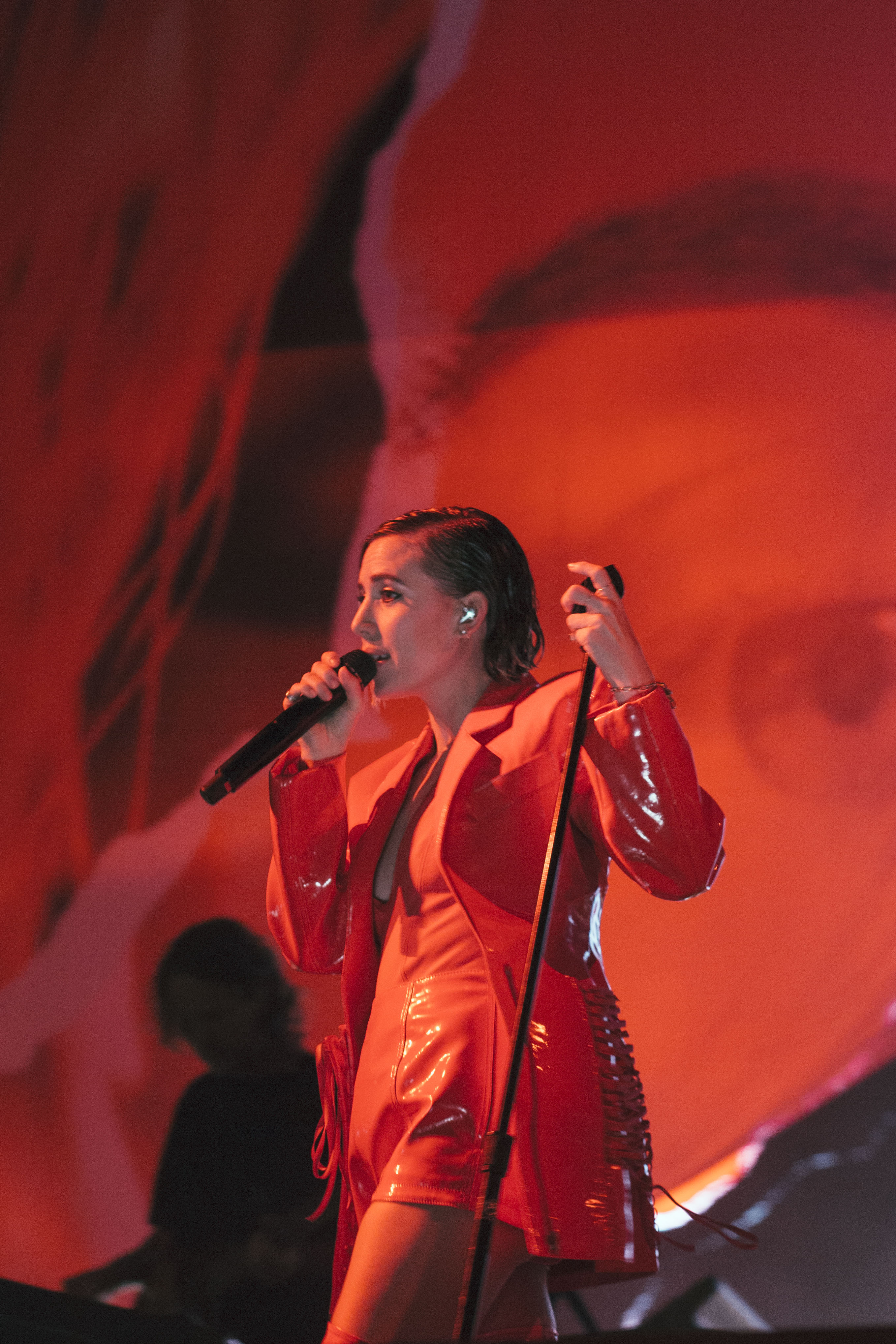
Lykke Li
While I admittedly can’t call myself a fan of Courtney Love’s, I do know her reputation and importance, and it was amazing to see so many of her fans watching their dream of seeing her perform live come true, and really that’s what the magic of this festival was for me overall. So many women were able to see their music icons in a lineup where they weren’t the minority. That just doesn’t happen at large scale mainstream festivals. Women were centered here in every aspect, on stage and off, behind the bar, on the security team (I have never been more politely asked not to drink too close to the art), at every level of organization it was women making the calls and making Yola Día happen, and it was so powerful. in many ways, it was the festival I simultaneously always wanted and didn’t know I needed. Yola Día 2020 can’t come soon enough!
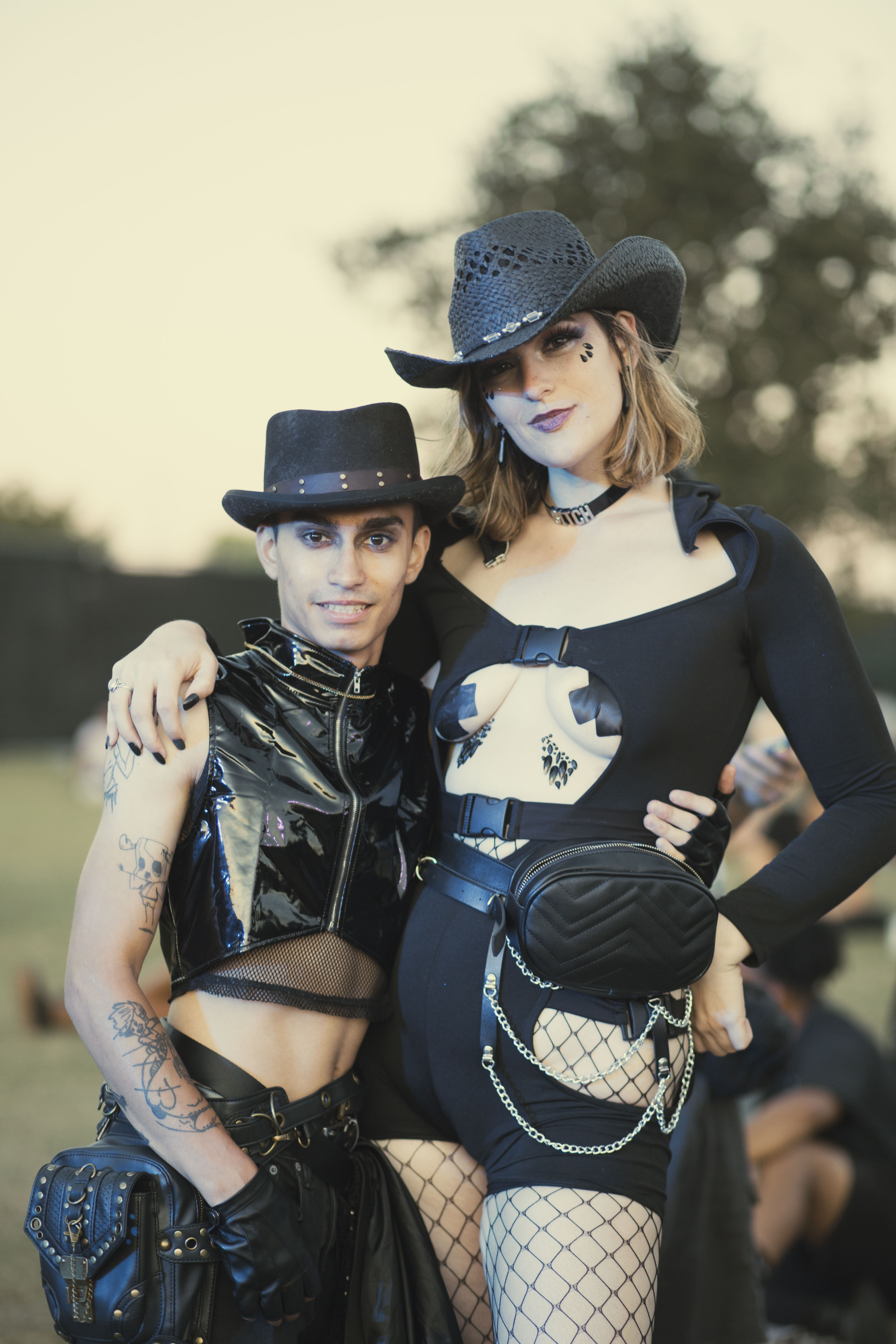
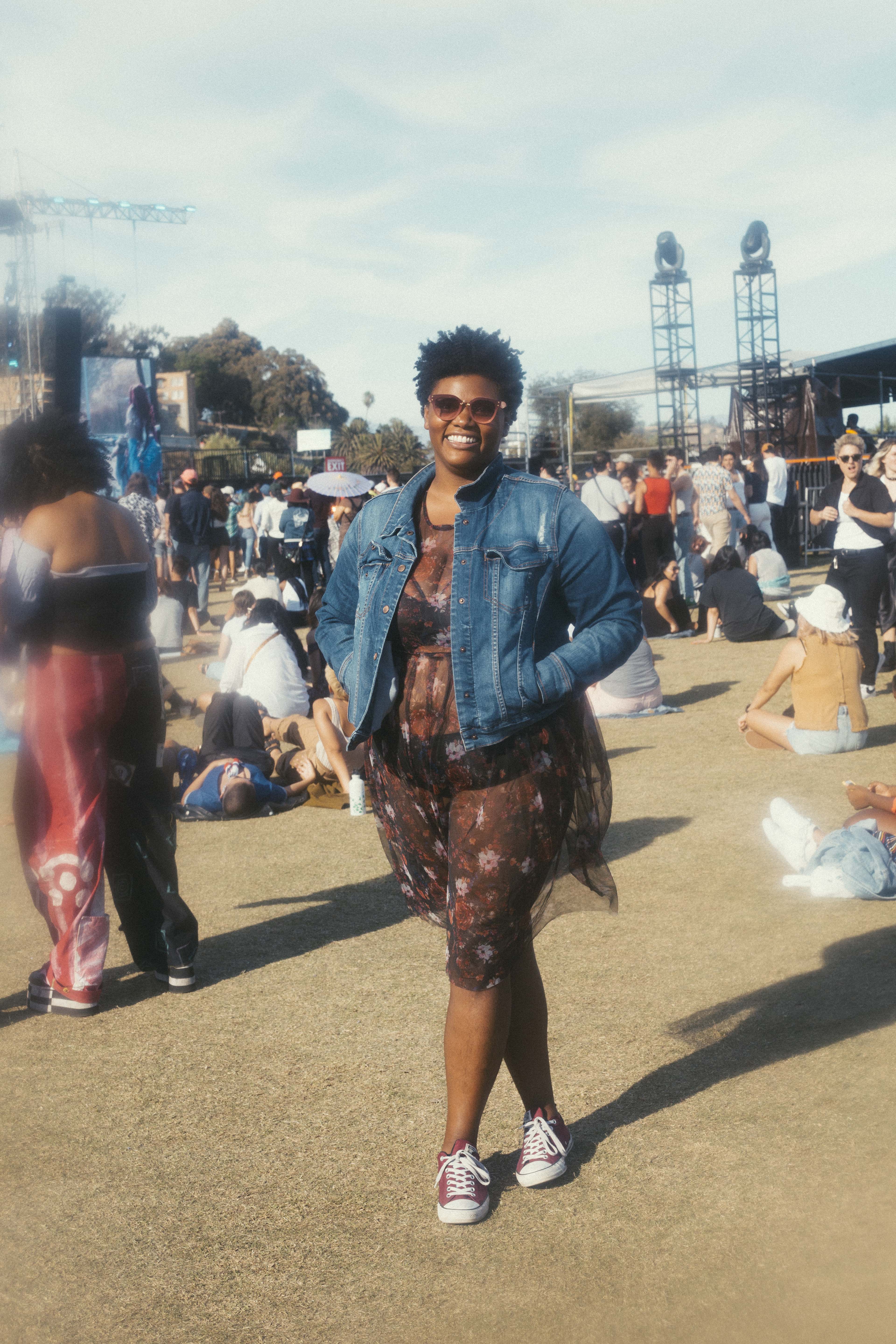
PHOTOESSAY: It’s Your First Time at Dinah Shore
Hey y’all! I’m back from the frontlines of Dinah Shore Weekend where thousands of queers descended on Palm Springs to soak up the sun and make lifelong friends.
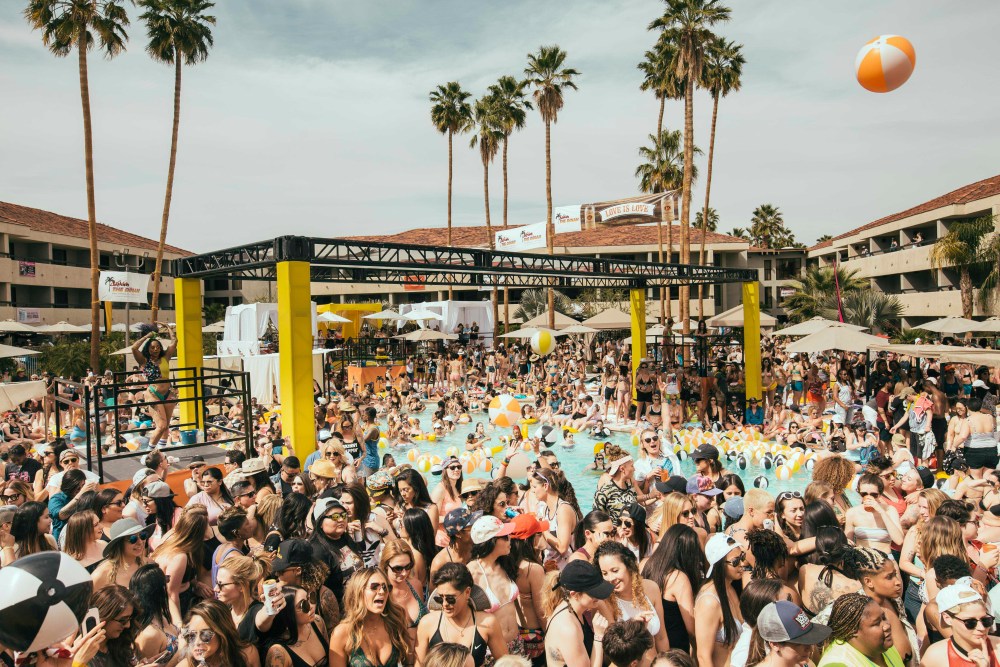
From afar (and also from close-up let’s be real), Dinah looks like a sea of lesbians whilin’ out getting sunburnt. Now, that’s either your dream or your hell depending on your feelings about sun, pools, and parties.
This year, I talked to some Dinah Virgins (the official term for first time attendees) who took the plunge and made it out. They all found that while yes, it is about sun, pools, and parties, it’s also about community and coming together.
What they had to say really echos my experience every year – people are super friendly (like really, really friendly), you’ll be totally fine if you show up alone, and WEAR SUNSCREEN.
You’ll probably have a blast. If you don’t like pools, parties, and crowds (which is totally fair and relatable), you can enjoy these photos from a comfortable distance!
Feel free to play “Soak Up the Sun” as you scroll.
Here are the interviewees!
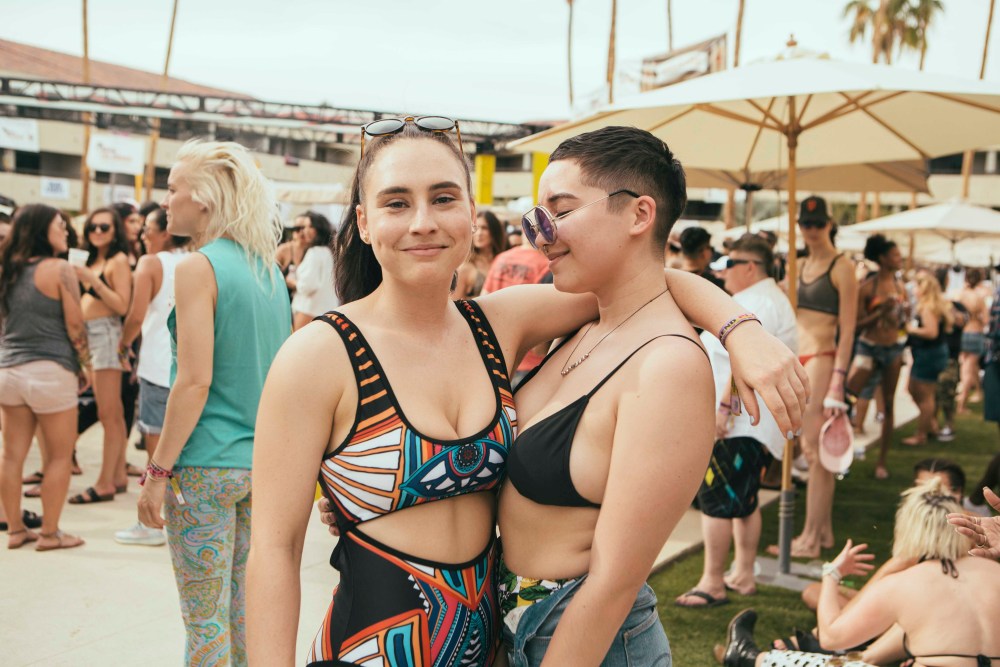
Jacqueline and Lyn

Dom and Gena
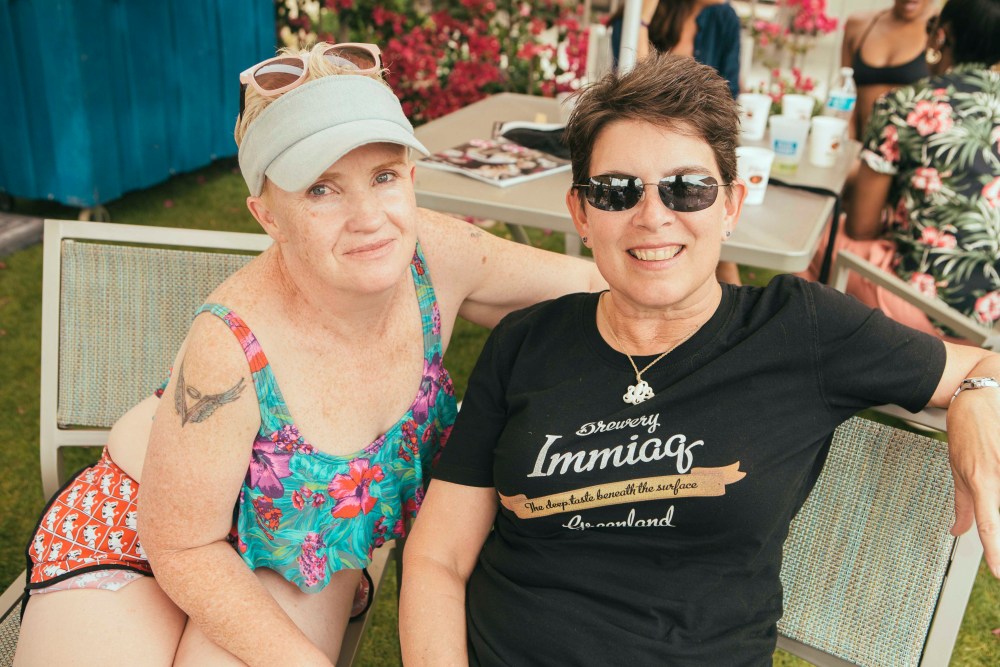
Vanessa and Arla
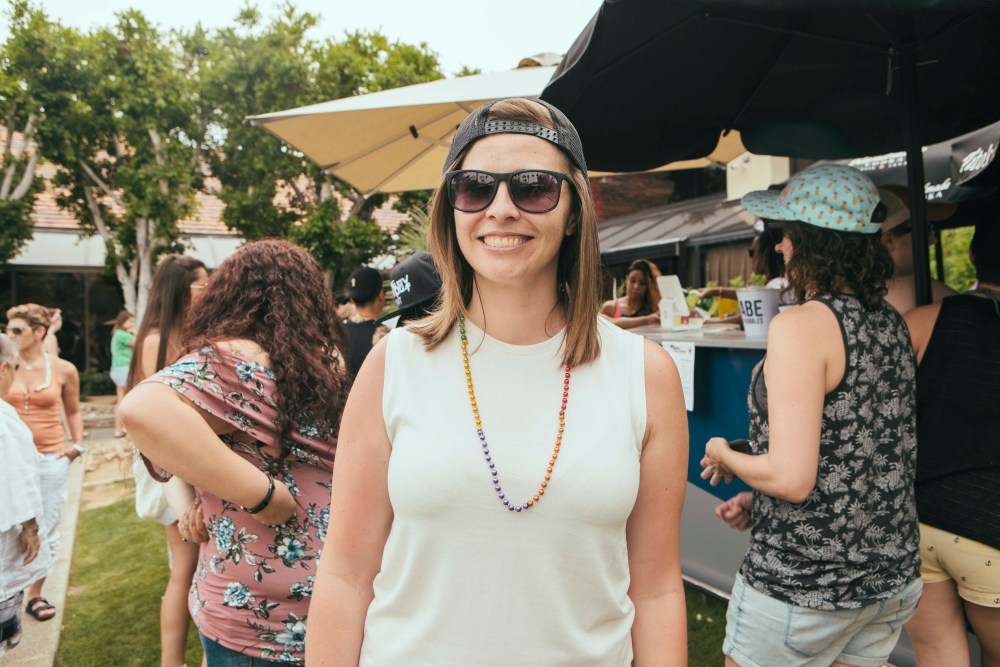
Amanda
Interviews have been edited for clarity
What did you expect Dinah to be like?
Amanda: I didn’t actually know what to expect – I had seen things on television and movies. I’m from a very small place so the idea of coming to Dinah was intimidating but very exciting.
Jacqueline: Whillin’ – and it is!
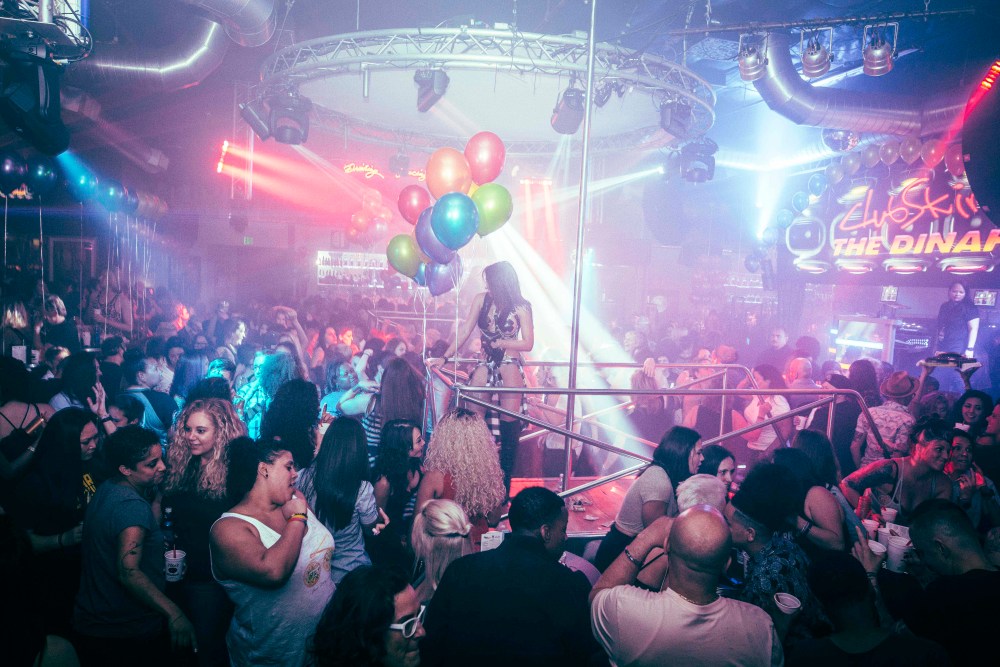
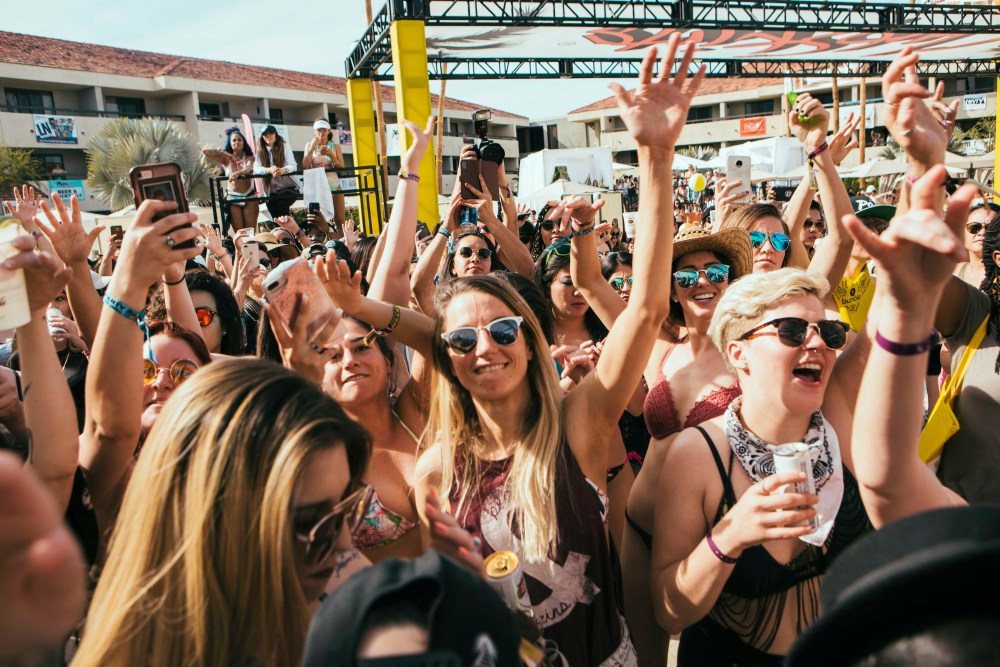
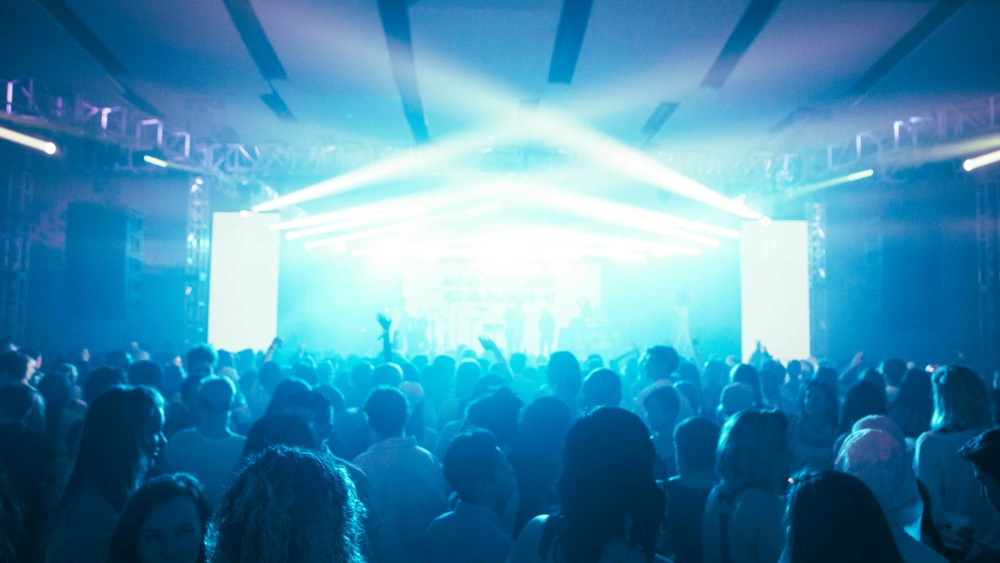
The Pink Party (FKA the White Party)
And how is it?
Dom: I expected just insanity and craziness nonstop but what I’m learning is that it’s that but so much more. It’s also about connecting with people – I’ve met like 4 or 5 really key people that I’ve just connected with – it’s more than just insanity.
Gena: For sure, same thing – I definitely thought it was just going to be a sea of lesbians – just craziness I don’t even know but I’ve definitely made some new connections, some lifelong friends.
Jacqueline: It’s great! This community of women from all around coming together with good vibes and good music
Lyn: Yeah – it isn’t just all about women it’s about everyone as a community. I’ve seen a lot of different people here and I’m glad that I’m comfortable here!
Jacqueline: Yeah, very comfortable.
Amanda: I had the best time – really good people and really friendly. Everyone is just really excited to be here and the music has been amazing! It exceeded expectations and I’m really excited that I actually came.
Vanessa: I feel amazing about it but I’m exhausted but it’s amazing!
Arla: Yes – it’s totally amazing. I’m just soaking up all the great energy and estrogen.
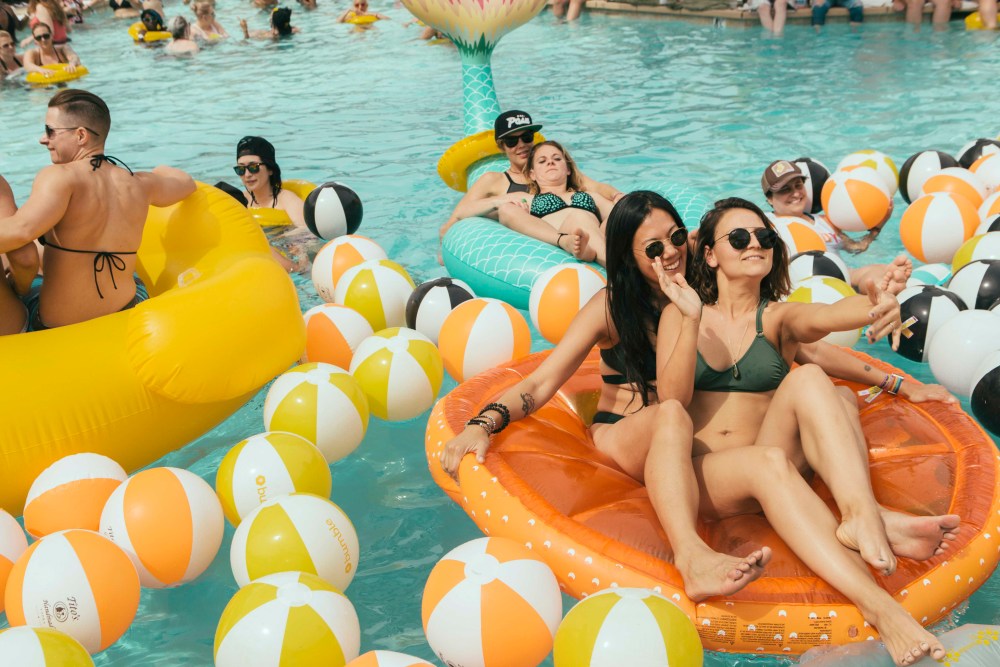
What’s your favorite part so far?
Vanessa: I’m loving that today we woke up early enough to do it properly!
Arla: My favorite part has been how friendly people are with just chatting and smiling!
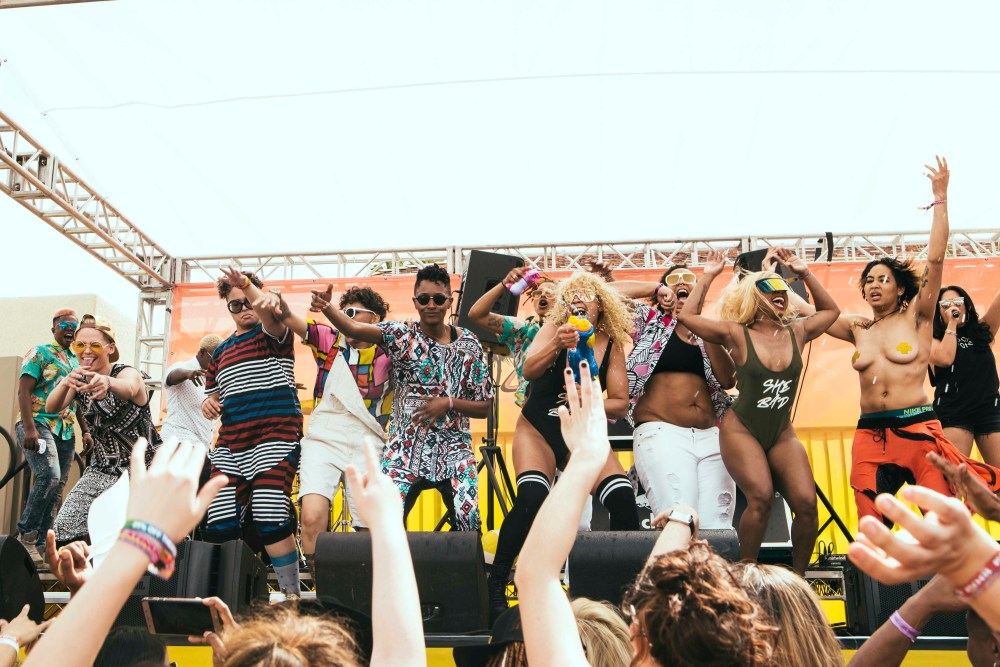
Stuzo Clothing Fashion Show

Will you come back?
Arla: Yes and I’ll drag like 10 more people!
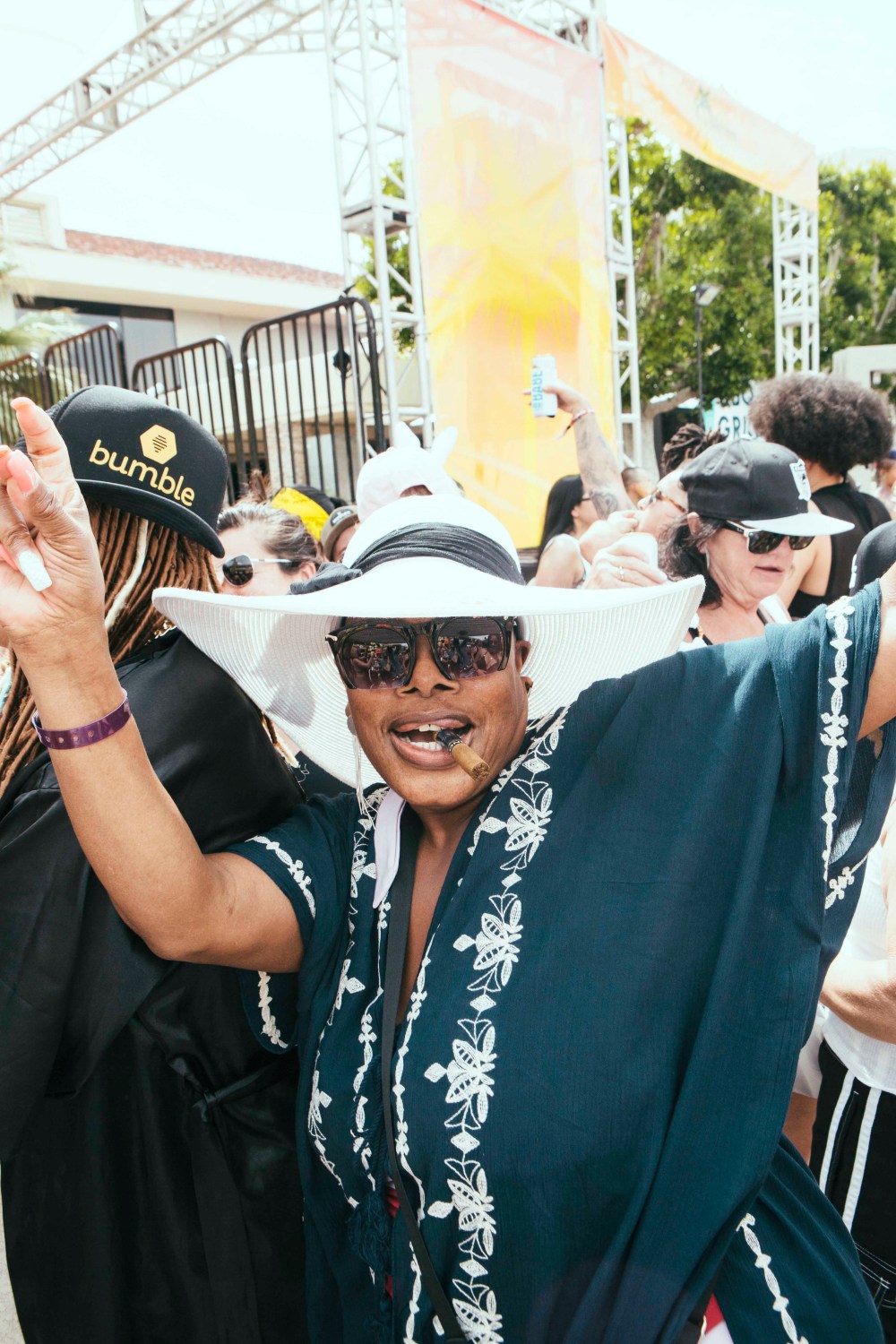
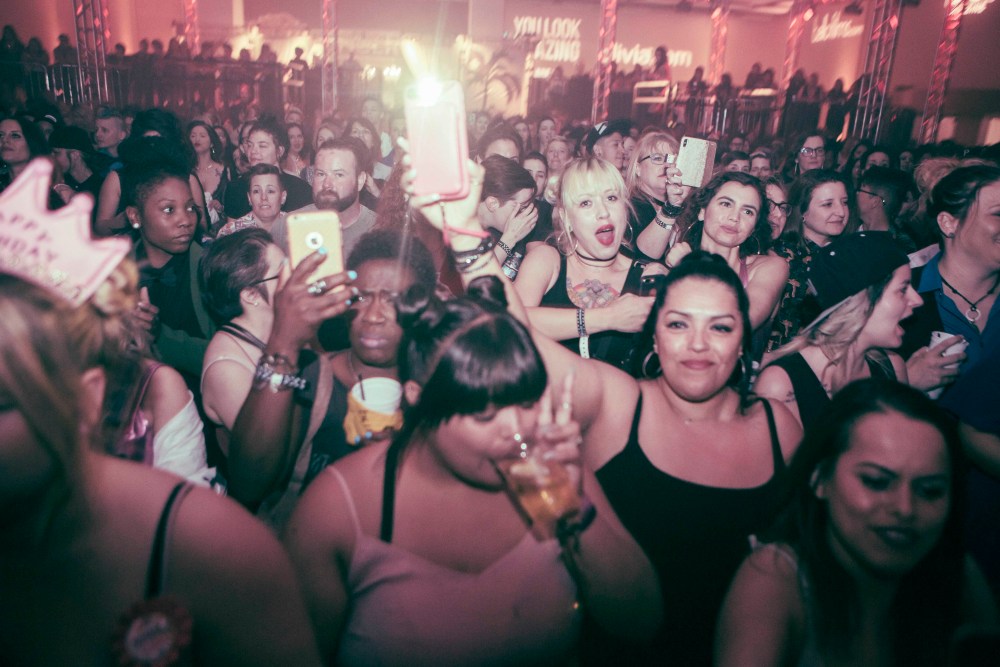
Jessie Reyez fans at the Saturday night “Hollywood Party”
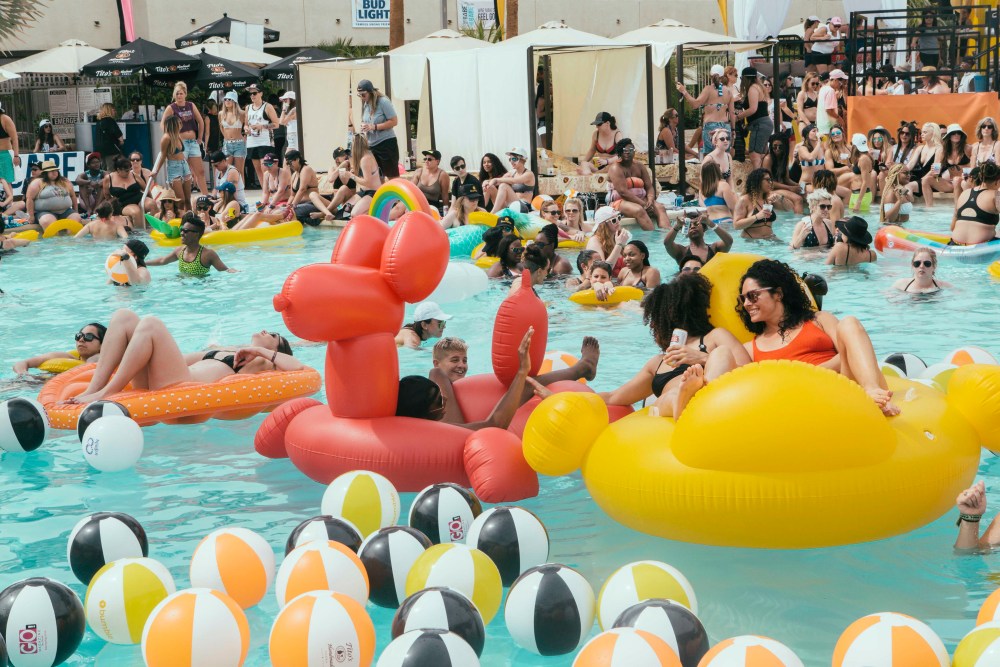
Advice for future first timers?
Amanda: Just come with an open mind and excited to meet people because you’re going to meet people from different scenes around the world and I think that’s really important to get exposure to that!
Jacqueline: Sunscreen, food, eat before you drink, get plenty of sleep. Don’t sleep in between the pool party and going out because you won’t rally
Lyn: Just like me – I didn’t rally yesterday.
Dom: Bring sunscreen like nobody’s business because it’s hot and the sun will literally burn you no matter what color you are.
Gena: Let your freak flag fly – it doesn’t matter, have fun and be yourself! I just feel like there’s so much love around everyone is just having a good time connecting.


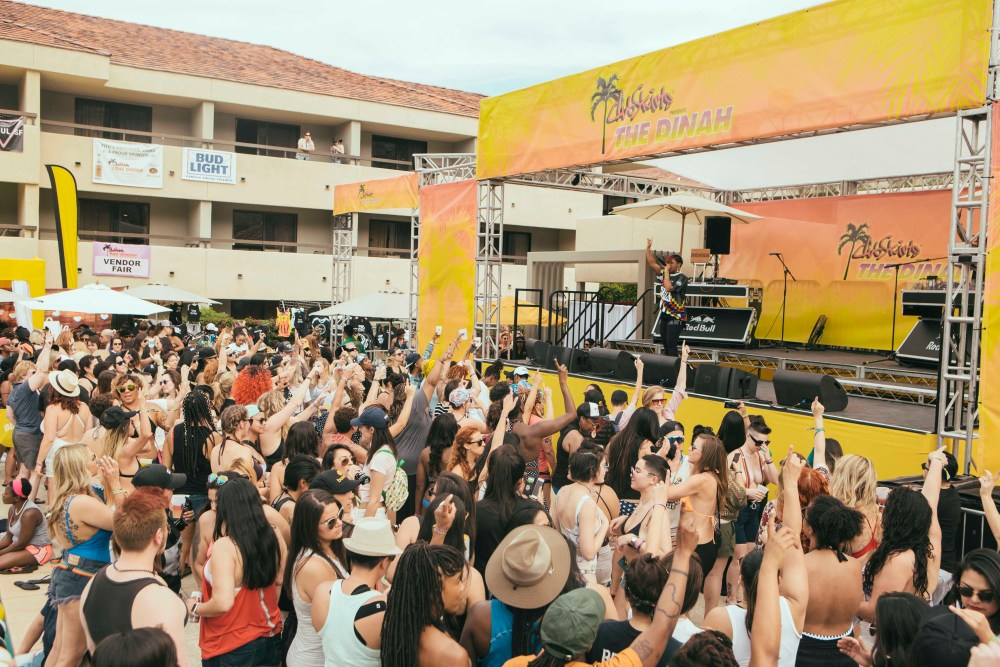
Rapsody closing out the Sunday Pool Party
Seriously y’all like if you don’t take anything else from this article at least WEAR SUNSCREEN AND DRINK WATER. Nobody needs a dehydrated lobster.

Day in the Life: Lisa Cannistraci, Activist and Lesbian Bar Owner
This past week I had the pleasure of spending the day with Lisa Cannistraci, co-owner of the longest running lesbian bar in the country – Henrietta Hudson. She not only handles the day-to-day in the bar, but also sits on community boards and is an avid activist for the community. She describes herself as “a life-long activist who happens to be a bar owner. I have been fortunate to use Henrietta Hudson as a platform for social change to fight injustice and will do so as long as I live and breathe.”
“I grew up in Park Slope Brooklyn during the very radical 1960s. I believe this shaped my activist nature. My middle class upbringing and Brooklyn street edge provided me the tools to be a fighter. I knew when I opened Henrietta Hudson it would remain open for a very long time. We are now the longest running lesbian bar in the country and perhaps the world.”
She jump starts her day at 6am with payroll, scheduling, walking the dogs, and replying to emails.
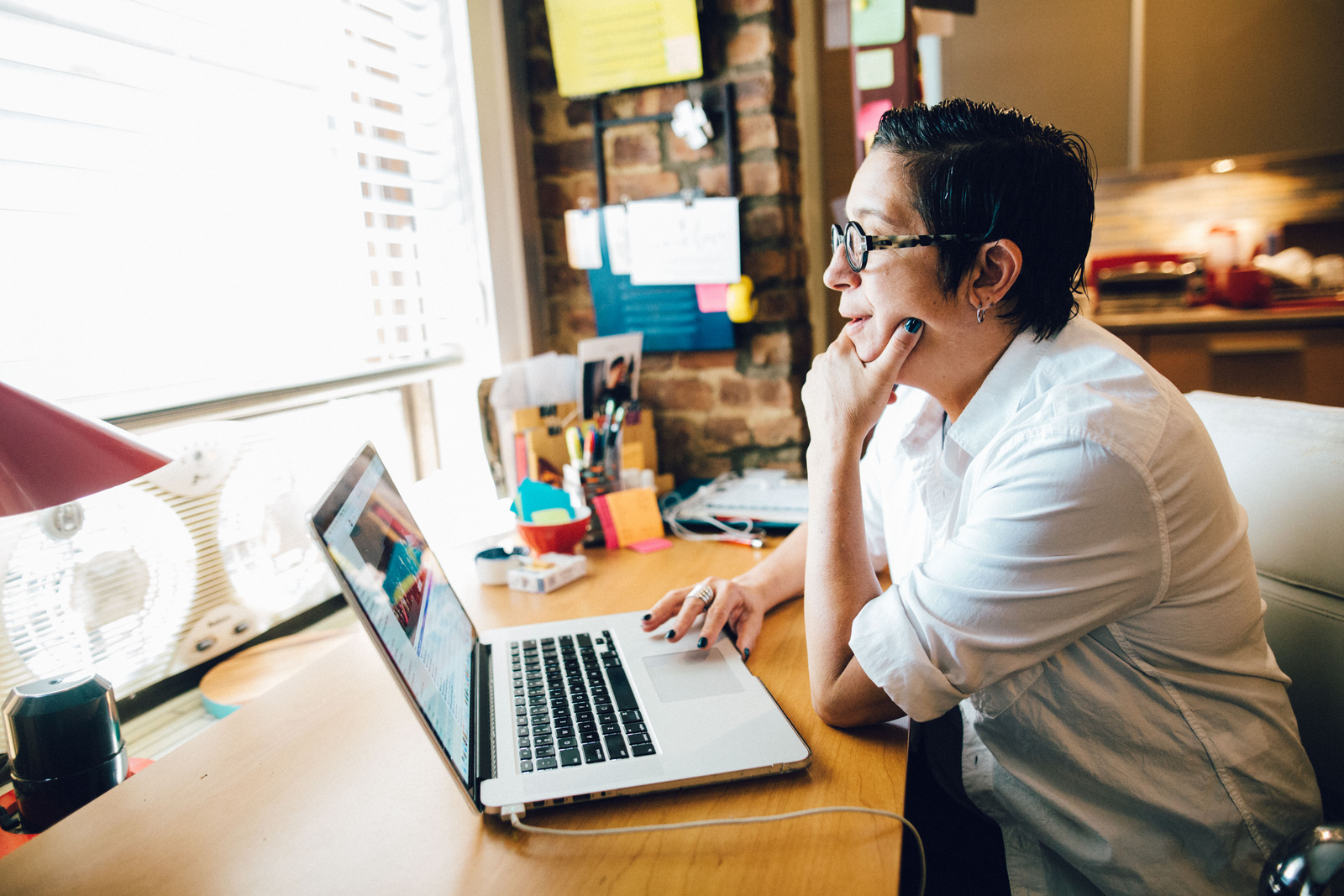
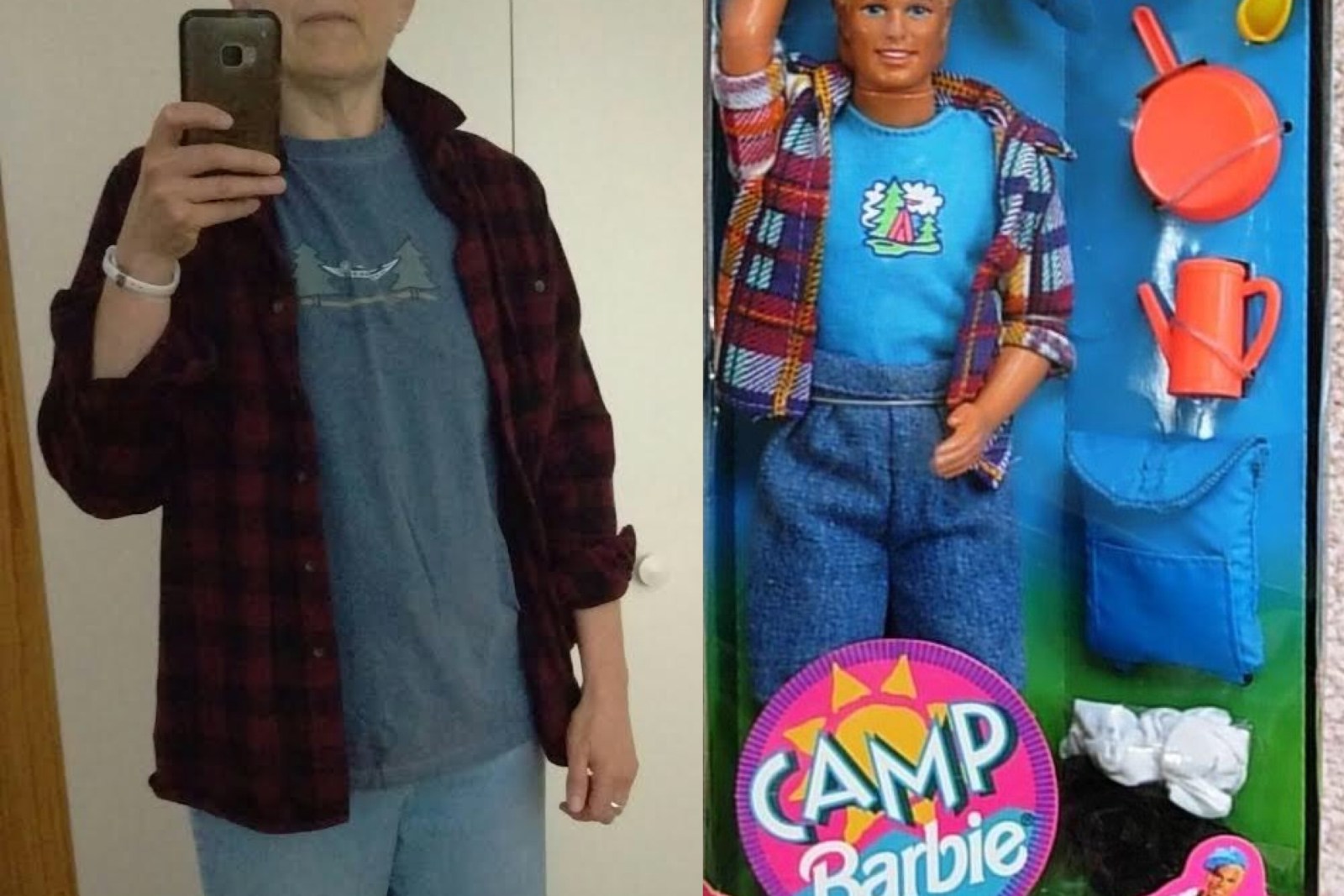
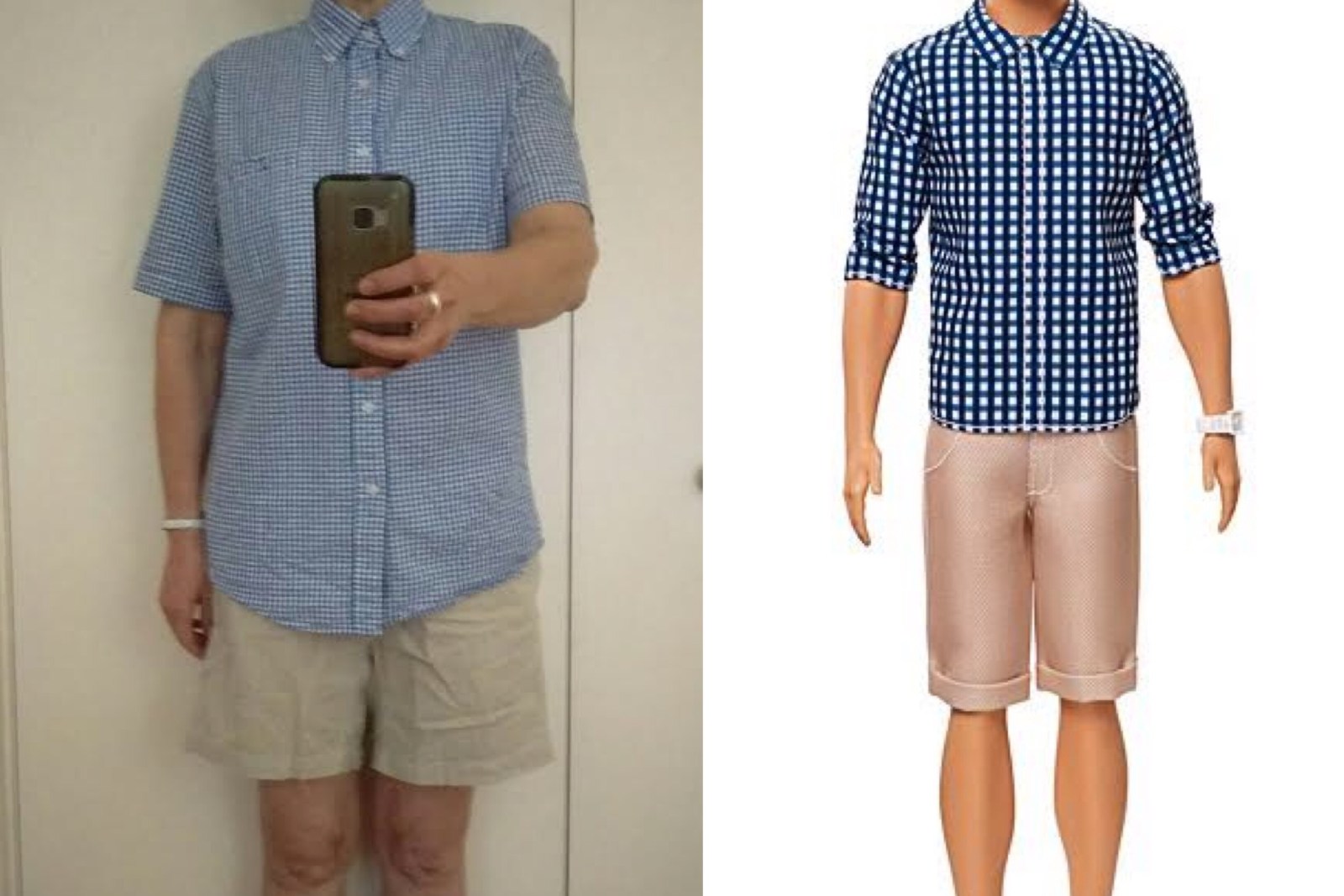
“It was never on my radar to open a bar. I was studying towards a clinical psychology degree when Minnie Rivera approached me to open the space that once housed the original Cubby Hole. I had been a bartender there from March of 1985 until it closed in 1990. One dinner led to a lease signing and well, that was 26 years ago. It was really my customers that urged me to reopen the old space. I’ve been at this space since March of 1985, bringing me to 32 years here!”
Midday she heads down to the bar to check inventory and make sure everything is ready for the evening.
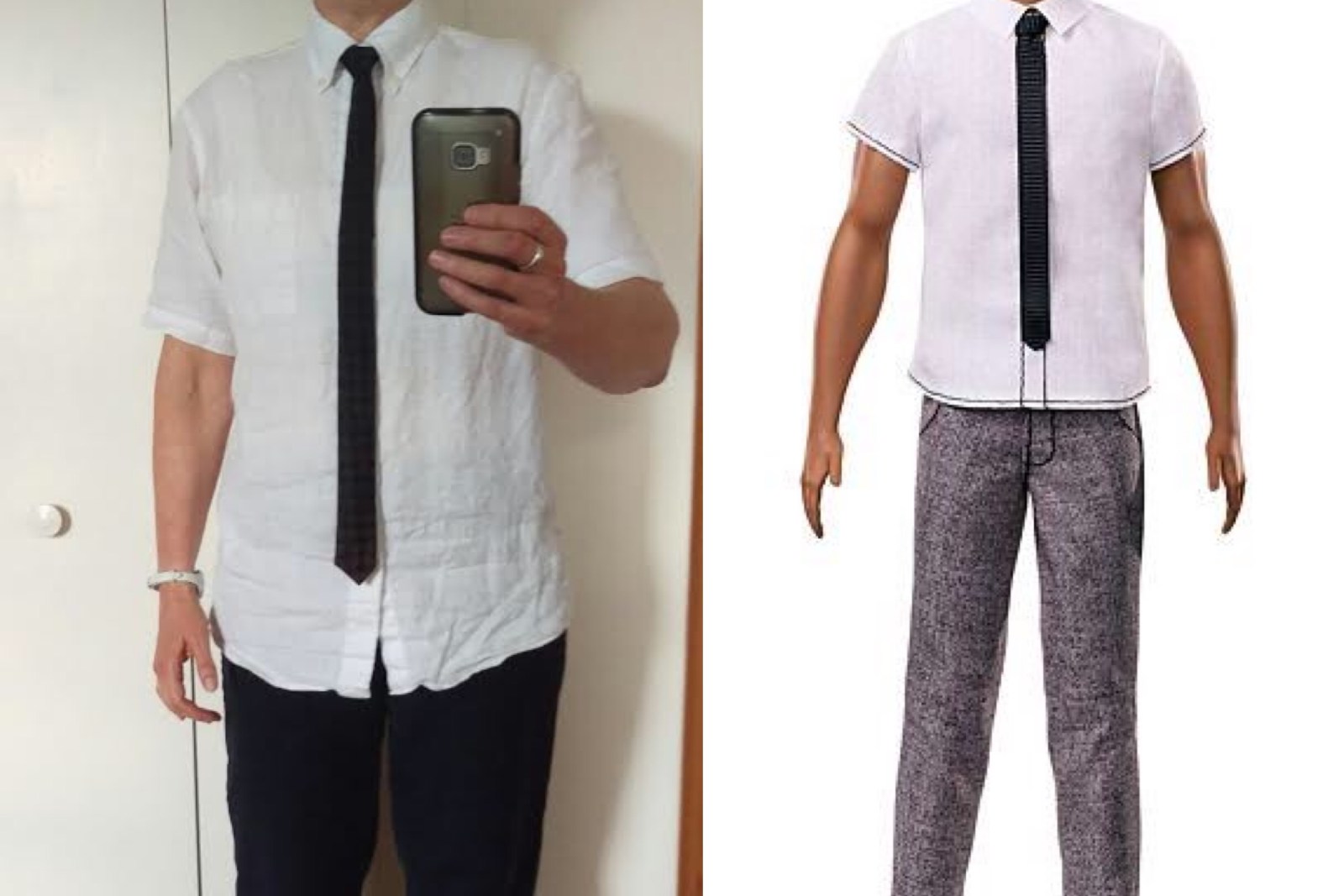
“When I opened the bar in 1991 we had a jukebox. Yeah that’s about it. Back then folks were not so intent on being in fabulous spaces. They just wanted a safe space to congregate. Today we have to create an experience with Vegas caliber burlesque from Rox Republic, super star DJ’s from all over the planet including Dj Gunn Sweden, DJ Daniela Sea of The L Word, DJ Whitney Day LA, DJ Kamikace Vienna, DJ Nicole of Nina Sky, DJ Lady Chellez NY, DJ Amber Valentine NY, DJ Rosy Q NY, DJ Tikka Masala NY. The list goes on and on…..”
Why are these spaces important?
Where do I begin? With the current political climate of hate and intolerance these spaces are more important than ever. I was the sitting Vice President of Marriage Equality USA when DOMA was struck down. Ironically my activism hurt my business. When Marriage Equality became the law of the land, lesbians in particular started assimilating and instead of going to a lesbian bar they would meet up at their local pub. This exponentially reduced traffic to the bar and I speculated it would. This forced me to up my game and make the bar more enticing and interesting with a more engaged staff who loved what they were doing. This phenomena prompted me to reinvent the space with super fun weekly parties and more special events that would satisfy niches within the community. It was a daunting task but has been very successful.
How has the scene changed over the past 25 years?
Well in 1991 the scene was very divided between cultures and sexes, however I never subscribed to that. Henrietta Hudson has always been an inclusive space for all including trans folks, gay men, etc. and I am super proud that we are known for our diversity.
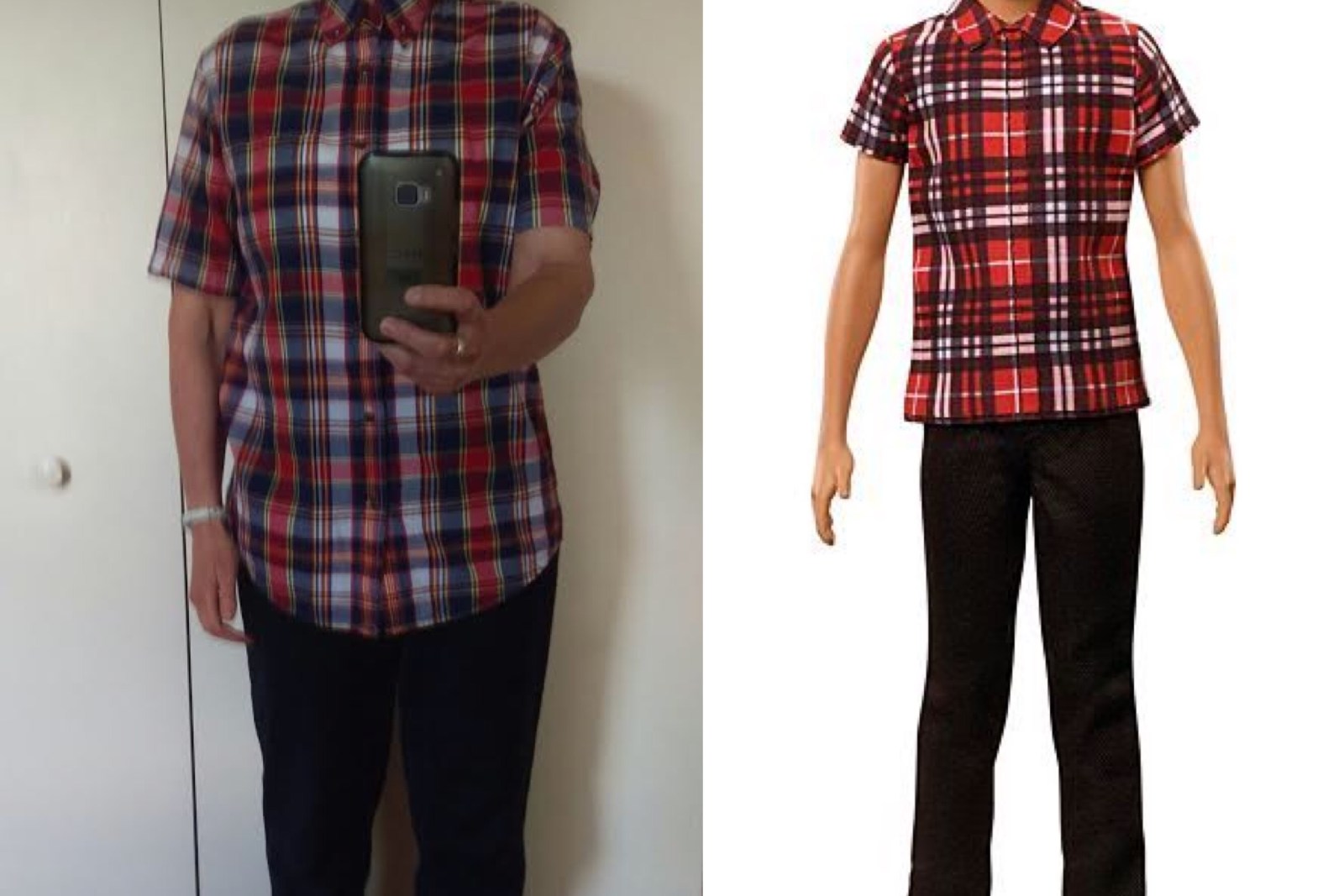
How is your space different from other spaces?
We are and always have been a bar with a conscience. We cared about social issues before it was cool to do so. We also attract and maintain a very diverse crowd. Of this I am very proud.
With girl-centered bars closing across the country how have you survived?
Well it’s not the sexiest answer but simply keeping an eye on things and really watching the bottom line. From going and getting all dry goods for the bar from a “cash and carry” to asking the staff every night to send me a pic of the thermostat at closing to insure the AC is turned off. We have a sophisticated liquor dispensing system along with a precise inventory accounting. Also knowing when something is not working and having the guts to change it.
And then I got an exclusive tour of the basement which is pretty cool.
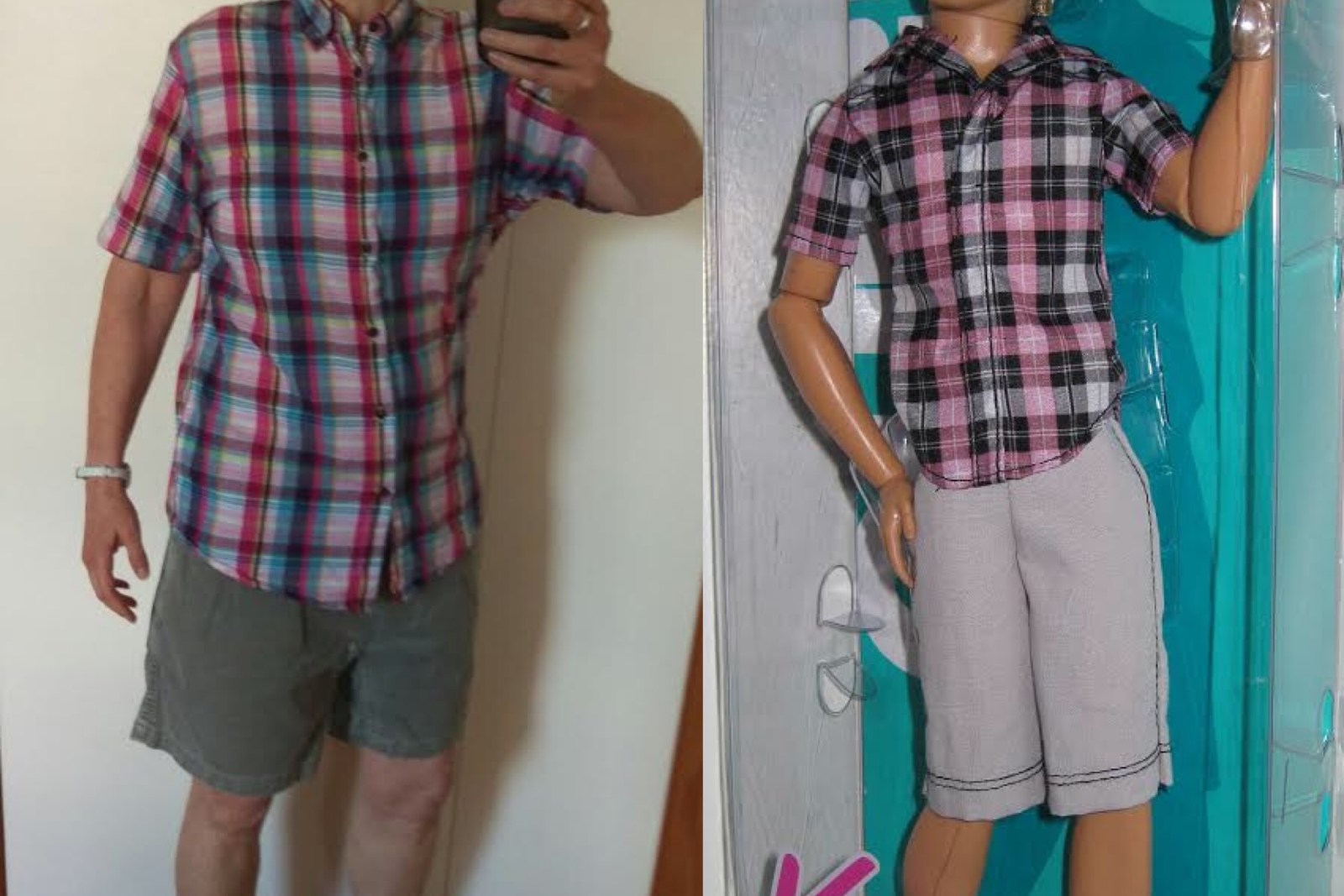
Soda room
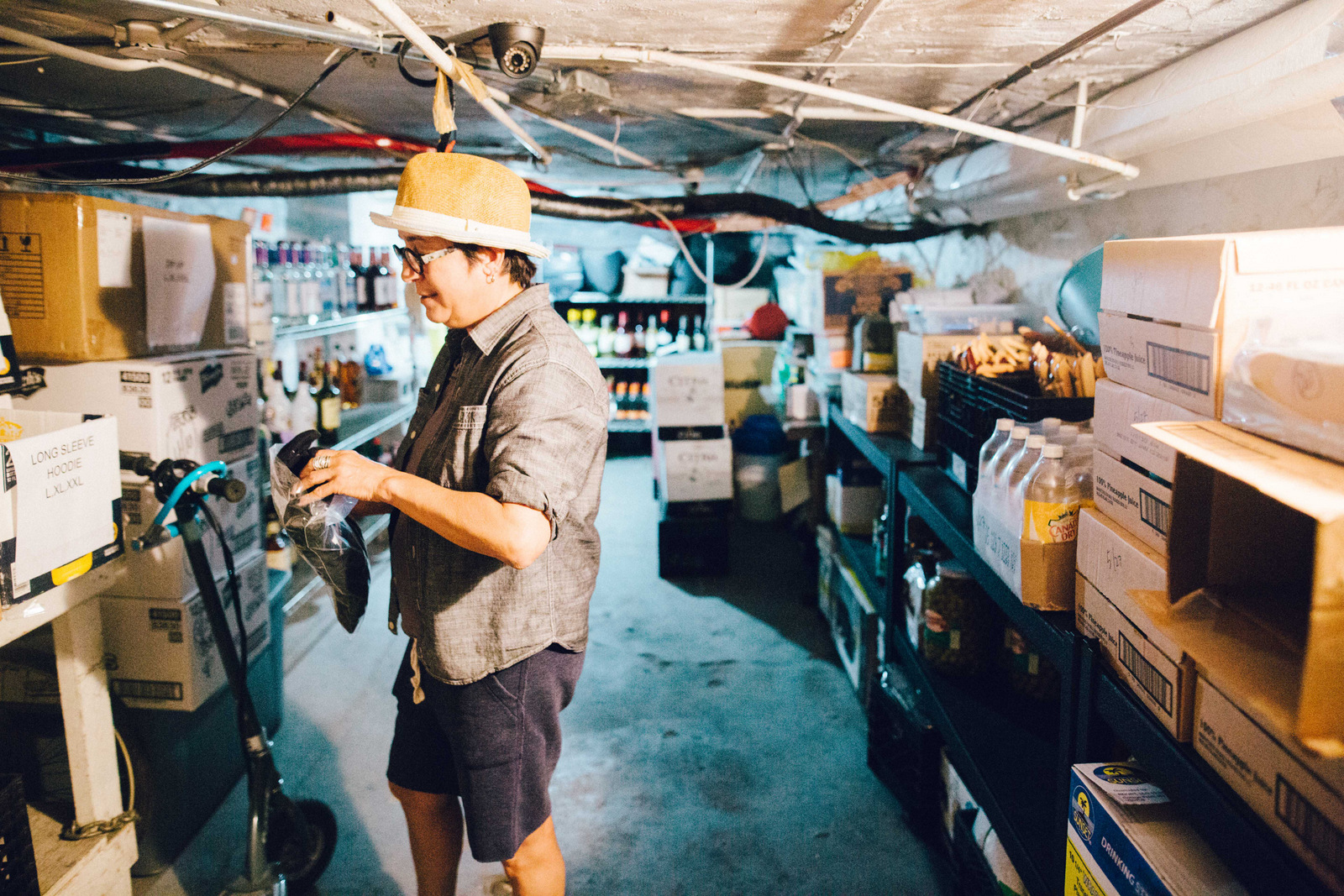
Liquor room
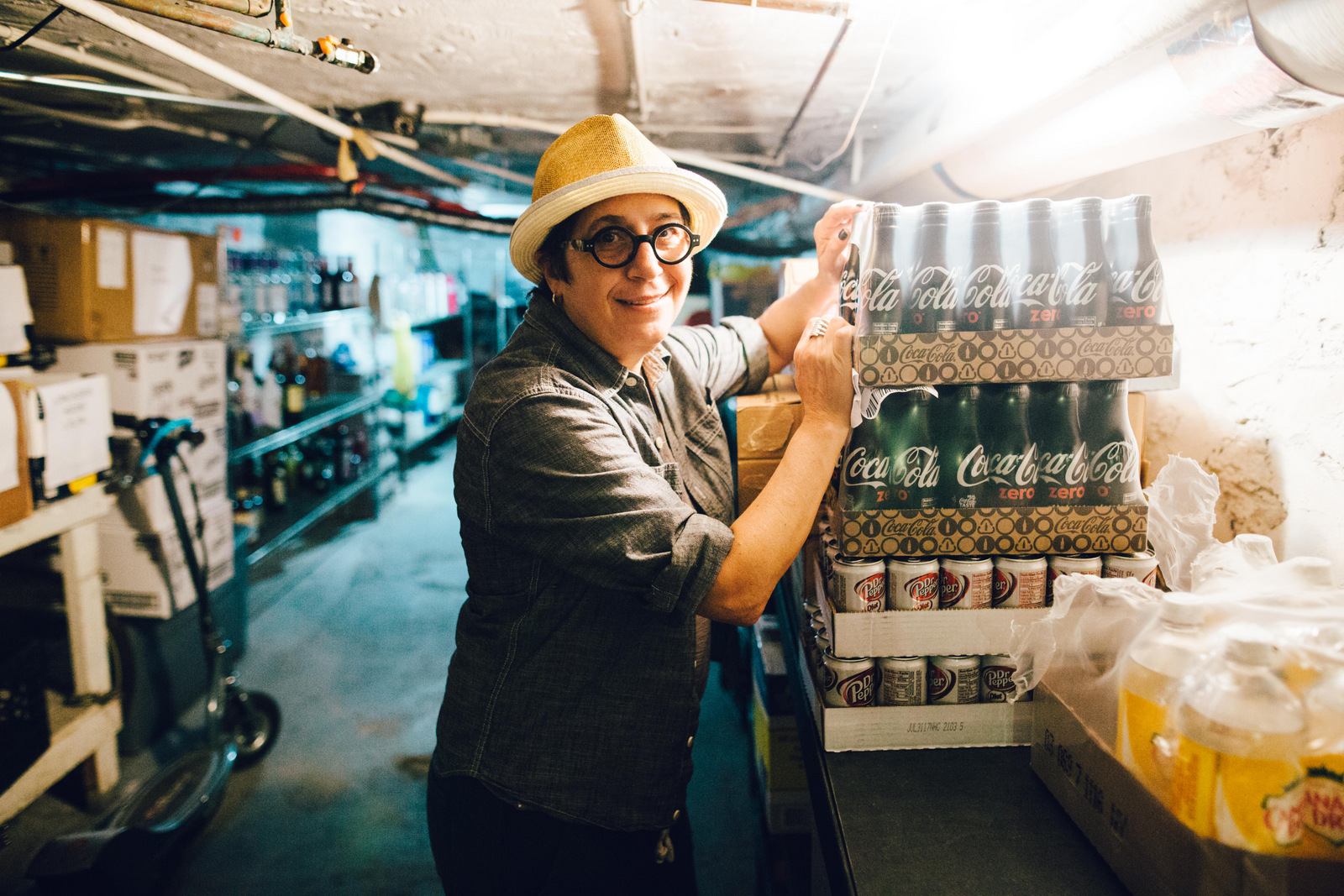
Lisa’s personal soda stash
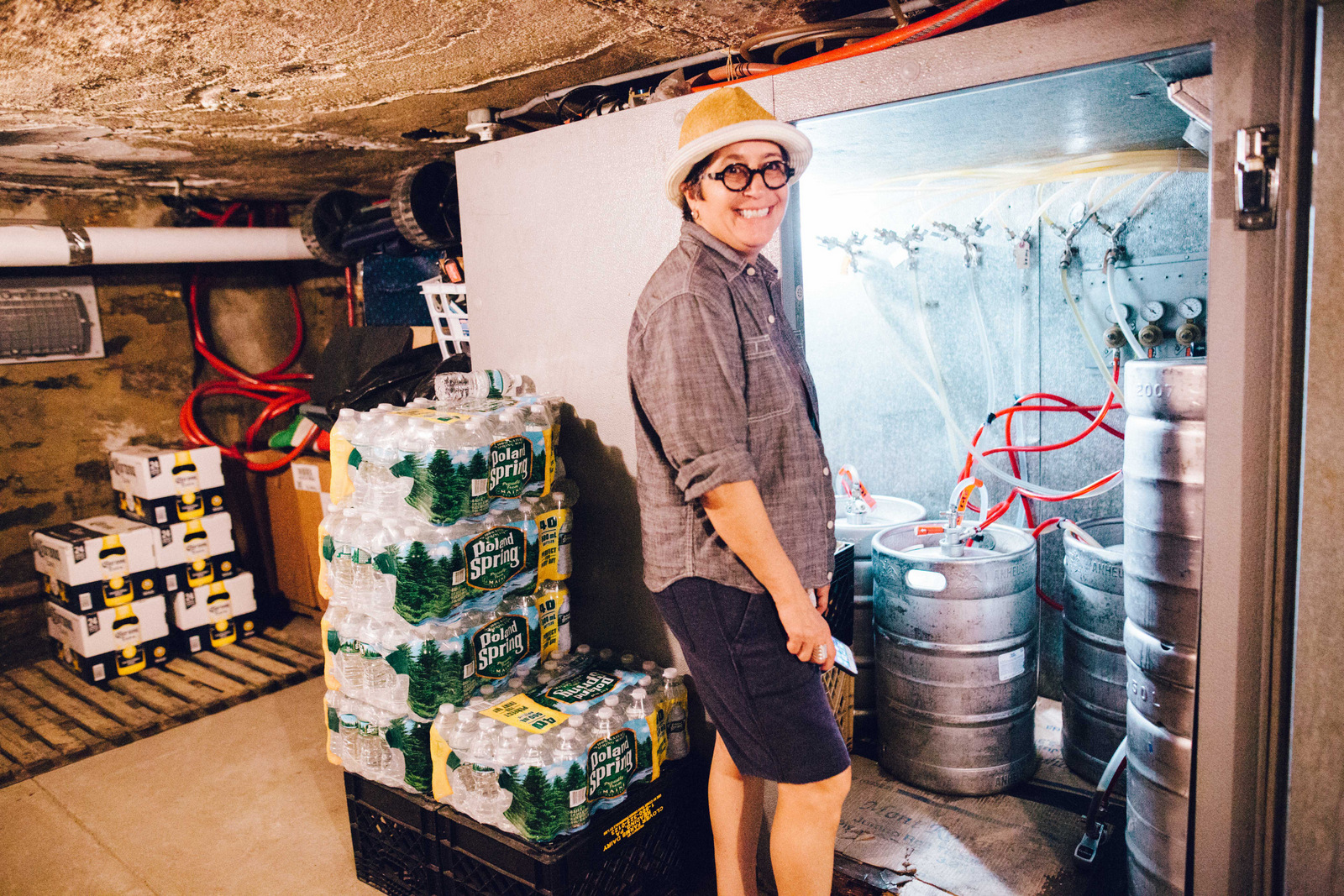
Beer and keg room
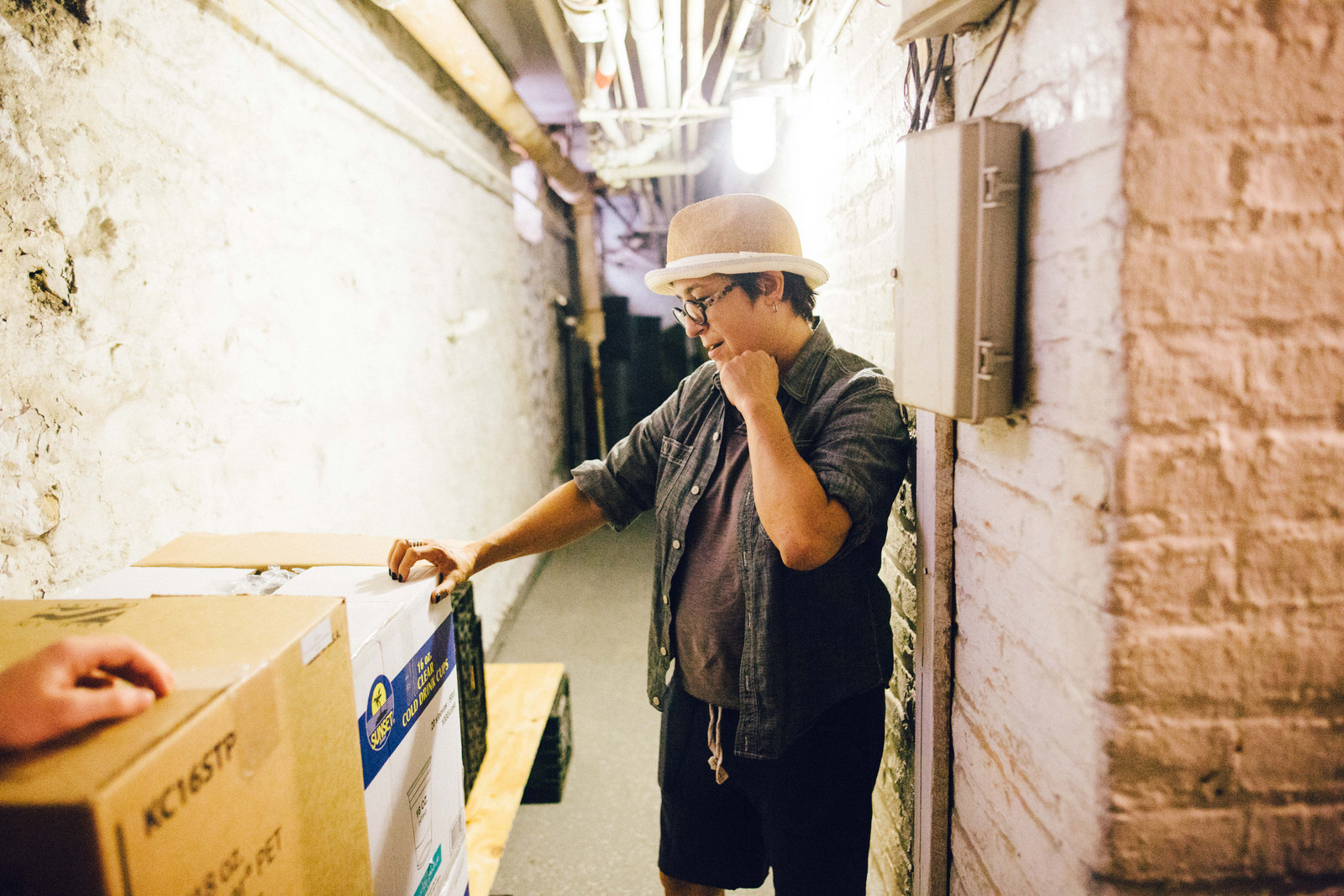
Locating a missing solo cup supply
On the day I was with her she was working on the largest event for women during NY Pride, Siren. This event is largely made possible because of her community ties. She transforms Pier 15, which is essentially a concrete slab on the East River, into an open air nightclub. For one evening it becomes a safe space for the community.
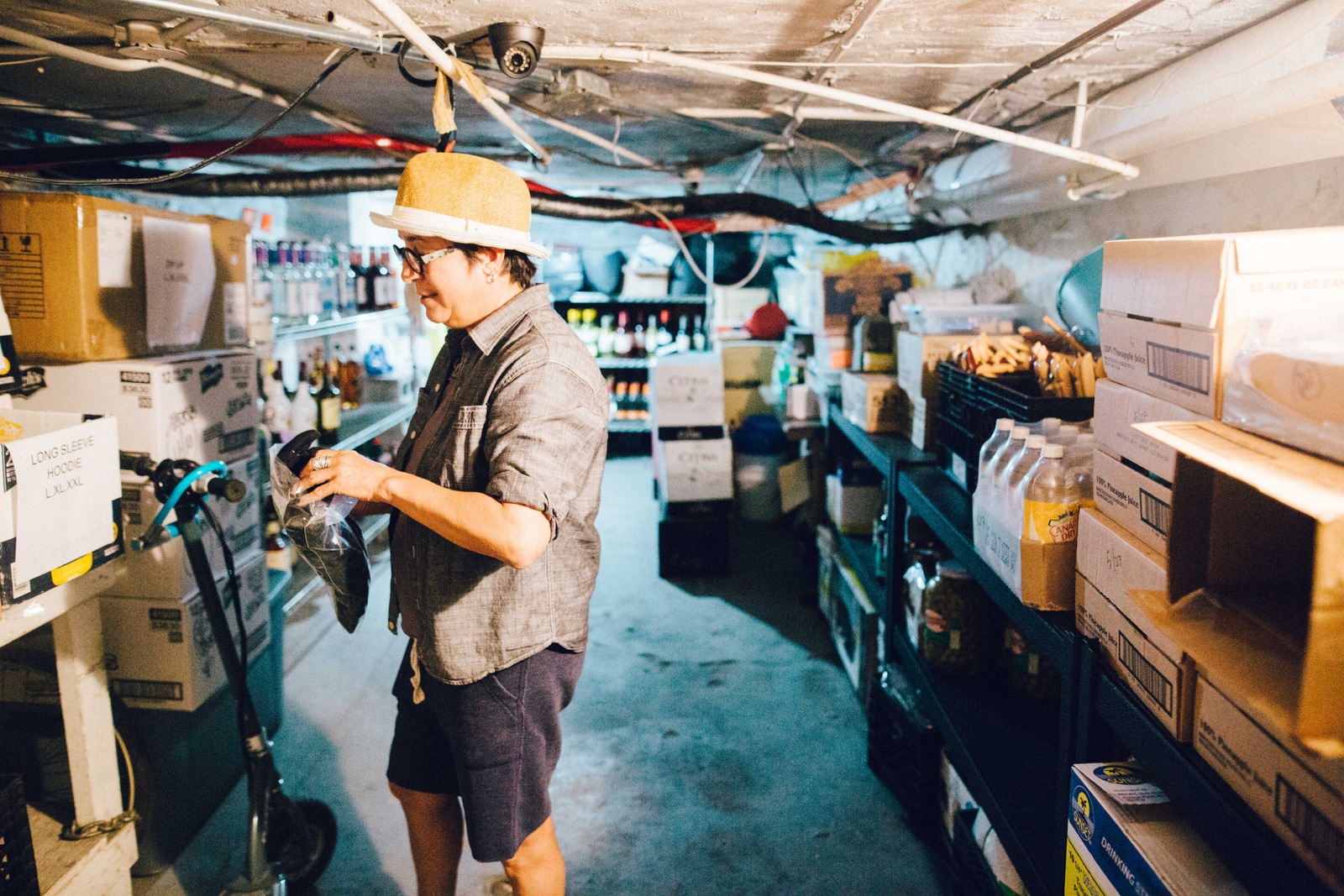
Her evenings are filled with community board, fundraisers, and events like the One Year Memorial for Orlando at Stonewall. She used her space as the staging for the start of the march.
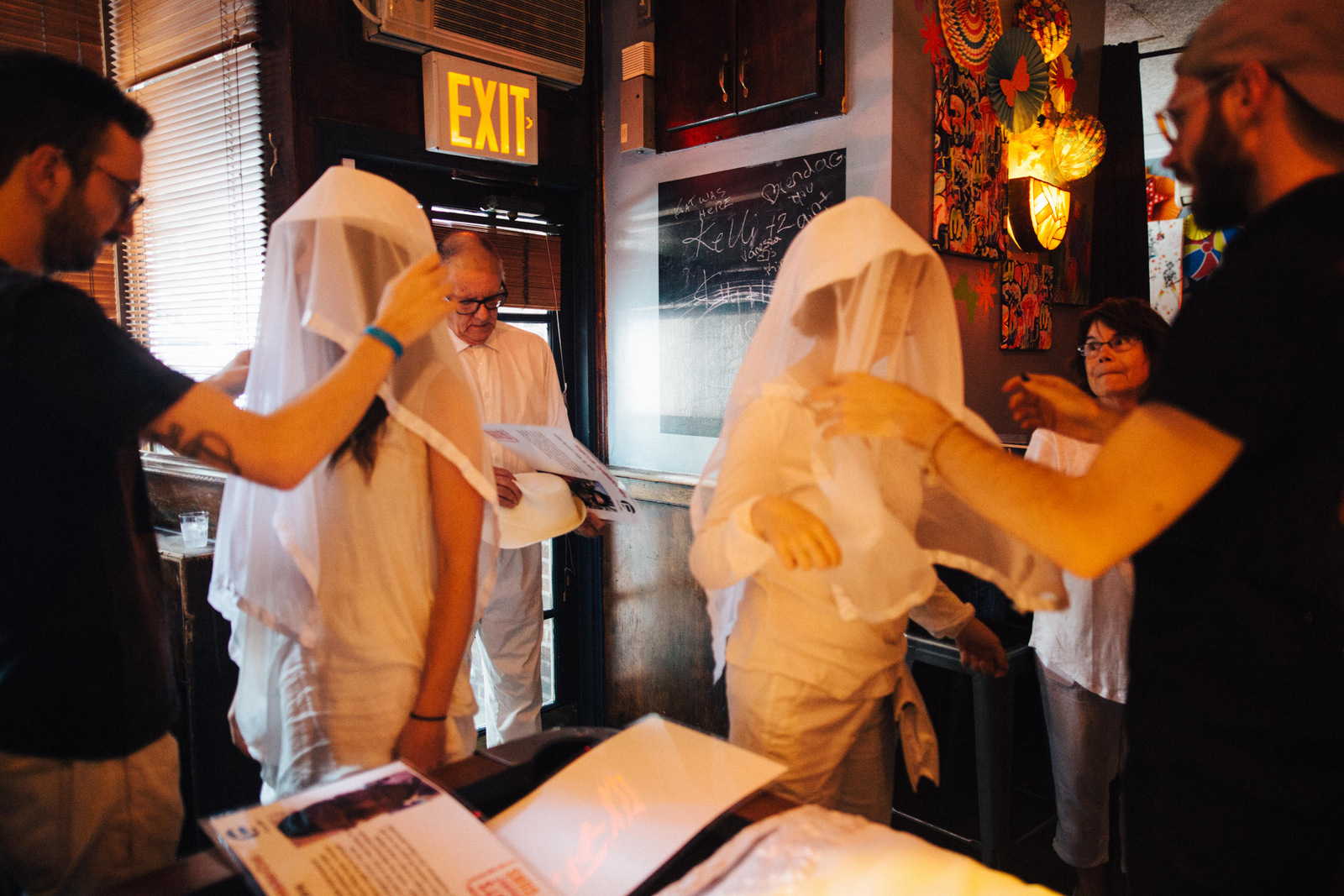
Participants getting ready
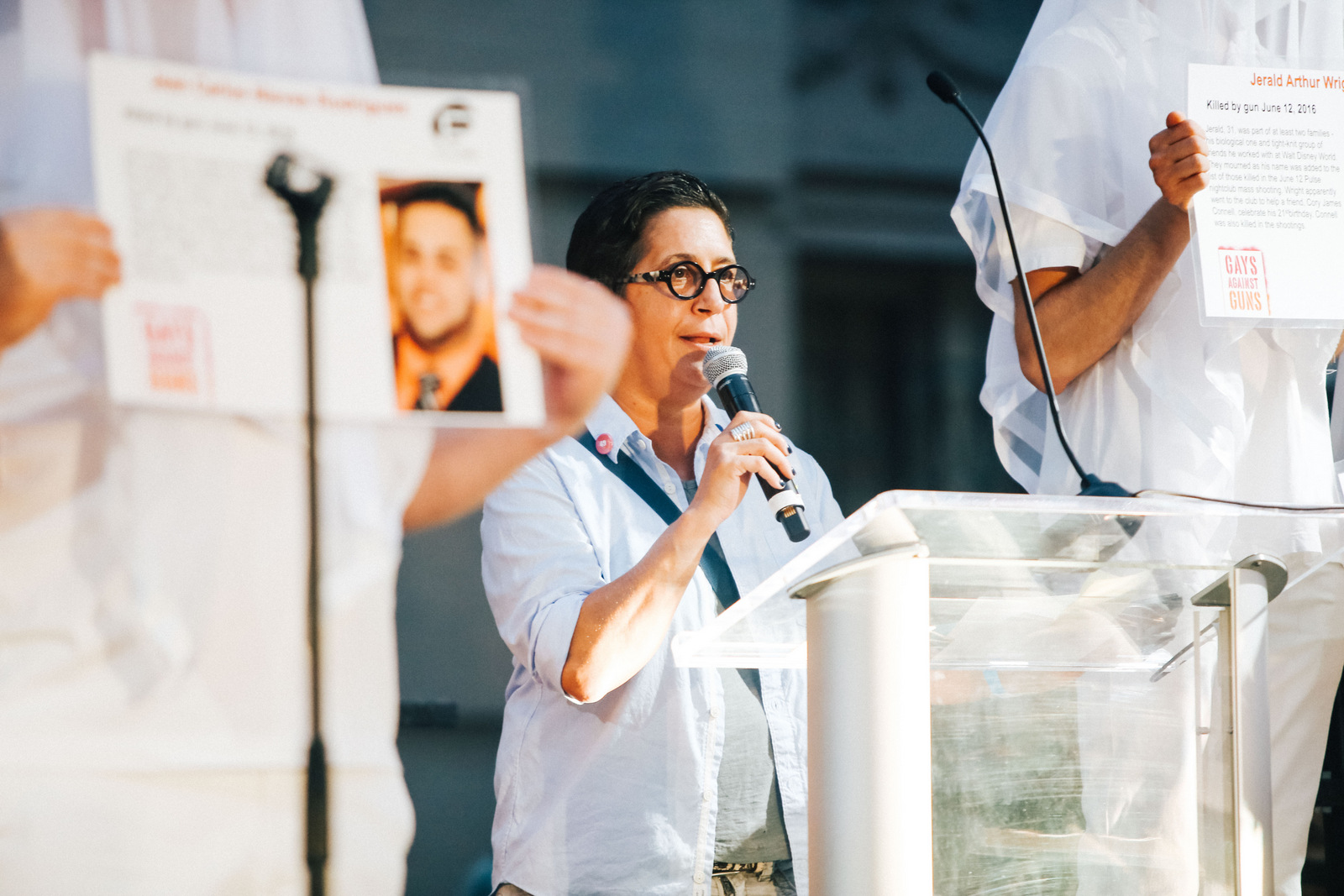
Lisa honoring victims of the Pulse massacre
So is this a typical day?
Okay, well, you’ve spent a bit of time with me and have seen first-hand how action-packed things can be. (Side note: this is so true. The phone didn’t stop ringing with questions like where do we put the table to a coca-cola order needing to arrive on time to a community leader asking for help.) I am an ardent activist and that’s what gets me out of bed in the morning. That said, I may be immersed in Henrietta stuff like booking talent, planning special events, working with not for profits and always engaged in the community to see what needs attention.
If you find yourself in NYC check out Henrietta Hudson and if you’re there on Pride Saturday 6/24 check out Siren! This year a portion of proceeds will benefit Planned Parenthood.
Is Somebody Bringing the Lentils to the SAGE Table? Is It You?
SAGE, the U.S.’s biggest and longest running advocacy organization for LGBT elders, is doing a really special, really essential thing on May 18. It’s called SAGE Table and it’s a chance for young queer folks to come together and share a meal with elders from the community. You can be a part of it by either hosting your own table or joining one of the 171 tables already planned around the country. Brunch in Saratoga! Borscht and bread and a fire pit in Anchorage! Potluck dinner in Tallahassee! As the Trump administration seeks to erase LGBT people from two different annual government surveys that determine the needs of older Americans, it’s time for us to reinforce our bonds between generations.
But don’t take my word for it; Whoopi Goldberg, Judith Light, Jane Lynch, Janet Mock, Sarah Paulson, Holland Taylor, and Sia also think you should be a part of this very important thing, too.
We want to shine an extra special light on this event, so if you attend a SAGE Table, we’d love for you to take some photos and write about your experience for an Autostraddle roundtable. Tell us where you shared a meal, what you ate, who you met, tell us what you learned and what we can do to continue to support the LGBT folks who paved the way for us. To participate, email me (heather at autostraddle dot com) by May 25th with the subject SAGE TABLE. I’ll compile our readers’ stories together!
In the meantime, you can team up with SAGE to fight back against Trump’s plan to erase LGBT elders by joining their letter writing campaign.
I can’t wait to hear your stories!
PHOTOESSAY: Krave Spring Break with Amber’s Closet
The Dinah wasn’t the only party in Palm Springs this weekend — Krave Spring Break took over the Saguaro Hotel just down the road. I met up with Amber of Amber’s Closet to experience a couple days in her life as an influencer and YouTuber while raging at Krave. Basically, she’s never off the clock, even when the party is off the chain.
If you hang out on YouTube, you’ve probably heard of Amber. If you haven’t, you might have seen her hosting a party, speaking on a panel, or volunteering at the LGBT Center. She started her channel “to help others that may be struggling with their identity, to break stereotypes, as well as to showcase her unique androgynous/tomboy style,” and her channel is full of challenges, comedy skits, motivational videos, vlogs, conversations about LGBTQ issues, and more.
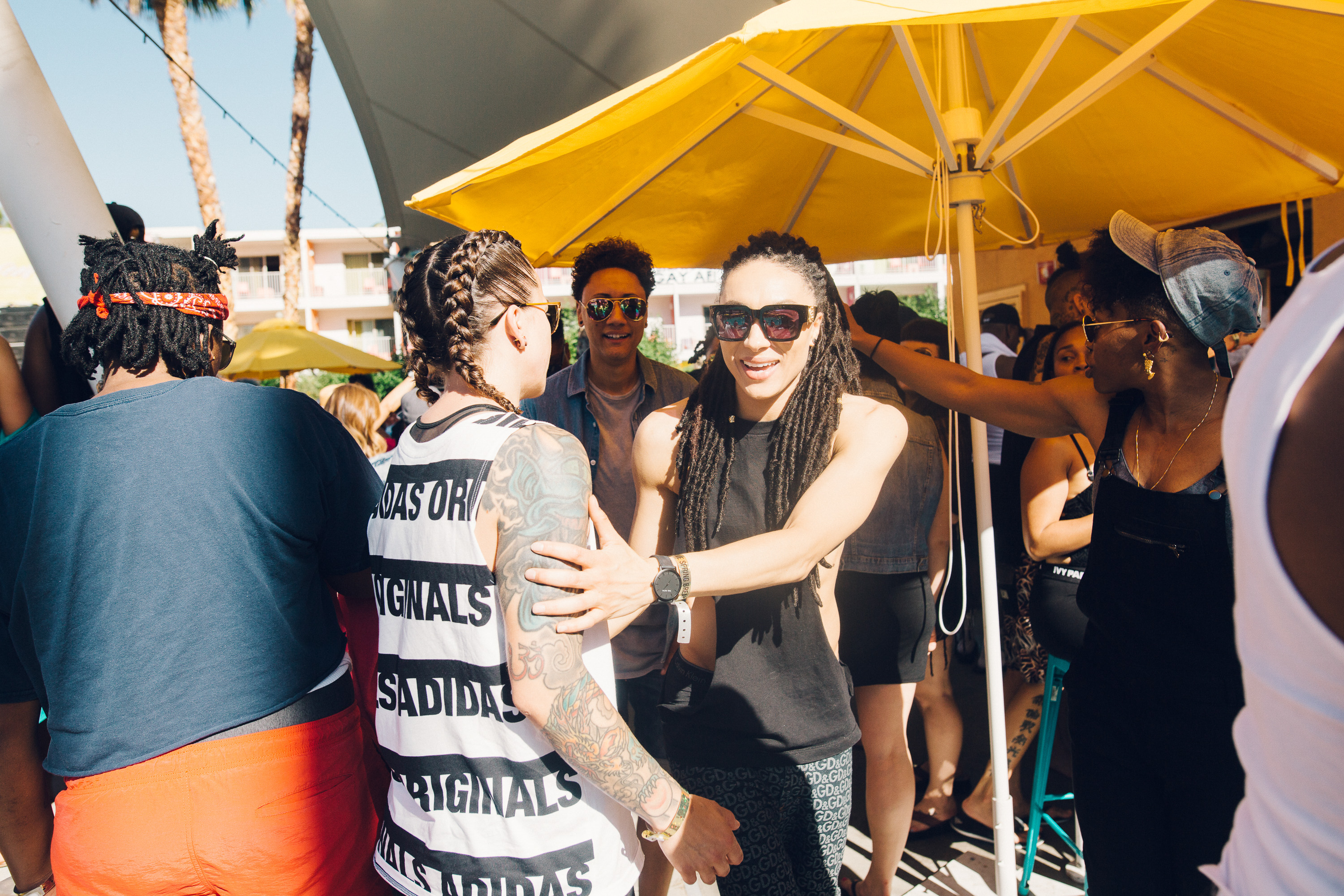
Amber and Whitney Mixter (founder of Krave also idk if you’ve seen the Real L Word…)
Immediately upon meeting up, we were swept into the party—with her stopping every few feet to say hi to friends and fans. Her comfort, and willingness to be open, has lead to her success, and it was super evident why: She talked to every single person we crossed paths with and all of them left with a smile.
The entire time she was either recording videos, making someone feel good, or dancing her heart out.
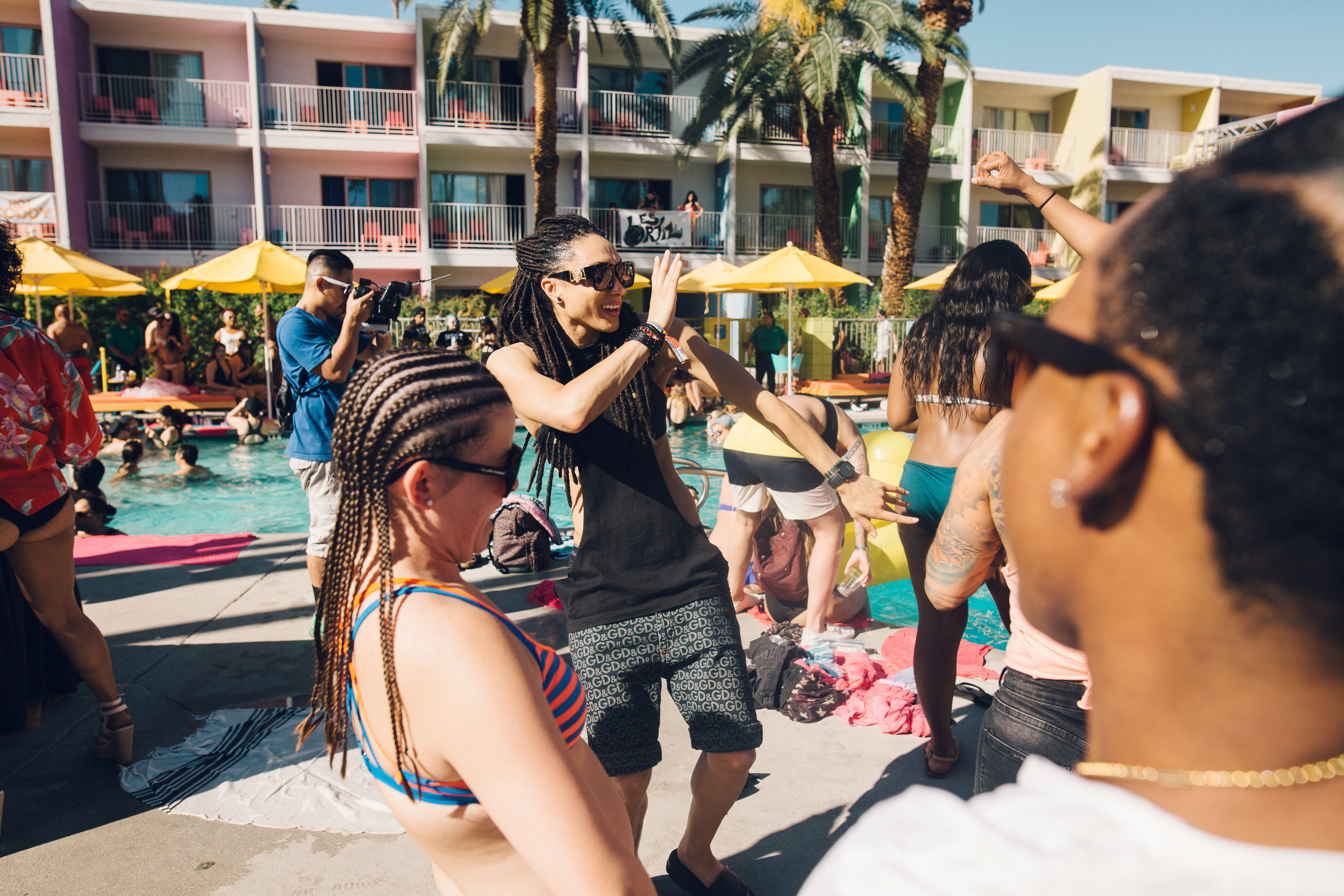
When did you start creating? What inspired your channel?
I started creating YouTube videos for fun about four years ago, and then it started to take off. At this point, I have been doing it full time for almost three years now. My biggest inspiration for my channel, are my subscribers. I started making videos about growing up bi-racial, my difficulties with dressing how I wanted to dress and my steps towards coming out. I didn’t realize that so many people could relate to it. So reading comments, getting emails or meeting my followers in person, really makes an impact on me and my life; and now I feel a sense of responsibility to keep up with the videos and become a voice for many that do not have one.
What’s your process?
My process is all over the place. Sometimes an idea comes to me at random times and I write it down and want to create it in the near future. Some ideas pull me to create them right away. I also try to keep up with trending topics or popular challenges. One things that I do that I feel has directly contributed to my success is asking my subscribers what they want to see from me—and then creating it! I try to post at least twice a week; and when you are a one person show doing lighting, camera set up, editing, promoting and of course being the personality in front of the camera; it’s a lot of work.
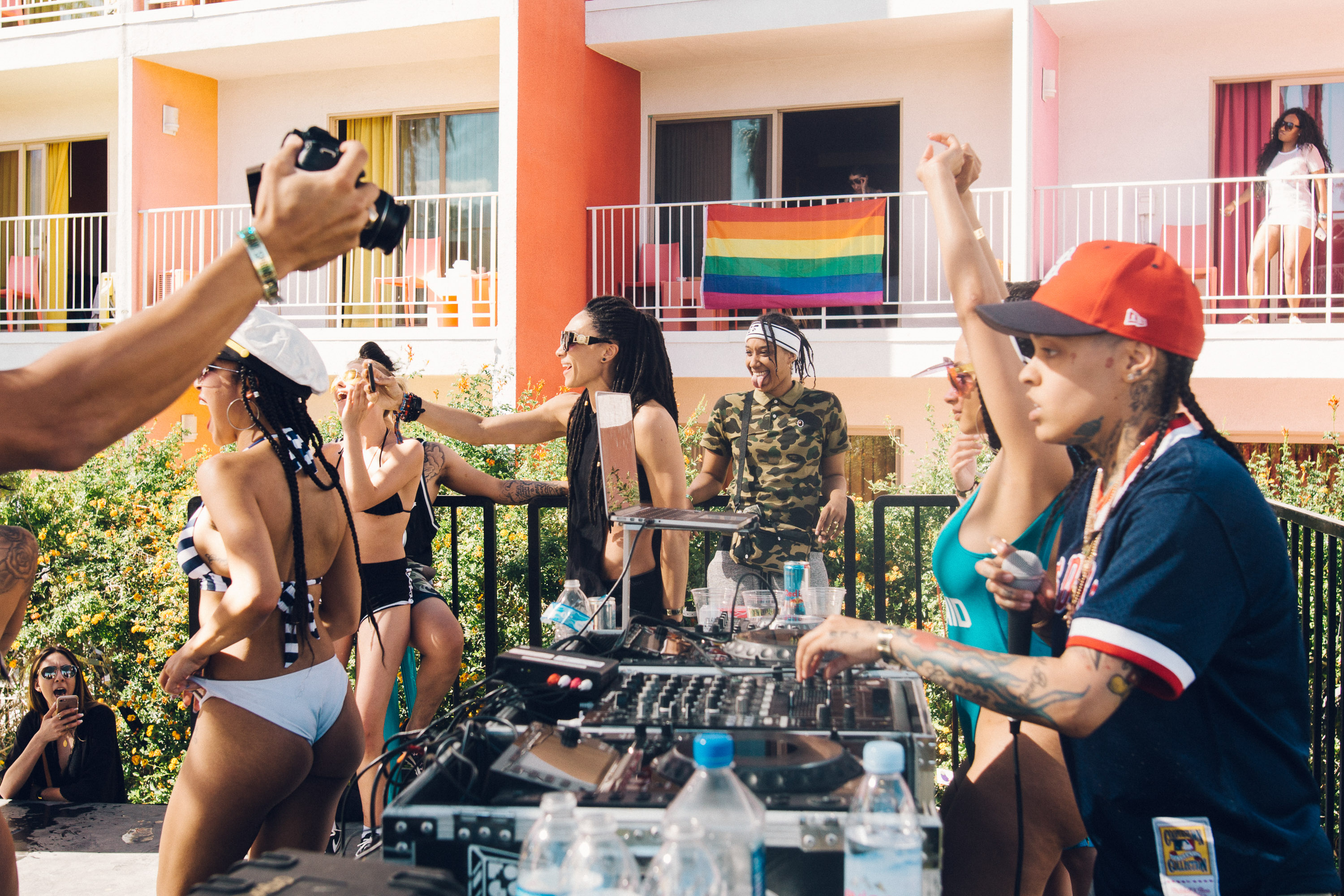
What’s an average day like for you?
Each day is different. Some days I may be at home working on the computer all day or filming videos, or one day I could be out speaking or hosting at an event, or on set acting. I also get sent out of town a lot. I try to set up different days to film videos, edit videos, reply back to emails, do live broadcasts, etc. Overall, I am ALWAYS juggling a thousand things at once.
And how are parties like Krave work for you? What’s fun about them?
I love hosting parties because it’s a fun way to meet a lot of my followers at once. I love to have fun and I love making people have a great time. I like to be the one on the dance floor getting others to dance, or on the mic getting everyone pumped up.
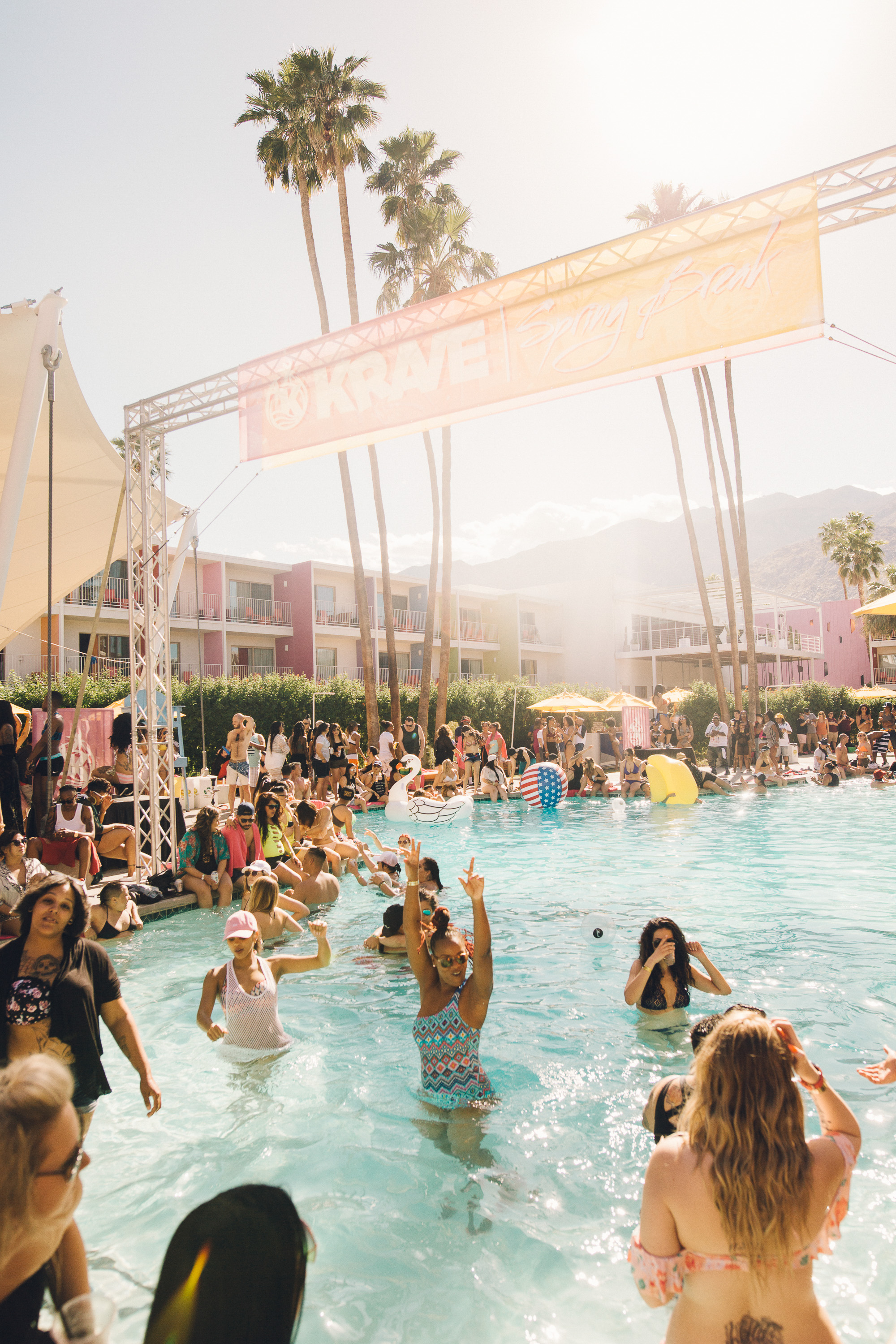
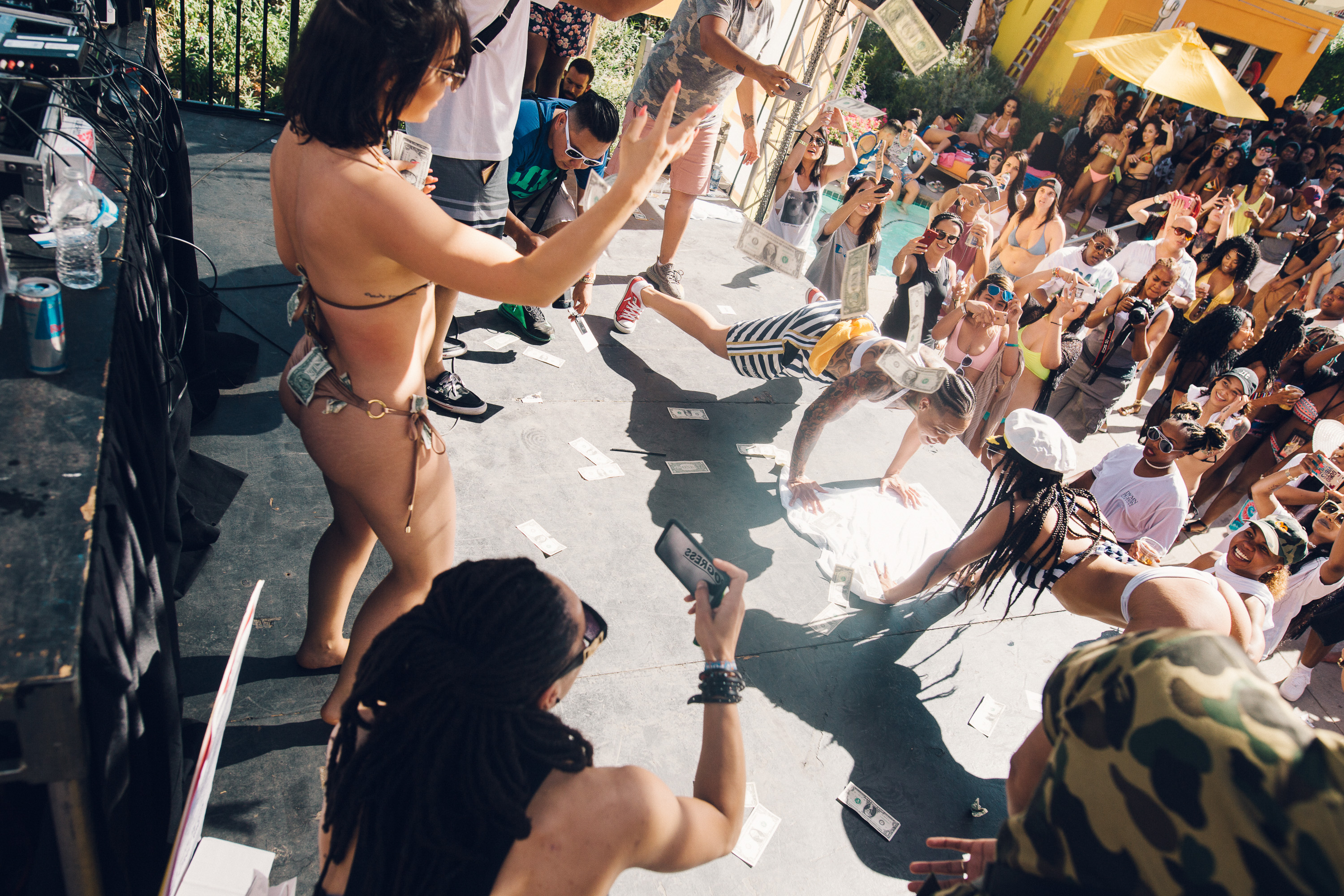
You are constantly running into friends and fans at a party like Krave — do you feel like you have to be “on” all the time?
Most definitely. I think that is a major part of being an influencer at a big event or being that person that knows a lot of people, but it is also a natural personality trait of mine. I love meeting people and getting to know them. A lot of times people come up to me at events and start to tell me about how certain videos of mine changed their life or made them feel better about themselves, and that is the best part of it. They make me feel important and inspire me to keep going, and I want them to feel important in my life as well.
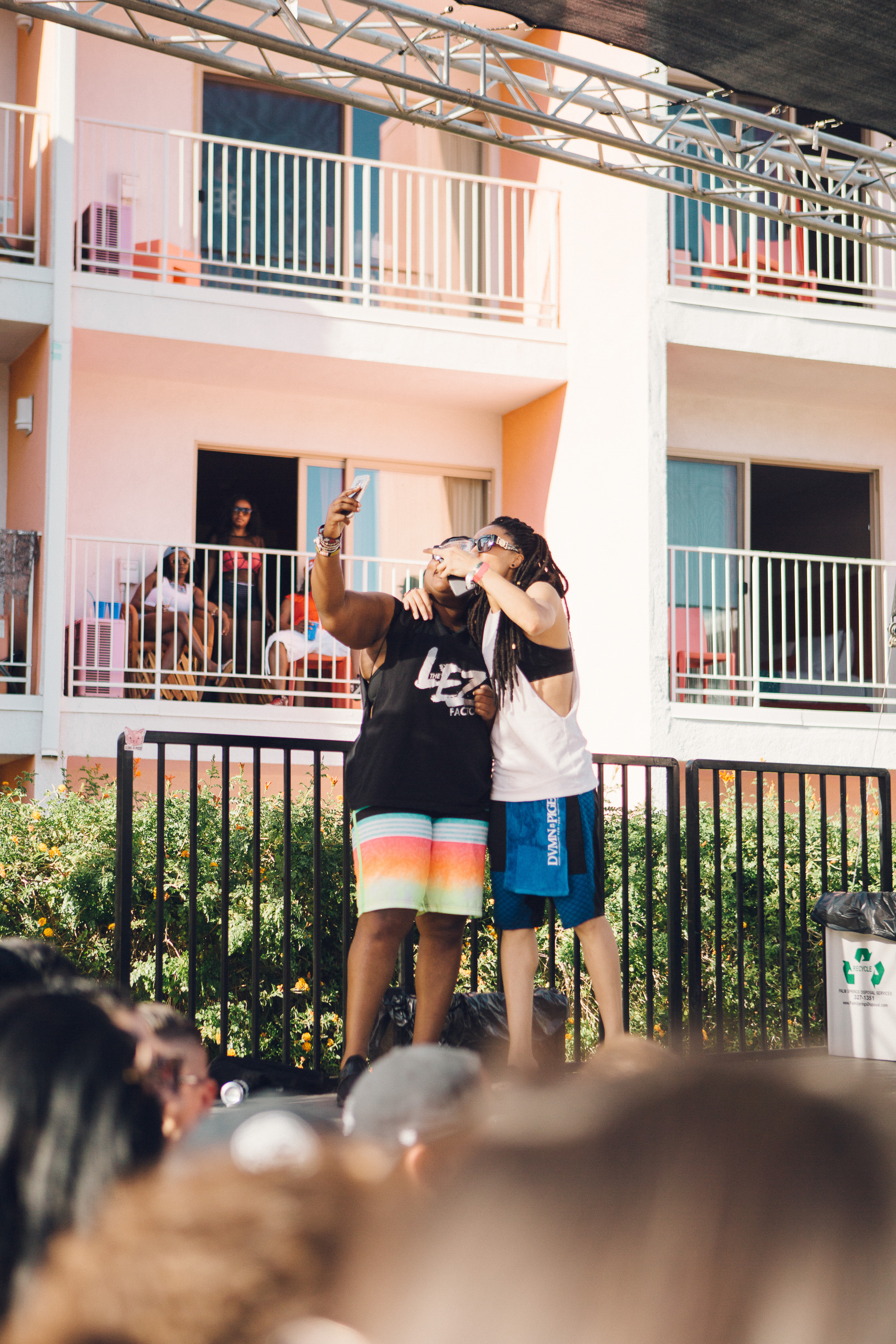
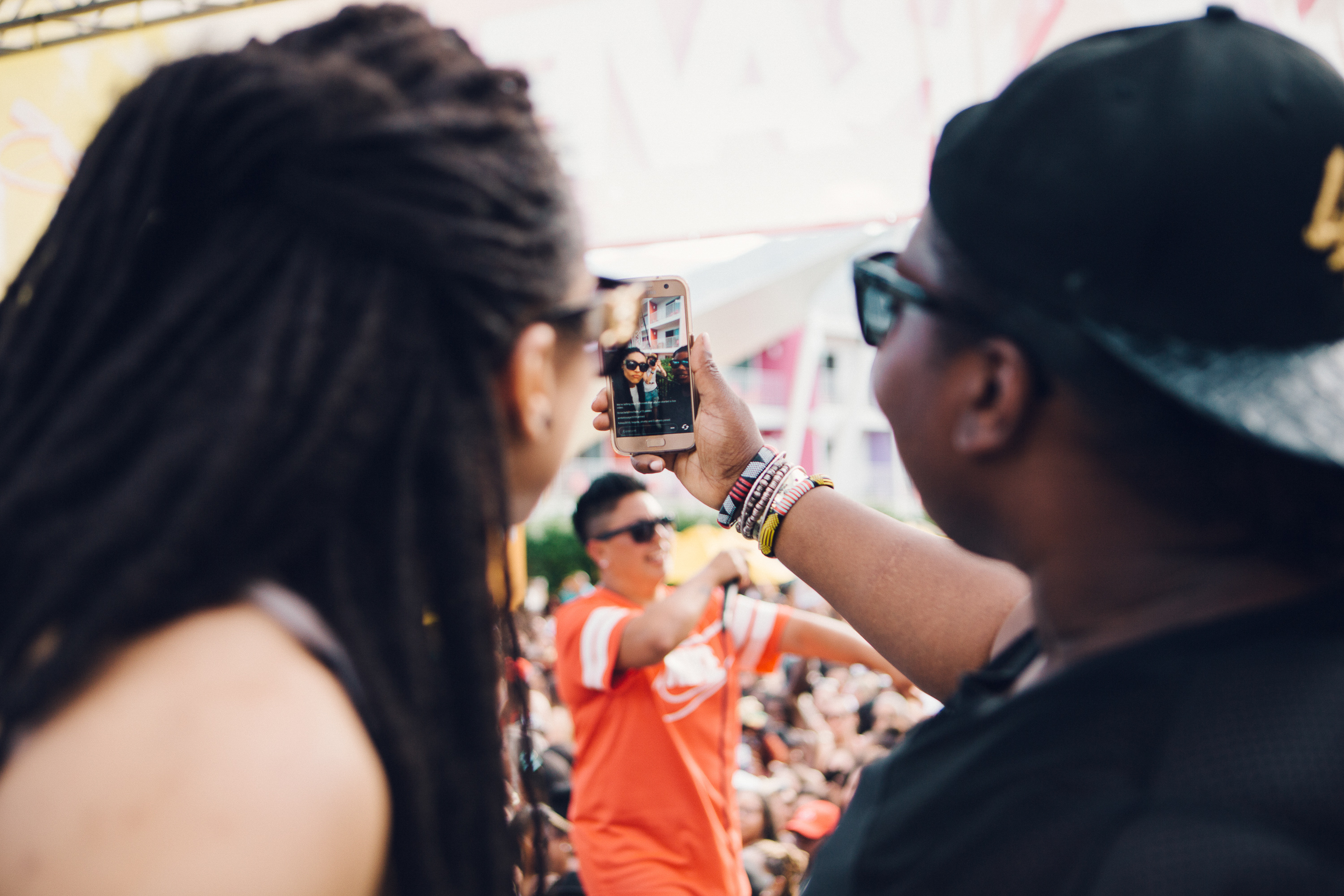
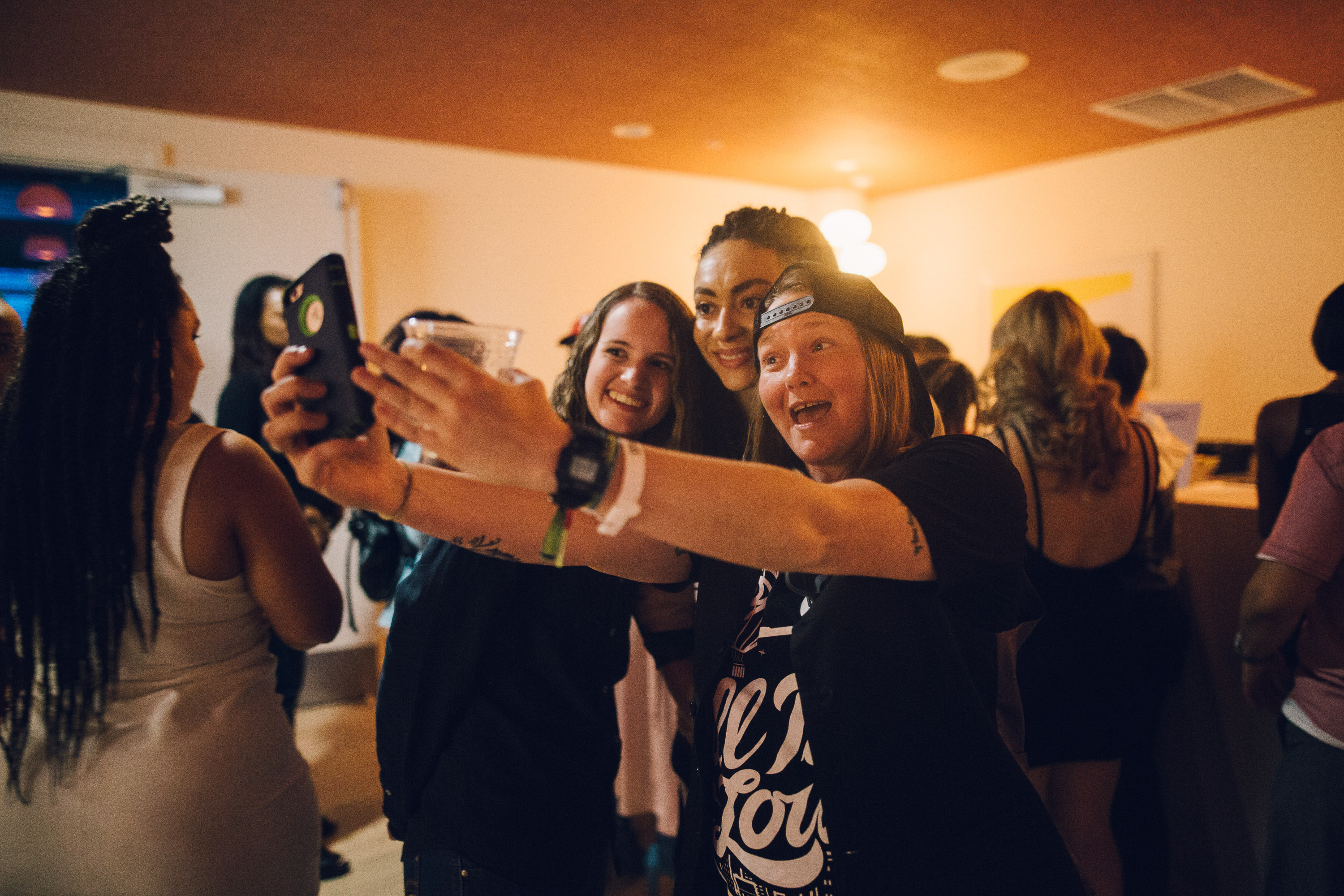
Earlier in this wild day, Amber actually had to dip on over to the Dinah a couple of times for the Stuzo Clothing Fashion Show (and walk-through and fitting, which happened to be super early in the morning).
You had to go back and forth between Dinah and Krave — how is that typical for you and your life?
Man! That was tough! I was running on no sleep to be able to make it to events at both places. But I love being able to move around freely. That is an example of what life is for me. I am always popping around from event to event, almost every single day.

She killed it tho
Because of the wildness, she actually didn’t have time to eat until pretty much everywhere was closed. While the evening started with plans for salmon and quinoa, we ended up in an Uber going through Taco Bell while she was supposed to be arriving at a party. It was still lit.

And don’t worry — she was still working.

And then it was party time.

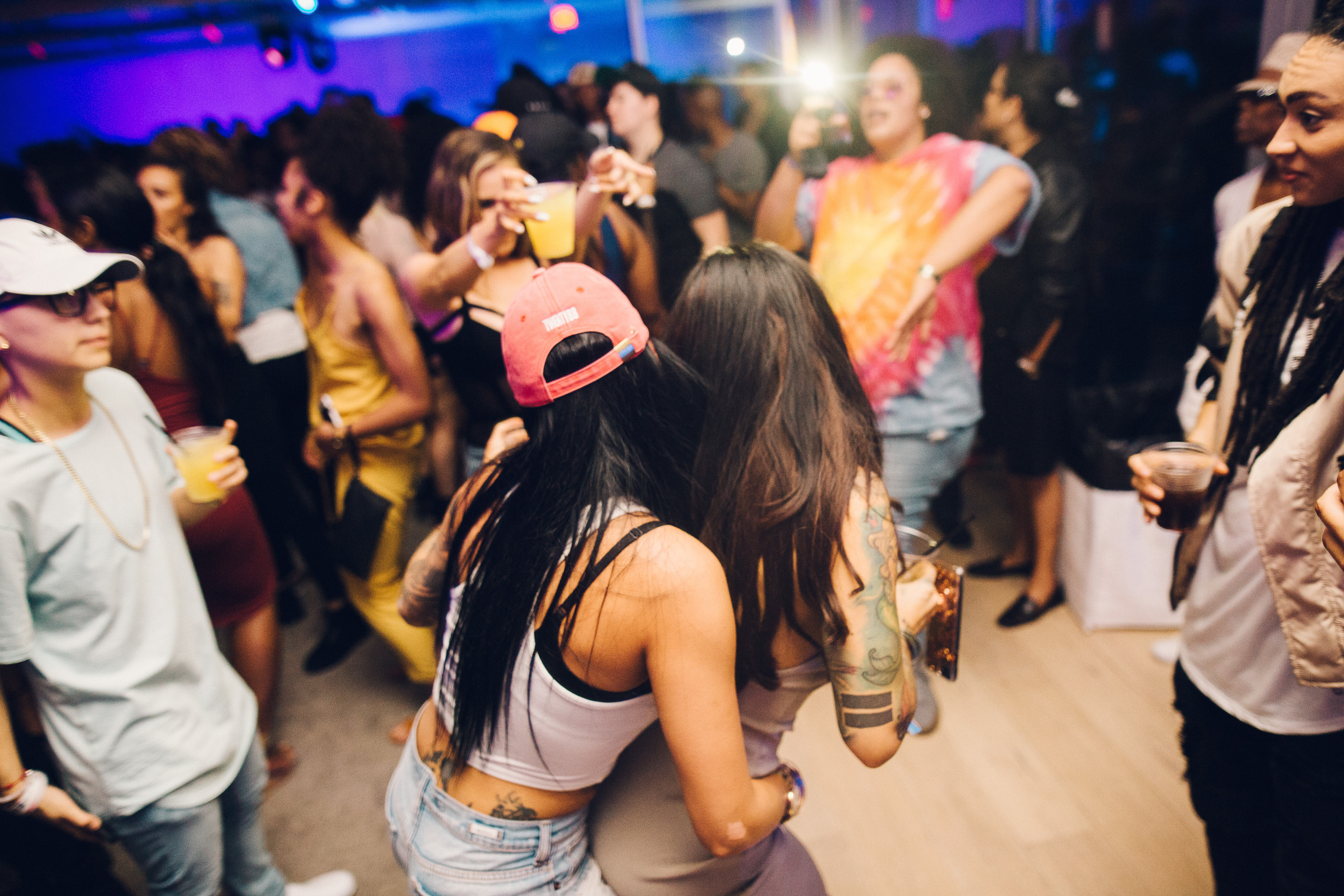
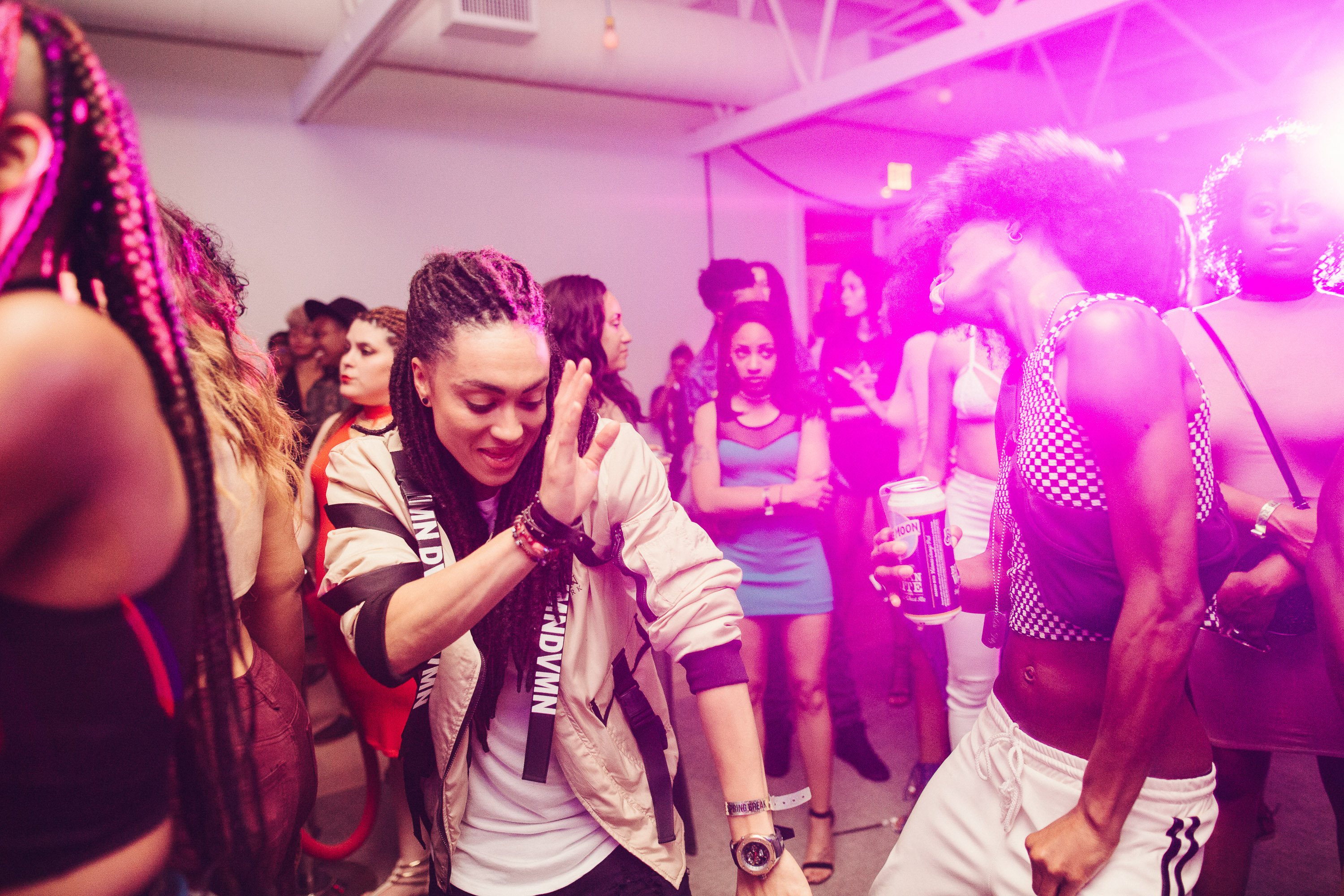
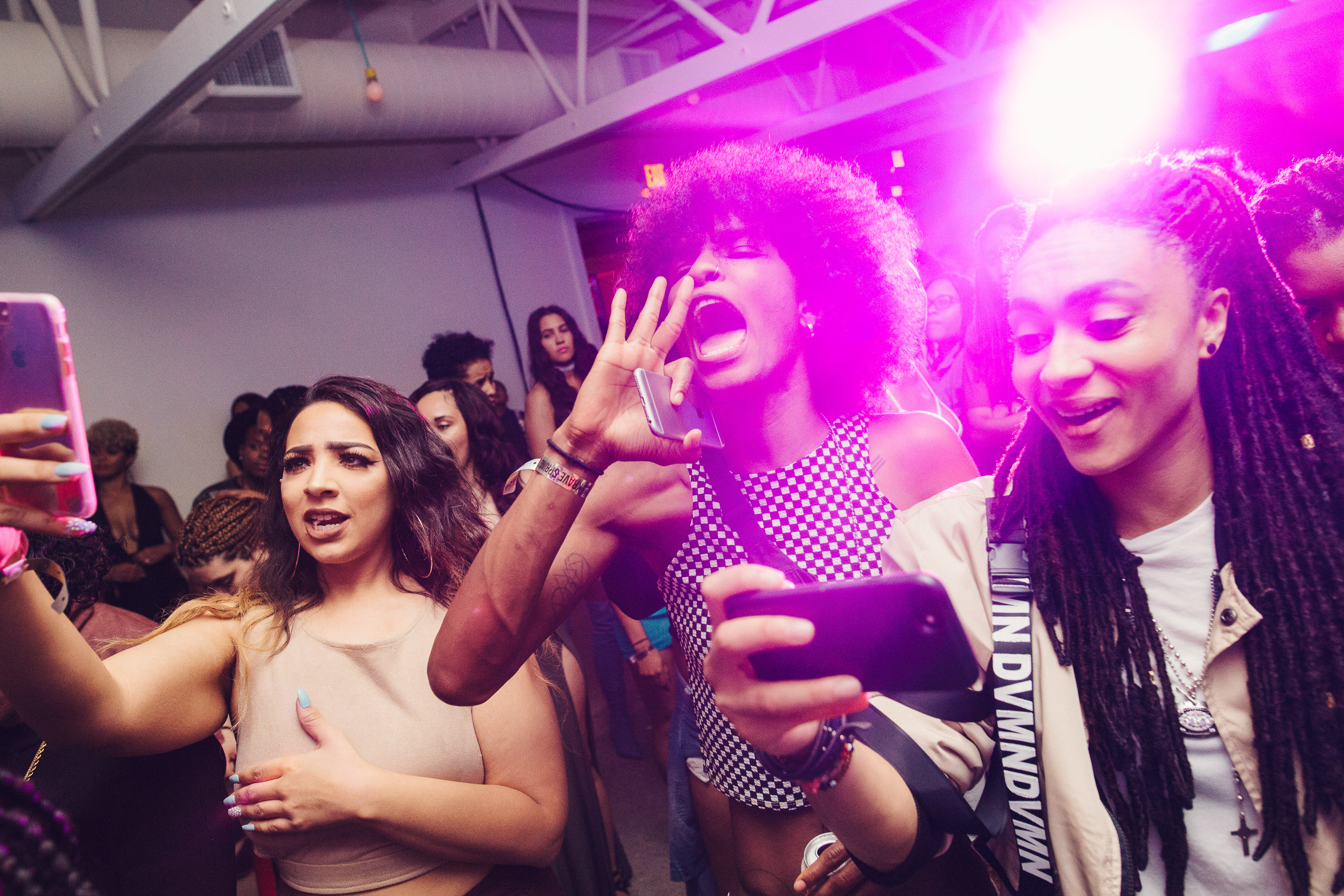
Then up again to do it again.
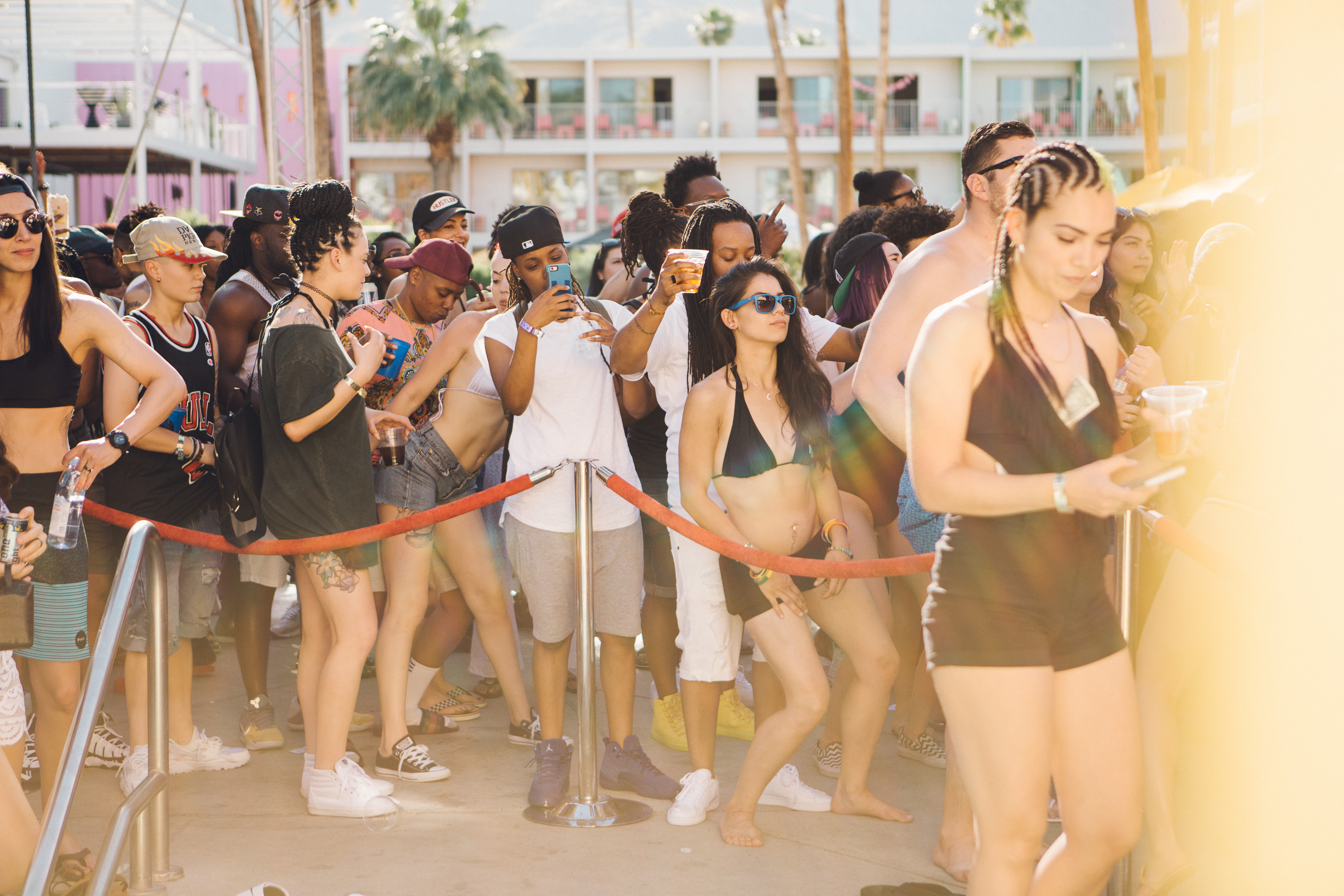
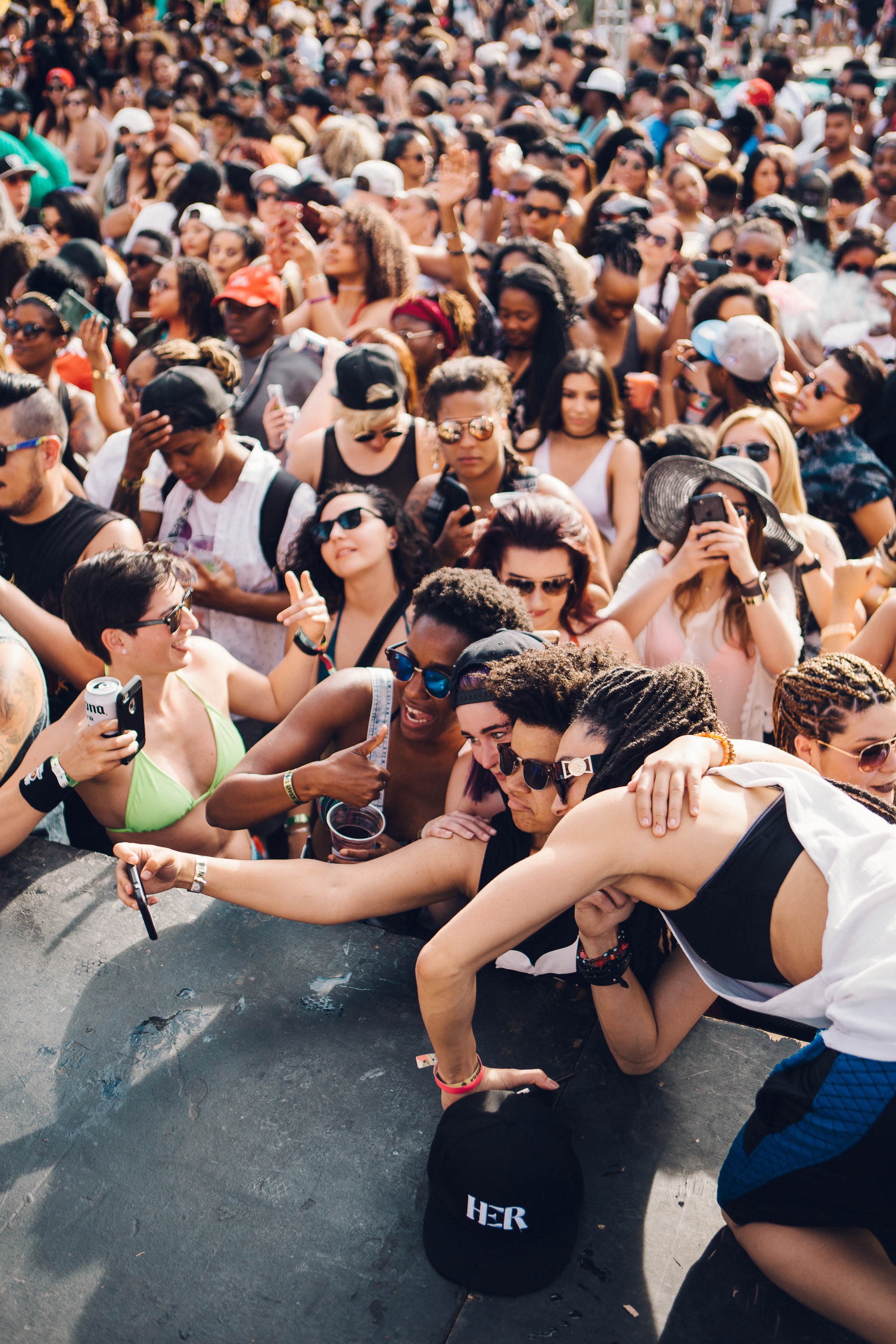
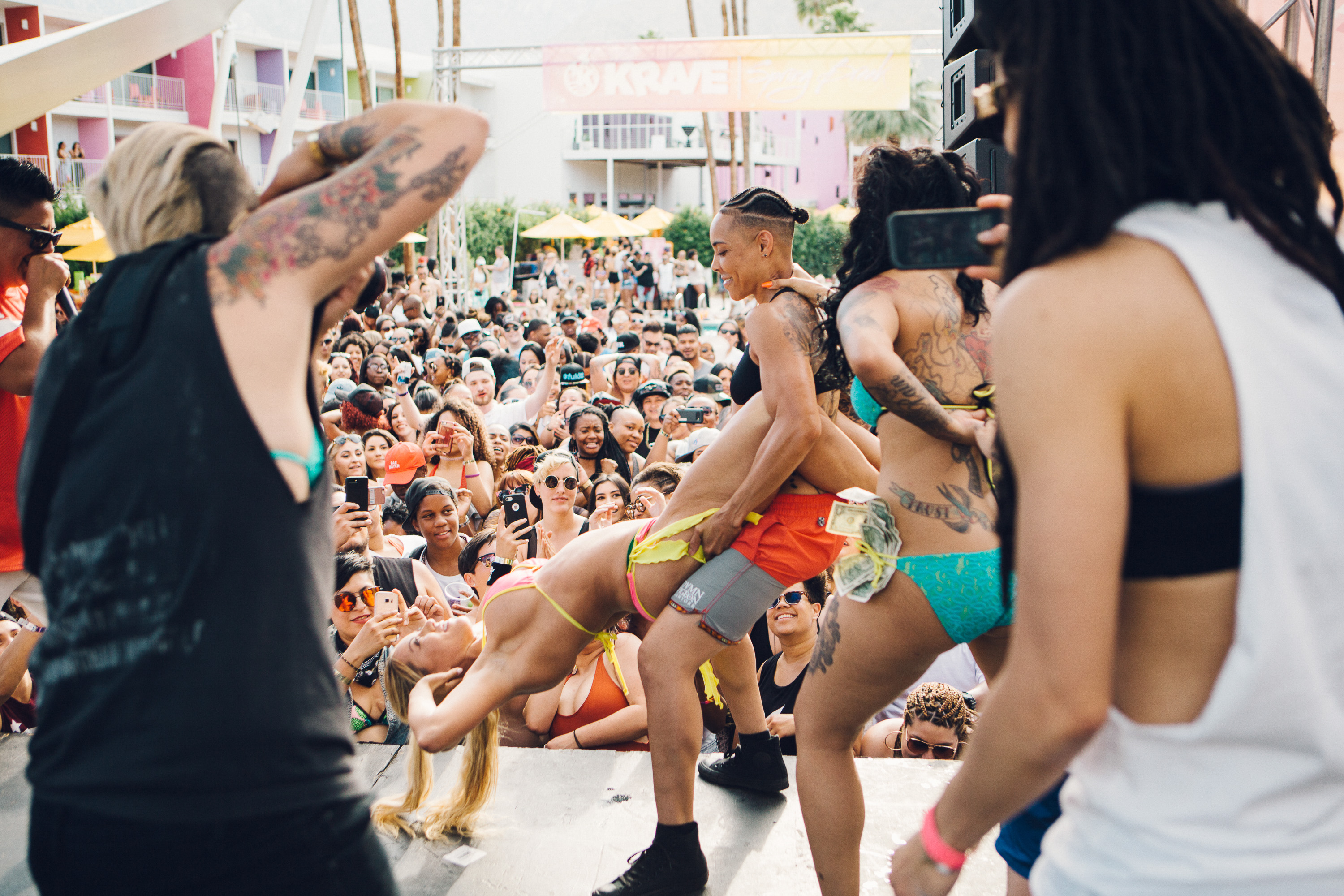
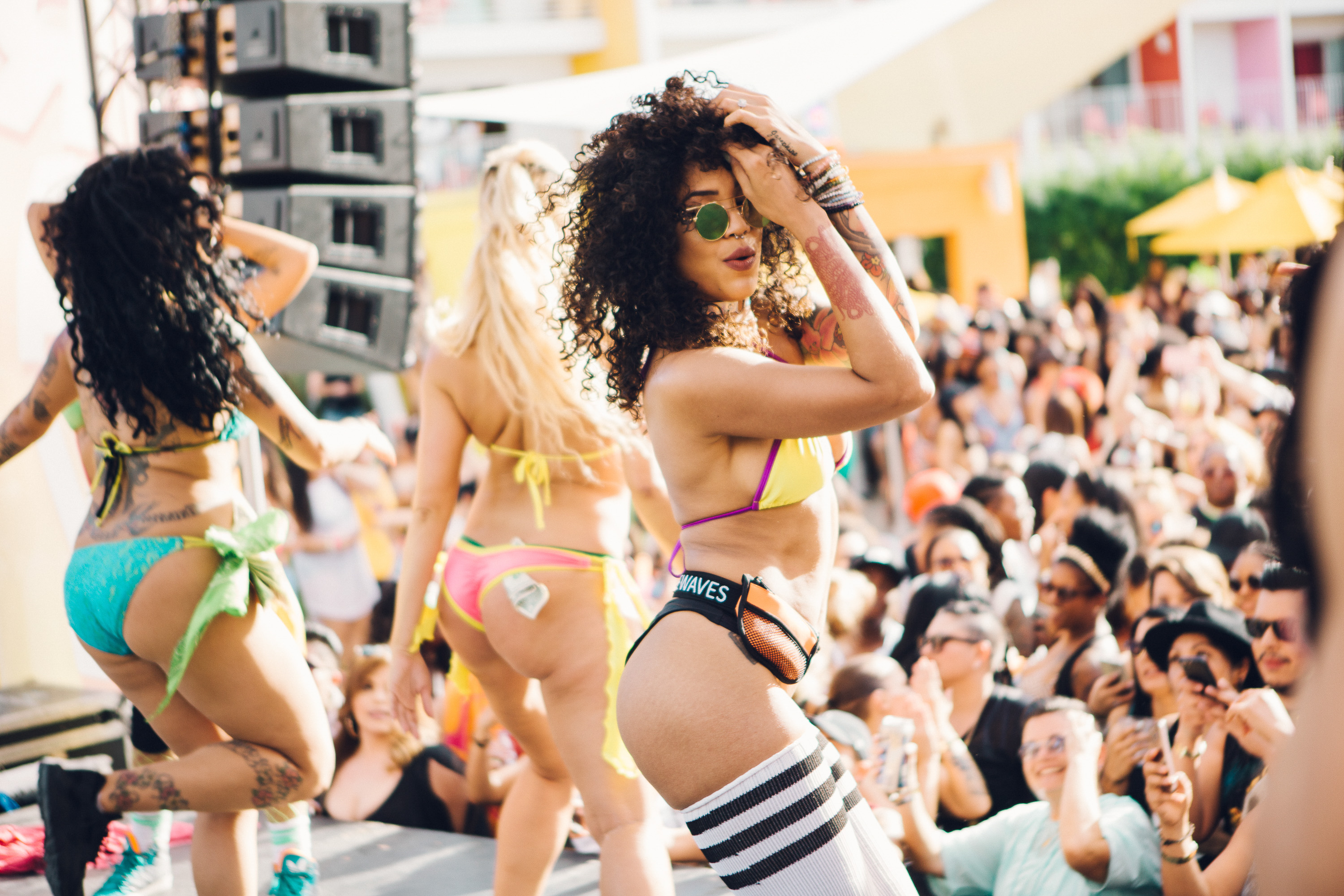
Wildest moment at Krave?
I think it had to be at Sunday’s pool party! We had Remy Ma there so it was so packed! So many people were handing me drinks, from my friends to subscribers; it was crazy! I was dancing on stage with the gogos and then we all jumped in the pool.
But a personal wild moment is being so tipsy with my friends that we walked in on a friend having sex, and didn’t even care…we just kept on partying as if it was nothing. I ended up drunk wrestling with a few of my friends. That was a lot of fun!

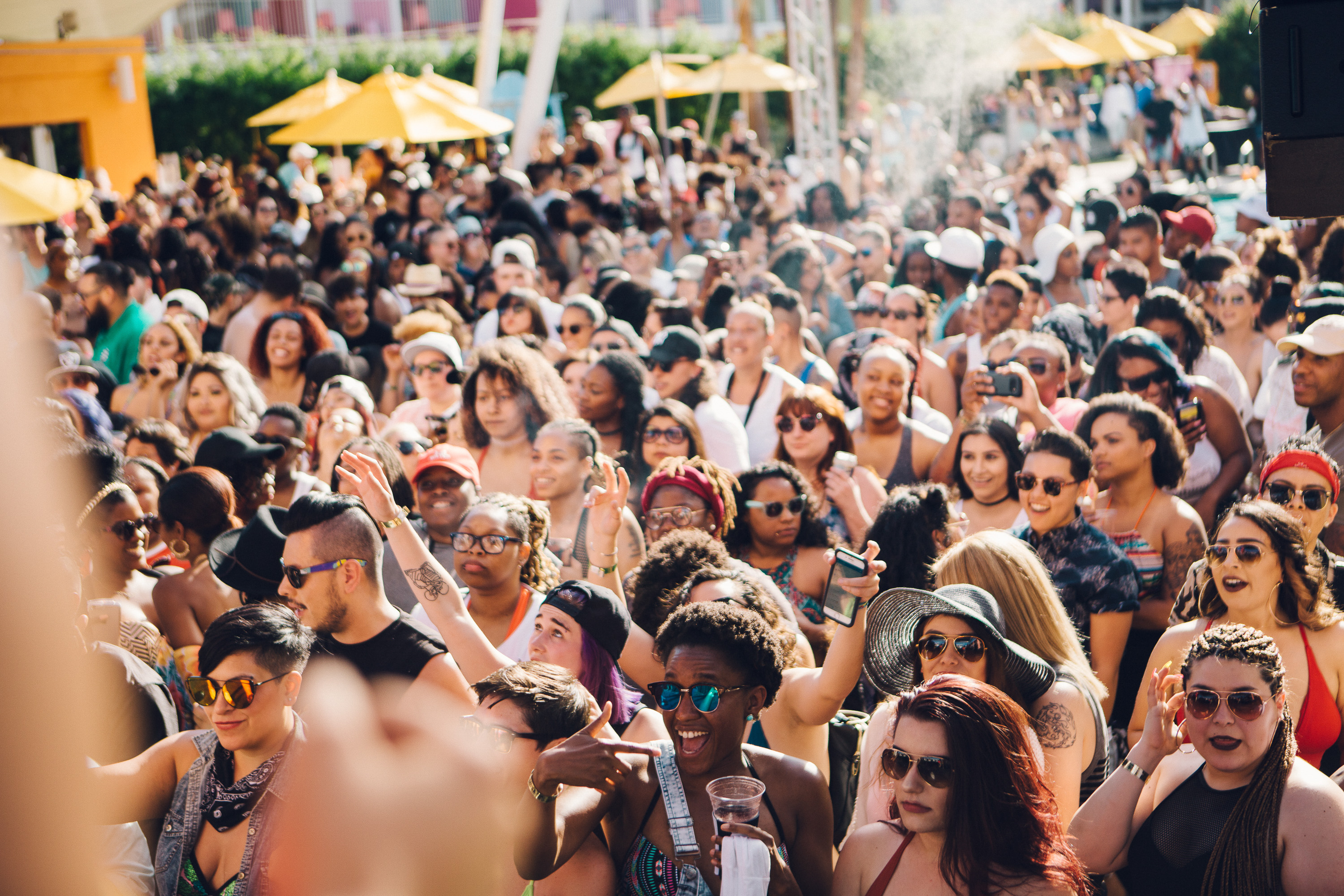
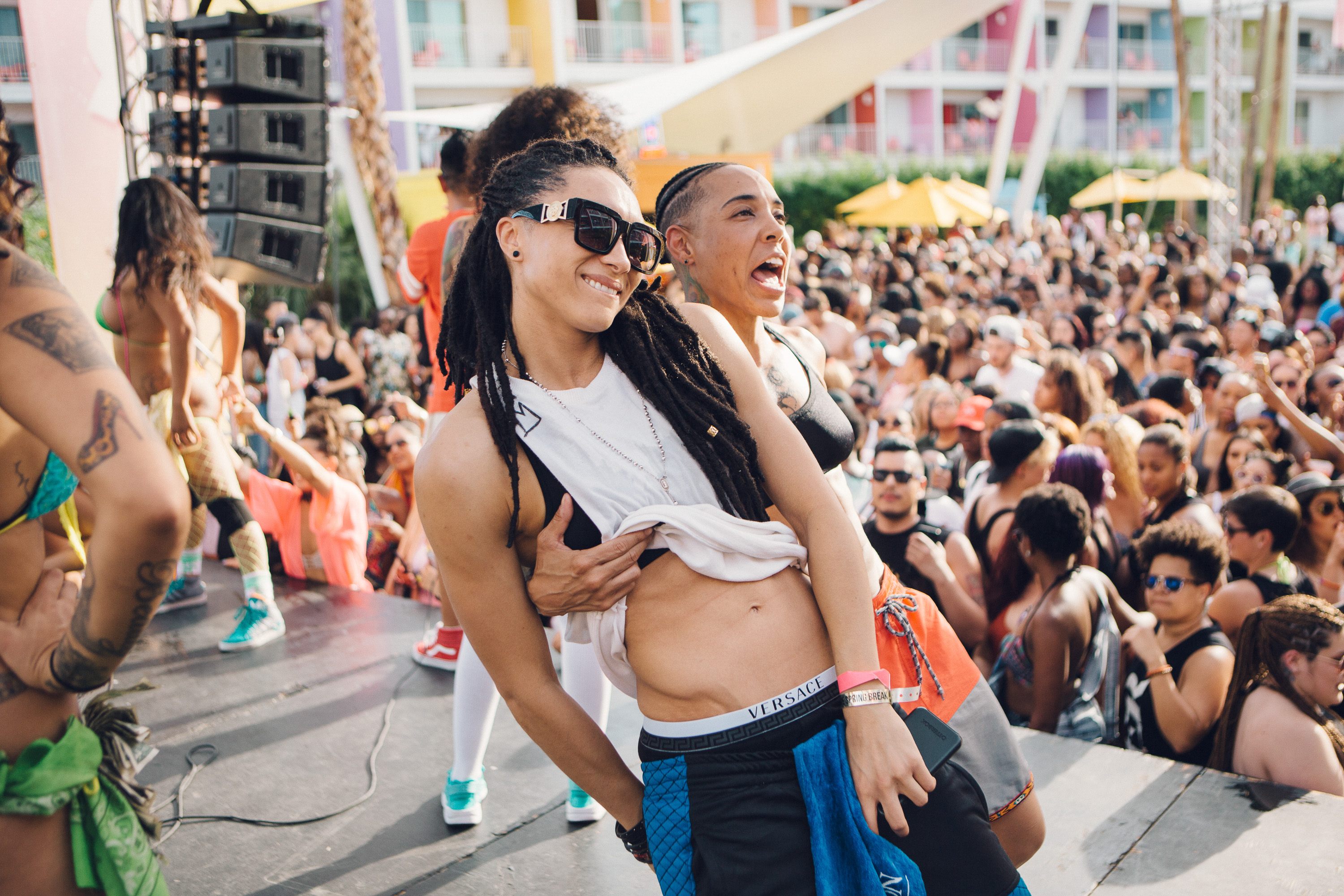
With Carter the Body
What do you want to convey with your platform?
I want people to love themselves and be comfortable with who they are. I want people that may live in a small town or that feel isolated, to know that there is so much more to life. I try to spread positivity, and I want to inspire growth, love, respect and care for things outside of yourself. I also love that I can open people’s minds by showing them a different way to think about things. I also feel a sense of responsibility to be an activist and talk about things that effect the world, such as voting or politics, LGBT rights, police brutality, etc.
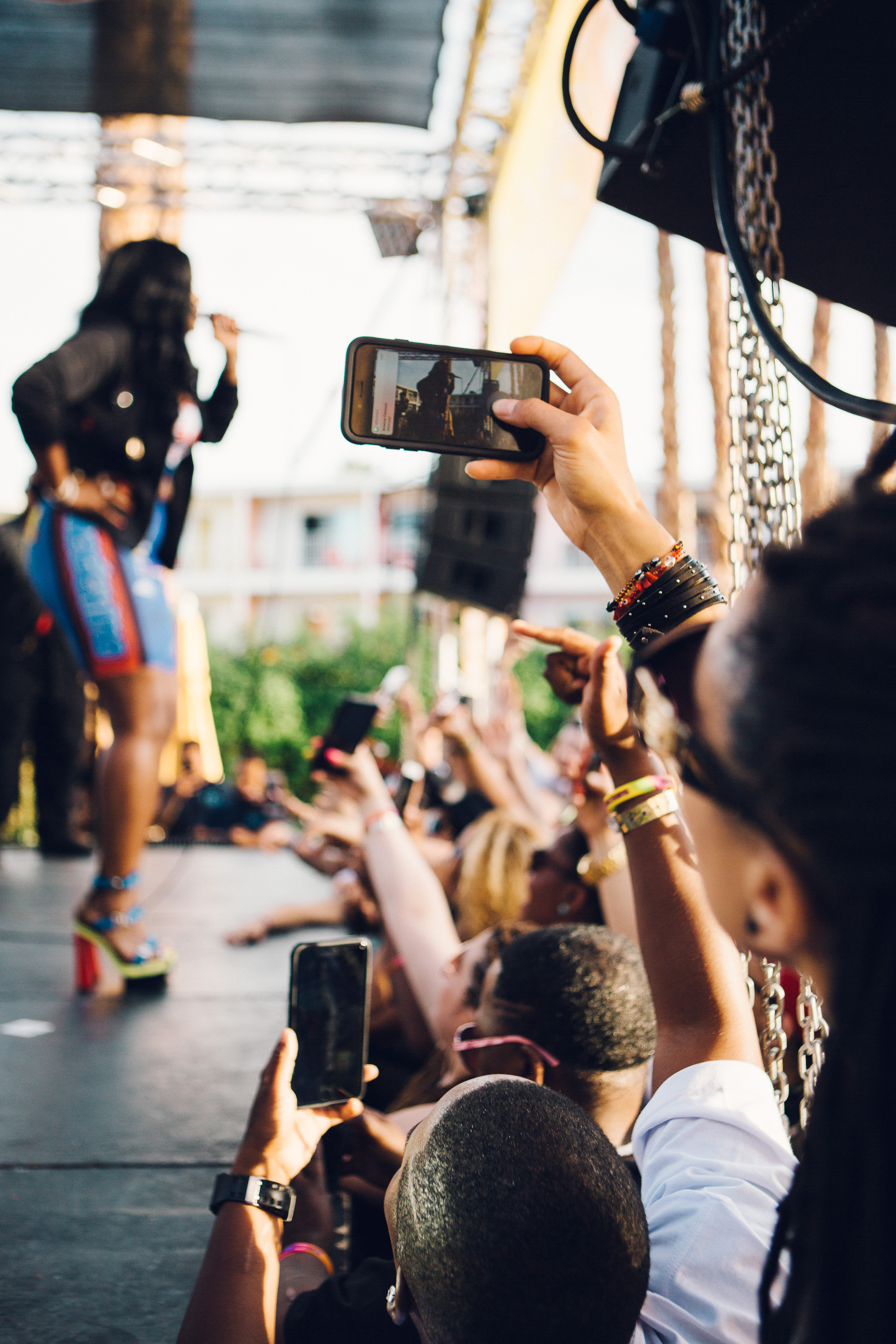
Do you feel like influencers like yourself have a specific role in this highly political time – whether it’s being political or bringing light and happiness?
Most influencers don’t want to get involved in things like that. They are either scared of the backlash or think it will diminish their brand. There is only a handful of YouTubers that will create videos about things that effect the world, whether its politics or a specific occurrence; but I’m different. It is very important to me. I am an open book, I am very passionate, and I genuinely care about the well being of others. So naturally I feel like I wouldn’t be me if I didn’t discuss these things on my platform. I think it’s all about finding the right way to deliver it to your audience. I want to make information easy to digest. I think that’s how you become successful.
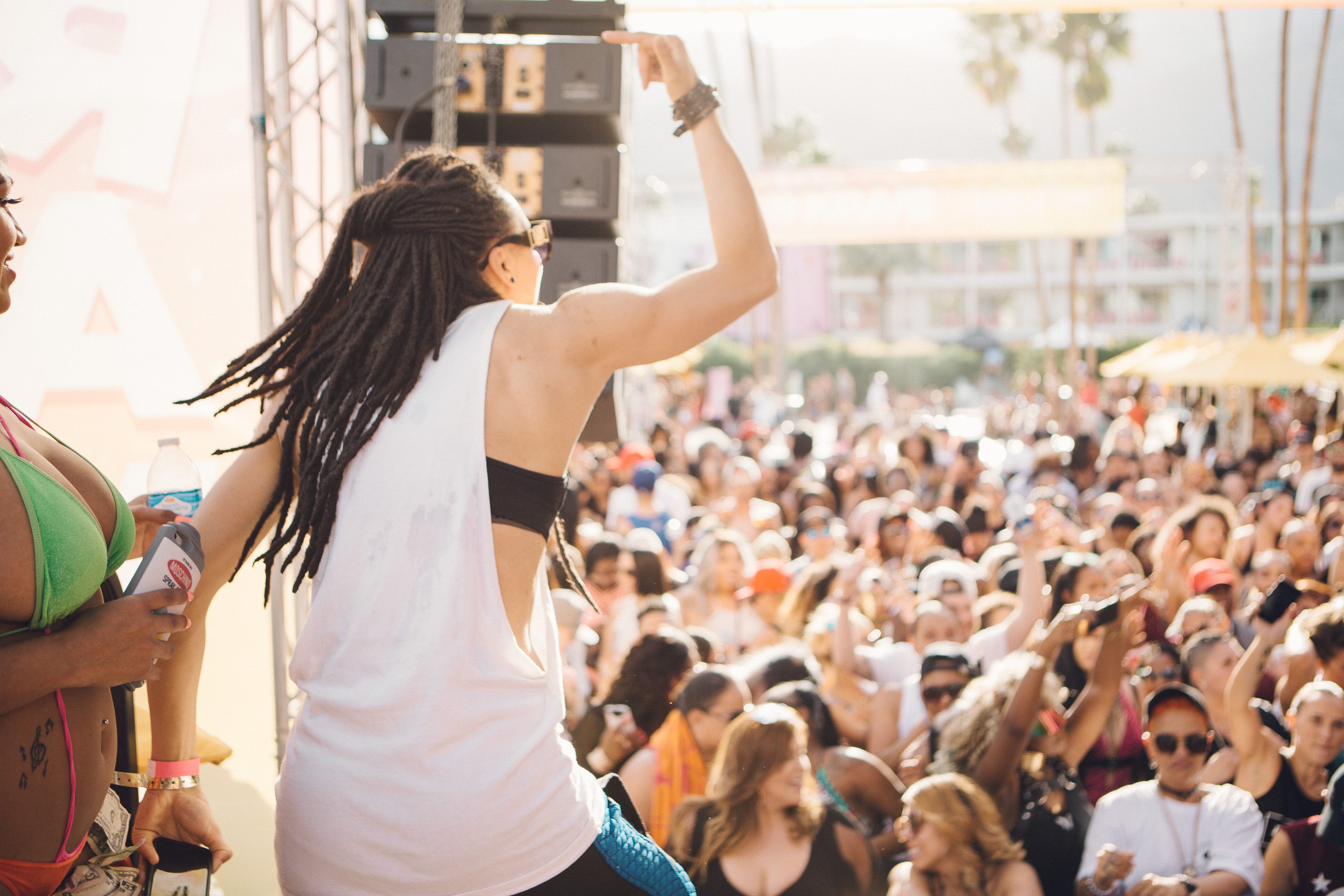
You can find Amber on Instagram and YouTube —and if Krave seems like more your speed, come thru next year. (Or hit both like us! Community over competition.)
PHOTOESSAY: The Dinah, As Told By Dancers
Last weekend, Palm Springs hosted the annual Dinah Shore weekend of pools, parties, and women (and everyone who loves them).
This year, to walk us through the parties, I talked to some of the Dinah Dancers, who get to observe all the goings-on while working extremely hard in the heat. They are there from open to close, from the pool to the club, through every performer and DJ. From their boxes, the not only the see the most, but they have to embody the spirit of Dinah and set the tone for every party.
This is the Dinah through the eyes of Rachel Helzer, Cherry Lei, Alyhed Morales, Melissa Martinez, and captain Julia Ensign.

Packing
But first, packing. Friends, it’s hot.
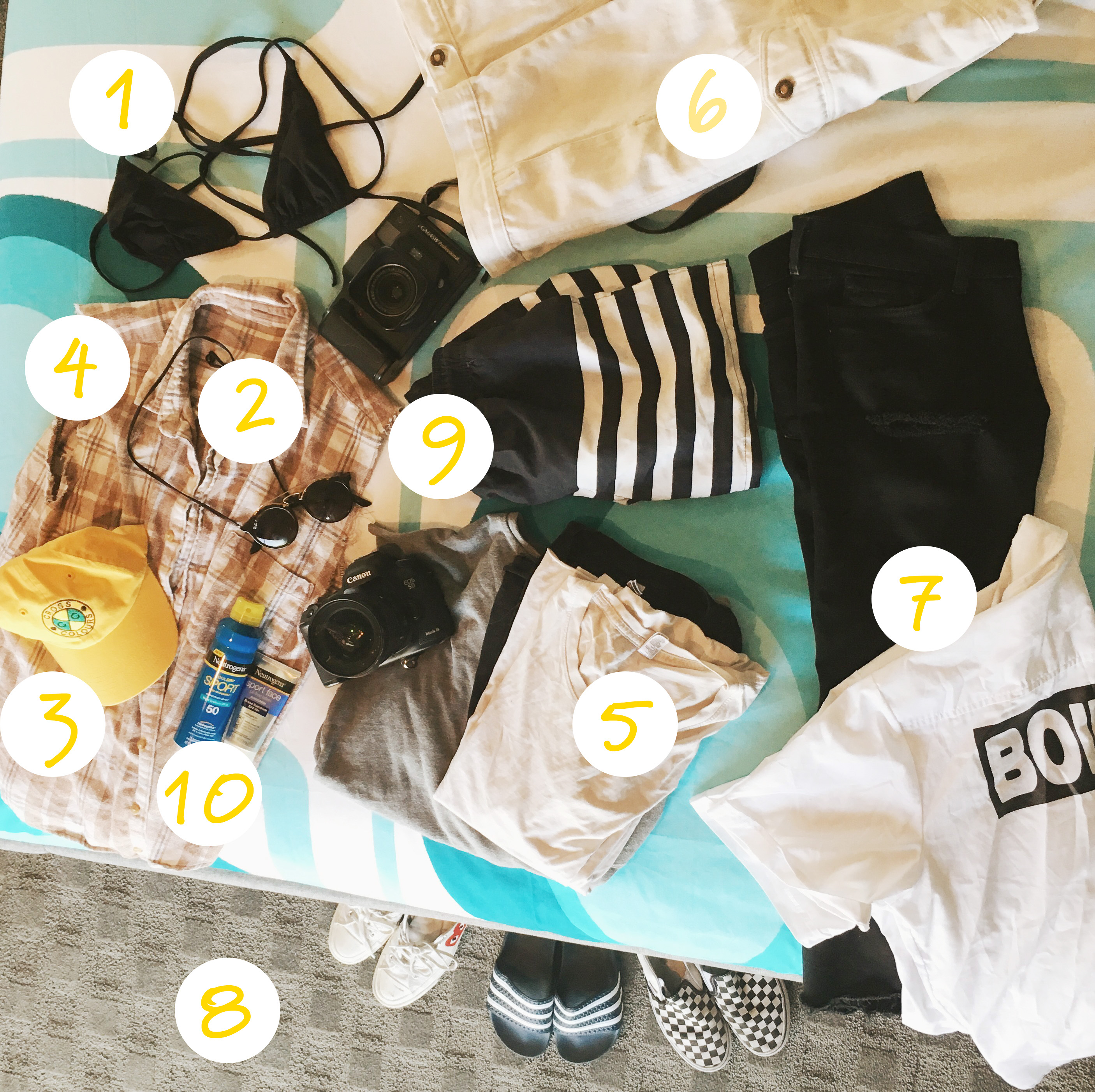
- Bathing suit – duh.
- Sunglasses, and I wear mine with a strap because I take them on and off to shoot and will definitely lose them.
- Hat even though I usually nullify it by wearing it backwards.
- Sleeveless everything.
- Mostly sleeveless shirts and like one with sleeves for the evenings.
- White denim vest for the white party.
- Some more evening outfits.
- Lots of shoe options that are basically the same but different.
- My main camera and my fave fun camera, a medium format point and shoot. One day I’ll develop those.
- SUNSCREEN SUNSCREEN SUNSCREEN. Y’all this is the first year I didn’t get burnt and I am Irish and this is a miracle.
THURSDAY
Dinah kicked off at Zelda’s Nightclub in Palm Springs and honestly this year was the wildest I’ve ever seen it. Maybe it’s the political climate but everyone turned out for a good time.
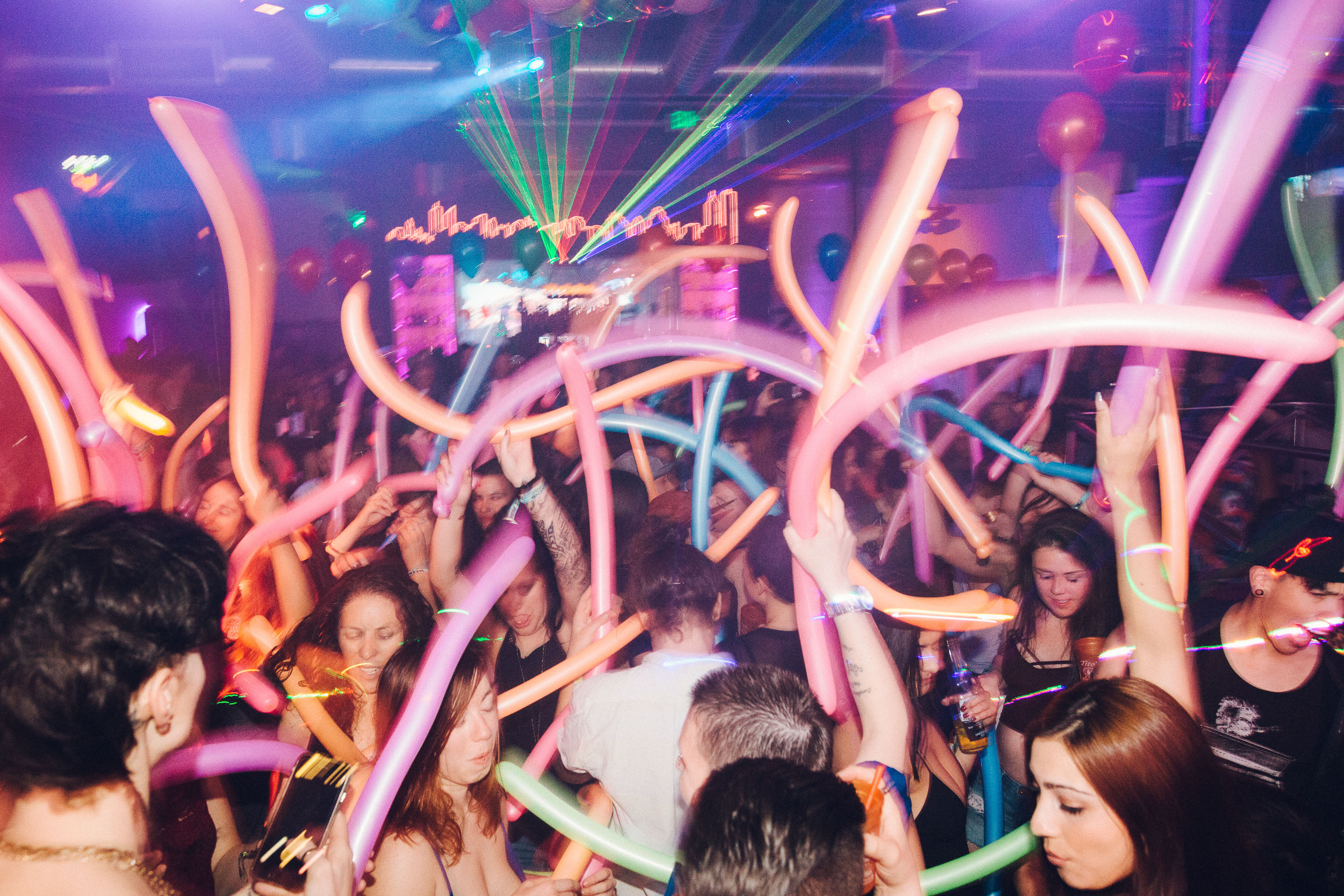
Why do people come from all over the world to experience the Dinah?
Rachel: “Because it’s an experience unlike any other. It’s like Pride for only women. It’s a party that truly celebrates women who love women. It’s awesome.”
Cherry: “Huge organized event of crazy sexy fun where lesbians and women can just enjoy a weekend of liberating fun without the worries of being judged. Great vibes with beautiful ladies!”
Melissa: “If you don’t know about it yet, you soon will because it is the #1 all girl party that keeps getting bigger and better every year!”
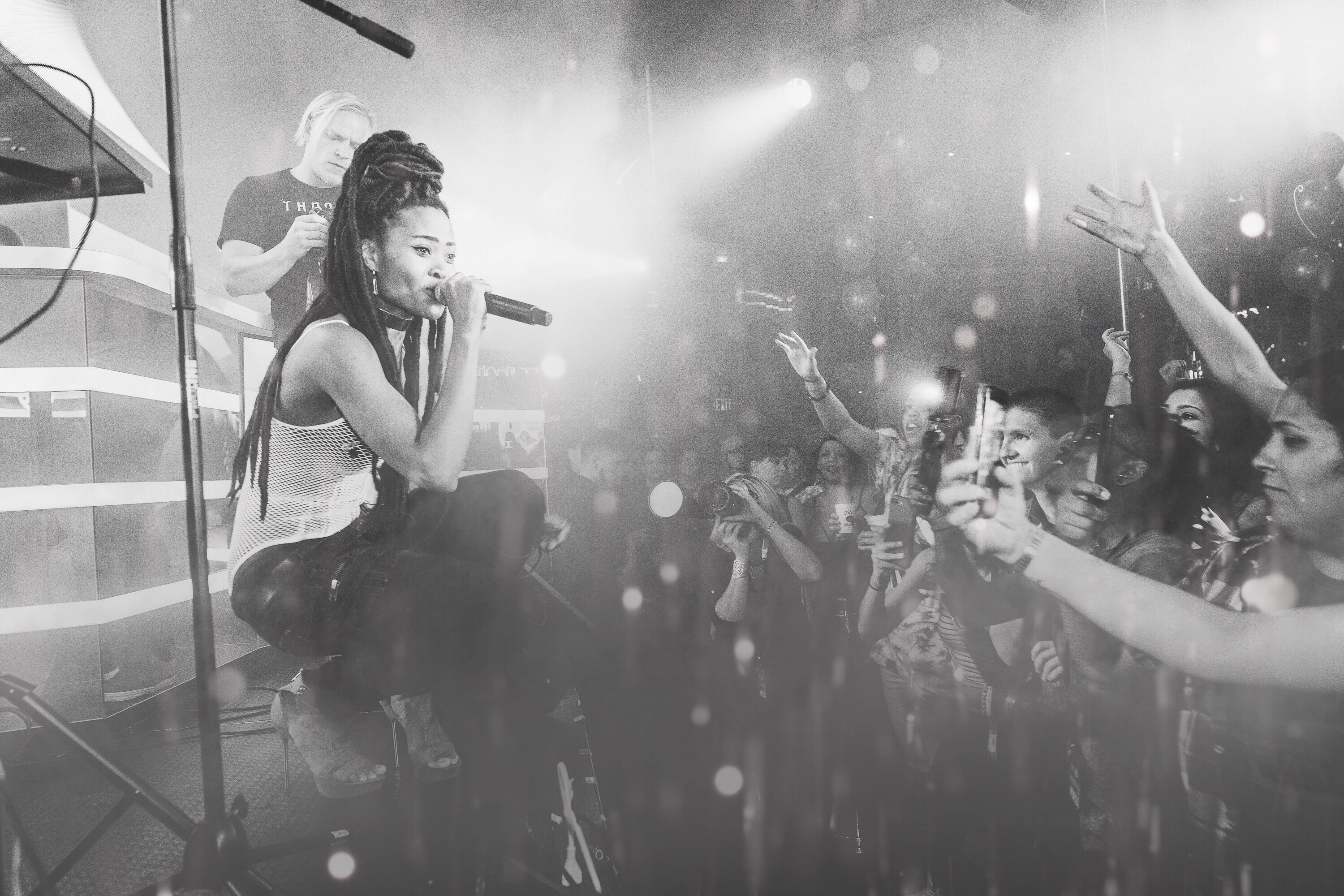
Margeaux launched the weekend with an incredible performance
FRIDAY
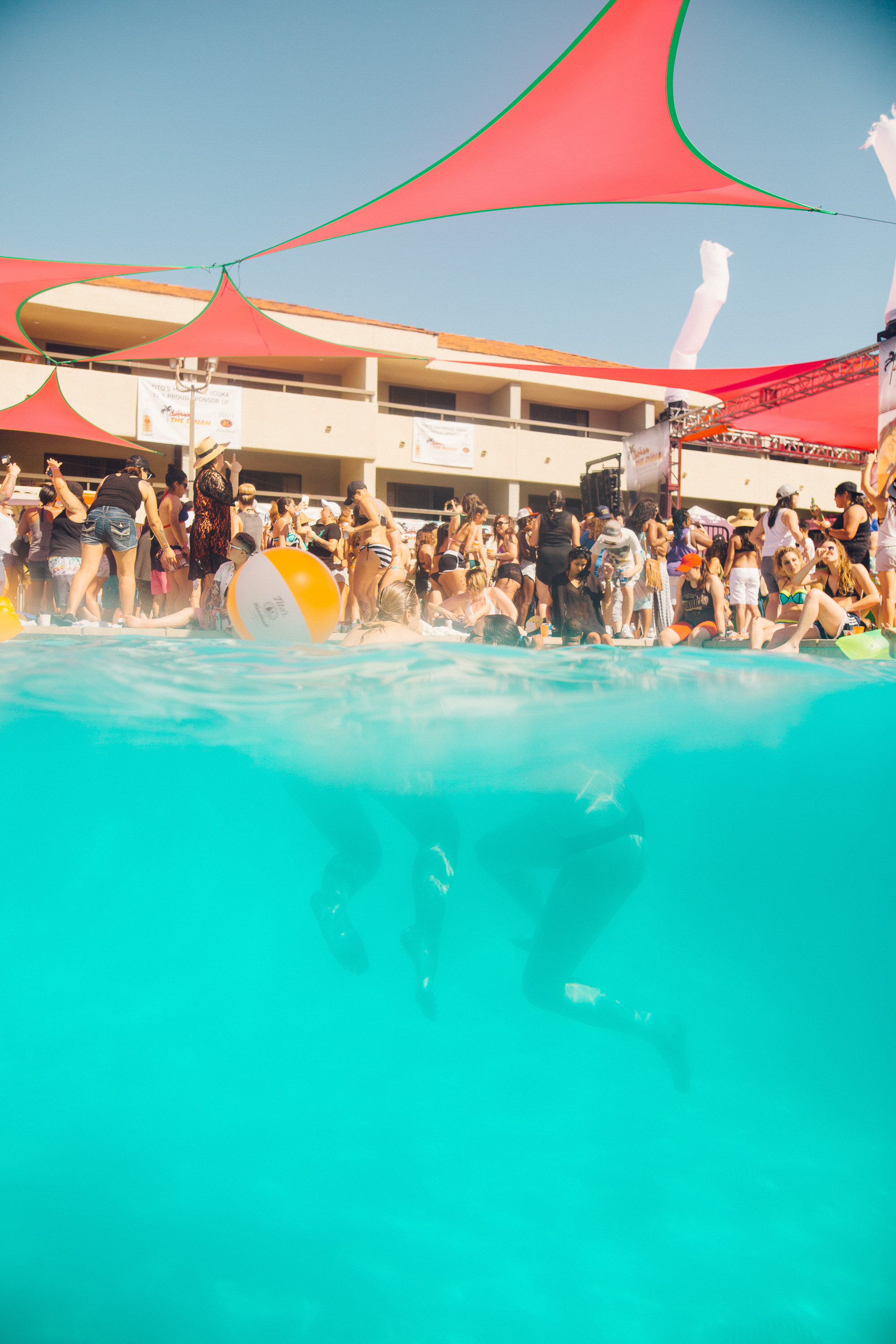
Alyhed: “If I must choose [a Dinah highlight] I would have to say the first moment I stepped on the box — it felt surreal!”

Cherry: “Since I became a gogo I’ve been told I need to work at The Dinah! Coming from Hawaii, we don’t have events at this level — actually being there was way more intense than I ever imagined but it was such an incredible feeling of empowerment and acceptance.”
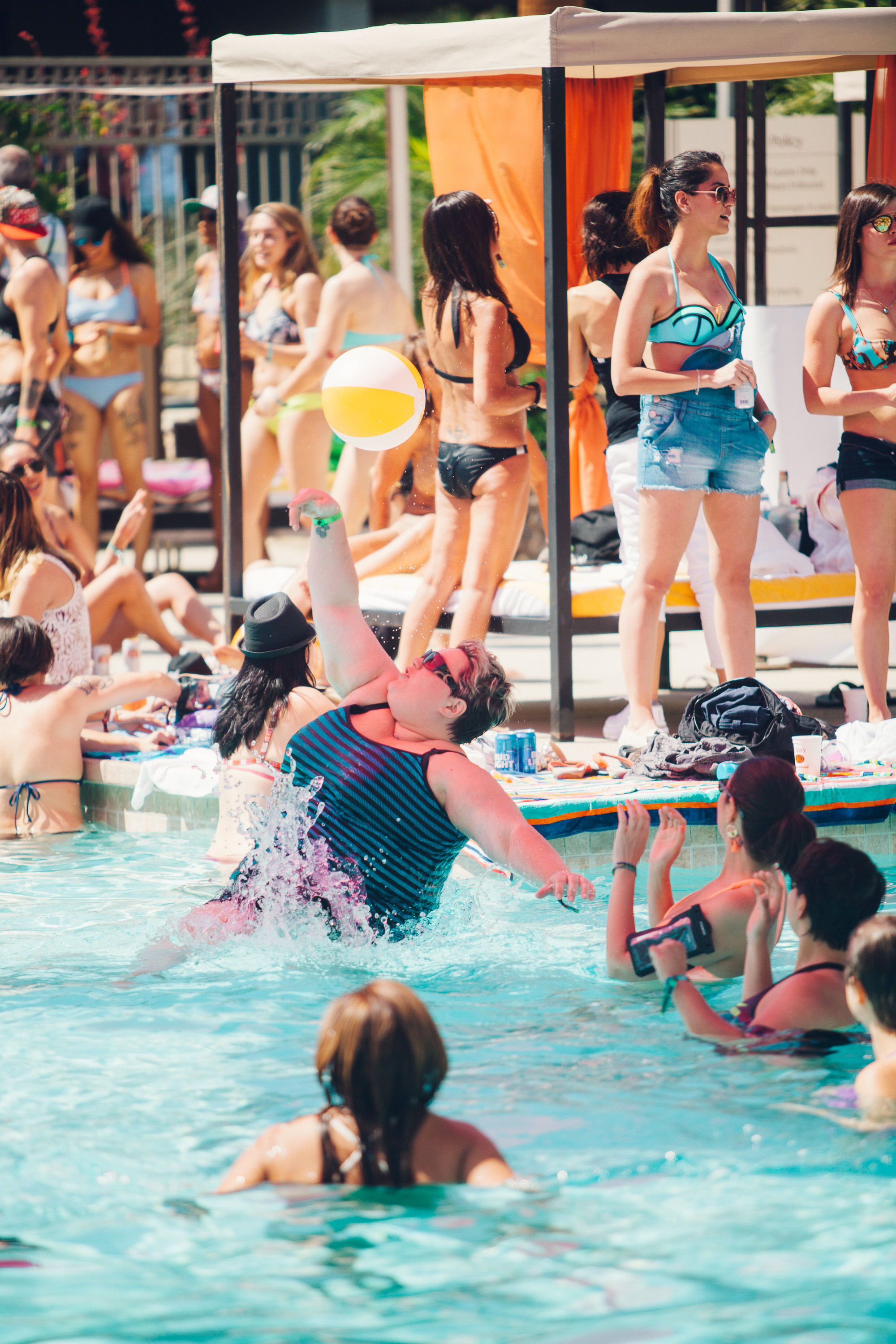
Melissa: “I’m gonna give you a little back story on how I got hired to dance for Dinah. So seven years ago when I was dancing my little Dinah virgin heart out in the crowd at one of the pool parties, I was stopped by this beautiful Dinah dancer at the time who told me she had been eyeing me from the gogo box and asked if I wanted to be a Dinah dancer. I couldn’t believe it, and I thought ok yeah sure great April fools joke — but she was the dancer manager, and at the next day’s pool party she put me on the box for a set to have me audition. I was booked for the following year and well, let’s just say the rest is history! Lupe and I have become the greatest of friends over the years — she is the reason why I get to be part of this amazing event and why I come back for another year!”
Alyhed: “Technically it’s my first time working Dinah, but not my first time at Dinah! I love this event. It differs because I would look up at the Dancers in admiration. This year it felt amazing actually being a Dinah Dancer!”
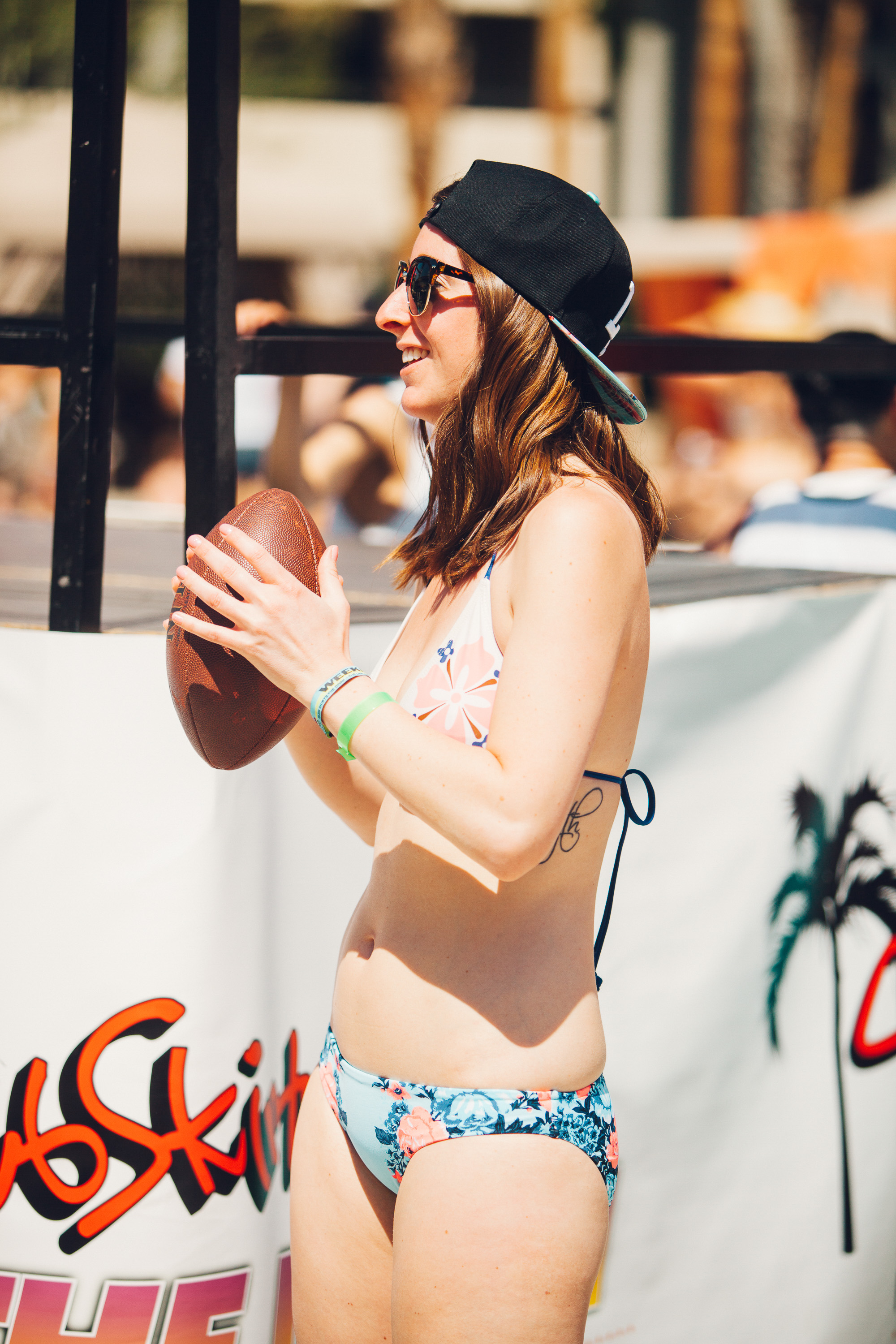
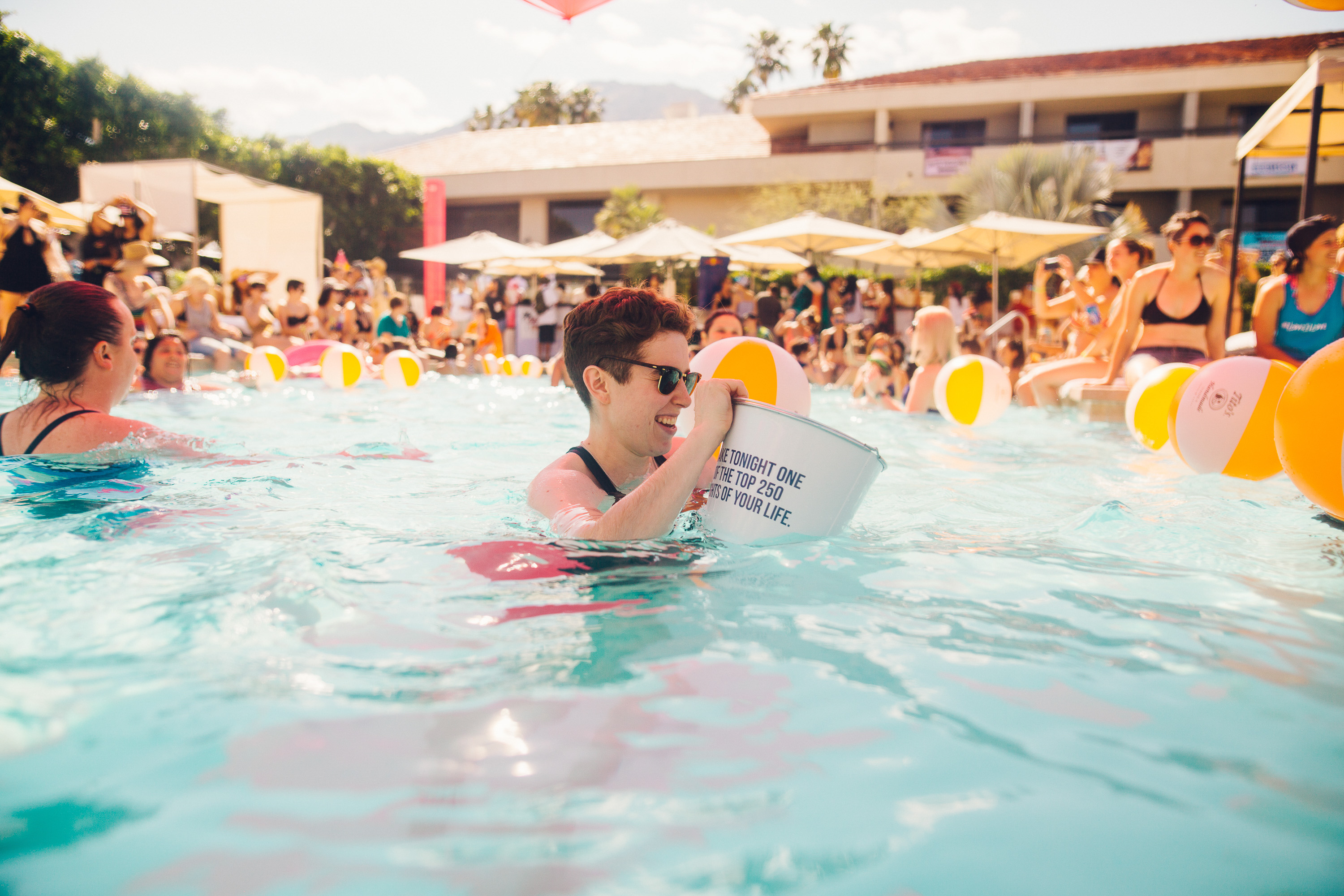
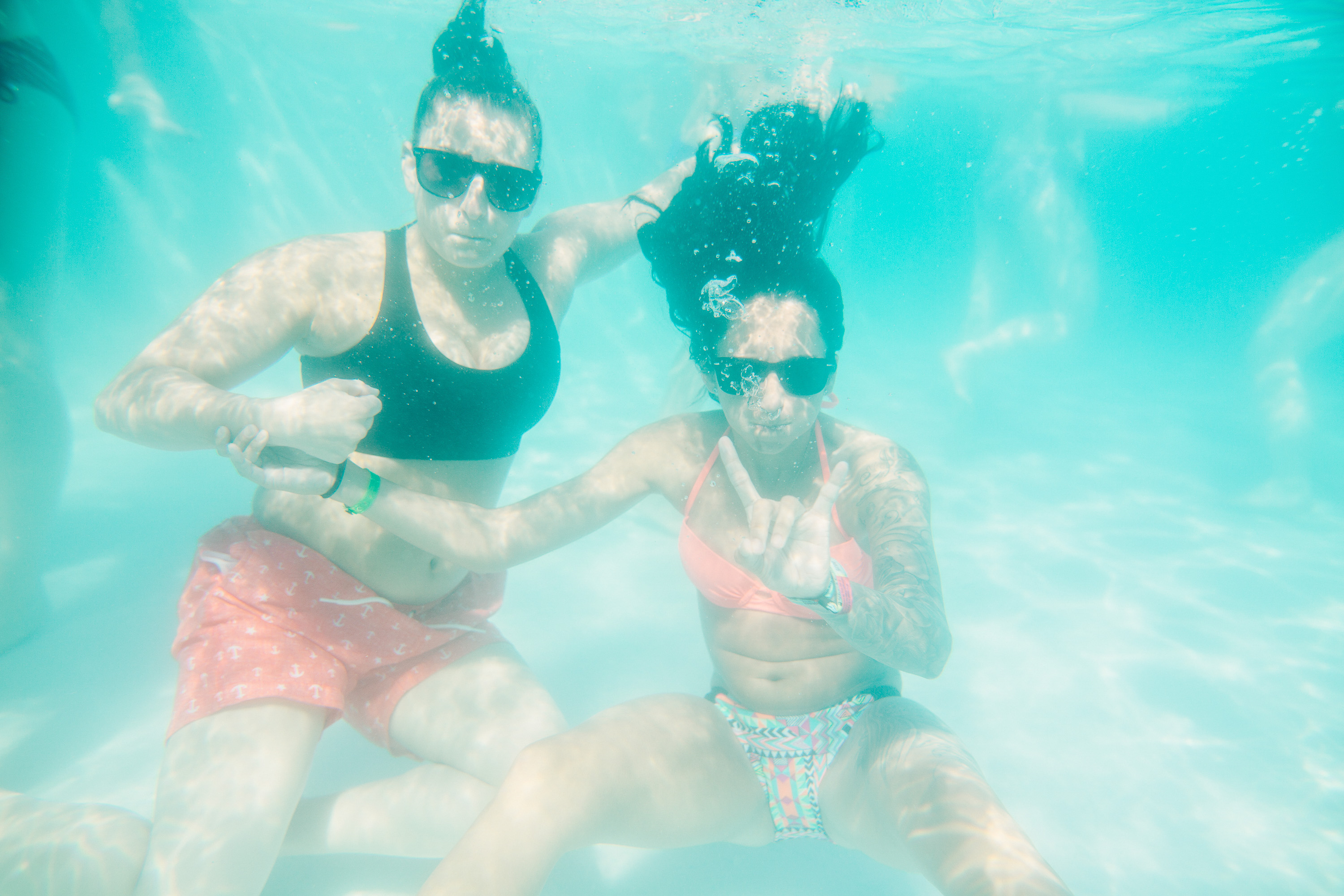
What is Dinah to you?
Alyhed: “An event about women for women who love women.”
Melissa: “A place where women from all over the world unite to get away from reality and be themselves.”
Rachel: “An oasis of feminine energy. For one weekend we build a community and a safe space for women to enjoy themselves. It’s a magical sexy place!”
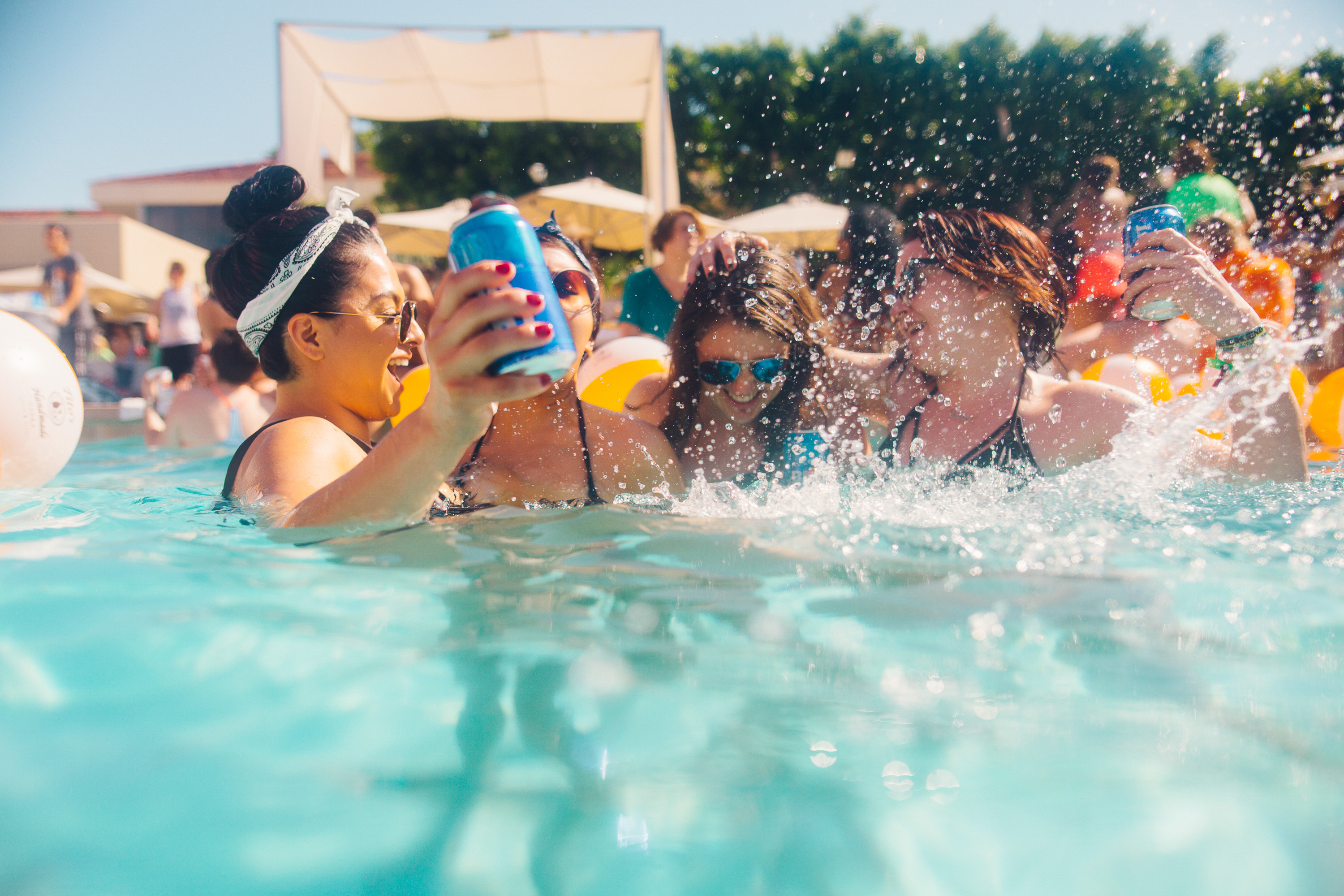
The World Famous White Party at the Hard Rock Hotel
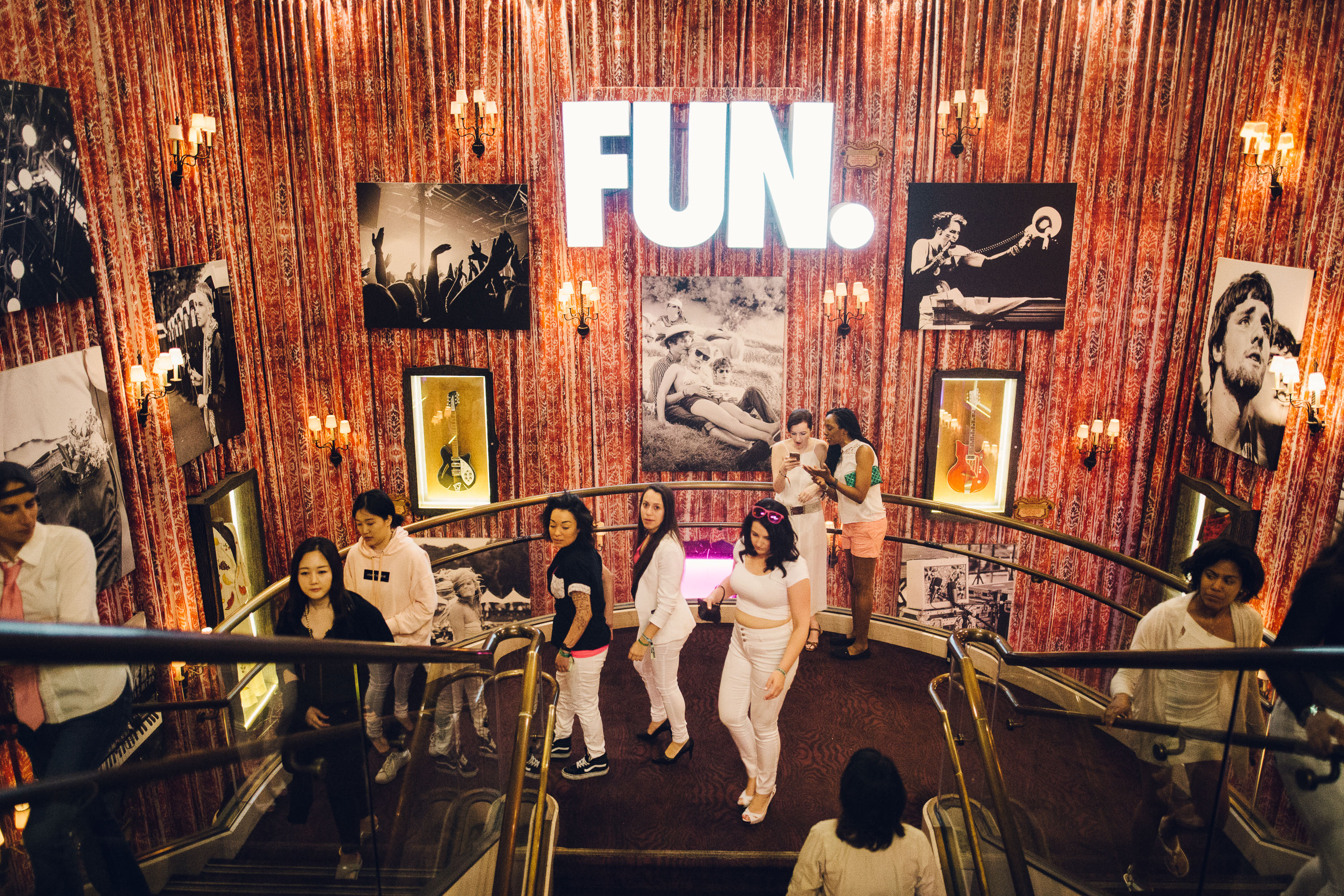
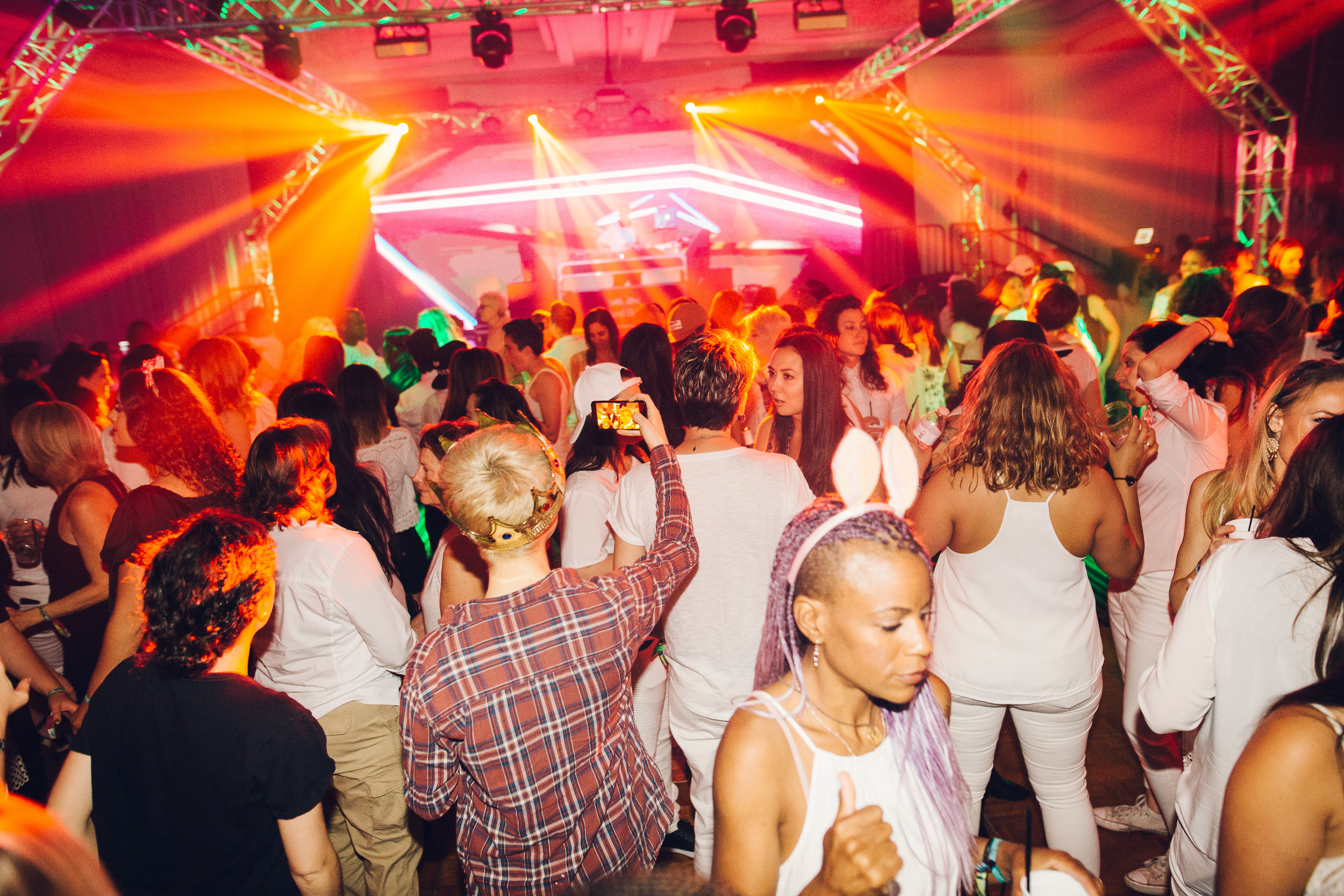
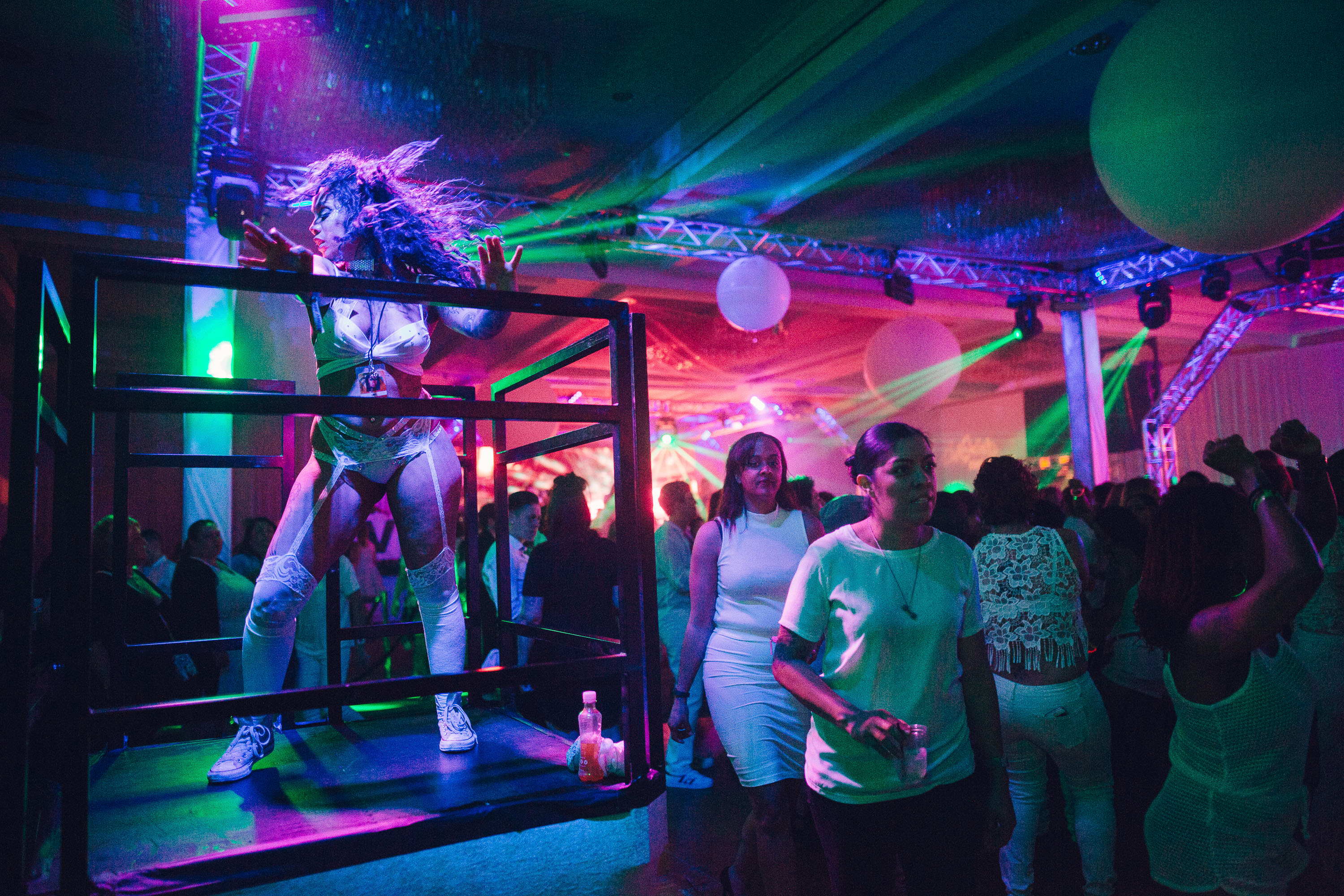
Y’all are such an important part of Dinah — How do you embody the Dinah experience? What do you try to represent when you’re up on the box?
Julia: “I try to bring full energy to every set, engaging with the crowd and creating an experience for them! For some, they won’t see another gogo dancer where they live until they come to Dinah again the next year, so I try to make it memorable.”
Rachel: “I feel like it’s our job to engage with the guests and hype the crowd! We bring life to the music the DJs are throwing out. If a gogo dancer is feeling the music she can engage an entire room! We as Gogo’s effect the vibe of a party and can make or break It! I try to always give 100% and bring good vibes to Dinah.”
Melissa: “I feel from the minute you walk through those doors you always have to have the mentality that you are on stage, even if you’re not. That image you put out is the reputation and representation of Dinah.”
Alyhed: “I try to represent me, every dancer has their own style and Lupe (the women behind the curtain) loves that we all give something different to the Dinah experience.”
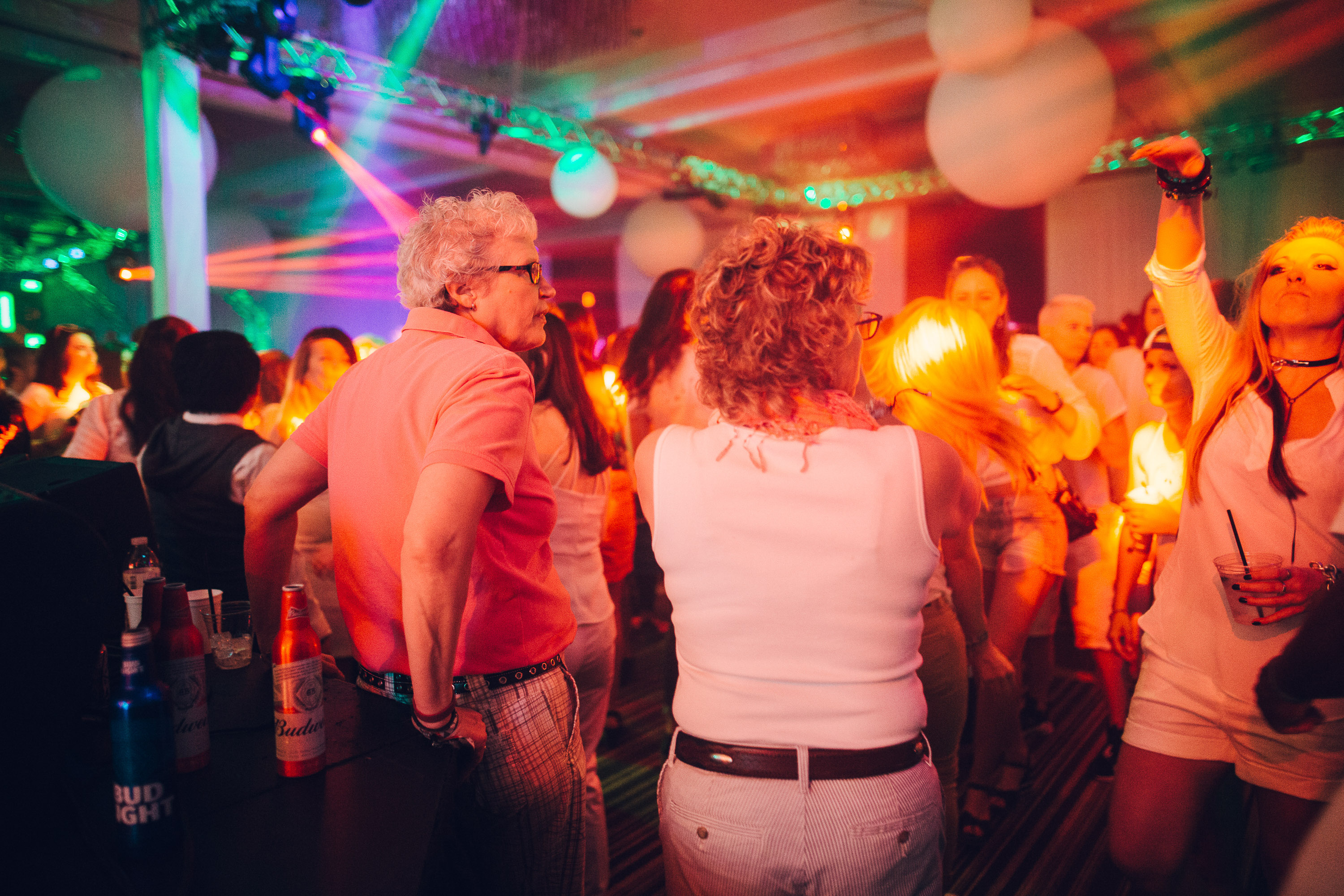
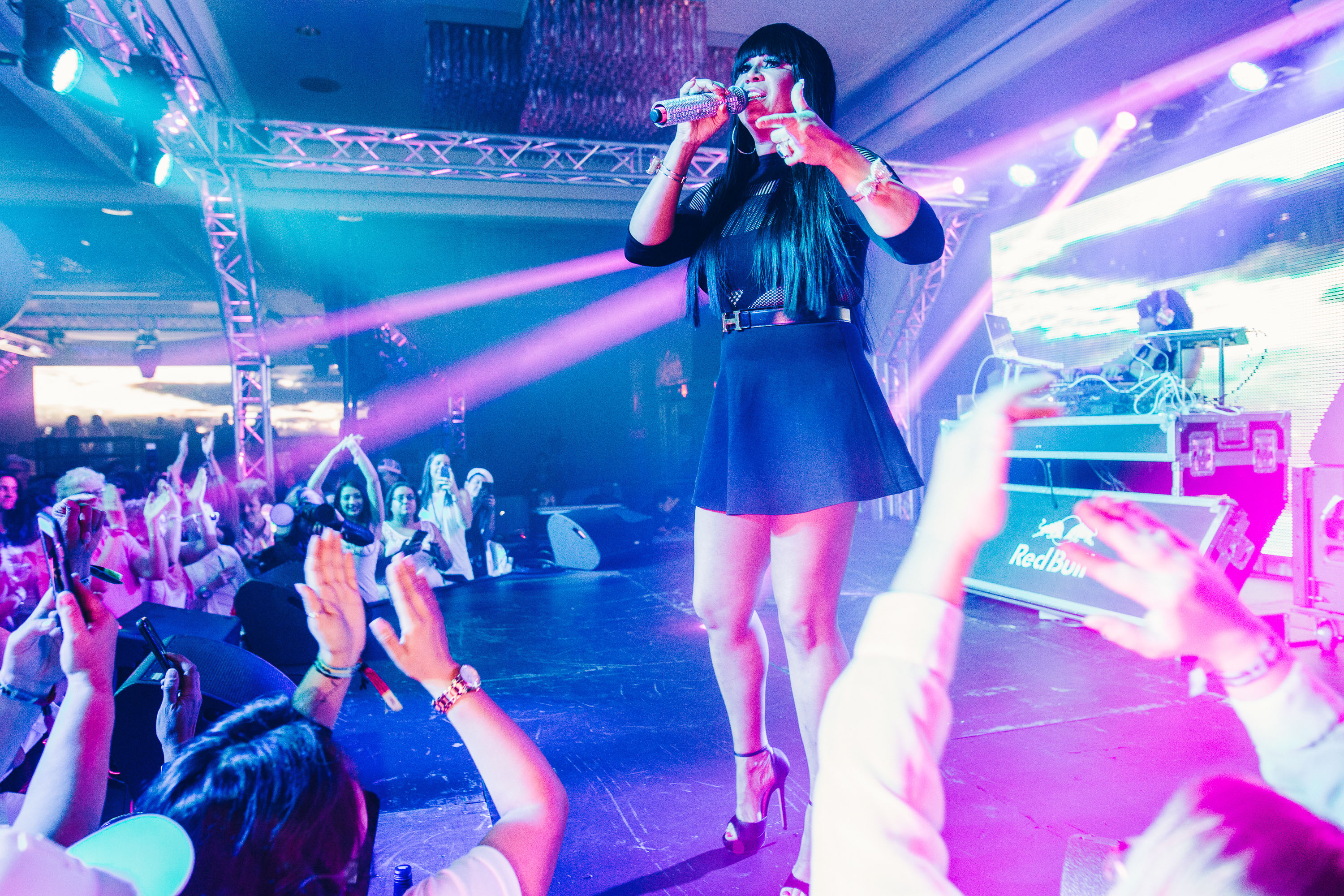
Cece Peniston
SATURDAY
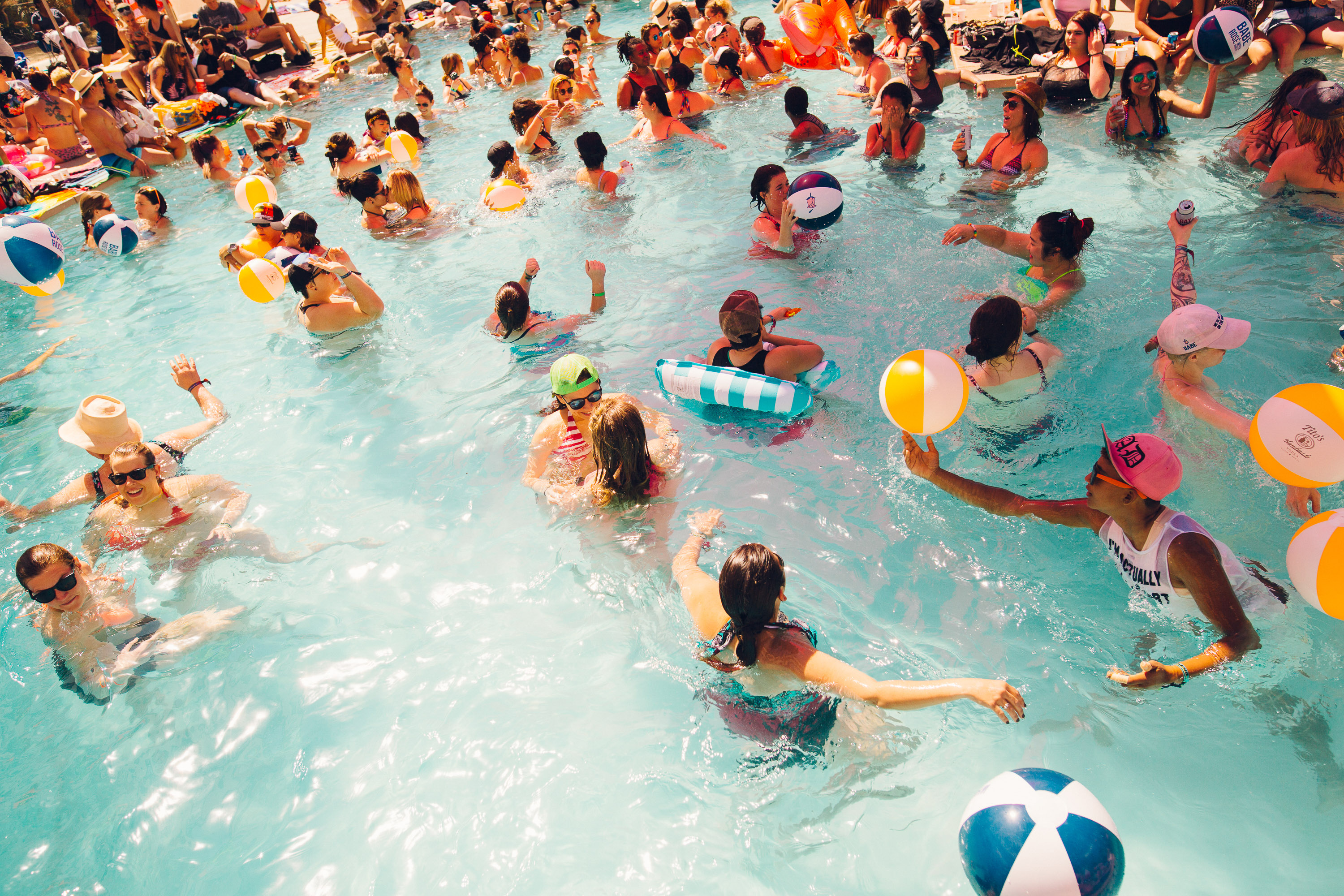
Rachel: “It’s honestly a marathon. Wake up, dance. Drink a gallon of water, dance. Take a nap, eat some food, redo your makeup, dance. Dance all night. But the vibe and music and dance team are all so good it’s a total high! It’s a tough schedule but I love dancing.”
Melissa: “We work all day and night. Hoping to get four to five hours of sleep, I’m at least up by 9am and in bed by 4 a.m. I always try to start my day with a small preworkout at the gym, have breakfast and get ready for the pool party, lunch and snack throughout pool party sets, dinner after the pool parties. Can I just say they provide the best lunch and dinner for Dinah staff, so yummy and greatly appreciated. I then rest up for at least an hour before it’s time get ready all over again to head to the night party. Number one key for me to keep going and get through the weekend is to stay hydrated, no alcohol and lots of electrolytes. It’s definitely exhausting but so well worth it.”
(On a personal note, the dancers have saved me multiple times with electrolyte water.)
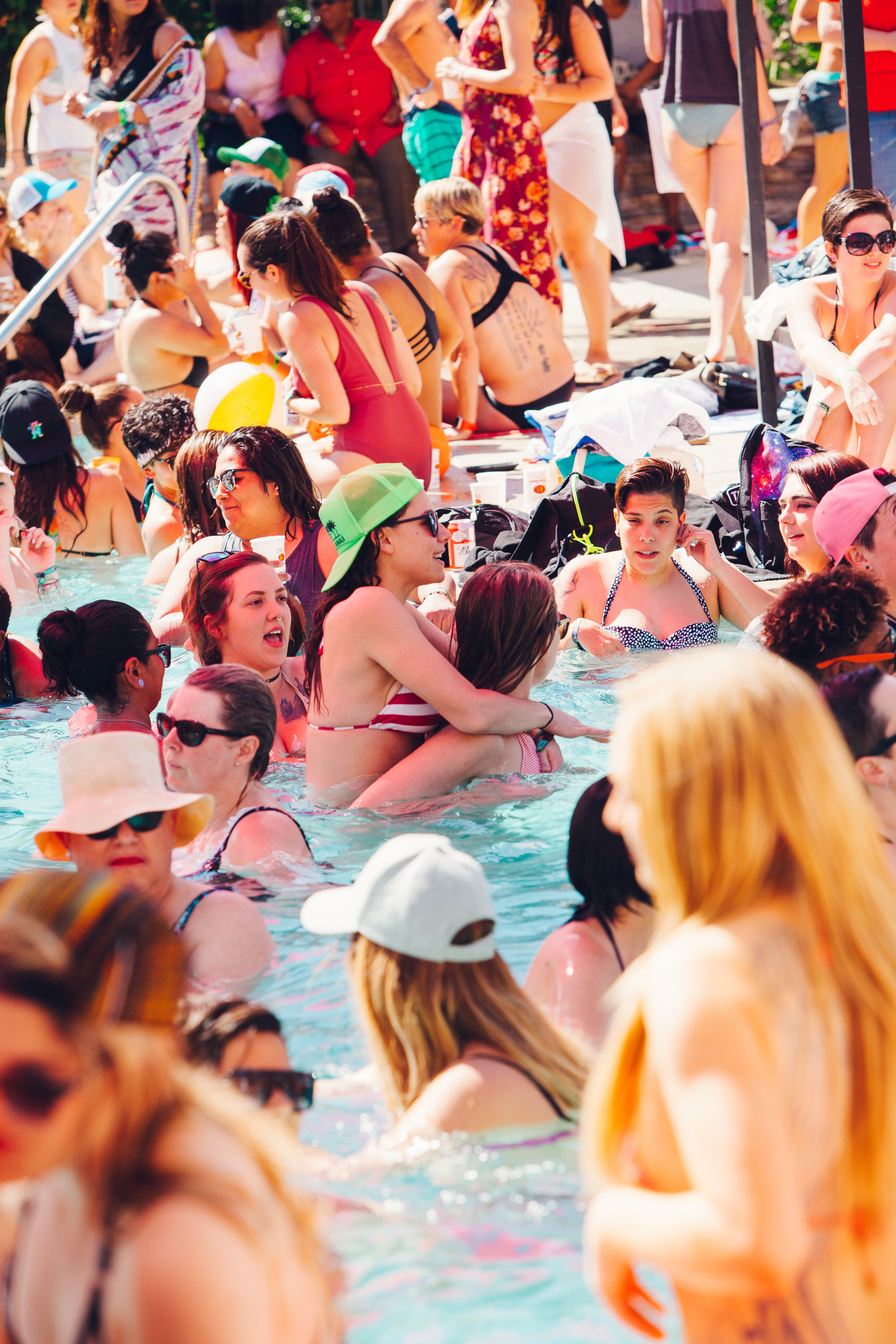
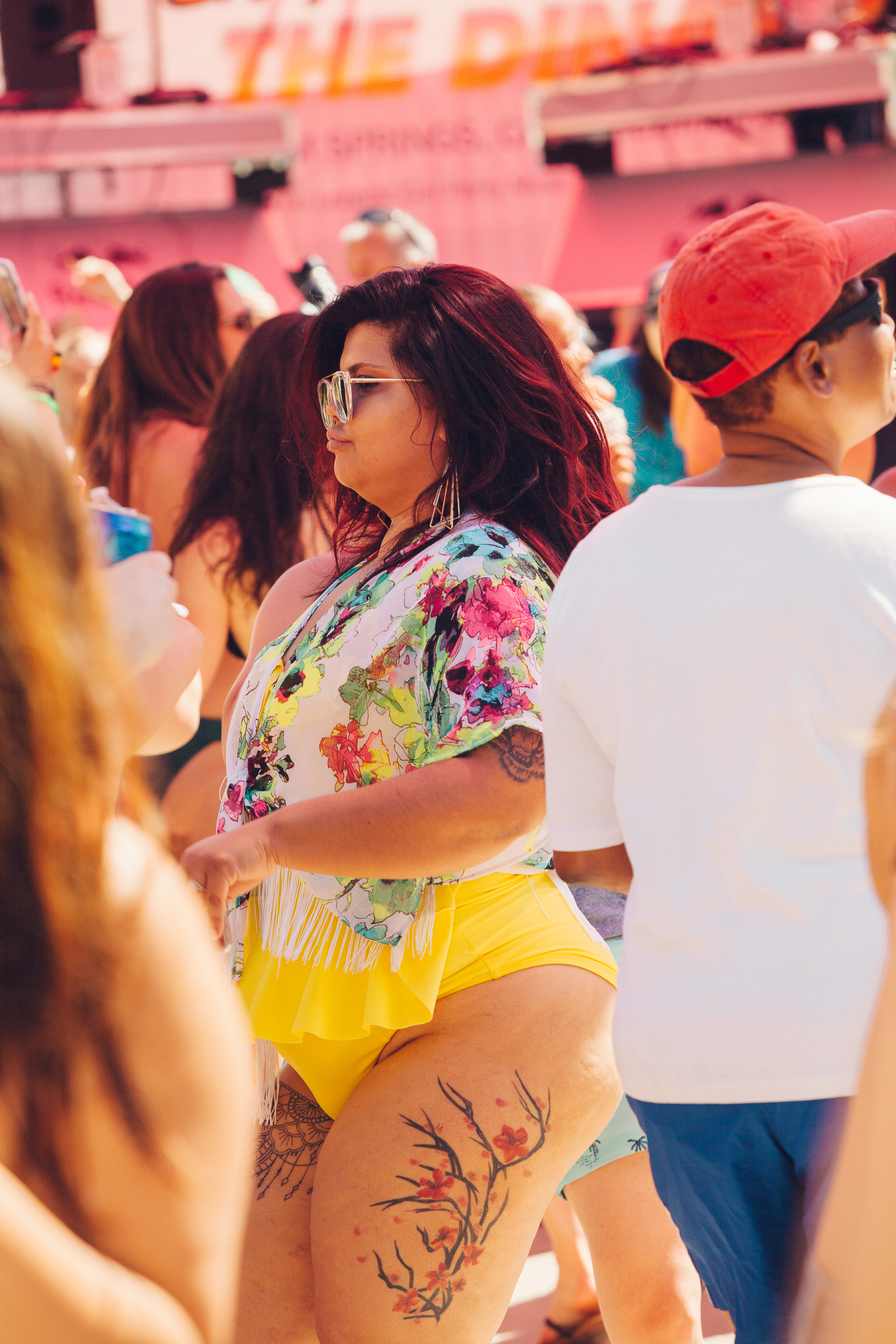
Cherry: “Dancing in the heat! Hot hot hot! But finally getting sun is worth it! I’m a vampire in Hawaii!”
Rachel: “It’s an experience I don’t get anywhere else. Performing at Dinah is very special. It’s something I’ve always aspired to do. It’s hard work but I feel lucky I get to part of it.”
Julia: “Once you make the cut to be a Dinah dancer you never really see yourself stopping. It’s an experience that not many people get the opportunity to have and I absolutely love it!”

Stuzo Clothing premiering their “Fresh Collection” in a Dinah Exclusive fashion show
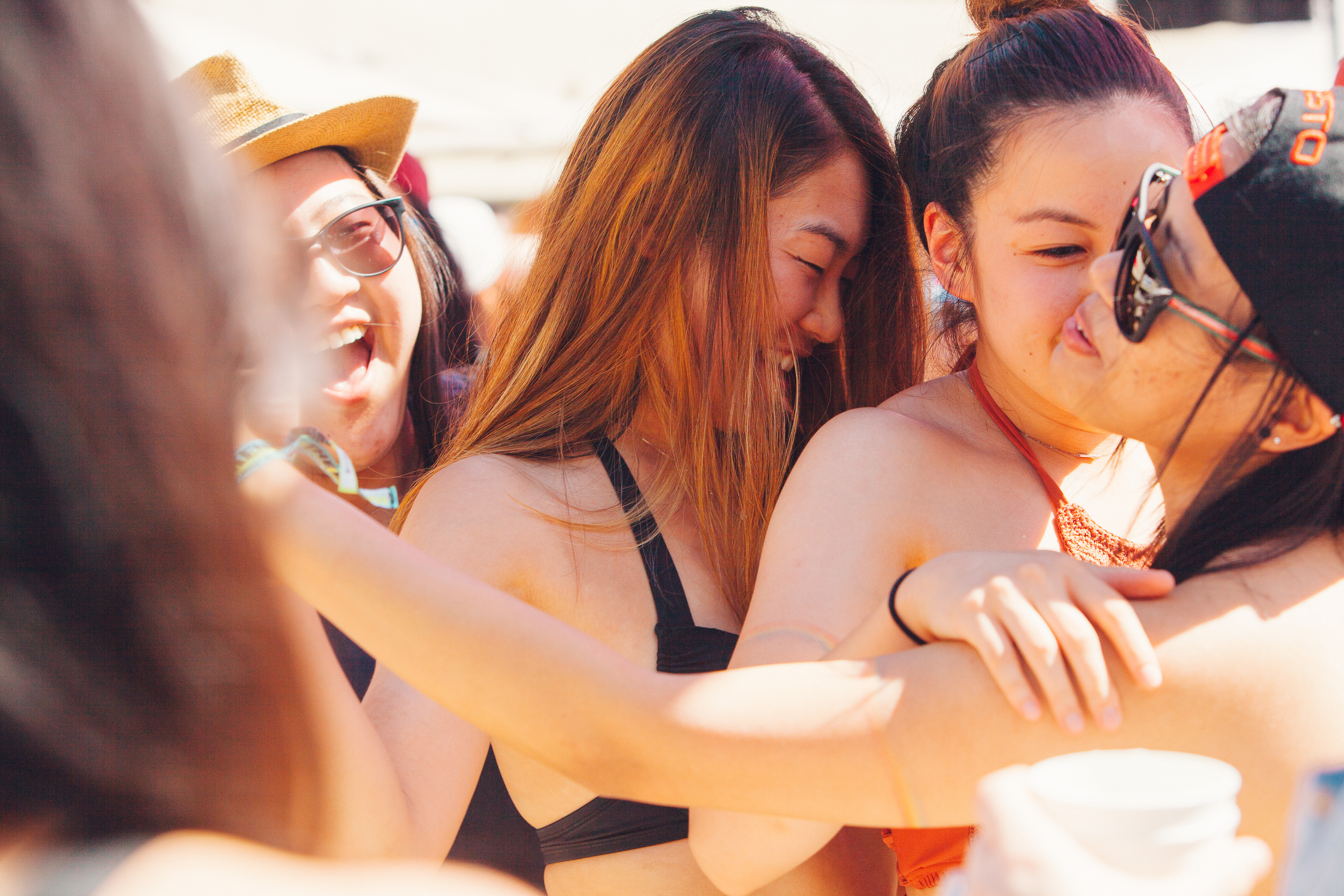

The Hollywood Party
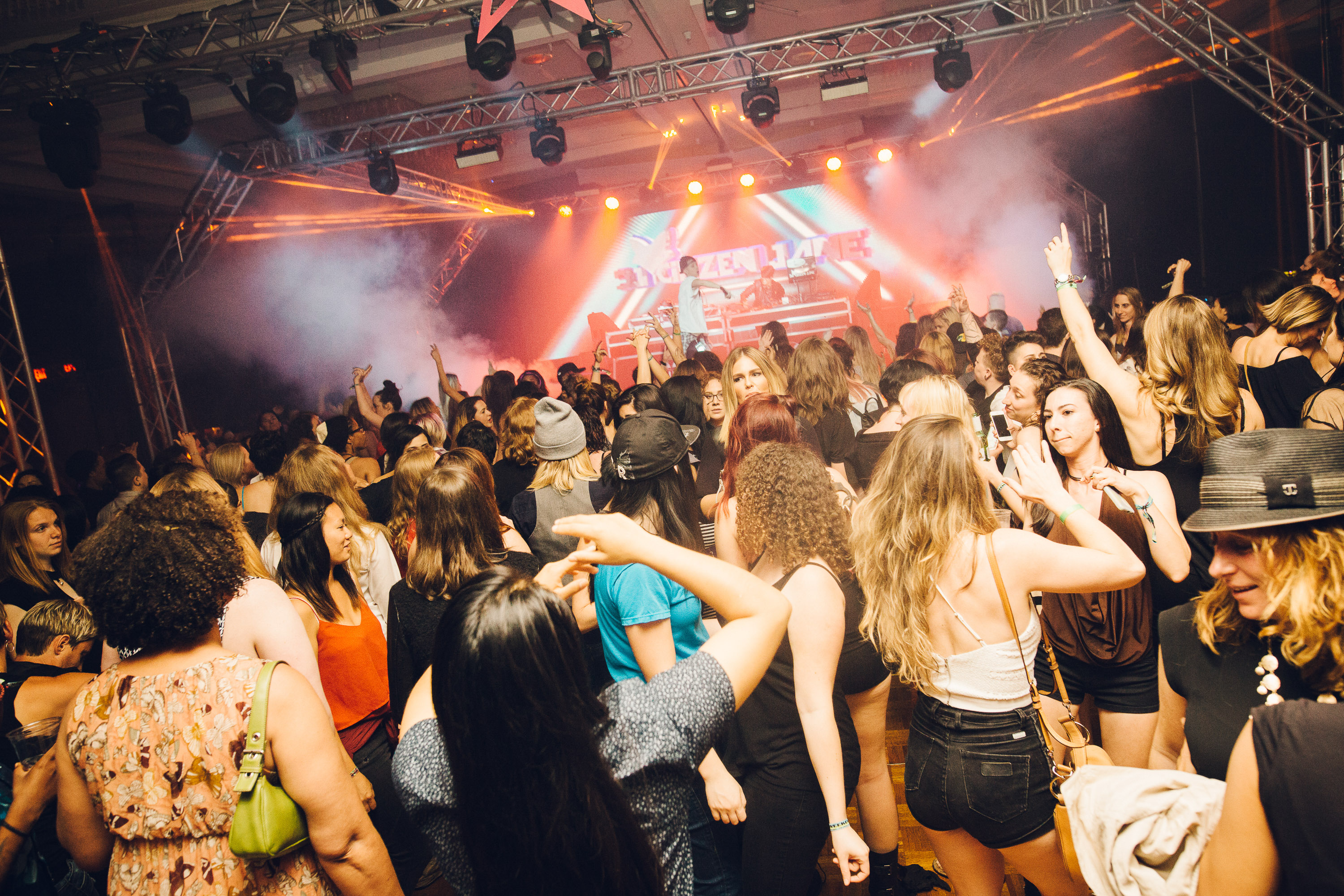
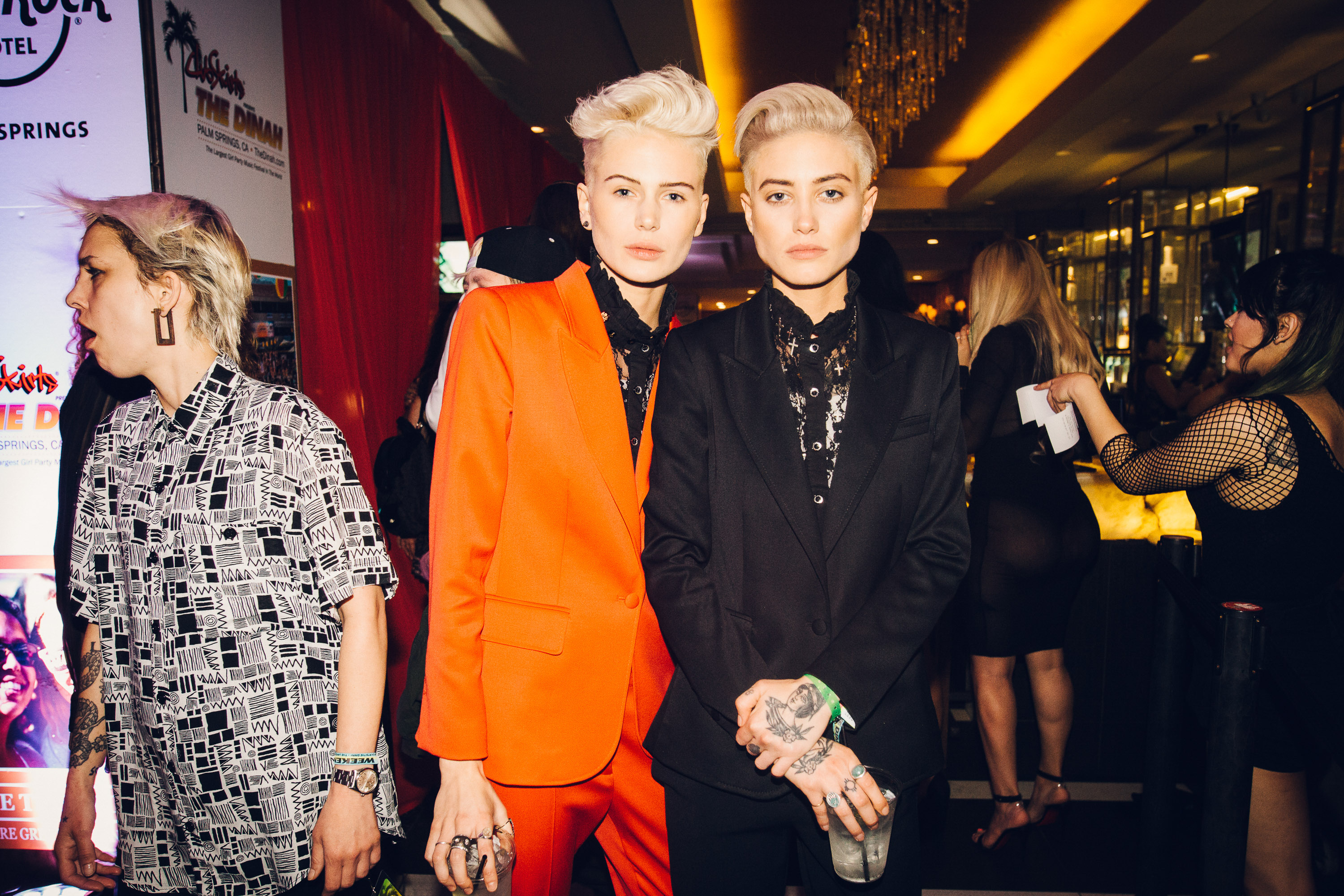
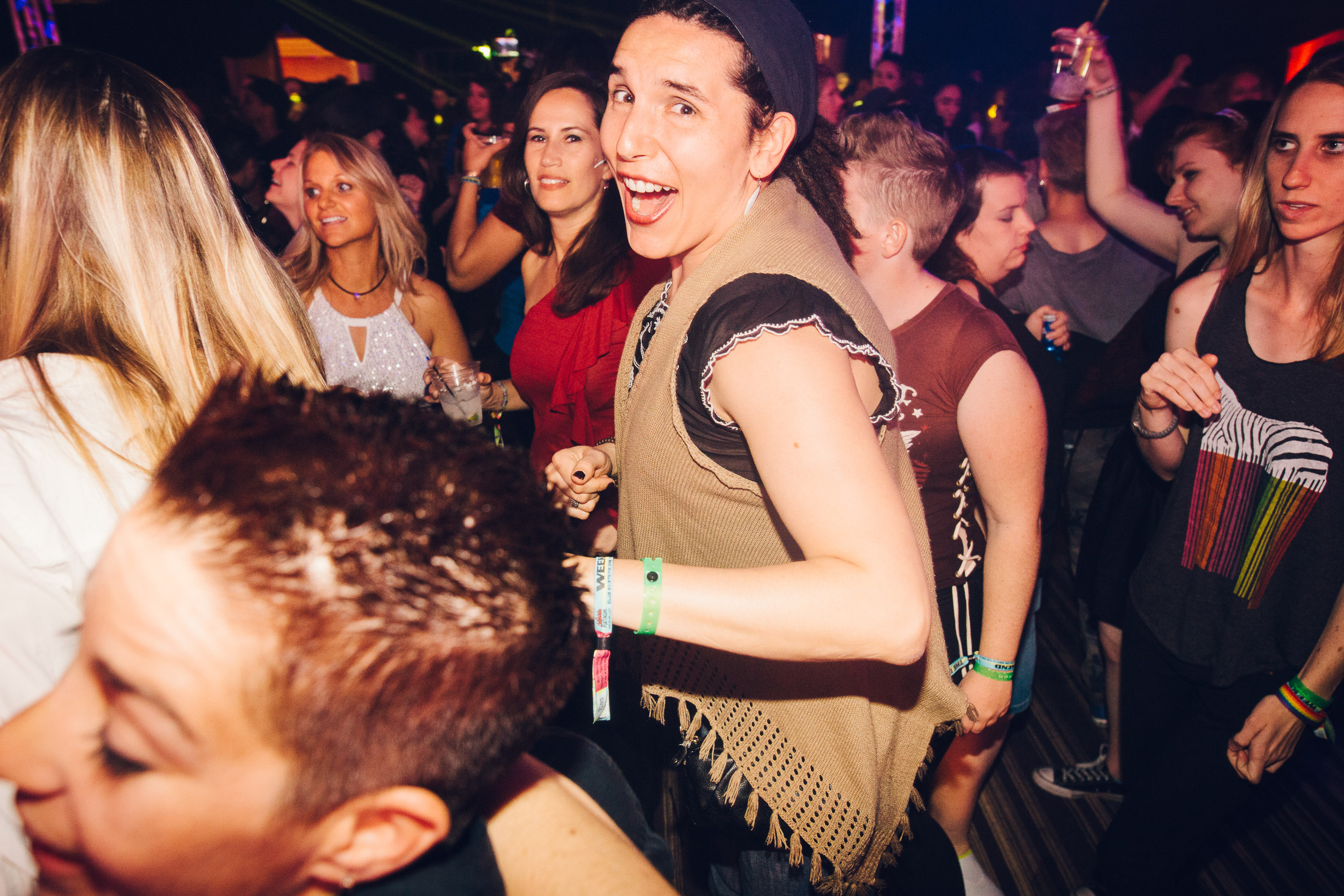
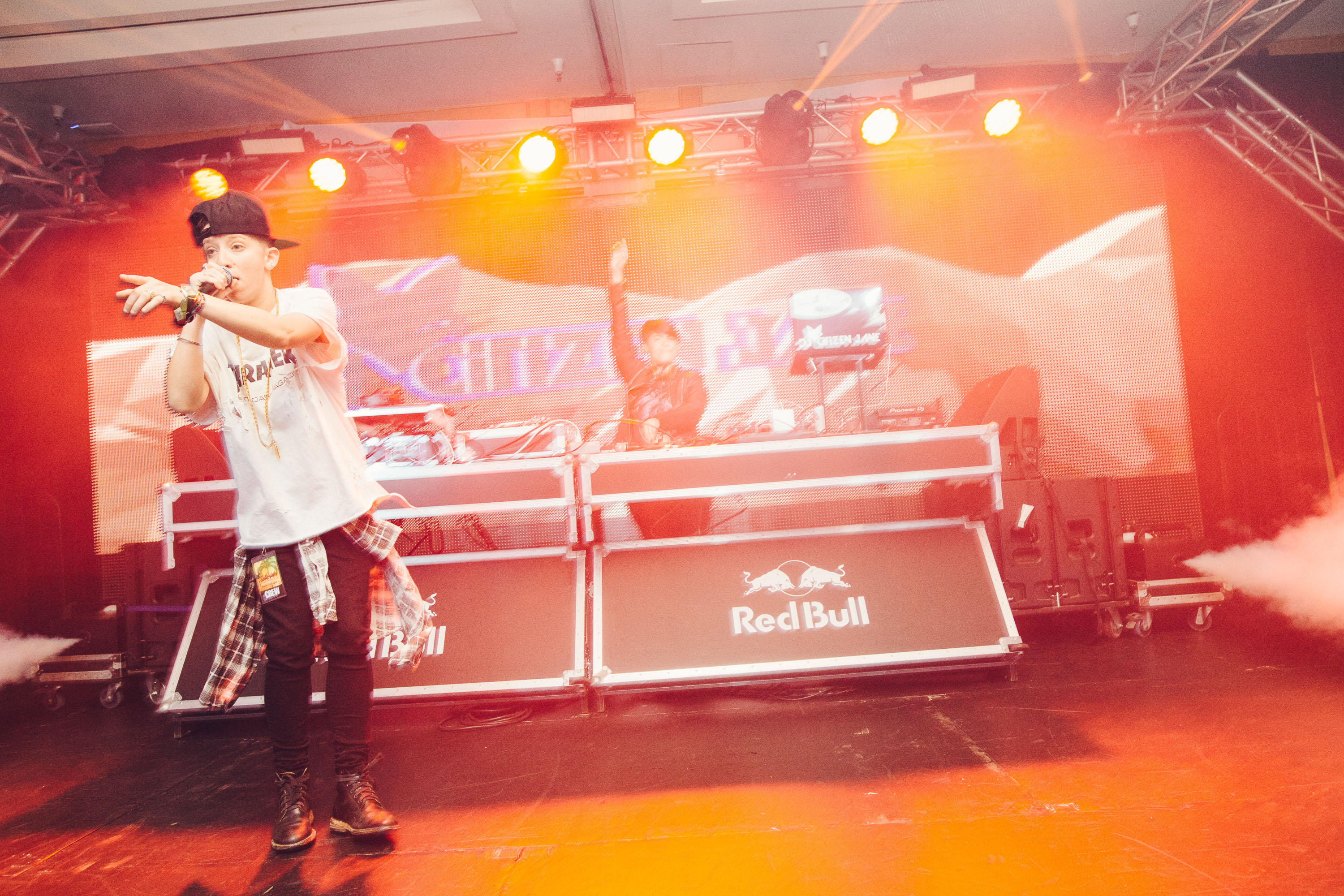
Dinah co-host CB Glasser and DJ Citizen Jane making the crowd go wild
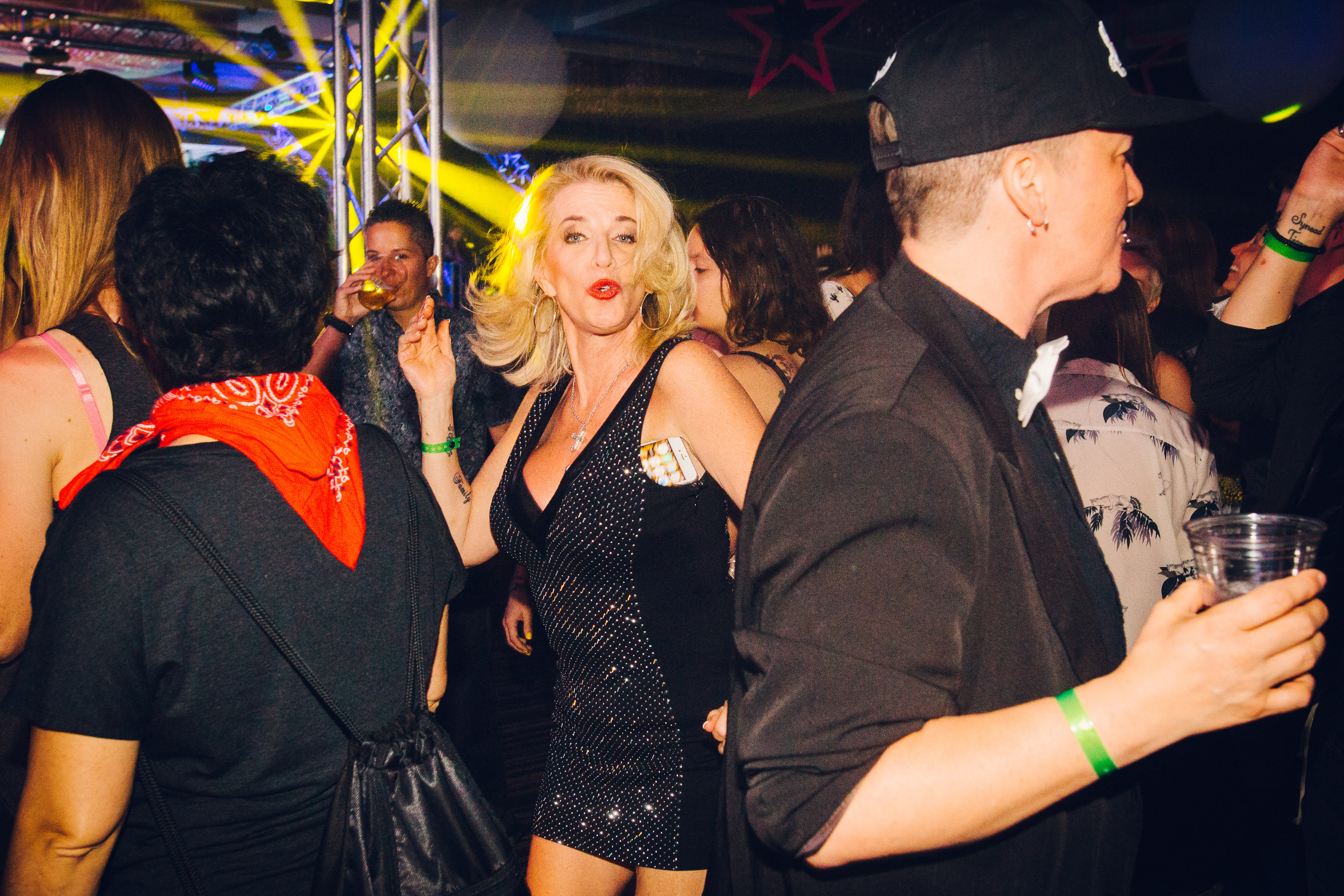
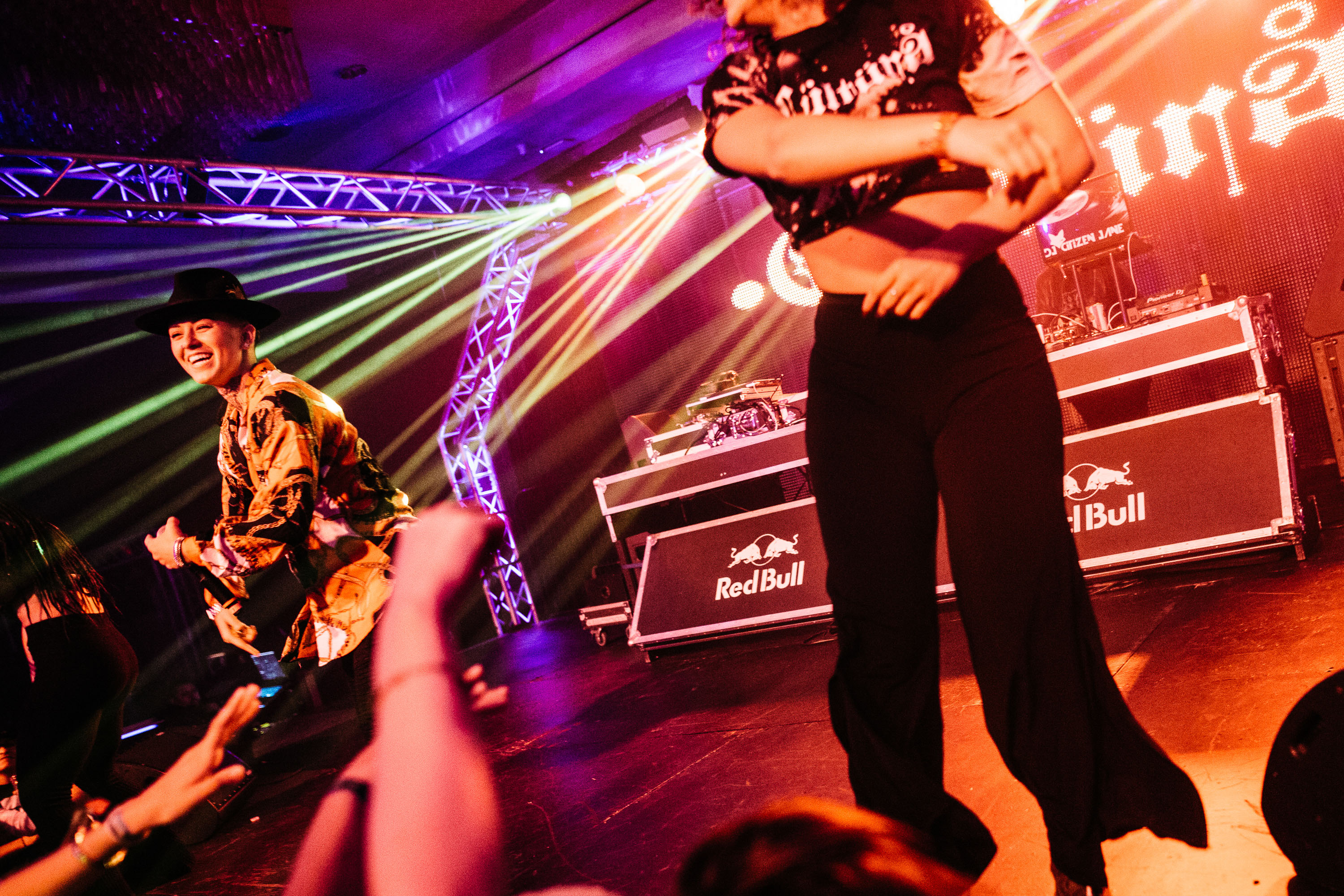
Melissa’s highlight: “Lady Cultura’s performance and her amazing dancers!”
SUNDAY
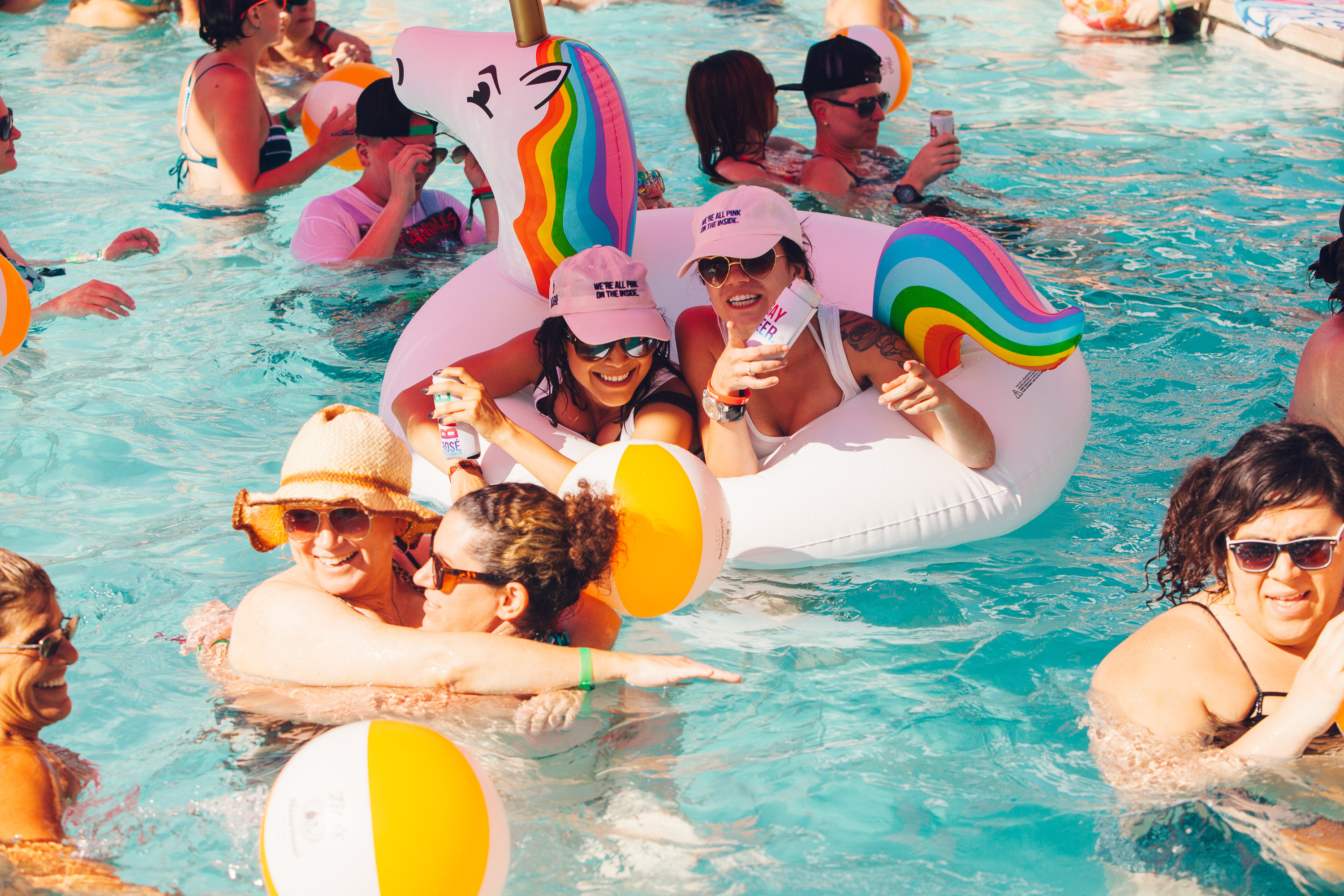
Melissa: “Every year I go in meeting new friends and come back home with new editions to my Dinah family!”
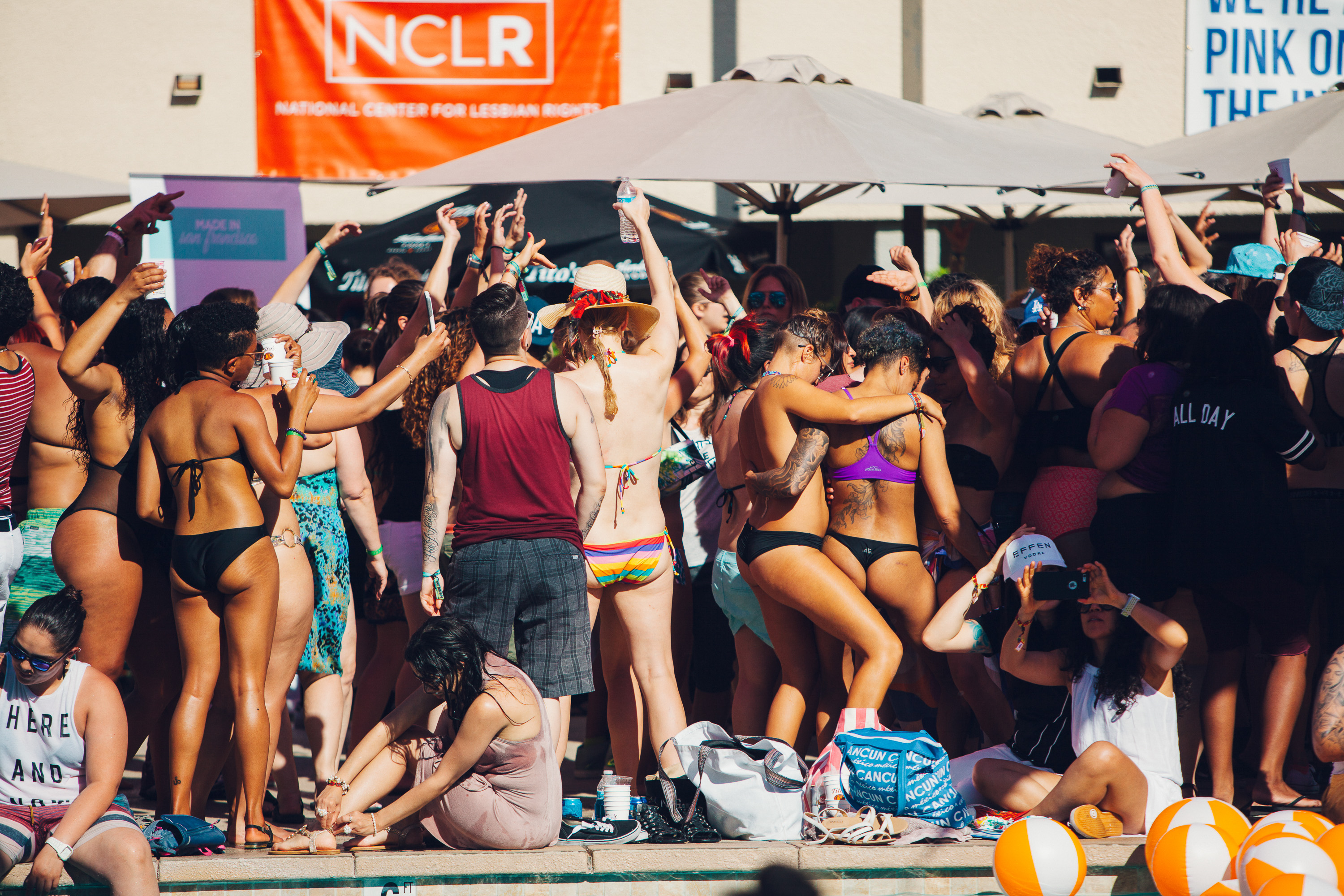
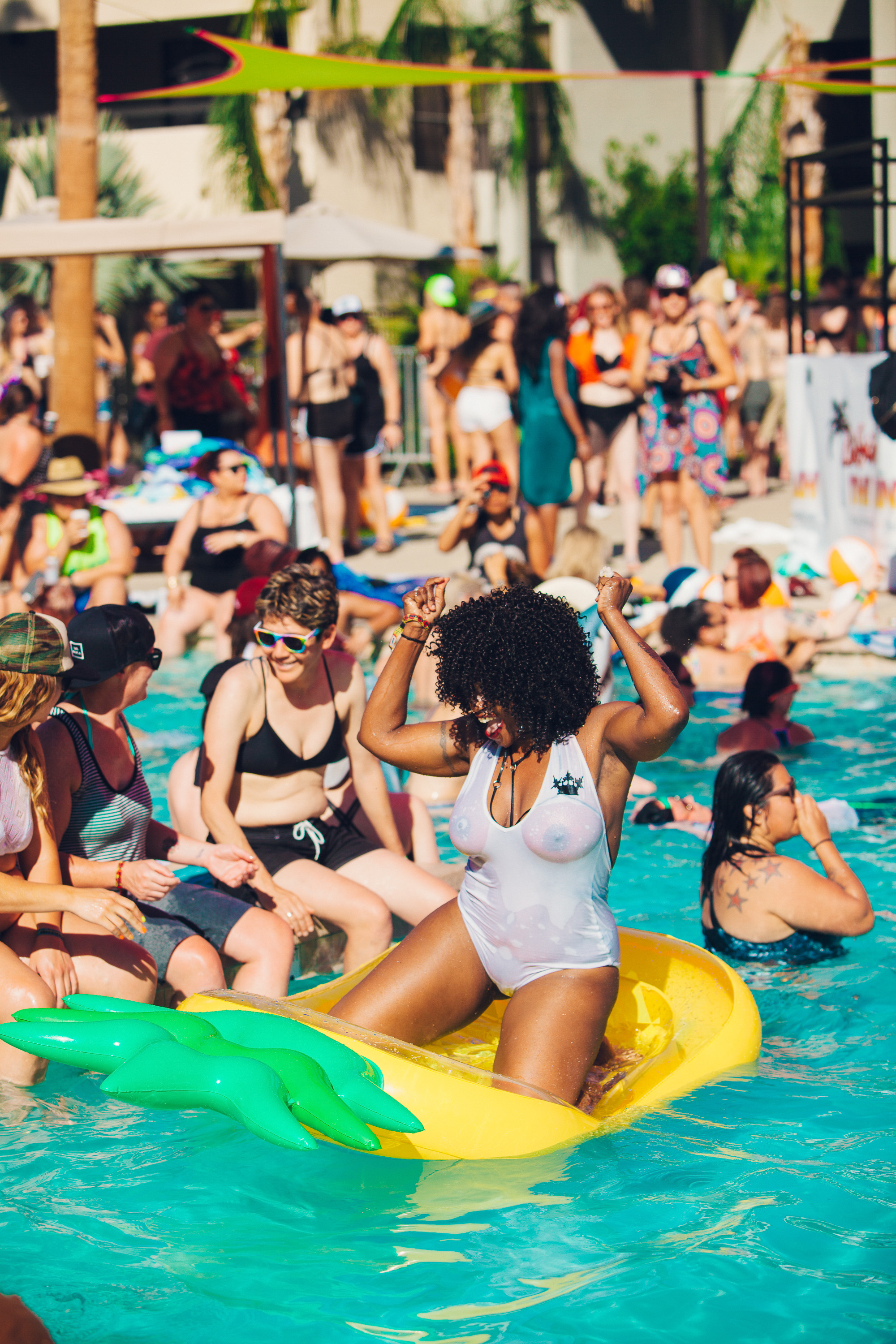
Julia: “Every year I meet the coolest women from around the world! I had a handful come up and tell me that they follow my partner and I on social and they were so proud of what we were doing and looked up to our relationship. To be able to affect others from across the globe and then meet them in person and see their smiles is very special to me!”
Some of you ladies have partners who join you at Dinah. What is that experience like?
Julia: “As a fellow entertainer my partner Felicia understands what comes along with the entertainment industry. She still gets the cutest smile on her face when she sees me on stage and I get the same look when I see her in action. She’s my rock and we leave Dinah stronger than when we came.”
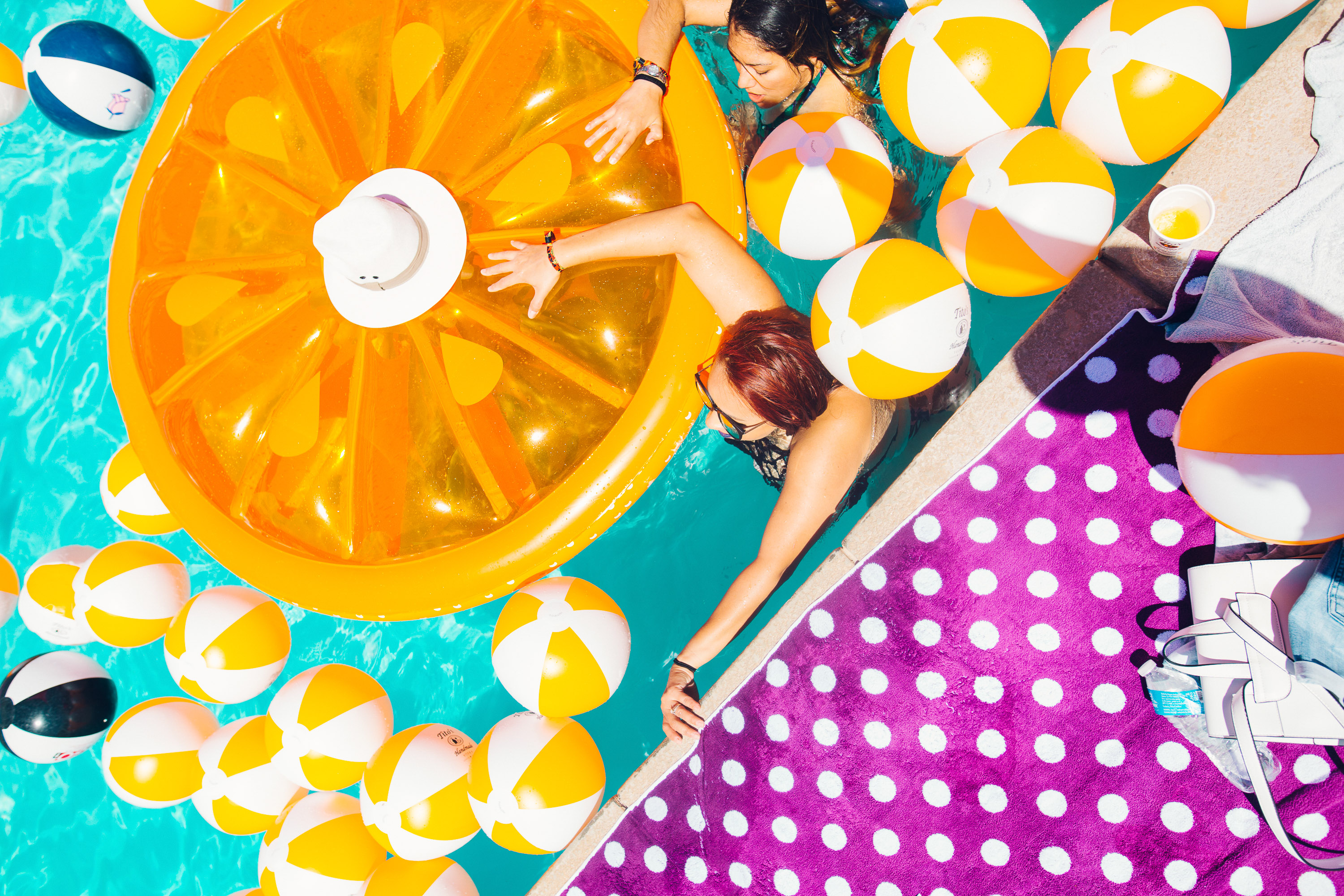
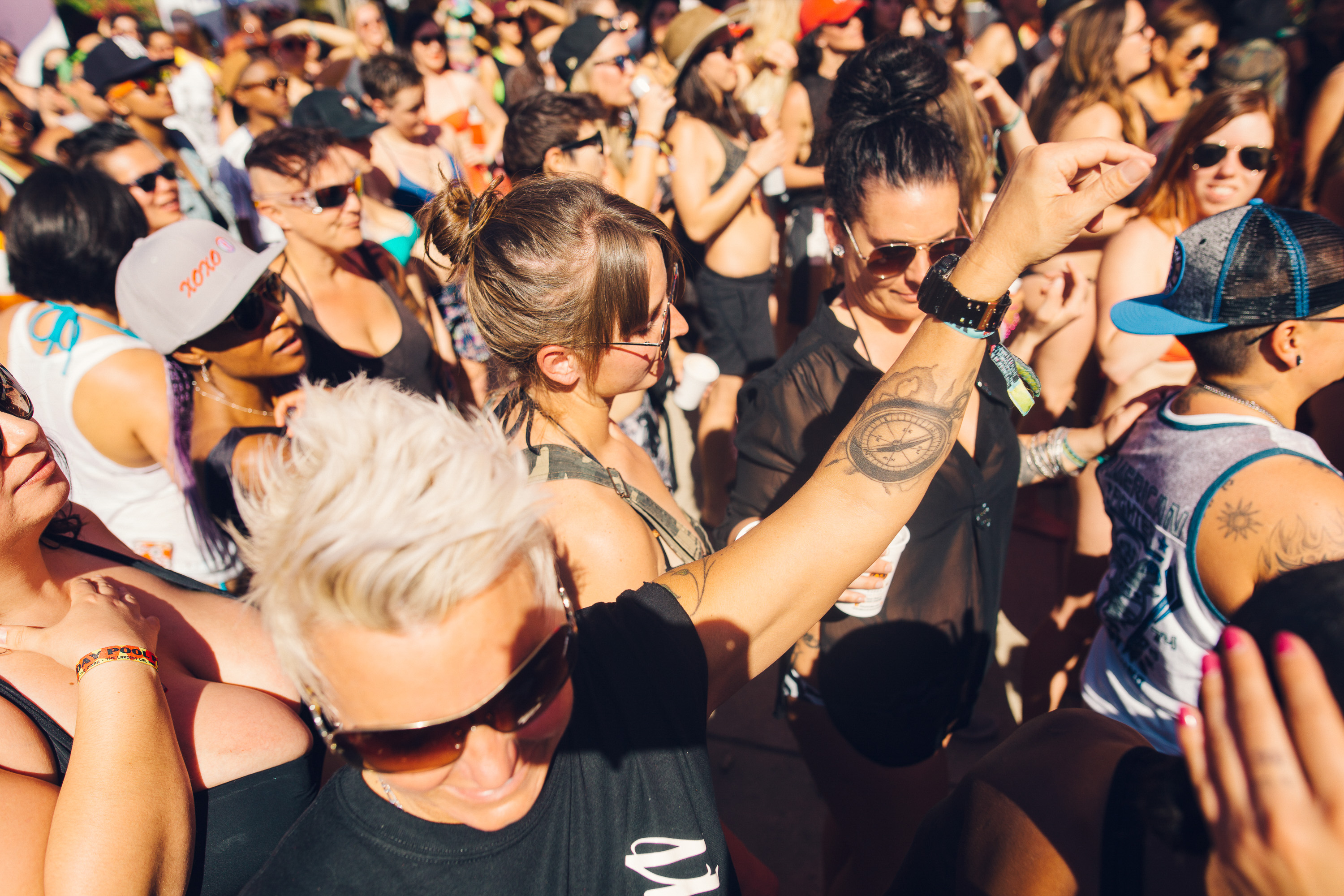
As Dinah closed out this year, people weren’t ready to go home.
The end of the night brought Melissa’s Dinah highlight : “It was at the end of the night closing party at Zelda’s. I remember walking outside where everybody was in front of the club dancing in the parking lot to multiple car alarms.”
Rachel: “Sunday night at Zeldas. The whole night, seeing people from the weekend, the set up of that club is great because we can really get close to people and make connections! I hope I made someone’s Dinah more memorable with my dancing. The hardest part of Dinah is recovering from Dinah. There’s definitely an emotional comedown when you have to get back to everyday life. Also my legs and knees are so sore from twerking for 4 days straight lol”
Alyhed: “Monday morning when you have to face reality and go home.”
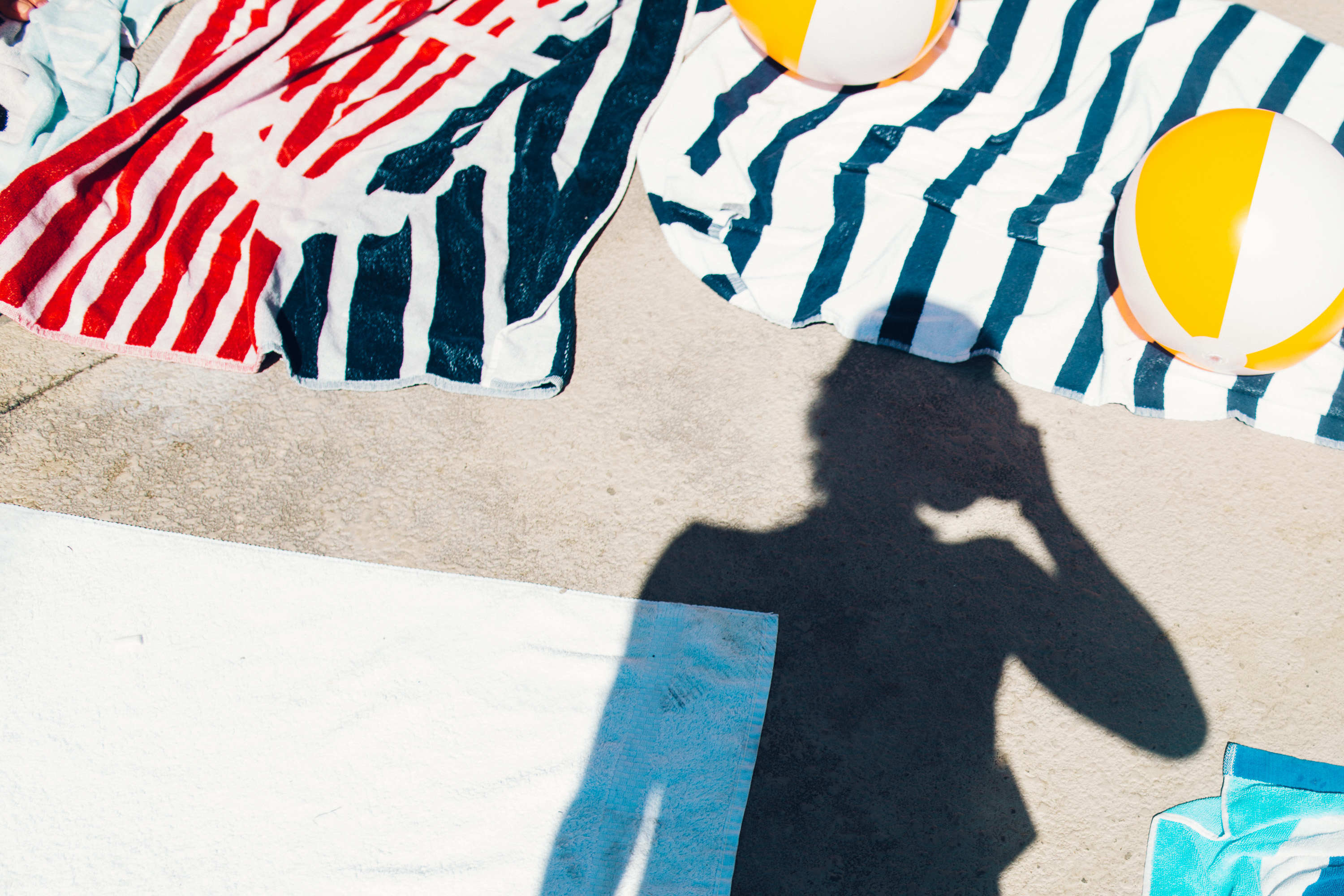
Team Pick: Celebrate Kaylah’s Face, Queer Art
Carmen’s Team Pick:
Hi, do you love Kaylah? Maybe you’ve heard of her. She’s a former Autostraddle mod, current A-Camp Dance Team Coordinator, long-time #SlutShack member, and all-around amazing person. And now she’s a muse! And the best part? The one and only and totally amazing A-Camper Alex Ross made some amazing art utilizing Kaylah’s beautiful face and it was selected to be the actual face of the Alternator Centre for Contemporary Art’s fourth annual pride exhibition: Yaass! A Celebration of Pride and Diversity.
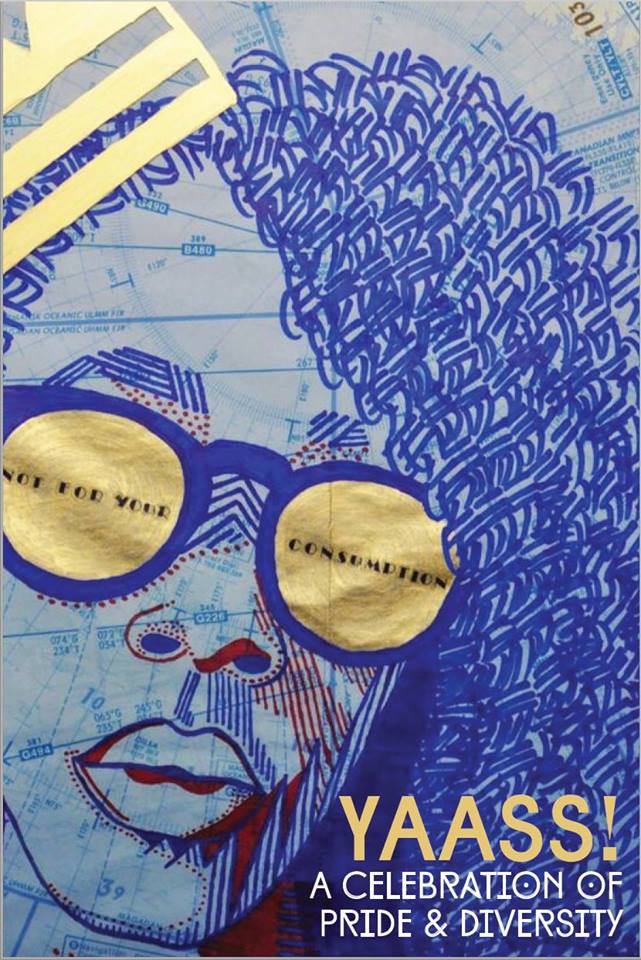
That’s right. Kaylah’s face is the official face of a queer art exhibition stacked with badass queer artists including Chelsea Barg, Shannon Lester, and Shelley Penner, among others. And you can admire her own face and other amazing pieces of queer art all month long for FREE! at the gallery and ring in the pride celebration tonight at their launch party.
I honestly don’t know what you’re waiting for. Let’s all fly out to British Columbia immediately and witness this testament to Kaylah’s beauty, yes? Okay, see you there.
PHOTOESSAY: Dinah Dinah Dinah
This year I decided to DO Dinah (as opposed to last year when I ran away and went camping). It’s basically “how long can I survive in the heat before I die” and then “how long can I stay at this party before I pass out” and repeat.
Things to bring:
- sunscreen
- phone charger
- swim suit
- something to put over your swimsuit
- some sort of white-ish outfit
- donuts
- your dog (if your lodging allows)
DAY 1
LA —> Palm Springs
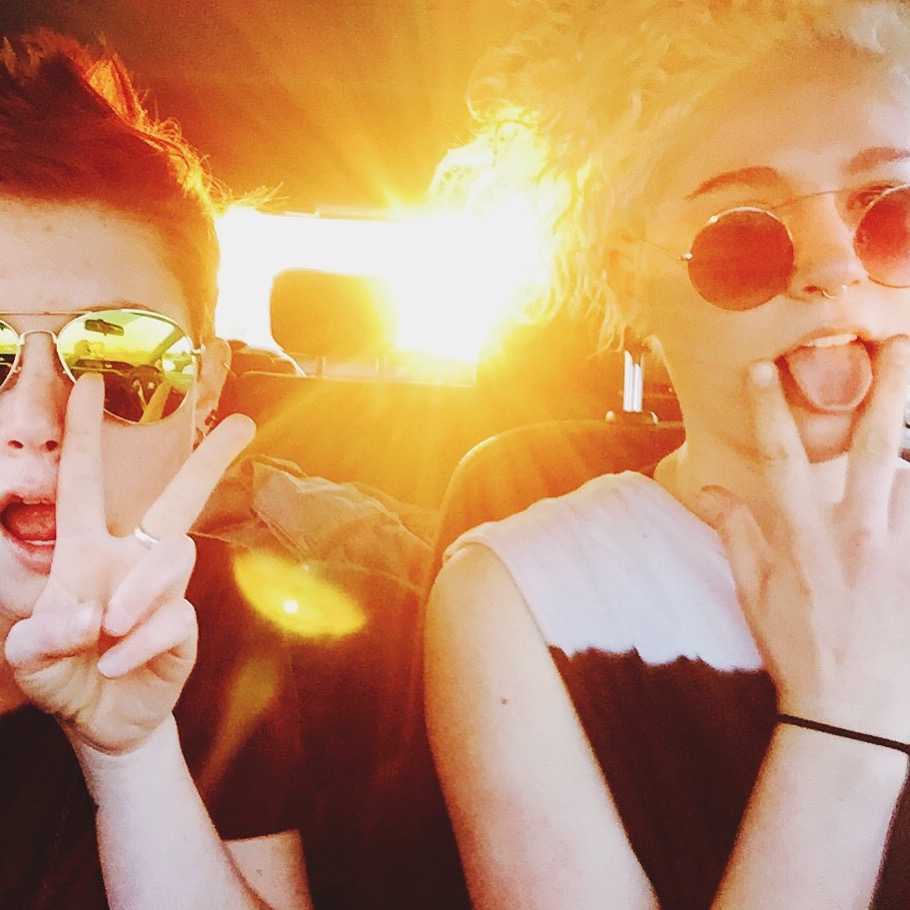
I had the privilege of being housed by the Stuzo Clothing team and Girls With Flair at their rental.
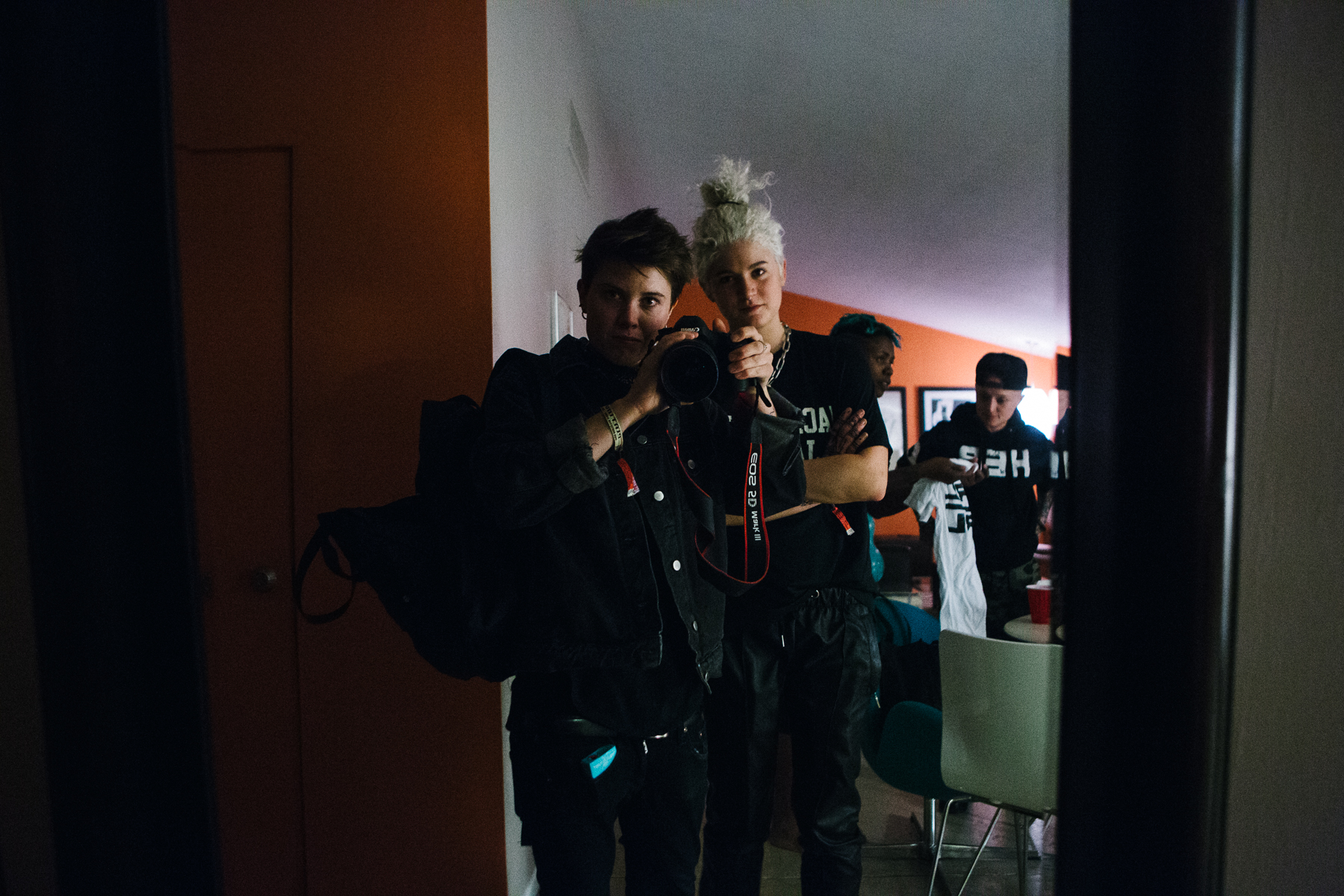
And we were off to the opening party.
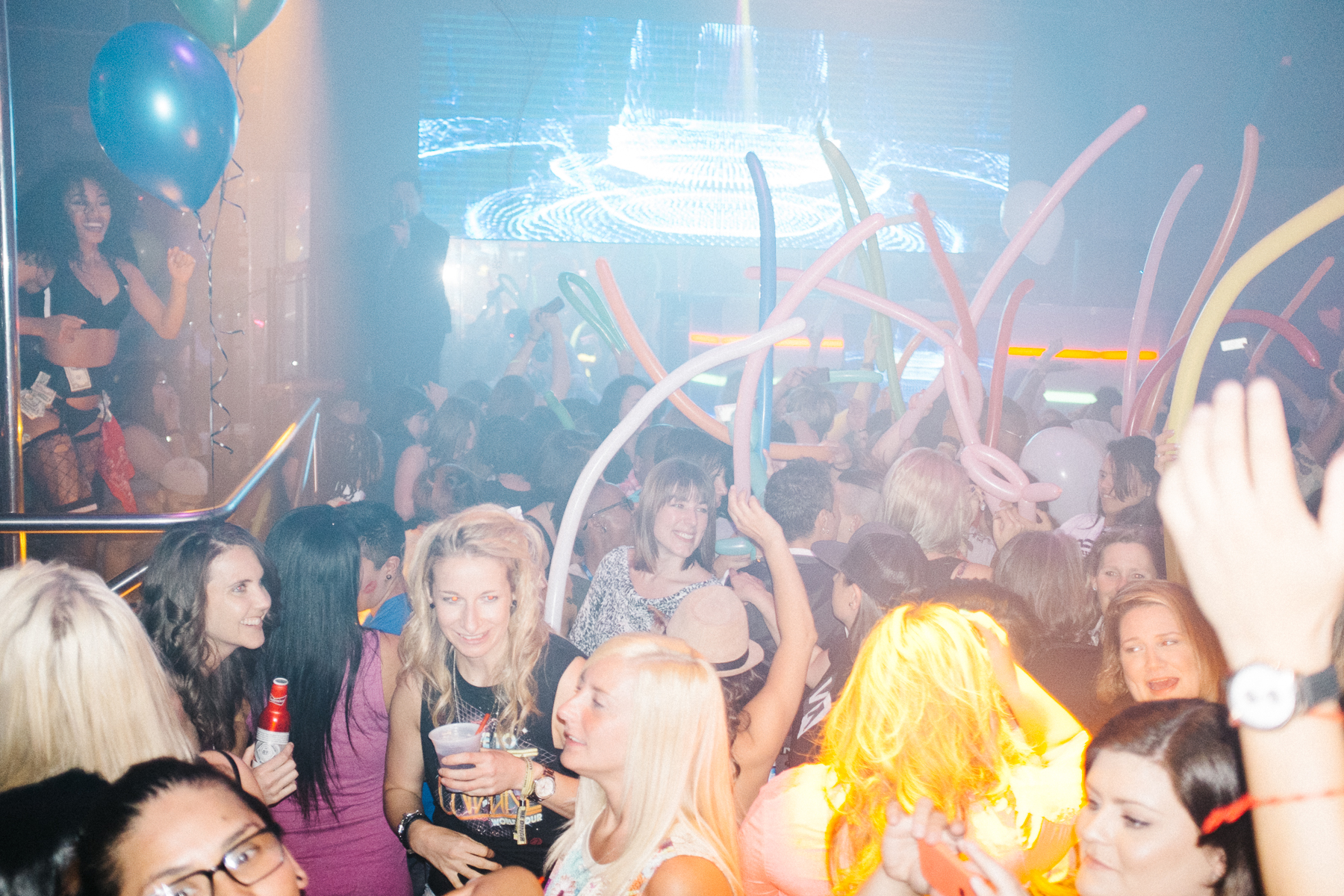

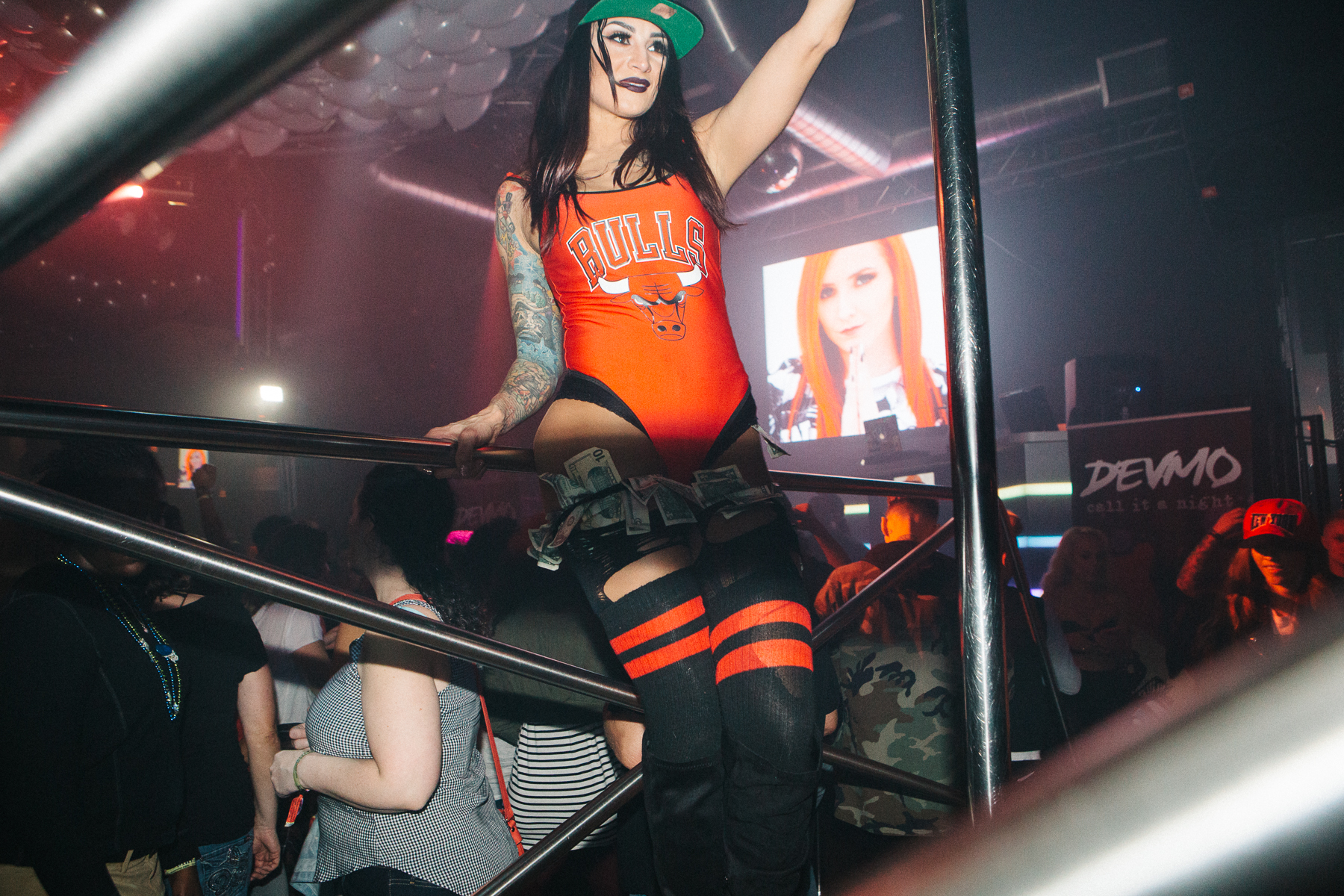
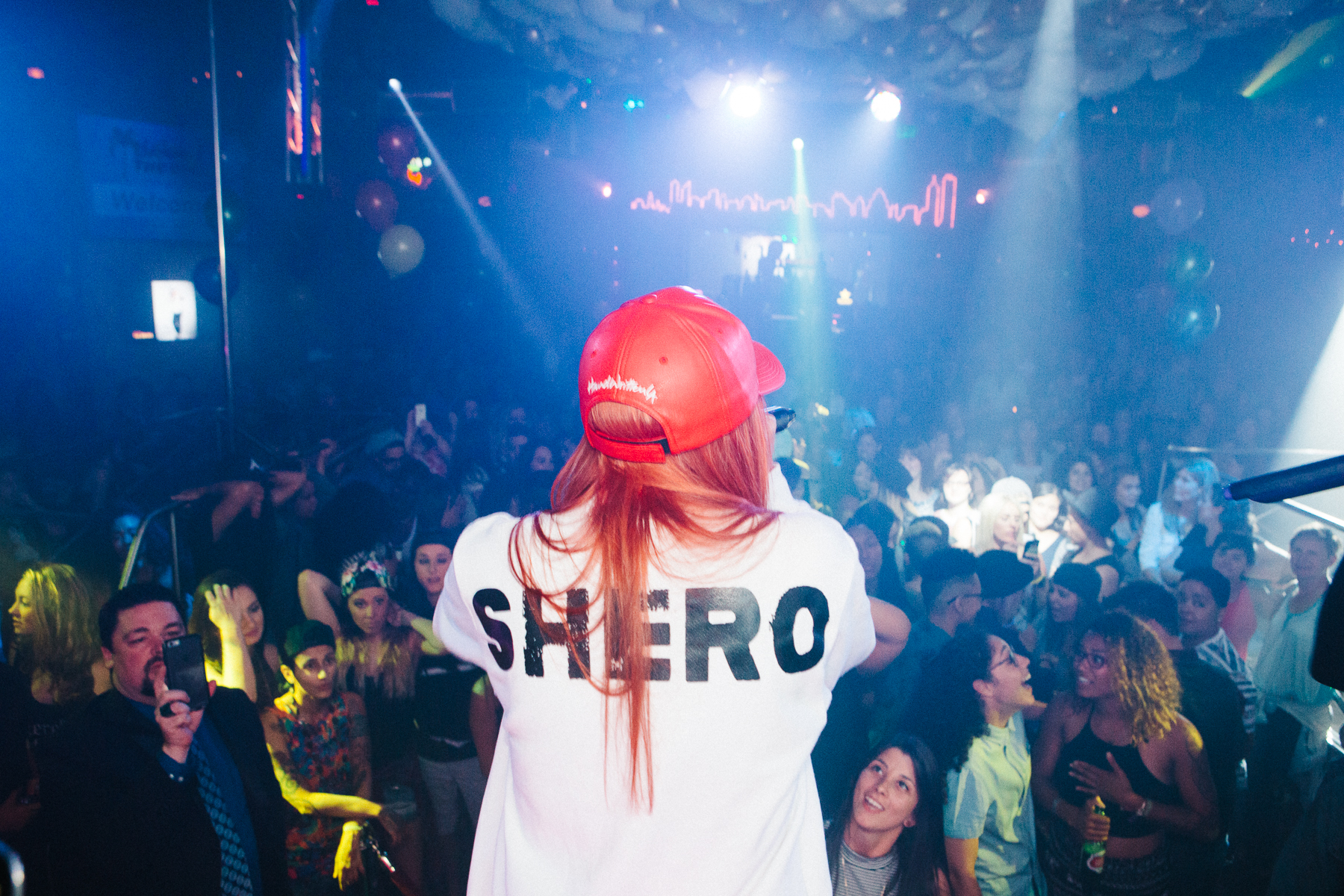
Devmo
Back at the house, Stuzo was hard at work getting ready for the weekend.
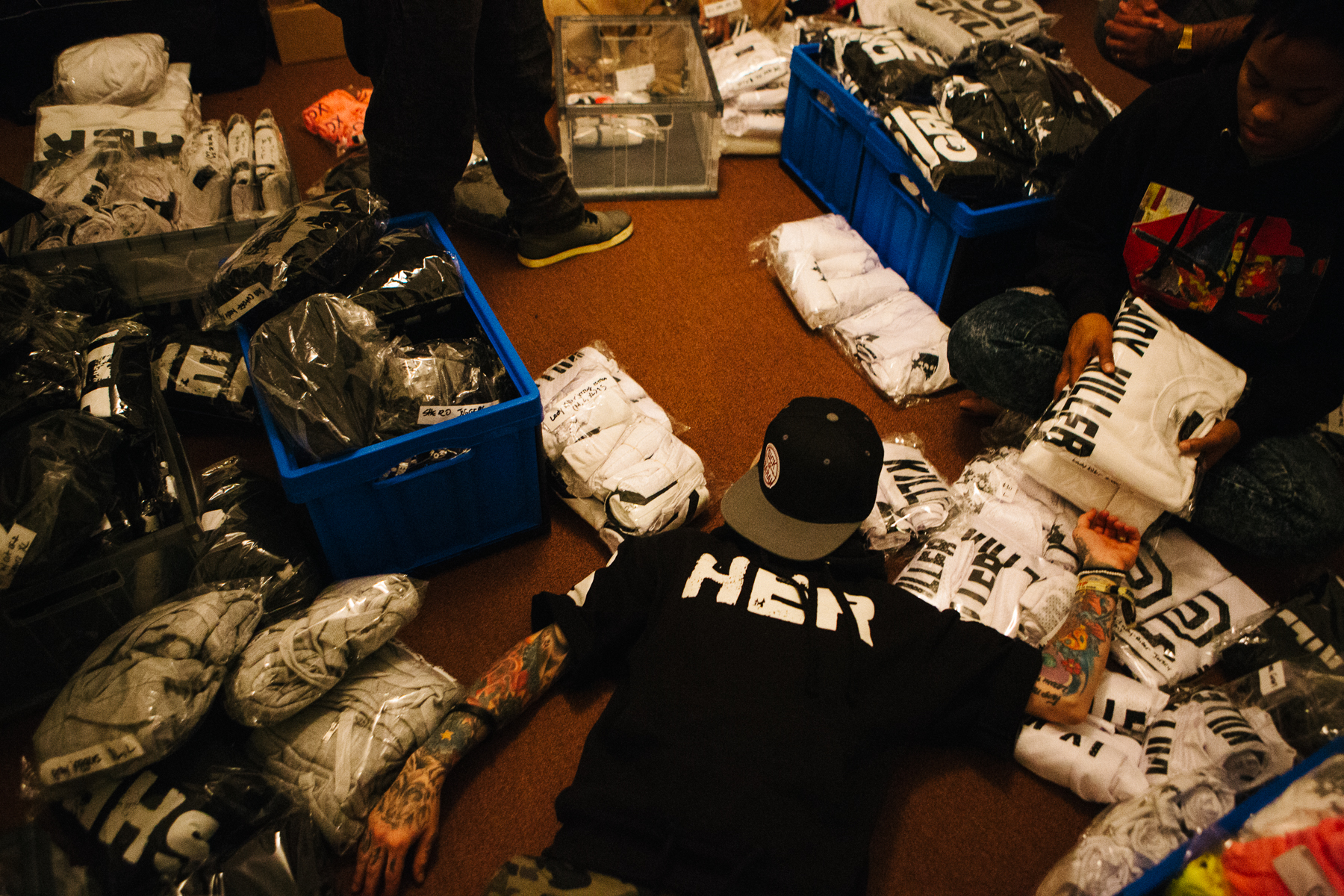
DAY 2
We took a morning swim.

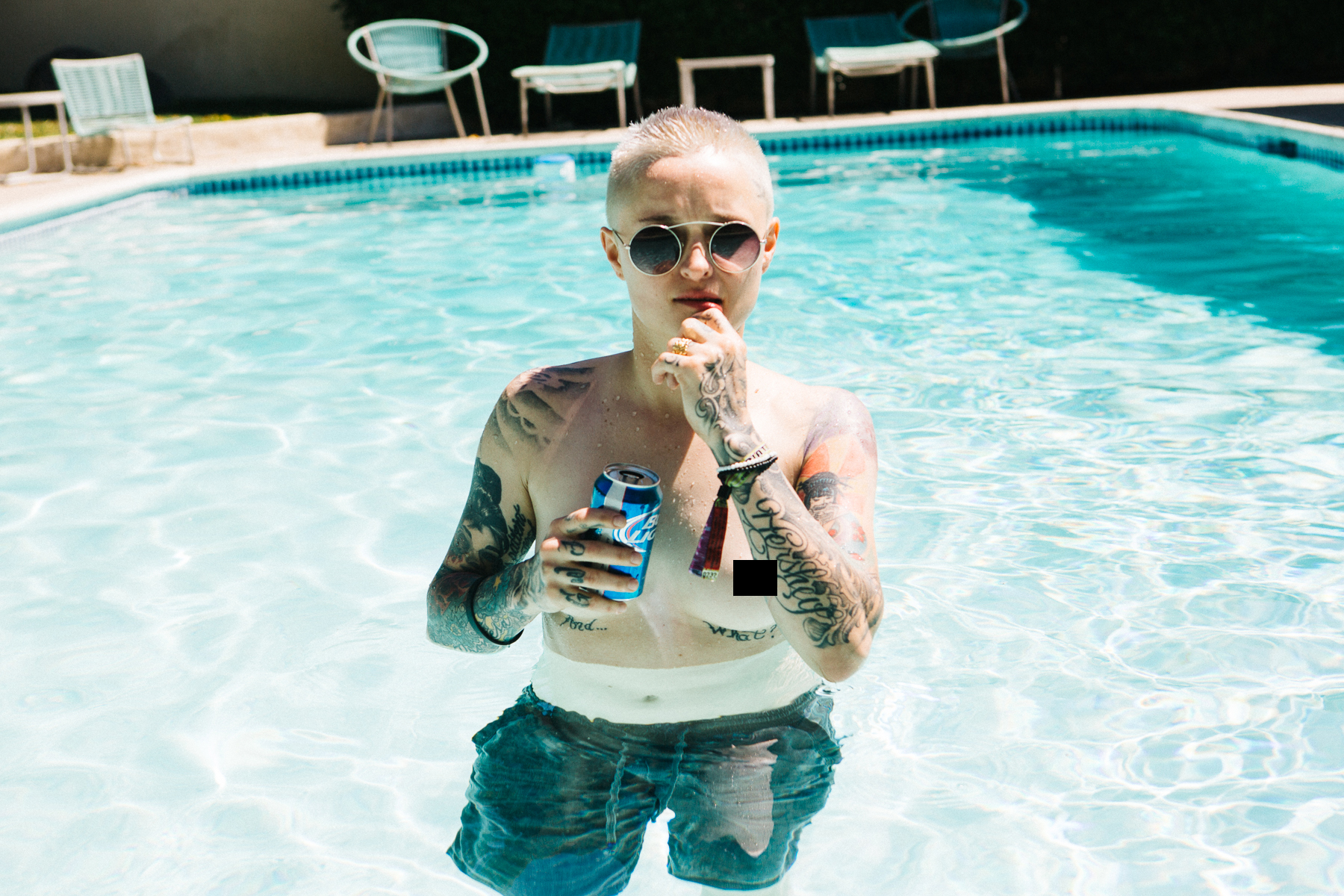
And were off to the pool party.
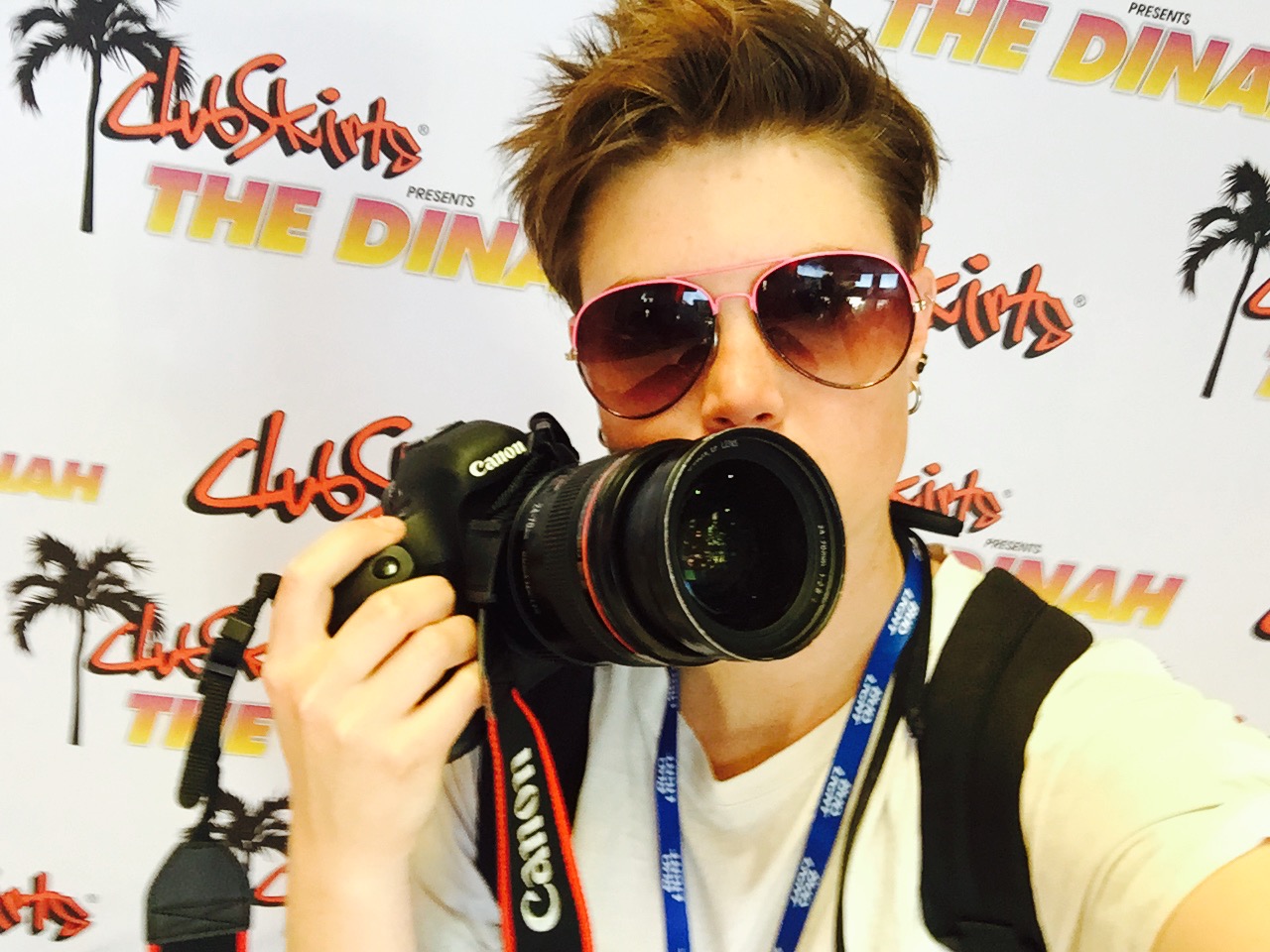

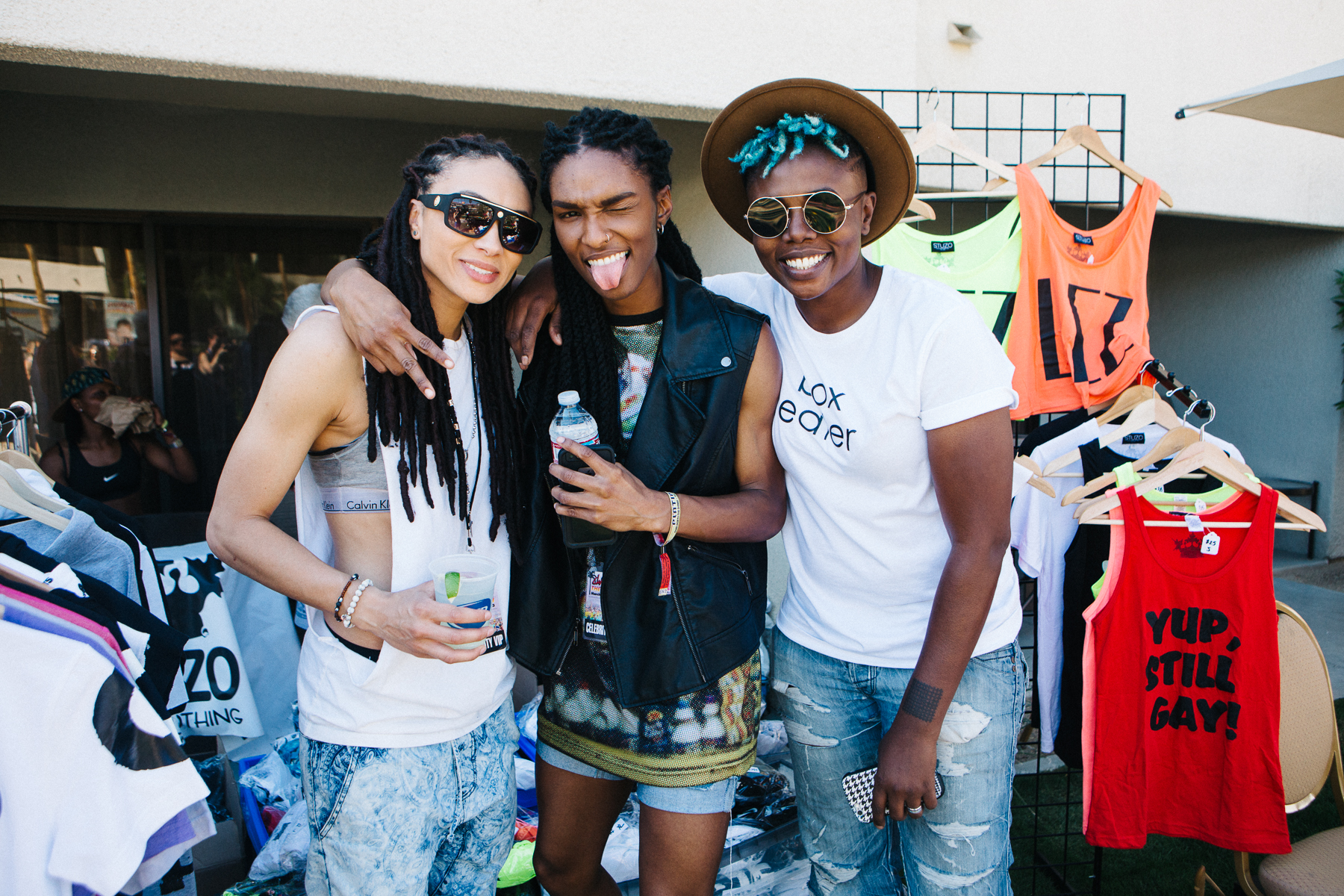
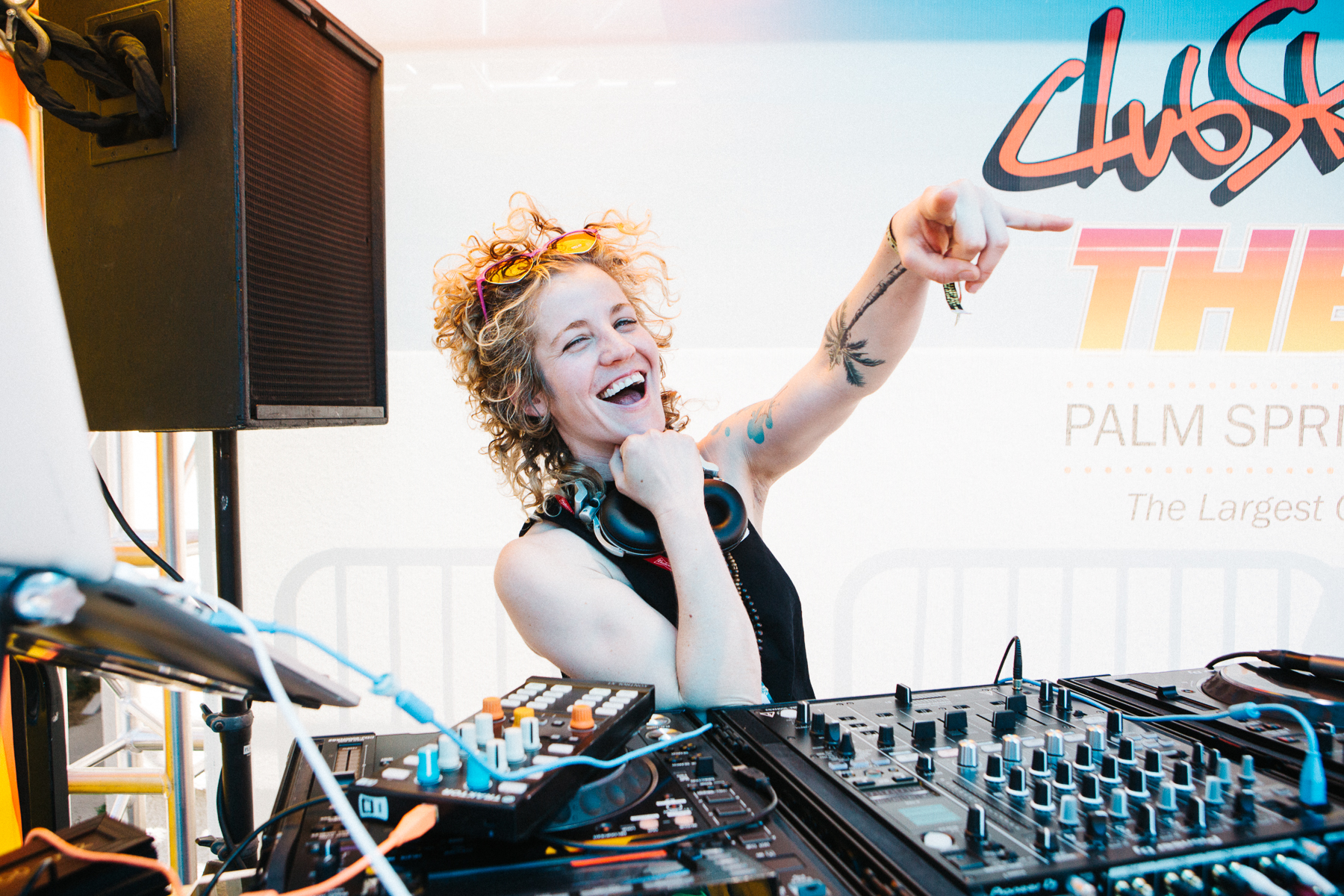
Goodboy
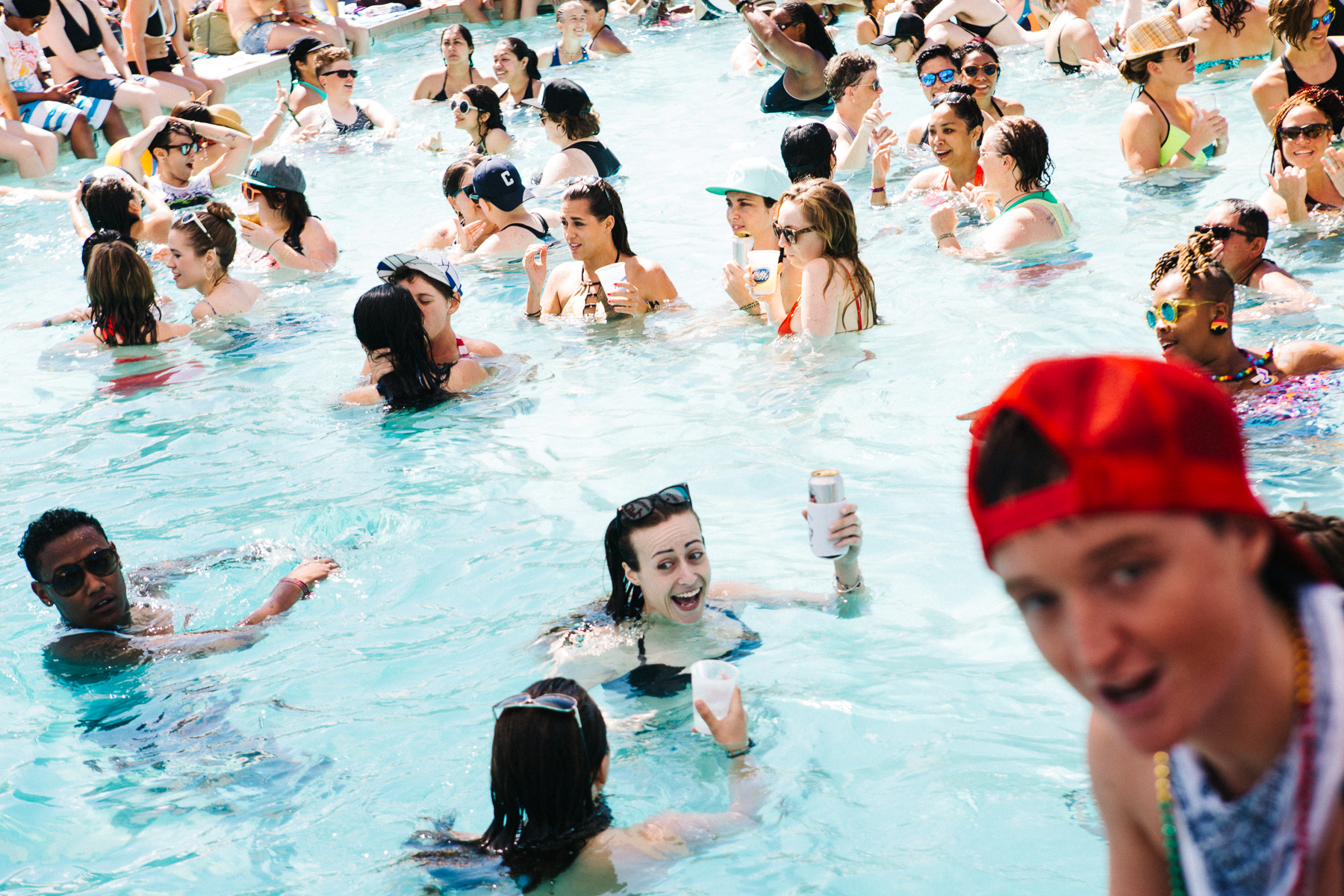
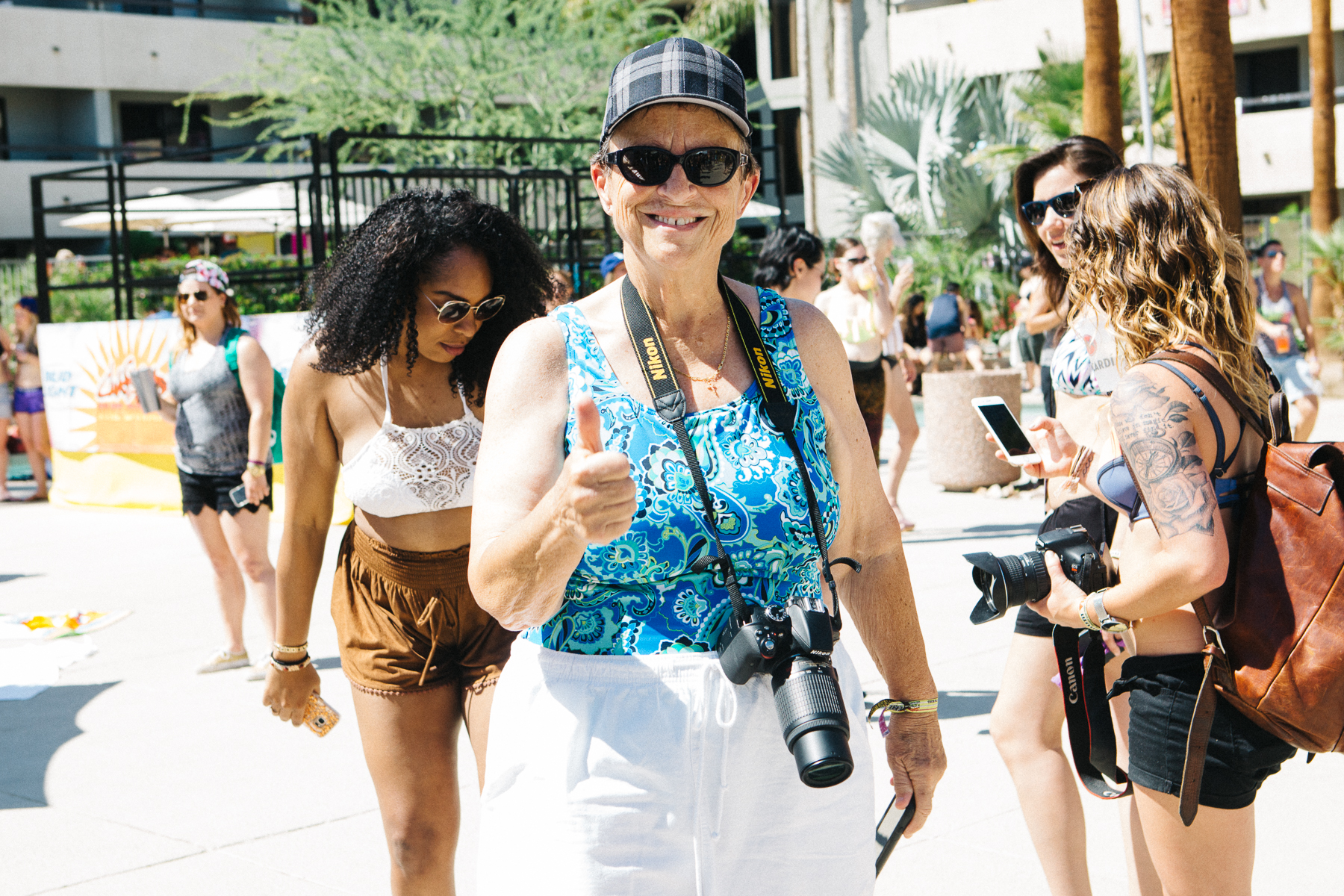
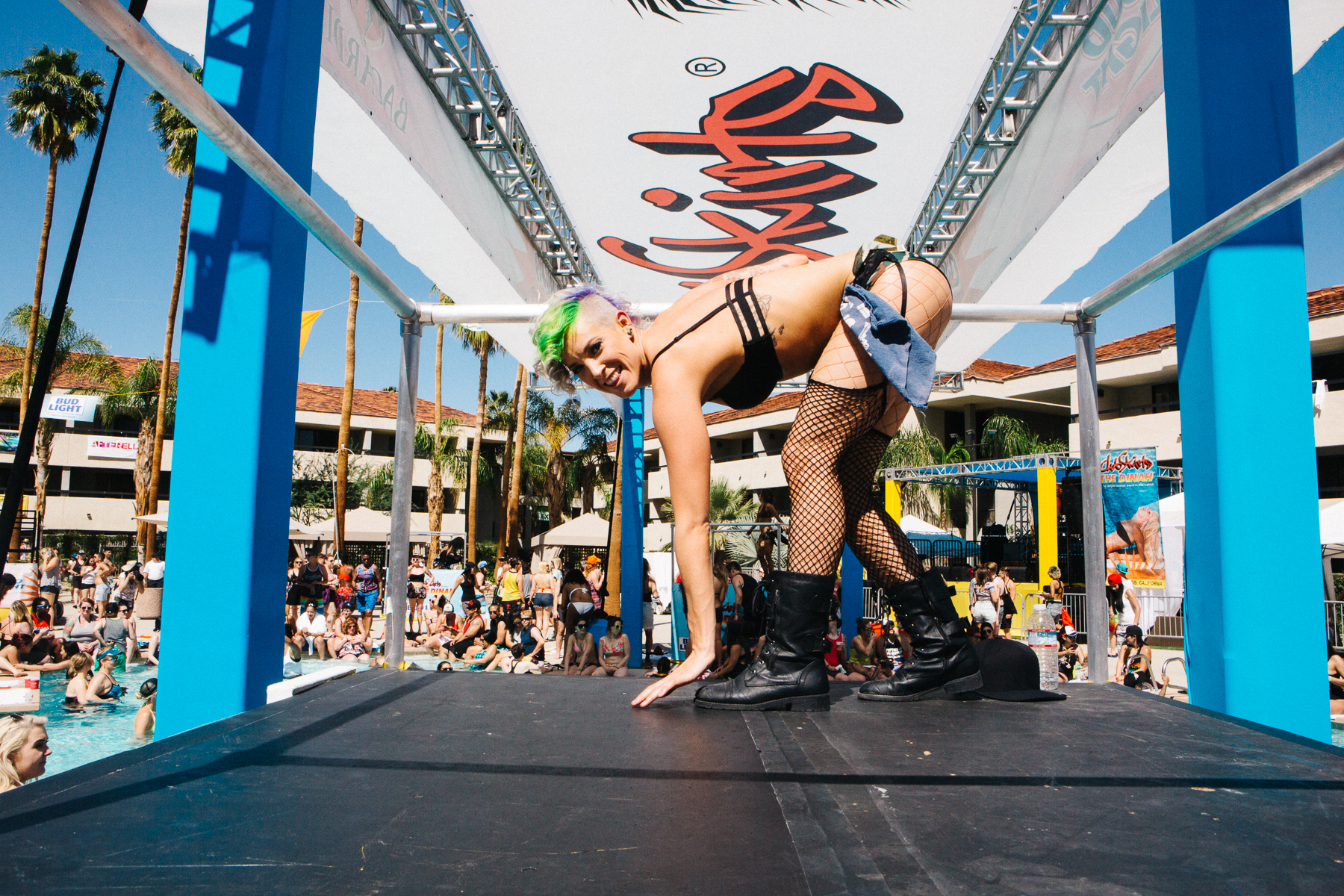
I checked into the Saguaro for some rest. I highly recommend having a place to hideaway from the action.
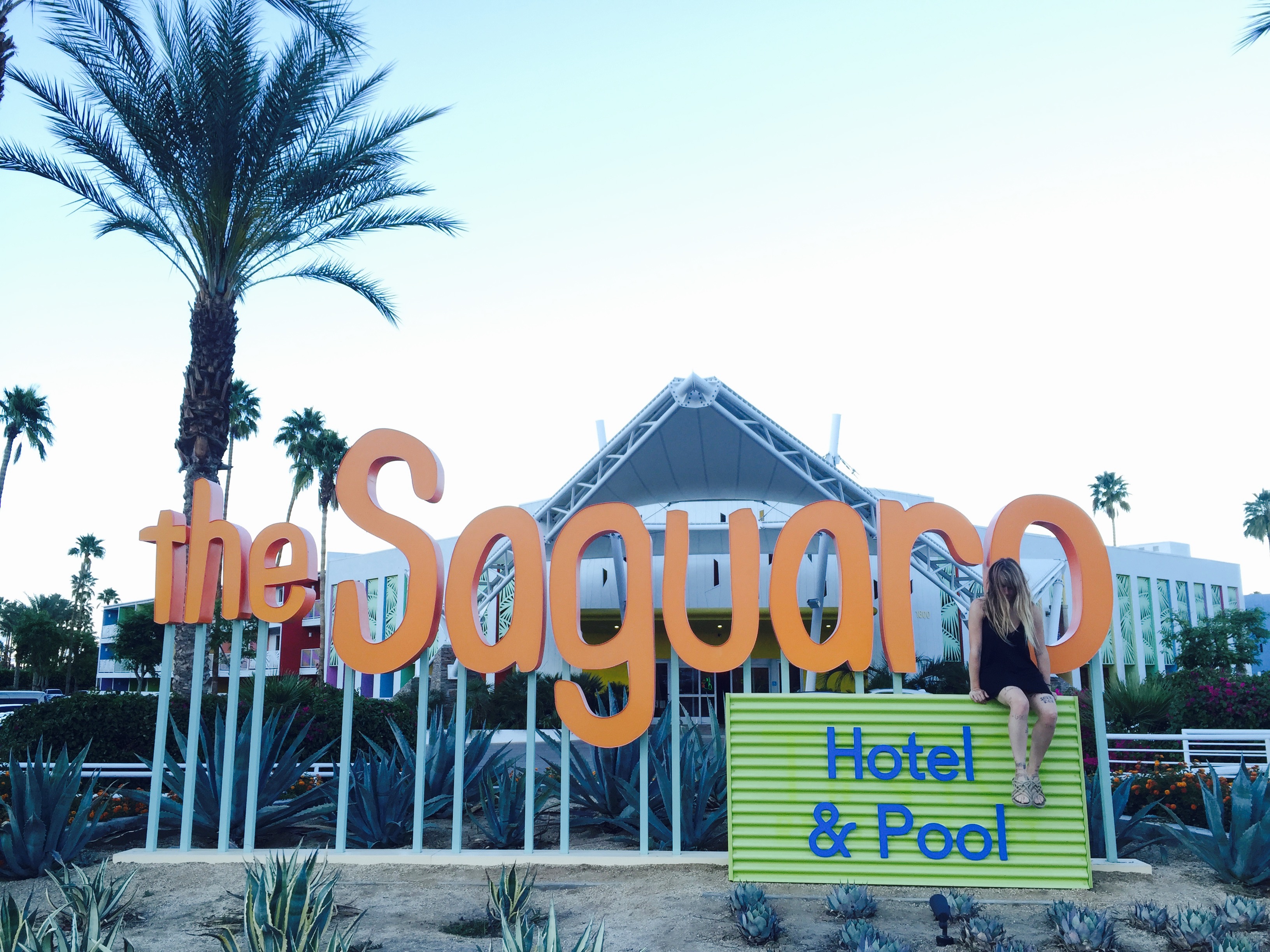
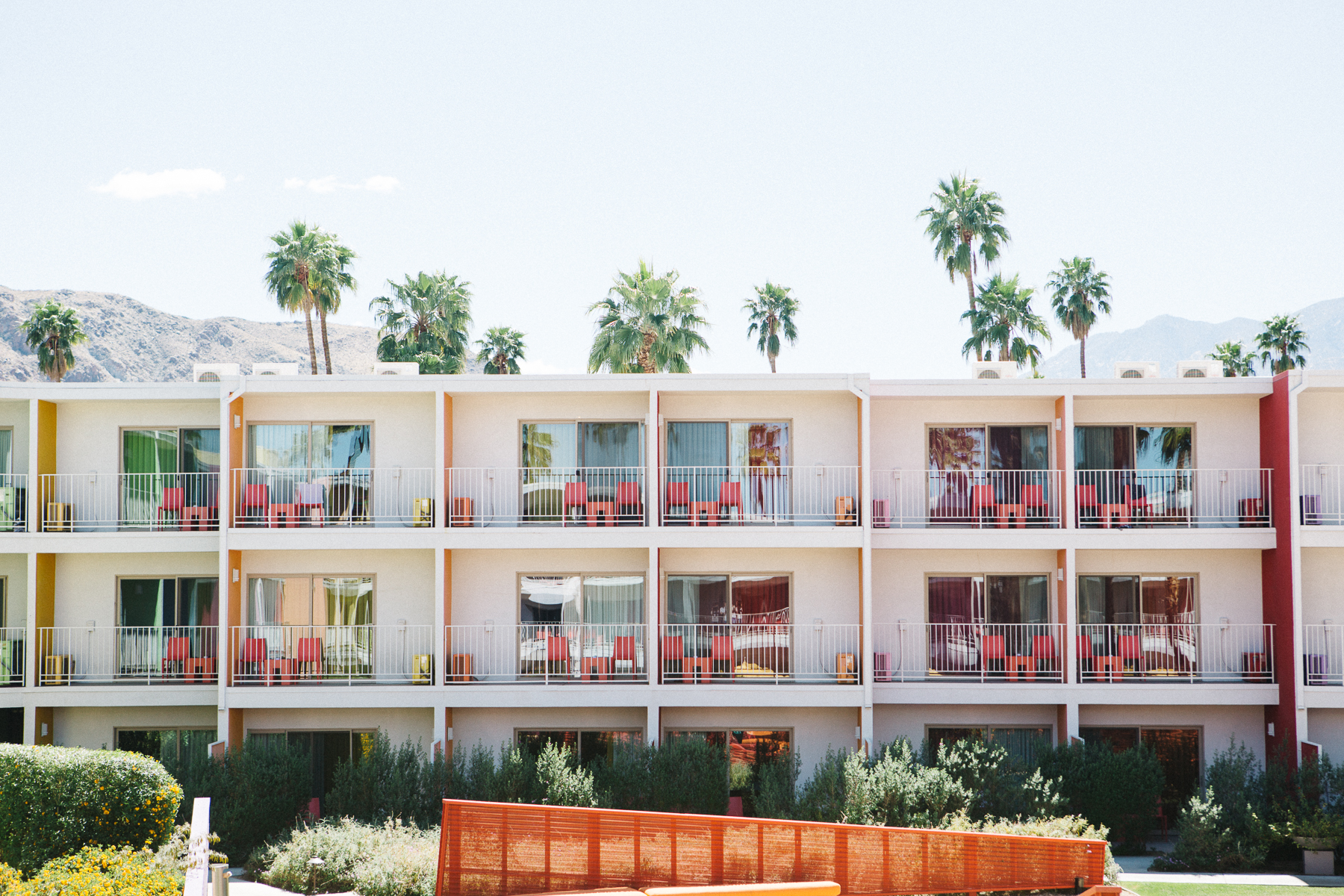
And then it was time for the White Party.
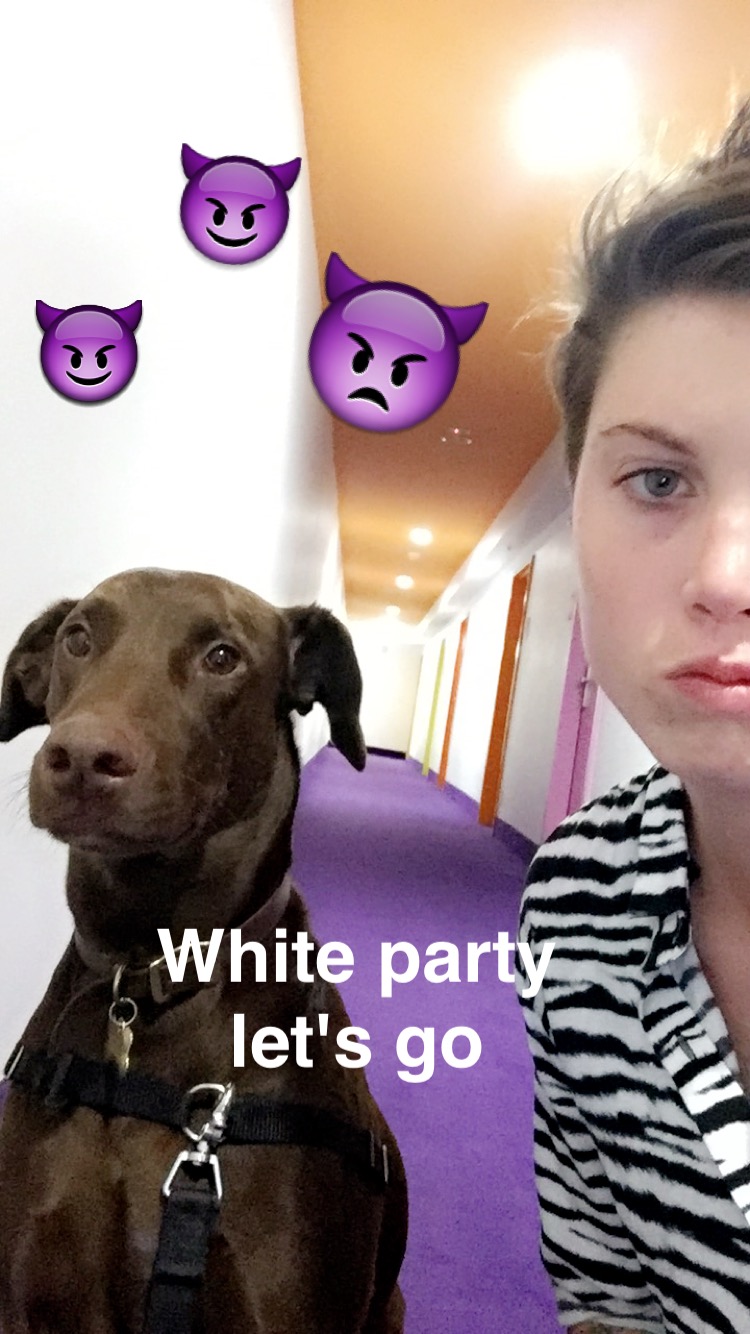
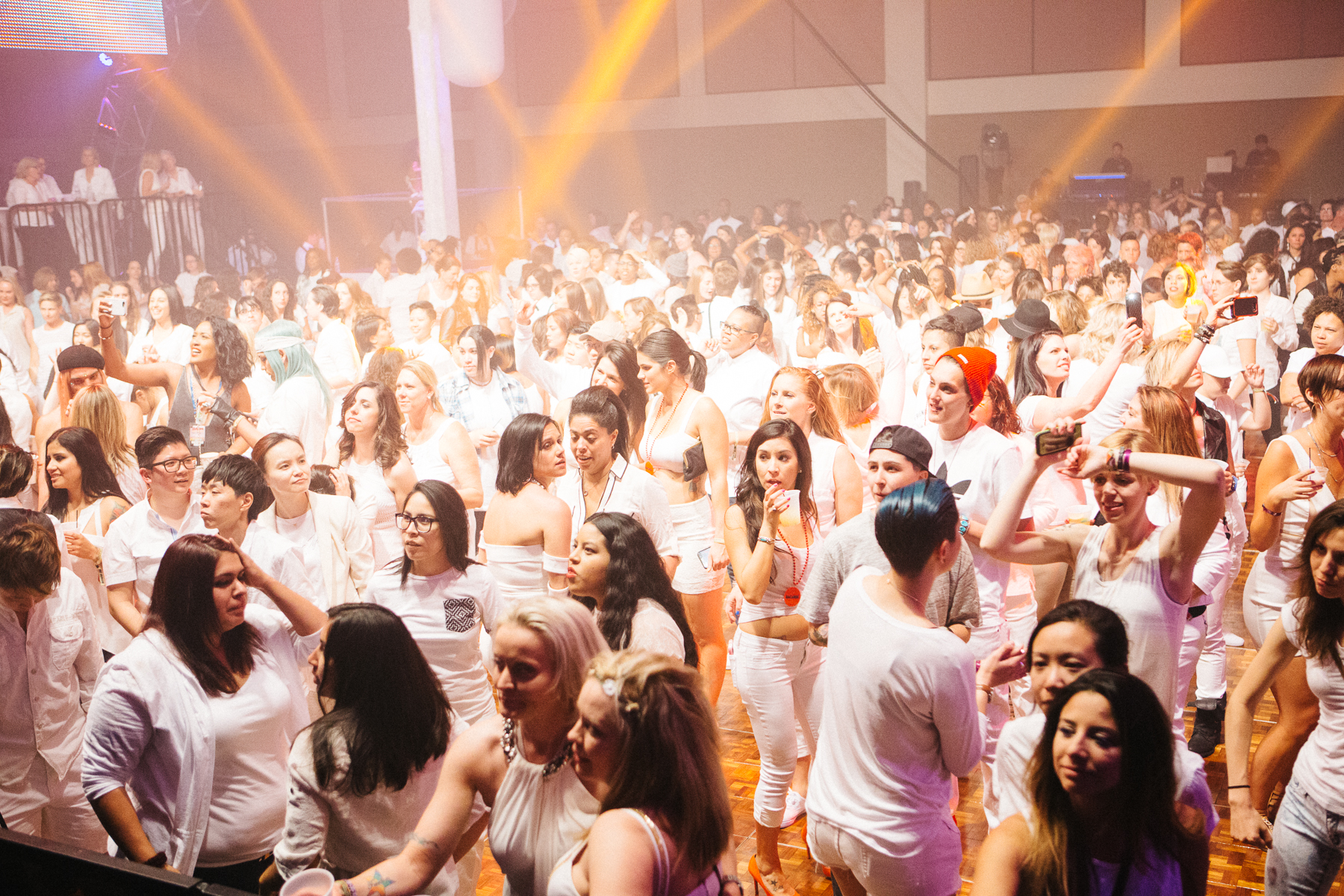
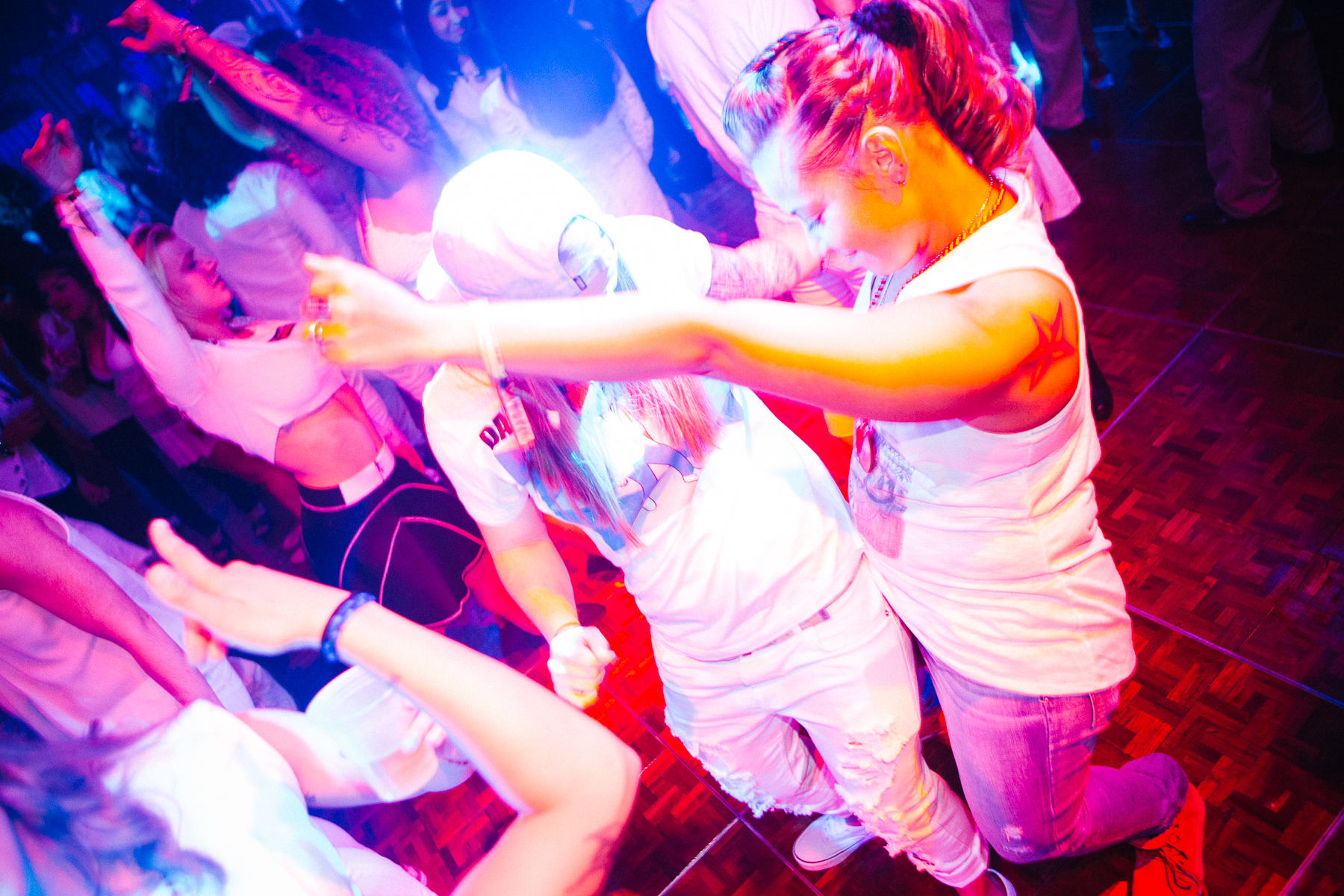
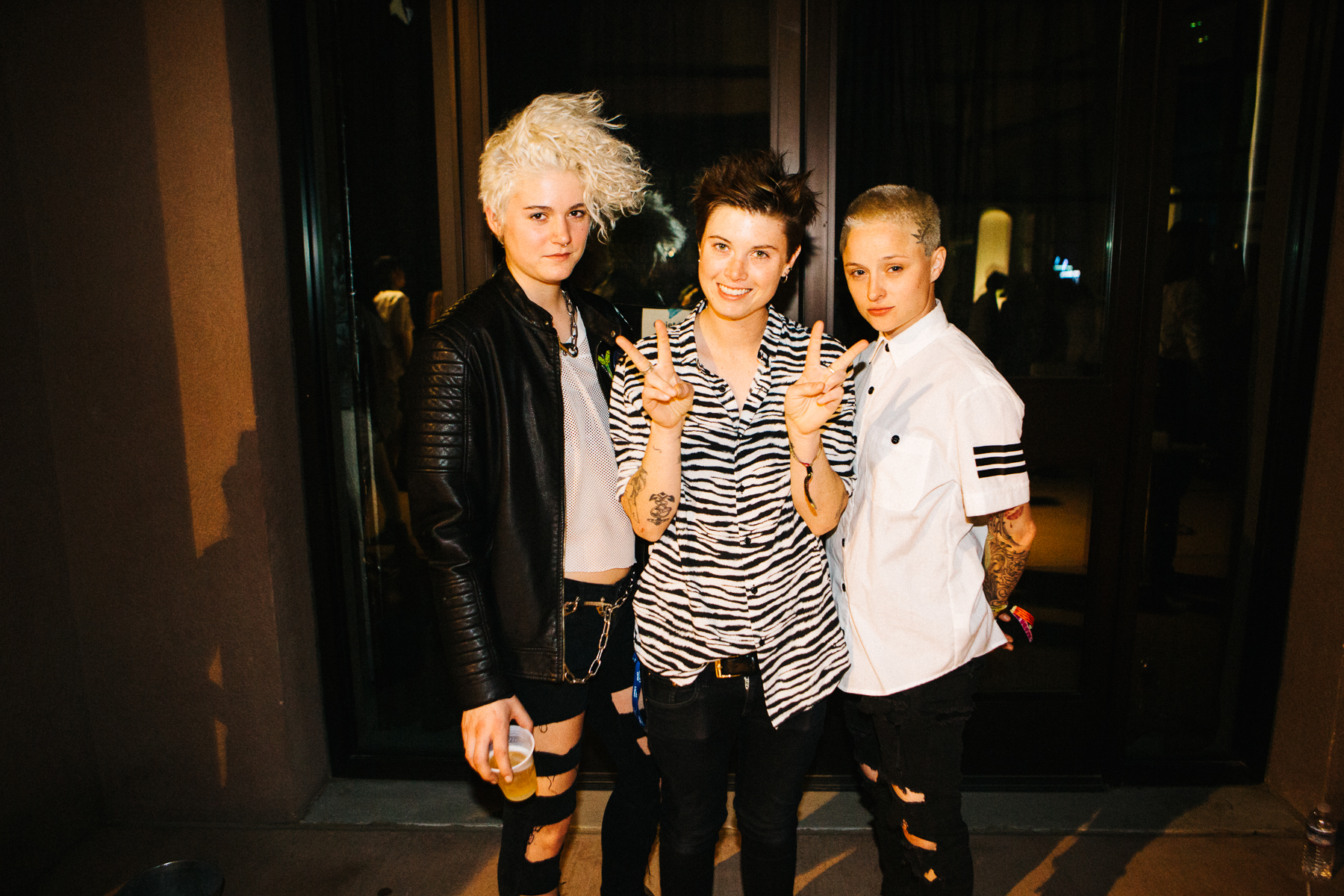
Us, kind of wearing white.
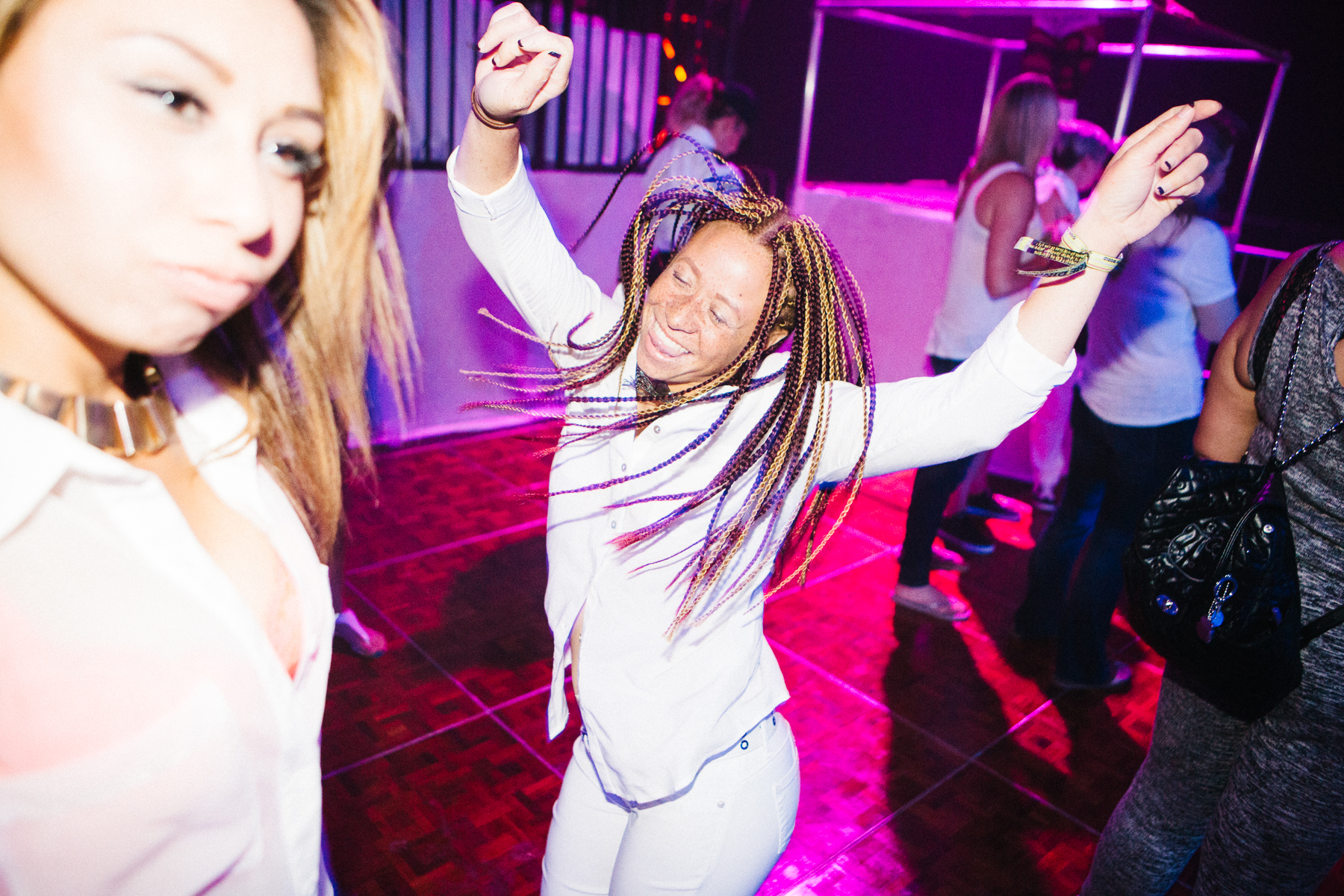
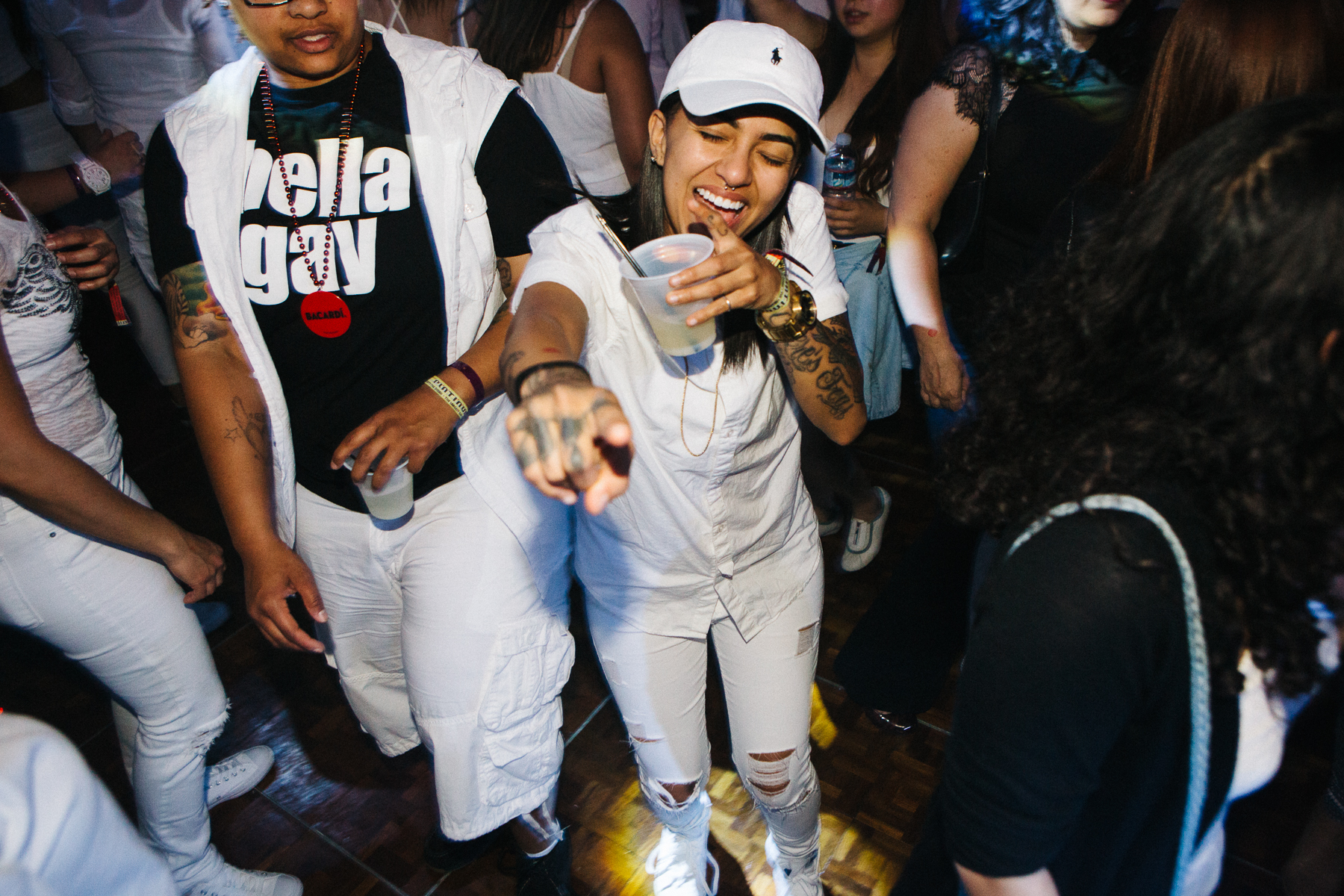
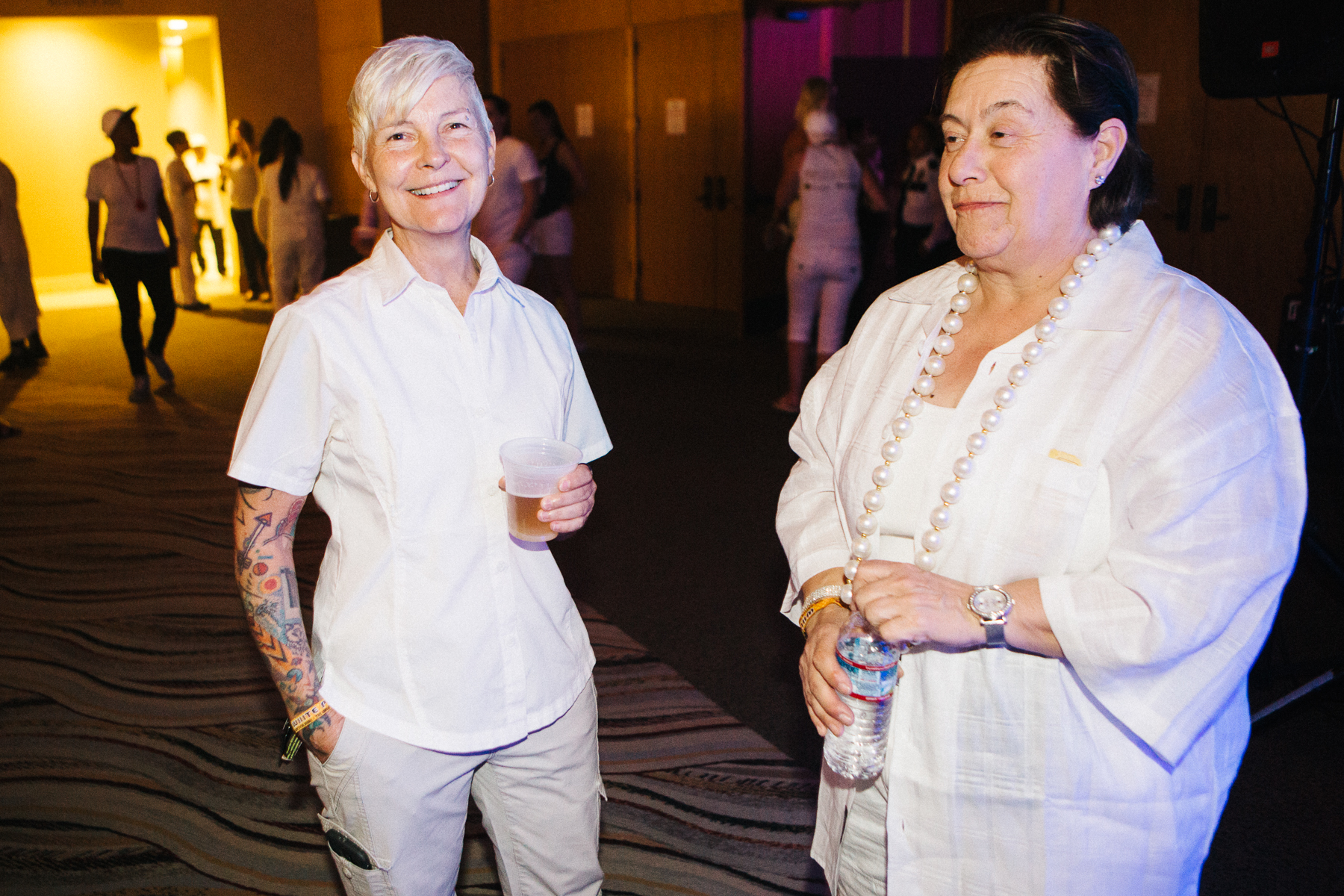
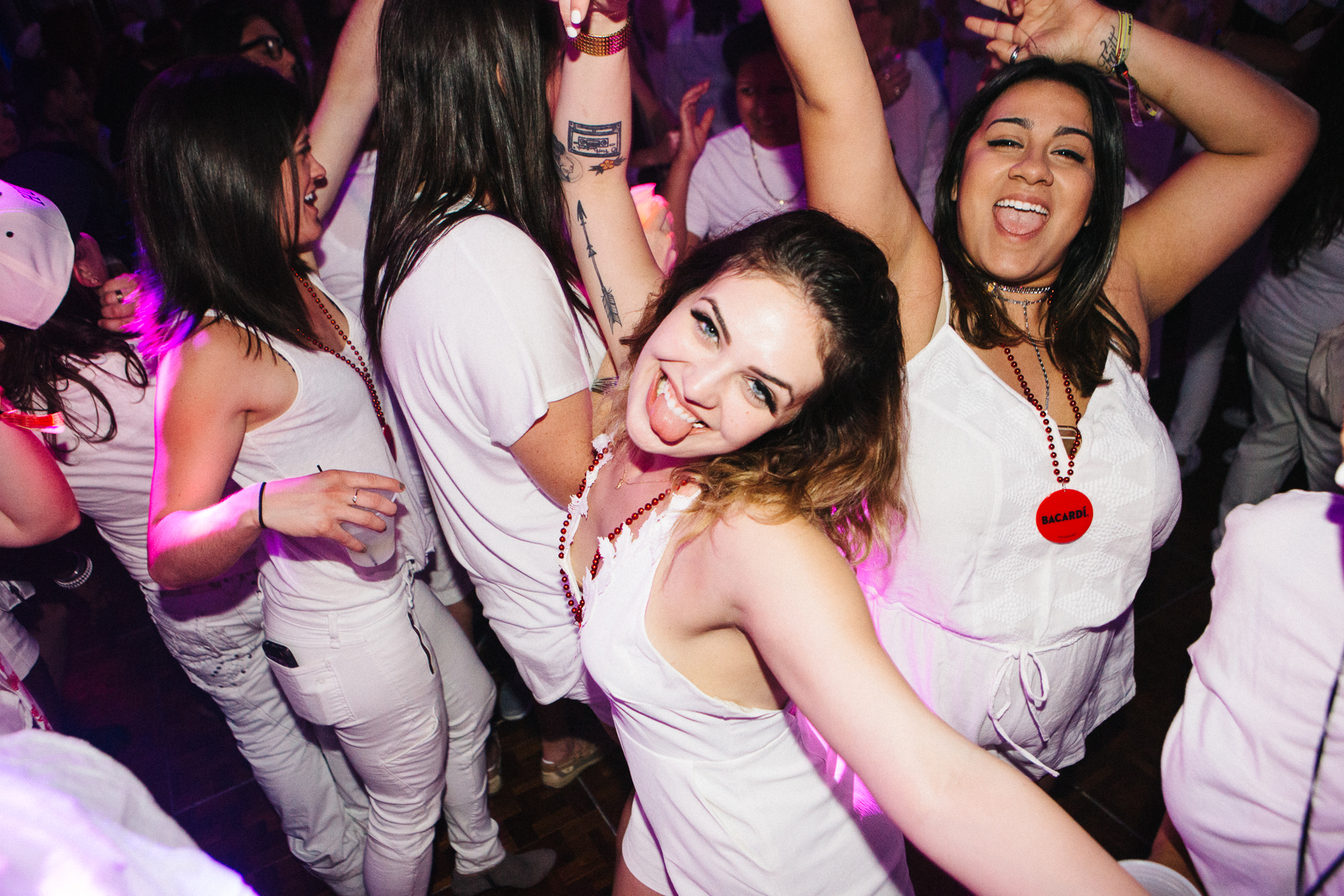
DAY 3
We woke up and caught some pool time at the hotel.
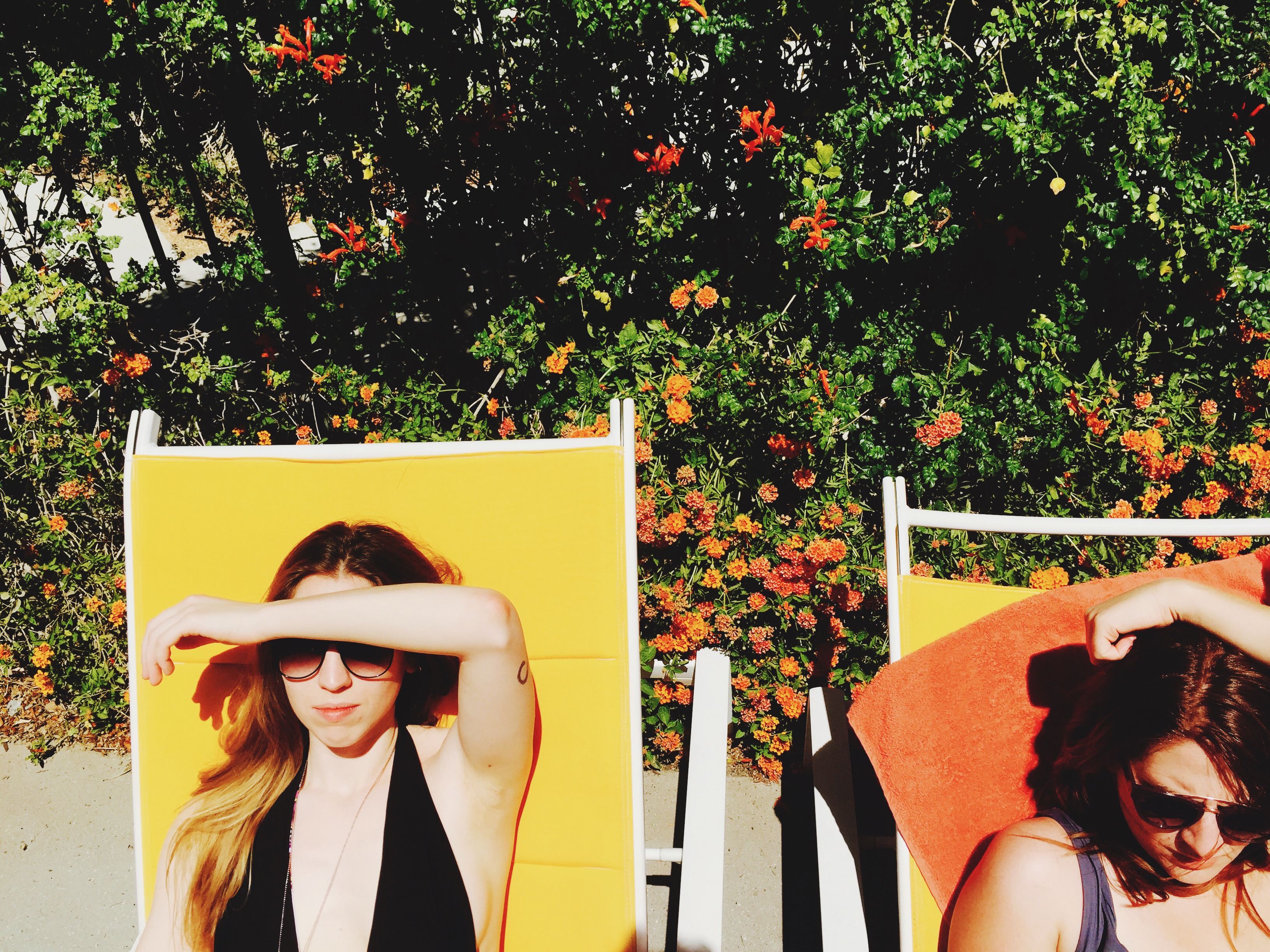
And headed back to the Hilton for another day in the sun.
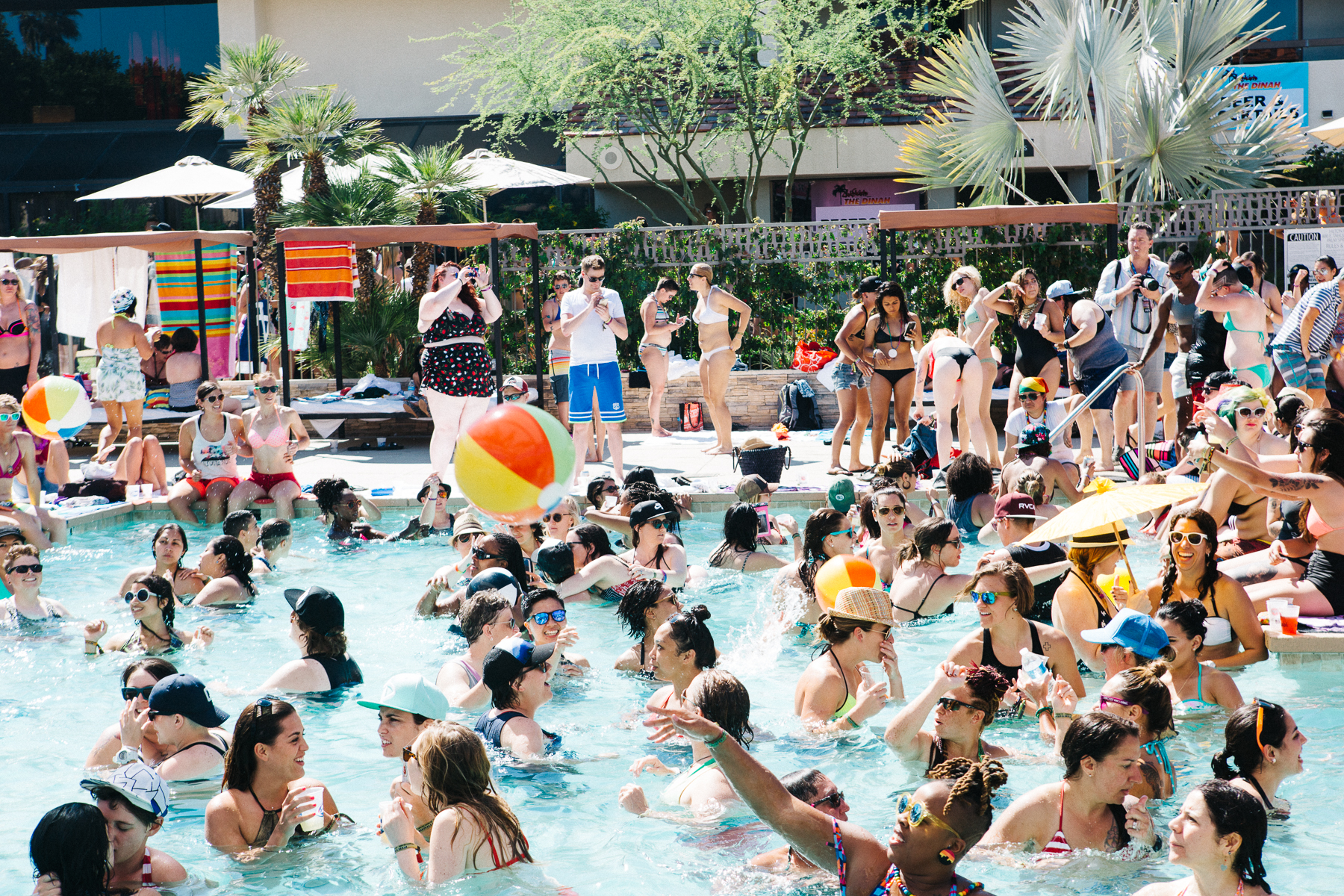
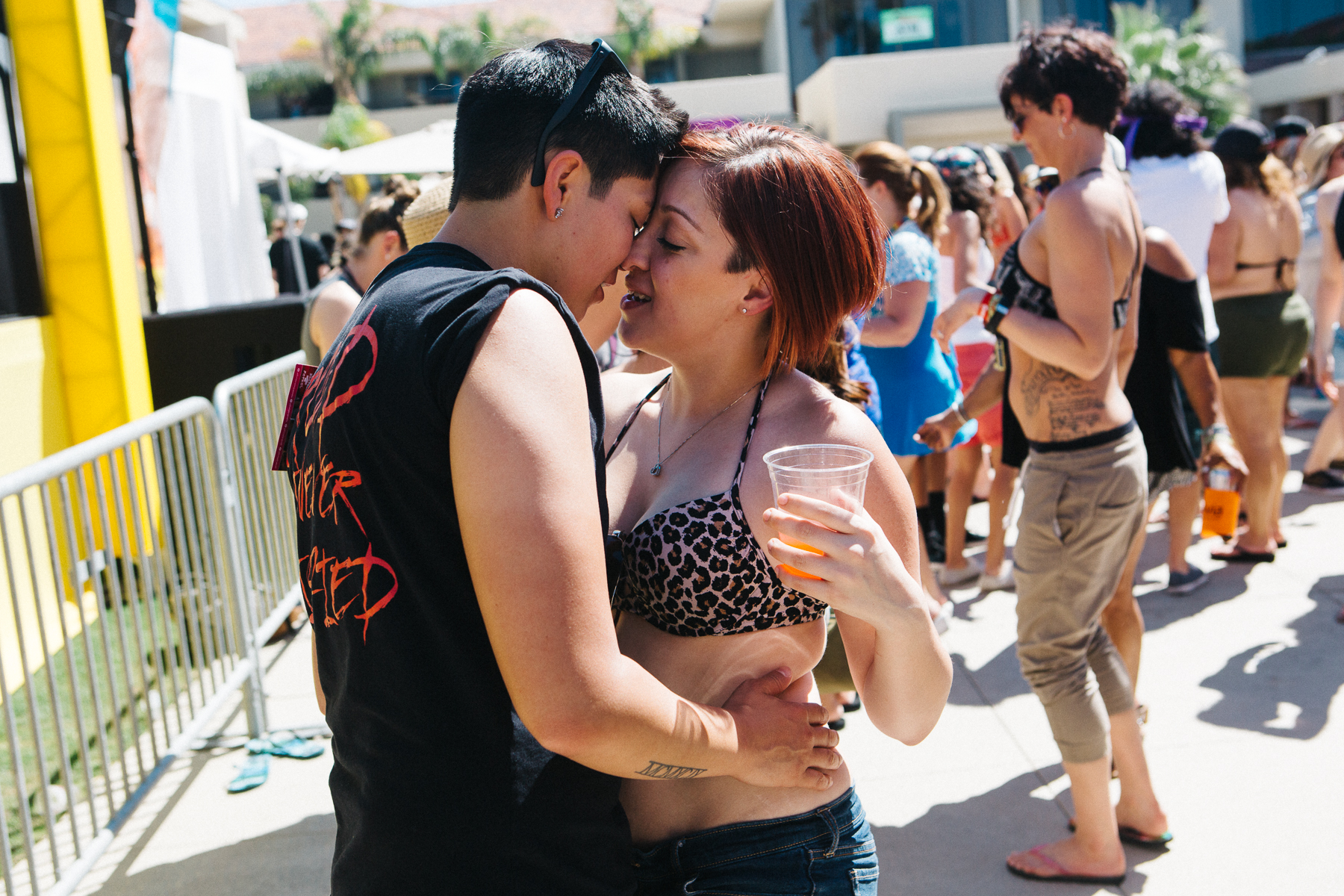
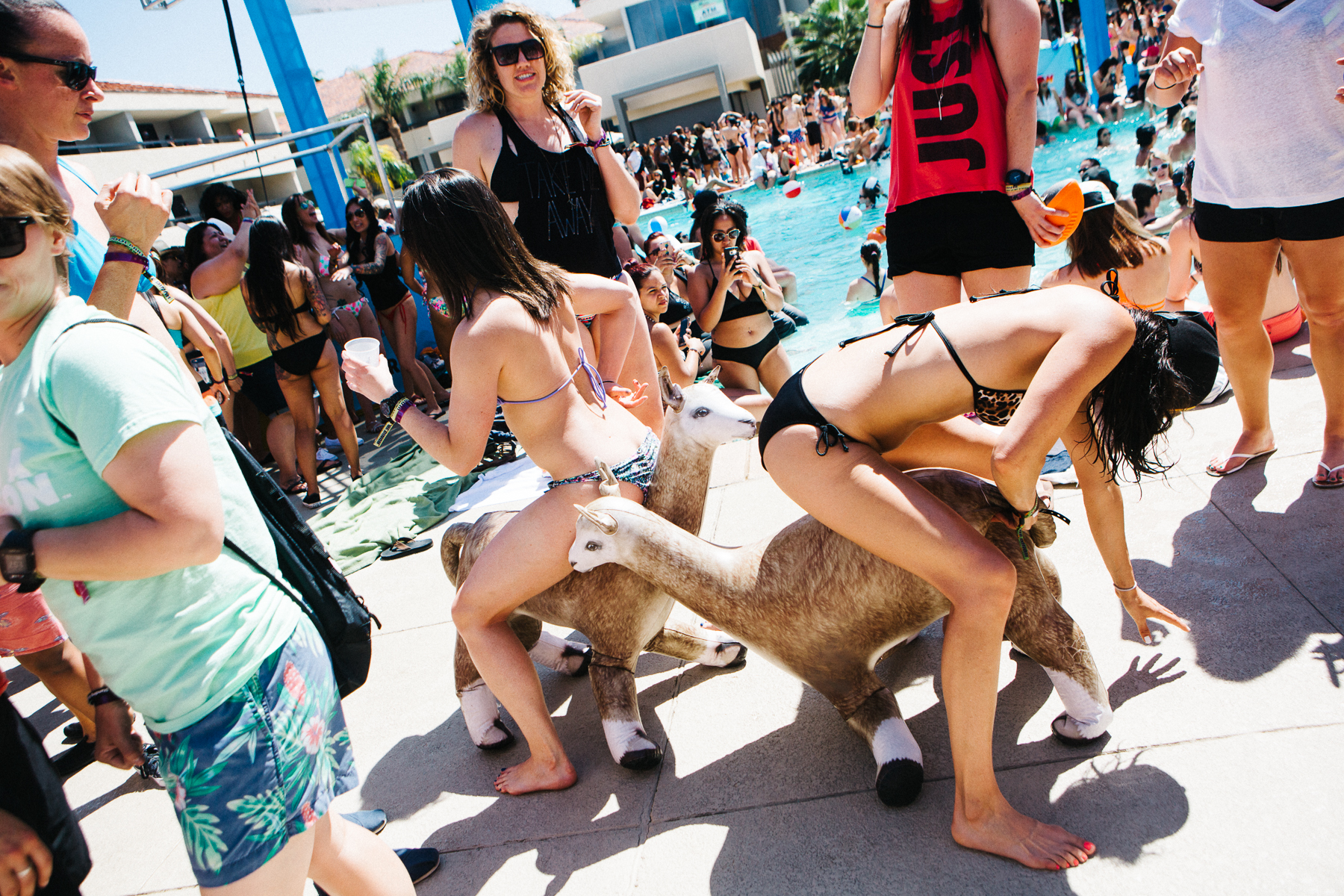
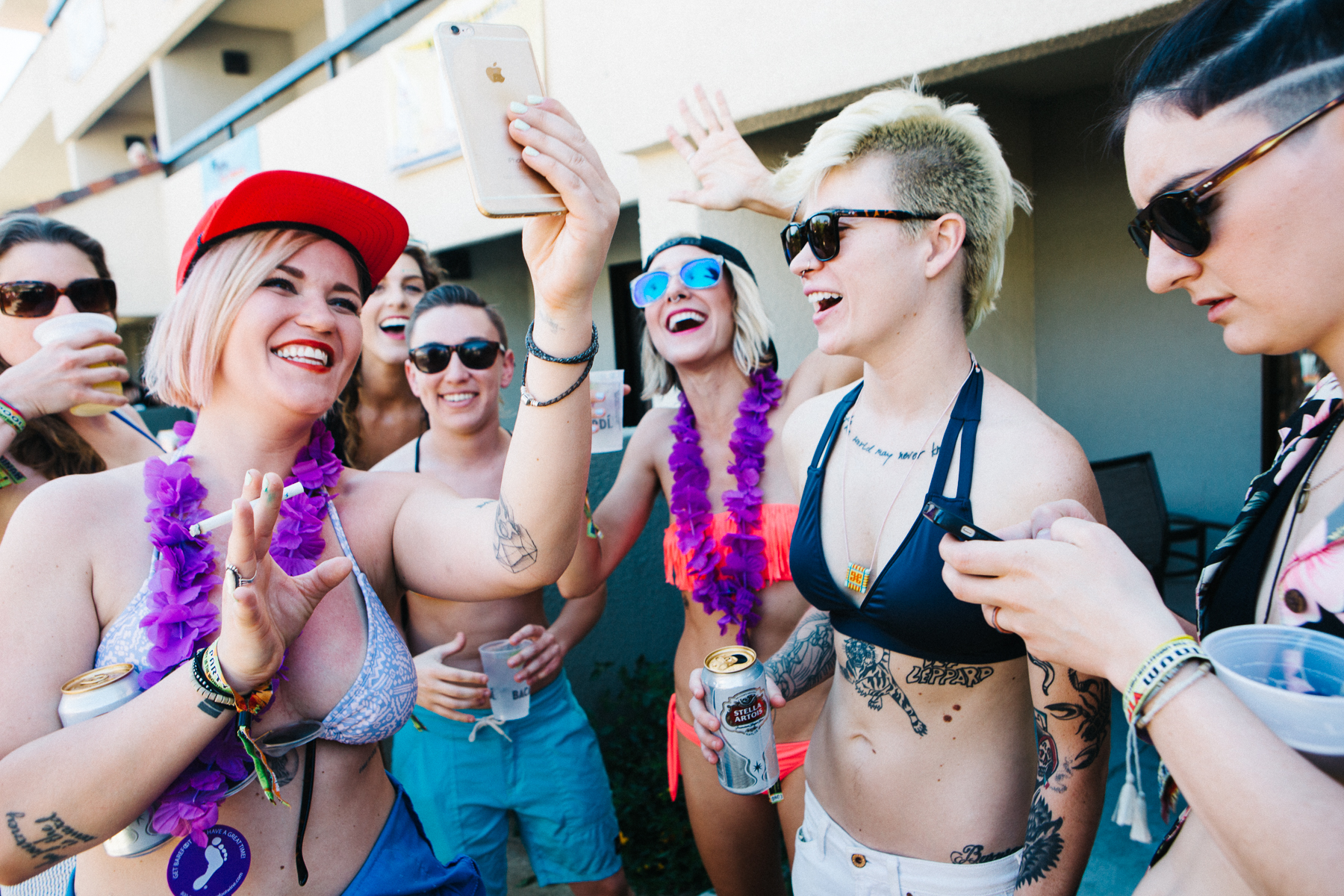
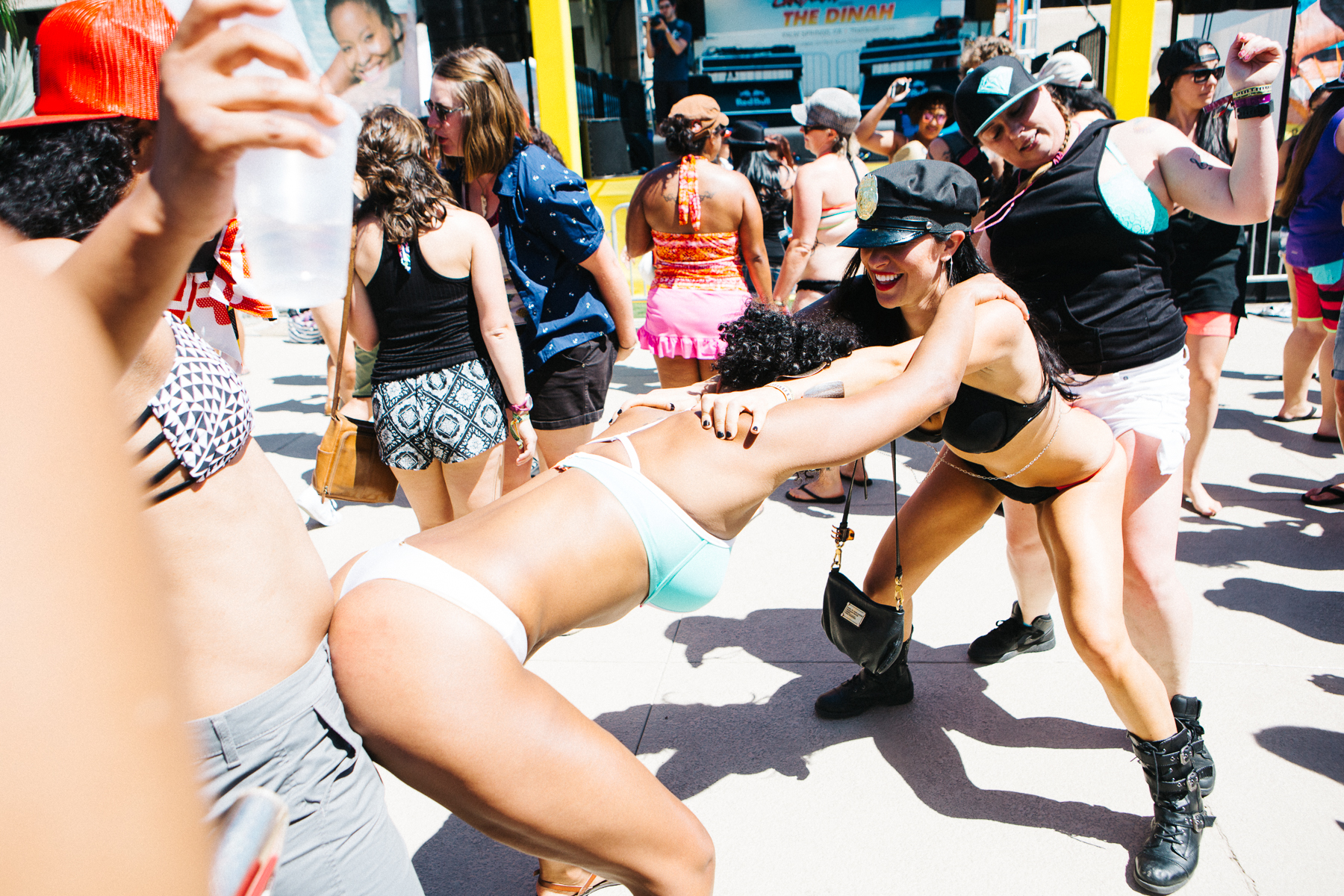
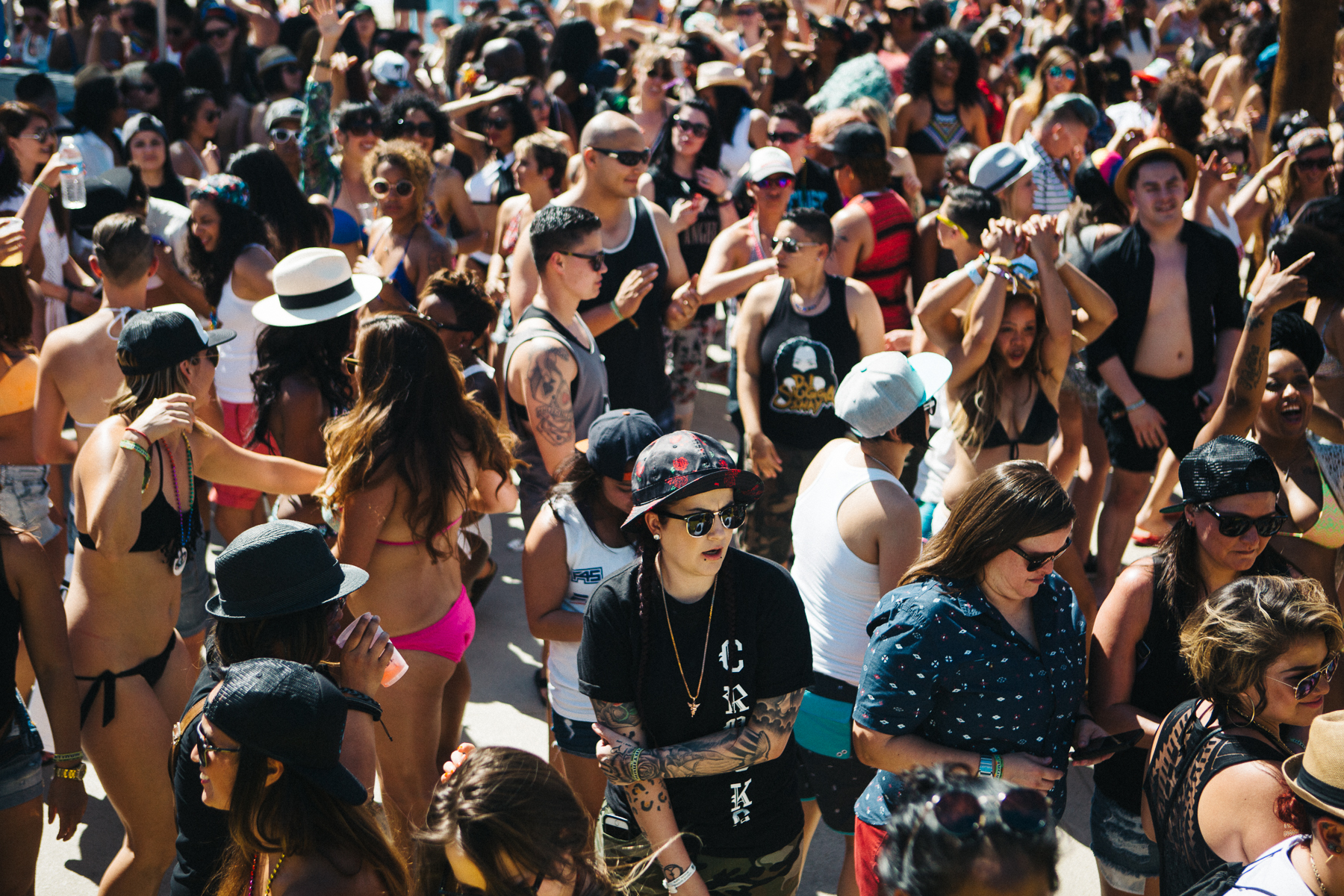
I escaped to another friend’s rental for some quiet pool time.
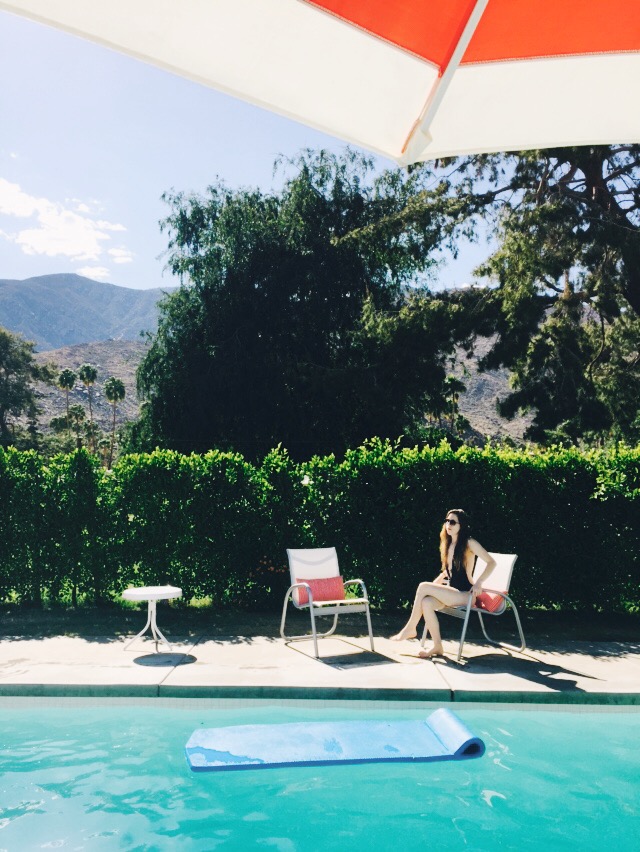
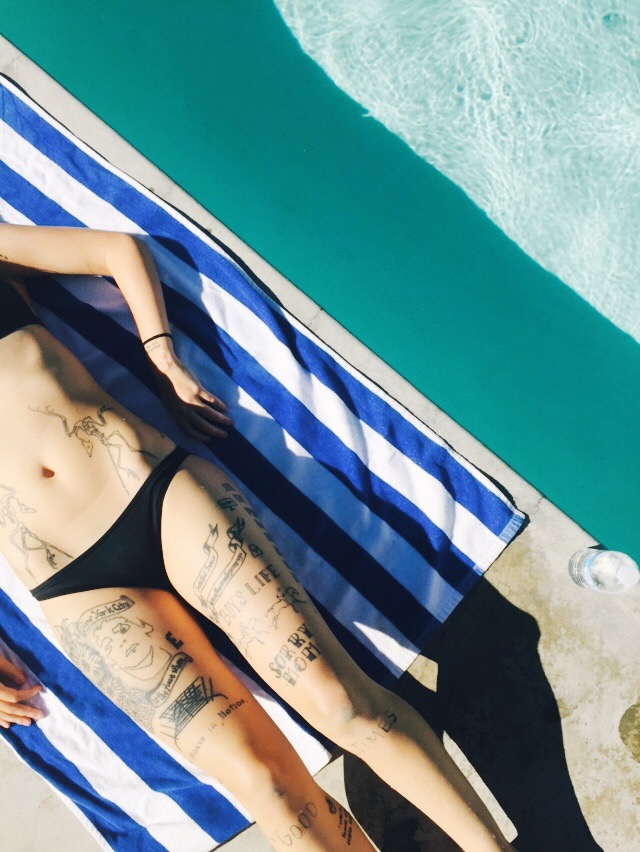
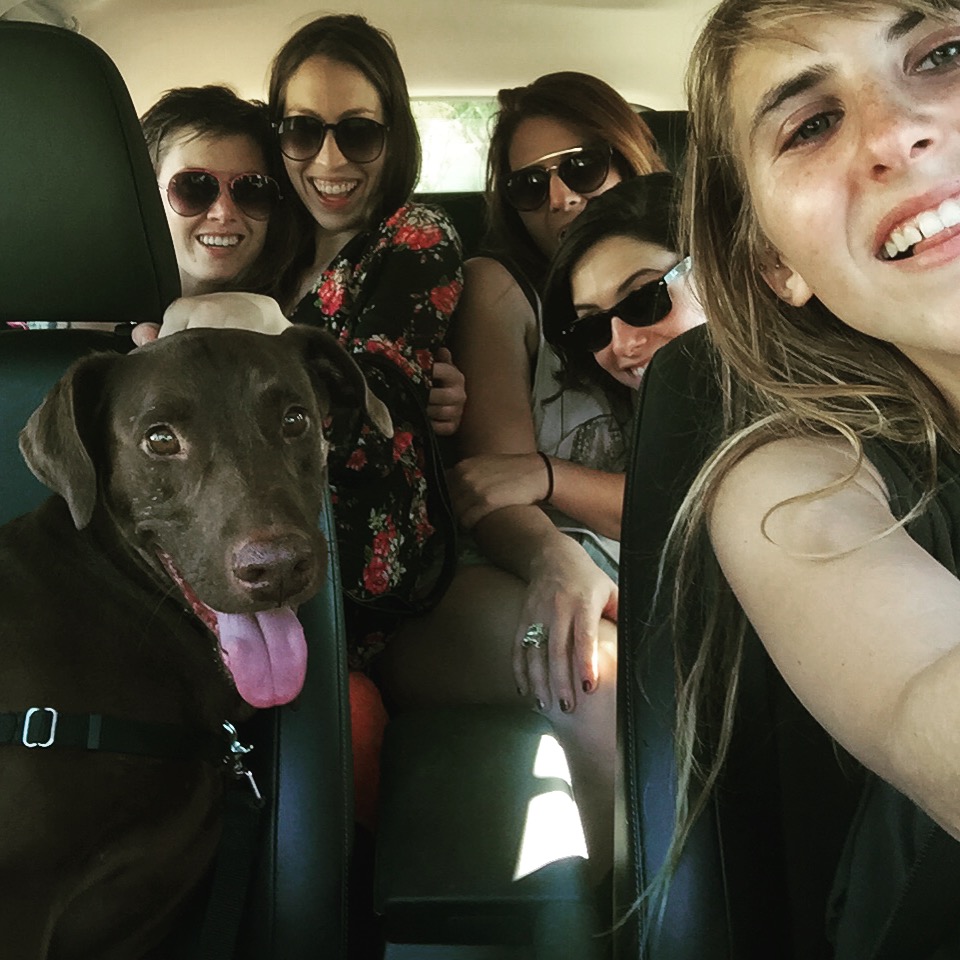
He called shotgun
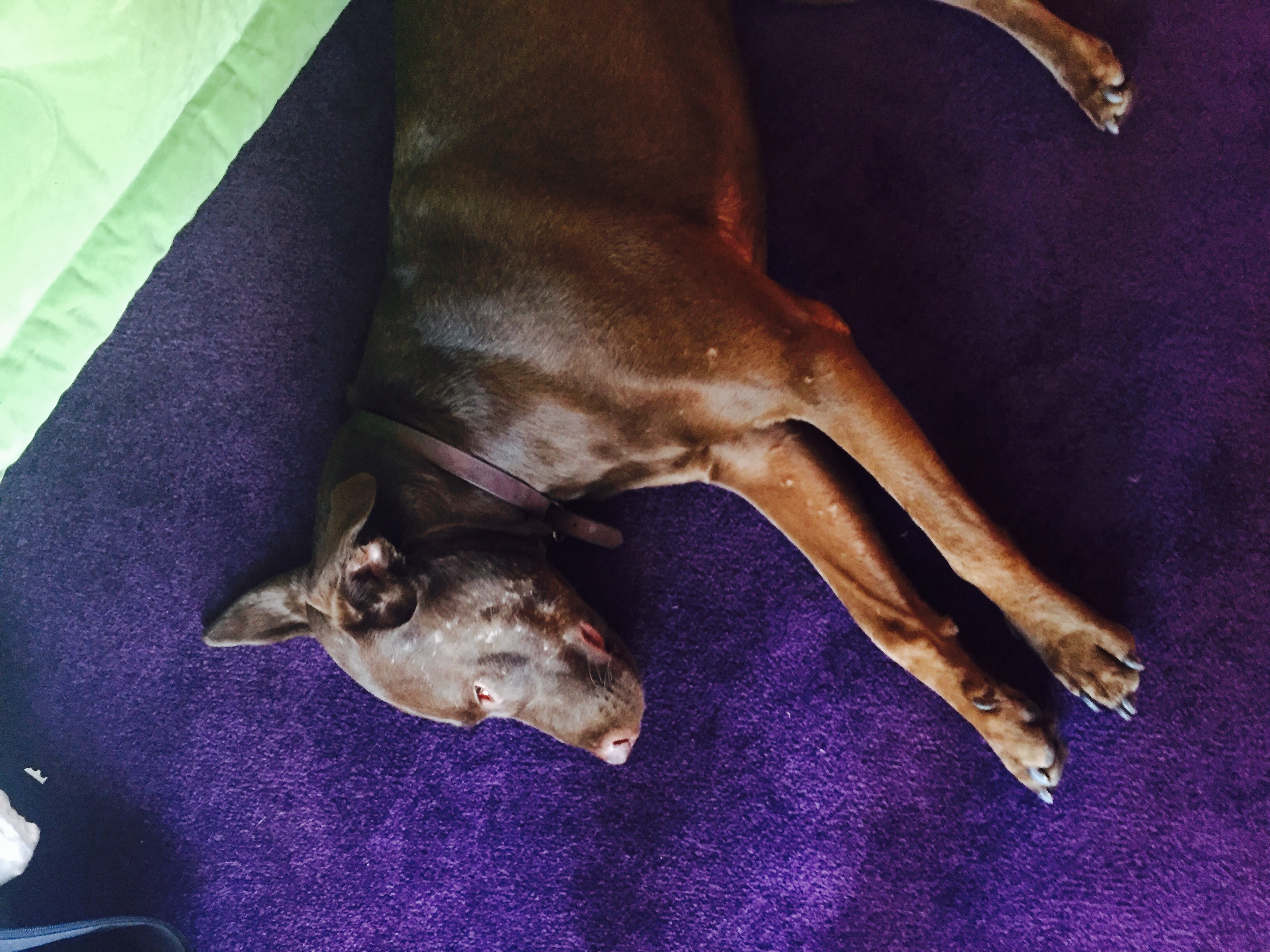
And back to the hotel for a nap.
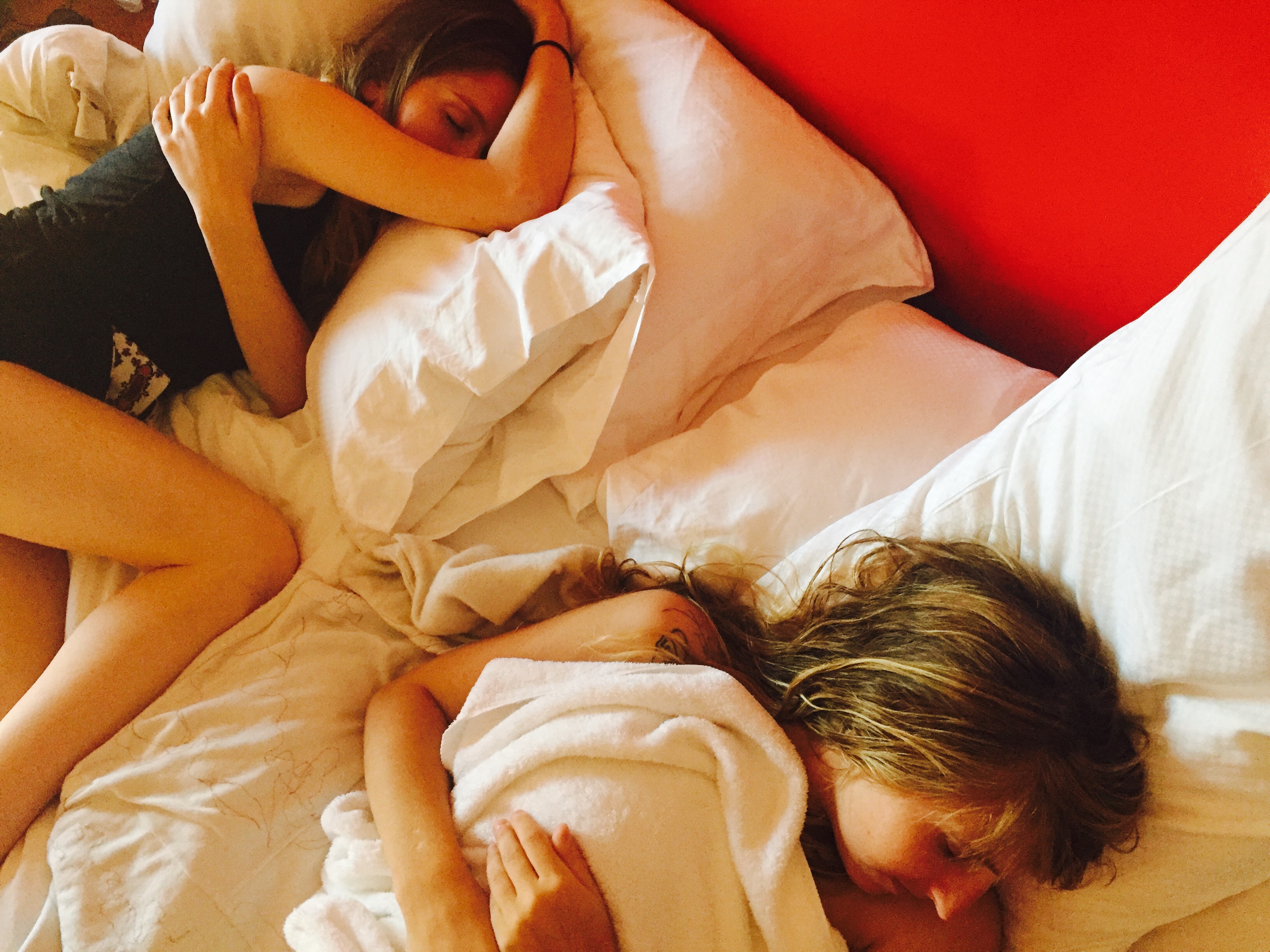
And some evening bocce ball
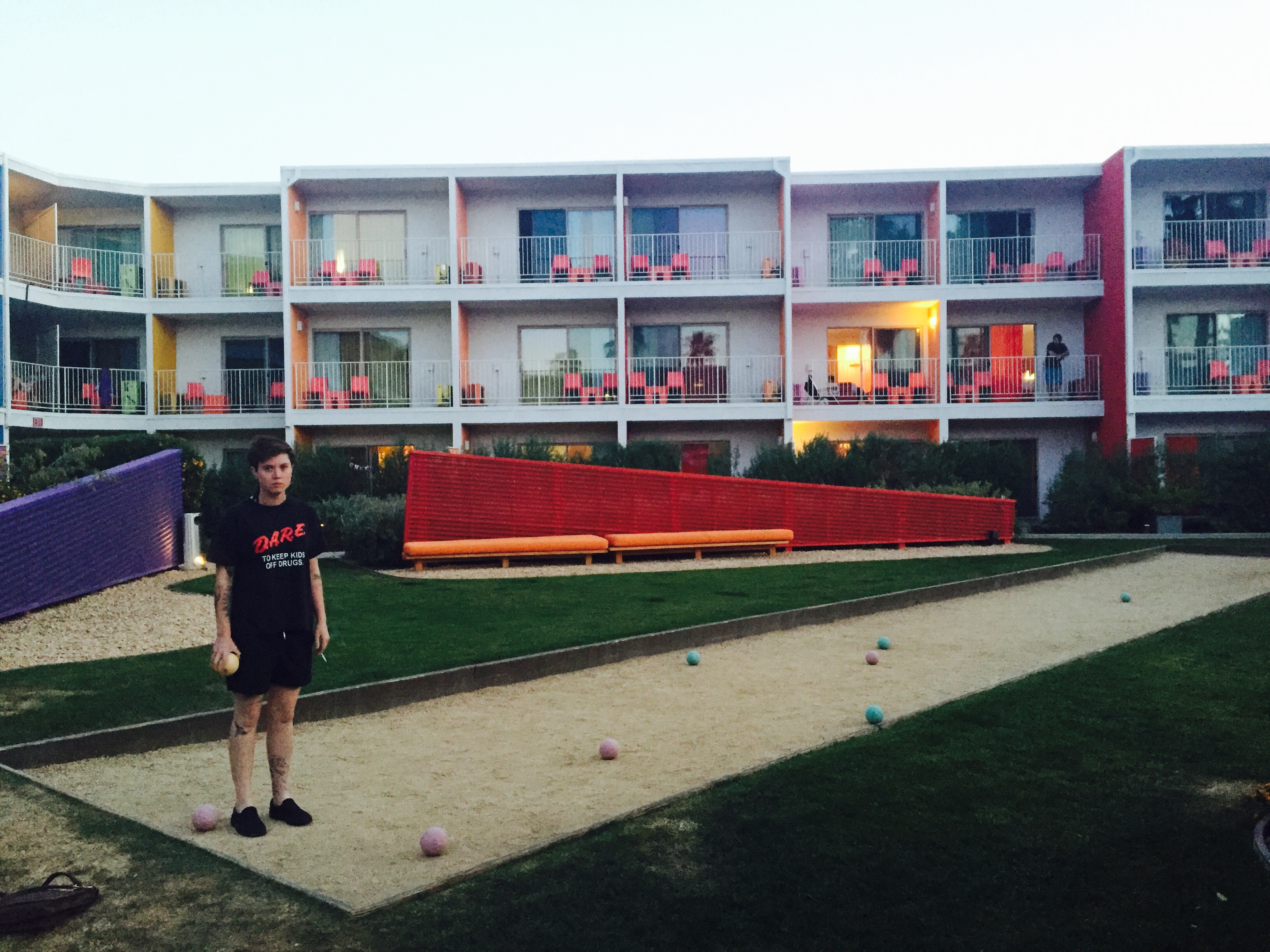
Then it was time for the “Hollywood Party”
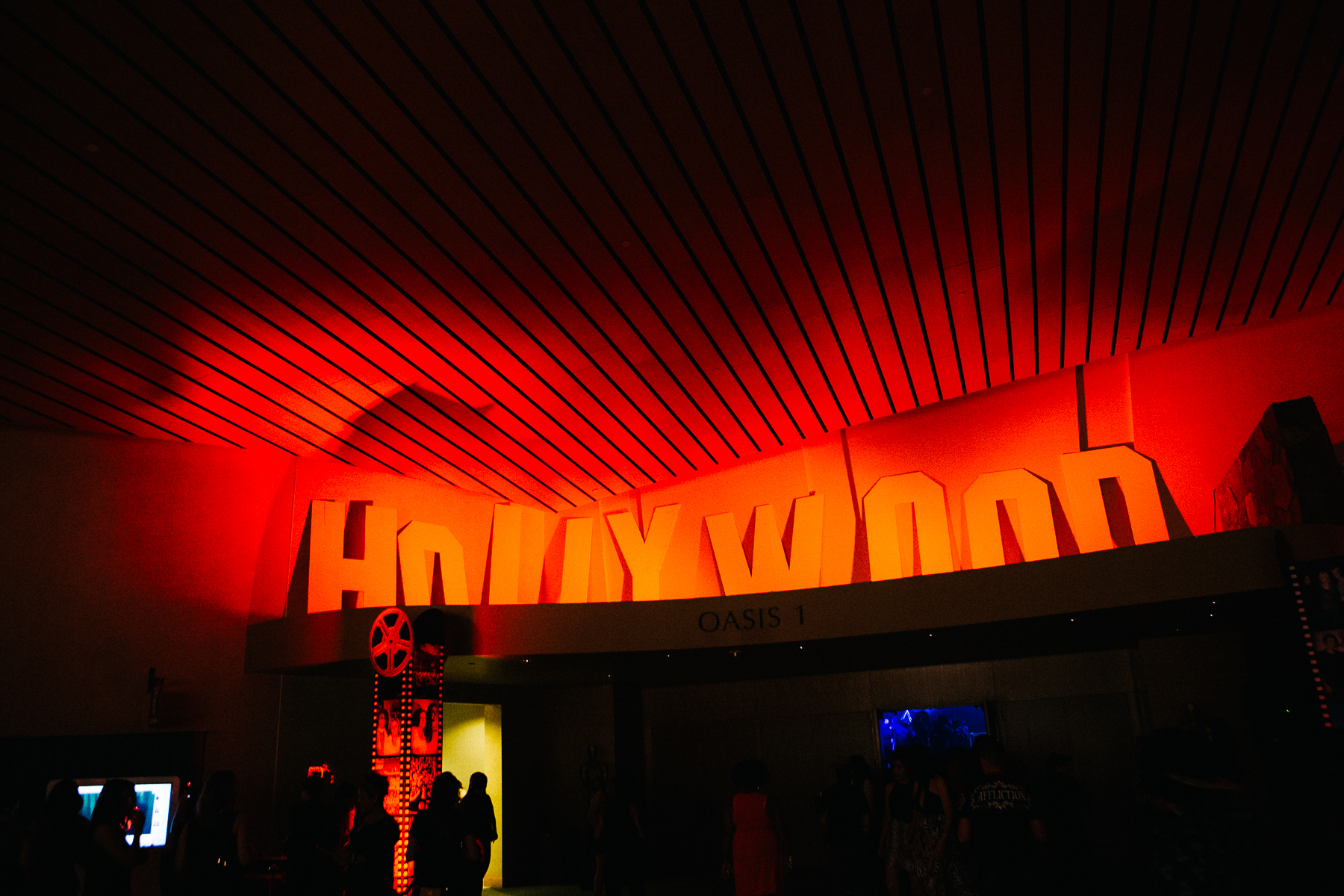
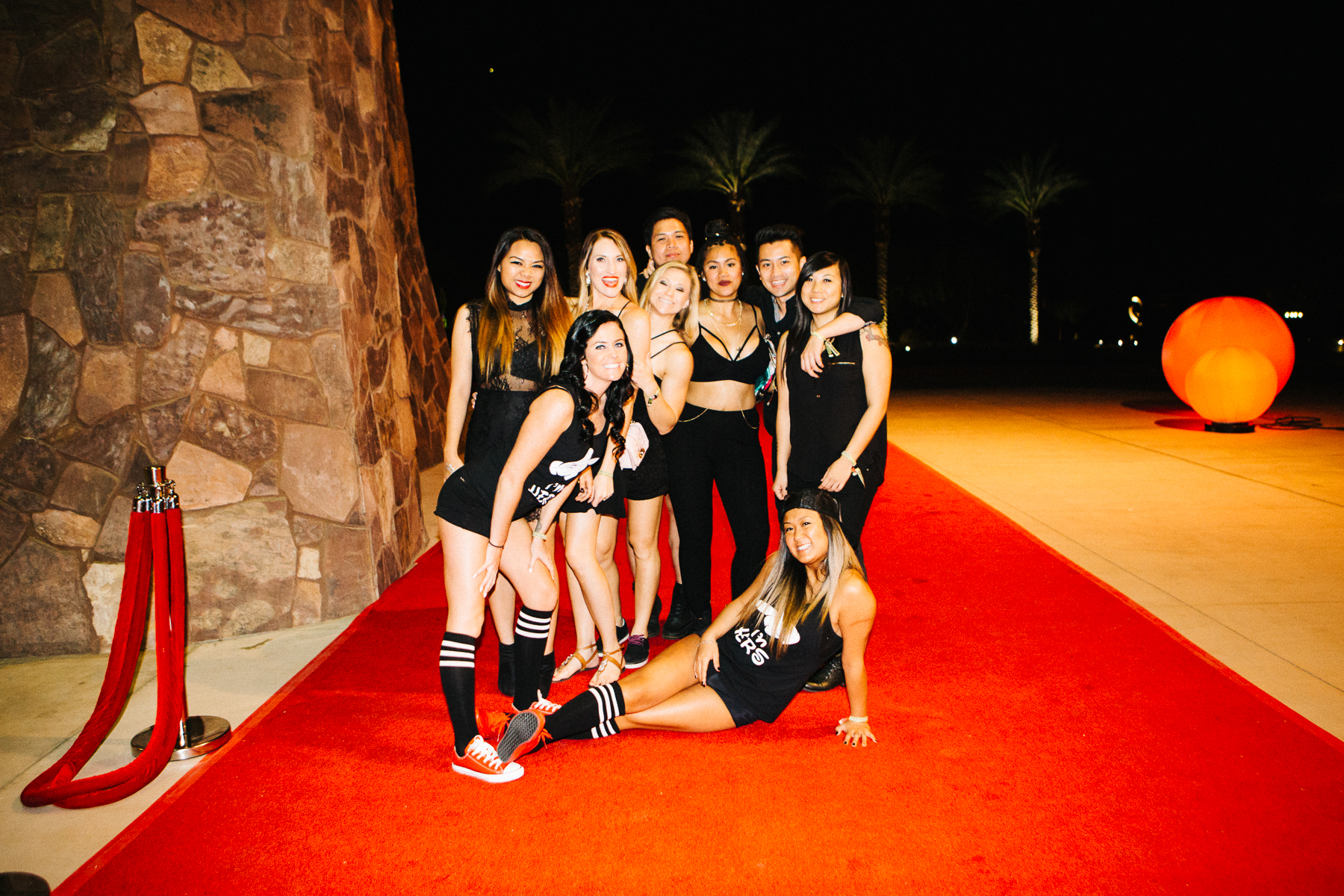
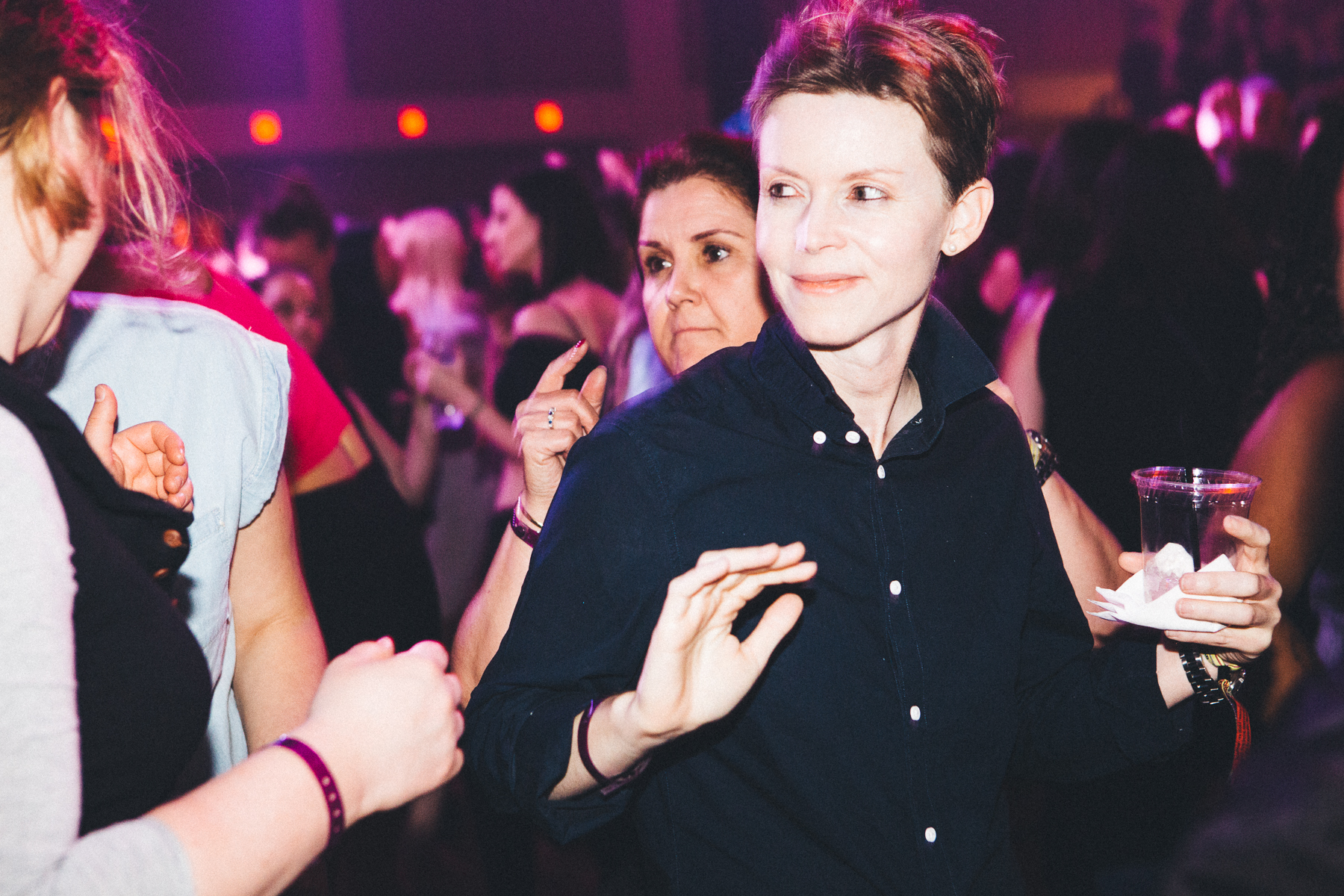
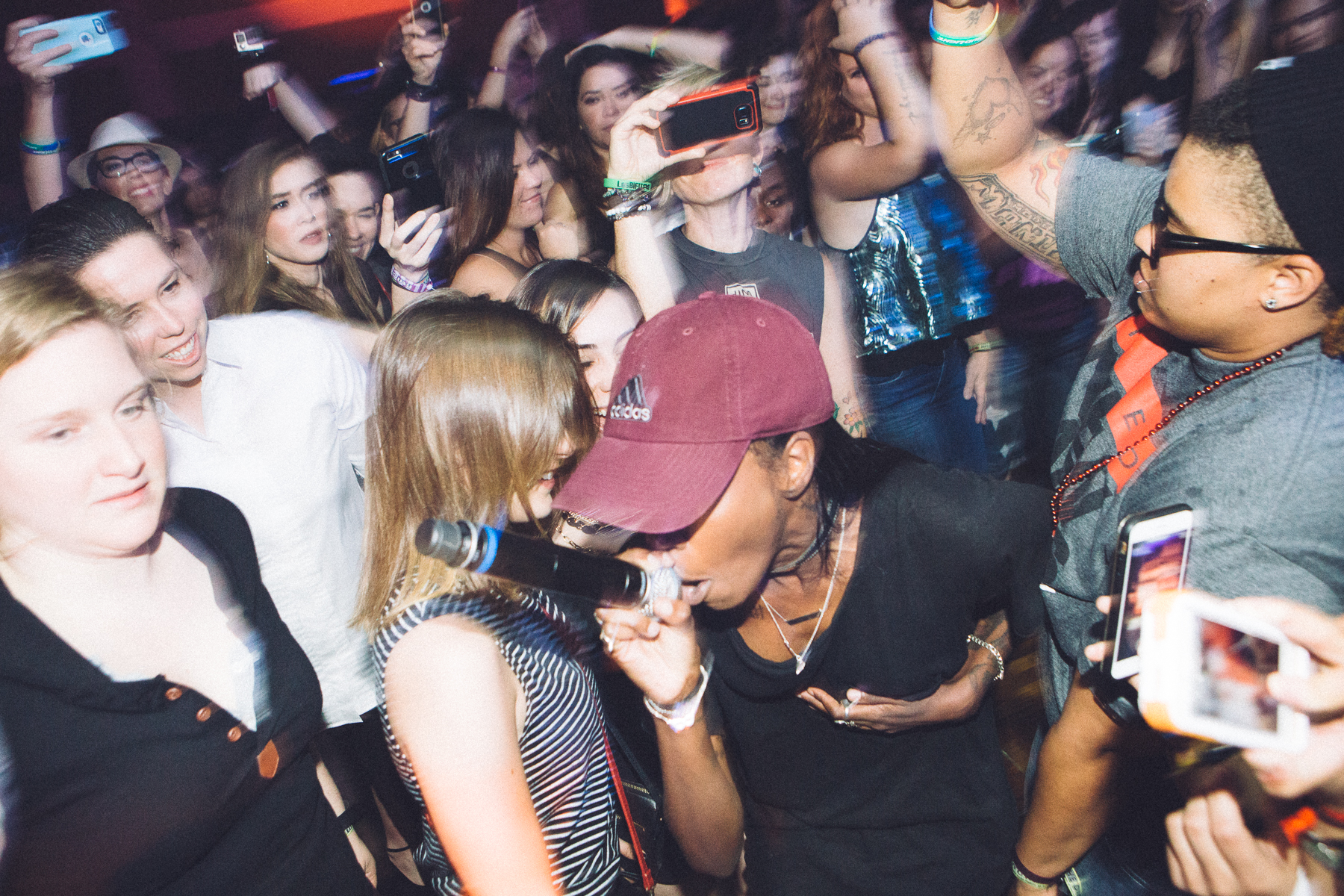
Angel Haze
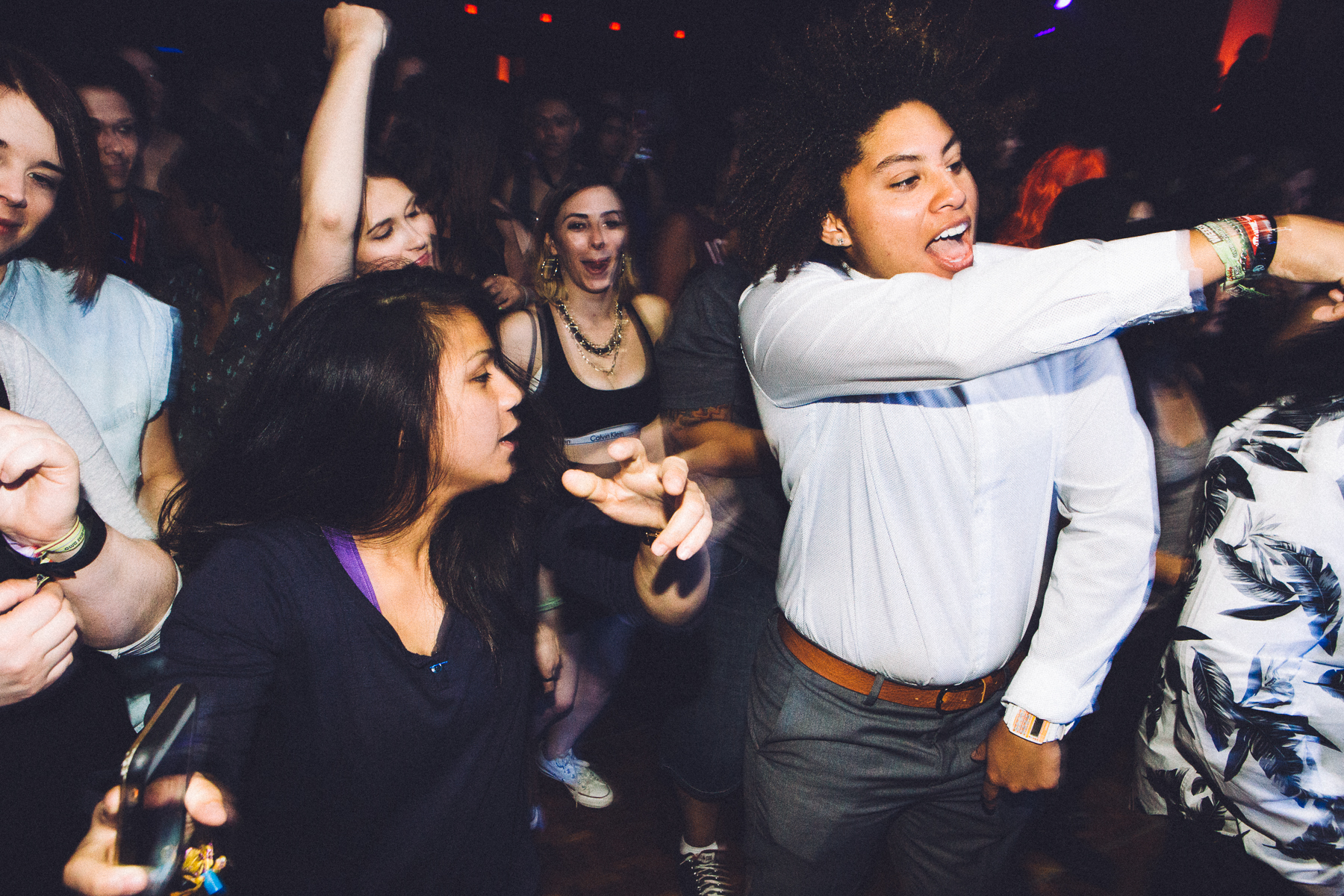
We ended up at a house party and this happened…

DAY 4
Woke up early and headed to the Hilton to catch Madison Paige opening the final “Wet and Wild” pool party.
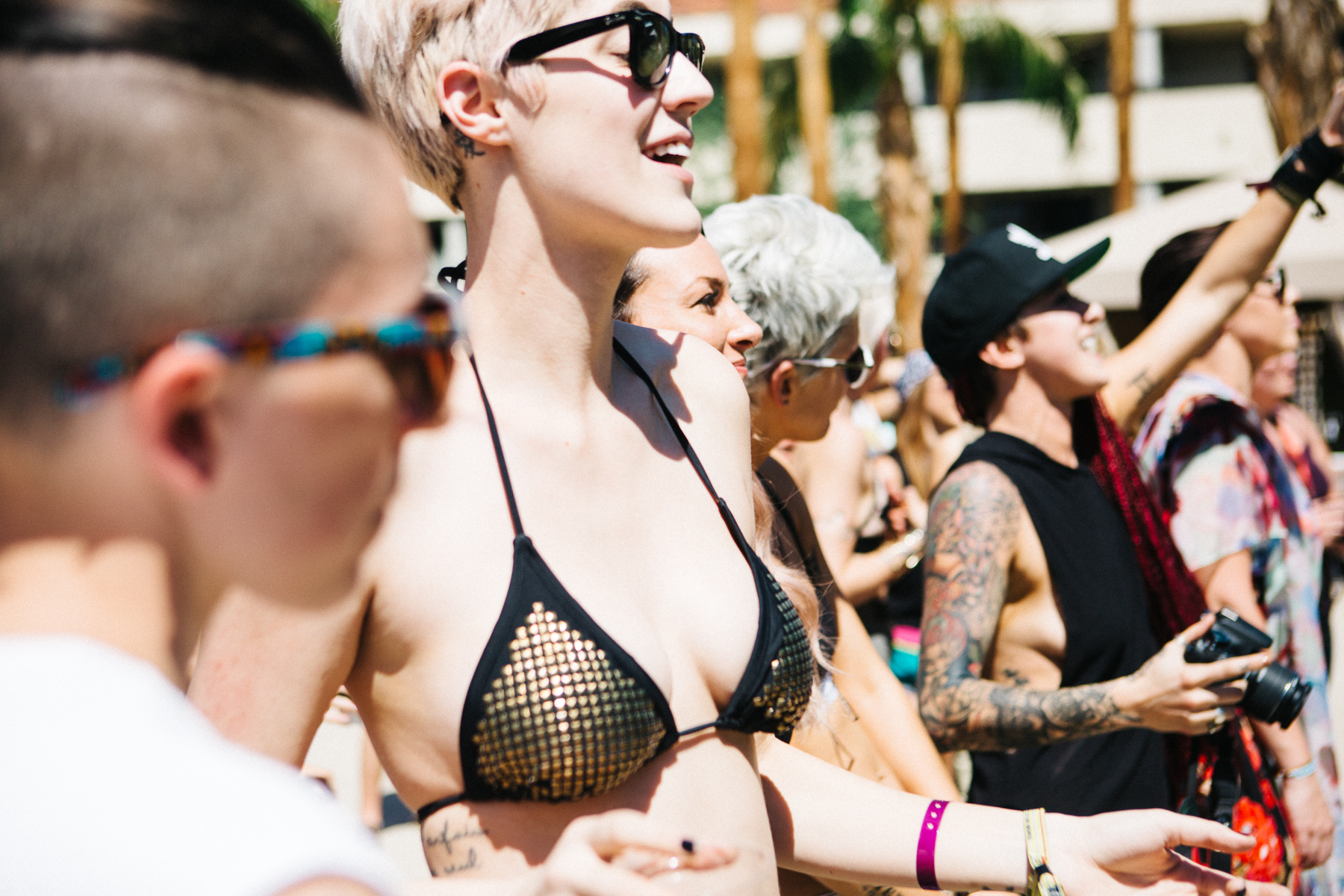
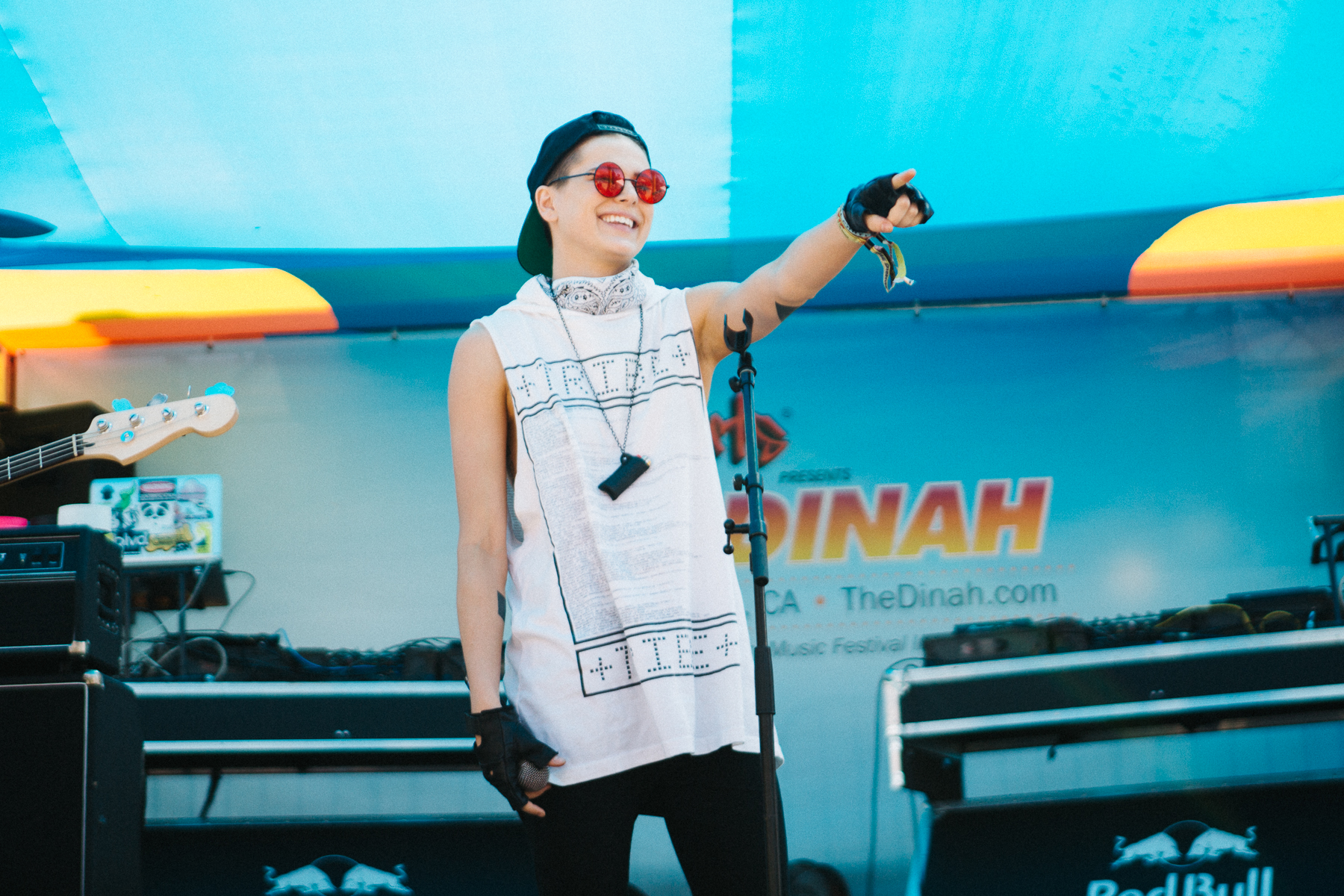
Madison Paige
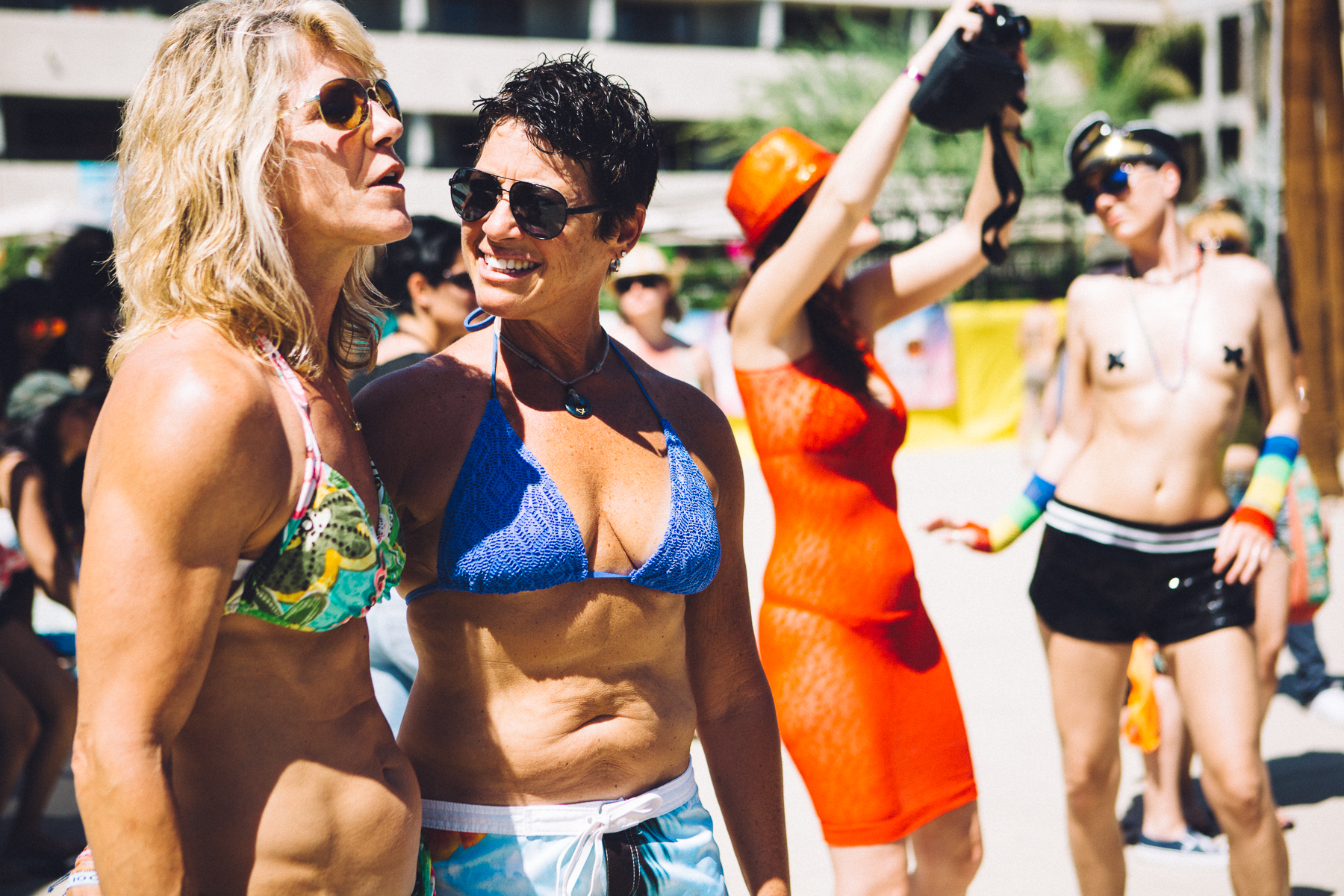
Then I headed over to the Ace to catch some mellower vibes.
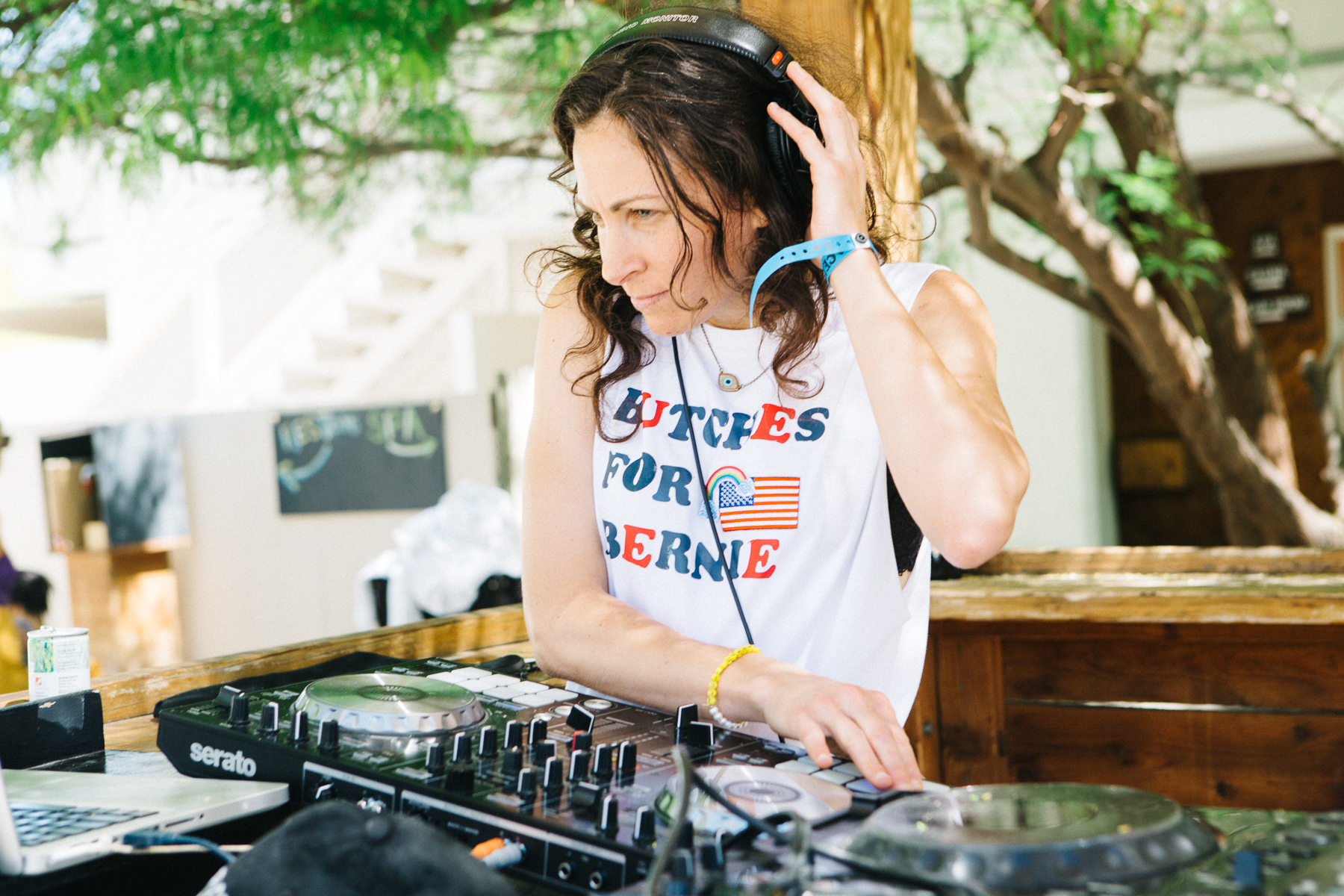
Romy
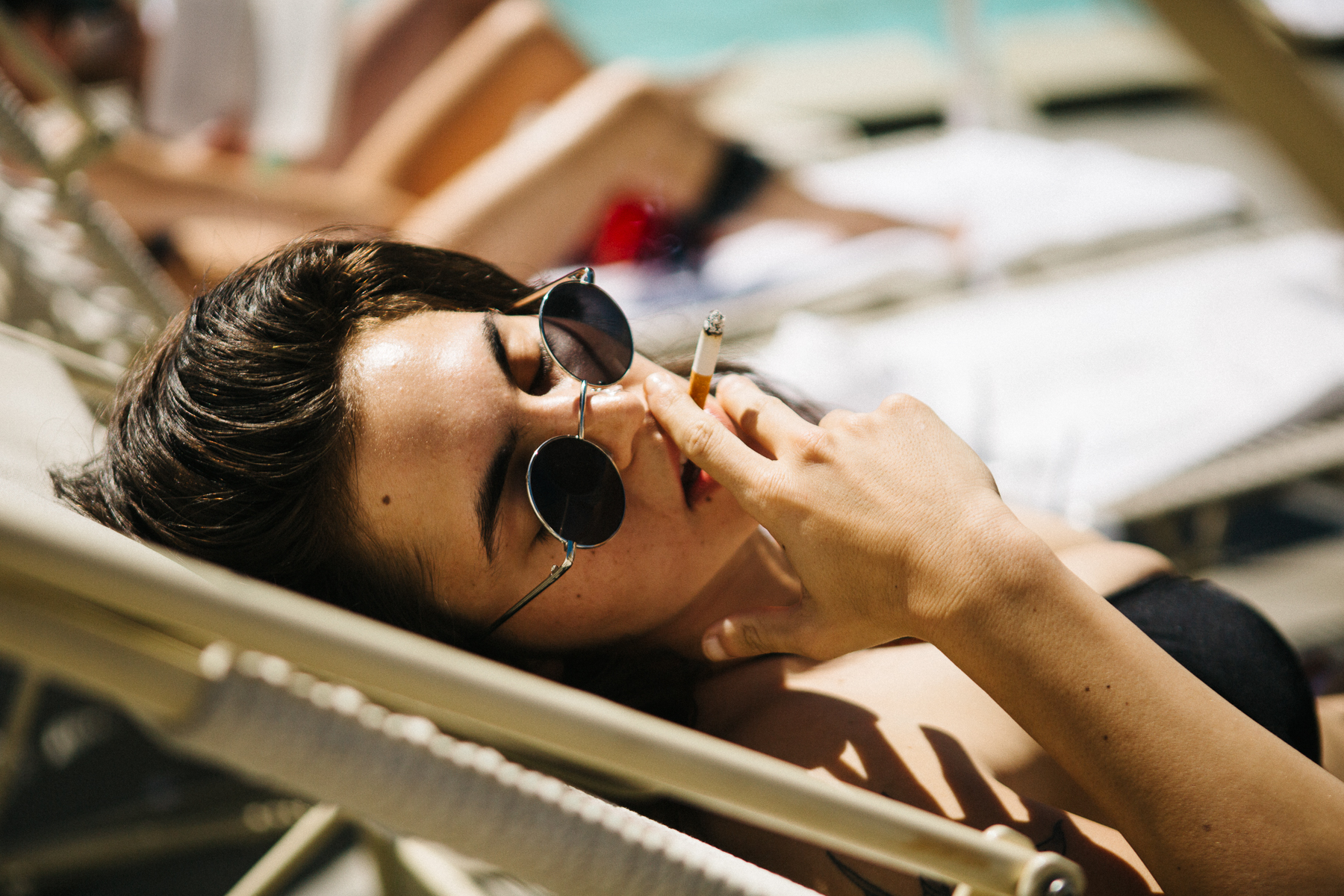
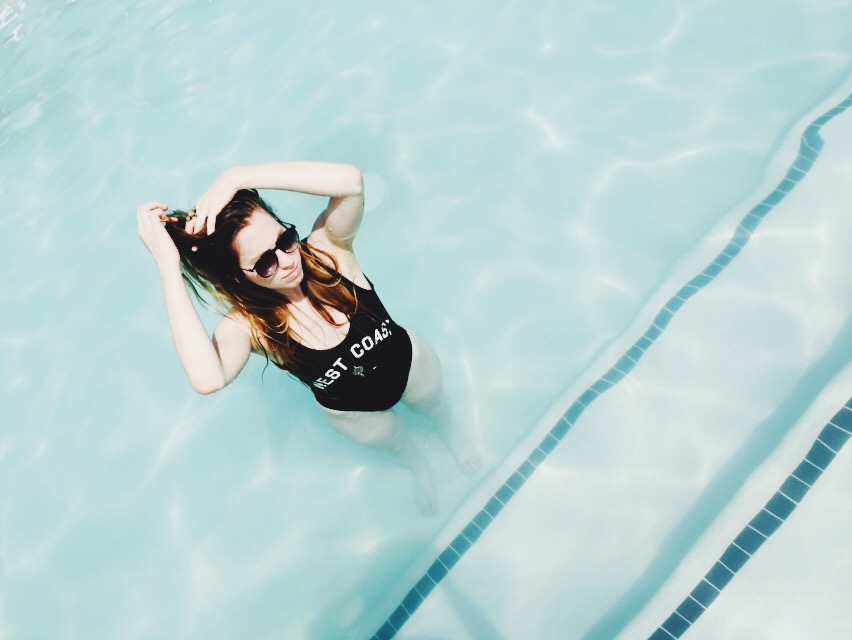
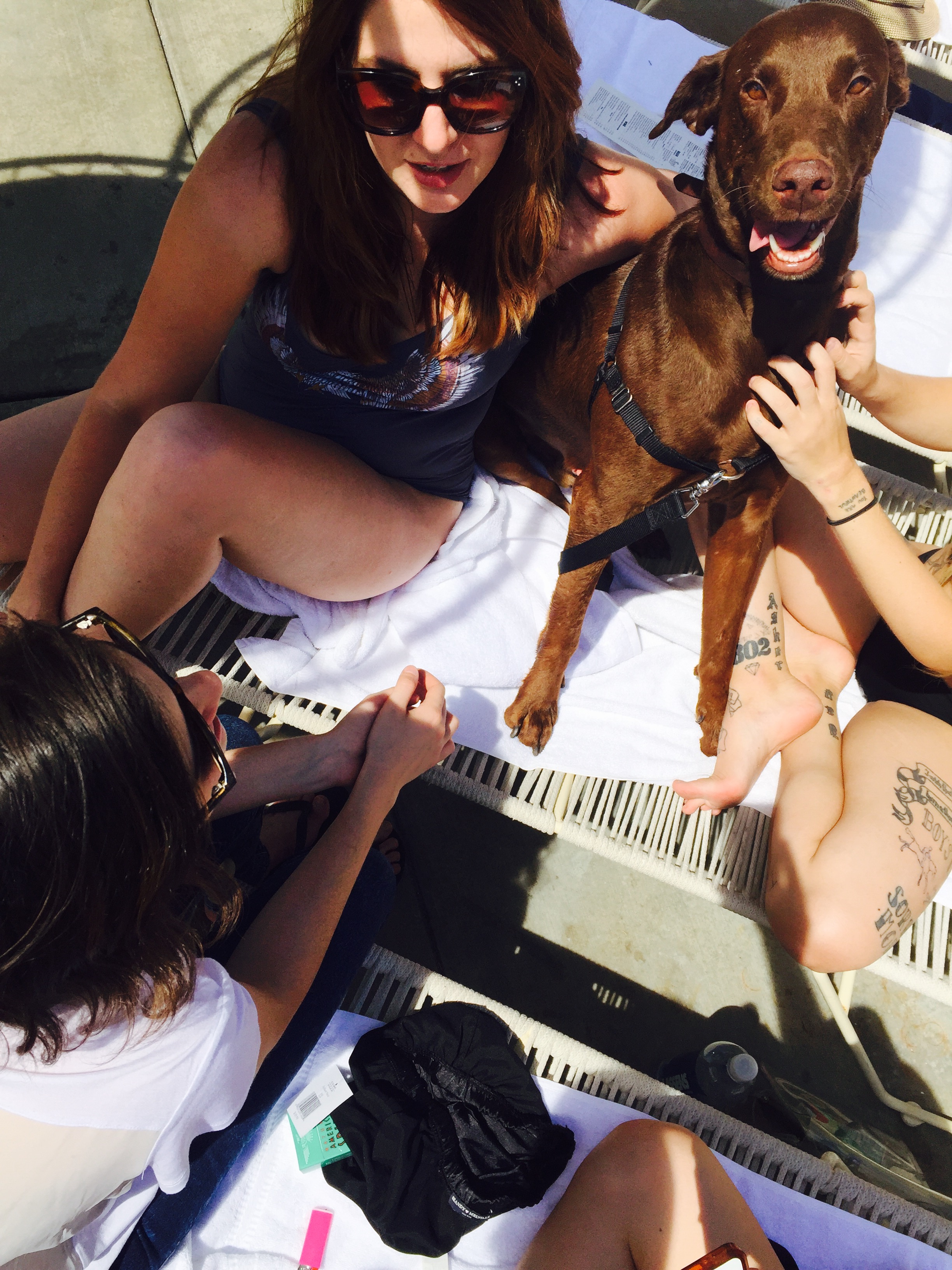
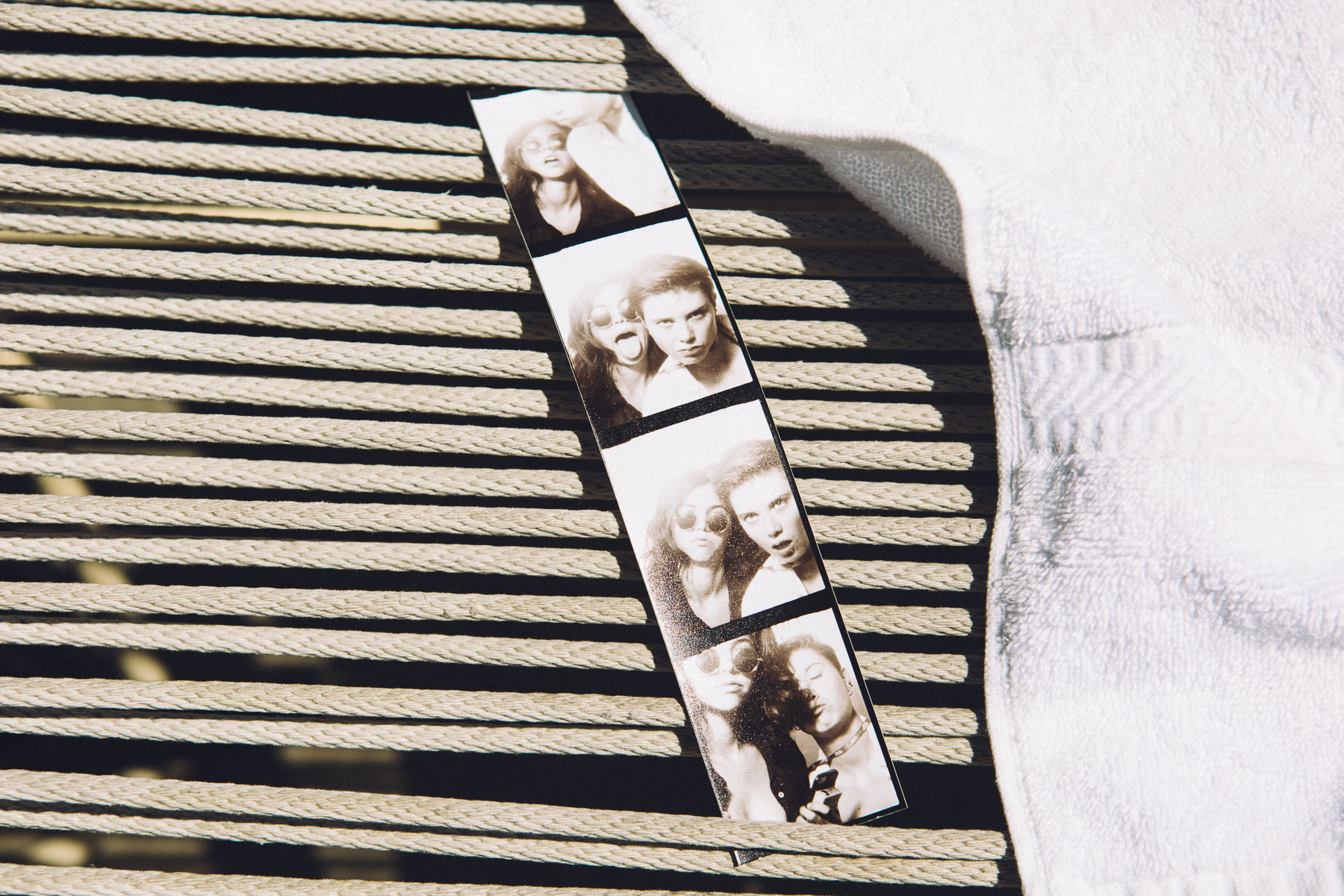
And with a milkshake from “Great Shakes”…
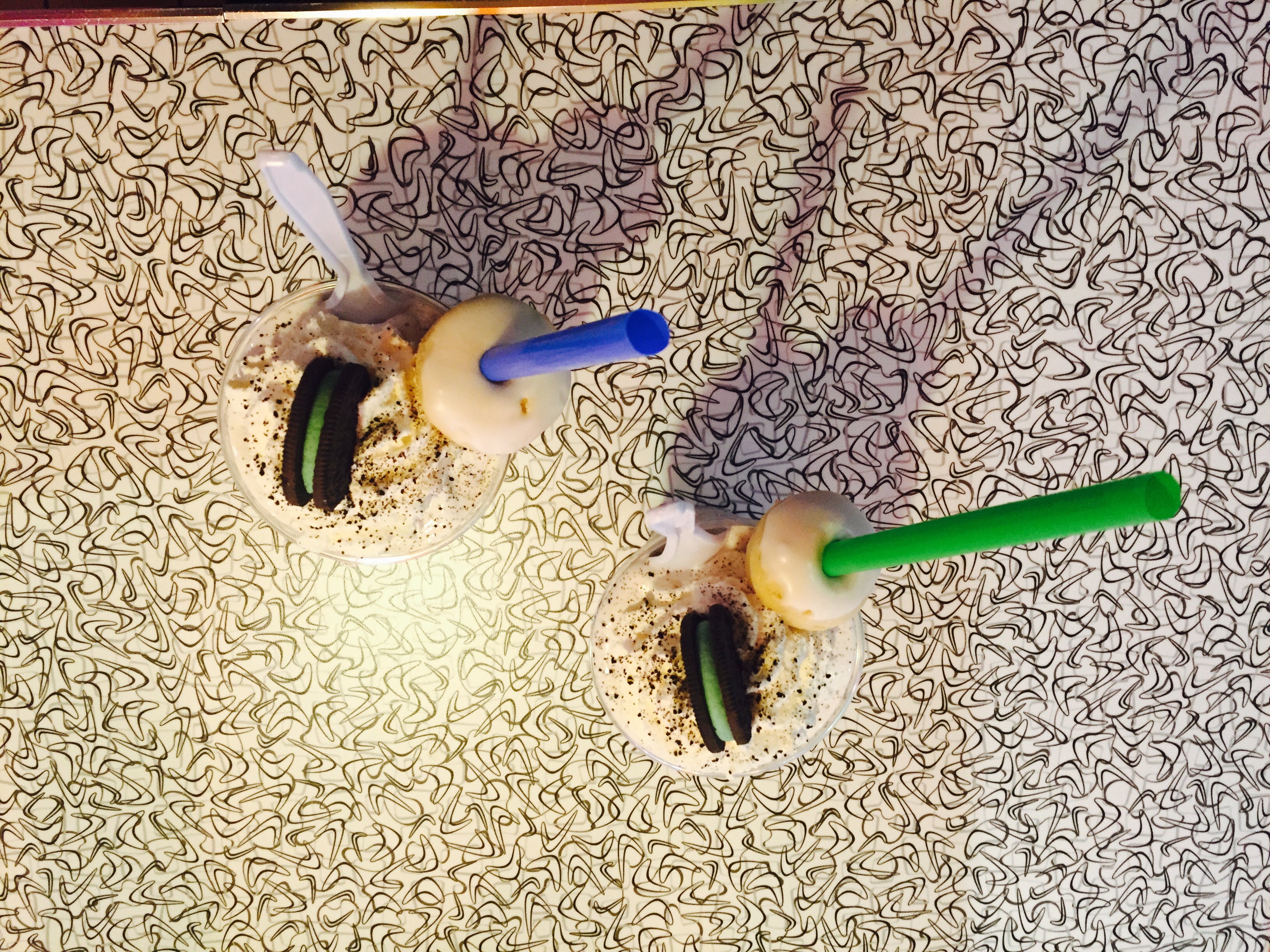
We were
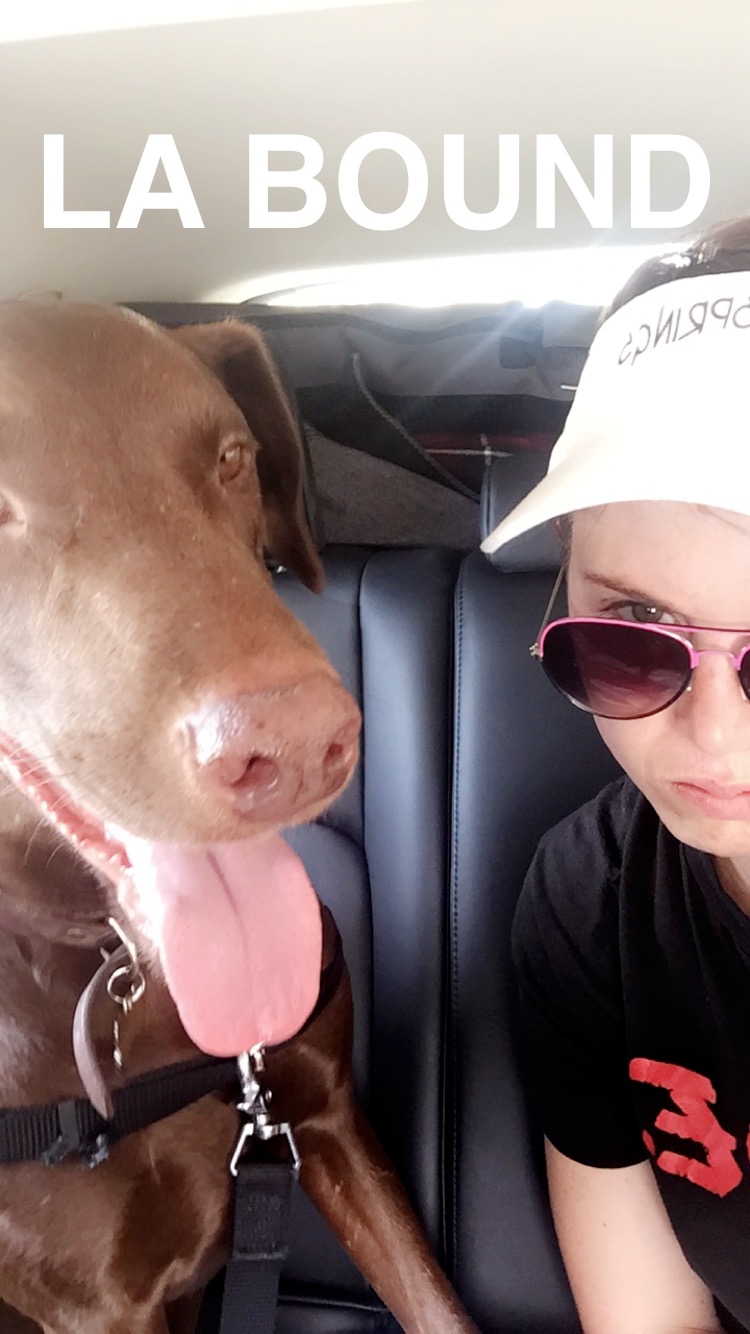
And without a sunburn which is a MAJOR accomplishment.
PHOTOESSAY: Outside Lands 2015

Outside Lands in San Fransisco is my favorite of the big festivals because it’s cooler (in temperature), and generally less annoying. I used to festival regularly when I could still handle intense crowds, dehydration, and some of the mellowest sets in an afternoon turning into a rave.
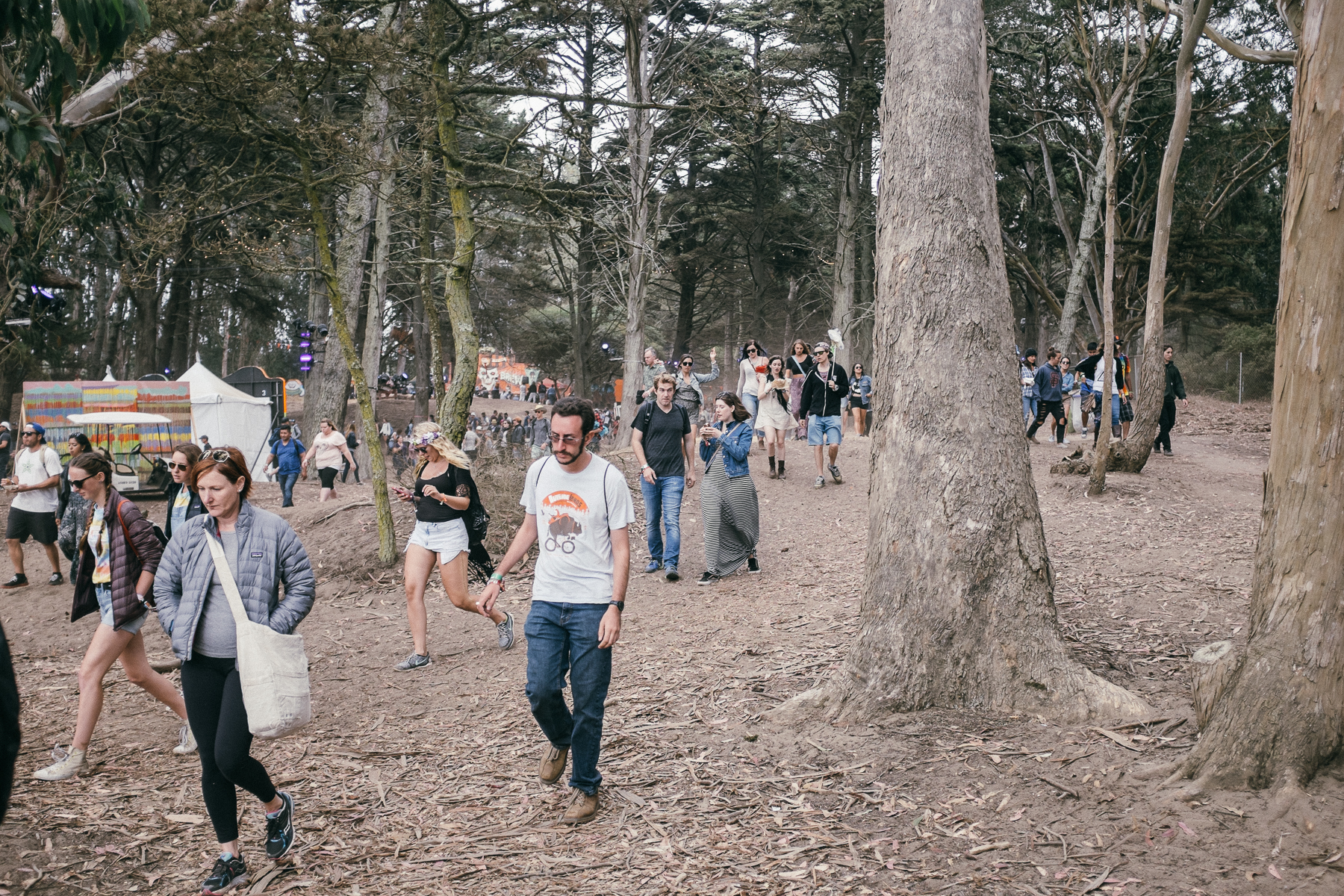
But anyways. Outside Lands. It’s chilly, there are trees, there’s great music and delicious food. You should go.
Here’s a playlist of mostly everyone who was there. Listen, cry, plan to go next year. Also if you play it and slowly scroll through this photo essay it’ll be just as good and you won’t have to leave your couch.
Playlist:
The first thing I did, and arguably the greatest thing I have ever done in my entire life, is eat this Donut Bacon Cheeseburger from a restaurant called Straw’s booth.
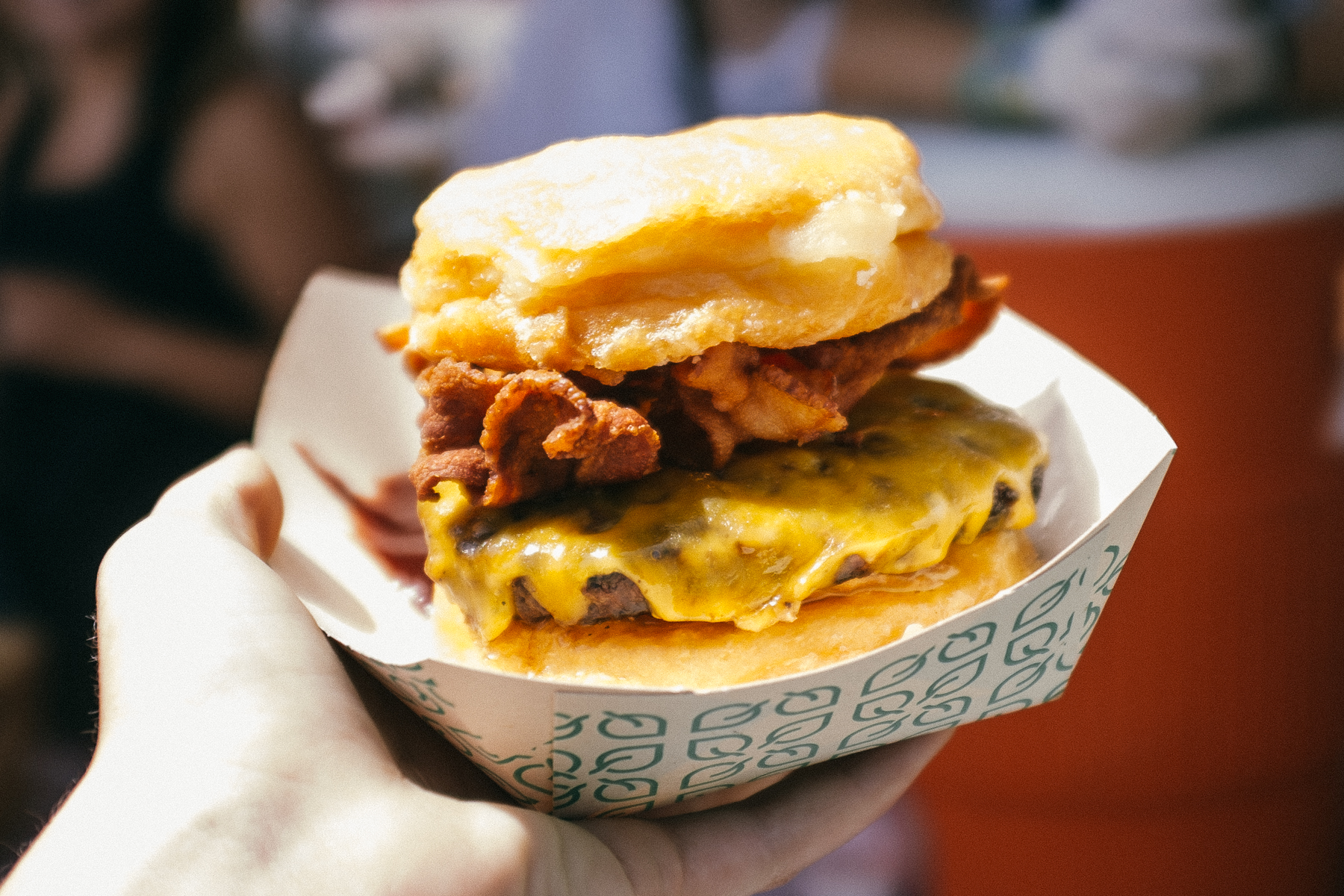
Yeah, I could have just gone home and it would have been worth the trip.
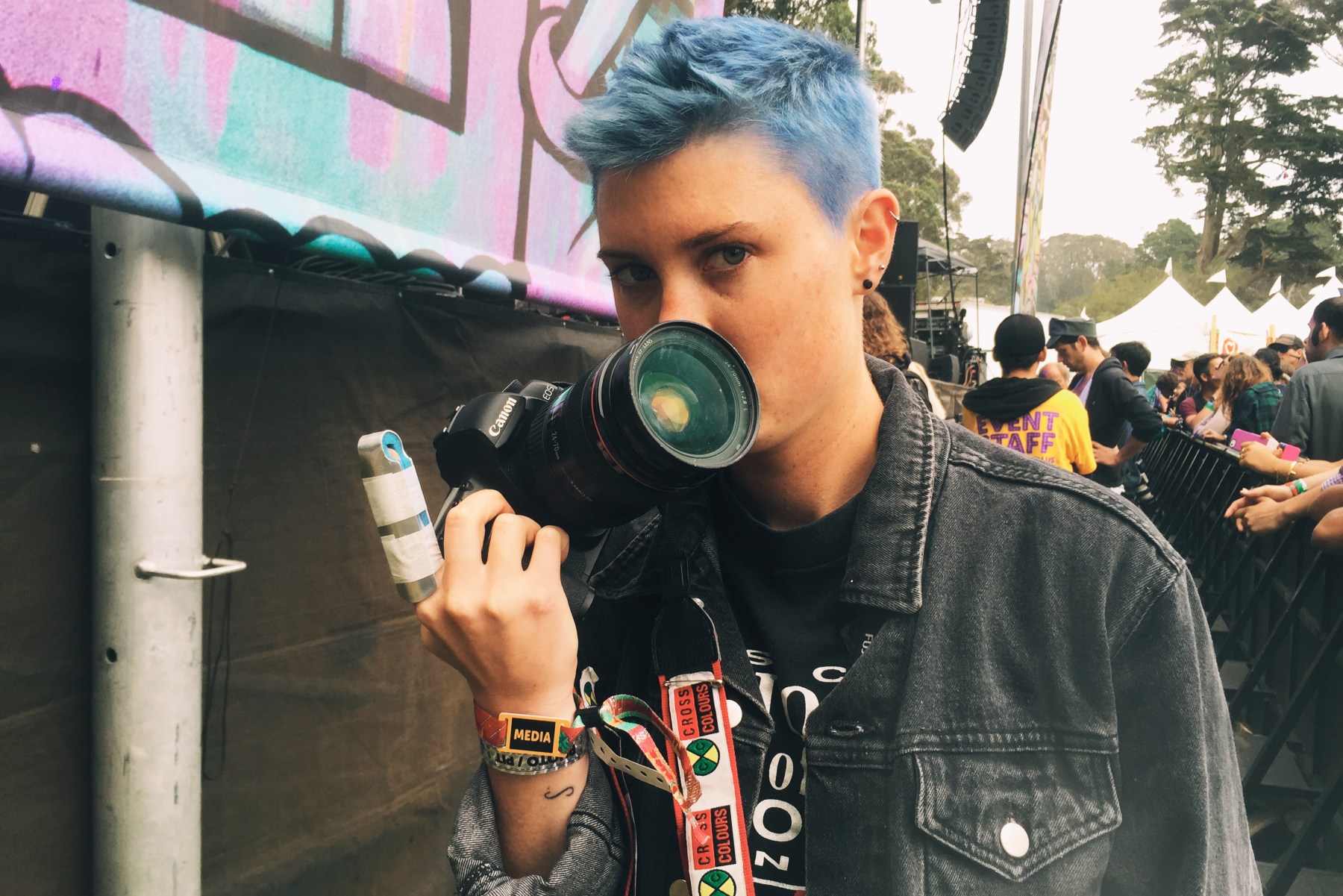
Me, avoiding crowds
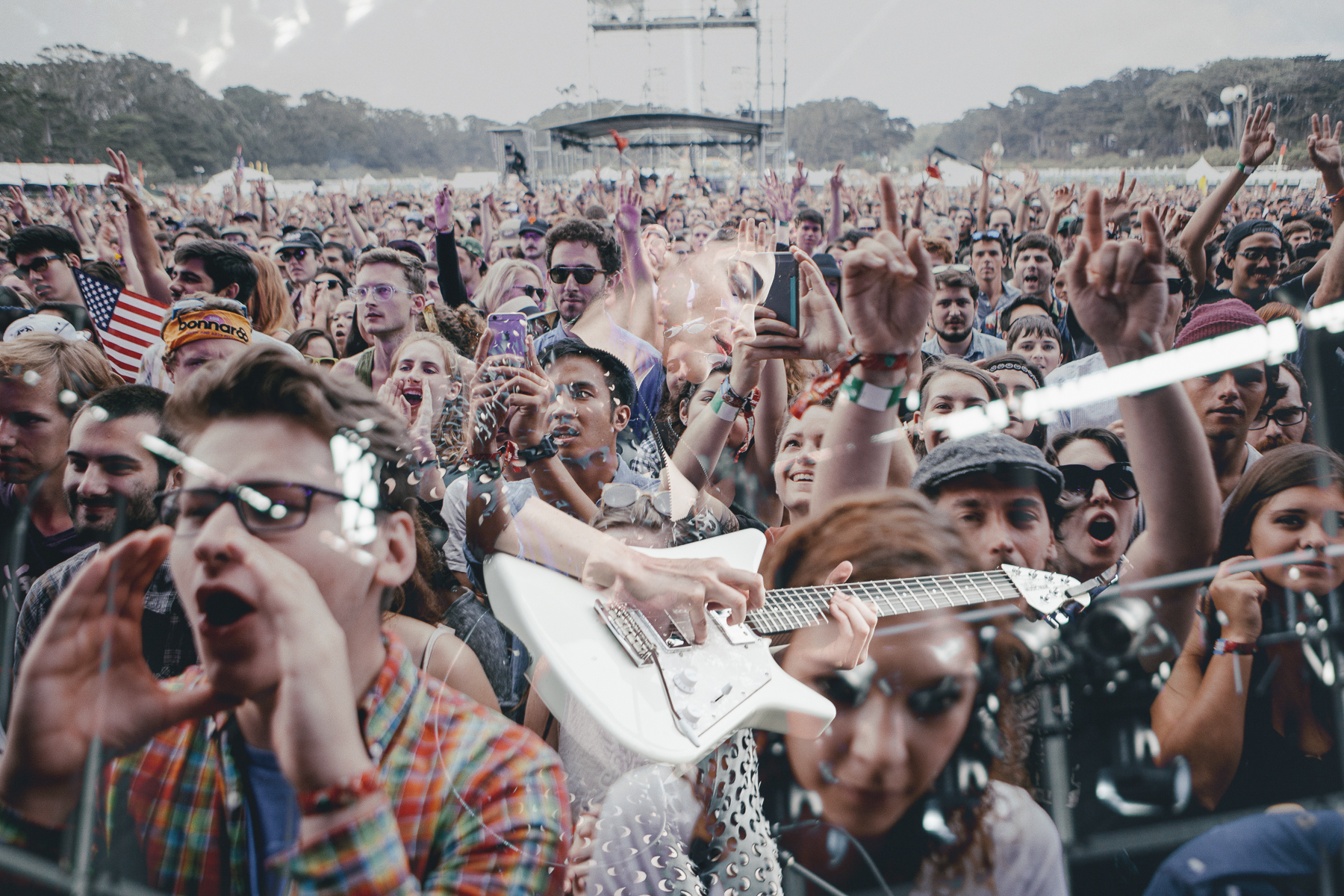
St. Vincent
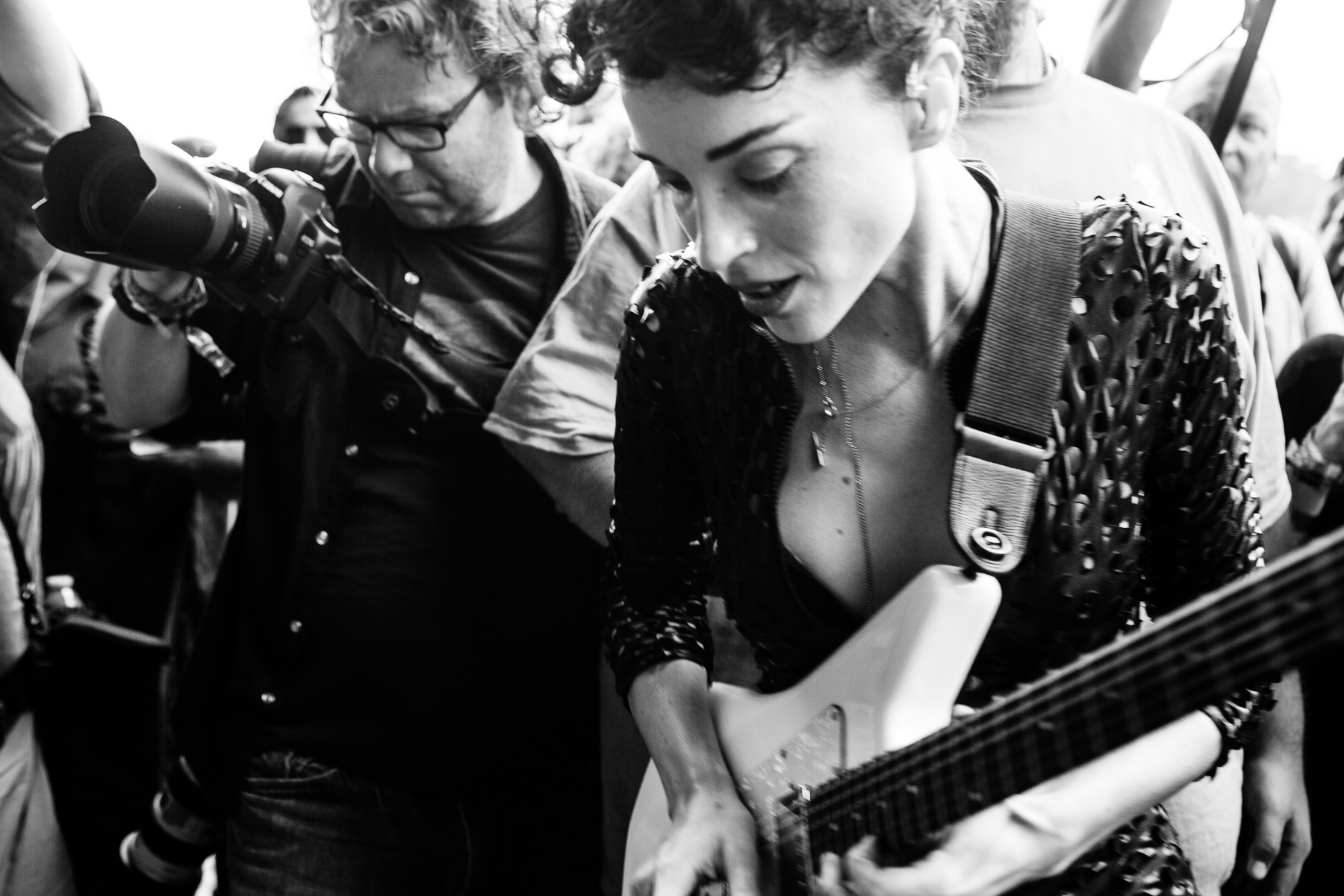
St. Vincent
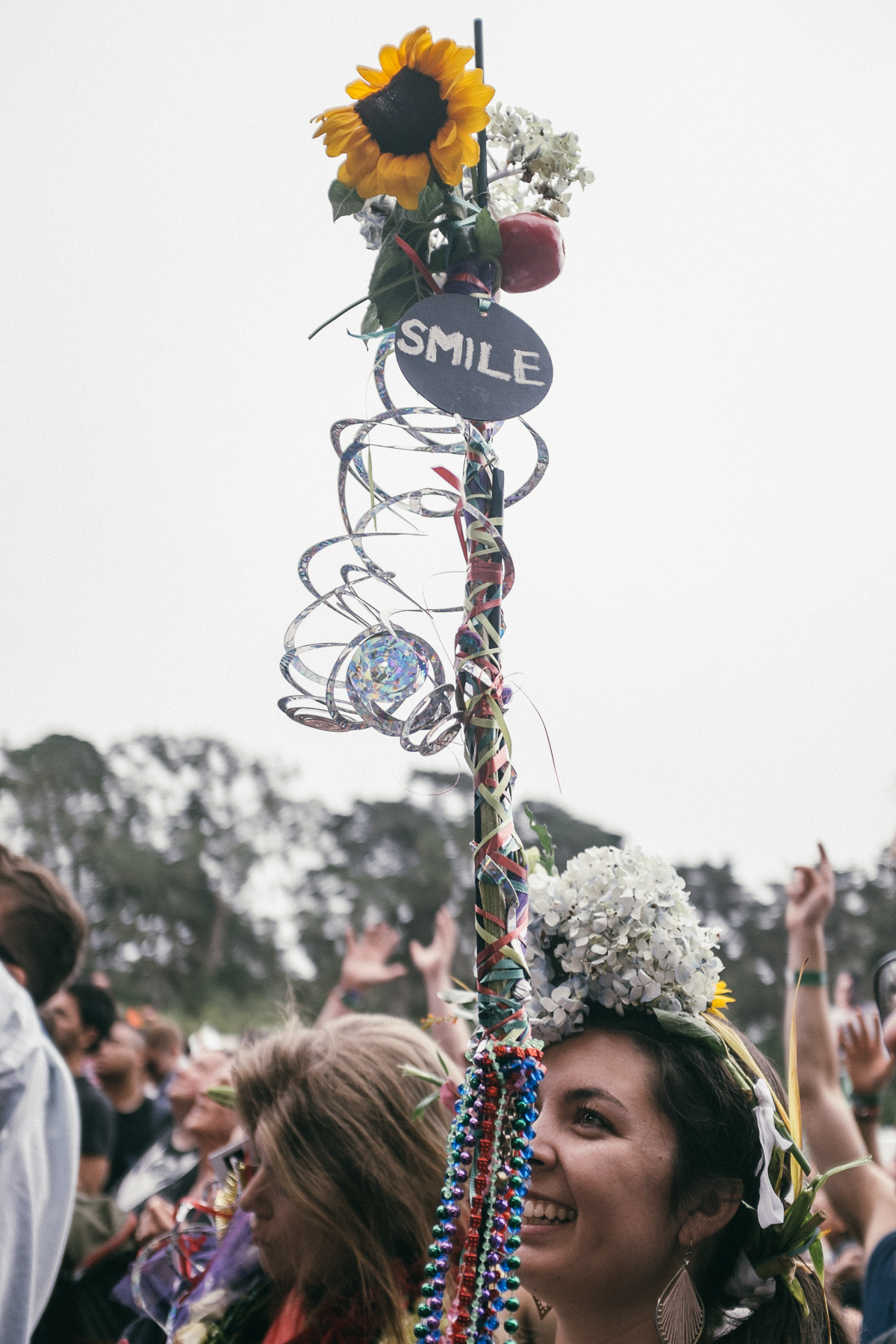
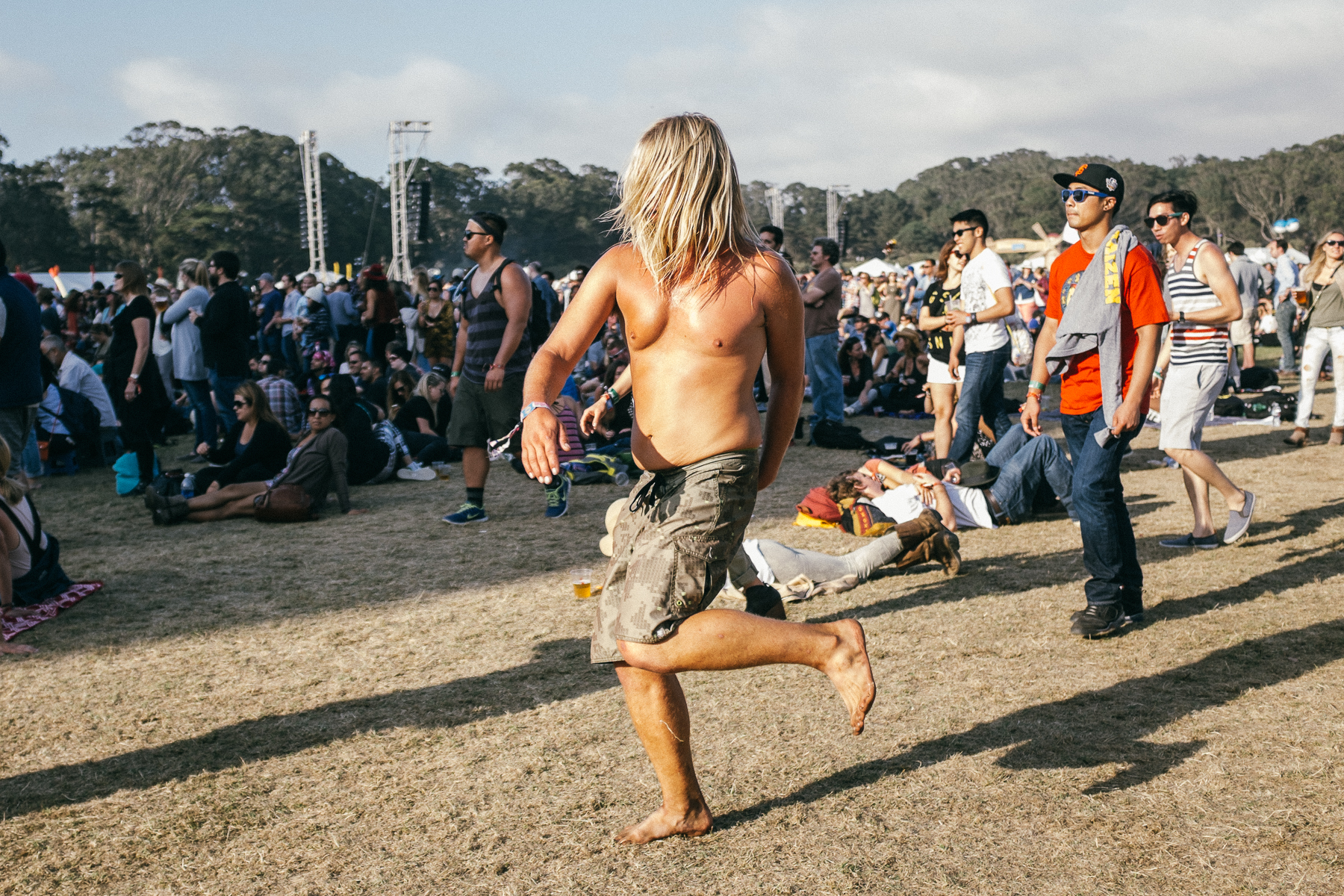

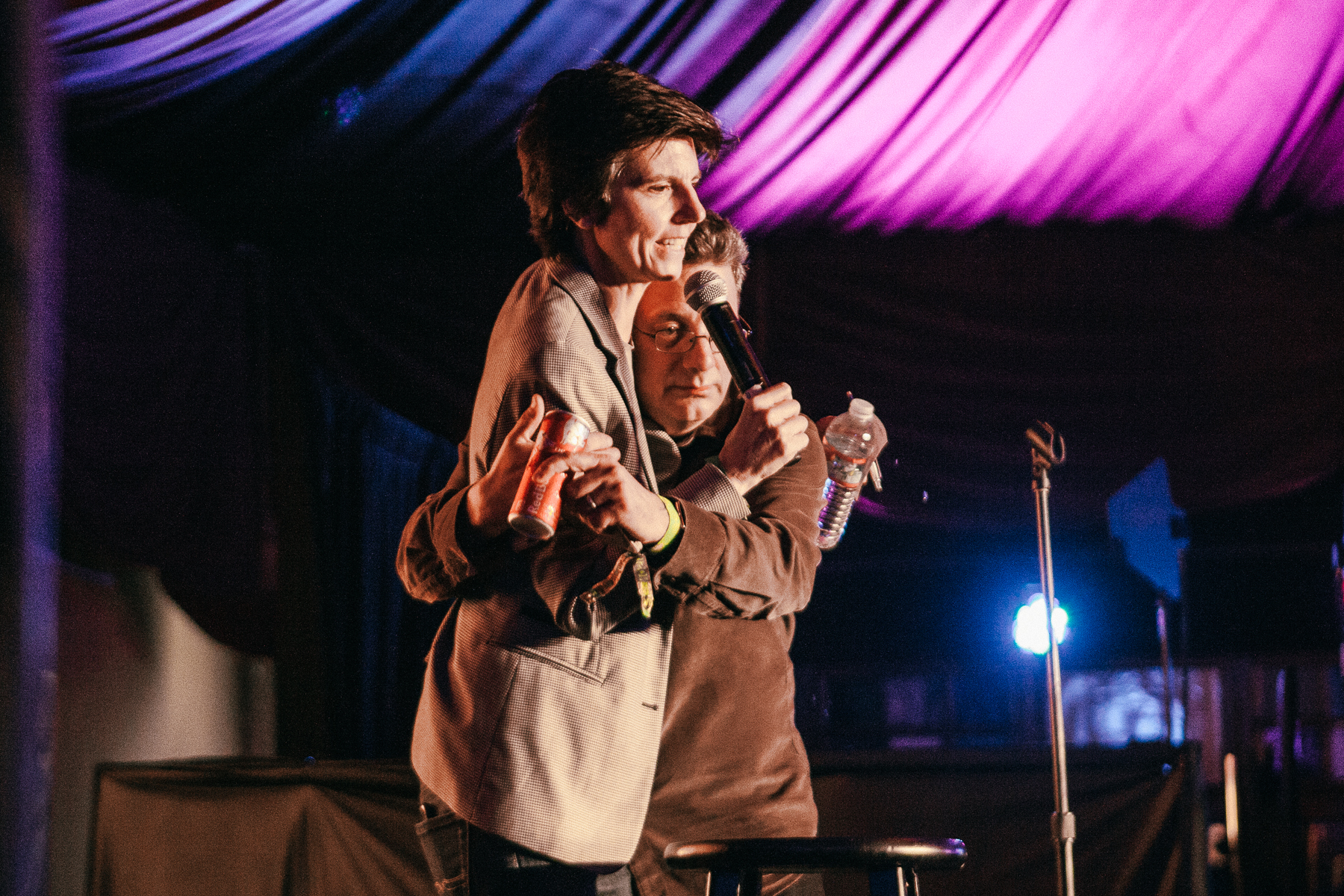
Tig Notaro and Andy Kindler
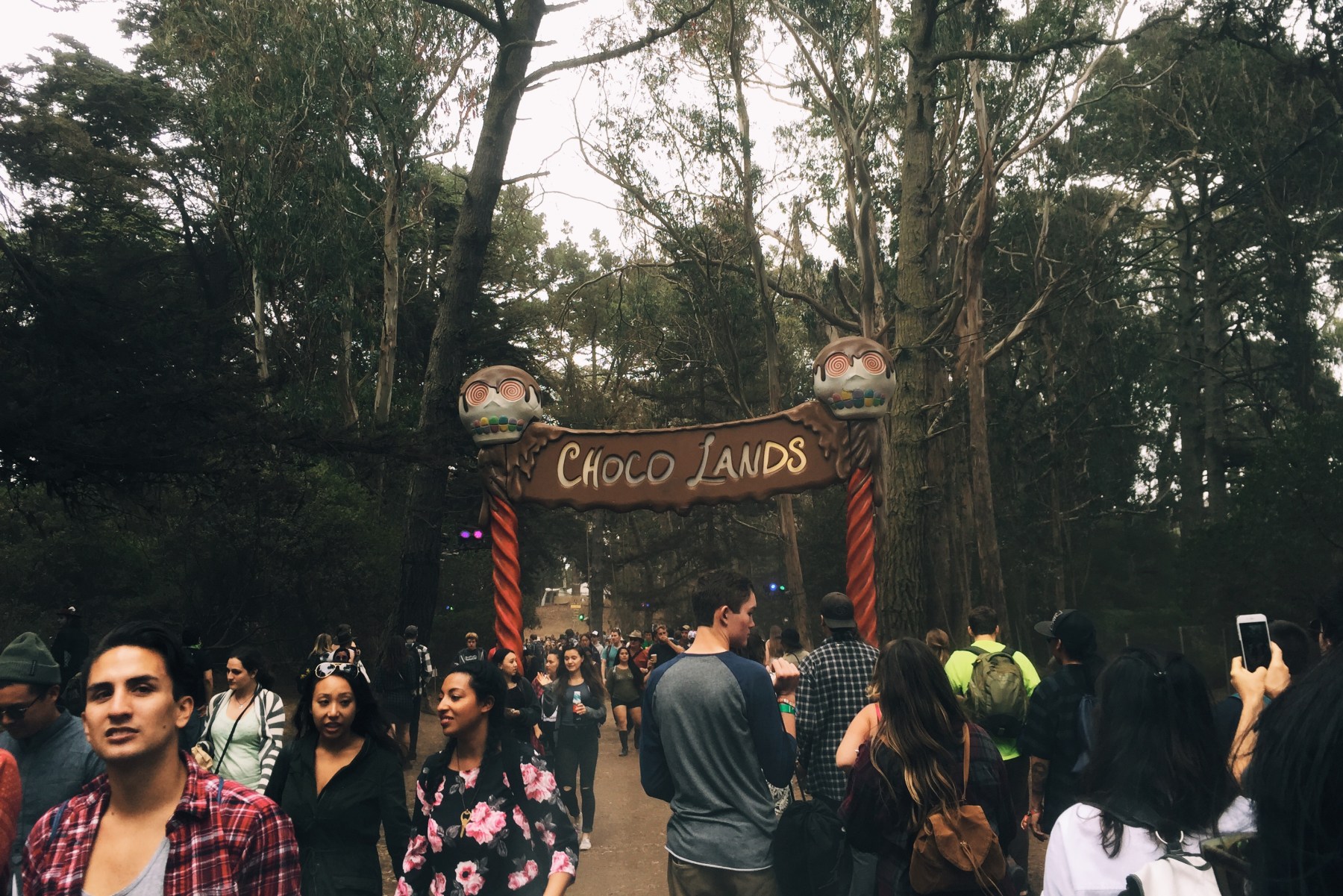
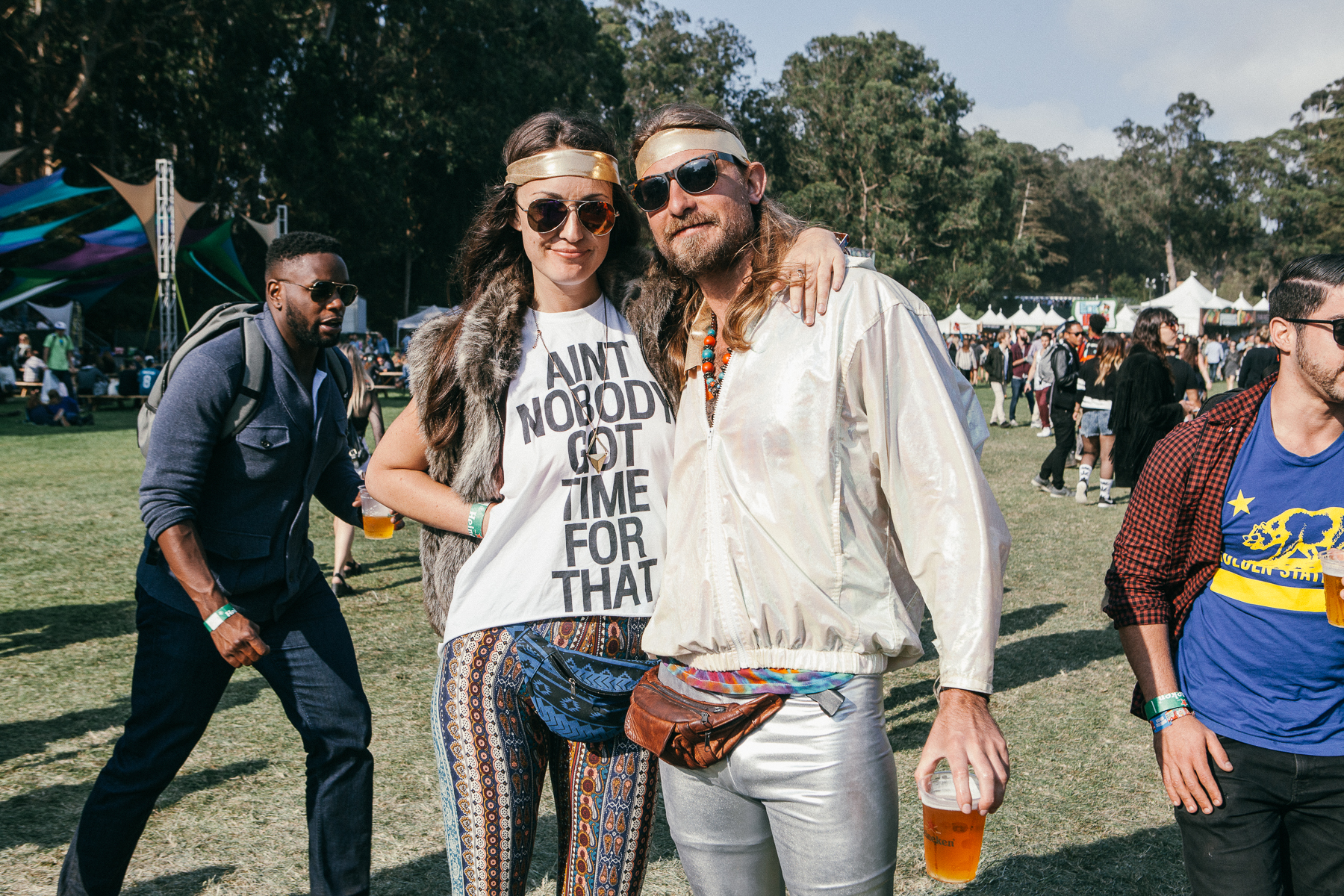
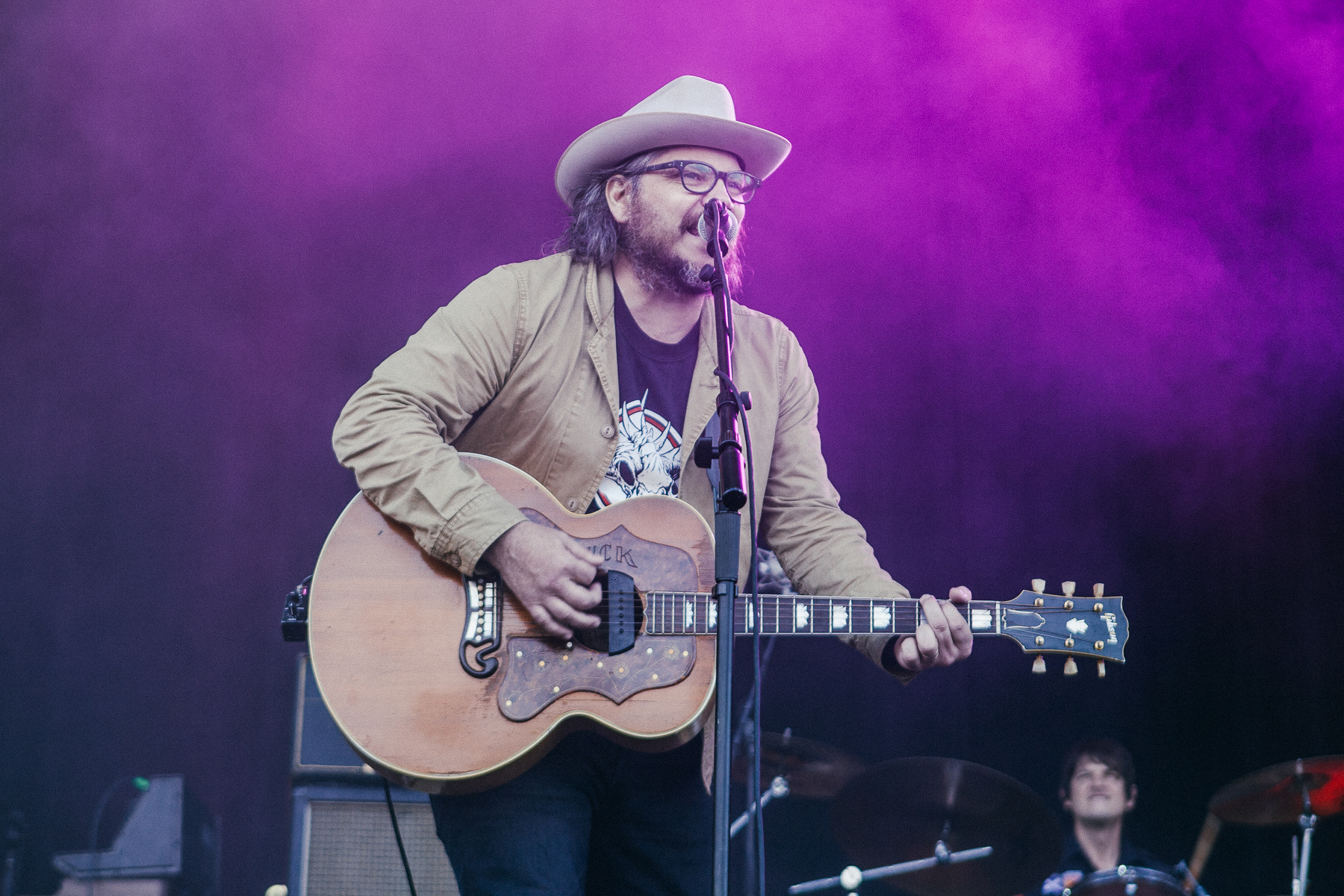
Jeff Tweedy of Wilco

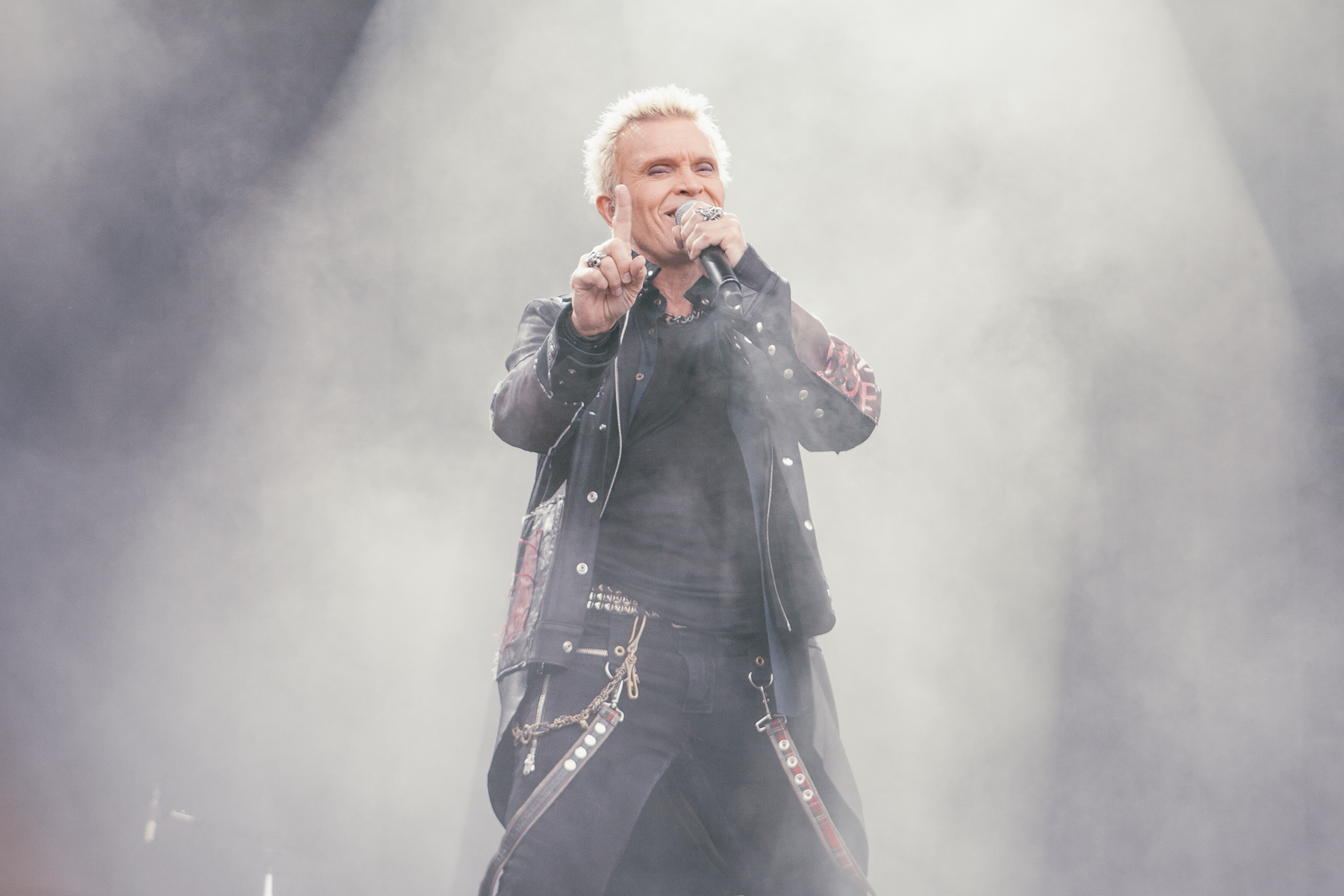
Billy Idol, who was incredible. Like almost as good as that burger.
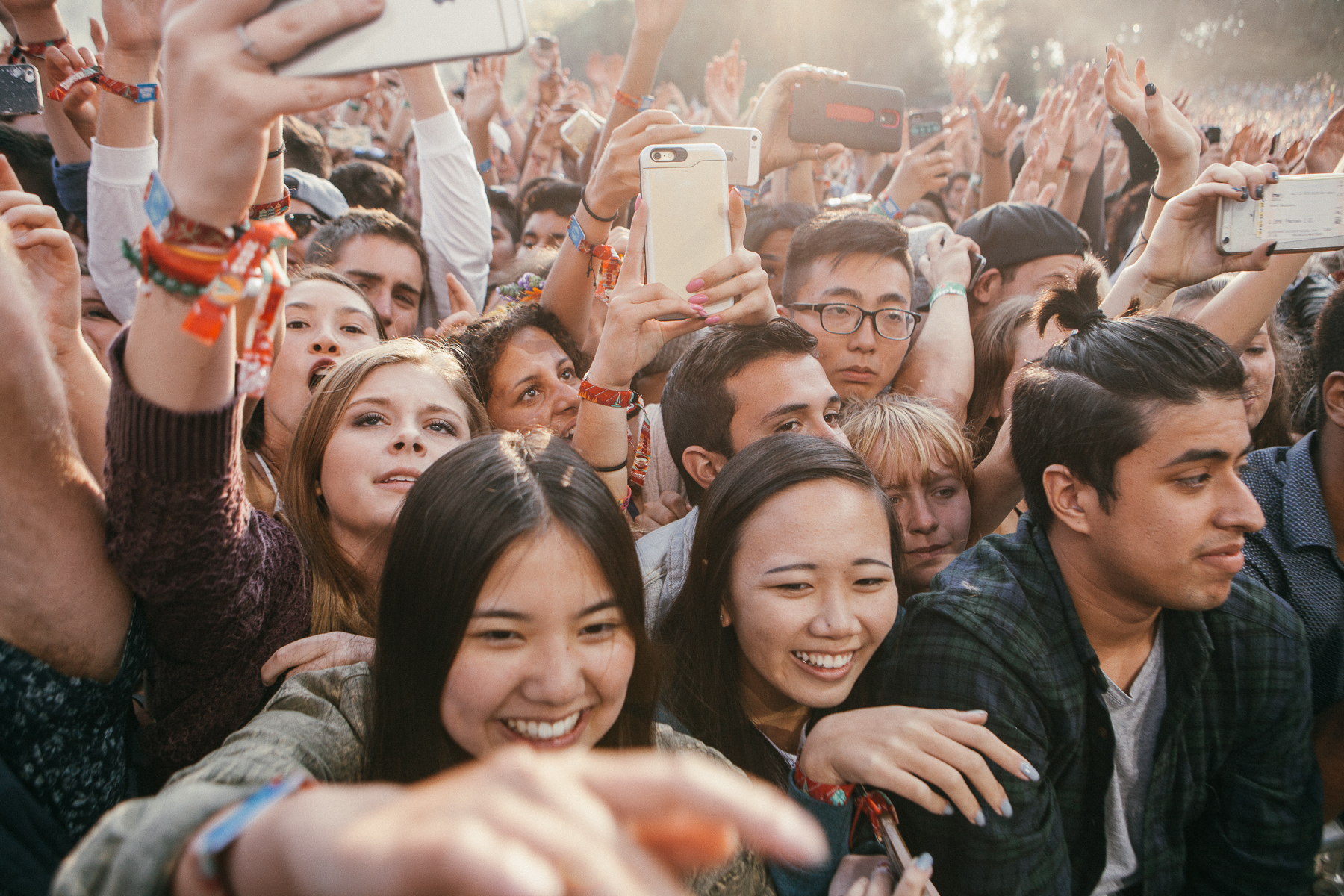
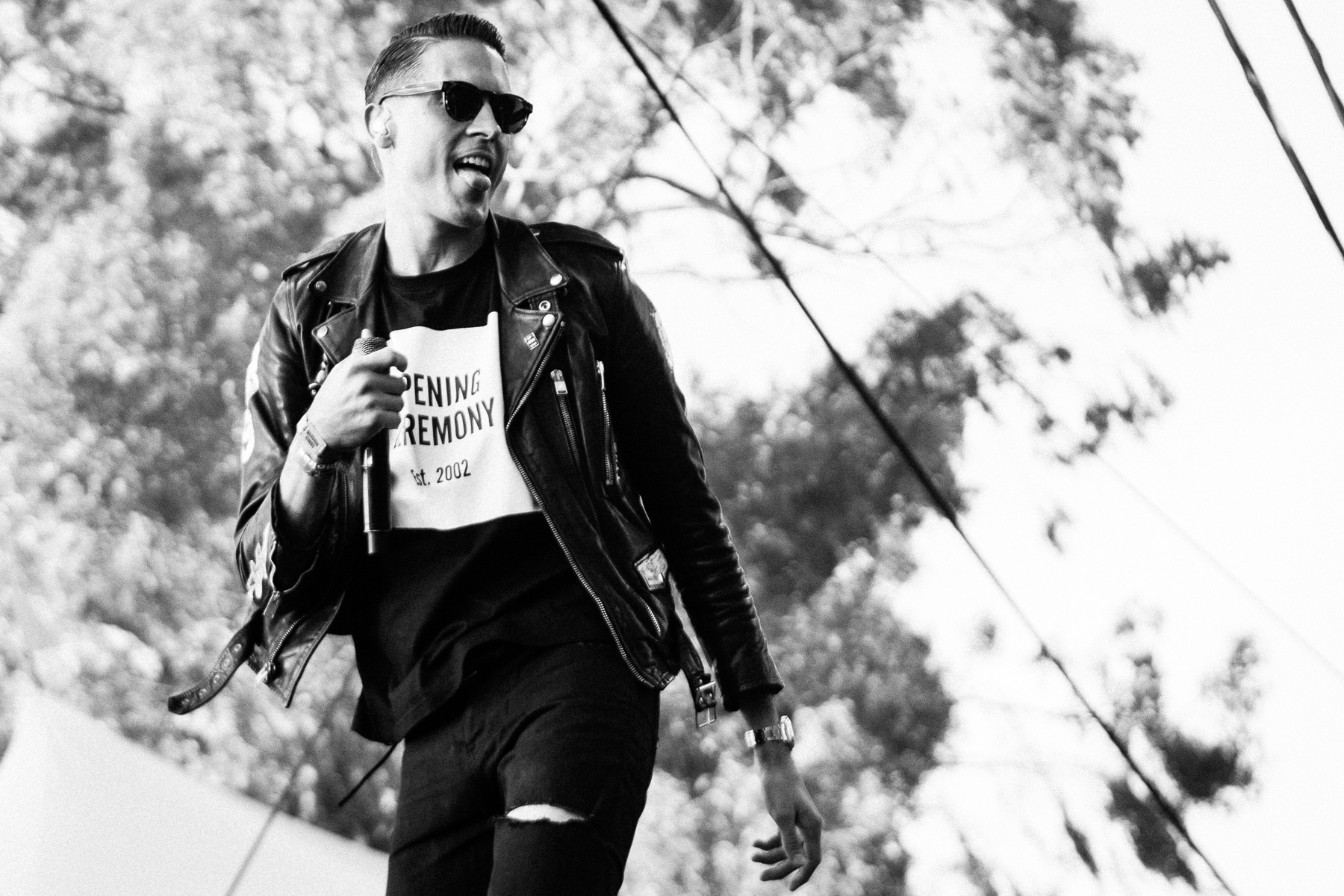
G-Eazy
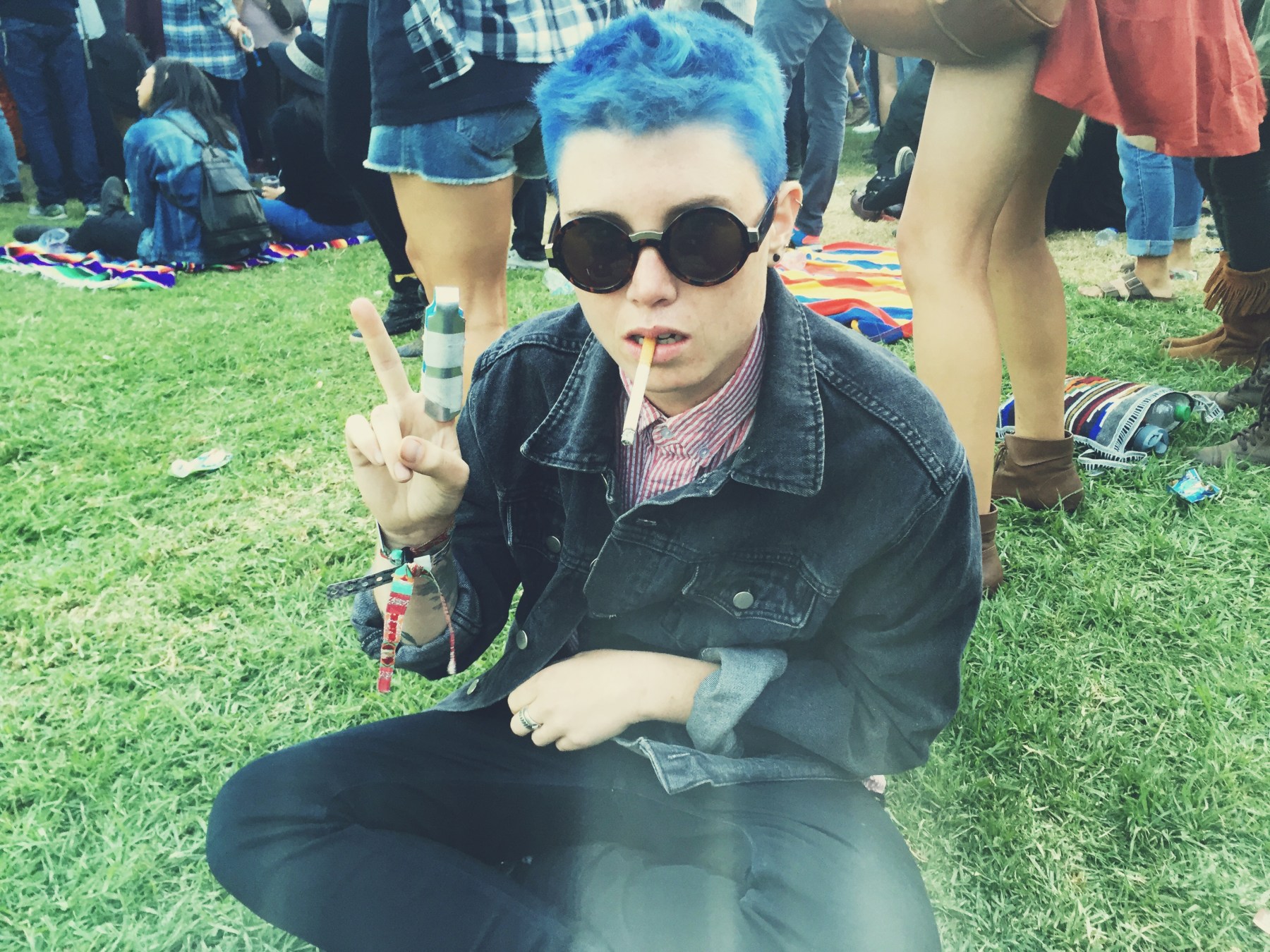
Me, avoiding crowds II
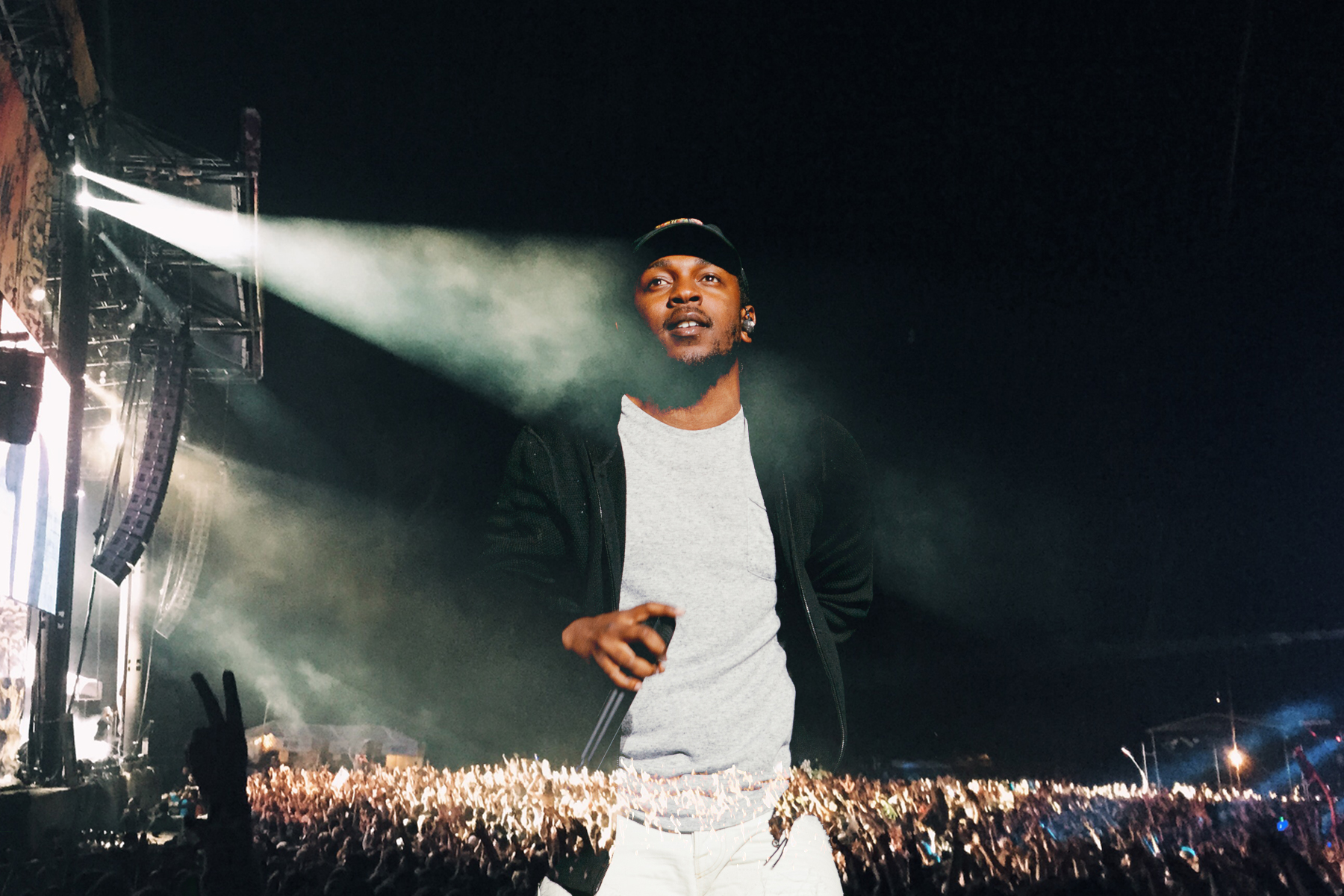
Kendrick Lamar
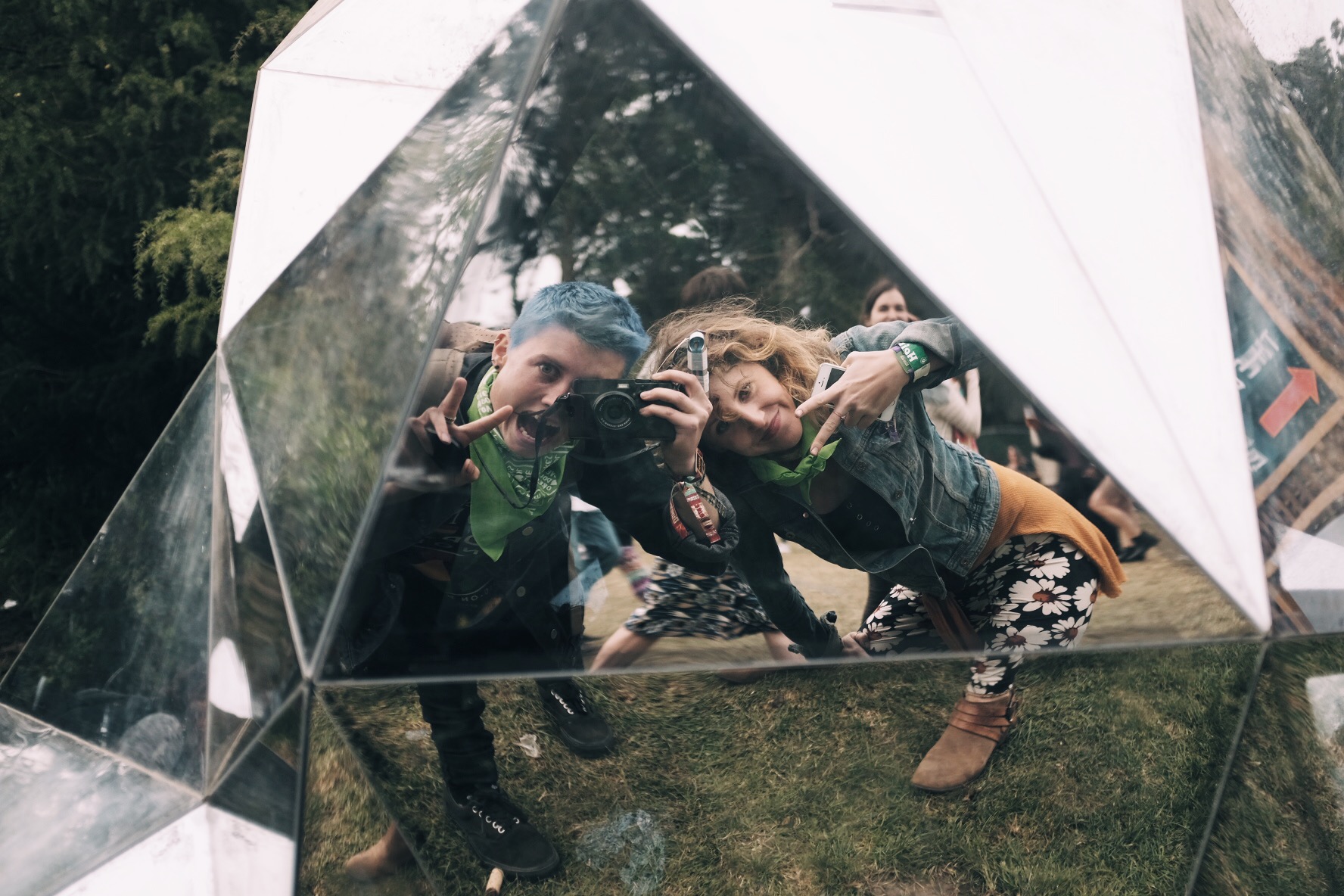
Outside Lands Selfie
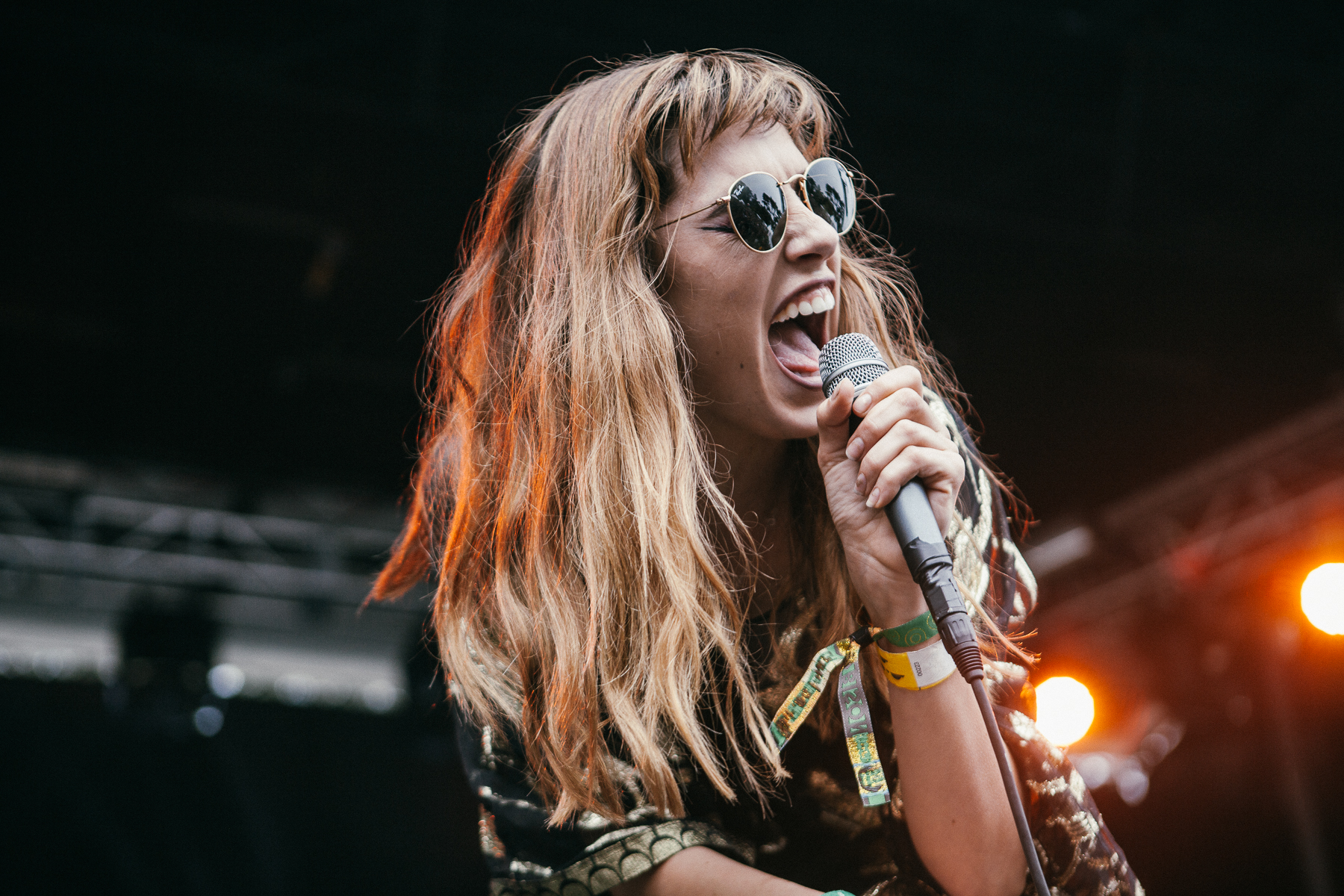
Ryn Weaver
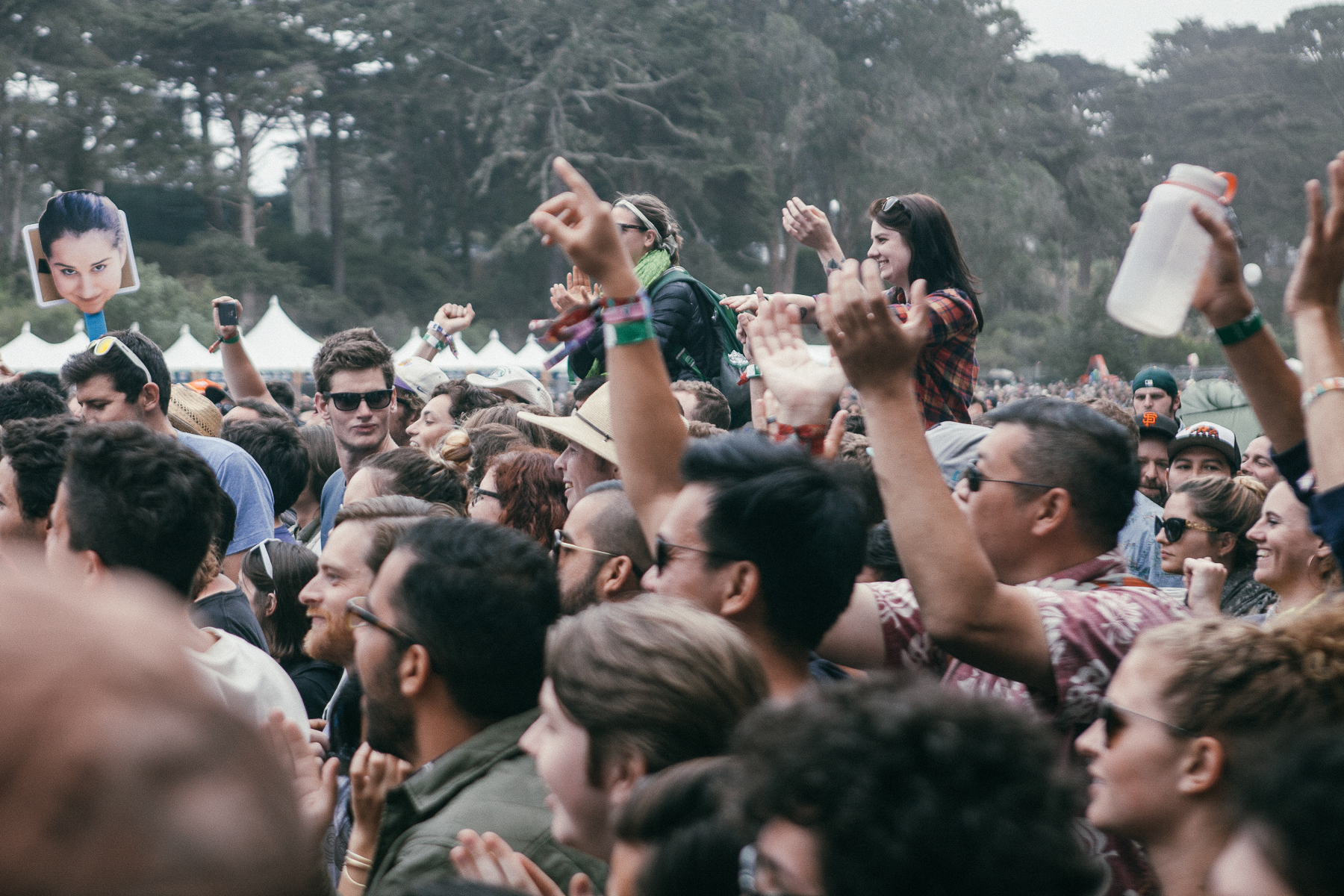
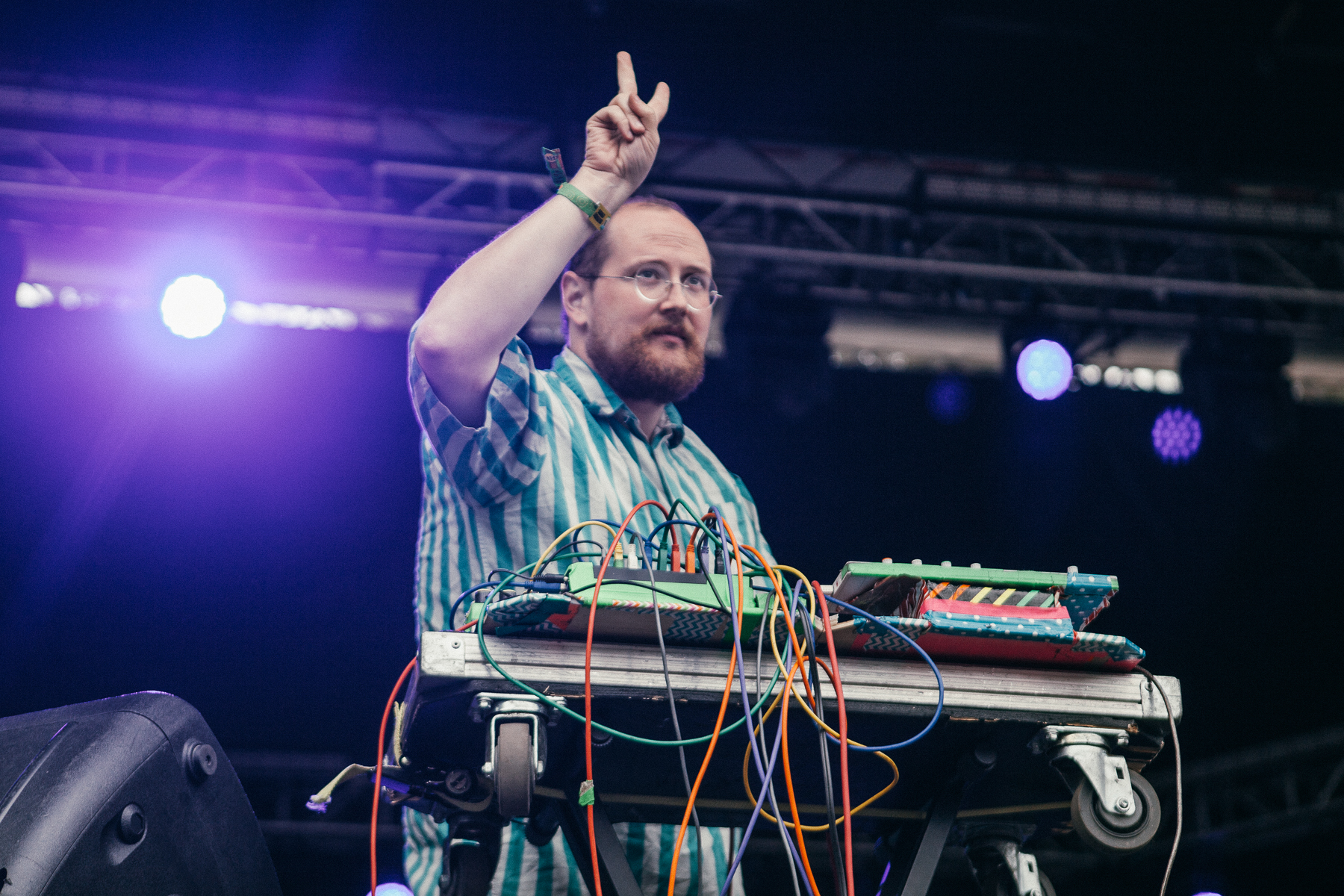
Dan Deacon
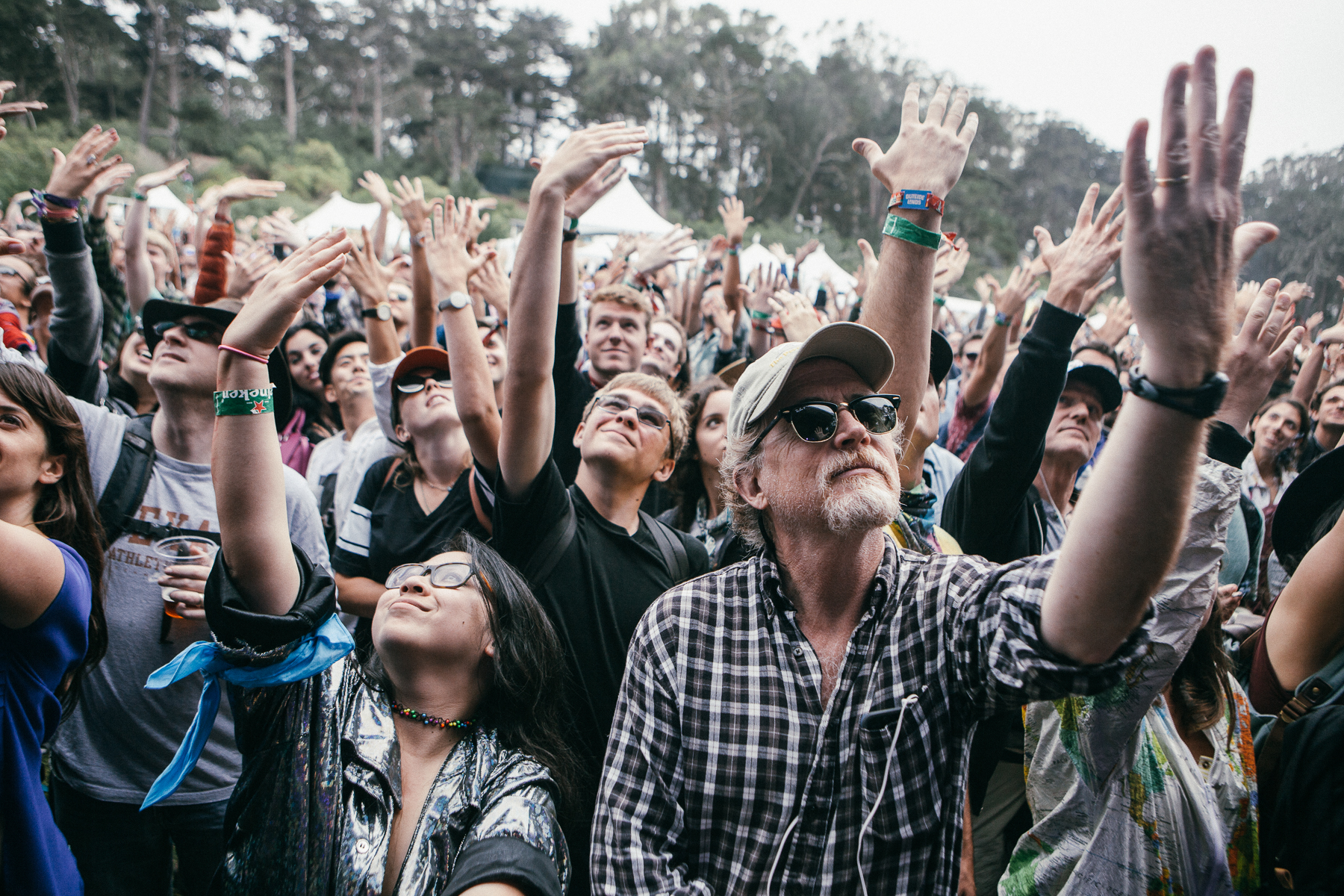
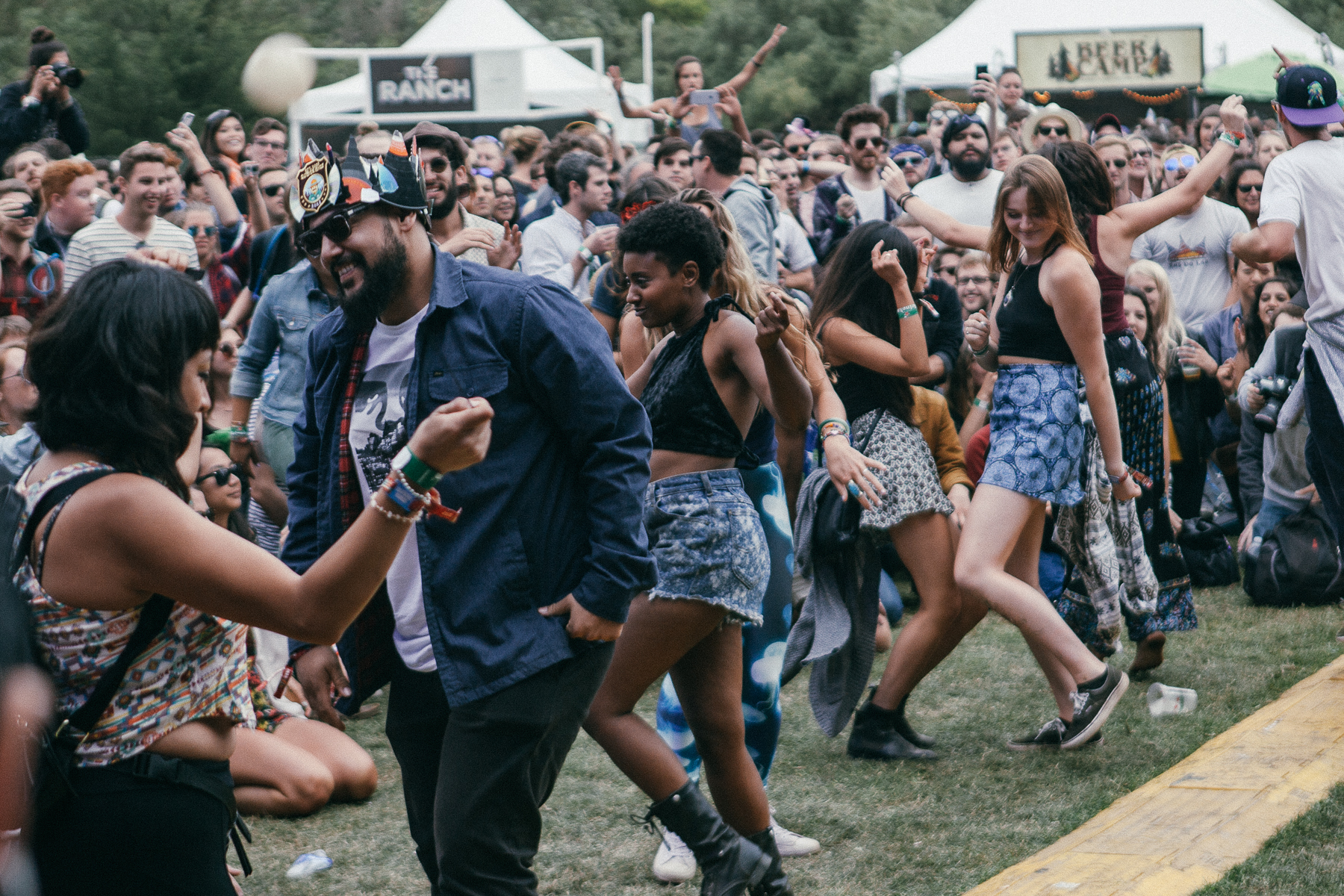
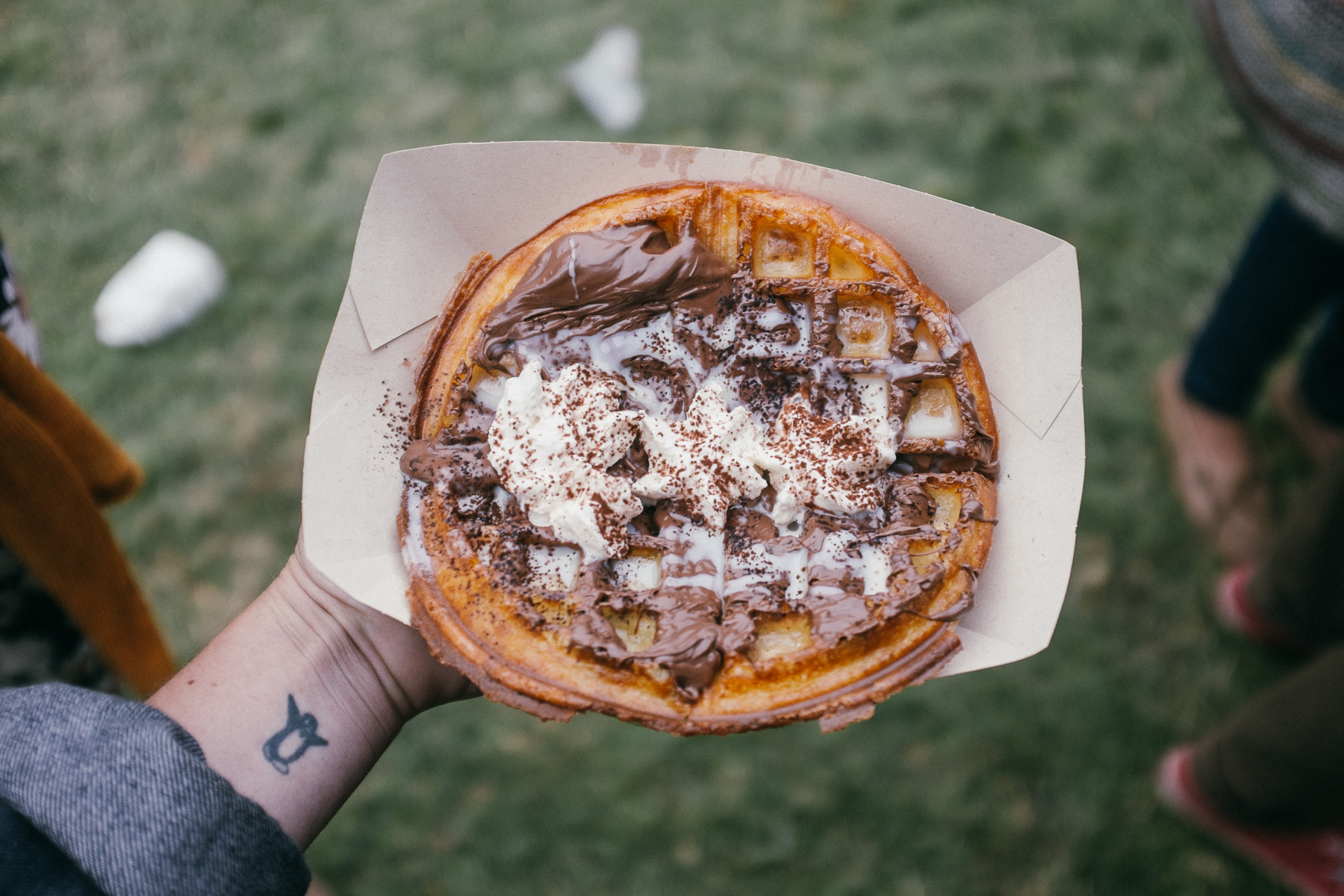
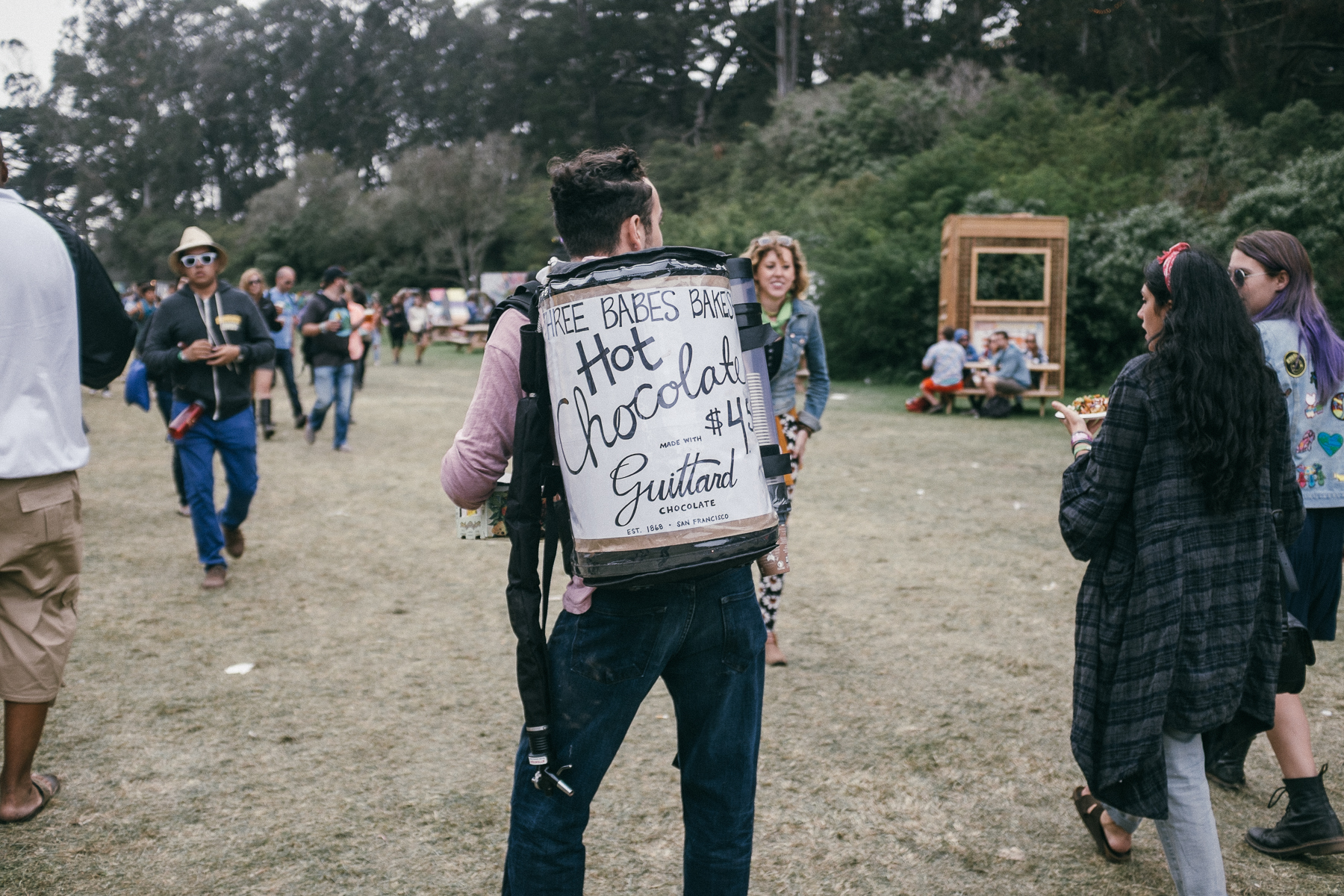
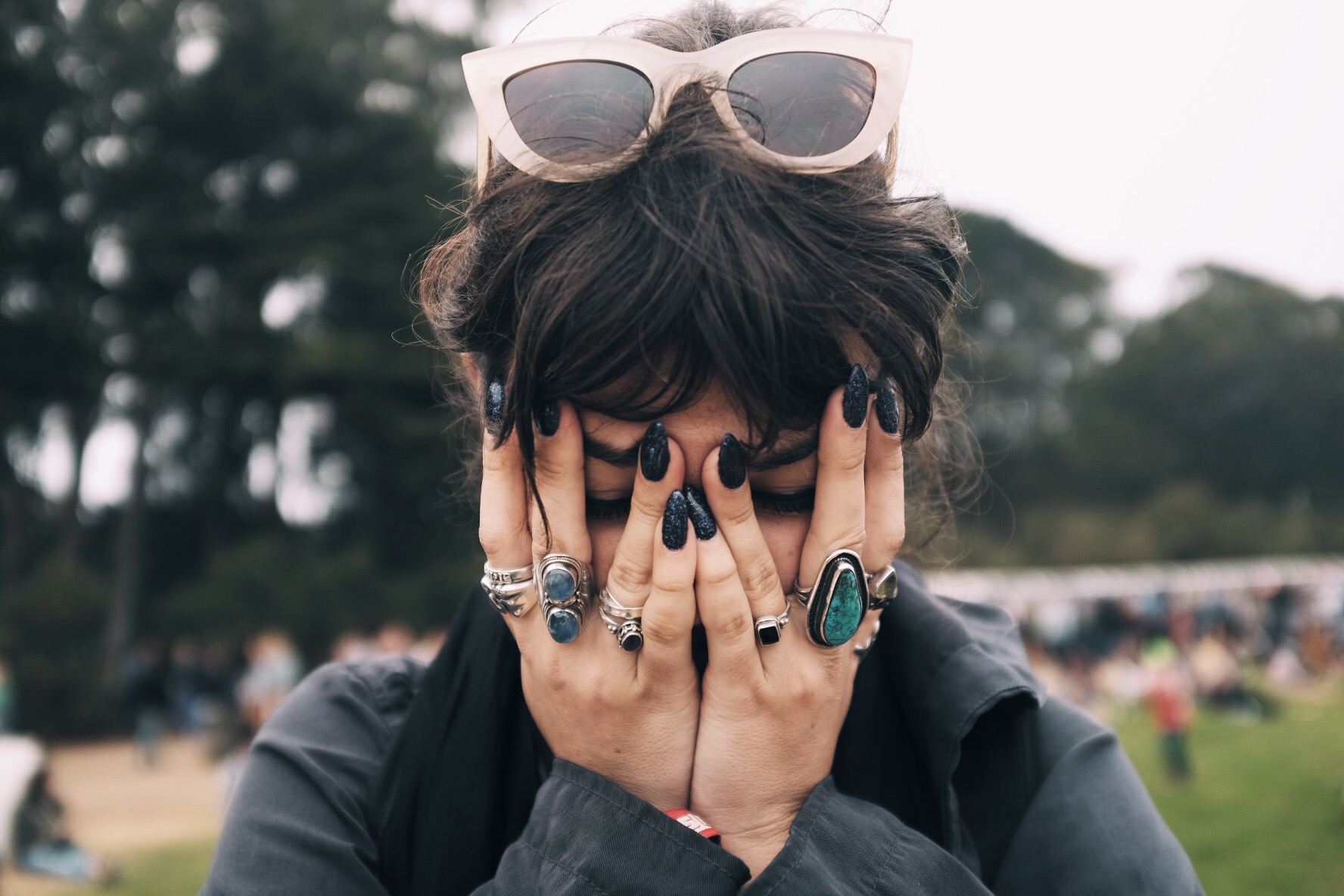
Final day feels
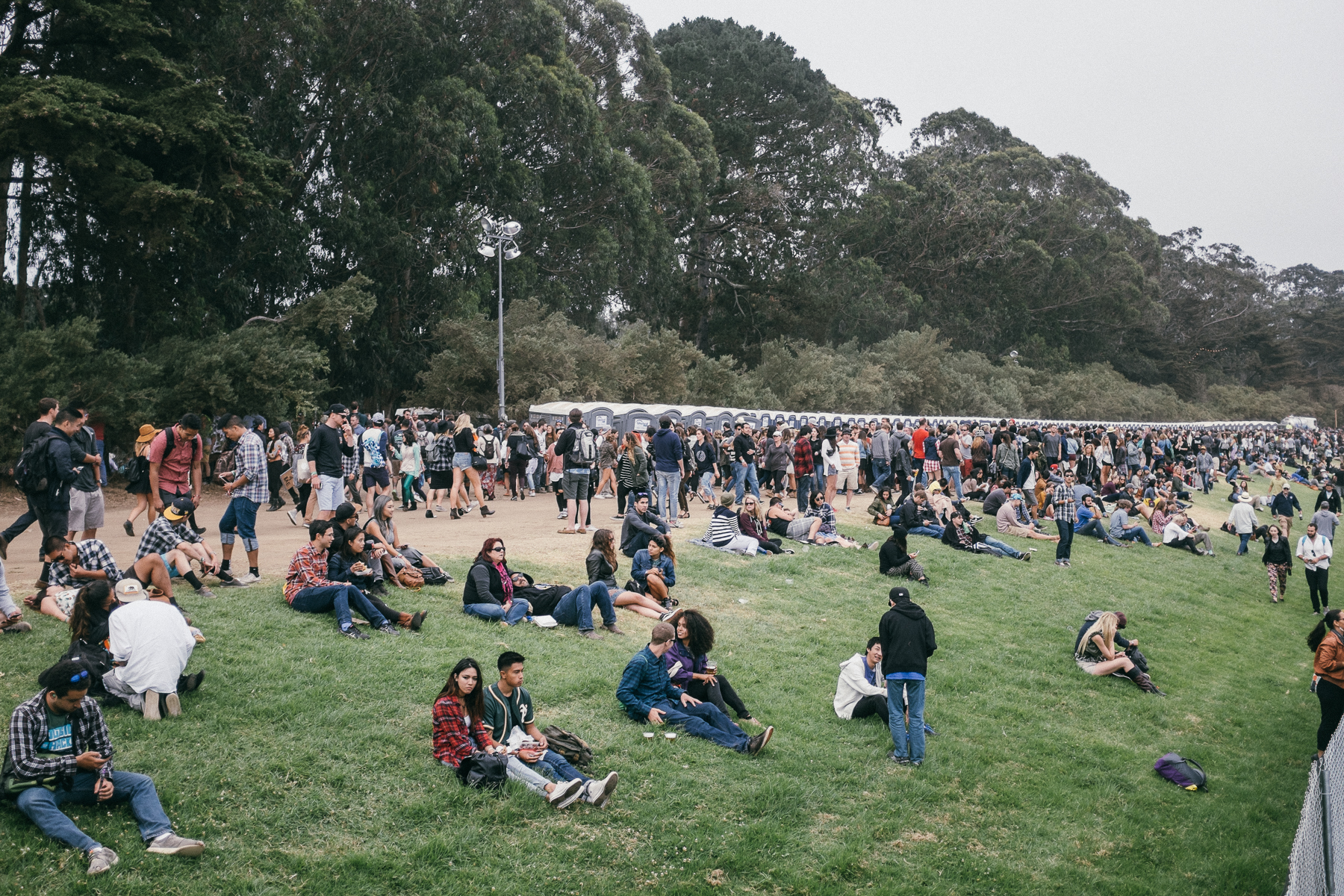
The worst part of festivals. Literally hell.
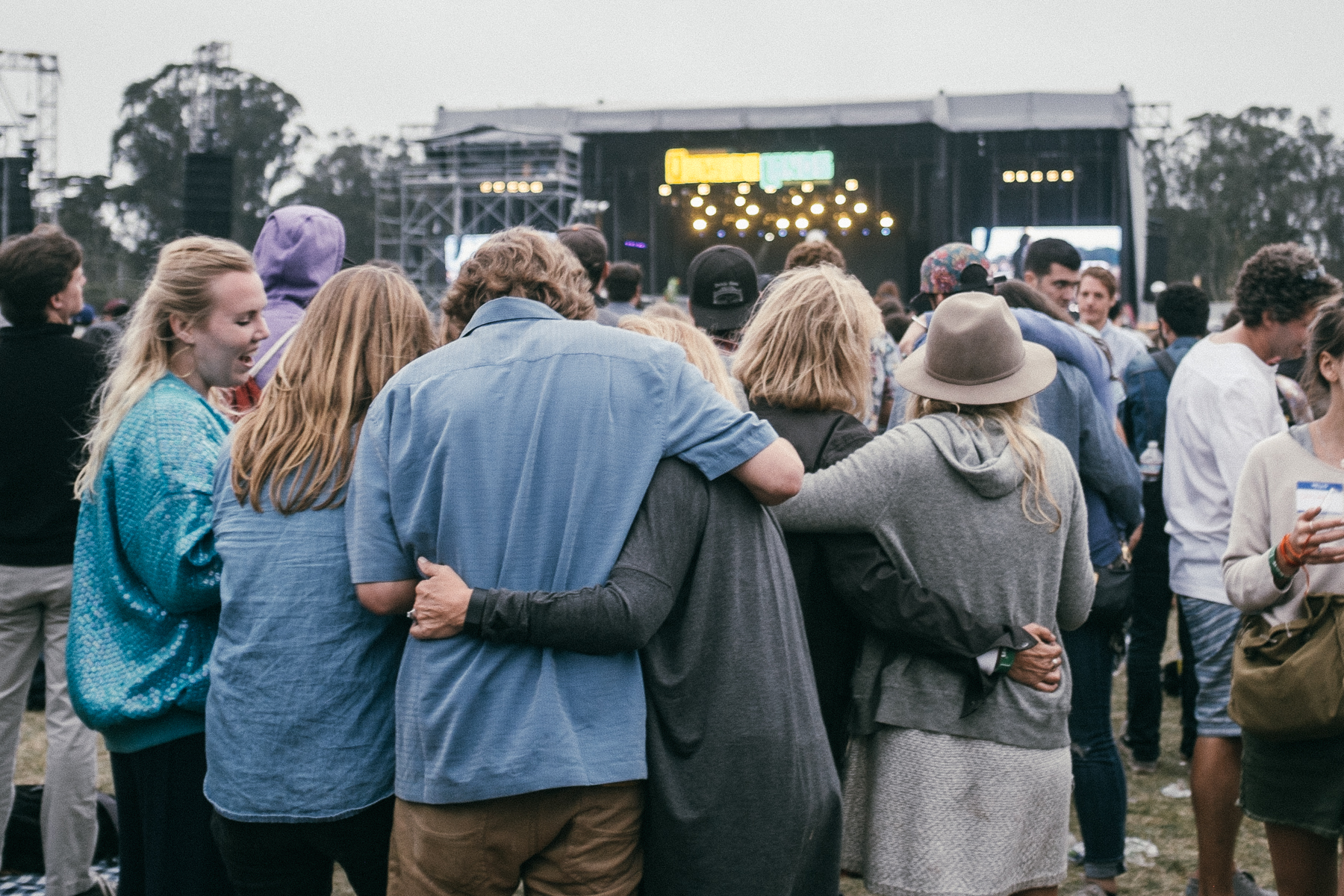
Elton John’s crowd was emotional
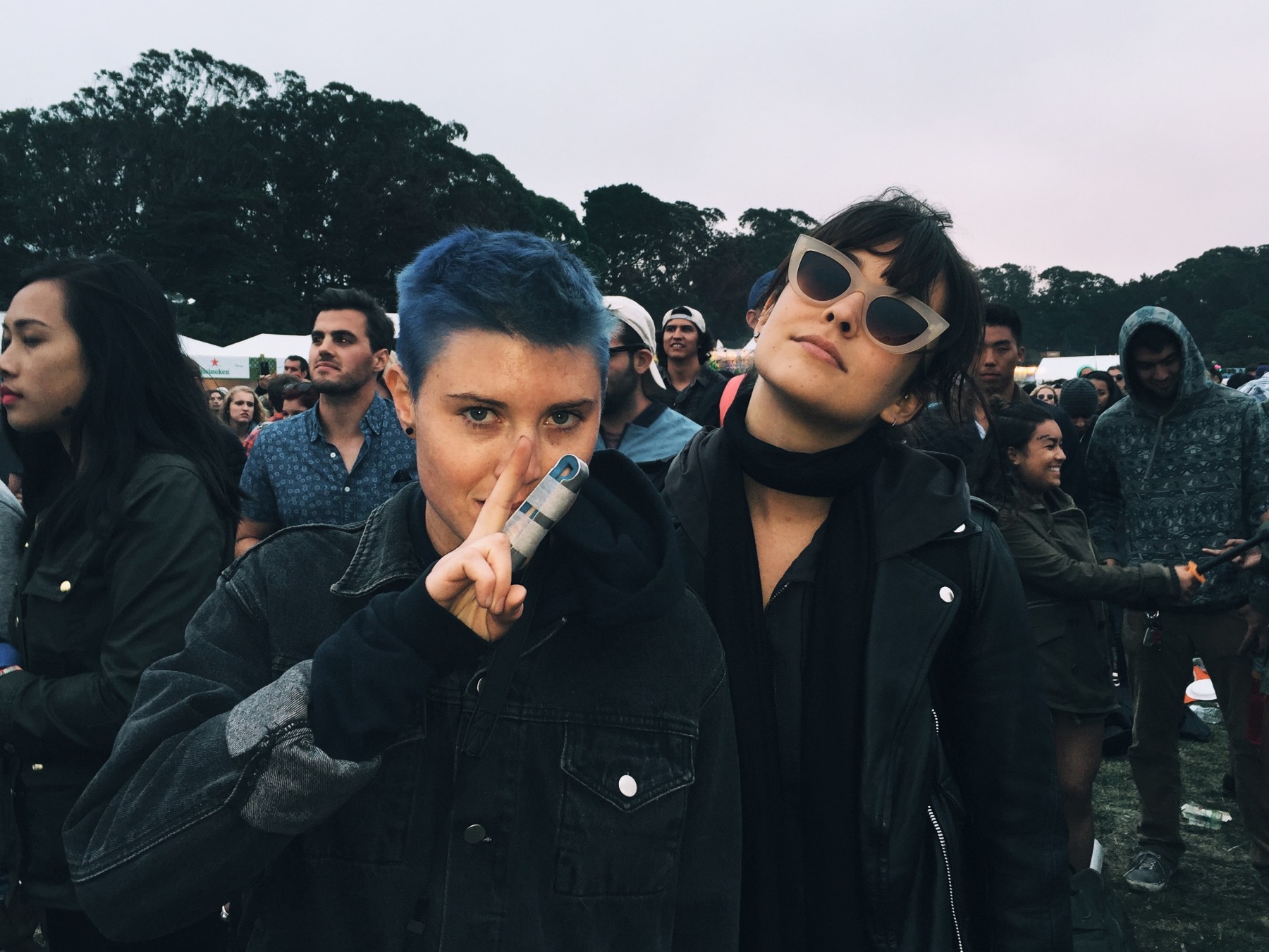
And for once, I wasn’t avoiding the crowd.
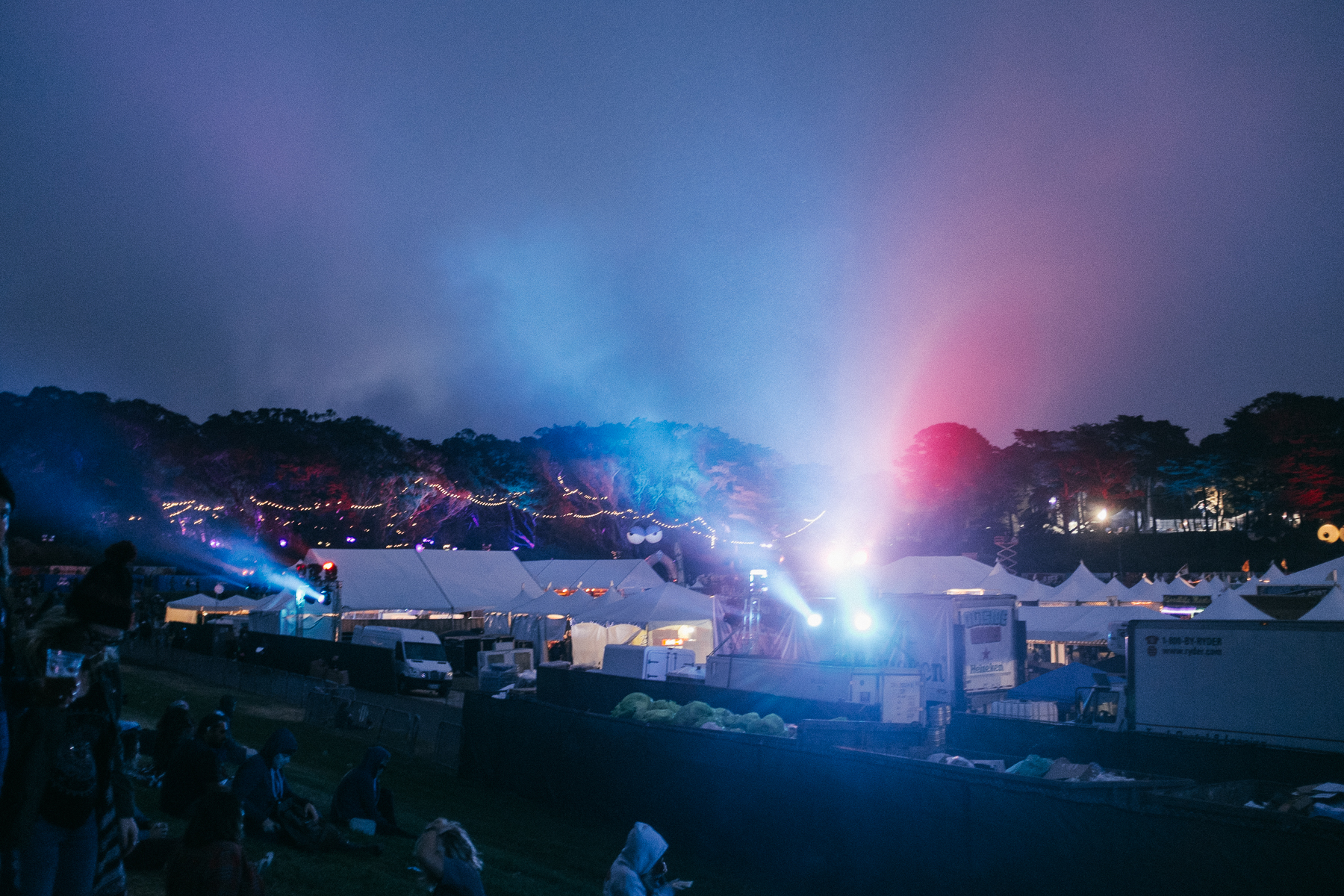
Goodnight, Outside Lands
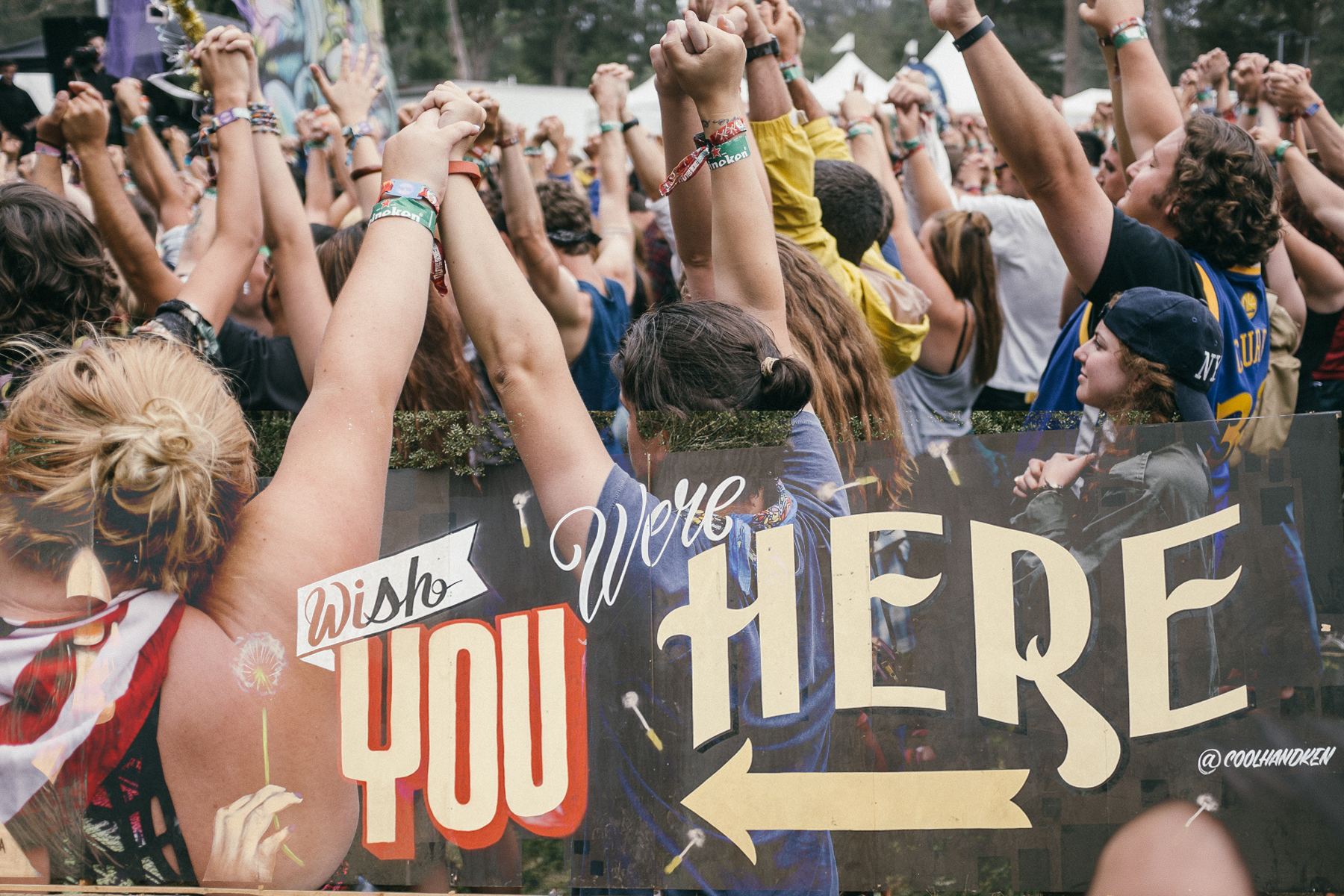
See you there next year!
The Lezlympics: For the Discerning Lesbian Oil Wrestler
What started as an event founder Morgan Faye created in 2012 to watch lesbians do push ups for her birthday has taken on a life of its own. Now called the lezathlon, there are six events for participating teams to get down and dirty: the obstacle course, wheelbarrow racing, trivia, oil wrestling, balloon popping, and tug of war. Also, it benefits AIDS/LifeCycle so it’s all-around good.
Let me start off by saying that it was hot.
The energy in the air was super reminiscent of a sporty lesbian summer camp. Or how I assume a sporty lesbian summer camp would be.
Oil wrestling was by far the most intense event. It got serious. Like, an ambulance was called.
And then the nipples were freed.
This particular freeing of the nipple happened not because shirts suck and boobs are great but because of a more personal protest. Last Sunday (pride Sunday in LA), a member of this crowd was arrested for swimming topless in her apartment pool. She was not doing anything reckless, loud, crazy, belligerent, just swimming, with bottoms on. Without warning or a simple request to cover her chest her landlord called the cops and she was cuffed and taken into custody for 6 hours.
This happened in West Hollywood, during pride.
But anyways. Back to the Lezlympics.
And the champs were….
But don’t forget guys, we’re all winners.
Why You Need to Go to Queer Rebels Fest in San Francisco This Weekend
Last year, San Francisco’s Mission District saw the doors of Esta Noche closed for good. The 33 year old queer Latino bar’s closure was dismissed by sites like Eater and the San Francisco Weekly as little more than a drag-show-offering-dive where by mid-afternoon, you could catch “glimpses of dudes blowing other dudes behind open doors.” To the largely queer and trans Latino patrons who populated the bar, it was decidedly more. Through interviews in Juliana Delgado Lopera’s book Cuéntamelo: Oral Histories of LGBT Latino Immigrants, we learn that Esta Noche enabled queer and trans immigrants to find community; it was a place where queer and trans Latinxs could find employment; the bar provided a creative outlet for performers, one of the only in the once predominantly-Latino Mission District to have all-Latinx drag shows.
San Francisco also recently saw the closure of The Lexington Club, the city’s only remaining lesbian bar. When writing of the club’s closure, Lila Thirkield, the Lexington’s owner, wrote about how painful it is to lose queer spaces and much like Esta Noche, it was a matter of no longer being able to afford rent in a rapidly-changing neighborhood.
What we’re really talking about here is violent displacement, also known as gentrification. According to KB Boyce and Celeste Chan, the closure of spaces like Esta Noche and The Lexington Club signify a new stage of gentrification – the loss of public gather spaces for queers and queer and trans people of color.
“With queer and trans people of color (QTPOC), there’s such a history of being pushed out, a sense that we have no place to publicly belong. Even though some can gather privately, there are a lot of QTPOC who are working-class, poor, or homeless, who are pushed from The Piers in NYC or the streets of San Francisco. There is no place to be. We have a presence that is both invisible and policed,” Boyce said.
Boyce and Chan are the people behind Queer Rebels Productions, formed in 2008 with the goal of building artistic spaces for queer and trans artists of color. Since the beginning, the group has wanted to do a multi-ethnic QTPOC festival, like the one they’re holding on May 29 and 30. QUEER REBELS FEST! is the couple’s attempt to move beyond the mourning the QTPOC community so often must do in the face of police brutality and the murders of Black Trans women, women of color, Black women, and Black men. In short, QUEER REBELS FEST! is a reminder of those who are still in San Francisco, holding onto queer and trans people of color artistic spaces. The festival will feature two nights of proactive new performances from queer and trans artists of color, including Ryka Aoki, Wizard Apprentice, South Central-born drag queen Persia, and Elena Rose, among many others.
Queer Rebels first event emerged from Boyce’s performances as TuffNStuff, a cross-dressing Blues musician. After receiving a $500 Queer Cultural Center grant, the group organized/curated Queer Rebels of the Harlem Renaissance for the National Queer Arts Festival. The community really showed up for the event, so Boyce and Chan decided to keep going. The goal now is to be part of a larger QTPOC movement, with Queer Rebels challenging audiences to think about who is honoring queer/trans ancestors and who has artistic freedom, voice, and legacy.
“There aren’t many physical spaces dedicated 24-7 to queer and trans artists of color,” Boyce said. “We exist in the overlap – between queer spaces and people of color spaces. And now all of these spaces are rapidly disappearing. We’re trying to hold it down for queer/trans people of color in San Francisco, be part of a larger movement for QTPOC arts, and also assert our presence is a city that is driving POC out and becoming whiter and wealthier.”
Besides being life-giving, queer and trans art keeps those histories alive. Chan says that so many of the people who are getting pushed out of San Francisco are the ones who helped build the city. Events like Queer Rebels Fest is a way of asserting QTPOC existence, the Queer Rebels co-founder says.
“We’re here on our own terms; we’re not waiting around for the colonial gaze to acknowledge us. In so many spaces, we are pushed out, marginalized – but actually, really, we have a lot of collective power.”
And it’s true: When queer and trans people of color get pushed out of San Francisco, the city also loses.
“Can we be more clear about what makes San Francisco special? It’s that mix of Esta Noche queens, the Hot Boxx girls at Aunt Charlie’s Lounge, Chinese immigrant seniors waiting at the food bank, Folsom Street Fair furries, and guys in assless chaps. It’s the Tamale lady, the now defunct Bay Area Women of Color BDSM Project; it is Rhodessa Jones/Idris Ackamoor making art in the city for 30 years, Mission artists René Yañez and Yolanda Lopez, who were evicted from their home of 35 years, and the Sisters of Perpetual Indulgence. It is the artists, artists, and more artists who make this place special,” Boyce said. “San Francisco has been a hub of communities of color and counterculture. Don’t move to San Francisco, displace people, and then complain about all the homeless people whose displacement you may have perpetuated.”
The sentiment was echoed by Queer Rebels Fest performer Persia (with Daddies Plastik) in an unlikely hit from last summer called “Google Google Apps Apps,” a heavy, yet danceable song about white tech workers who are gentrifying the Bay Area and the Mission, in particular.
What the city doesn’t need, Chan says, is more Google buses.
“What it does need is to make sure that people of color, working-class, queers, trans people, artists, immigrants/refugees, writers, and freaks can still afford to live and work and play here,” Chan says. “It needs to remain a kaleidoscope of culture and history, freaky art, and lefty politics. As Queer Rebels, we’re committed to being here and staying here – and promoting, supporting, and nurturing new work by queer and trans artists of color. Gentrification and economic violence lead to erasure, so we need community now more than ever. We are not leaving. We are fighting for the heart of the city.”

WHAT: Asian Pacific Islander Cultural Center and Queer Cultural Center co-present QUEER REBELS FEST 2015
WHEN: May 29-30, 2015. Doors 7 p.m., Show at 7:30 p.m. $12-25
WHERE: African American Art and Culture Complex, 762 Fulton Street, San Francisco
MORE INFO: WWW.FACEBOOK.COM/QRPRODUCTIONS
Family Equality Council Honors Glee, Mayor Annise Parker and More at Awards Dinner
Photos via Getty Images
The Family Equality Council held its 11th annual awards dinner this past Saturday at the Beverly Hilton in LA. The Family Equality Council are the people who you don’t see on TV, but are listed on every amicus brief dealing with the rights of LGBTQ families. They connect families who are struggling with adoption, marriage or health rights so that they have a support network. Additionally, they do LGBTQ family advocacy work on local, state and federal levels all over the country. Each year they honor people, companies and groups who have done successful work that moves the LGBTQ rights movement forward.
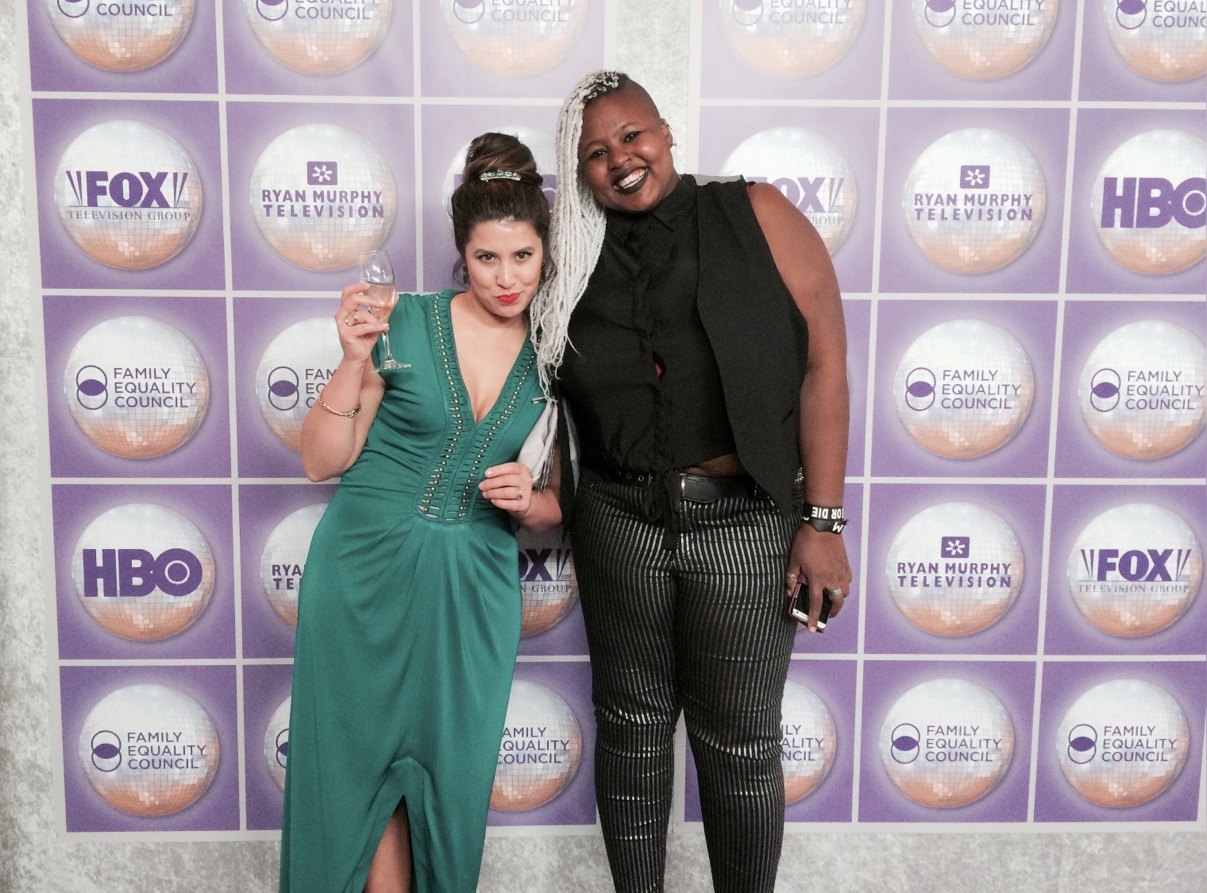
Aja, aka Fit for a Femme, and I
This year the LA Awards kicked off with a musical set by the always fabulous Sandra Bernhard that led right into an equally amazing stand up set. Sandra was the sequined-covered, and almost politically incorrect, host for a night of disco and graham crackers.
The night’s honorees included Honey Maid, who not only made a national commercial featuring a family with two dads, but responded to the criticism with another commercial about love. The couple featured in the commercial even stopped by to tell the story and present the award to Honey Maid representatives Lauren Jacobsen and Jonathan Mekeel.
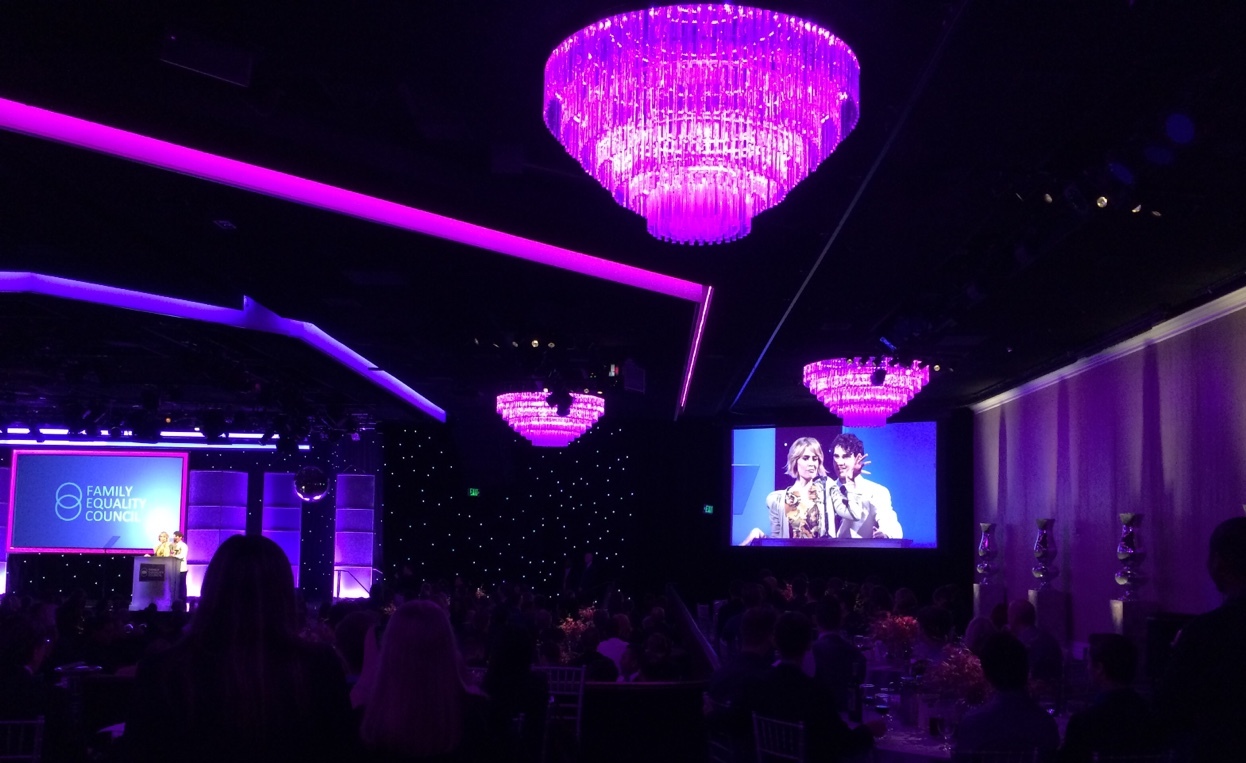
Also honored were Modern Family and Glee. Both shows were honored for moving the social acceptance of LGBTQ people forward by writing interesting characters that have relatable experiences. Modern Family‘s co-creator Steve Levitan and producer Jeffrey Richman were on hand to crack jokes about being single gay men standing up for the rights of LGBTQ people to have families, and about how the award bowls look like vaginas. It was a funny, silly and really supportive set of acceptance speeches that left the crowd in stiches. Ryan Murphy was on hand to accept on behalf of Glee and spoke about executives in the early days of his career that sent him notes asking him to tone down the gay characters he had created. He followed that up by saying, “And I’m happy to say that the executives who gave me those notes are no longer employed.” He proceeded to thank “a new breed” of executives like Dana Walden and Joe Earley for encouraging the creation and inclusion of LGBTQ characters.
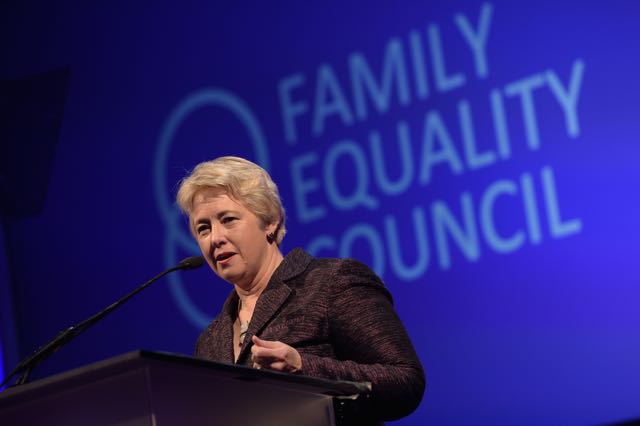
Houston Mayor Annise Parker
Rounding out the honoree pool was Houston Mayor Annise Parker. She has worked on everything from getting curbside recycling at every Houston home, to getting a LGBT non-discrimination ordinance passed, all while raising three kids with her wife Kathy Hubbard. In her third term as mayor, she is continuing her work in the communities under her purview as well as doing work on the national stage to ensure the rights of all families. She is the only person in the history of Houston to be a controller, council member and mayor. Videos from her partner and children gave the entire audience reasons to smile.
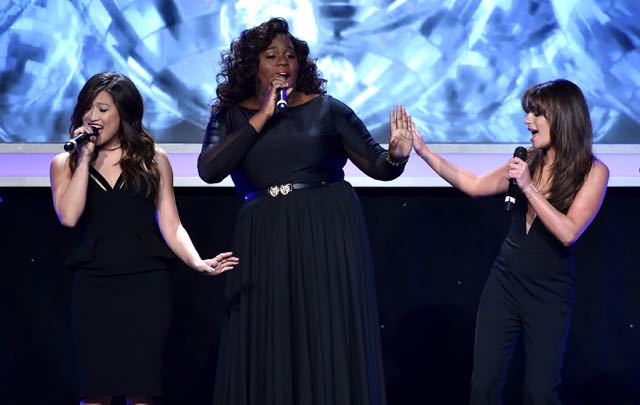
The night also included several show stopping performances by disco star Maxine Nightingale, Cheyenne Jackson (seriously, his cover of “A Change Is Gonna Come” is a revelation) and of course, the cast of Glee. Alex Newell blew the roof off of the Beverly Hilton and was joined by Becca Tobin, Chord Overstreet, Jenna Ushkowitz, Darren Criss, Harry Shum and Lea Michele. They covered Destiny’s Child as well as a bitter sweet rendition of Glee‘s signature “Don’t Stop Believing.” I think the whole crowd got a bit misty eyed when Chord sang what was originally Corey Monteith‘s verse.
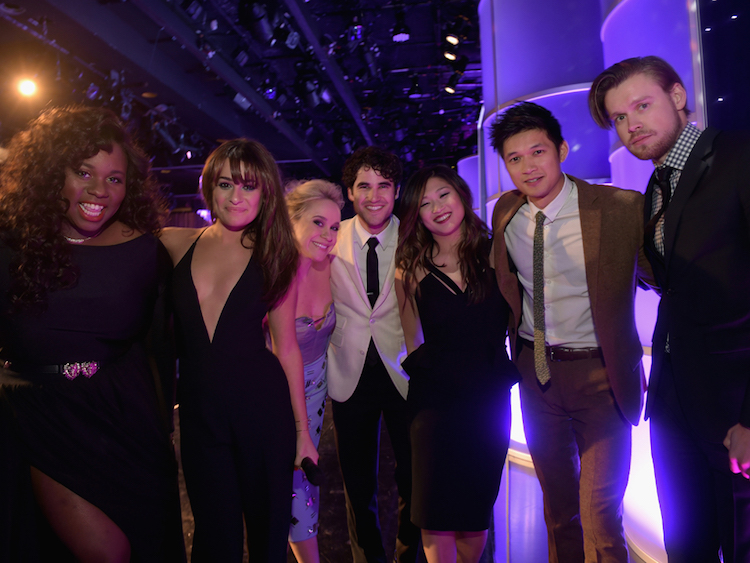
Glee cast at the event
Spotted in the crowd getting down were Patti Lupone, Lance Bass, Lisa Vanderpump, Wilson Cruz, Alec Mapa and JJ Toah aka Myron on Glee (FYI, he is a perfect angel baby who loves Gaga and totally sang Miley Cyrus with me).
All in all the Family Equality Council threw a fabulous shindig that honored the different ways in which people are fighting for LGBTQ equality. Plus, they had an excellent dessert selection.
State of the Lesbian Bar: Were DC’s Legendary Lesbian Bars Just a Phase?
In Autostraddle’s The State of the Lesbian Bar, we’re taking a look at lesbian bars around the country as the possibility of extinction looms ever closer.
Phase 1, both the oldest standing lesbian bar in America and the last to remain in the nation’s capital, closed abruptly this month “for renovations.” The owner has confirmed it will reopen, but speculation remains over whether this is the end of brick-and-mortar lesbian spaces in DC — especially since, in the process of closing, he fired his longtime staff without notice and has yet to release a reopen date.
The bar is 45 this year, and it’s hard to imagine a Washington, DC without it. In fact, a Washington where there is no Phase 1 looks a lot like other major cities across the United States — it has no lesbian bar at all.
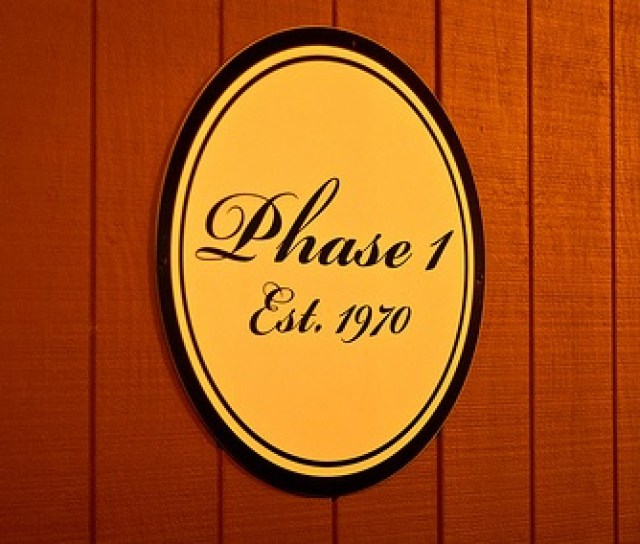
“If Phase 1 doesn’t open back up, it will definitely be an end of an era,” said Eboné Bell, Managing Editor of Tagg Magazine. “So many women made long-lasting relationships and memories at this venue.”
Indeed, it’s rare to find someone who — despite its location in the southeast quadrant of the city — has never been to Phase 1. As someone who came out in DC, I can vouch that going was like a rite of passage. (I can also vouch that the drinks were amazing and the karaoke night was a wild ride.) Phase 1 was where I finally got to be me — the new, shiny, lesbian me. I got to be raunchy, regular, and a little wild. I could dance provocatively without worrying men were looking on. I could watch women wrestle in jello, which was life-giving. And I could count on seeing familiar faces at the bar, being recognized as queer no matter what I wore, and feeling connected to something bigger than me every time I opened its heavy doors.
“How tragic is it that I only ever jello wrestled once?”Anna Kark, a self-described “standard hip young lesbian,” asked me in our interview. “What a delightful experience. Both of us fit what I like to call the ‘girly but burly’ category — pretty hair and even prettier triceps. I got her on the ground a few times, and it was a solid tie in the end because she twerked and I didn’t. No hard feelings, only fond memories and a deep sadness that the scenario may now never be recreated.”
“Before I was a Managing Editor of Tagg Magazine, I was a young lesbian trying to figure herself out,” Bell said. “Phase 1 played an important role in welcoming me into the queer women’s community.”
“I practically grew up in that bar,” an anonymous employee told Tagg about the abrupt closing. “I’ve dedicated so much of my life and time to that place.”
Should Phase 1 be gone forever, it wouldn’t be the first time queer women in DC lost a sacred public space. Lace and Phase 1’s nightclub location in Dupont Circle closed in late 2013. And prior to my own tenure as a professional lesbian in the nation’s capital, the community mourned the loss of countless others. Maintaining a bar, after all, means maintaining a business. Certainly, none of us expected these to last forever — but the thought of a DC without any lesbian bars is sobering in more ways than one.
“I think this is the crucial element of all of this: we have a history,” Michelle Carnes, who completed ethnographic fieldwork on Black lesbian strip club shows in the DC metro area for her phD, told me. “It’s not always been written down or honored as important. But just like spaces don’t close out of nowhere, they didn’t emerge from nothing either. It’s important for us to know our history — it makes us human, it makes it harder to dismiss us or uproot us when we have a claim to the city. Queer people are a people of a place and time, and we have as much right to space in the city.”
Feminism has taught us that the personal is political — and though it’s easy to think of these losses as minor dents in our community, what they represent is a sacrificing of our own shared space. The downfall of lesbian bars across the nation isn’t an isolated event; it goes hand-in-hand with the shuttering of LGBT centers, bookstores, and other businesses — and it’s an unintended consequence of the mainstreaming of the LGBT movement. Often, that mainstreaming erases anyone who isn’t white, male, or wealthy from the LGBT movement’s history — and it erodes our ability to claim space and, thus, claim that we matter.
“If marriage equality is your goal, preserving bathhouses probably isn’t your priority,” Carnes said. “But to me, these spaces represent a place of freedom, a place away from judgment, a place of belonging, a place of pleasure and community. We’re losing them and we must take that loss seriously, what we’re accepting in trade culturally, think about whether it’s worth it. To me, it’s worth it to stand up for these spaces. I don’t think we fully understand what we’ve lost.”
“It is incredibly challenging to create queer space in DC,” Alex DB, who co-hosts Bodywork, a queer dance party, with fellow DJ Abichula. “There are mainstream gay bars and parties, much like any other major city would have, but there is increasingly less space for those who may not fall into, or actively reject that category. I think for the most part we have a strong, tightly-knit community of queer woman DJs and partystarters, and I am so grateful for that. We run the gamut musically, we’re fun as hell, we give a shit about our communities and about each other. But we often find ourselves against the odds, no matter how successful or popular we become in our craft.”
Abichula echoed her. “This scene is made up by so many talented, wonderful, passionate people,” she told me, “and it’s mindblowing that we have so few physical spaces where people actually want us to throw parties. We are here, we are so god damn queer, but where is the space to express that?”
“People need to understand that equality doesn’t have to mean sameness,” Alex added, touching on how the mainstream LGBT movement has led to an end for self-segregated spaces like Phase 1. “We are becoming more ‘normal’ in the eyes of the mainstream, but that doesn’t mean we don’t want or need places to let our freak flags fly for a minute. Some of us don’t even want to be perceived as normal. I think queers are pretty perfect how we are.”
“There are accessible places you can still go to see baseball around here. Where am I gonna get my queer lap dance?”
“Spaces for anyone outside the box are at risk — not just here in DC but everywhere,” Carnes said. Citing the formerly formidable chunk of LGBT and BDSM bars that once filled southeast DC, she pointed to gentrification, a tourism agenda, and the Internet as causes for the ruin. “Venues for people who want privacy, to be left alone to be who they are with others in a safe environment — they tend to stick together. Southeast [DC] used to be that place — warehouse-style dance clubs, Bound DC used to be down there, Capitol Ballroom, Tracks, Wet/The Edge, Nation, the Crucible. There was a lot of real estate down there dedicated to people being free to be themselves, sexually or otherwise. All the venues together represented a formidable presence and no one was interested in Southeast so no one bothered us for some years.”
Until they did. That formerly formidable chunk of non-normative space eventually gave rise to a high-rise apartments and office buildings and a new stadium for DC’s not-much-heralded Nationals.
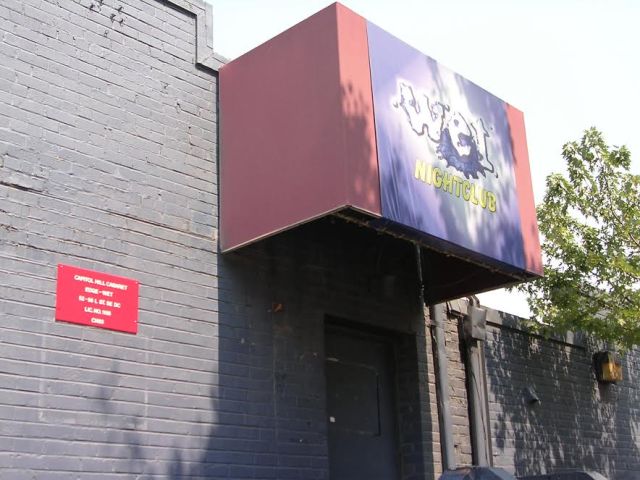
Wet/The Edge was the site of the longest continually running lesbian strip party in the country.
“Southeast started to be consumed, slowly at first — and then, all at once with the stadium,” she remembered. “When you go down there now, you’d hardly believe what used to be there. But under the new coat of paint and shiny windows, I remember what was there and I miss it. I refuse to go to Nationals Stadium. You’ll never see me there. I had an amazing lap dance right around where home base is now. I hate the Nationals and I hate the stadium. There are accessible places you can still go to see baseball around here. Where am I gonna get my queer lap dance?”
Of course, the people who lose out the most when LGBT spaces are attacked are the ones who find themselves “othered” most frequently. In DC, the contrast between a booming gay men’s industry and a dying lesbian scene is stark. A 2013 article in The New York Times, The Gayest Place in America, cited the statistic that 10% of DC residents are LGBT, and makes its case for the city’s thriving “gay and lesbian” scene with stories of retailers, gyms, parties, drag shows, bathhouses and bars aimed at gay men only.
“DC has one of the most segregated queer scenes I’ve seen in any city I’ve lived in,” Emily White told me. White, who currently lives overseas, was a DC transplant by way of Portland, and noted in our interview that DC’s scene for queer people was monopolized by men. She was, of course, right. Most spaces billed as “gay bars” are filled with gay men, and target them so distinctively that women may not even feel welcome. For women and even men of color, the divide grows even further in a city where diversity is a popular keyword but not as popular a business strategy.
What this means is that the only people truly losing out when brick-and-mortar spaces close are, of course, the others. It’s now gay women who lack community, although gay men can find it across town at Cobalt, Nellie’s, Town, the new Town patio bar, and The Eagle. Gender non-conforming folks, of course, aren’t considered at all in a scene designed this way, and thus the only spaces that they can count on are pop-up parties at locations that may not be as safe as a consistently queer locale.
“Creating an alternate superqueer reality, even if just for one night, feels like a breath of fresh air.”
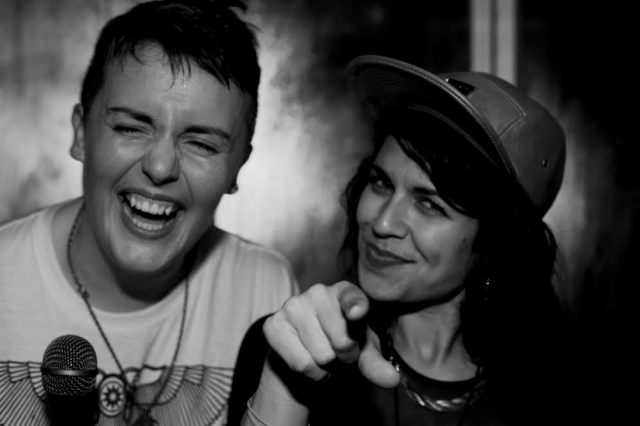
Alex and Abichula, who host Bodywork. via Tia Thompson
But for those who are attempting, now, to sustain social events or spaces for a broad base of queer people or even just queer women — and in a climate where lesbian bars nationwide are being pushed to the brink of extinction — it isn’t inspiring to watch the oldest one standing fall down.
“It was the oldest running lesbian bar in the country! That’s a big deal! The fact of it is, I can no longer say to myself, ‘I am going to go to a place that is engineered specifically for queer women.’ I have to consult various calendars and the phases of the moon to see what Lesbian Night is available that particular evening and whether or not the space is safe,” Kark said. “At Phase, I knew that at any given time: I would not be the only queer lady, there would be four men maximum and I wouldn’t have to deal with them, at least one cute bartender would be in attendance, if something bad happened to me there because I was gay or because I was a woman — people would be on my side. ”
“In a city with high property values and skyrocketing rents, it has become increasingly difficult to maintain spaces for those of us on the fringe: queers, freaks, weirdos, whatever you want to call us,” Abichula told me. “Obviously transplant-queers like myself don’t have the worst of it; DC’s long term black community experiences the worst effects of gentrification, and anything we say must be prefaced with that. But beyond this, most spaces that are opened by and for queers (or at least are welcoming to us) either end up catering to the mainstream, or going out of business.”
What many of my interviews touched on is the new dynamic in nightlife for queer women looking for queer spaces in the District. Although all of DC’s queer women collectively mourned last year’s end to SHE/REX, a monthly girl-on-girl party that provided (in my own personal estimation) approximately 100% of us with a chance to get some and get down, the space was quickly filled or bypassed completely by countless other recurring and one-off parties for girls looking to meet girls, or even just queers looking to meet other weirdos.
Some queer party promoters are looking to create a different kind of space altogether. “There are lots of queers who aren’t gays or lesbians — and even some who are — that don’t feel comfortable at gay or lesbian bars,” Abichula said. In creating Bodywork, she and Alex were hoping to create a space for everyone, not just women — and, in particular, for folks who are rarely catered to at all in queer business. “Creating an alternate superqueer reality,” she told me, “even if just for one night, feels like a breath of fresh air.”
glittHER, Bodywork, Bare, the Sunday Tea Dance, and a host of other weekly, monthly, and otherwise consistent parties give us a chance to check out new venues, meet new people, and have a good time — but it’s not possible yet to measure what kind of impact that kind of scene will have on a community that sprouted, at the dawn of time, from brick-and-mortar spaces like Phase 1. It’s not possible for us to know, just yet, how our community will change now that we don’t have a central place to house it.
“As much as I like dressing up to go out, as much as I like my holigays, I would like a queer women’s place that isn’t a Special Event,” Kark told me. “It would be really nice if, after a long day of work, I could just put on my casual spiked heels and go get a drink at a physical location that I know contains queer women in it without arranging my social calendar around a Ladies’ Night days or weeks in advance. Can’t the world revolve around me at least a little bit, at least in this small way?”
Pop-up parties also offer an opportunity to turn “straight” venues into queer ones, although that also increases safety concerns for — once again — the most marginalized of our community in particular. In our interview, Bell noted that it can be fun to check out new restaurants and bars in the city with other queers, but sometimes it’s a risk to venture into an unwelcome space and trust that it will change for just a night.
“I think the brick-and-mortar spaces offer more of a sense of community, and a sense of safety,” she told me. “As someone who has been in unfortunate and harassing situations at “straight” establishments, the sense of safety and being able to be yourself is so important. I think the queer women’s spaces — brick-and-mortar — automatically provide this for its patrons. And usually staff is very aware of these issues. This is something that parties at different establishments can’t necessarily guarantee.”
Kark echoed these concerns. “I’m sure it’s not impossible to build a transient safe space,” she said, “but a physical foundation goes a long way.” She went on to tell me about a situation in which a woman was harassing her at Phase 1, and was asked to leave. “Ideally, bad shit never happens, and of course let’s not pretend that Phase is perfectly equipped to deal with it, but it did make me feel safe to know that neither staff nor clientele would excuse my being hurt by another person. Part of my lived experience — maybe part of being a loud, hyper-femme, gay lady who likes to go dancing and put my mouth on stranger’s faces — is that a lot of clubs, even so-called queer clubs, don’t care when somebody hurts me. Stressing about safety does not make for a sexy night. I’m sure other people have had other experience at Phase 1, but it was one of the only nightlife spaces in the city where I felt safe and sexy, and it really hurts to lose that.”
This isn’t to say that queer pop-up parties are any more unsafe than your neighborhood haunt, or that the people who run them don’t try to keep patrons safe. “No space is going to be perfectly safe or welcoming to everyone,” Abichula asserted about Bodywork, “but we wanna do our best, hear any criticism that people have, and do whatever we can do make it great for everyone.”
Despite DC’s pop-up parties and resilient queer community, the city that ranks consistently as one of the gayest in the country may not have much left to offer queer women. “I’m not sure there is a future for the lesbian bar scene,” Bell said. “I think we are seeing more women’s spaces disappearing with no sign of coming back.”
That doesn’t mean, of course, that queer women and folks who fall outside the boxes of DC’s standing scene won’t ever find home again. It just means we have to decide how to build it, how to sustain it, and how to make someone else show up.
“You can’t be all things to all people,” White said at the end of her interview. “Maybe there are iterations of The Planet that work somewhere, but it’s hard for a single business to do a good job at being a bar, a cafe, a venue, and a community gathering space, and maybe we shouldn’t be asking for all of that from the same location, since it usually seems to result in the location being a pretty shitty version of each of those things. I dream of a day when every city could have lesbian bars with no cover, good music, and a decent happy hour, and also have a feminist bookstore where poetry readings happen, and queer women owned cafes and restaurants that don’t have to be a part of any of those other things.”
“To tell you the truth, it is hard to say what is next,” Alex told me. “We have no choice but to keep doing what we’re doing. That sounds more serious than it may be, but we live in a city where at least eight gay or gay-owned bars have closed or been put in limbo in the last two years. That is a very serious and alarming pattern. I love my city and I think we have it better than many other cities, but we need these places. We always have and we always will.”
“If there is one thing I’ve learned in my research,” Carnes told me, adding that she wanted to end her interview on a positive note, “it is that in the face of systemic inequities, homophobia, sex negativity, harassment, the threat of job loss, death — we find places to be ourselves. We’ll make spaces our own under the worst of circumstances, even if just for a few hours. People risk it because that’s how important it is to us to find one another, to feel human, to feel desire and love and express it openly without shame… I am mindful of the resilience of our communities, the unwillingness to accept the message of the city, that there’s nowhere we belong. History tells us that’s not true. We’ll find each other, no matter what. “
Let’s Hash It Out: How Do You Feel About Men and Straight People Going To Lesbian Bars?
The jokey Vapid Fluff piece we published on Tuesday containing excerpts from negative Yelp reviews about lesbian bars by straight people and men has sparked debate on the “not-queers in queer spaces” situation offsite (specifically on reddit) and it seemed like it’d be worthwhile to hash it out here, too. I don’t know that there’s any subjective or objective truth to be found here, especially when what it means for it to be “okay” for non-queers (straight people and men) to occupy queer spaces is so vague to begin with.
Personally, the first bars I ever went to were gay male bars. I was underage and straight-identified a lot of the time, but they let me in! Whether I was accompanying my co-workers to Happy Hour in one of Hell’s Kitchen’s many gay dives after a hellish lunch shift at The Olive Garden, tagging along with my gay best friend to subdued upscale bars decorated like country clubs or dancing all night at Posh; I wet my feet in so many spaces that weren’t made for me.
But when I entered these spaces, my expectations of service were low. I didn’t expect the bartender to pay attention to me, the doorman to greet me with a smile, or really for anybody besides the people I’d come with to be nice to me. I was a guest in their space. Sure, it feels shitty to wait longer than everybody else for a drink, but it didn’t feel unjust. I certainly wouldn’t have run home and told Yelp about it like I did when that bitch in Berkeley fucked up my eyebrows. I was there with men who’d been beaten up in school for being gay, who’d been kicked out of their homes, who feared kissing their boyfriends in public, who were ignored by bartenders at straight bars. I deferred.
The majority of non-queers who enter queer bars probably have a similar state of mind — every straight person I’ve ever been in a queer space with has. But the Yelp reviews I pulled from for that post were specifically from people who felt some profound injustice was being served when they weren’t the center of attention at a lesbian bar. People who felt that a straight guy and his straight girlfriend not being a butch bartender’s #1 priority was “reverse discrimination” in action. The language used by those who felt wronged— language that often critiqued the lesbian’s body size, apparel, or gender presentation — said much more about why these people had a bad time than the complaint itself did.
So, we went over some of the most popular arguments we’ve heard on both sides, which we’ll present to you here. This isn’t all-encompassing or complete, it’s just a starter set of ideas for you to chew on.
FOR: Who Else Can I Go To The Bar With?
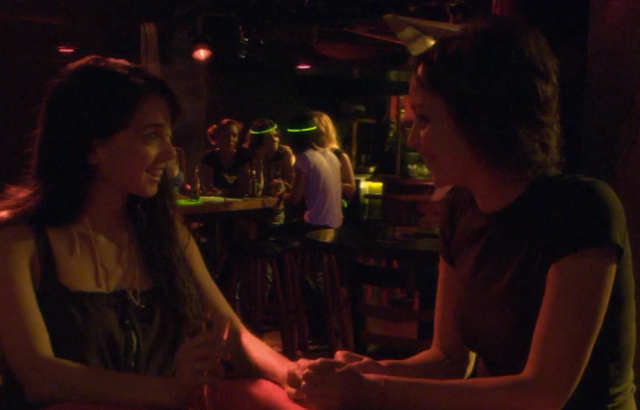
Jenny brings Annette to Twat The Night
Many brand-new gays and some longstanding gays have two options: go to a queer bar with a straight girl or a gay man, or don’t go at all. The brave best friends who volunteer to accompany us on these formative journeys into the wilderness shouldn’t be disrespected.
But… The strongest argument against this practice is that lesbian bars should be one place on earth where nobody has to worry that the girl they’re eyeing is straight. That girl might not eye you back or like you back and she may not be single and she may reject you but at least you won’t walk away feeling gross and stigmatized for being gay. (So, if you’re gonna bring your straight best friend to a bar, make sure she’s not somebody who’s not gonna be an asshole if they’re hit on politely by another girl!)
AGAINST: You Only Like Us Now ‘Cause It’s Safe and Trendy

You seem to love me now, but did you love me when I was down and out did you still have love for me straight girl
Would the straight people happily attending our bars in 2014 have jostled for admission in 2004? In 1994? In 1984? In 1944? There’s a storied history of non-oppressed populations playing oppression tourism, casually dropping in on this fun exotic underworld for their own amusement and then returning to their safe, non-oppressed lives afterwards. We fought hard for these spaces — once the only places where we could be ourselves — only to have them invaded by outsiders as soon as the stigma and legal threat faded.
A bisexual friend told me, “I always feel like straight people (of whatever gender) going to gay bars when they have not been explicitly invited by a gay person are like really proud of how down with gay people they are, like they’re very proud of it and assume that it is a space that is also for them because of how progressive they are! They go to Pride parades!”
But… Would every lesbian at the lesbian bar have jostled for admission in 2004? In 1994? In 1984? We can decry straight people for only stopping in now that it’s both legal and culturally acceptable… but it’s not just them who feel more comfortable attending lesbian bars now, it’s also us. Many of us weren’t brave enough to go until it was safe and trendy.
But but… The lesbians who were brave enough to go to the lesbian bars in 1994 probably have a right to be annoyed by fair-weather friends. Furthermore, actual queers uncomfortable with being seen in a queer space would’ve been putting a lot more on the line to attend one back then than a straight person, so comparing our hesitance to theirs might not be giving ourselves enough credit.
FOR: But some of my friends are straight and/or men!
So, you’ve got six friends. Three are gay and three are straight and you all wanna go out together and have fun. Do you go to the gay bar or the straight bar? I don’t know the answer to this question. I think probably I would suggest that we all come back to my place, get stoned, play Scattergories and eat Pumpkin Spice Oreos.
AGAINST: We have so few spaces just for us, please just let us have this one space, please, because like the whole world is your space and you can kiss wherever and we can only kiss here so please don’t
“Not to generalize, but there are better straight bars. Why would you even want to go to a lesbian bar?” A lesbian friend told me. “Whatever drink special or ambiance a person could claim to be looking for in a lesbian bar could easily be found in a straight bar down the street. There is just no fucking reason for guys to be there.”
Similarly, as in the Instagram screenshot I included in the Yelp reviews post, I’m baffled by heterosexual couples who visit queer bars without any queer friends and proceed to make out at the bar. It’s one thing to come with your gay friends to have a good time, but if you’re a straight person there on a romantic date with your monogamous straight partner… WHY? Just why?!!?
But… With so many lesbian bars shutting down, how much can anybody say our community is valuing this one precious space? And who, exactly, is the space for? Is it for all queers? At The Lex in San Francisco four years ago, my friends weren’t allowed in the playing-pool rotation because they weren’t part of the clique dominating the bar that night, you know? Sometimes when I read straight people complaining that they get the evil eye or the cold shoulder from queer patrons I wanna say, “Queer people get those same looks!” “Nobody talks to me either!”
FOR: Maybe once upon a time you too were the “straight girl” at the lesbian bar
Just being real.
AGAINST: Lots of straight cis men cannot handle themselves in a lesbian bar or come for all the wrong reasons
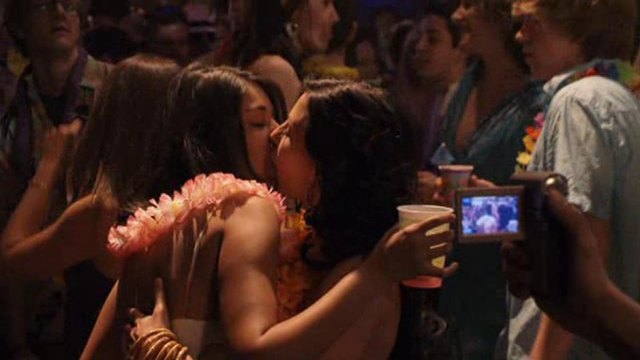
Don’t bring bro-bar culture into a girl bar, this isn’t a live show! “I’ve had several experiences at gay bars where me and my girlfriend and my friends have been hit on my straight men,” a queer friend told me, “And it’s the worst because they think we’re straight and I’m like, bro, I’m dancing with my girlfriend — and then they hit on us even more! It’s gross.”
A bisexual woman pointed out that “I feel like guys go for the same reason that a guy came to and then followed me around a music festival called LADYFEST for like two hours; because they realize there is a much higher ratio of women to men than at other venues and don’t really care that the nature of the venue makes it extremely unlikely that those women want to fuck you because who cares whether women actually WANT to have sex with you, right, as long as you want to have sex with them, like why would that even be a factor.”
She also mentioned, “I had a very traumatic experience because one of my first dates and I went to this gay bar, and we were sort of looking forward to it, and 80% of the people in there were straight, and it was so depressing. We were like ‘Well I guess this is a safe place for us to PDA, or safer than the outside world, but it feels like we have an audience and it’s gross.’ Like straight couples just sitting at tables looking at all the people around them, like spectating.”
But… Not all men?
FOR: It’s Reverse Discrimination!
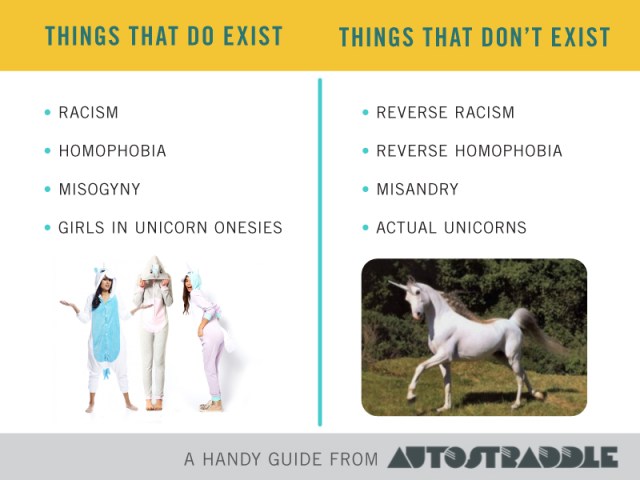
You’re welcome
We wouldn’t want to be unwelcome in straight bars, so why are we making straight people feel unwelcome? AREN’T WE RAGING HYPOCRITES?!!! WHAT ABOUT EQUALITY? OR EQUITY, FOR THAT MATTER?!!!
But….
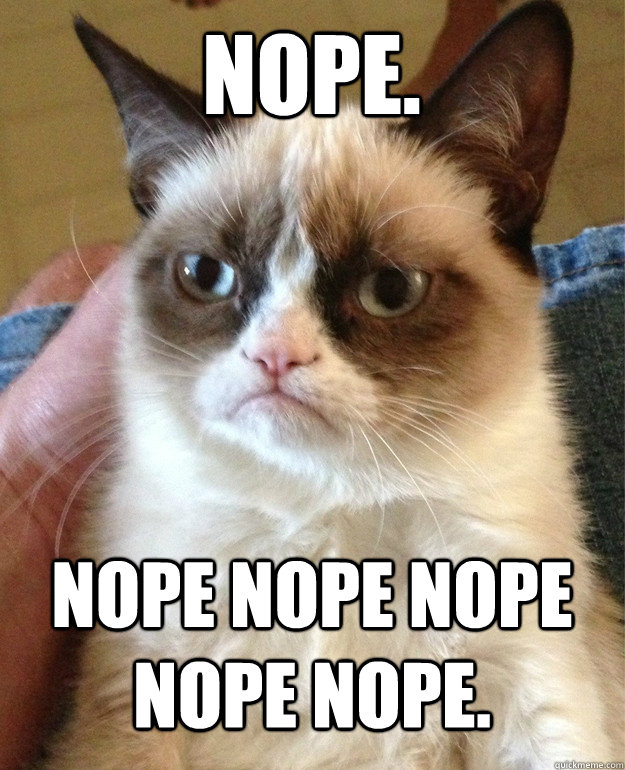
Reverse homophobia isn’t a thing. That’s not how it works. Also it’s worth mentioning that queers and trans people are still kicked out of your bars and are sometimes killed or attacked because they attended your bars.
But… How does the matrix of oppression play out when the heterosexuals seeking admission are of color, or when it’s a gay man who wants in? There’s a relatively strong history of queer spaces being a safe space not just for queer people, but for people of color who feel equally disenfranchised in spaces primarily aimed at white straight cis men.
If it is our collective oppression that enables us to feel comfortable excluding straight people, then we have to acknowledge the limits of that oppression. A cis white lesbian at the queer bar might wanna think twice before sneering at a straight woman of color or a feminine gay man… but this argument still doesn’t make any room for straight cis white guys all up in our space.
AGAINST: We need a safe space for our gender presentations
When we talk about queer bars and parties we usually talk about bars and parties in large diverse cities like San Francisco and New York, but we forget that in rural or conservative areas of the country, a queer bar can actually be the only safe space available, period. A masculine-of-center friend told me that queer bars are the only place she feels like she can breathe easy. She doesn’t fear dirty looks or physical violence from men, which she has experienced in spades all her life, or like they want to compete with her for women. It’s also a rare space where she can go to the bathroom without being informed that the men’s room is right over there! Similarly, femme lesbians often report lesbian bars being the only space where their gender presentation doesn’t get automatically read as “straight” and where she’s free from harassment, intimidation, unwanted sexual attention and even sexual assault from straight guys.
The negative yelp reviews are revelatory in this instance, because the gender presentation policing and derision of masculine or fat women by those reviewers is pretty merciless. An allegedly lesbian bouncer is described as a “Drew Carey lookalike” who needs to “lose some weight.” Unfriendly patrons are accused of being “jealous because [the male reviewer has] fuller facial hair.” Bartenders who won’t crack a smile when a man is apparently aggressively “complimenting” her are, we’re told, revealing “their crack as their Dickies sag.” The kinds of guys who think those thoughts are exactly the kinds of guys who inspire unsmiling bartenders, hostile bouncers and unfriendly patrons.
But… Even at lesbian bars, we’re not always safe from being policed for our gender presentation or other aspects of our identities. At Henrietta Hudson’s, my two friends and I — all of us in skirts and tank tops — were asked if we were actually gay, and not believed when we insisted that we were because we “looked straight.” Many lesbian trans women have testified in the comments that they don’t feel welcome in lesbian bars themselves, and lots of Yelp reviews cited queer bars as being unwelcoming to any woman of color, which is epically fucked up. Also, femme straight women could use a break from harassment, intimidation and unwanted sexual attention as well.
FOR: It’s mean to be mean to people, period.
Why bring more negativity into the world? You could get really upset at these perceived intruders… or you could just hang out and have a good time.
But… Some people are actual assholes! Which is why so much of this just comes down to respecting the space. The truth is that there are a lot of not-queer humans who attend queer bars with the understanding that the space is not for them, and they should defer to its intended clientele, and everything goes just fine.
So tell us what you think! What arguments or arguments-against-arguments did we miss? We’re hopeful that we can have a nice friendly conversation on this topic without snark or defensiveness or wild accusations of bad faith. HAVE AT IT, GRRRRRRLS
Listling Without Commentary: 26 Excerpts From Negative Yelp Reviews Of Lesbian Bars By Men and Straight People
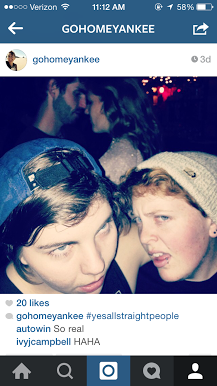
relevant image from our trip to The Lex last weekend
A few weeks ago, we all had a nice time reading excerpts from 1-star Yelp reviews of lesbian bars from actual queer women. But lesbians aren’t the only humans with feelings about their lesbian bars — there are some straights and gay men with a few choice words to share as well. (This list could’ve easily been 26 accusations of “hypocritical” stances on equality or reminders that “discrimination goes both ways” from people horrified that there might ever be a space that doesn’t immediately prioritize their needs.) Everybody has mixed feelings about mixed crowds at lesbian bars, and the reviews are mixed, too — for every straight and/or male hater, there’s another who loves the place despite not being its target audience! Every night, in some lesbian bar somewhere around the world, a straight woman or a man is having a really nice time with his gay lady pals. It’s true! But there are also some straight women and men who can’t handle the adventure and instead wrote these reviews on Yelp. (Also, #23 isn’t actually a negative review, I just thought it was funny.)
If you think lesbians hate lesbian bars, just listen to these folks!
Everything below has been ripped mercilessly out of context.
1. “The staff act like they don’t want you there — or maybe it’s my penis they don’t want there.”
2. “To The Drew Carey lookalike Lesbian bouncer: be nice to people, especially to customers. You never know who will write a review and call you out on your rudeness. Oh and for your own health reasons: lose some weight or adjust your attitude. Nobody likes a Mean Fat Person. You can’t be both!”
3. “One star for interesting “go-go” dancers.”
4. “When my friend used the men’s restroom he discovered that someone had written above the urinal “you are not welcome here.” Really?”
5. “I intentionally let some stranger beat me at pool because 1. this girl was sporting a mullet and 2. I think she was carrying a knife.”
6. “Why do I keep finding myself at [gay bar]?! Oh yeah… my friend has to score some blow.”
7. “Well, after building this place up in my mind for years and begging countless females to let me tag along, last Friday I finally got to experience [bar]. It was so anti-climatic to realize it is just a neighborhood bar that happens to be very woman-identified.”
8. “I have a feeling as to why we were rushed out: we weren’t lesbians.”
9. “Can you imagine what kind of uproar these women would have caused if the roles were reversed and they were refused entrance into a straight business? LOL! They’d probably call all the local news stations!”
10. “The door dyke was SO rude and sour that I’m a little scurred of her — even though I’m over 6′ and she’s probably a foot shorter.”
11. “Most of the “ladies ” here are haters. So much for a supportive, all-inclusive gay community. Perhaps they were jealous because I have fuller facial hair.”
12. “No matter how much you tip or compliment the bartenders, you cannot get them to crack a smile. You may, however, see their crack as their Dickies sag or when they bend over to grab a beer.”
13. “The place is so dingy, grimy, and gross that I seriously believe monsters are going to come flying out of the bathroom at any moment and swoop down on all the dudes and chop our heads off.”
14. “I had met the owner a dozen times but either she never remembered my name or pretended not to. This was obviously because I was a guy.”
15. “The place smelled like onions.”
16. “I tried making conversations with a couple chicks there with no intentions but a friendly gesture and I would literally get quick, sharp answers. I’m sorry, I was interested in how adorable your pug was, not you. I’m straight.”
17. “Talking with my female friends, their guess is that the owner is a manhater.”
18. “I’m reviewing [bar] solely as a neighbor sick of the asinine wasted jackasses that roll out of here at all hours. I’m talking each and every night, around 2 am, girls AND guys are yelling in the streets, usually fighting with each other, trees, street poles, god knows what.”
19. “I must say though, never have I seen a more dapper bunch of men and a more openly horny female population.”
20. “She had no cause to be rude to me, unless she’s male-o-phobic or something.”
21. “Gay or not, If you have a dangling unit, don’t go here.”
22. “Some girl with a fake purse tried to tell my friend that she had a mullet, when it was clearly layered fringe.”
23. “even tho I am a dong pirate, I like [bar]. The crowd is fun and rad, the bartenderwomen are hot so if i was going to go the other way id probably go for one of them.”
24. “You preach equality, yet if you are a newcomer (and straight, accompanied by your boyfriend) to [bar], you will not even be served a drink within 30 minutes (at least). I was excited to be in an establishment that would respect the fact that everyone lives differently, and these differences should be embraced. Unfortunately, because I am heterosexual, I’m not to be treated equally… Needless to say, we left after we were not treated EQUALLY!”
25. “Guys definitely beware, they have absolutely no interest in having you there and definitely will make you feel unwelcome at any and every point. On the other hand, If you’re a man hating lesbian that doesn’t mind overpriced drinks, this is the place for you.”
26. “Seriously, I can’t help it if I was born straight. Hater.”
Listling Without Commentary: 29 Excerpts From 1-Star Reviews Of Lesbian Bars
Lesbian bars: the first place you found community, the first place you found hostility. They play that song you love and then they play that song you hate. They have the best bartenders and the worst bartenders, the best doorwomen and the worst, the meanest patrons and the nicest. You love them, you hate them, you hate to love them and you love to hate them. And when you hate them, you really hate them. The following excerpts, ripped mercilessly out of context and displayed here for your entertainment and ensuing laughter, were pulled from one-star Yelp! reviews of lesbian bars all over the U.S. and Canada — many of which are shut down and many of which are still open. Bar names have been removed.
Now let’s talk about that bitch Michelle.
1. “Getting a drink at the bar is more difficult than turning straight.”
2. “I thought there would be a cool bunch of gay girls playing darts to befriend, but instead we got the old man with no teeth.”
3. “Maybe I don’t wear enough ill-fitting clothes with feather earrings. Maybe it’s because I use the bathroom to piss and not take bumps of coke… whatever the reason is, I’ll never feel welcomed in this tiny, unfriendly, pretentious dive.”
4. “In retrospect I would say that this bar caused me to go back in the closet and not want to be a lesbian.”
5. “I went to the bathroom and there was a bag of french fries hanging out in there like someone was just chilling, taking a pee and having a snack.”
6. “We arrived around 11:30 pm to meet a friend for a drink cause this is “where everyone goes.” Well, if this is everyone, I am upgrading my Netflix membership.”
7. “Where is the diversity? Where are the minorities? Where are the transgenders? Where is the unity? Where is the love?”
8. “I am pretty sure all the little Hollywood Goth clubs need to attend this bar and take notes on how to create a dreary atmosphere that Edgar Allan Poe himself would want to run away from, screaming.”
9. “Each time I go I witness a sea of unfriendly faces, scary artwork, long waits for drinks and dance music that sounds straight outta the USSR circa 1991.”
10. “This place is like the last person left at the bar that you take home because you don’t want to sleep alone.”
11. “If you like the taste of farts in your glass, then this is the place for you!”
12. “Michele why are you playing the CRAP music until well after midnight???? God someone fire that bitch already!!!!!!”
13. “You don’t go to a club to hear THE MACARENA or Will Smith’s “Gettin’ Jiggy With It” straight off the CD.”
14. “If you’re a supermodel type stay clear of here! The bartenders here wish they had my body!”
15. “It’s like every lesbian here watched LOGO and Tila Tequila and took notes on how to be a lesbian.”
16. “This is the kind of dyke bar where everyone knows your name if you look like everyone else AND come in all the time.”
17. “I am giving this place one star for two reasons:
1) The drinks are uber cheap
2) Yelp makes you give at least one star rating”
18. “The people running this place are the reason gay people cannot have nice things.”
19. “I get the whole love affair between lesbian bars and hip-hop, but there was no ‘hip’ to this ‘hop.'”
20. “Should I bring my roller skates next time? Because I could’ve swore it morphed into a roller rink.”
21. “No women’s basketball game on!? What!? I did go to a LESBIAN bar, right? It boggles the mind.”
22. “I said [to the bartender], “just make whatever you can make really well.” She said, “Um, Jameson on the rocks?”
23. “While I appreciate that this is one of the only Lesbian bars that is in Manhattan for whatever reason. I HATE THAT THIS PLACE DOES NOT TAKE DEBIT OR CREDIT CARDS!!!!!!!!!!!!!!”
24. “In retrospect, I wish they’d have Dante’s famous creed above the door – Abandon all hope, ye who enter here – because little did we know, we just passed through the gates of lesbian hell.”
25. “Over 2.5 hours of waiting, and no chance to sing. Do not come here if you actually want a chance to sing. Signed up about 3 hours before closing and still got no chance to sing! Do not come here unless you have at least 4 hours of waiting to sing to spare.”
26. “A girl named Nicole stole my purse and her family members had something to do with it.”
27. “If you’ve ever read Radclyffe Hall’s “The Well of Loneliness,” you know all about lesbians and depression. Well, if not, feel free to recreate that experience by attending [this bar].”
28. “The patrons there were lucky I didn’t use my ninja skills on their @$$!!!”
29. “We ended up going to TGI Friday’s.”
